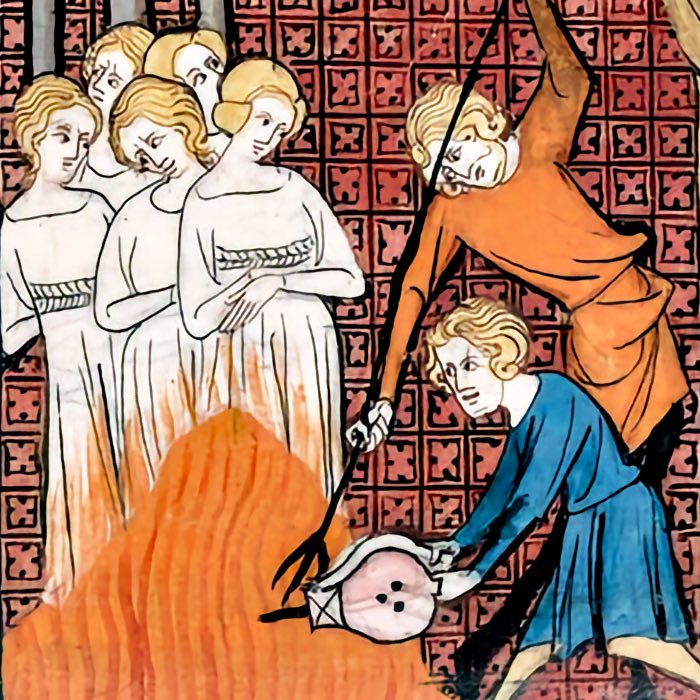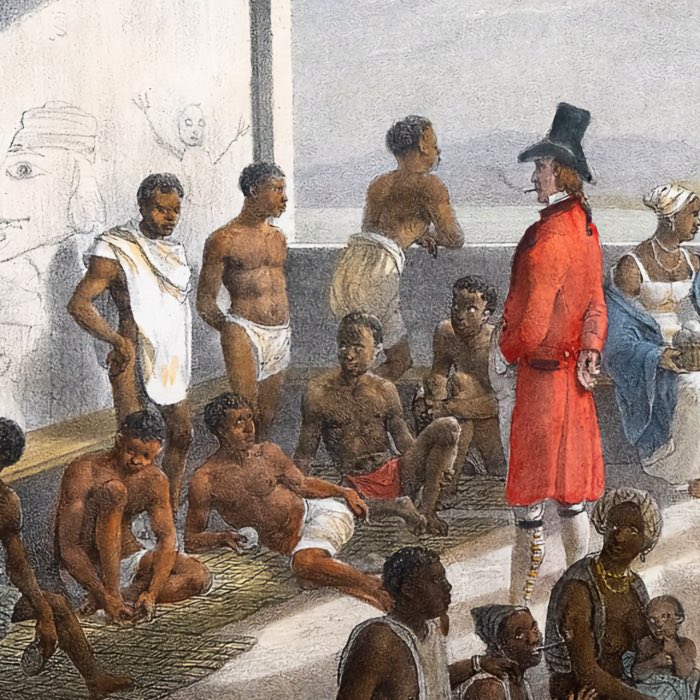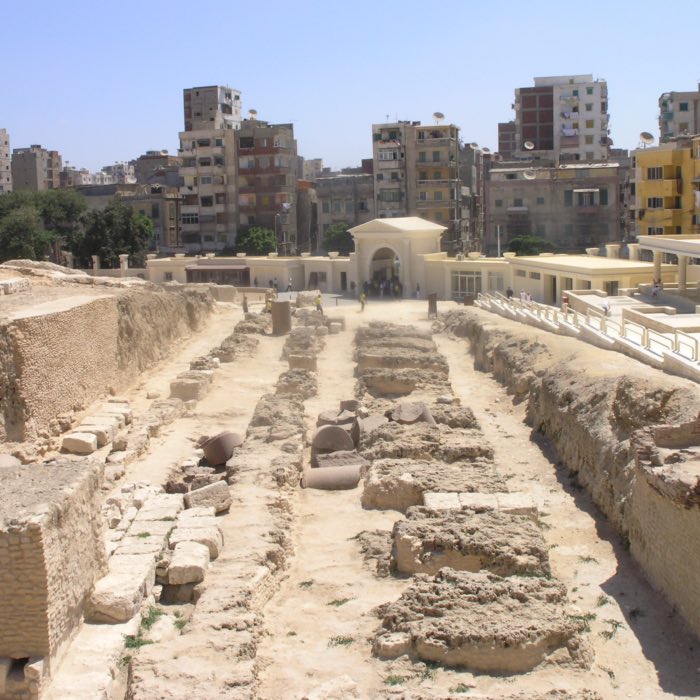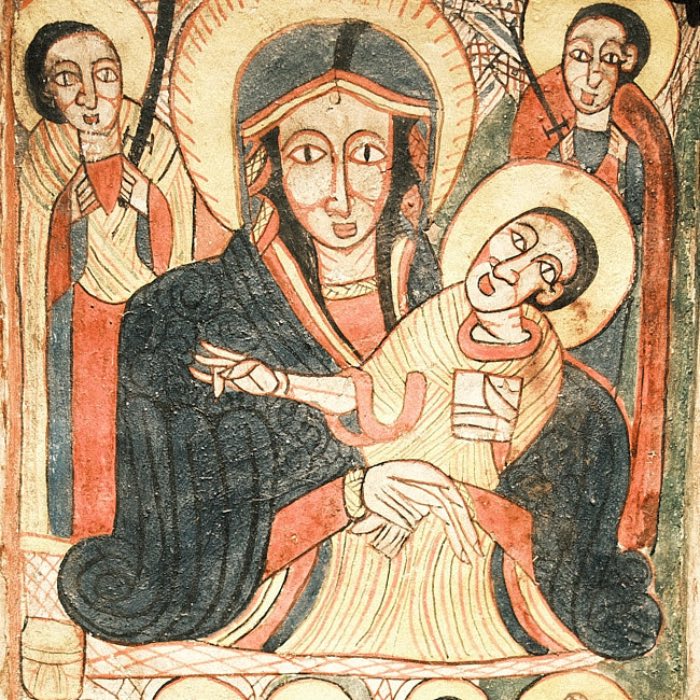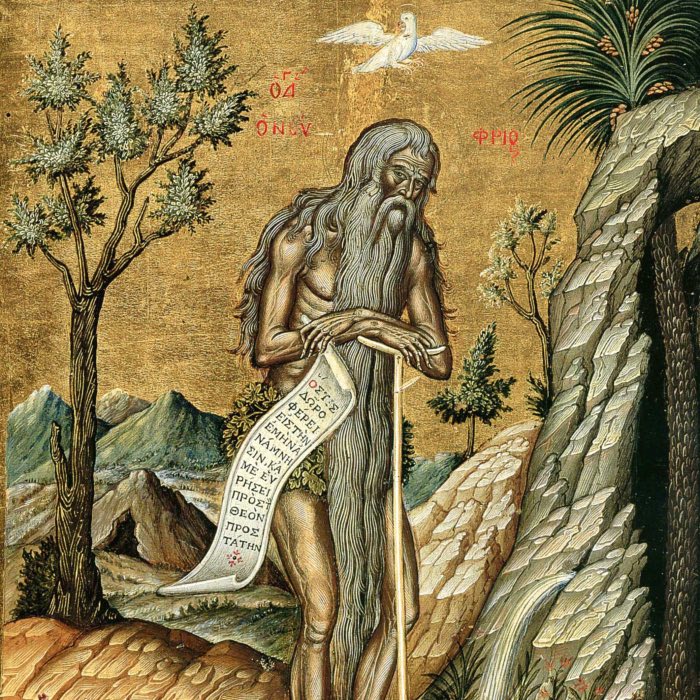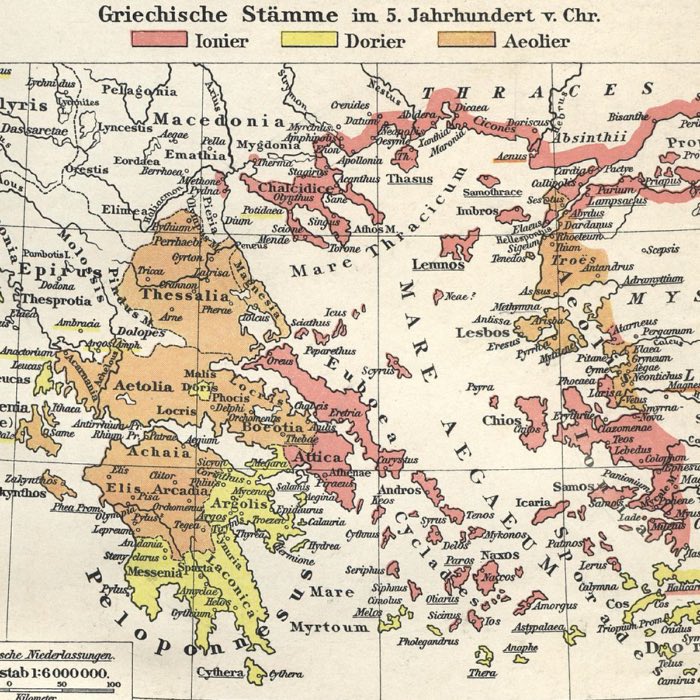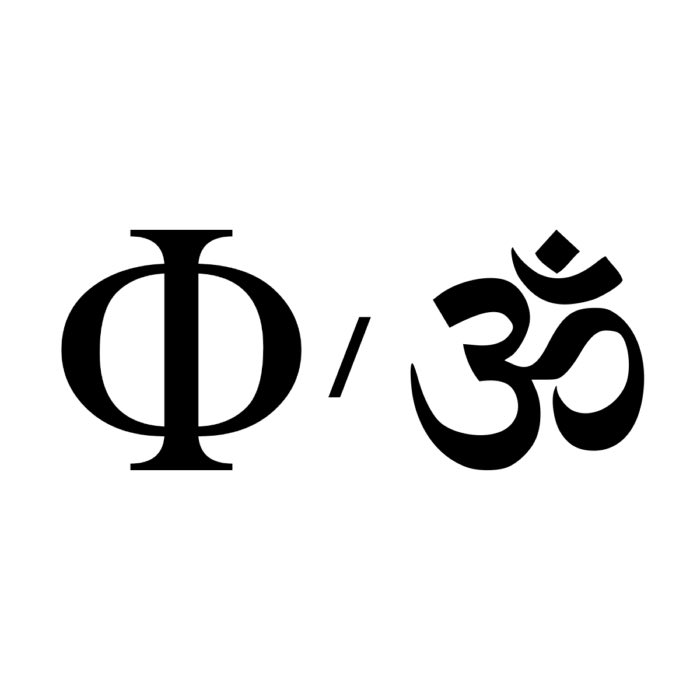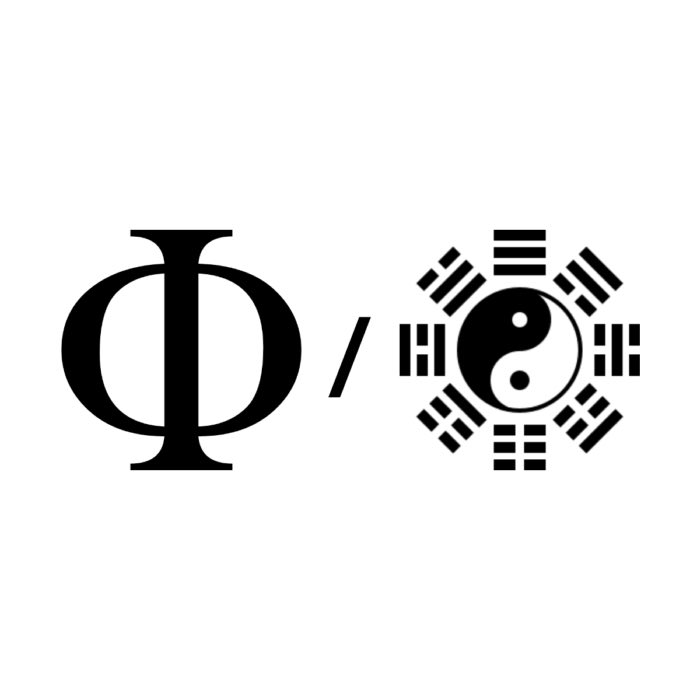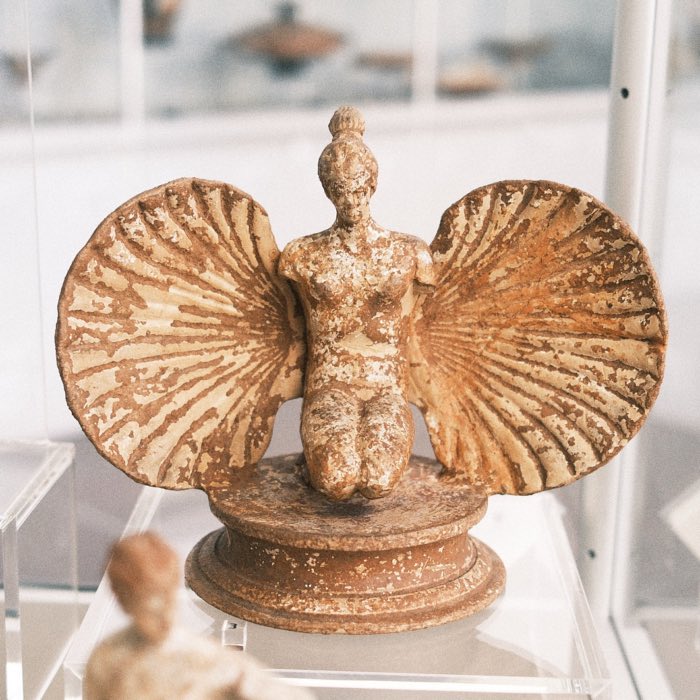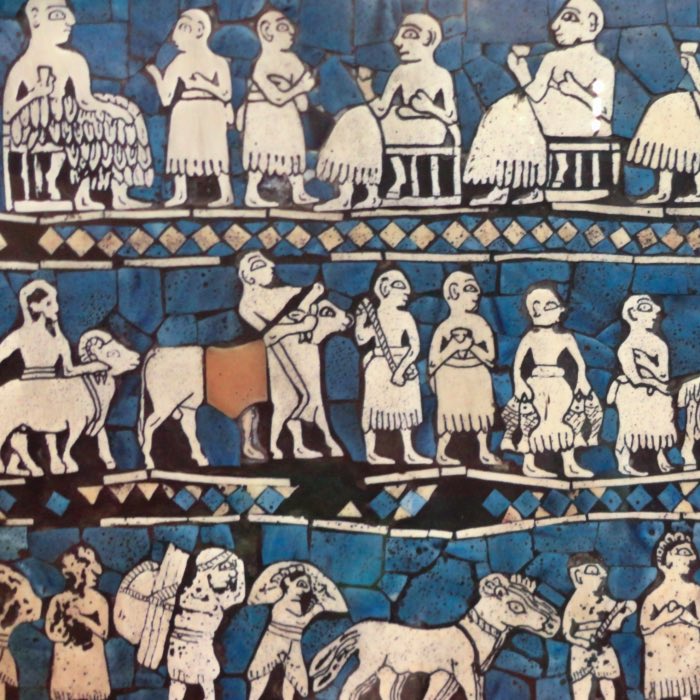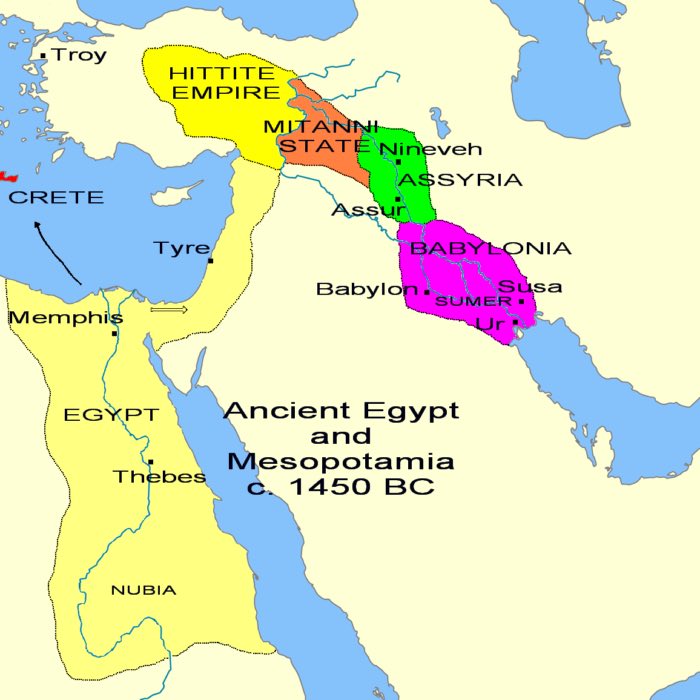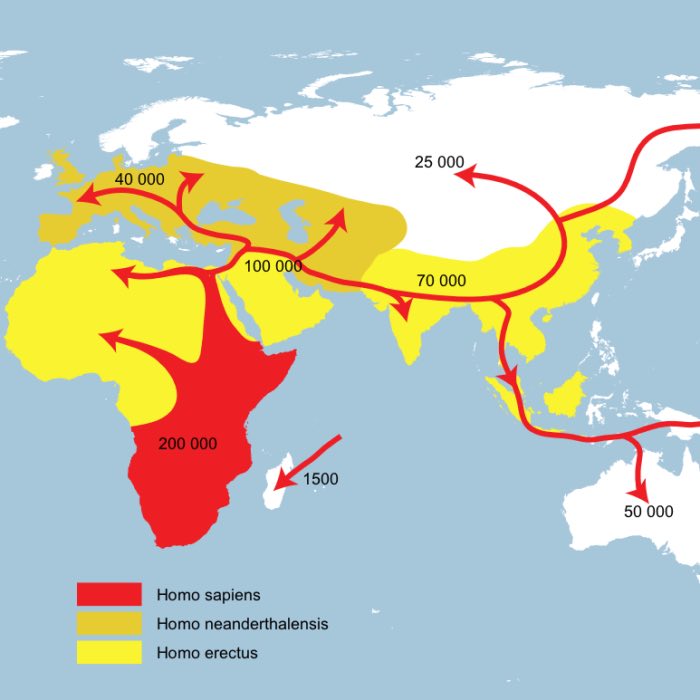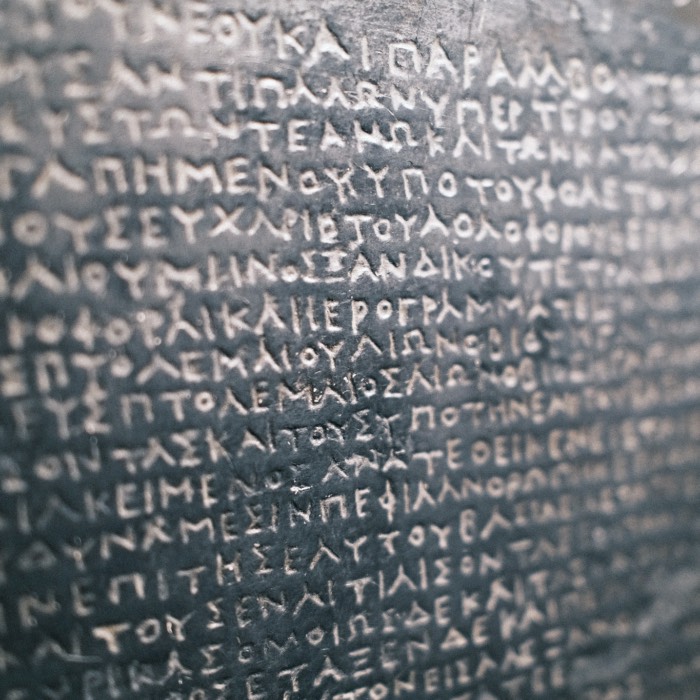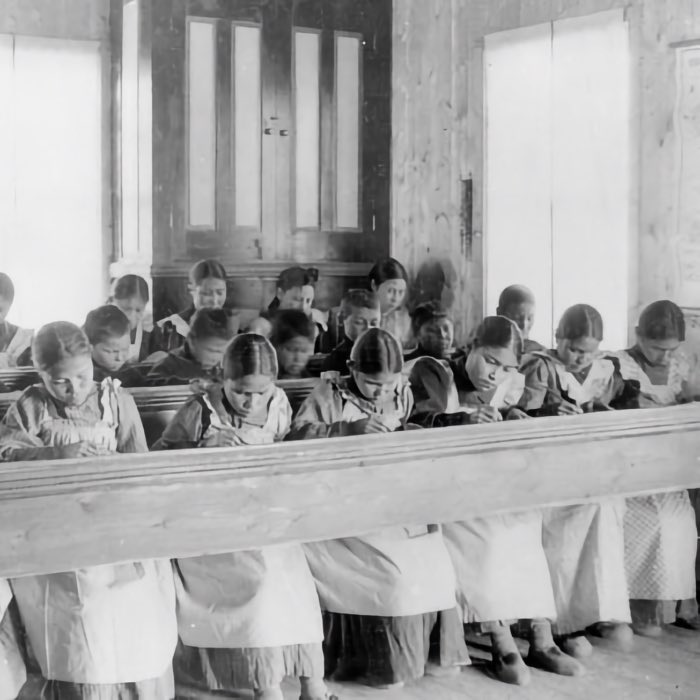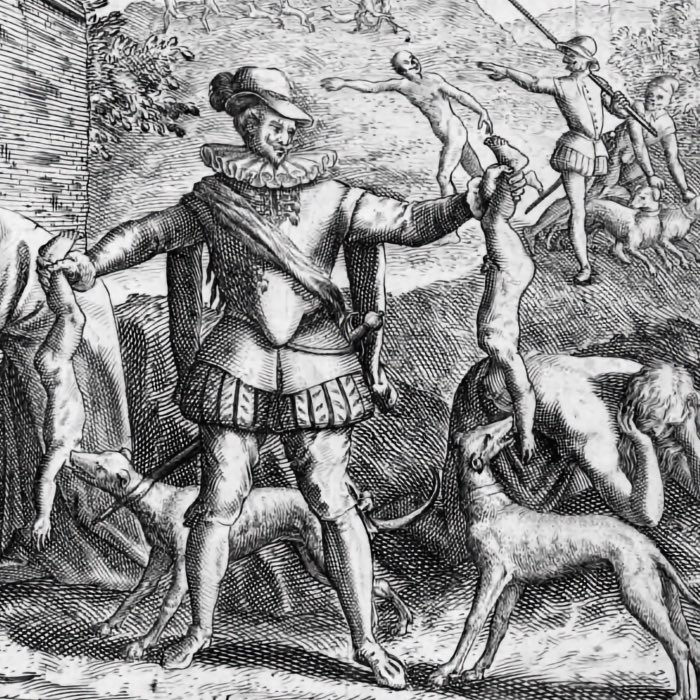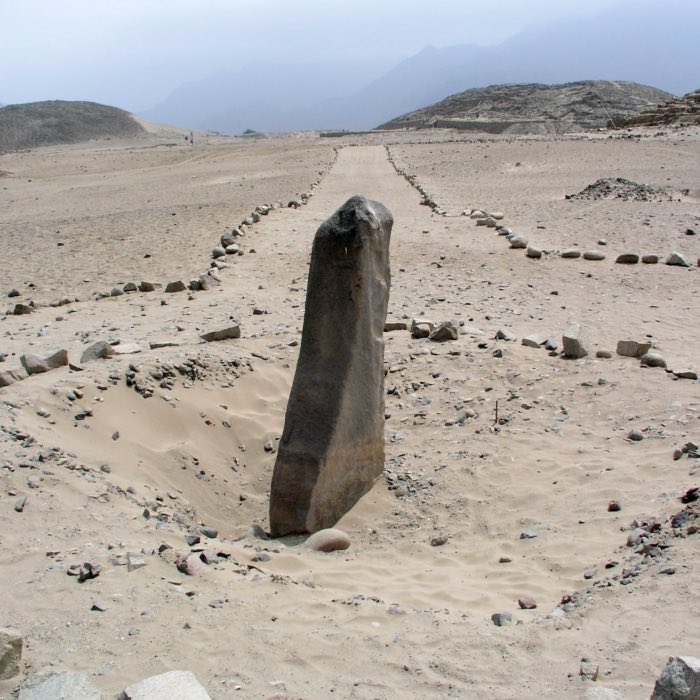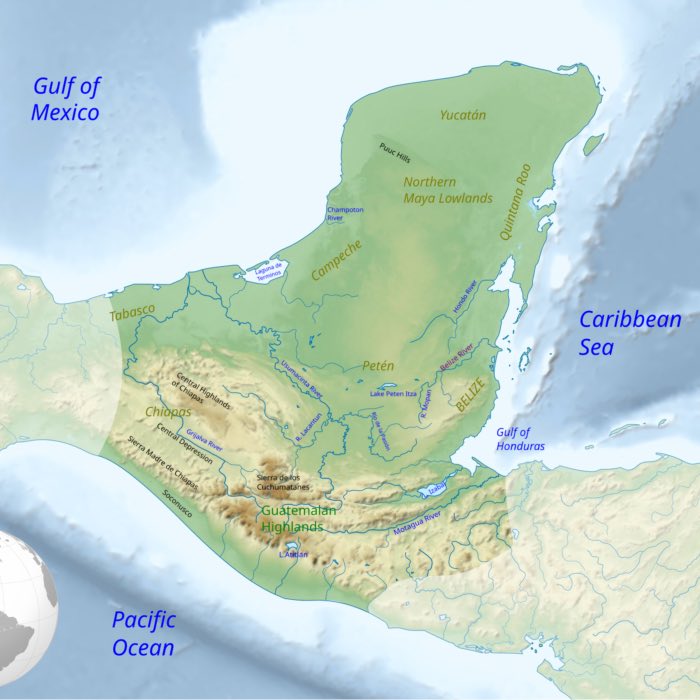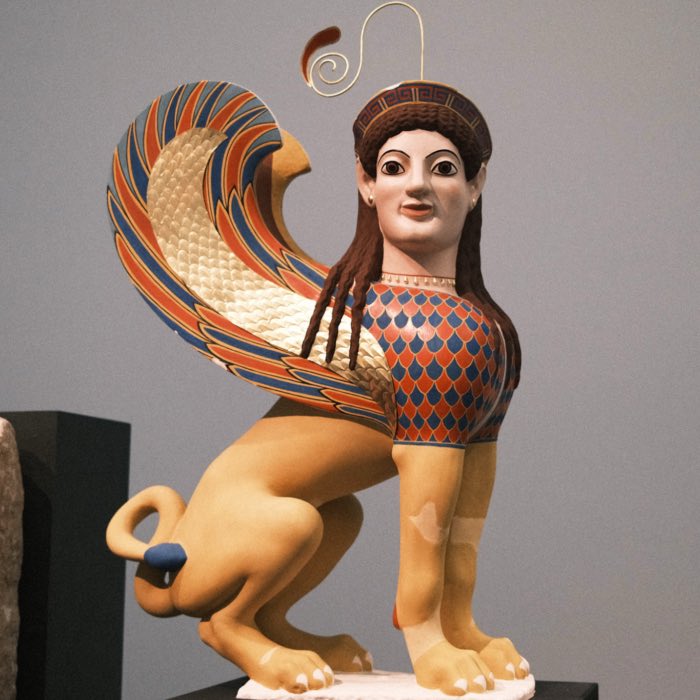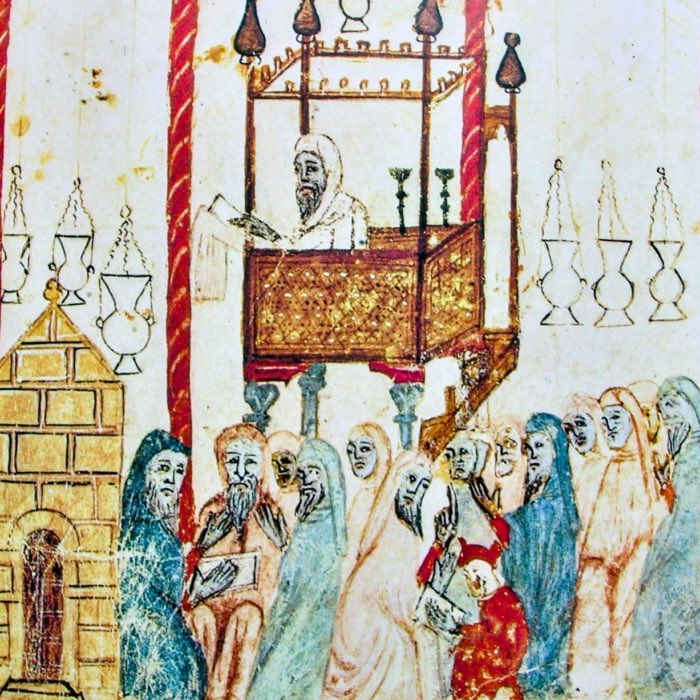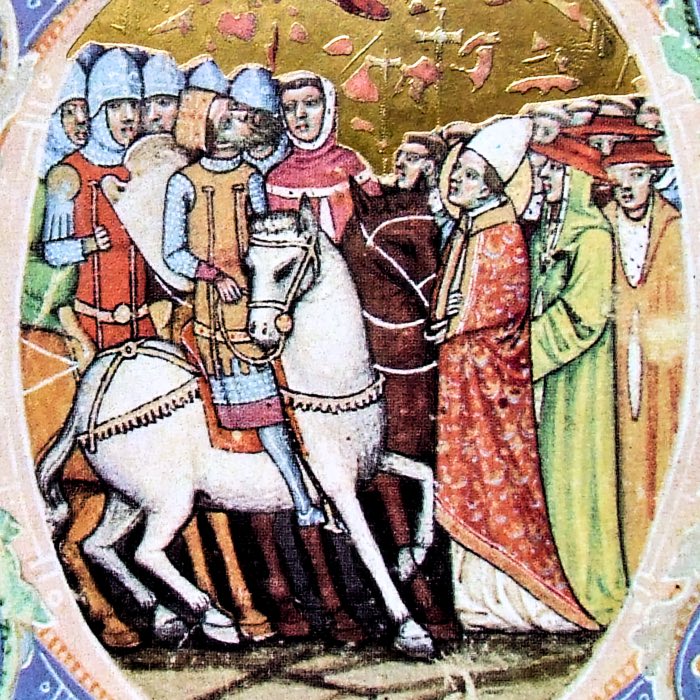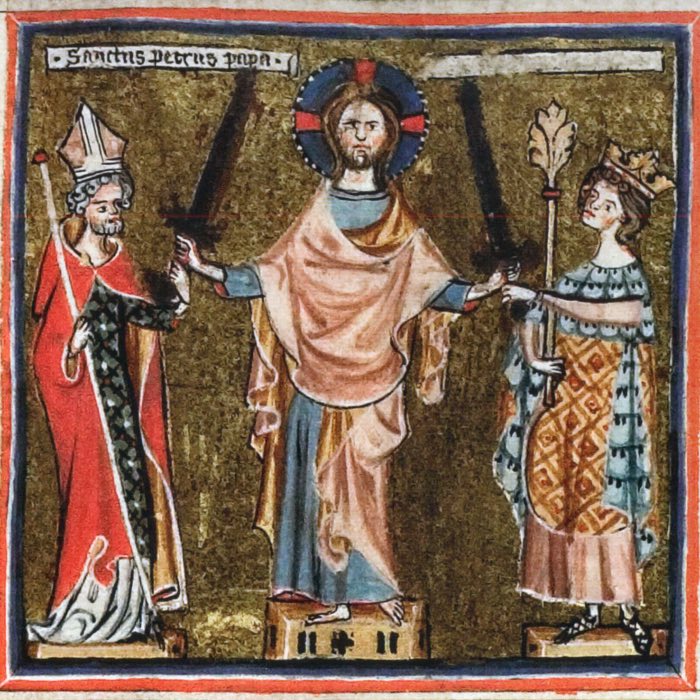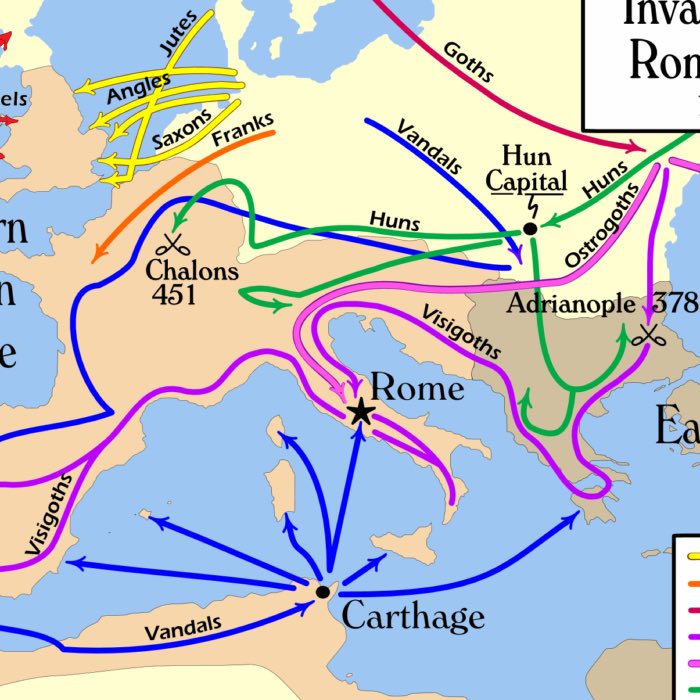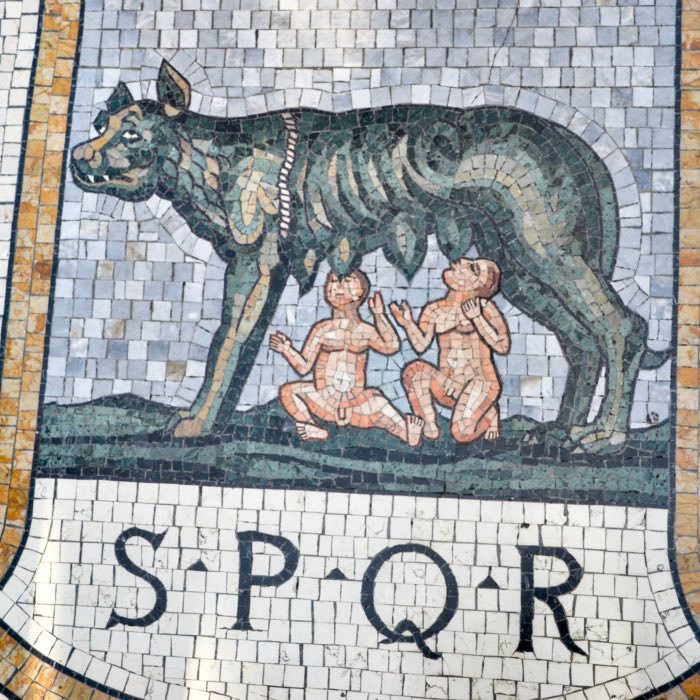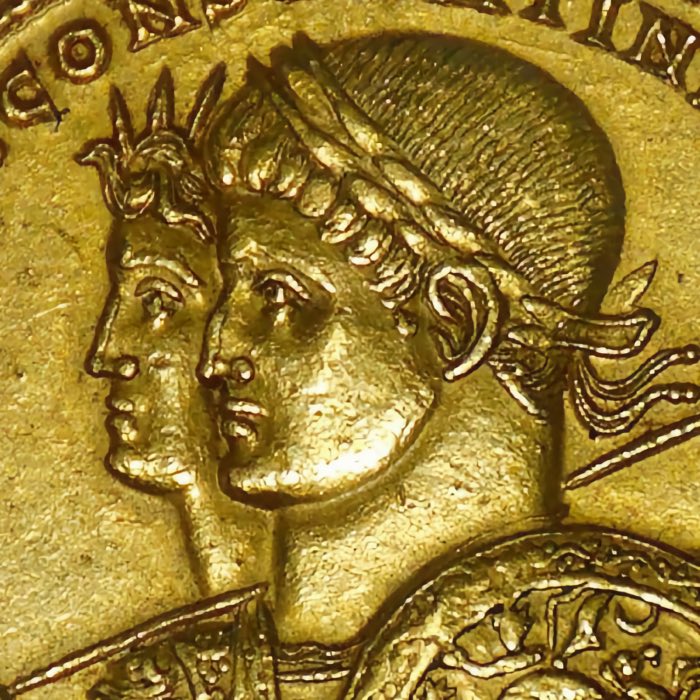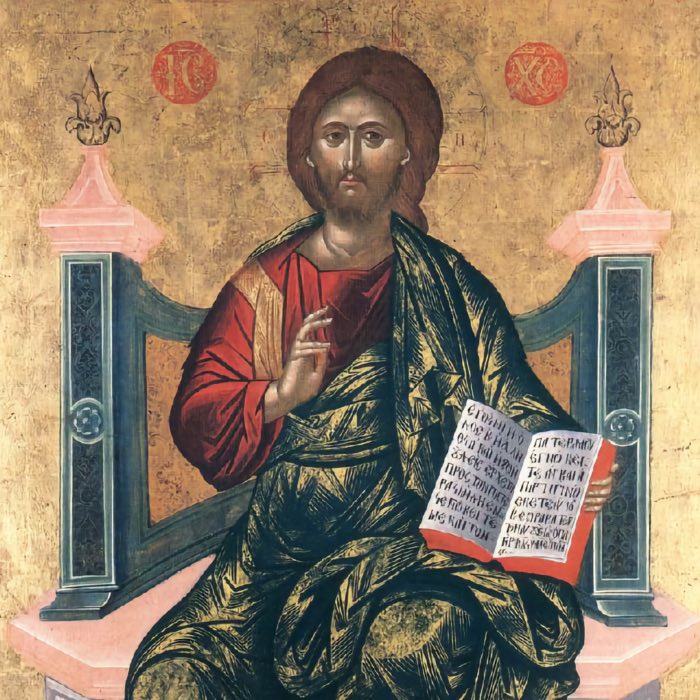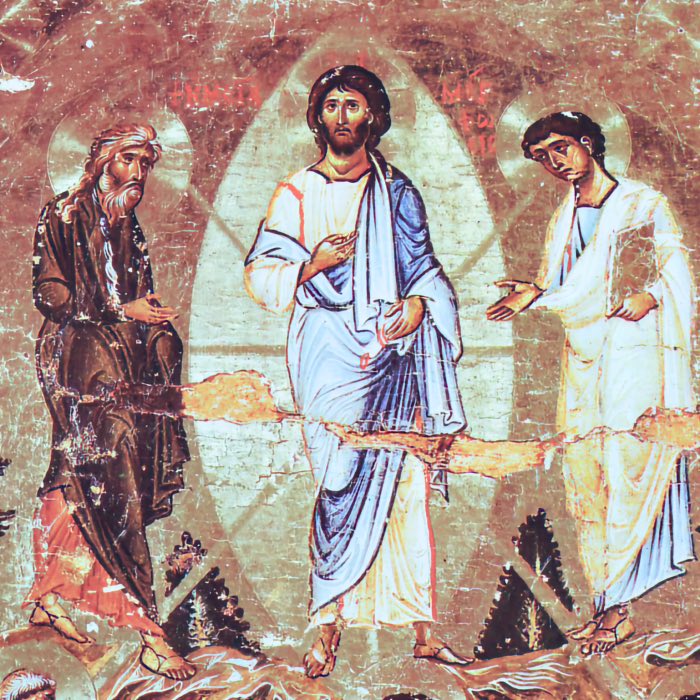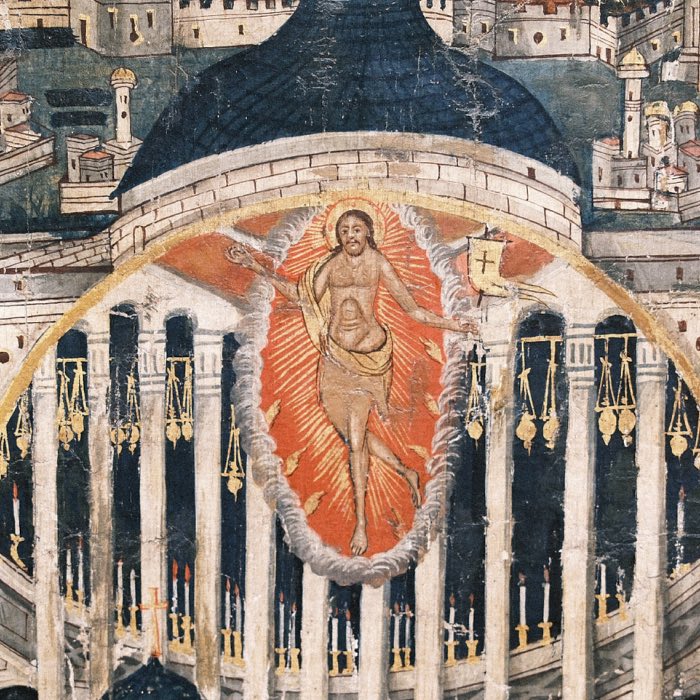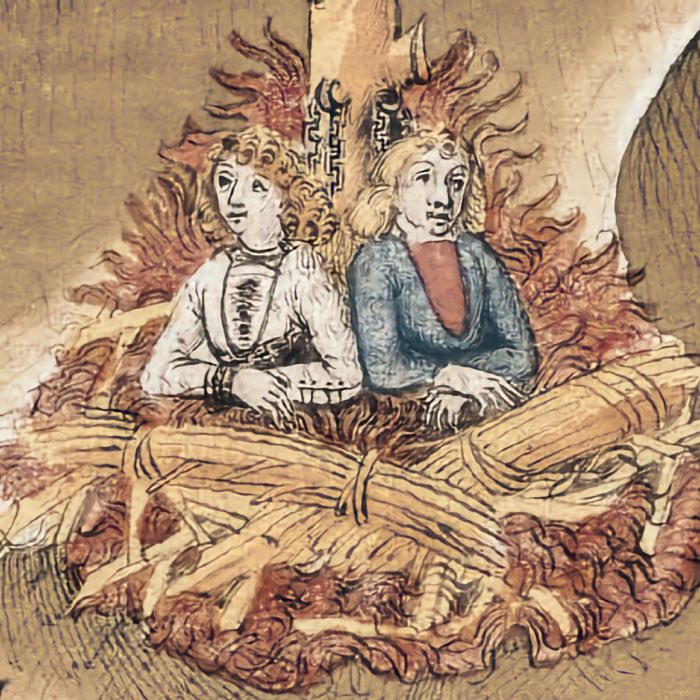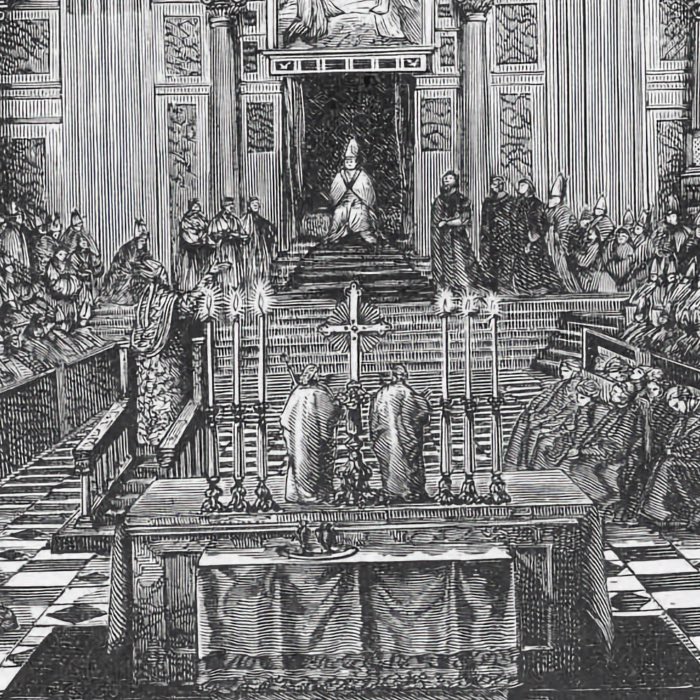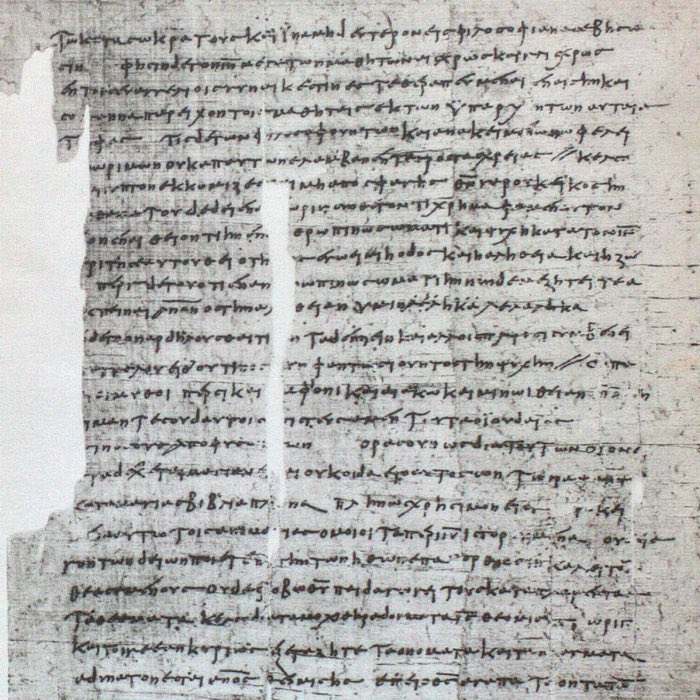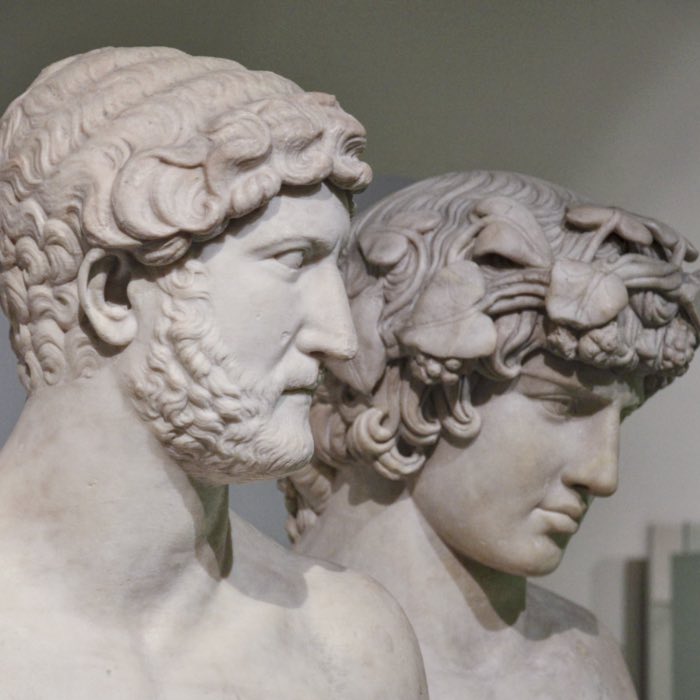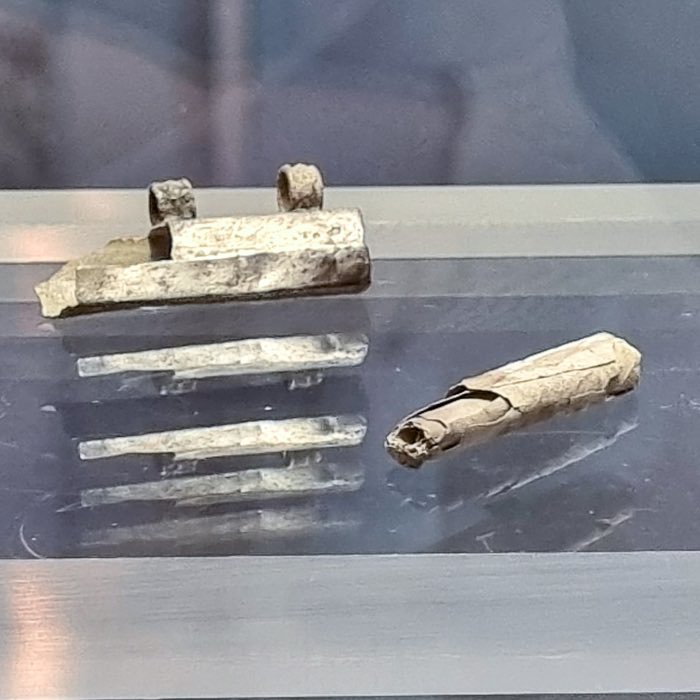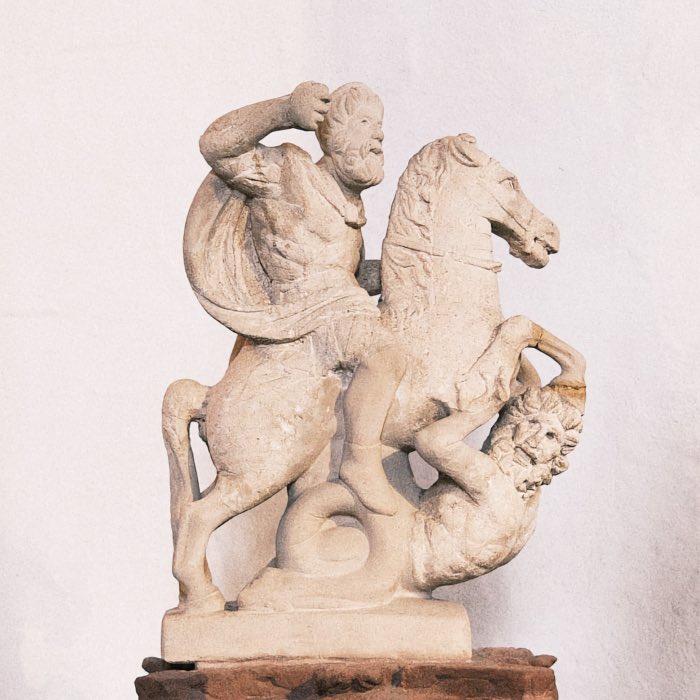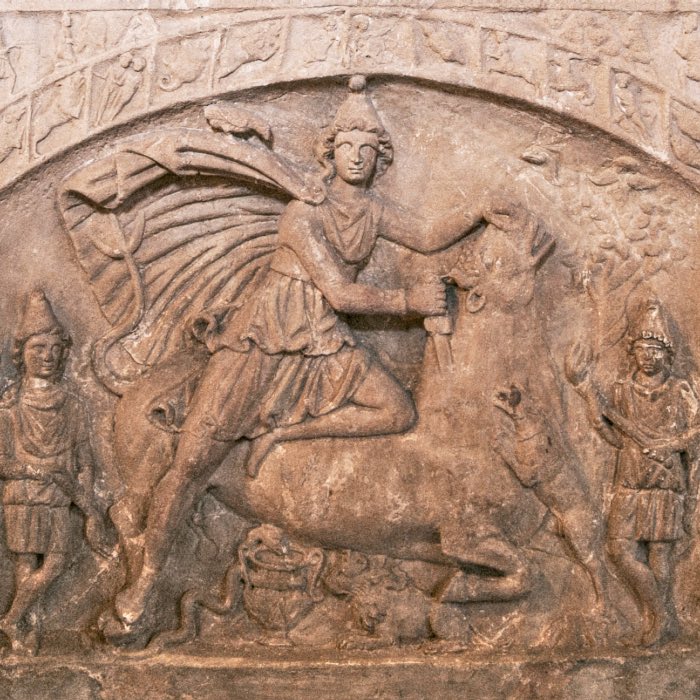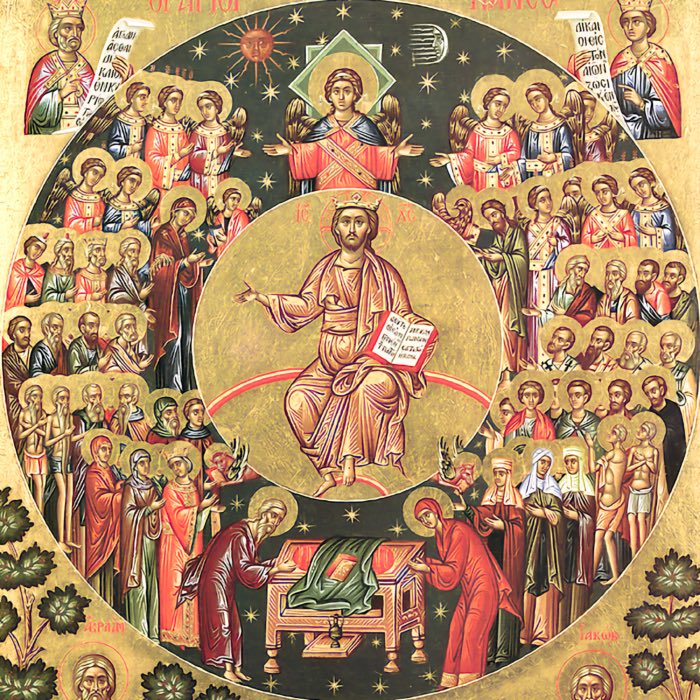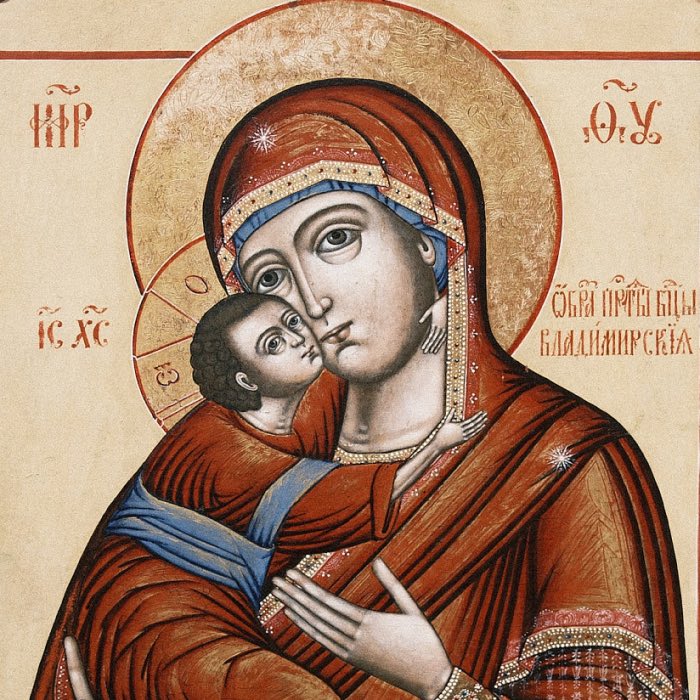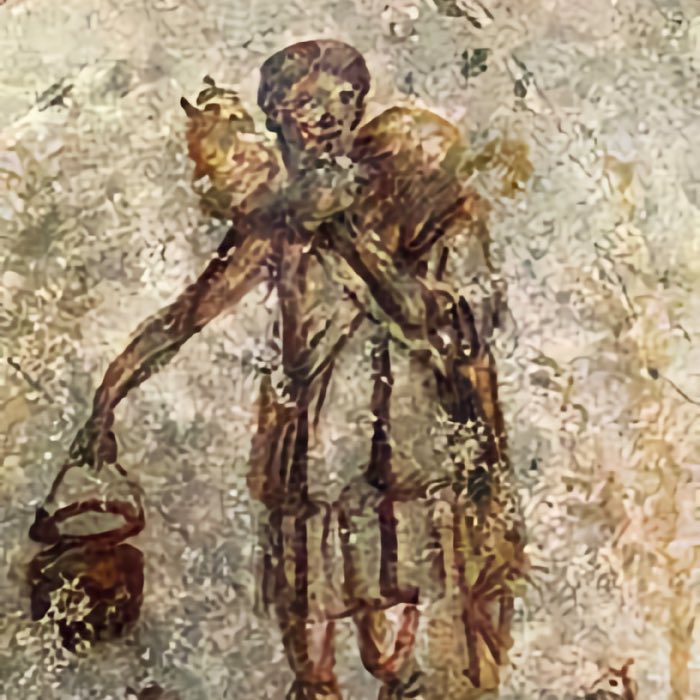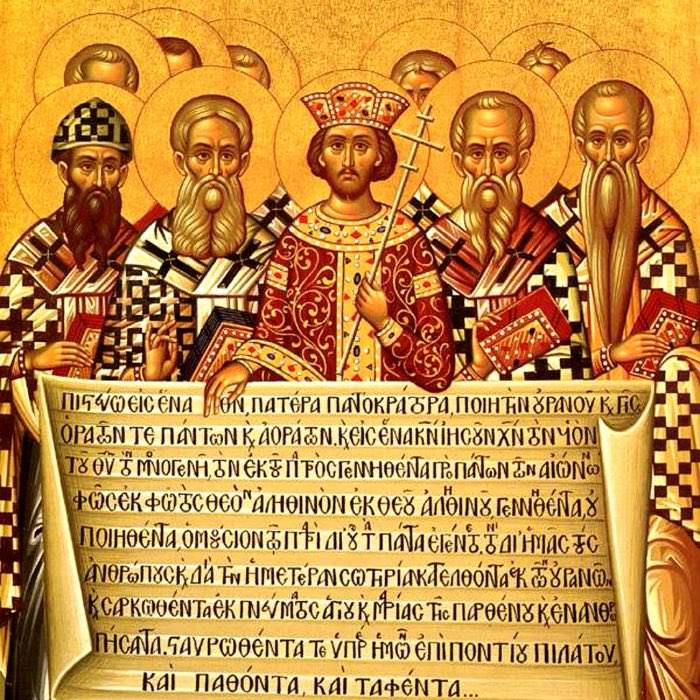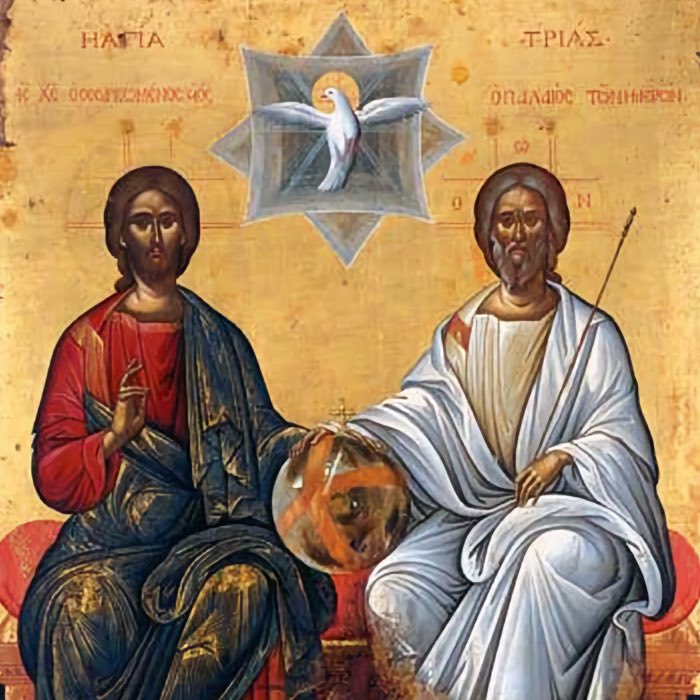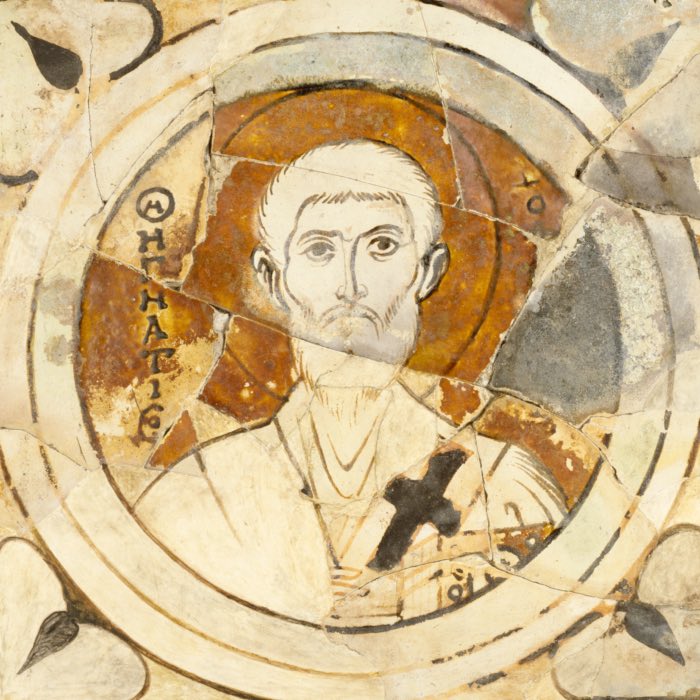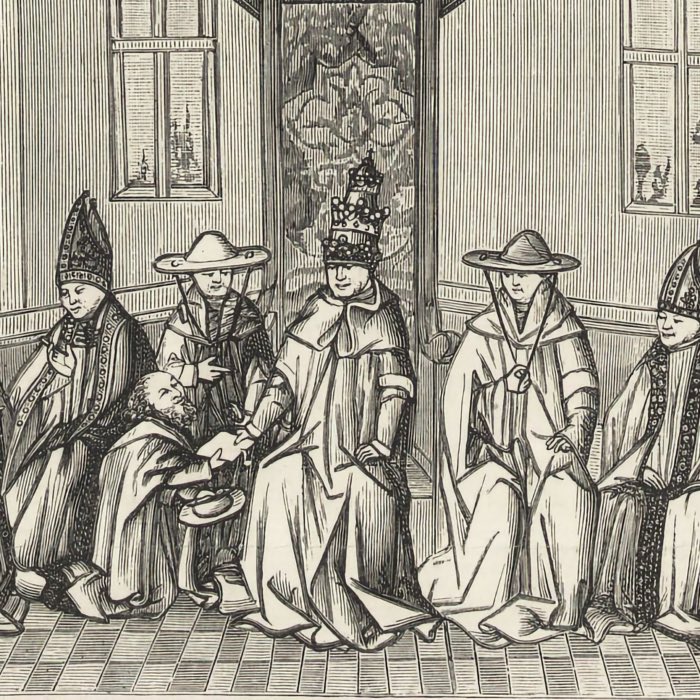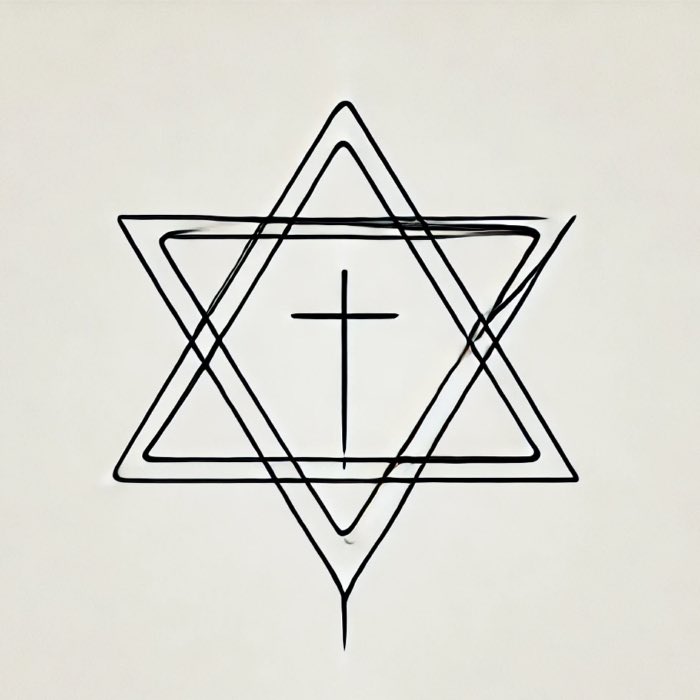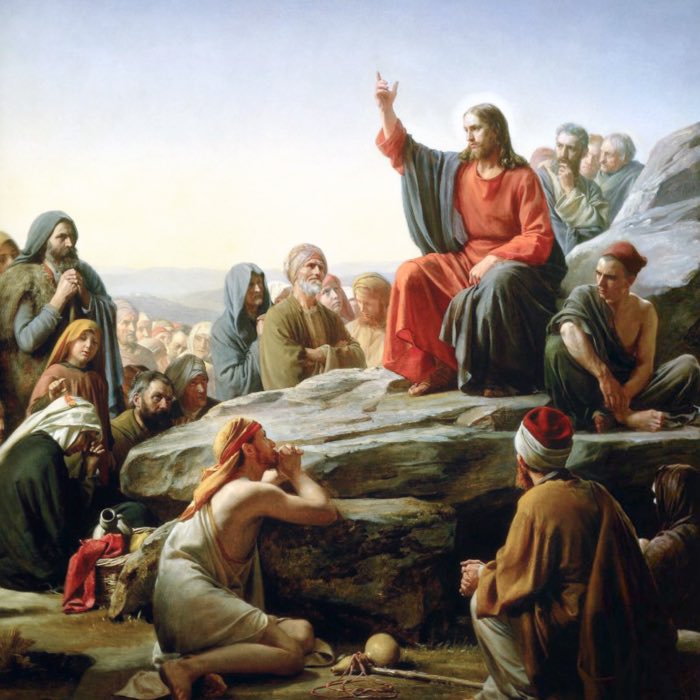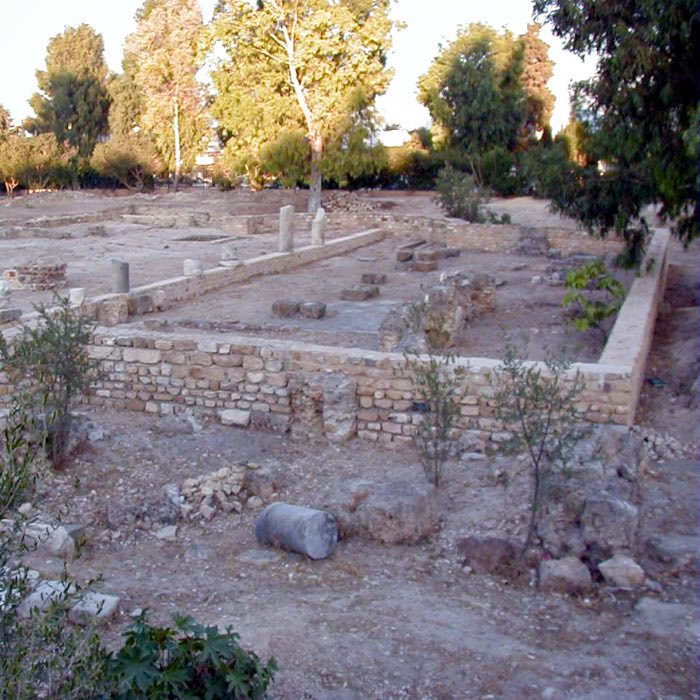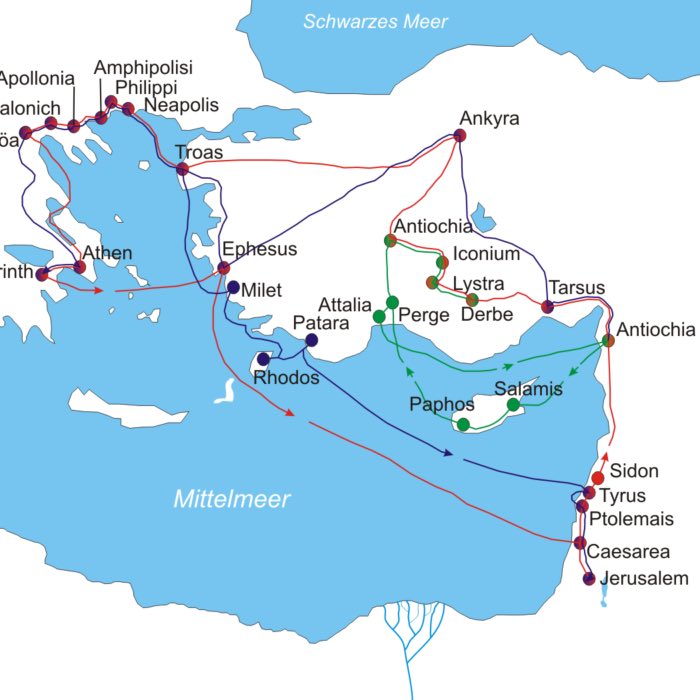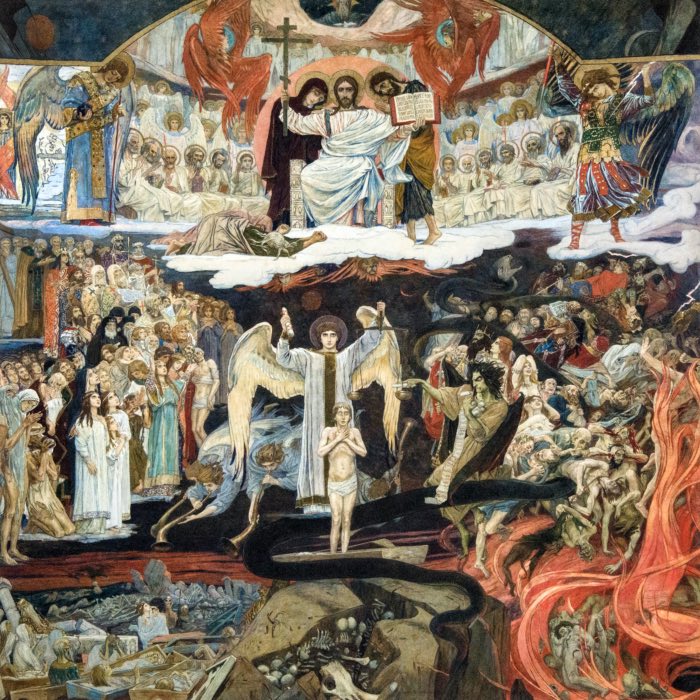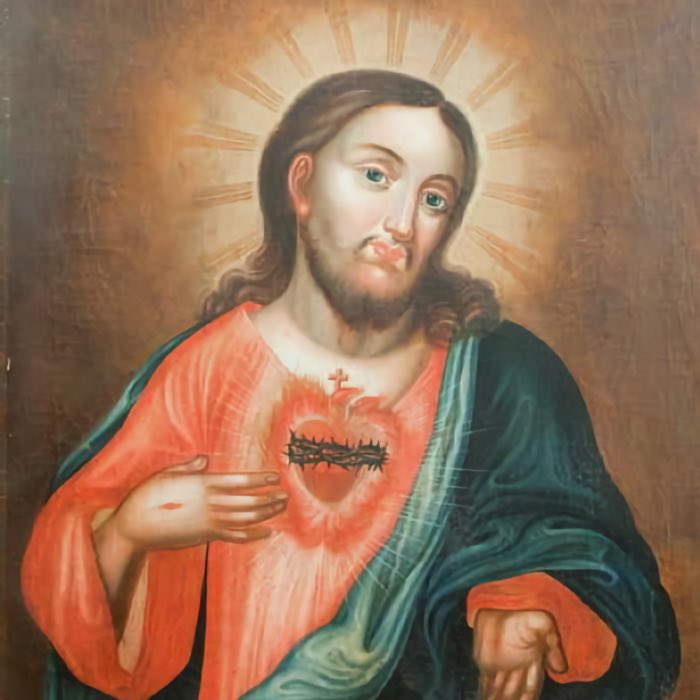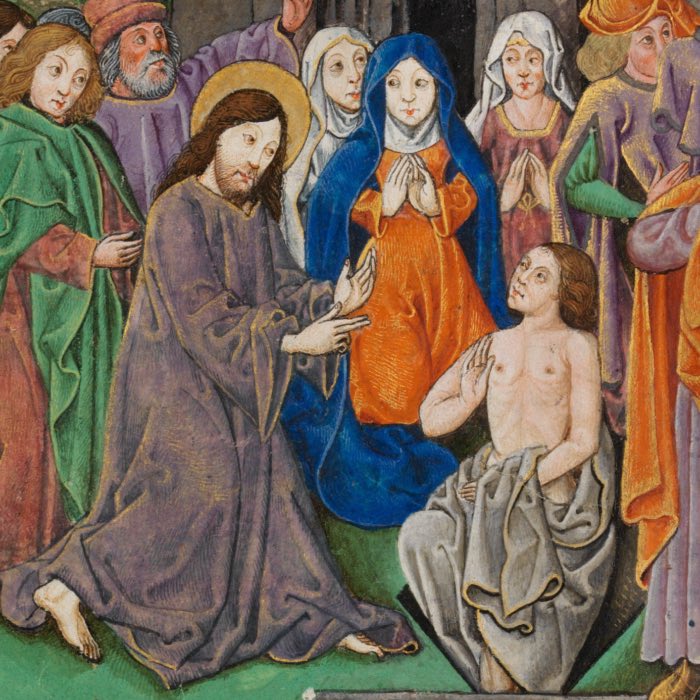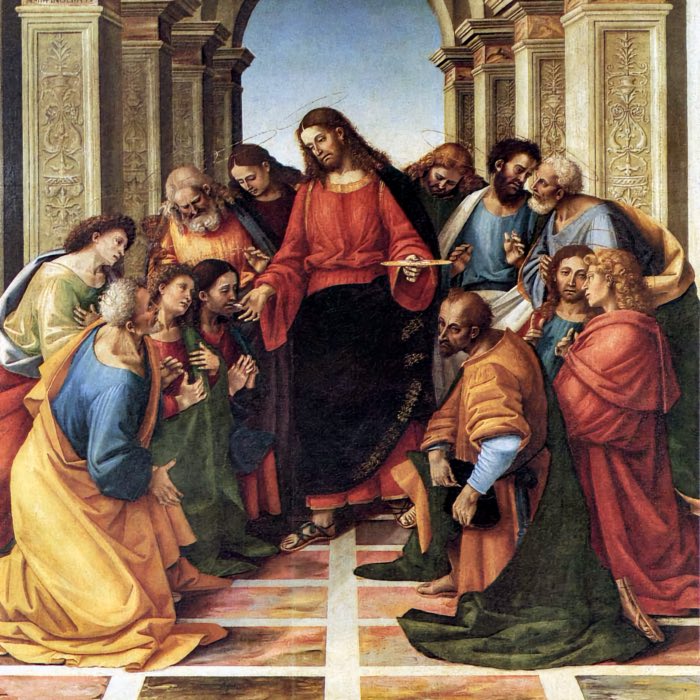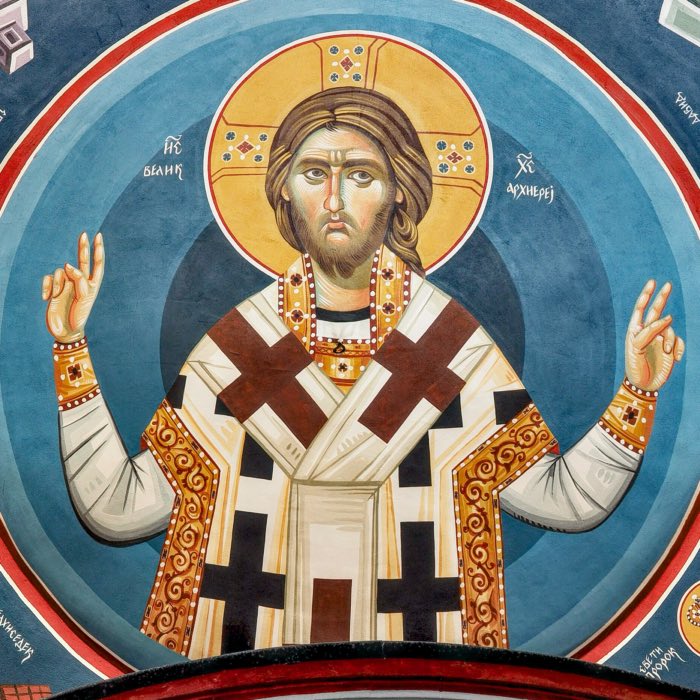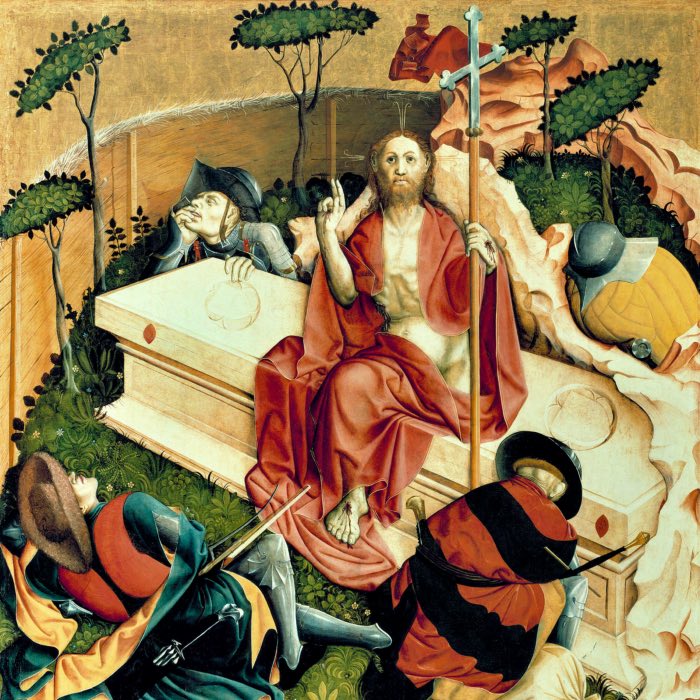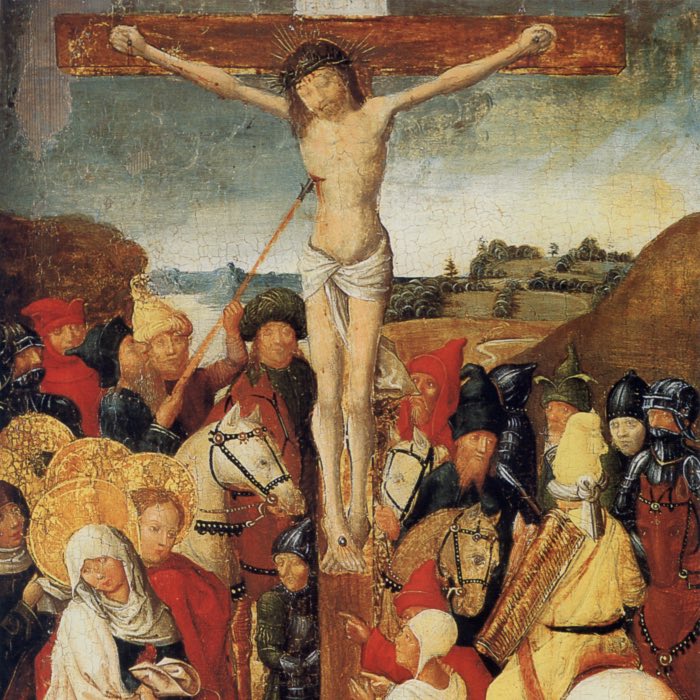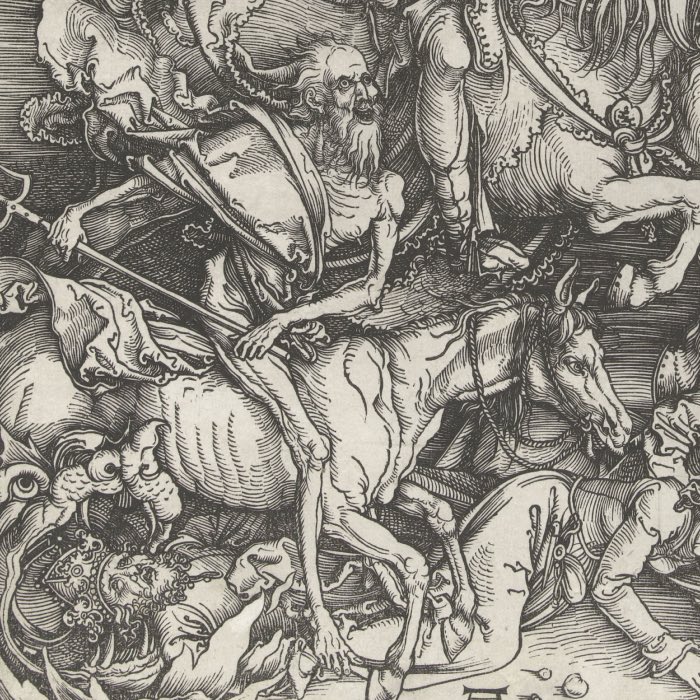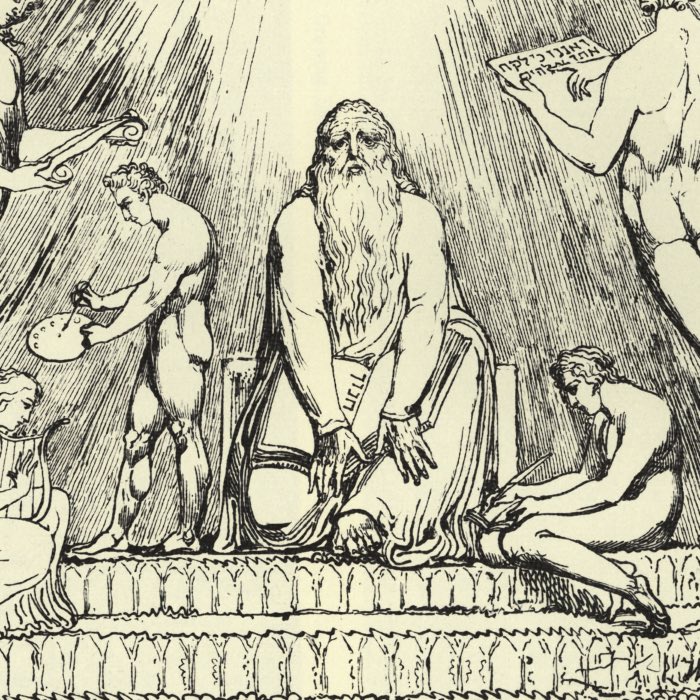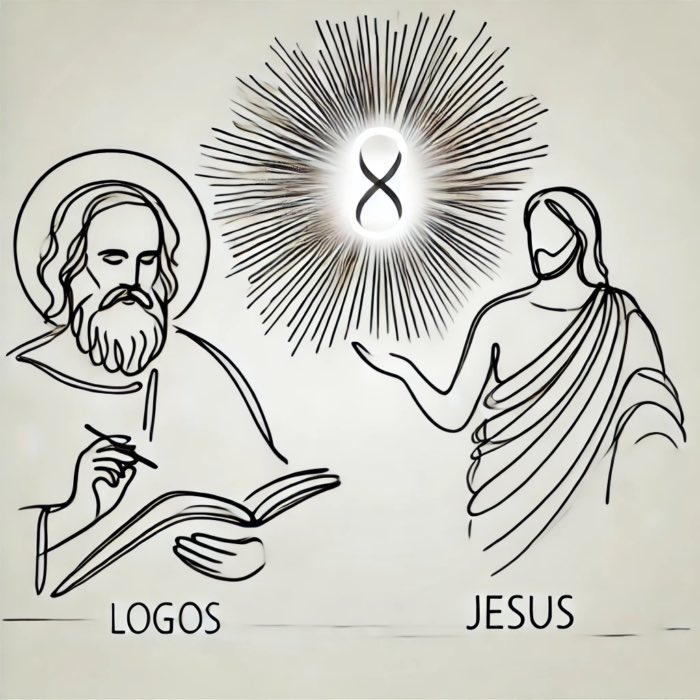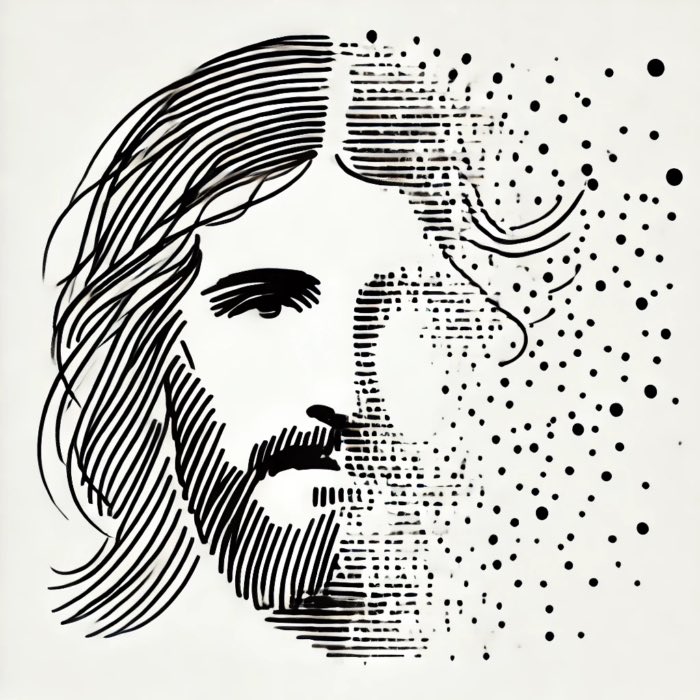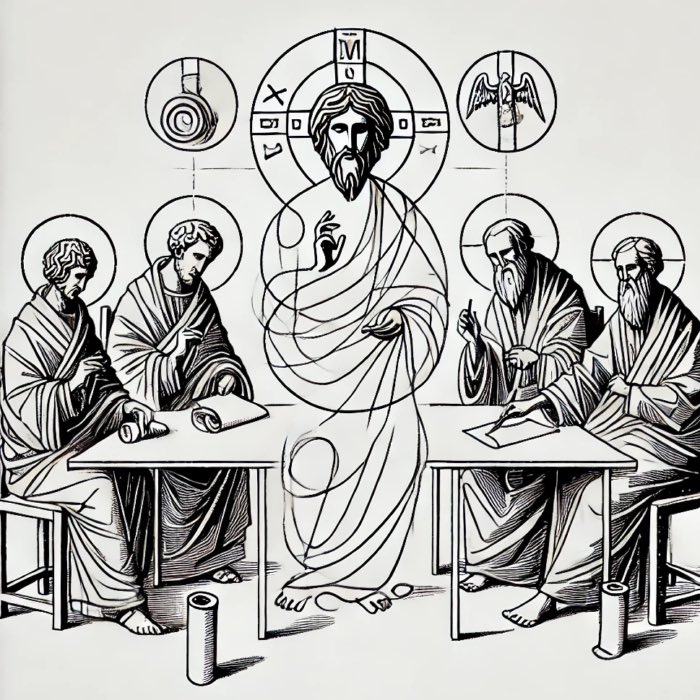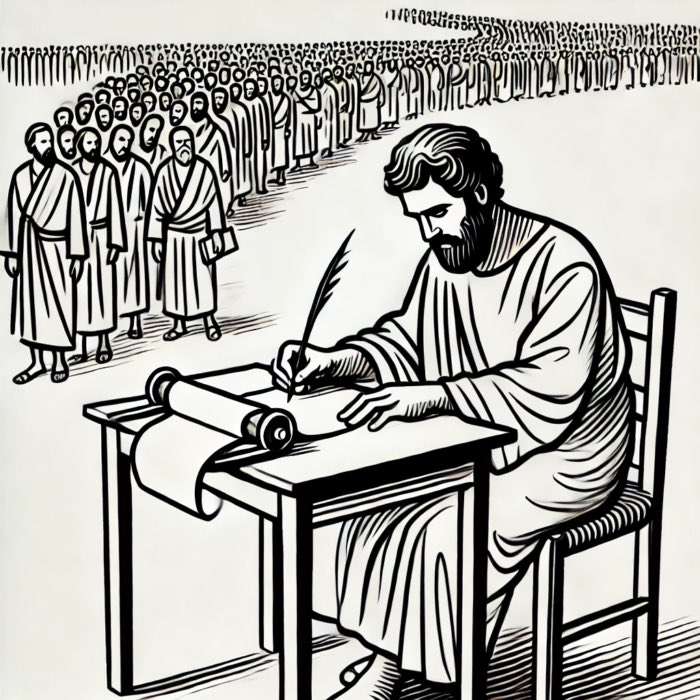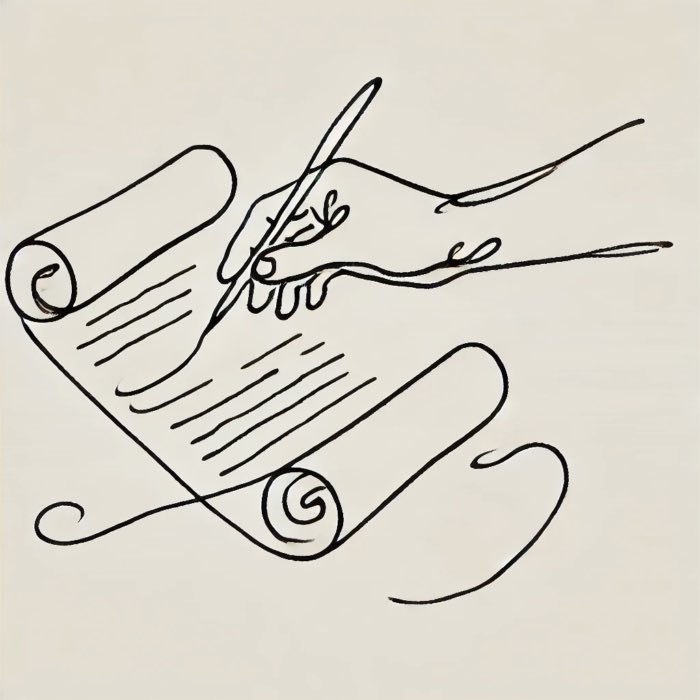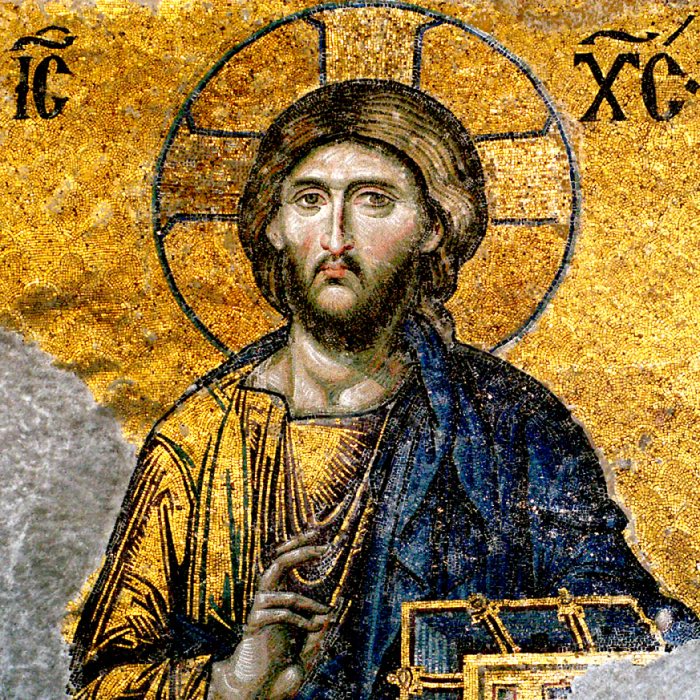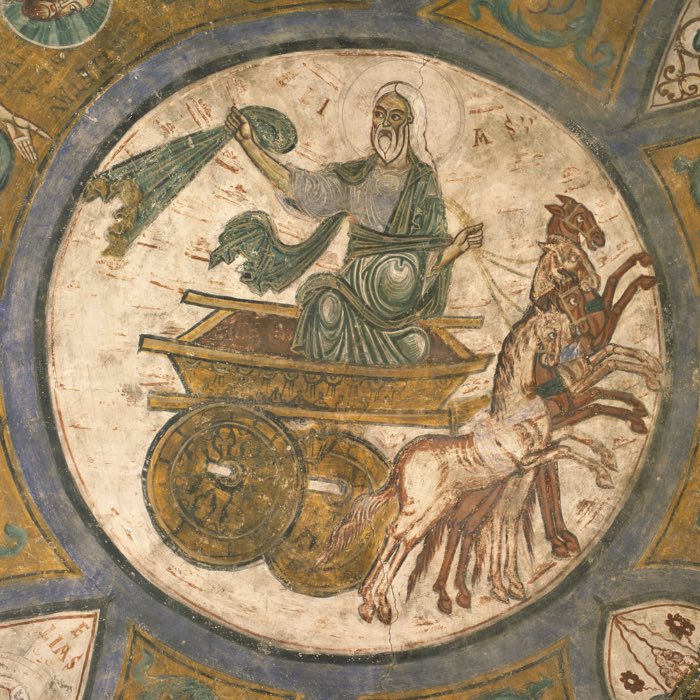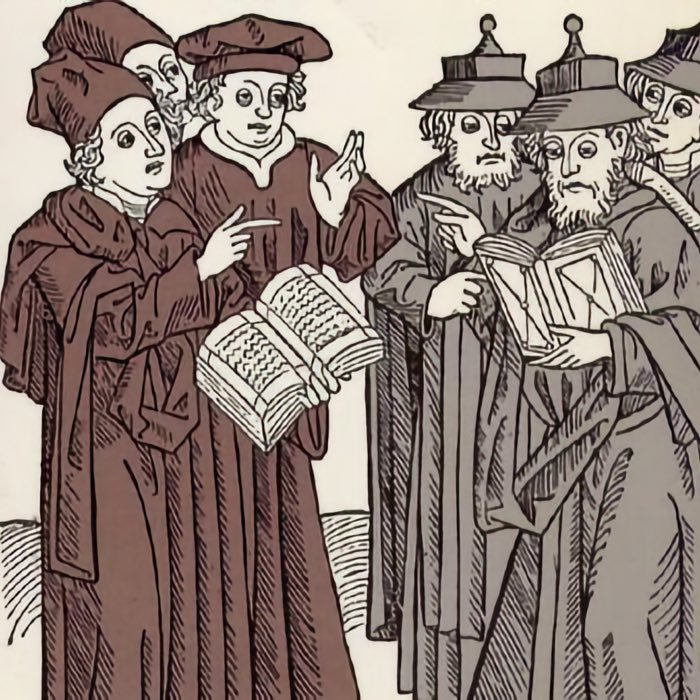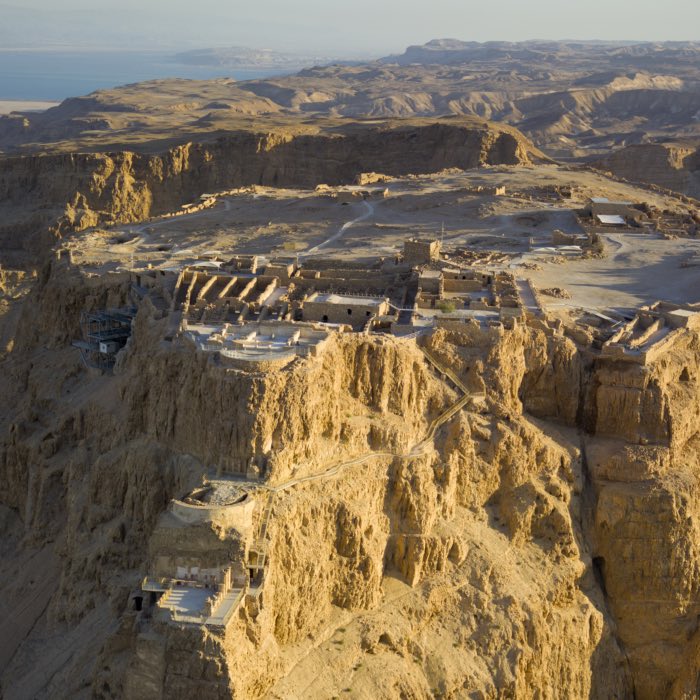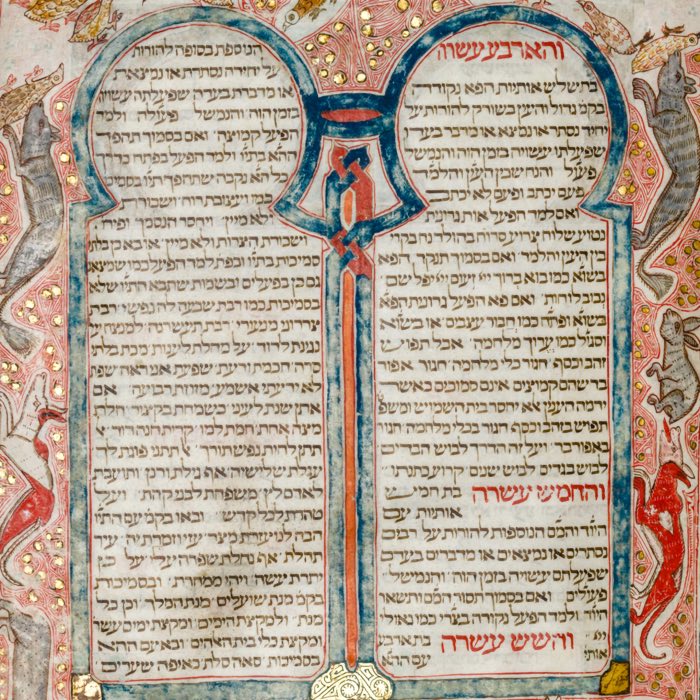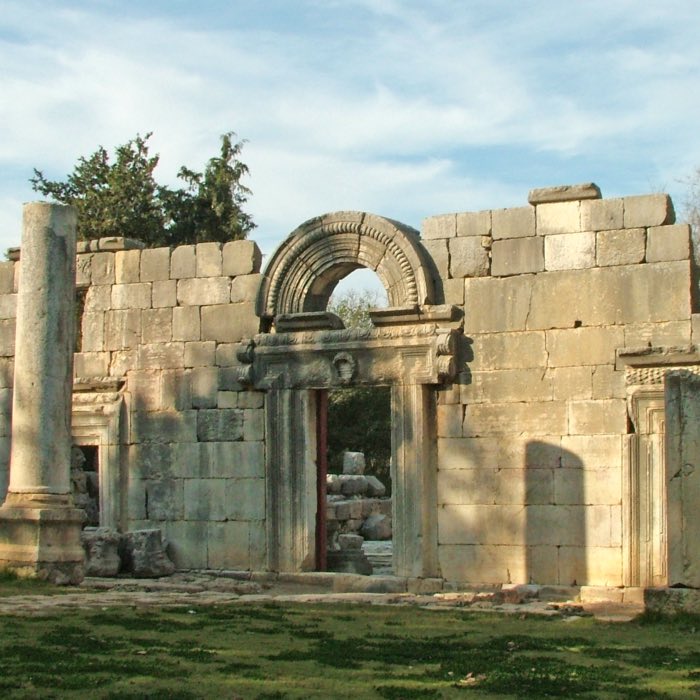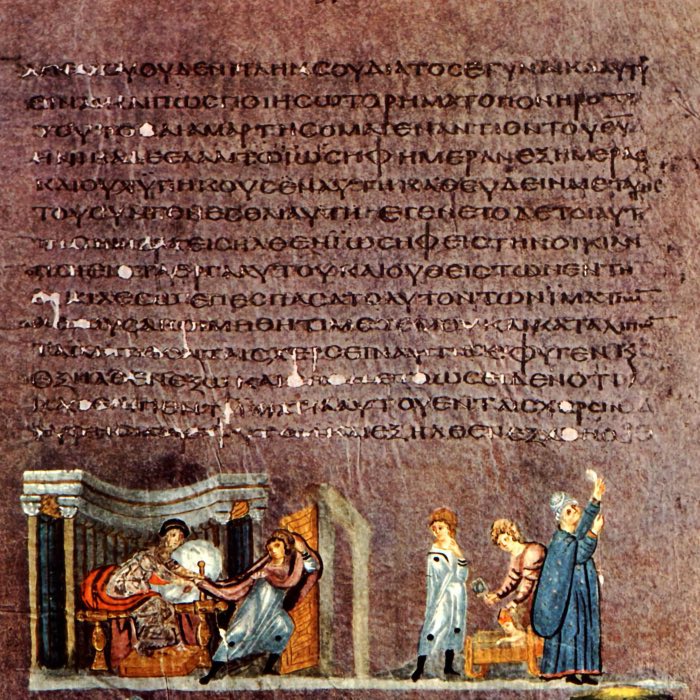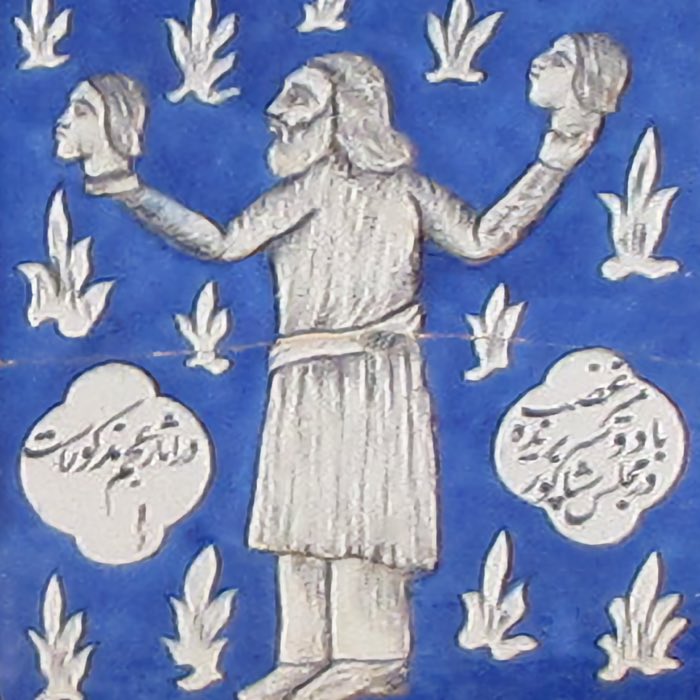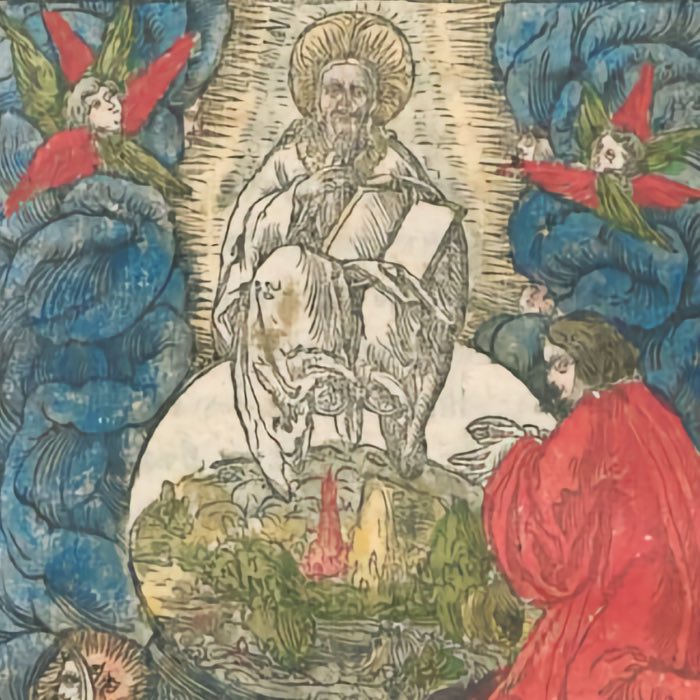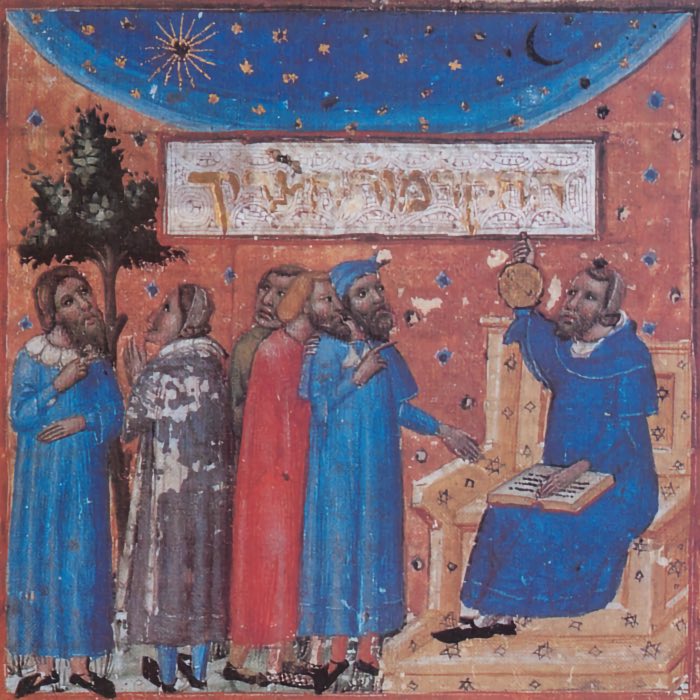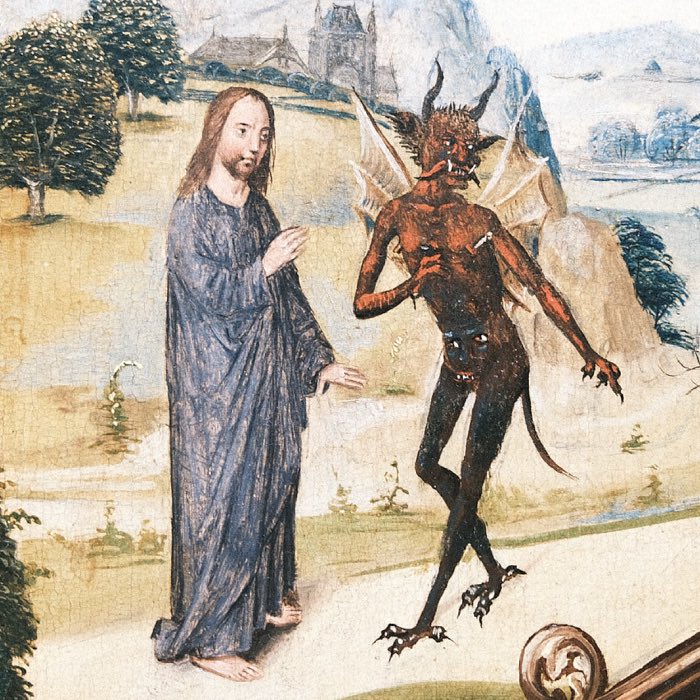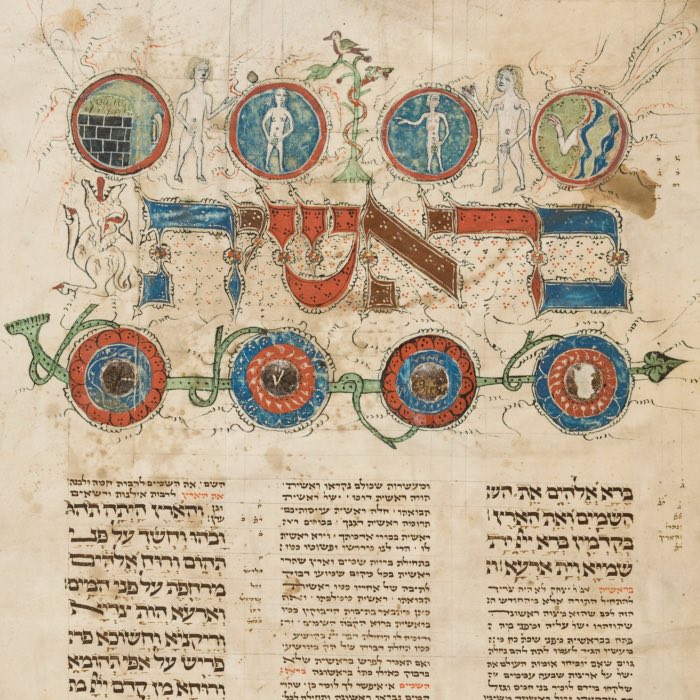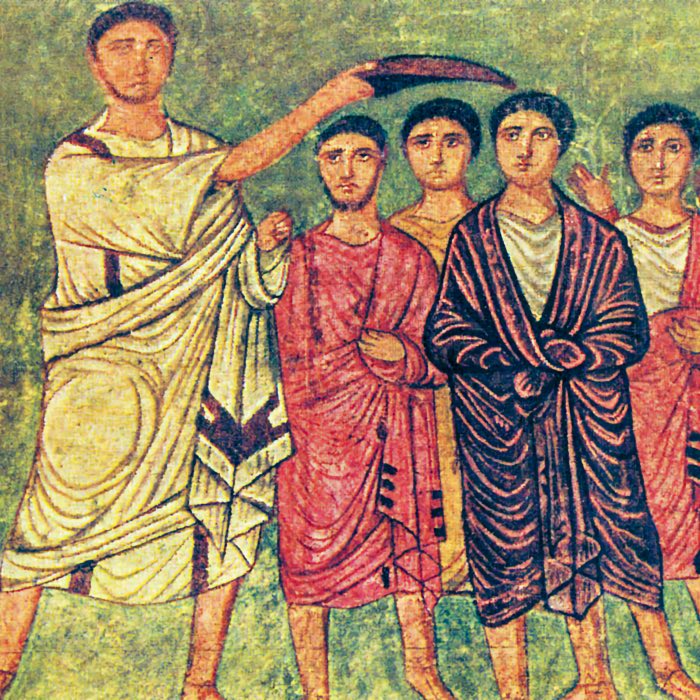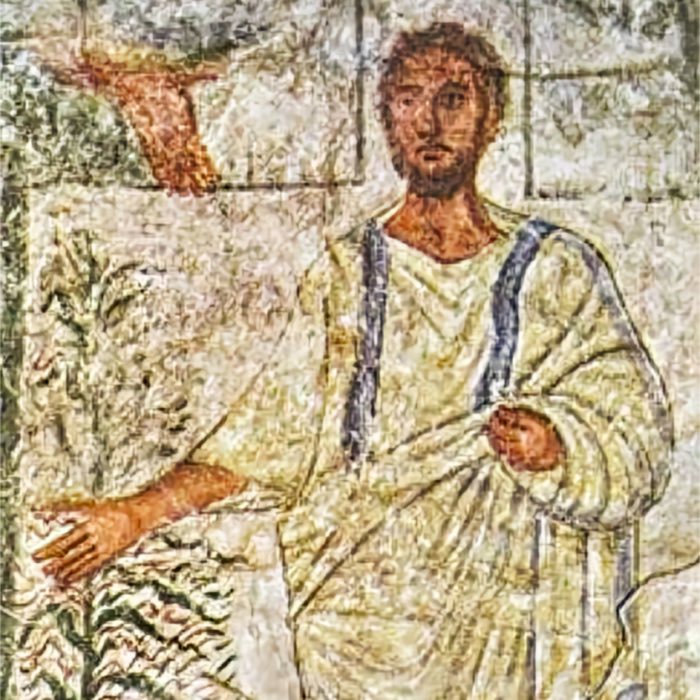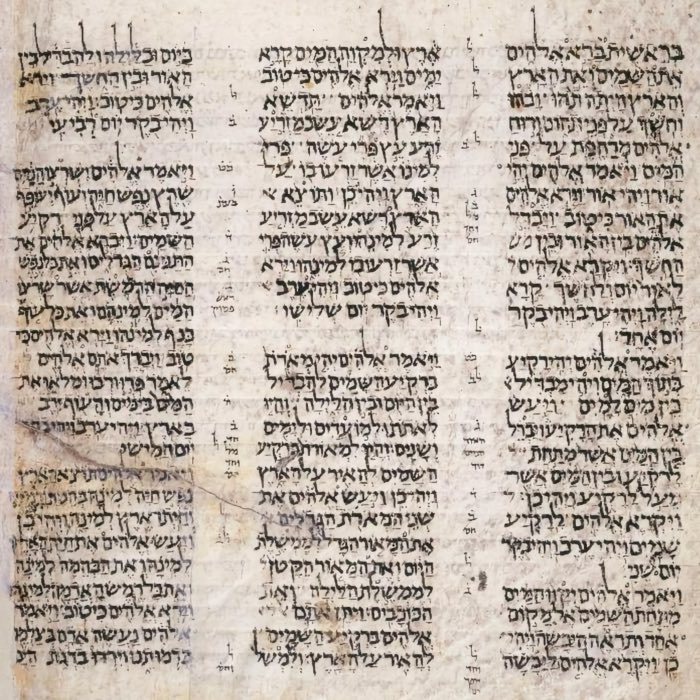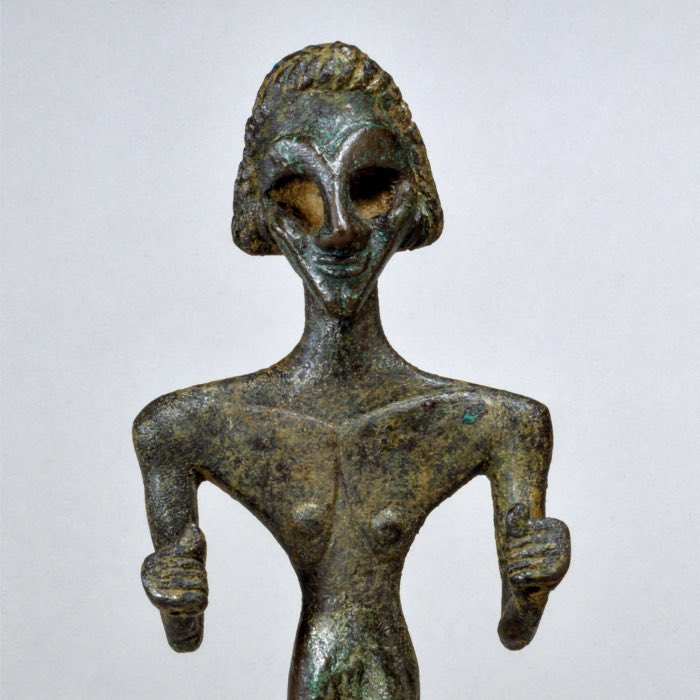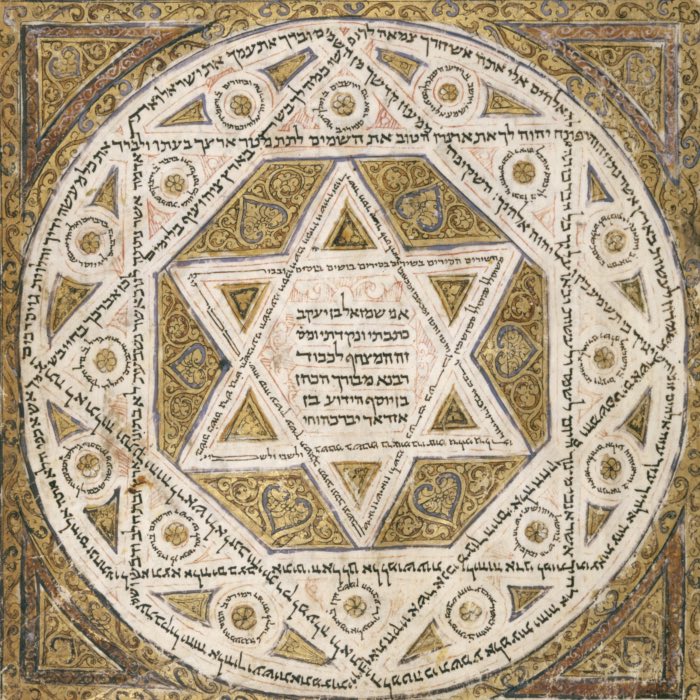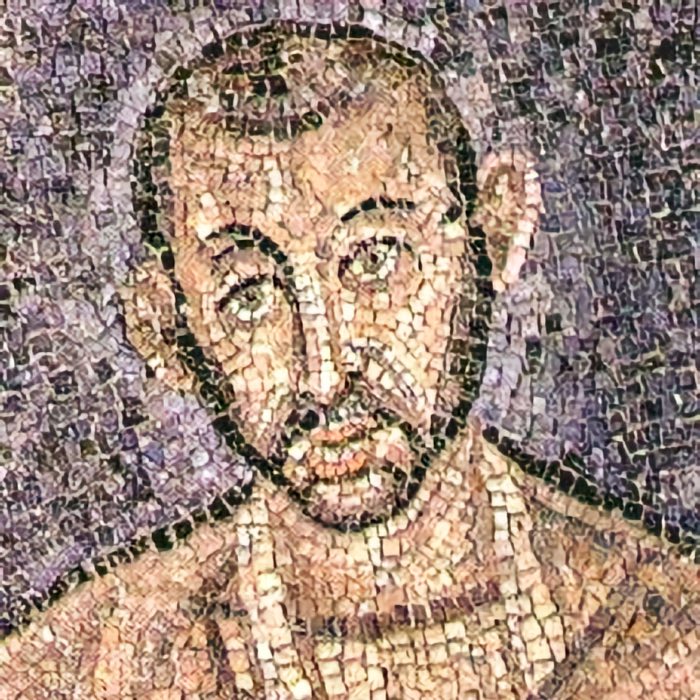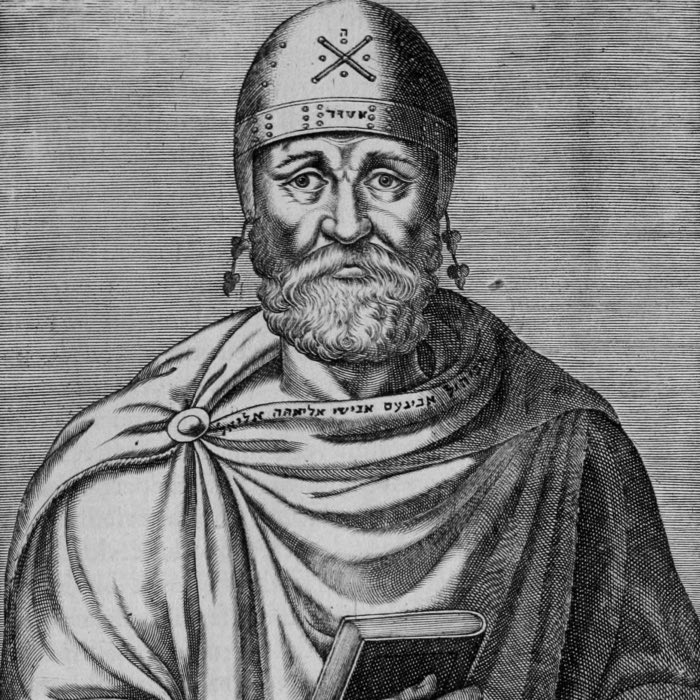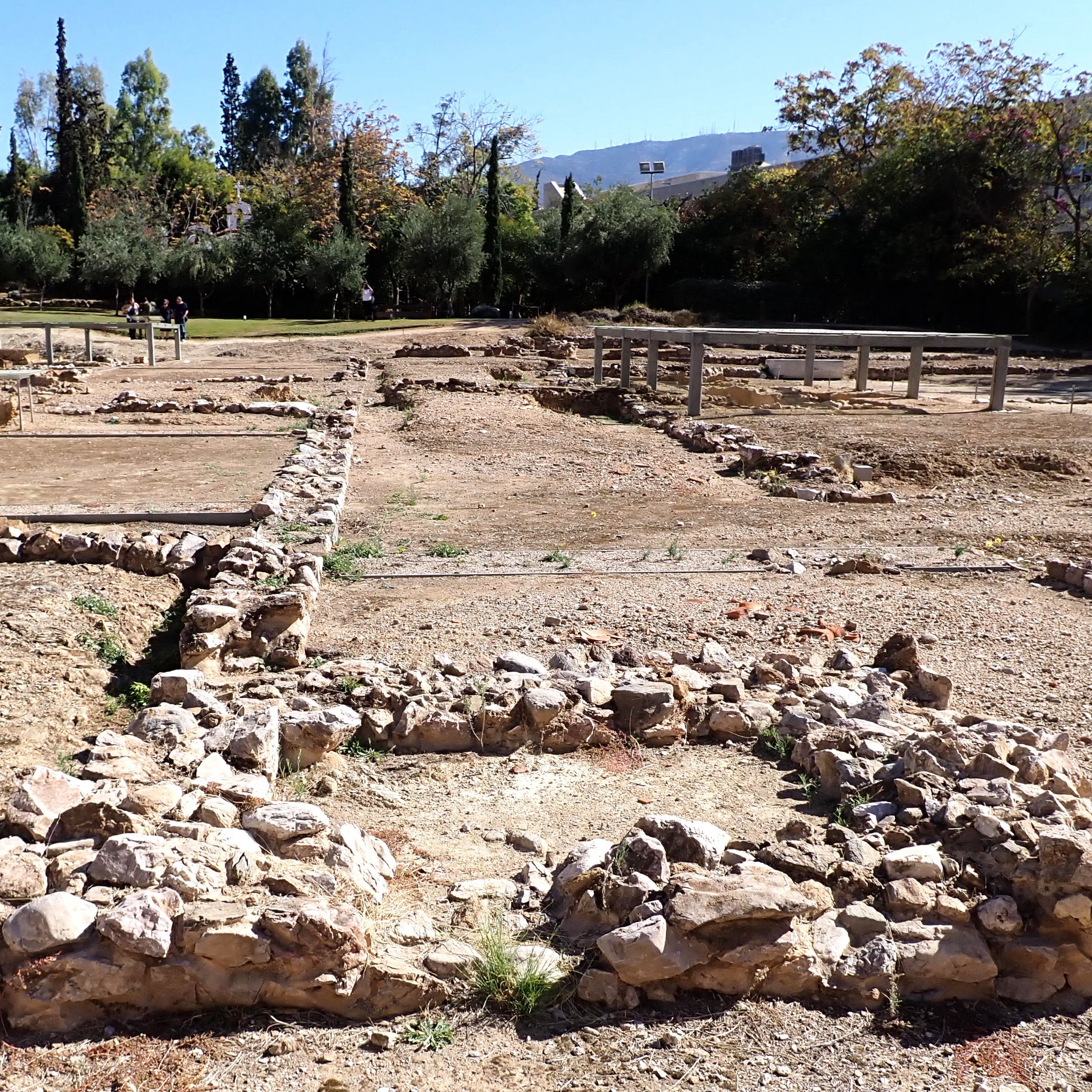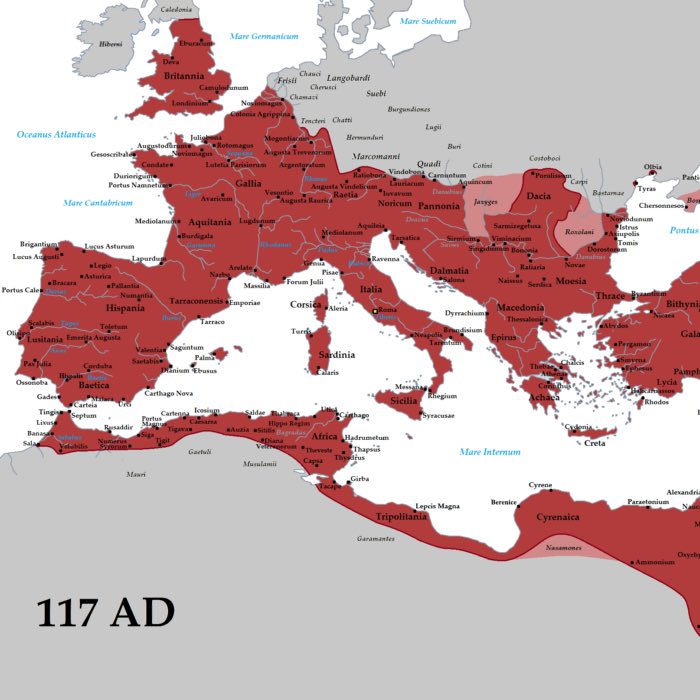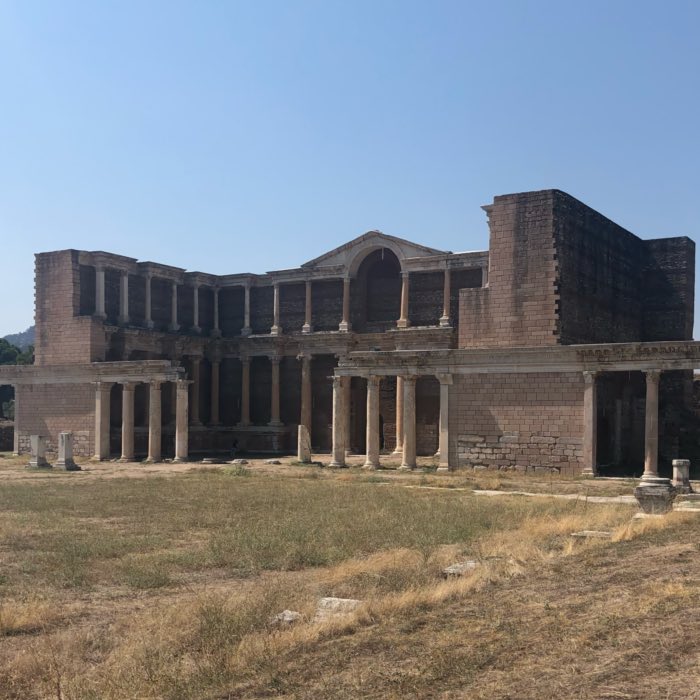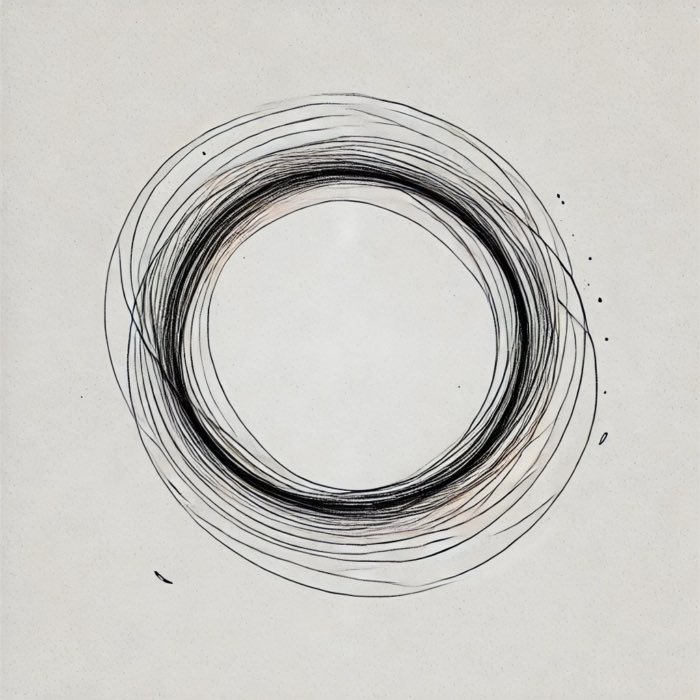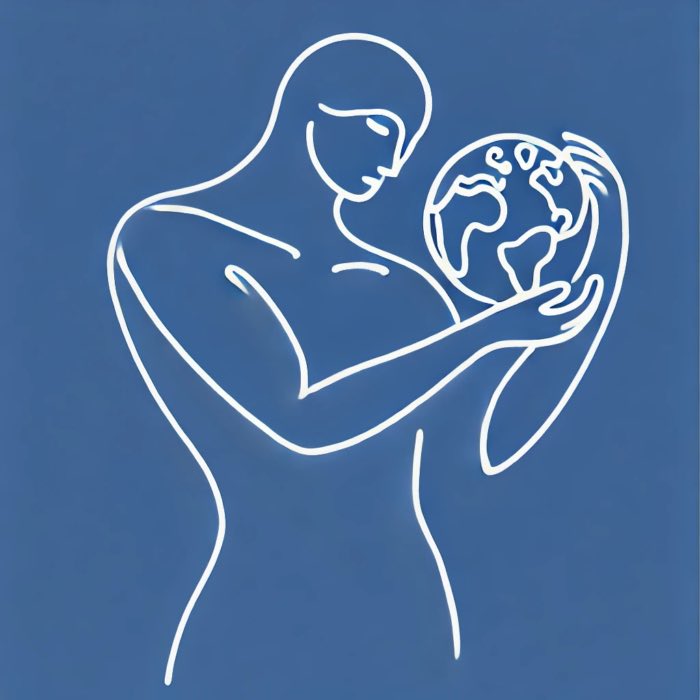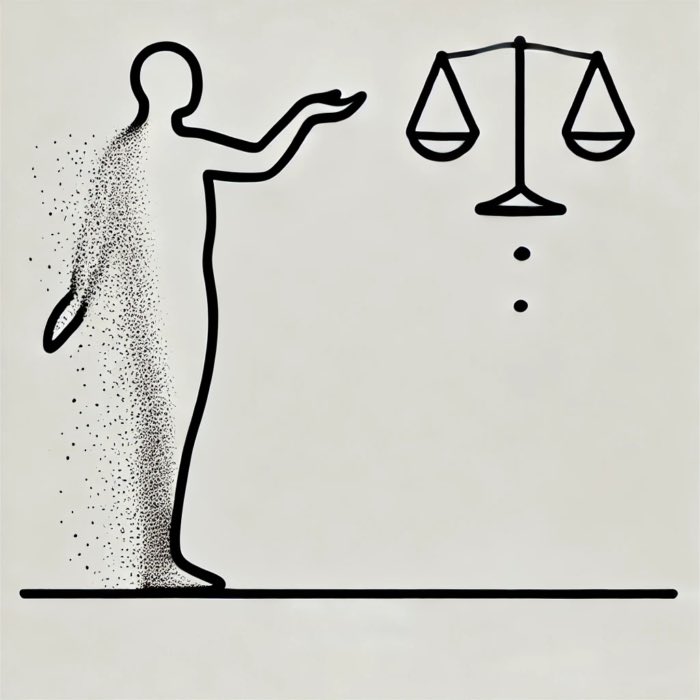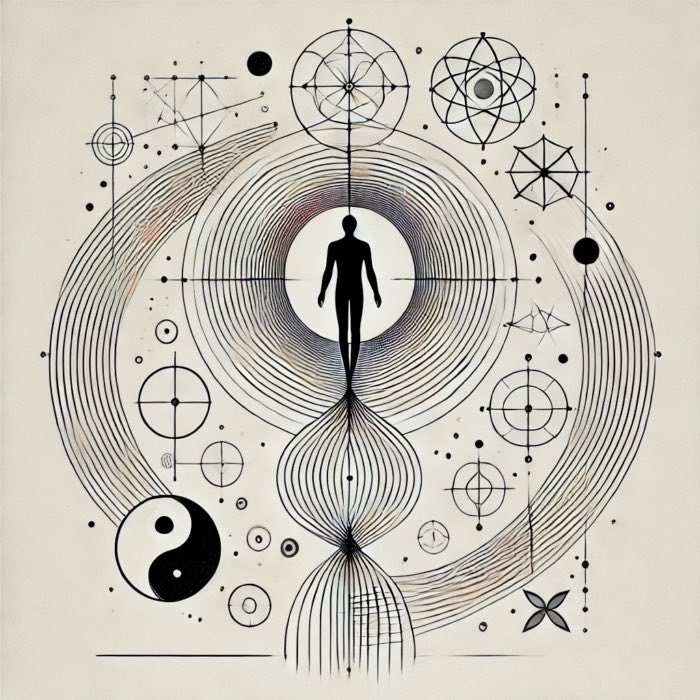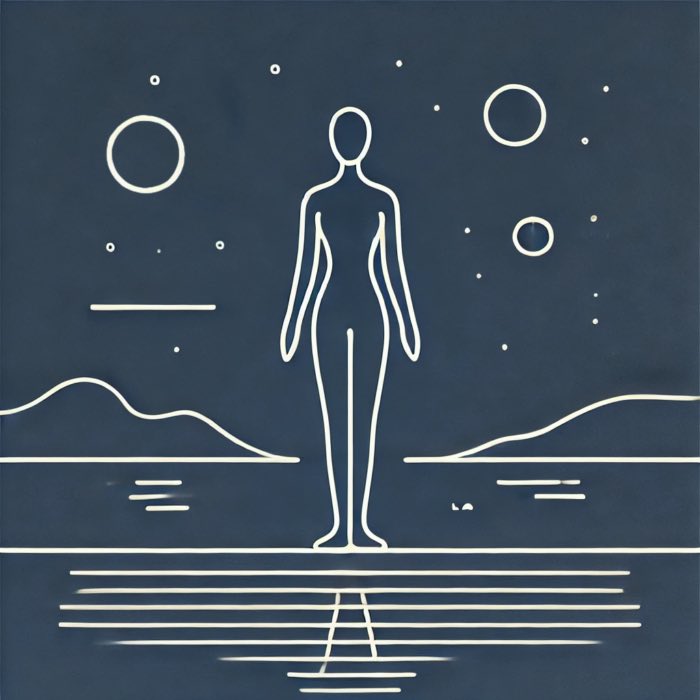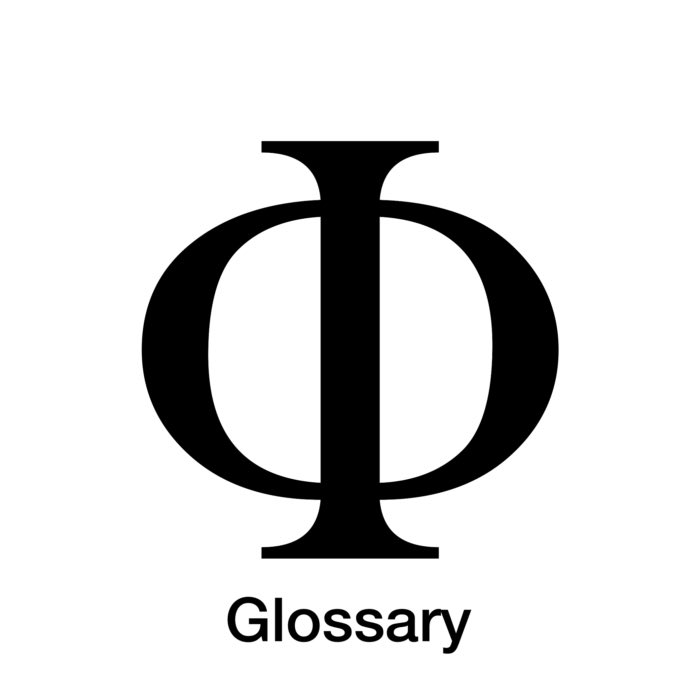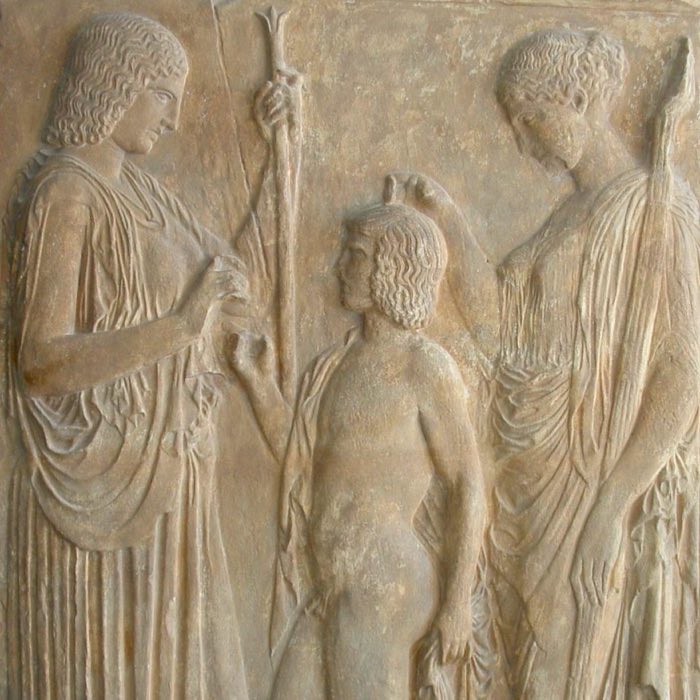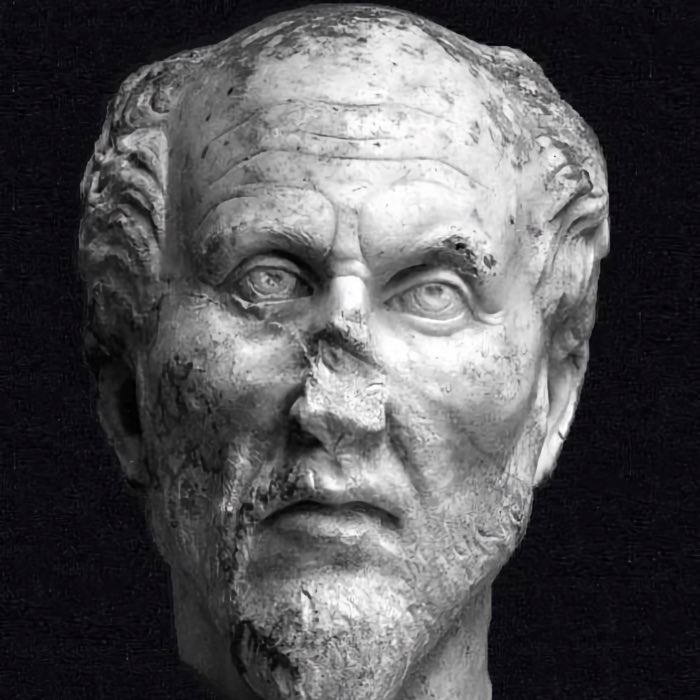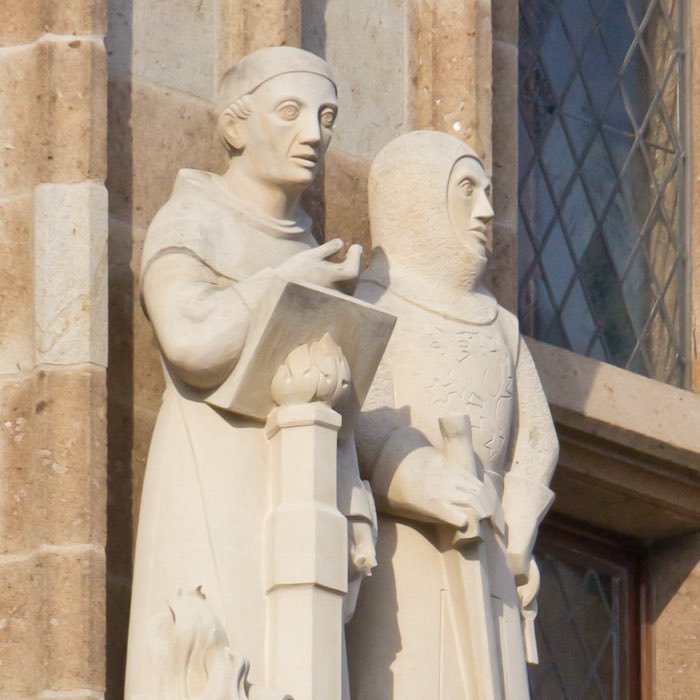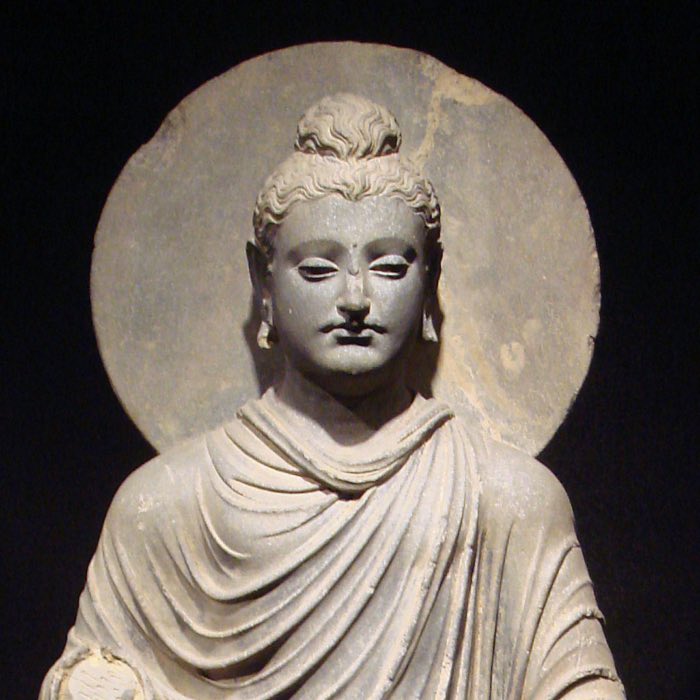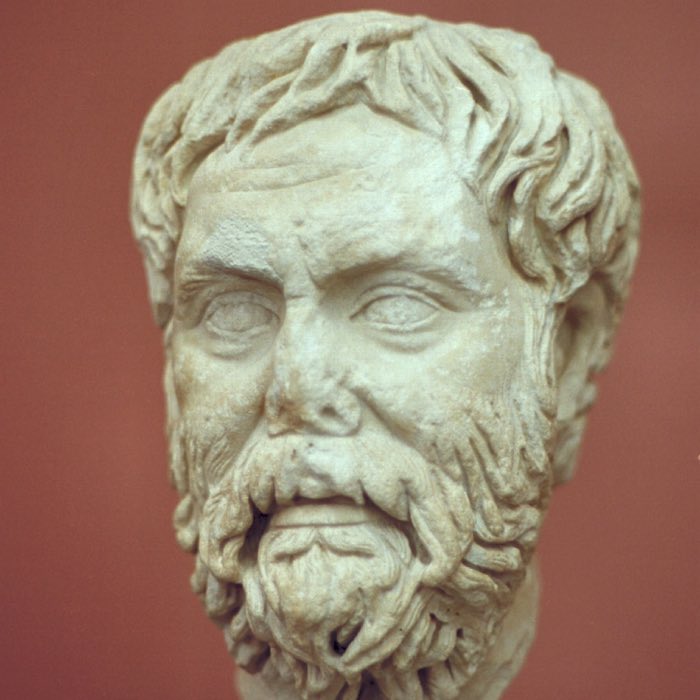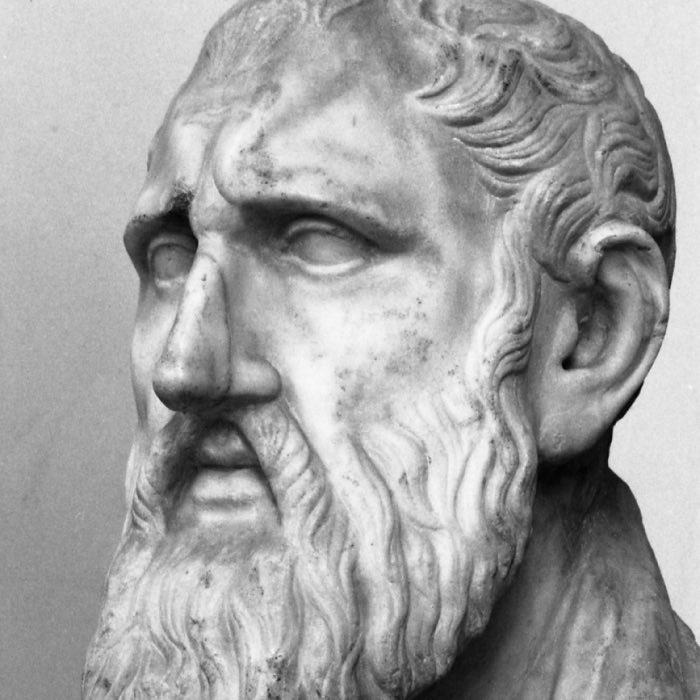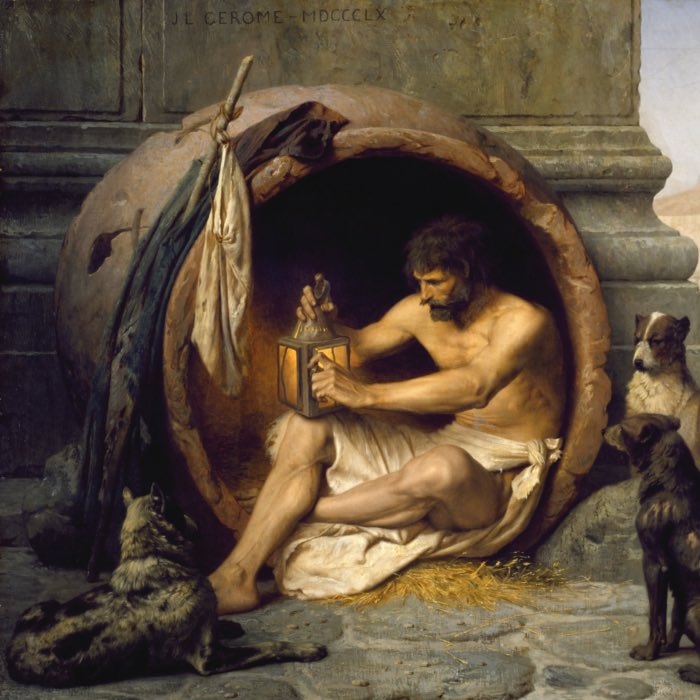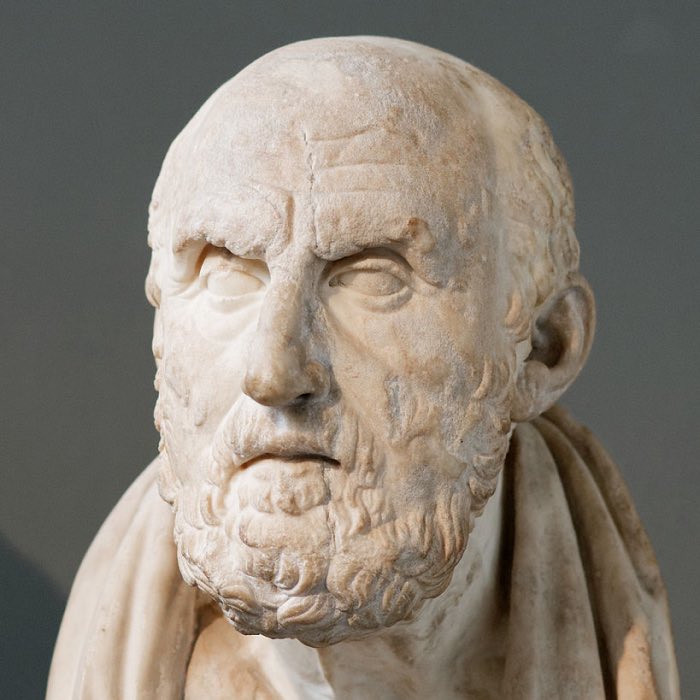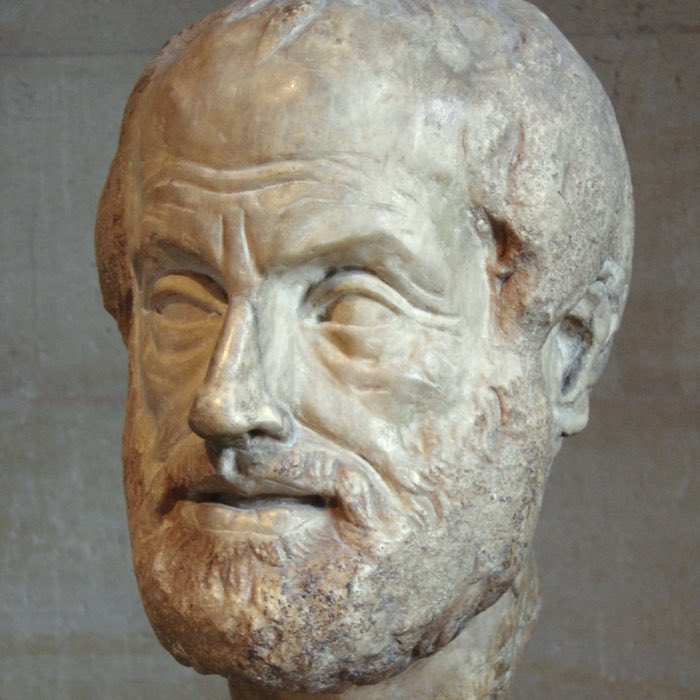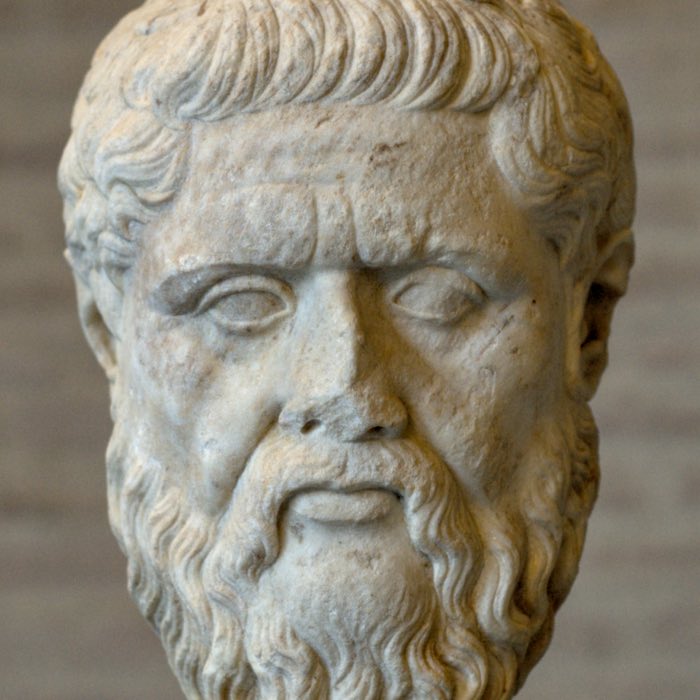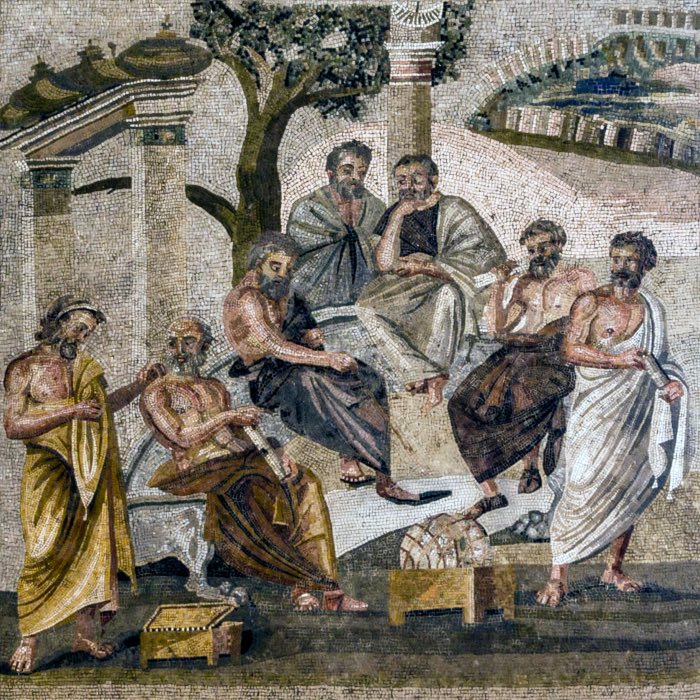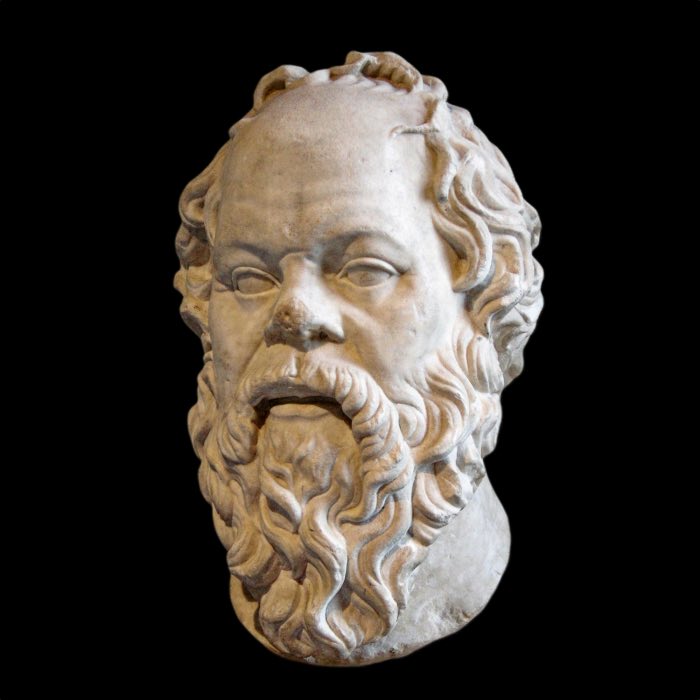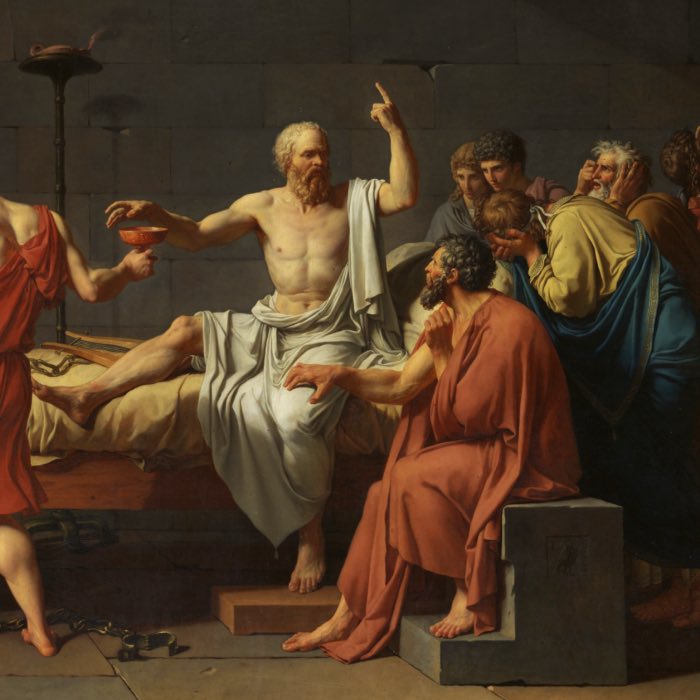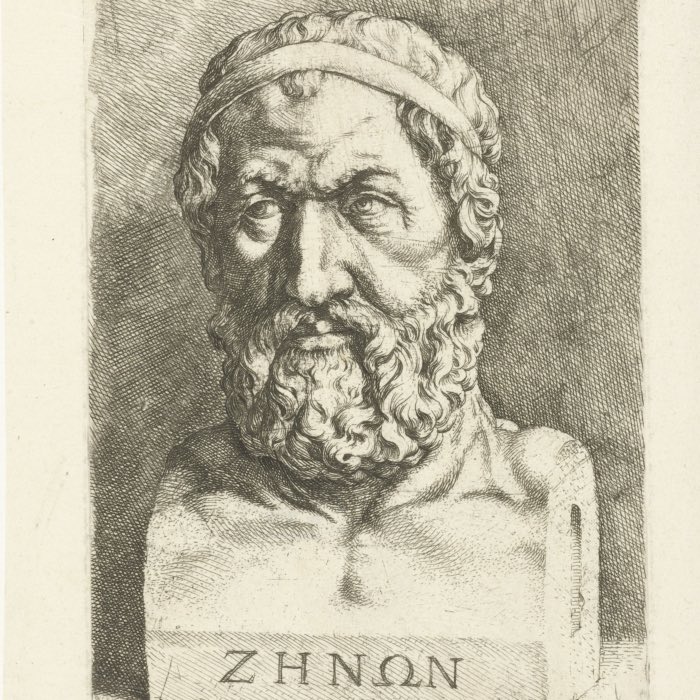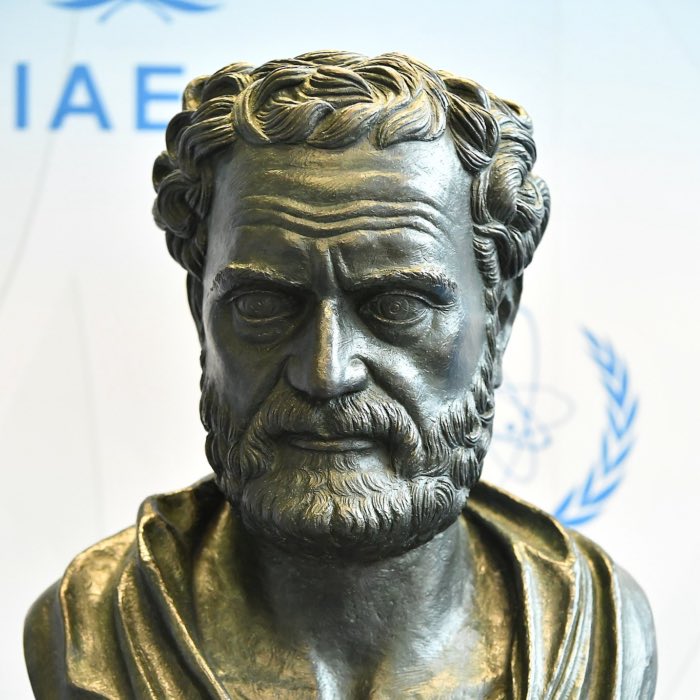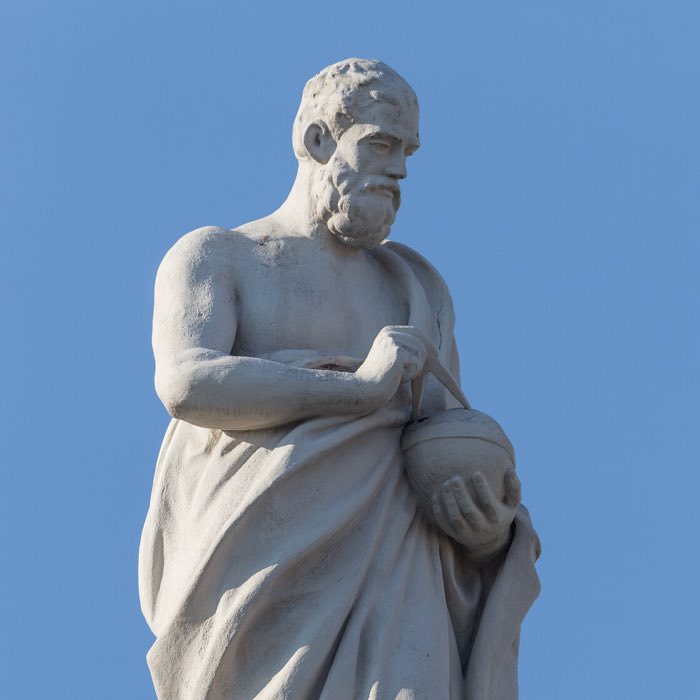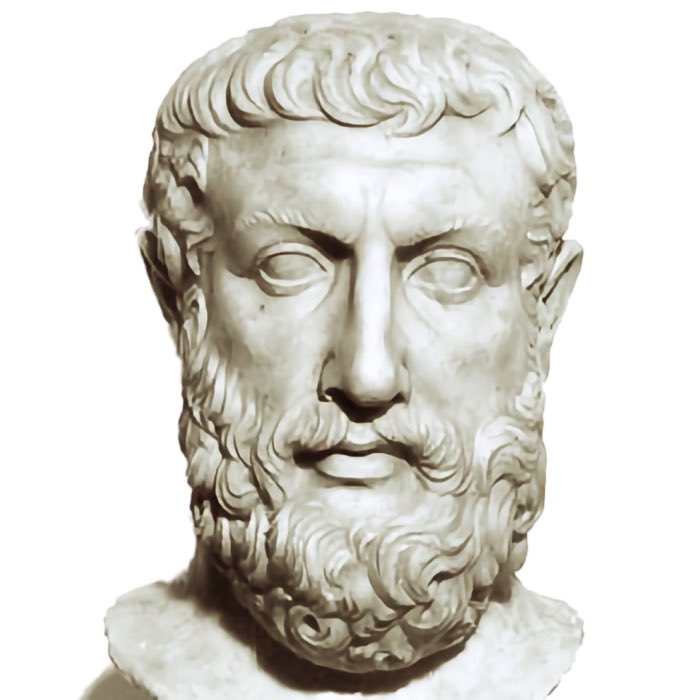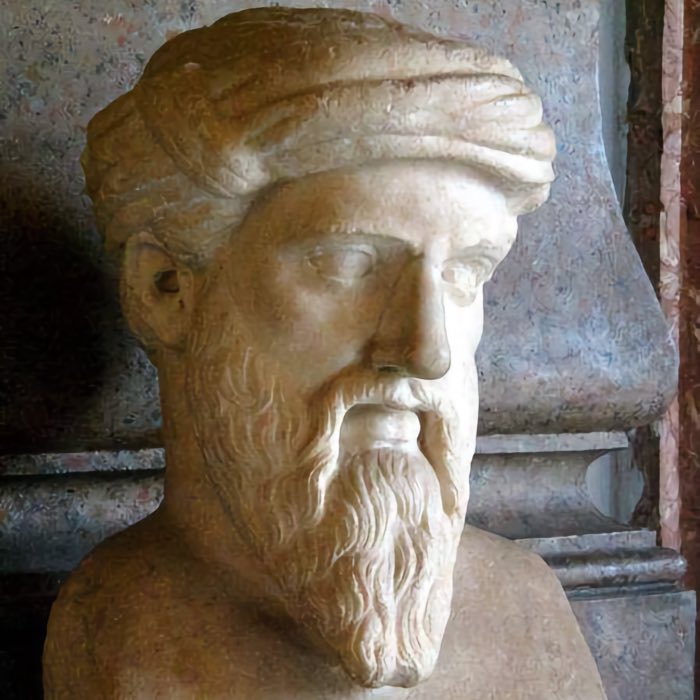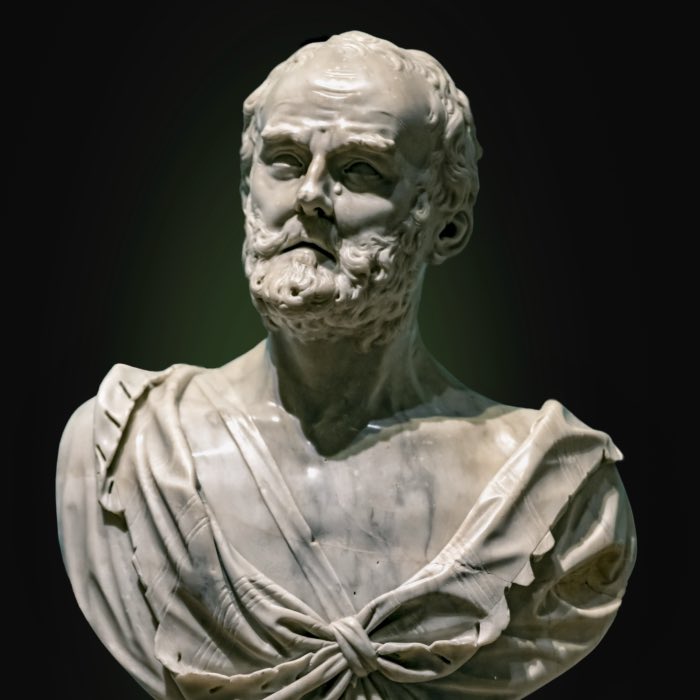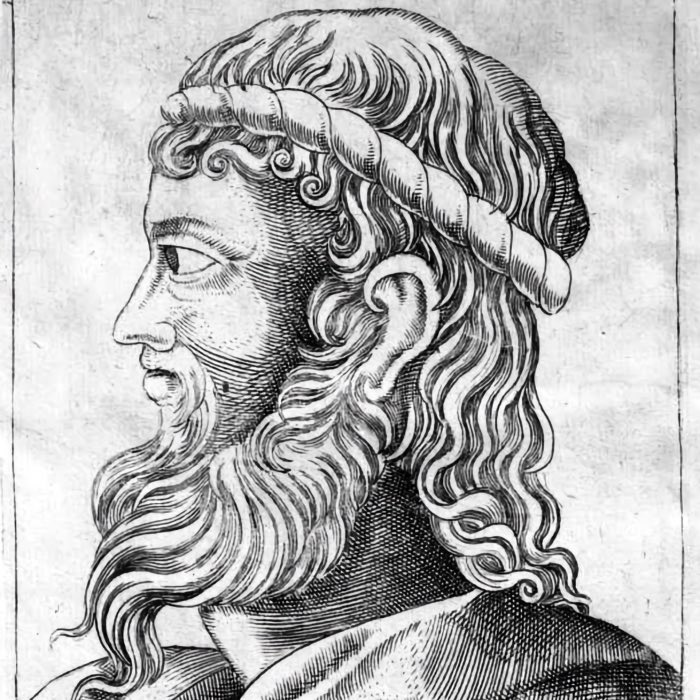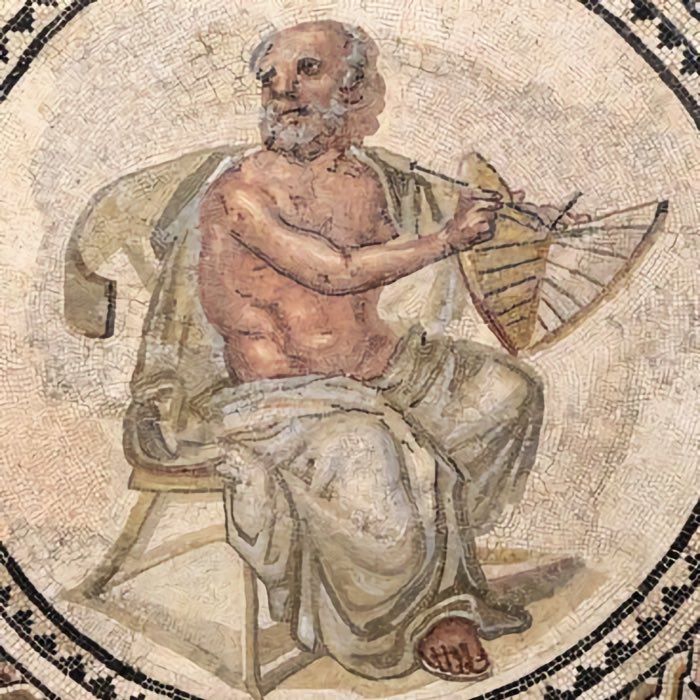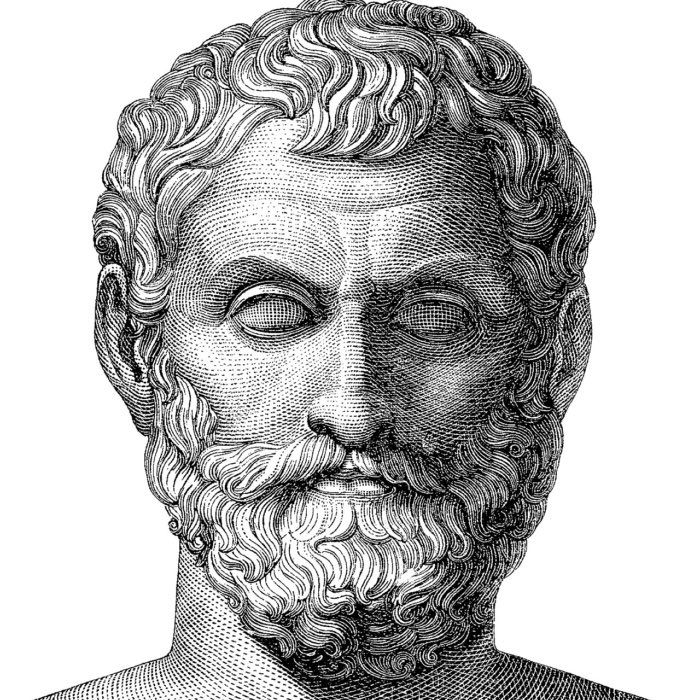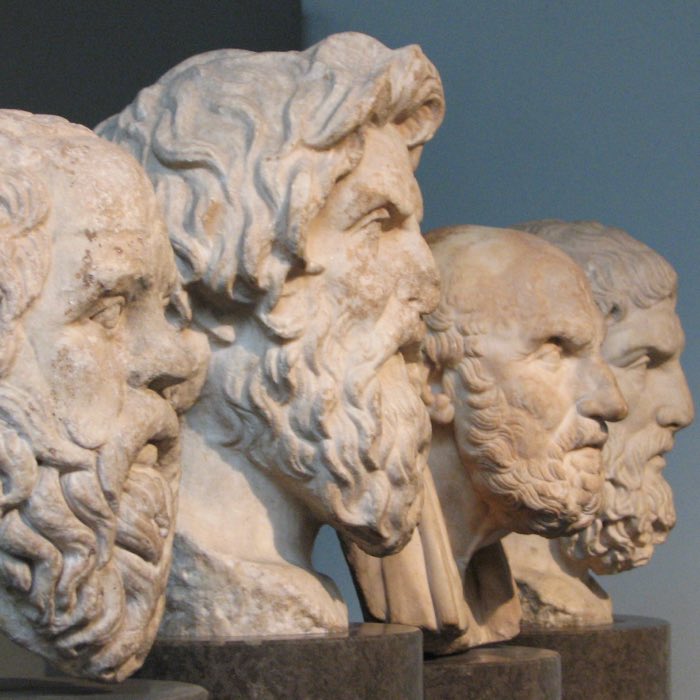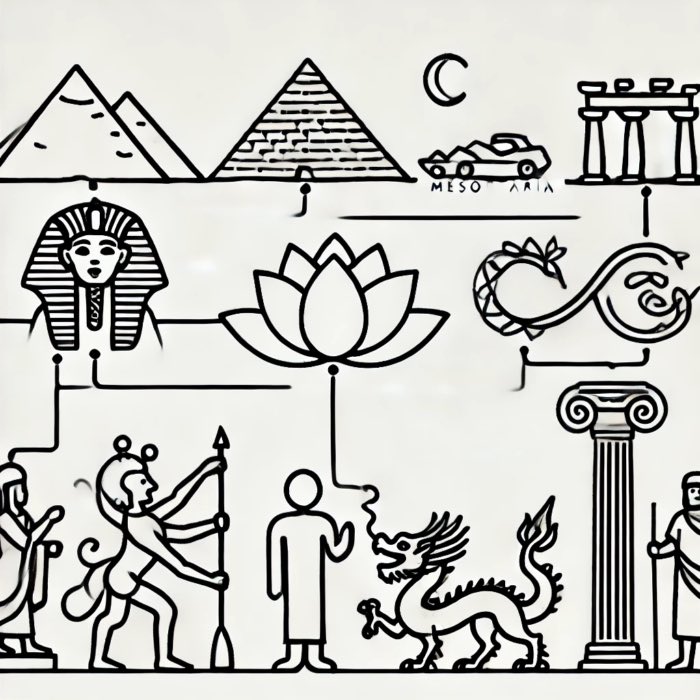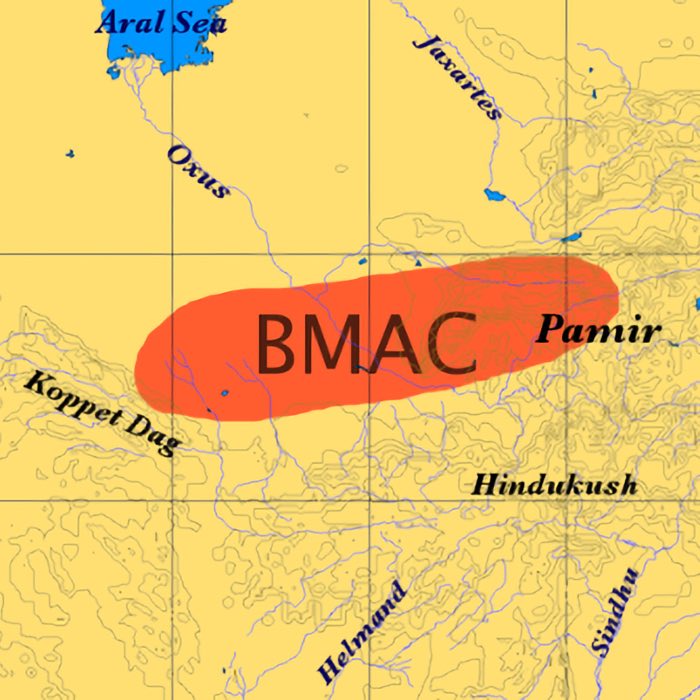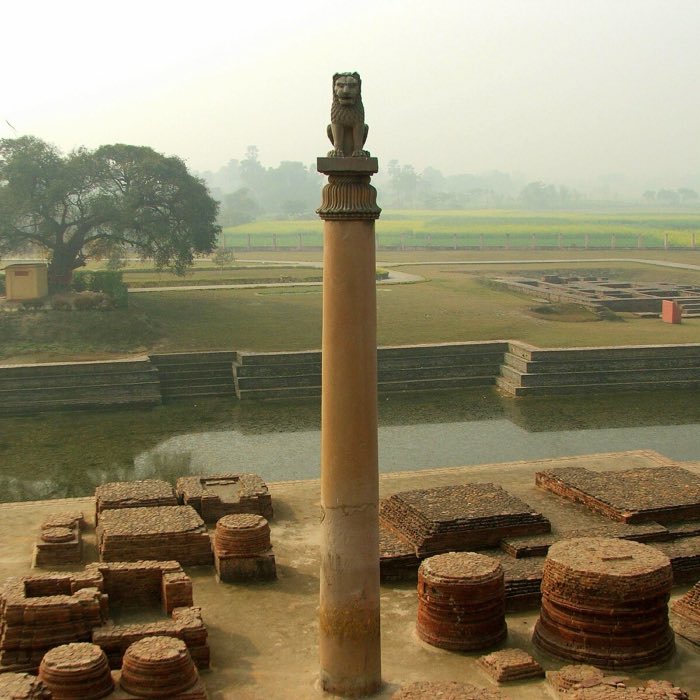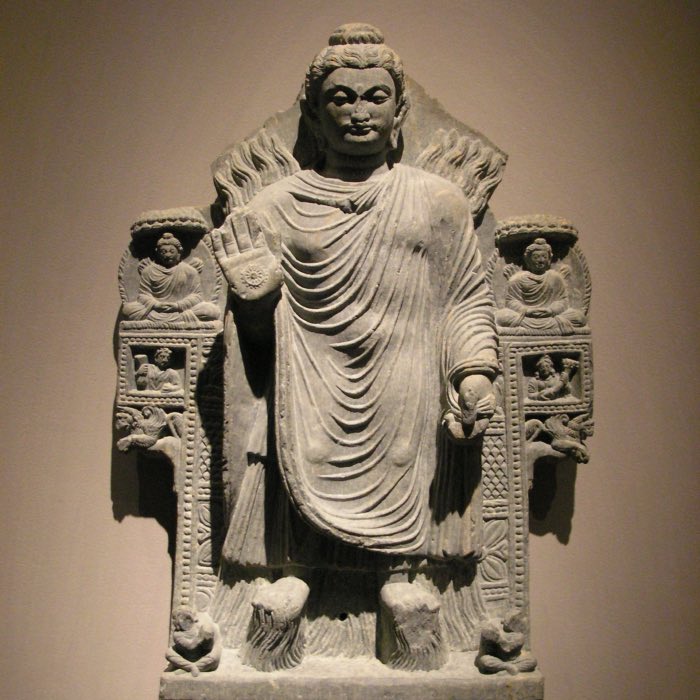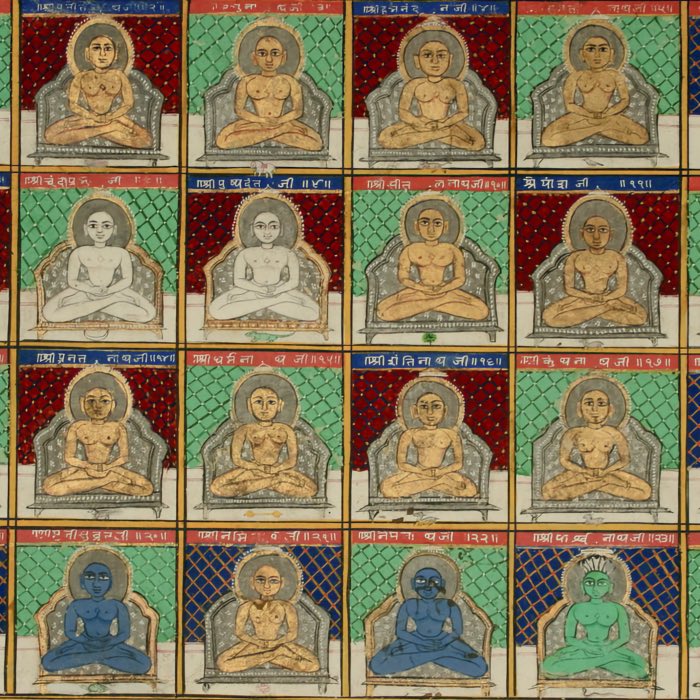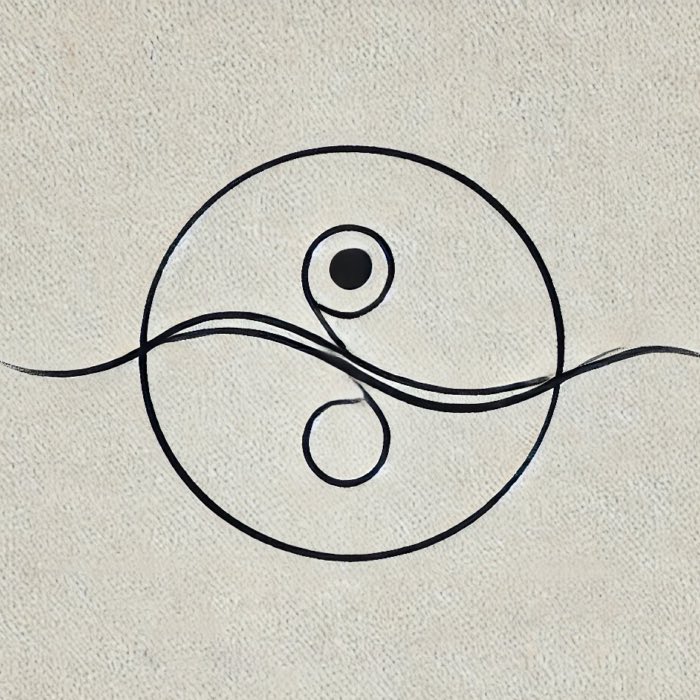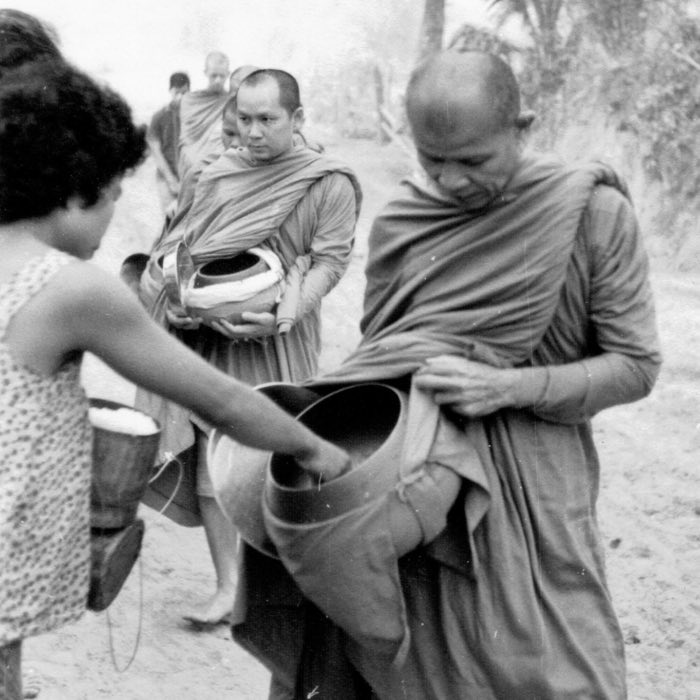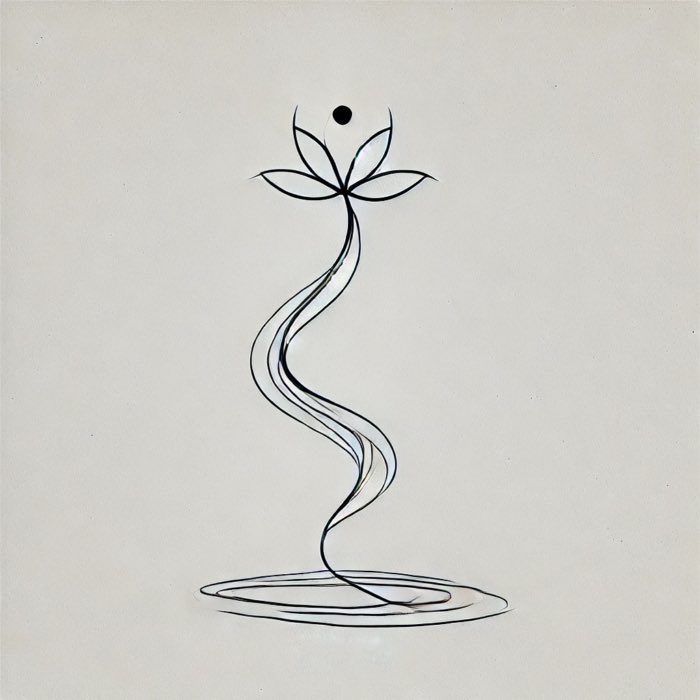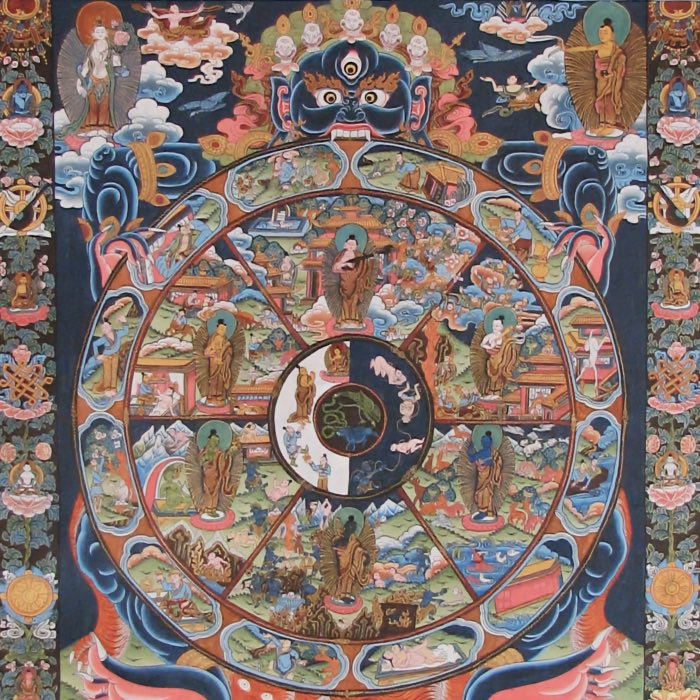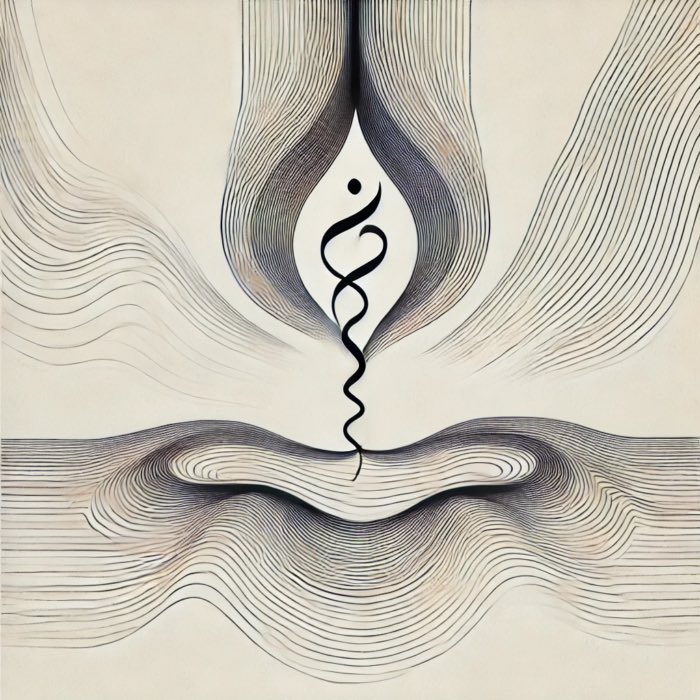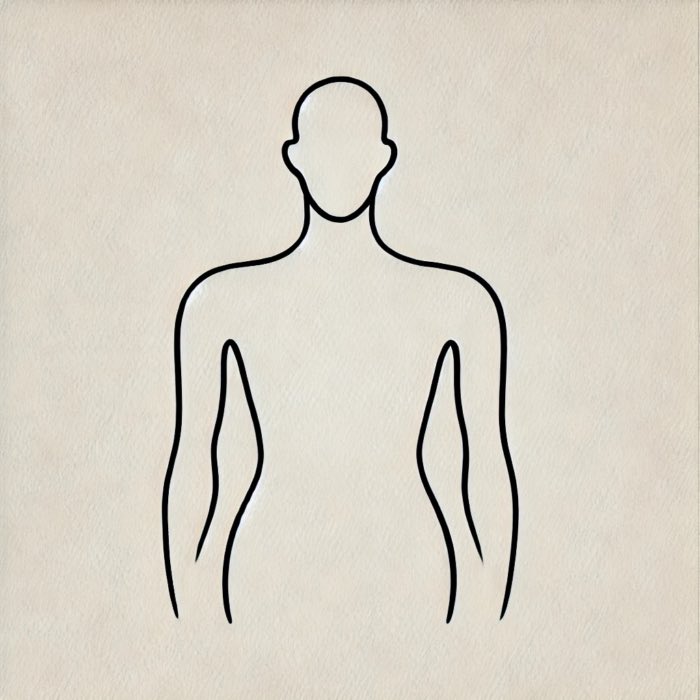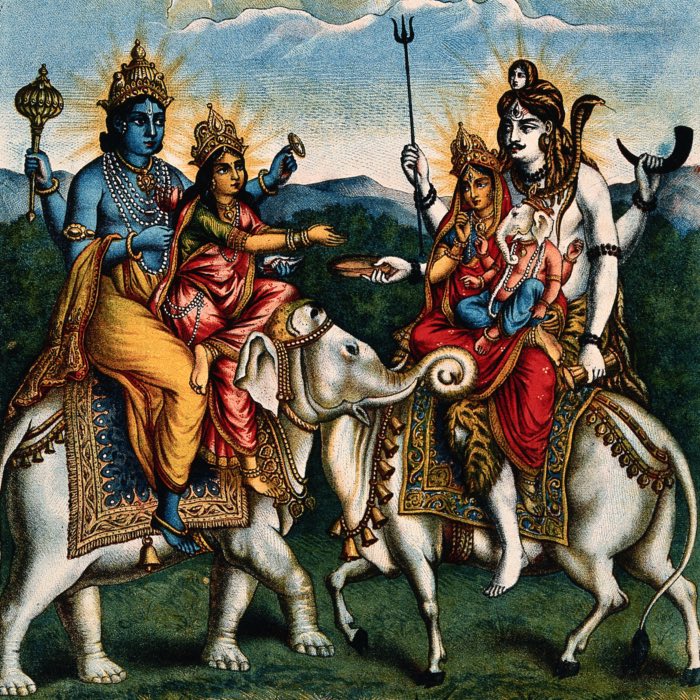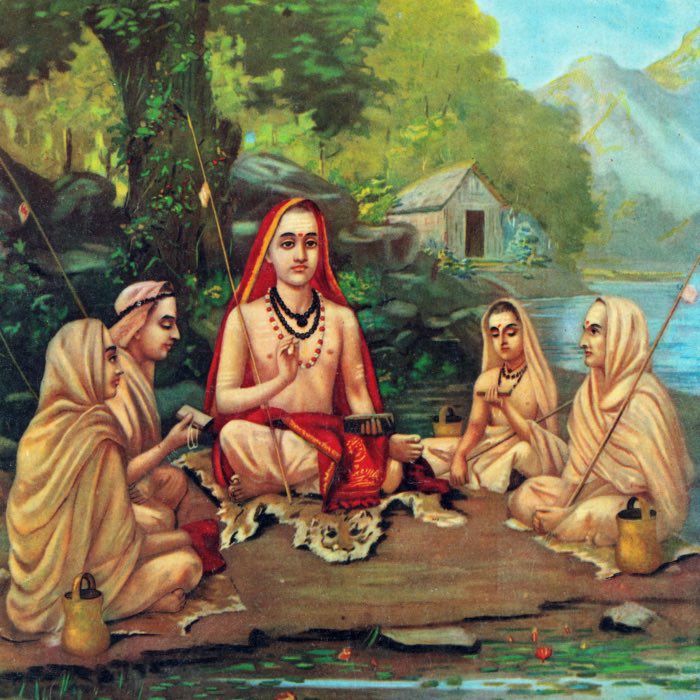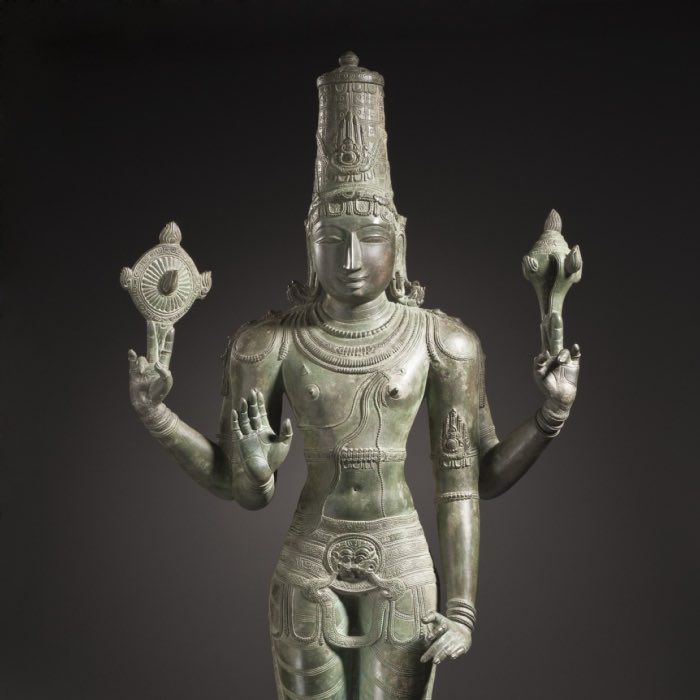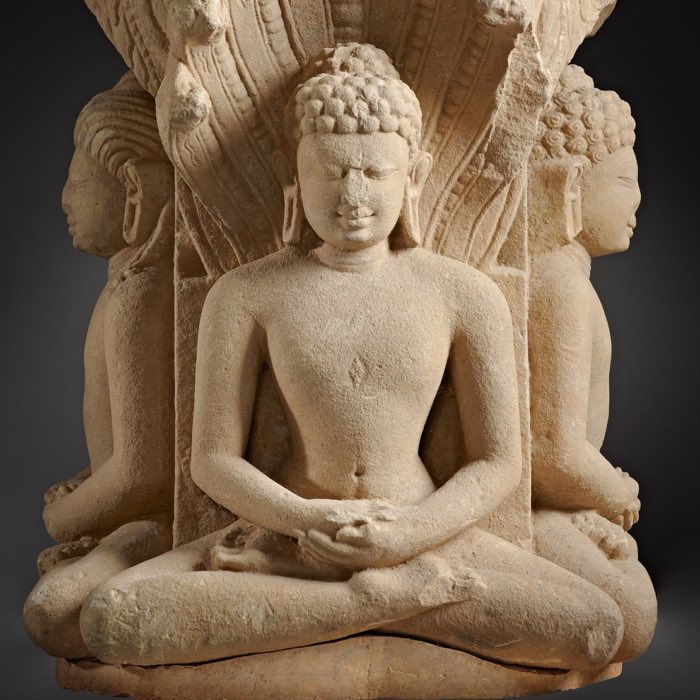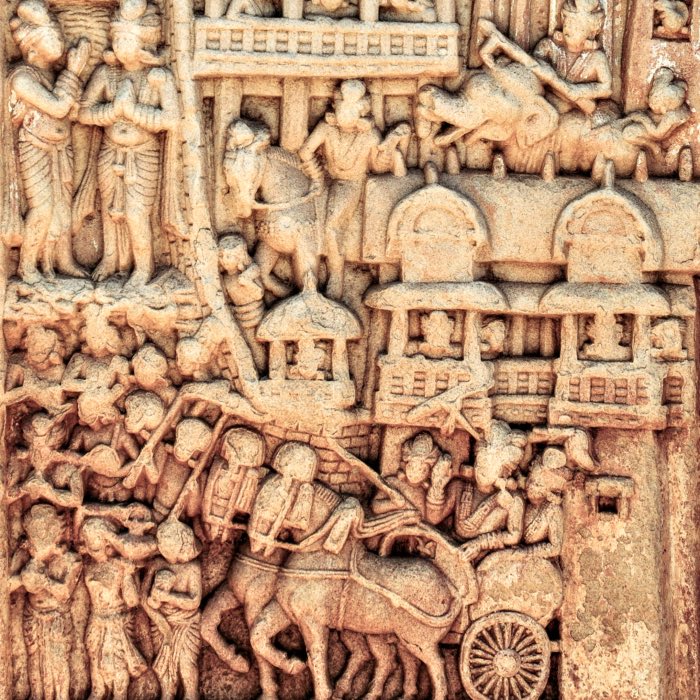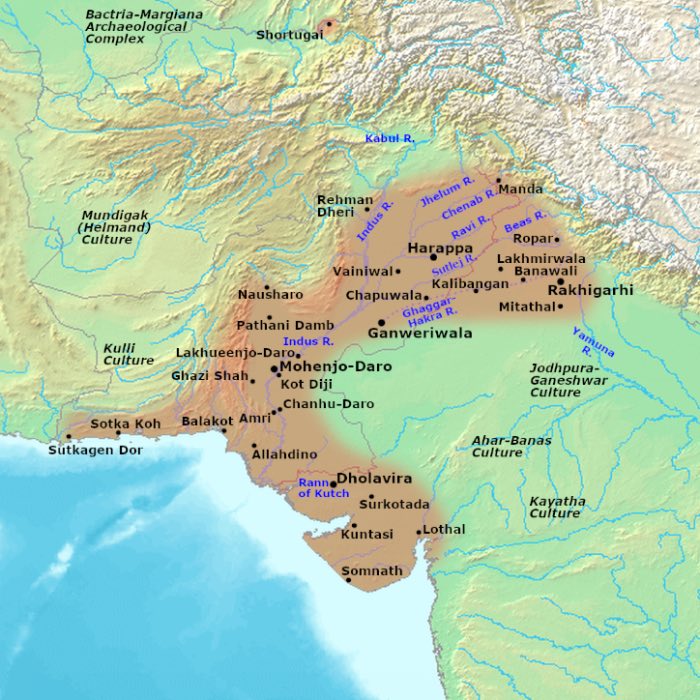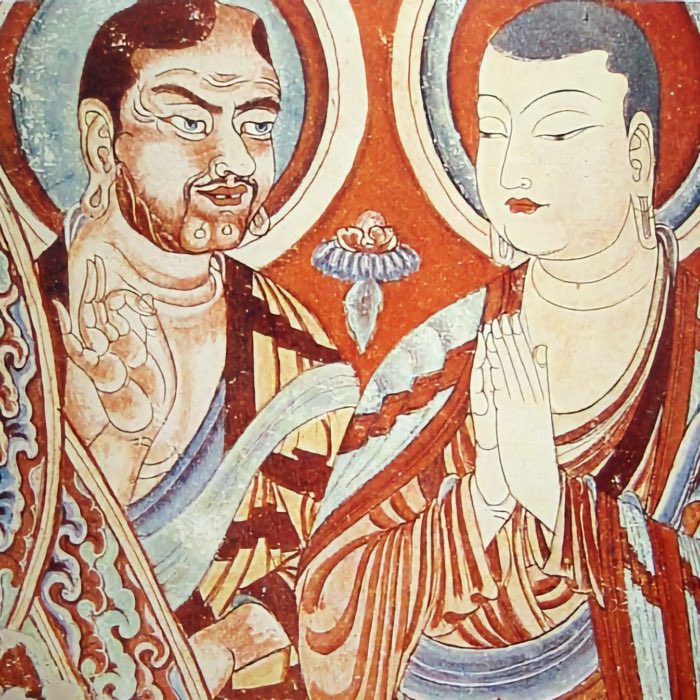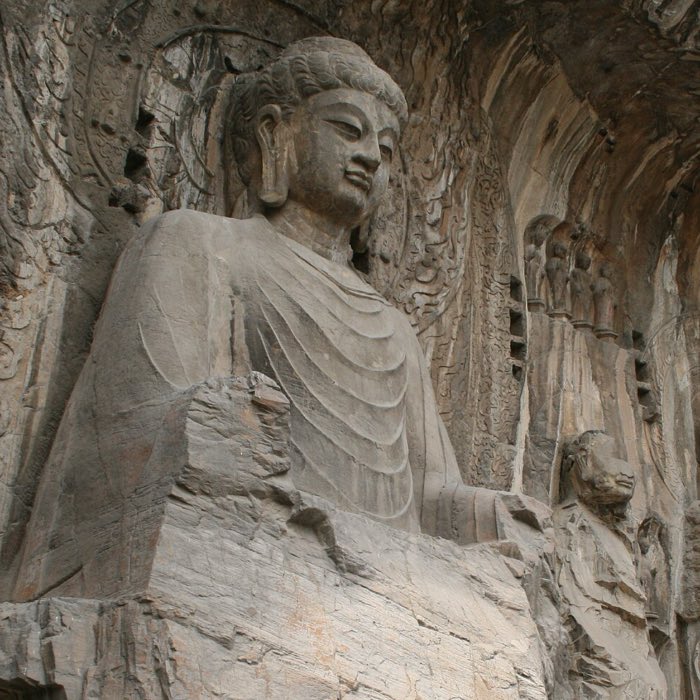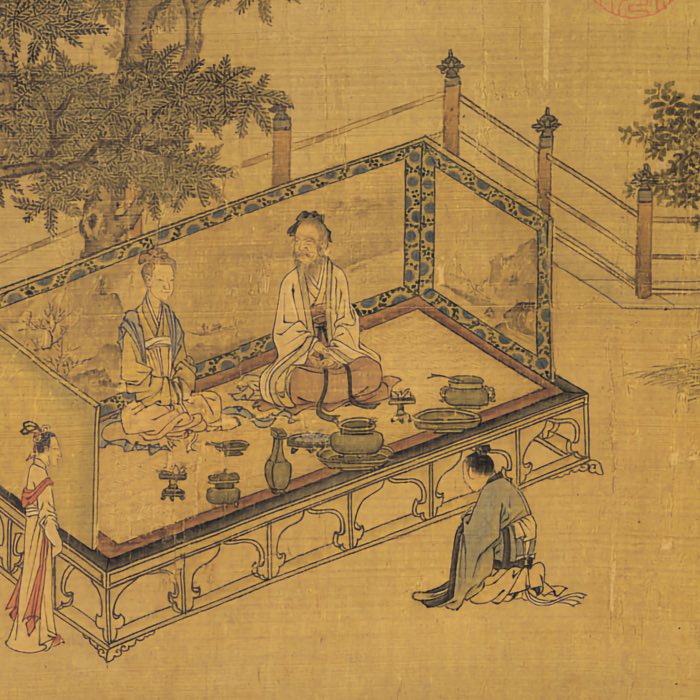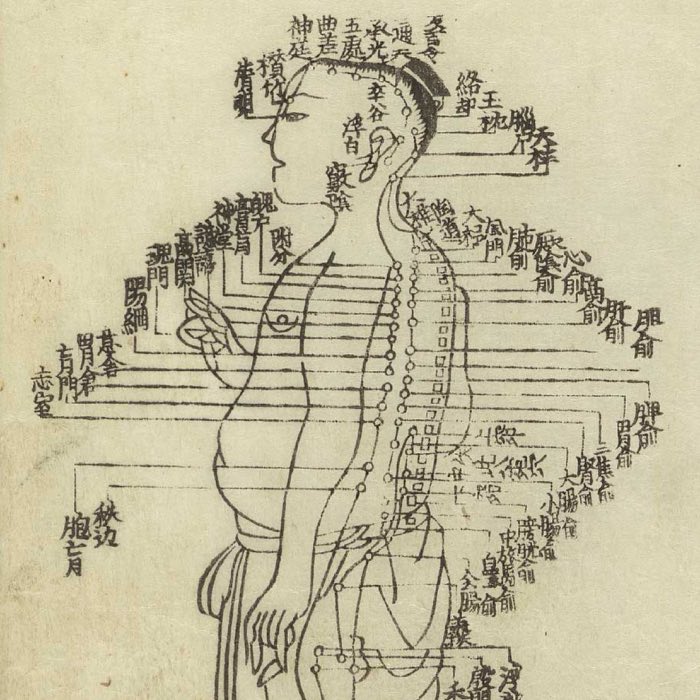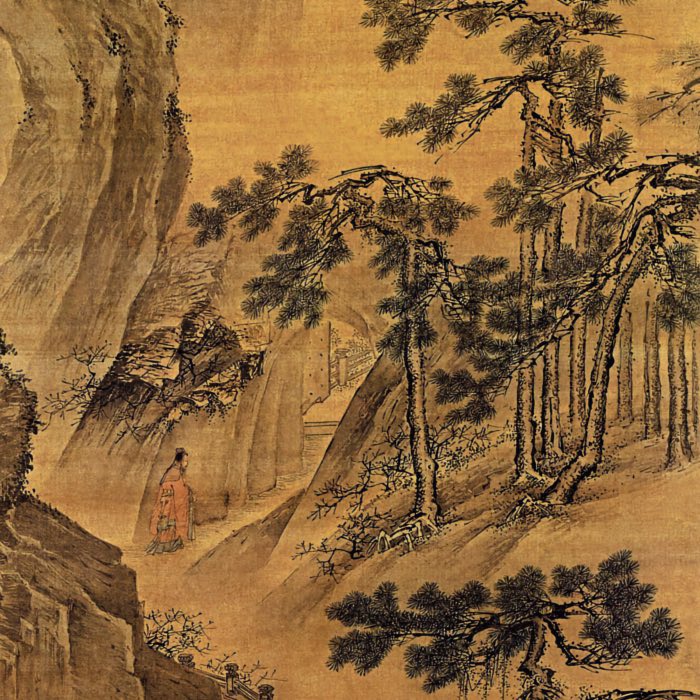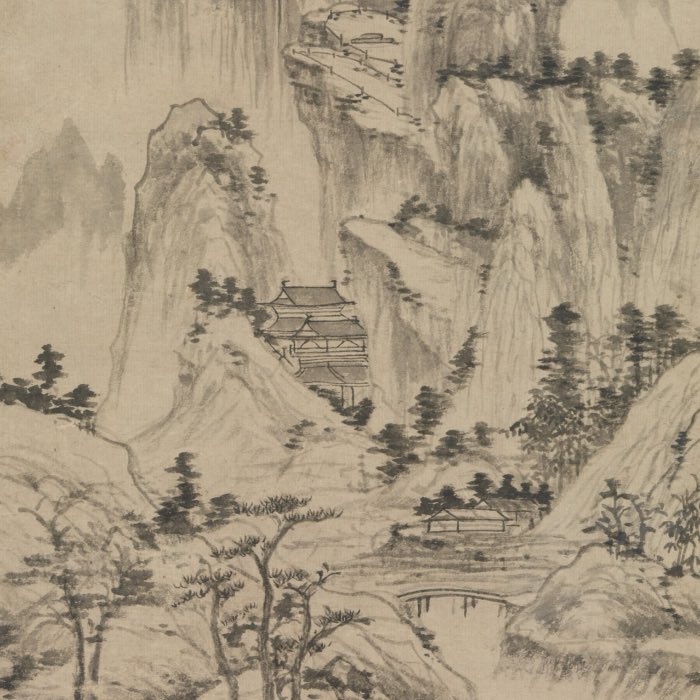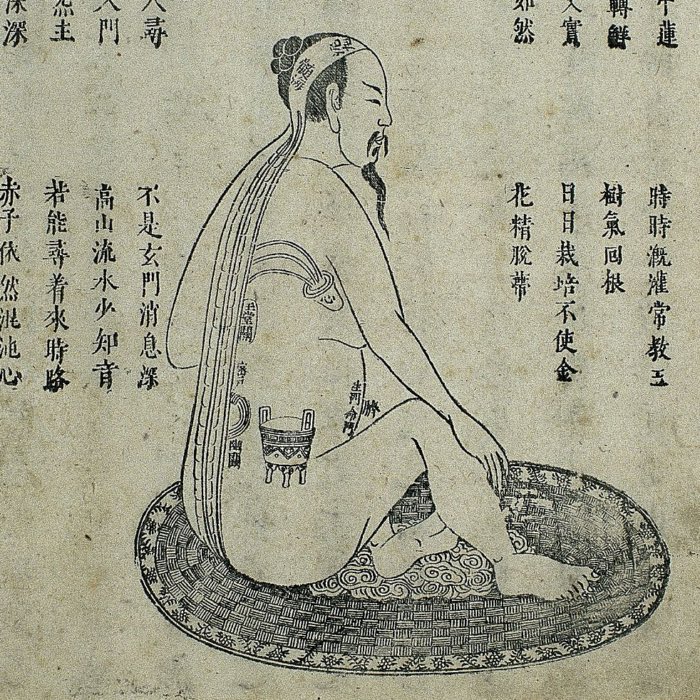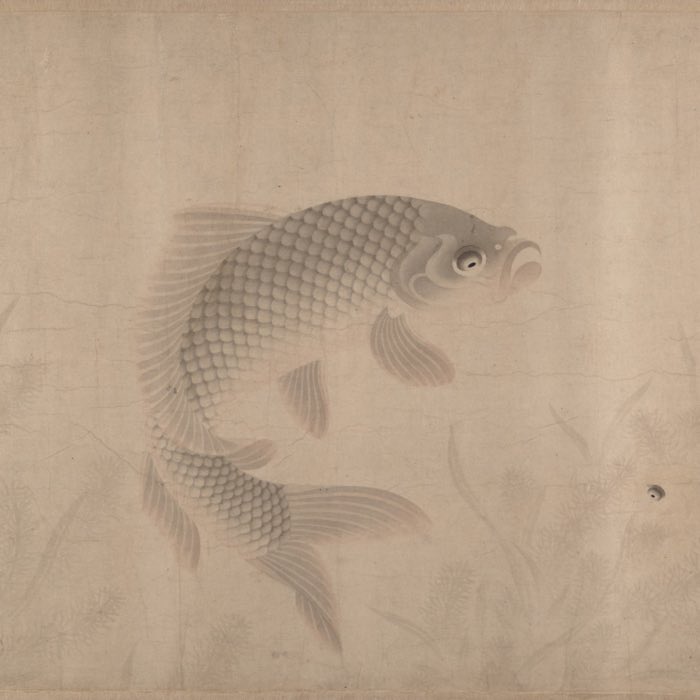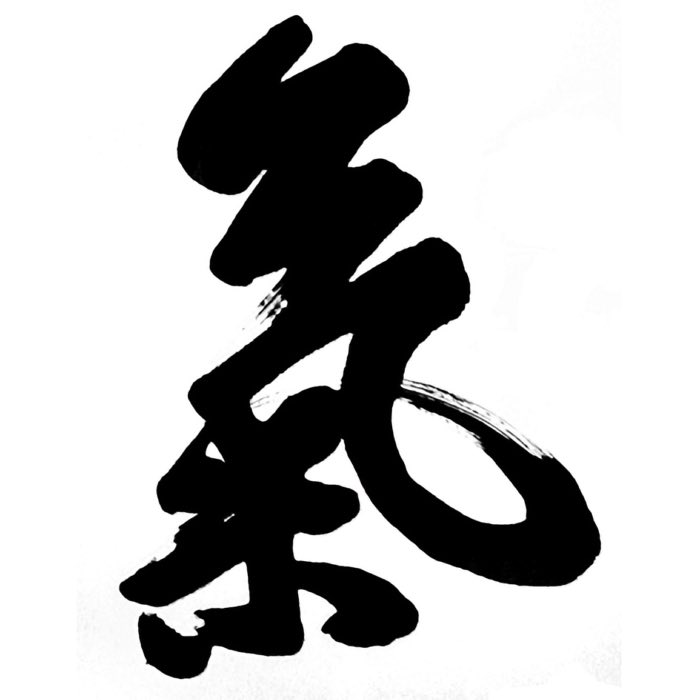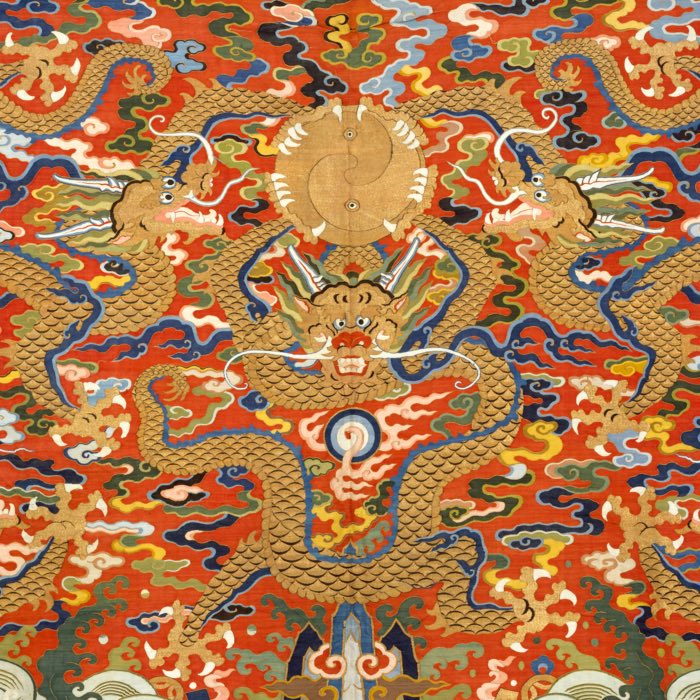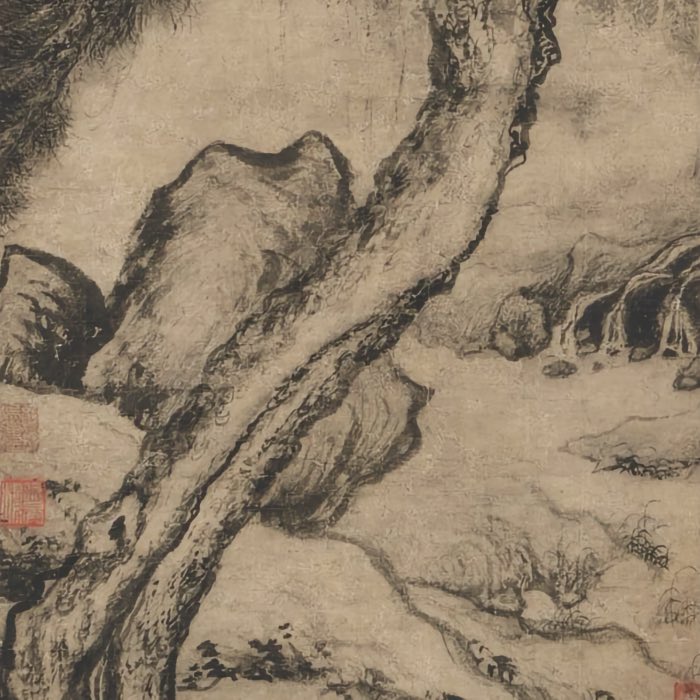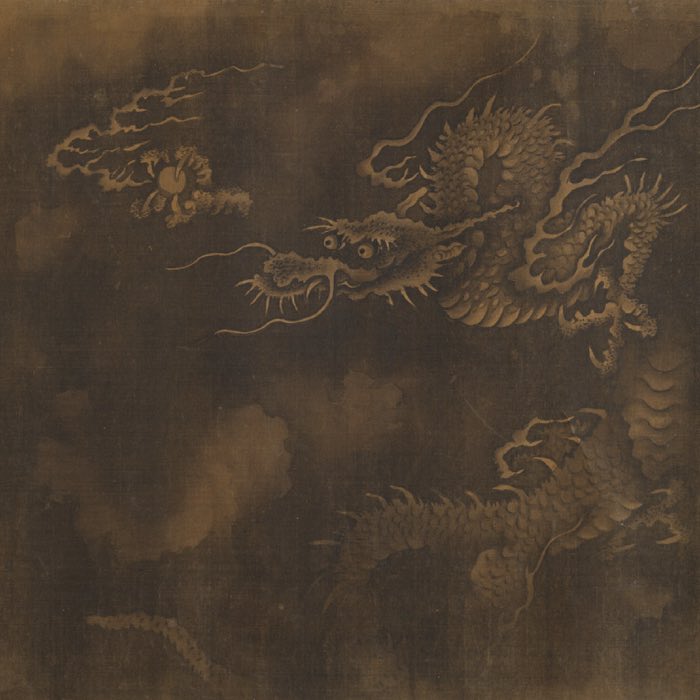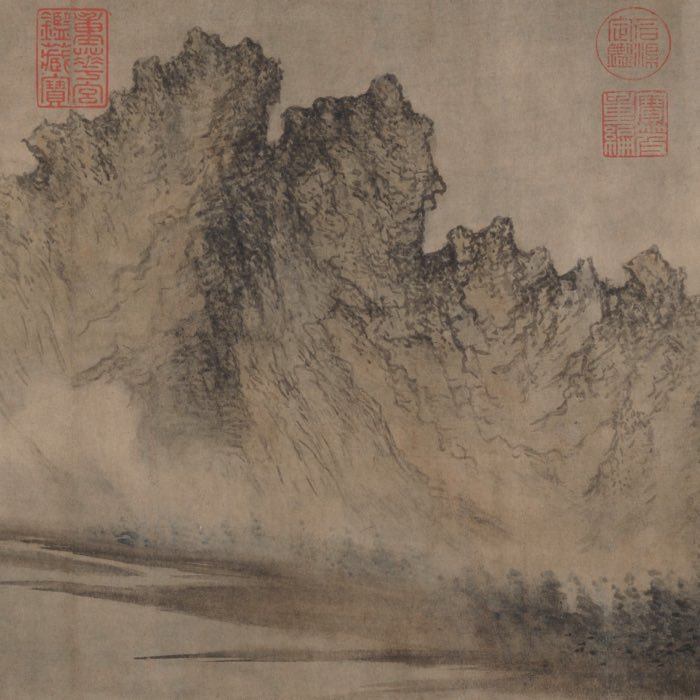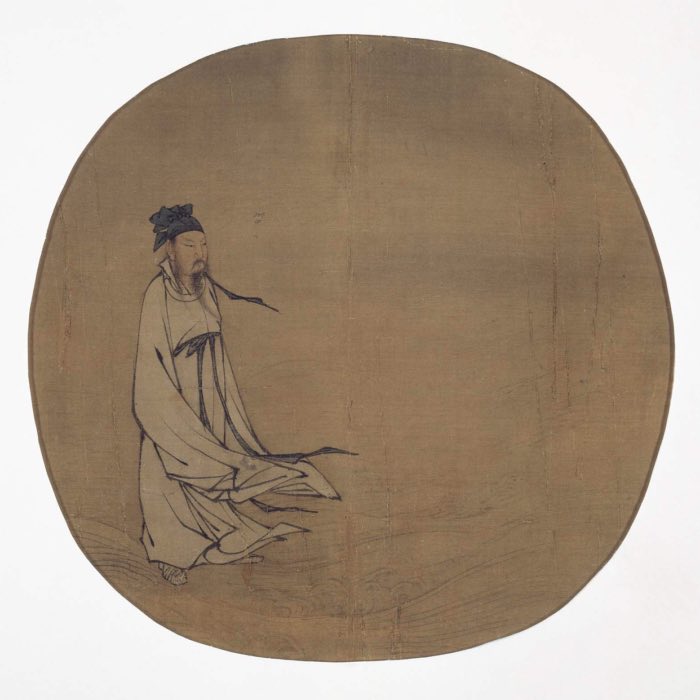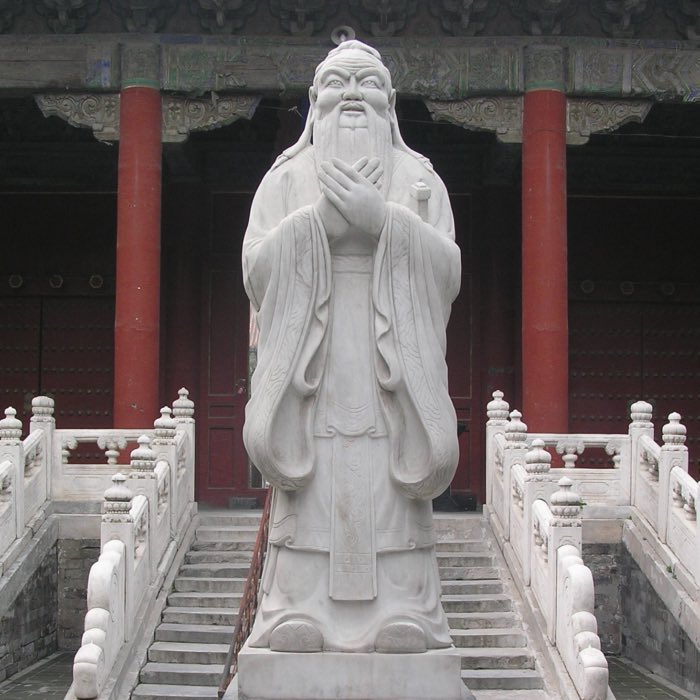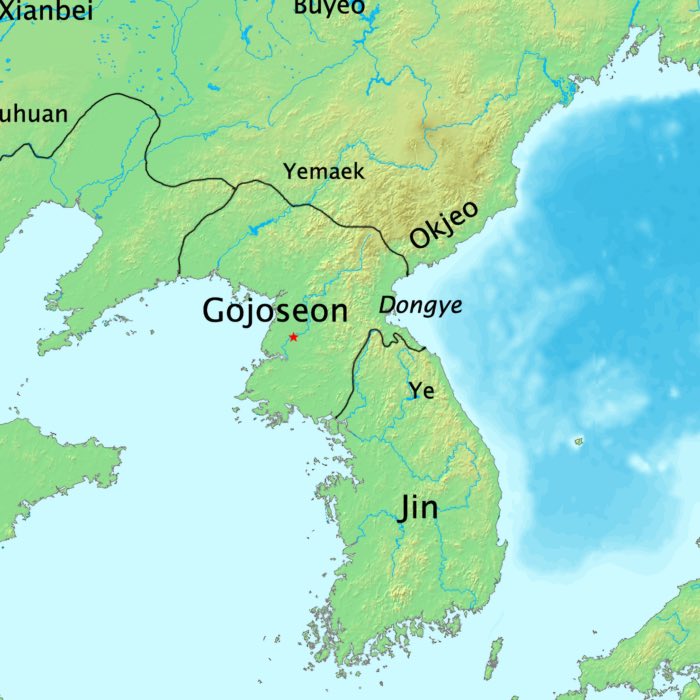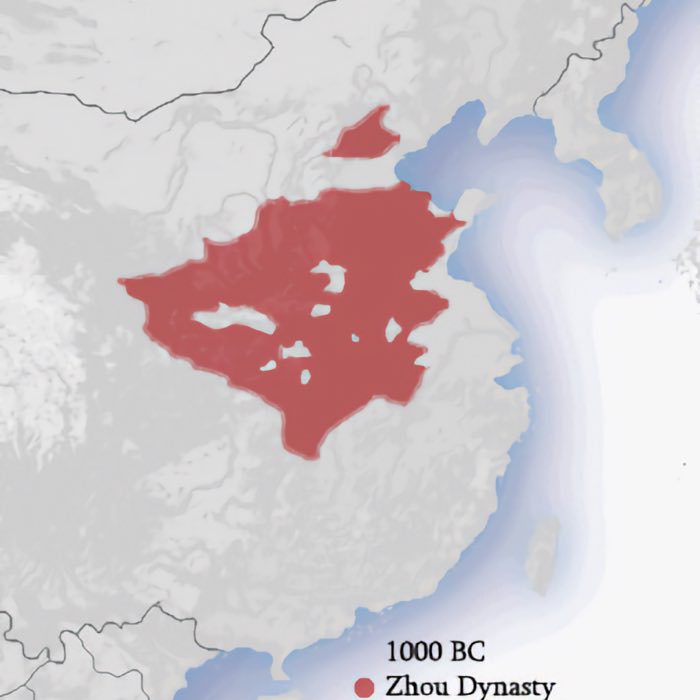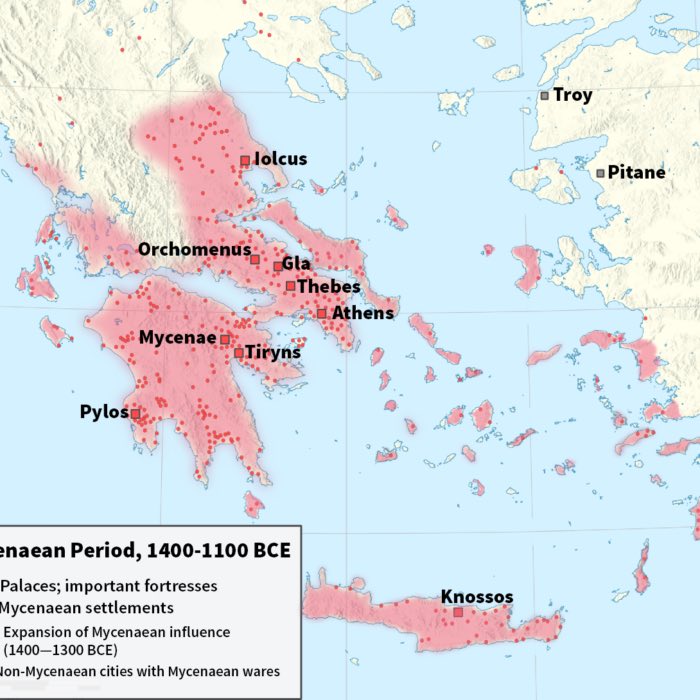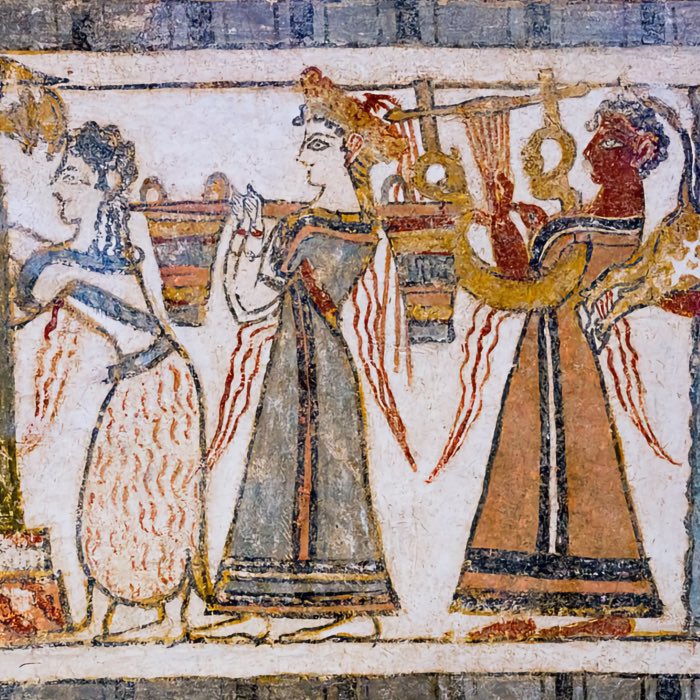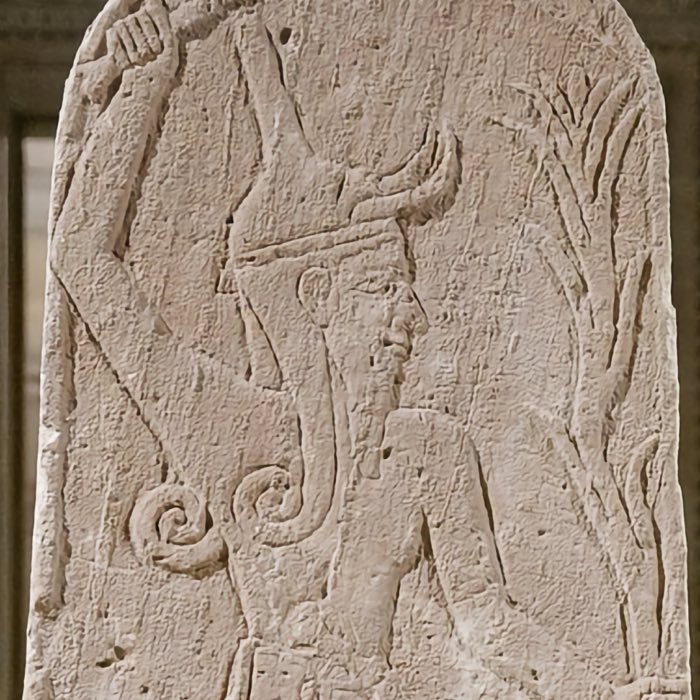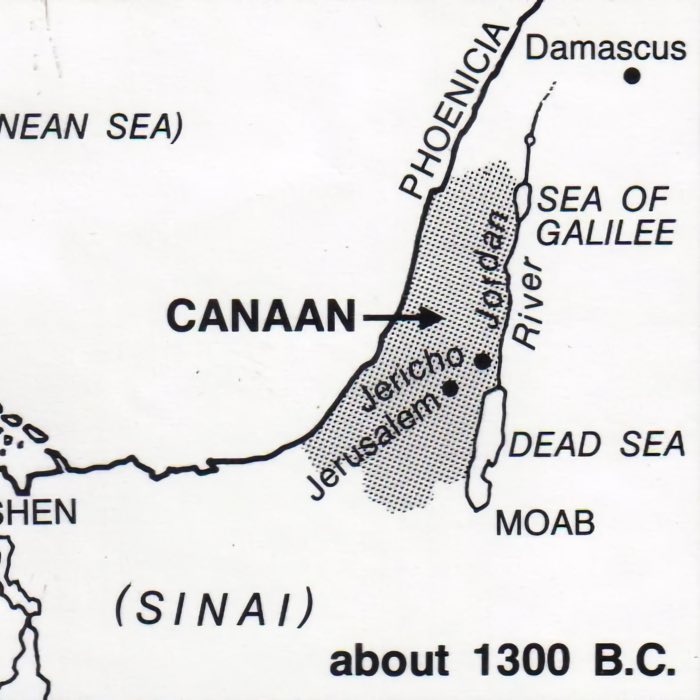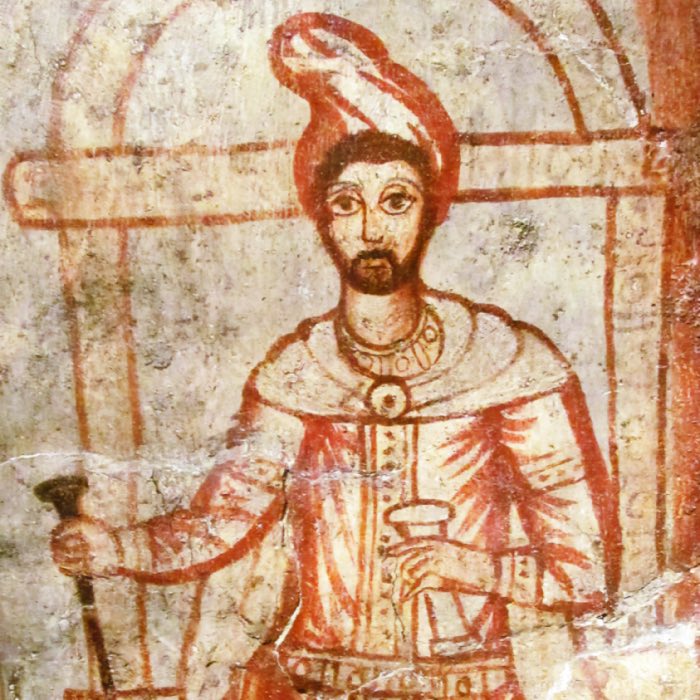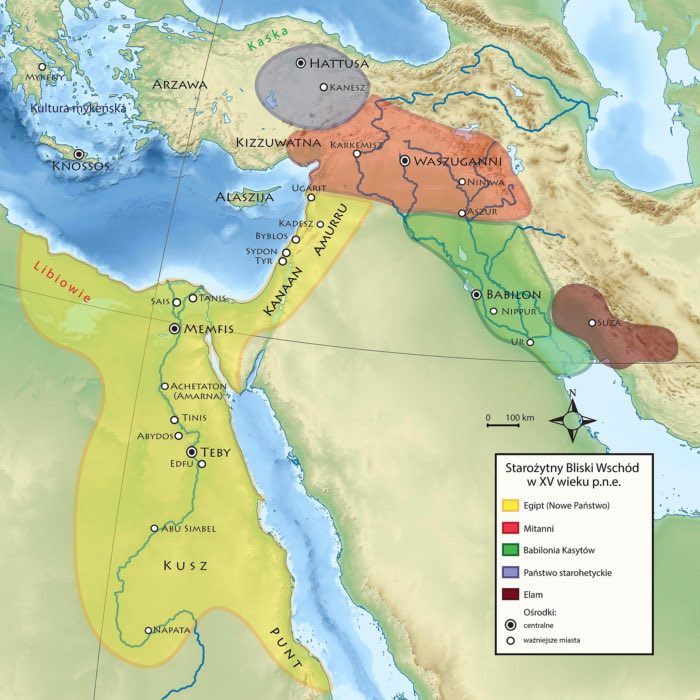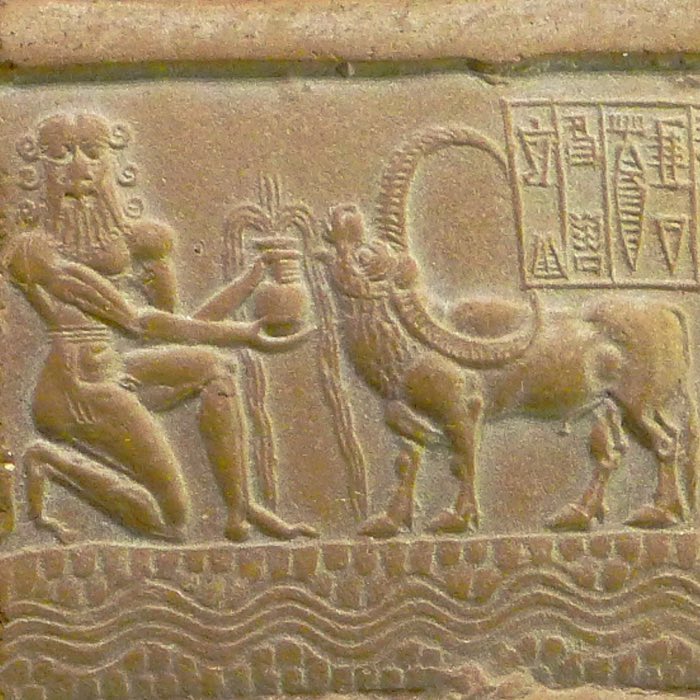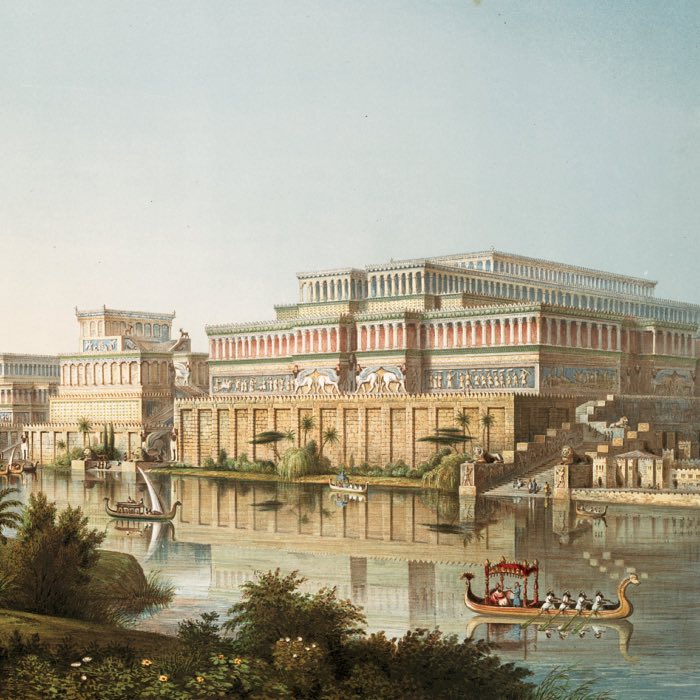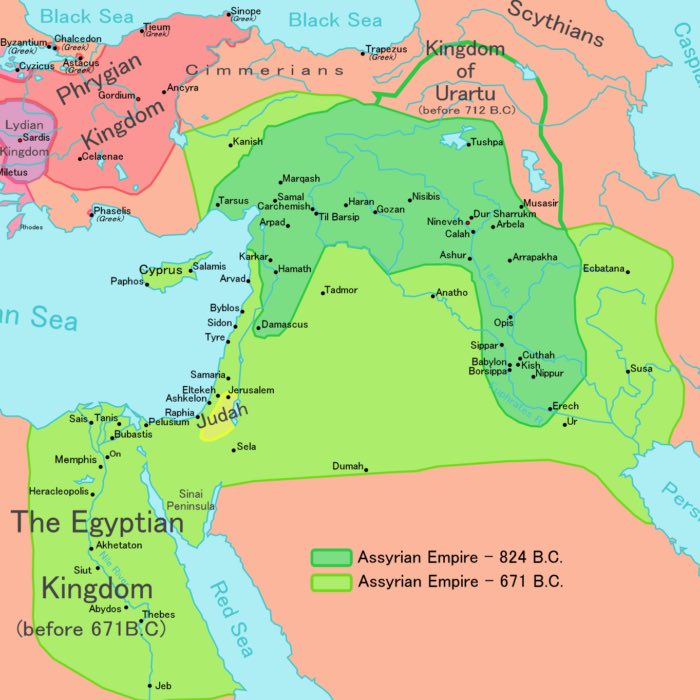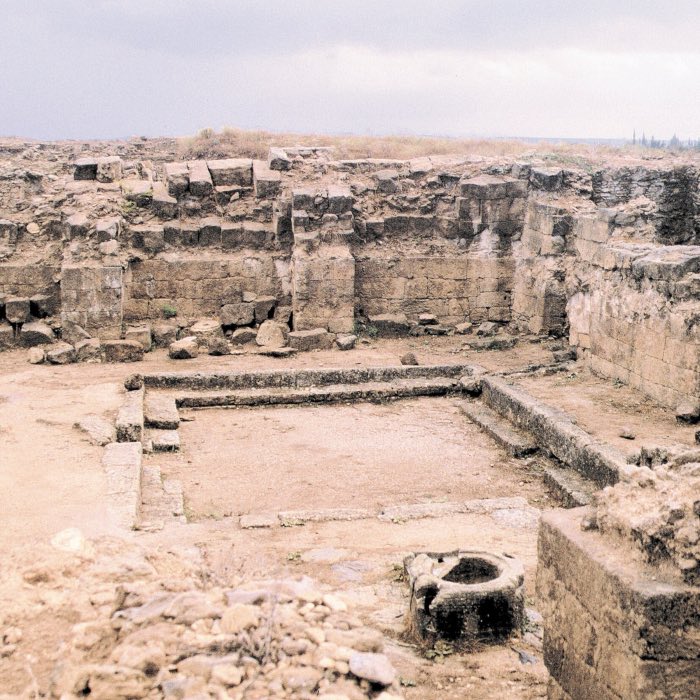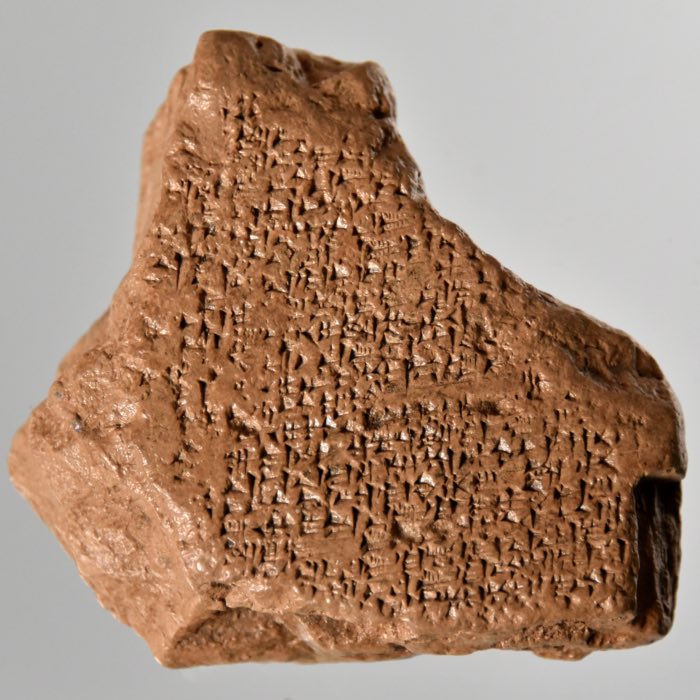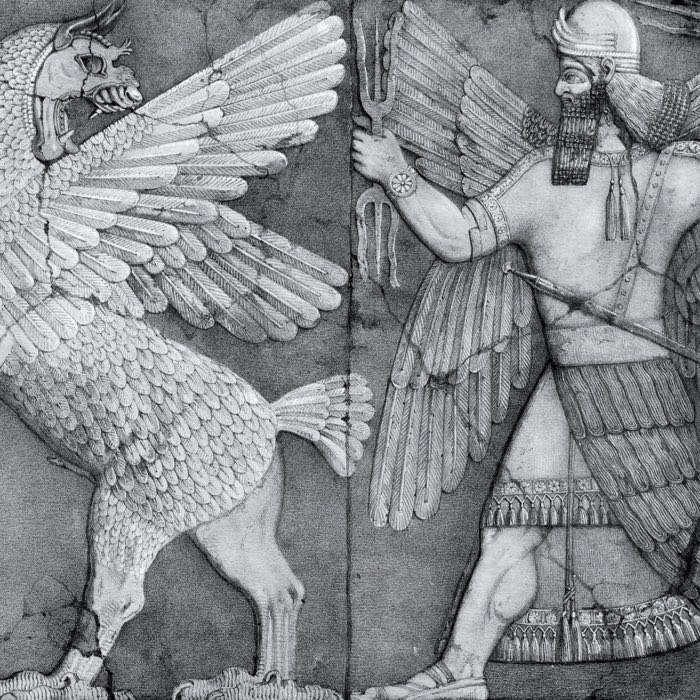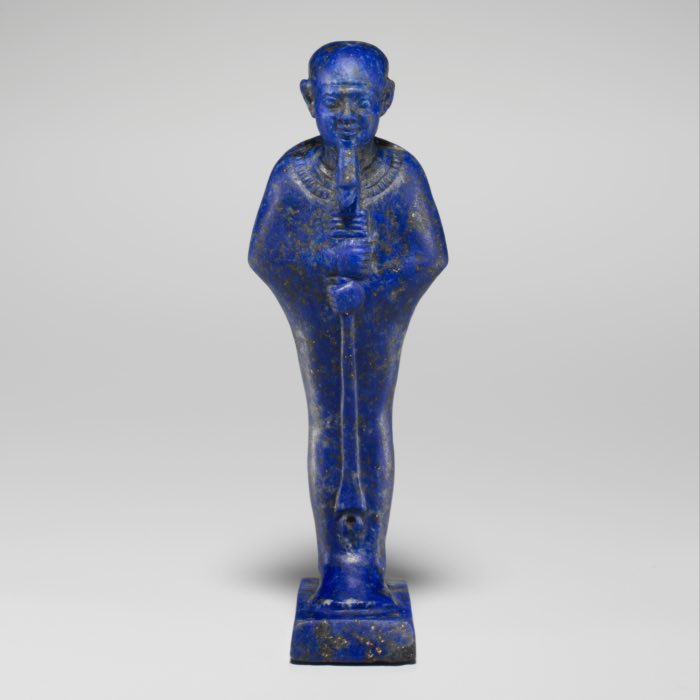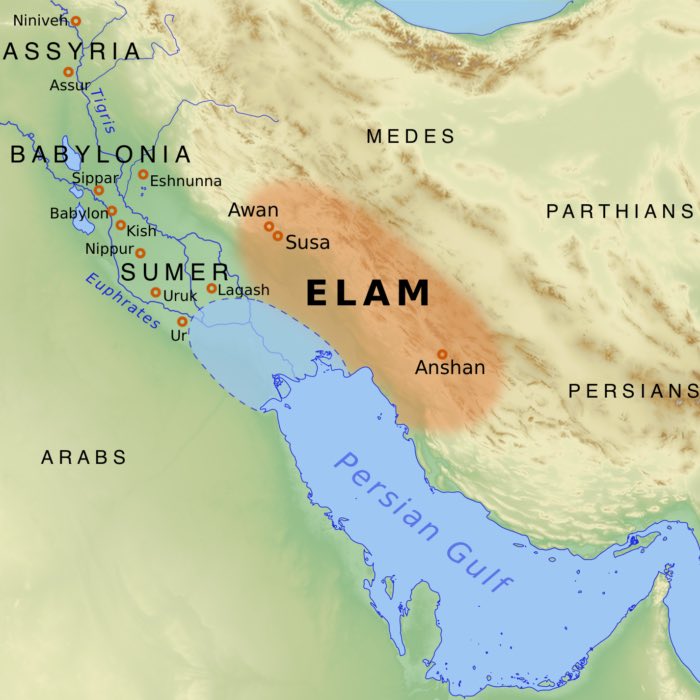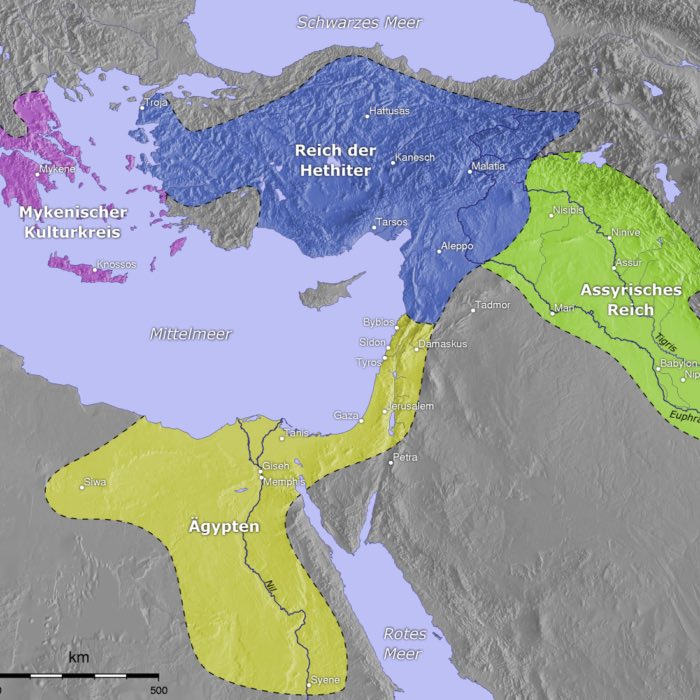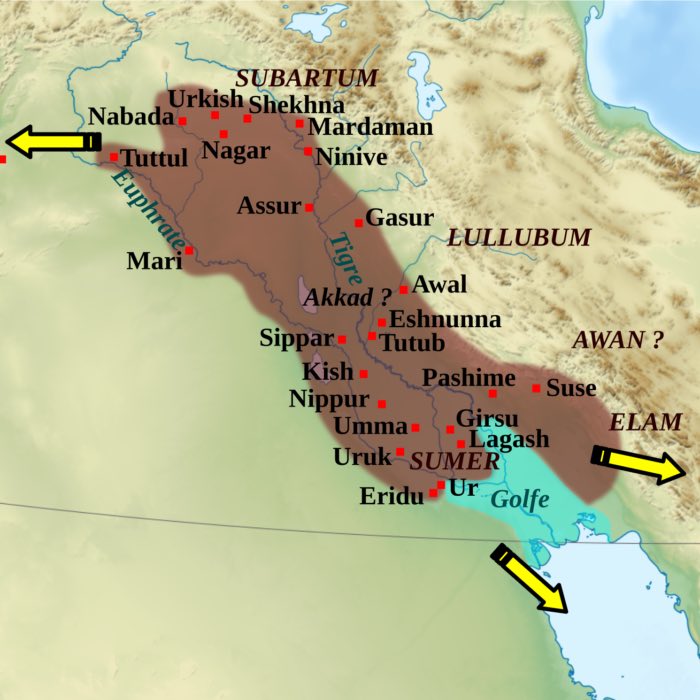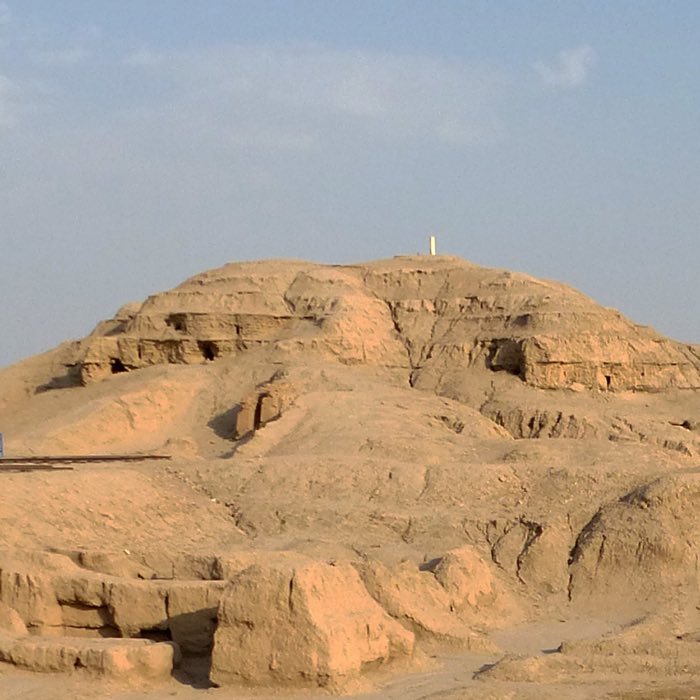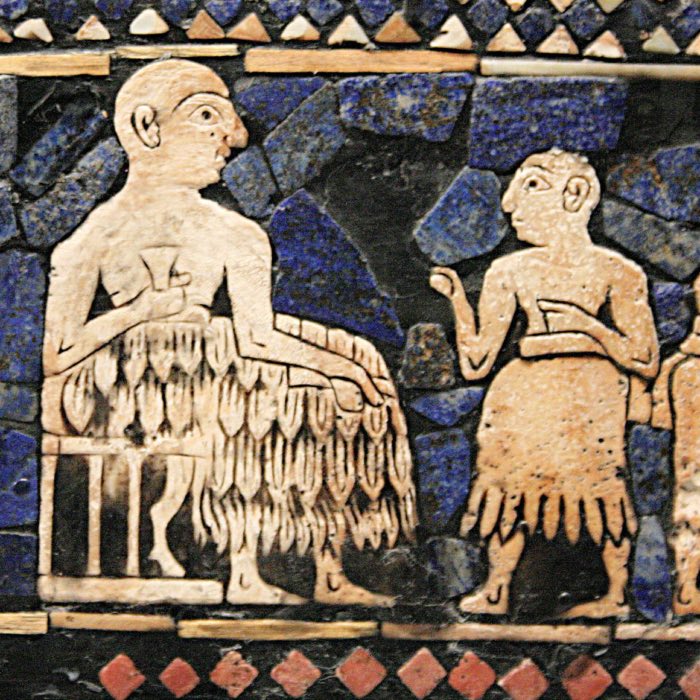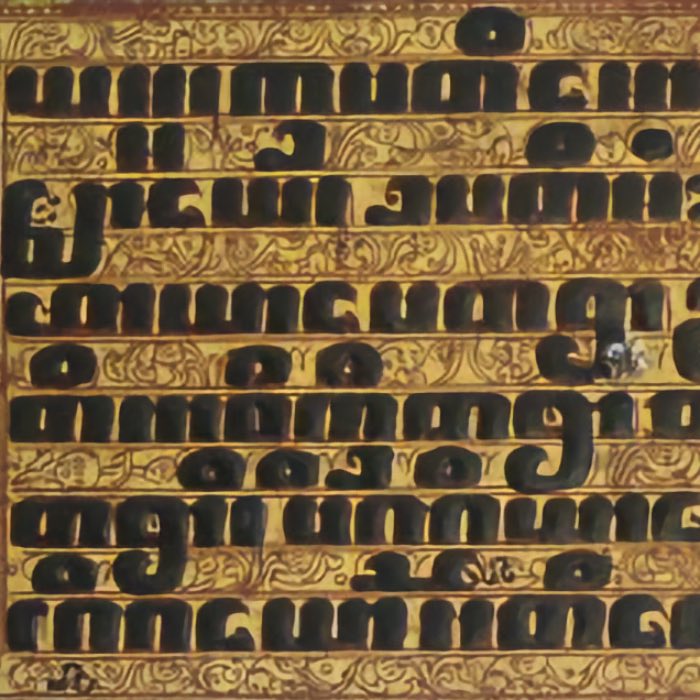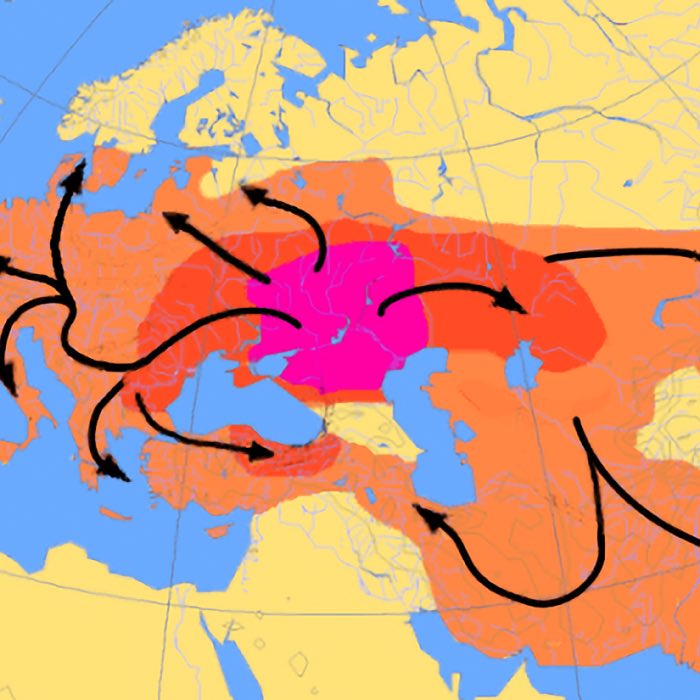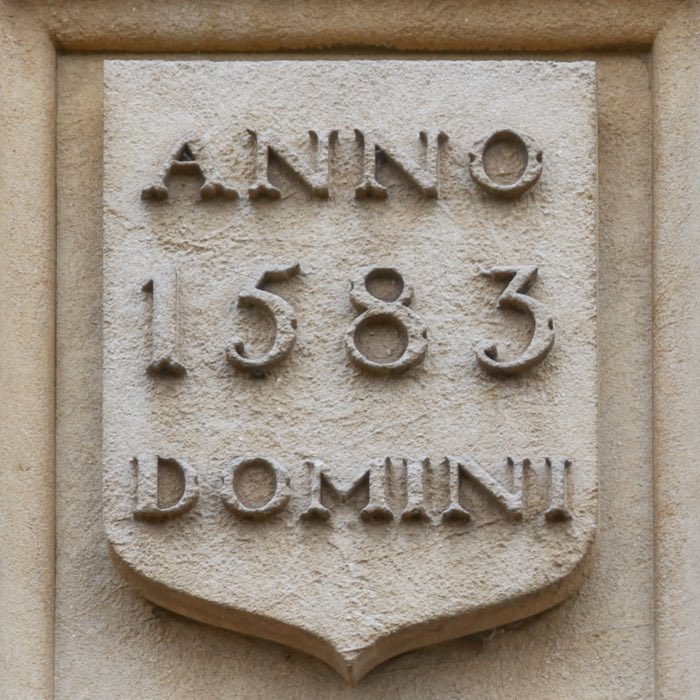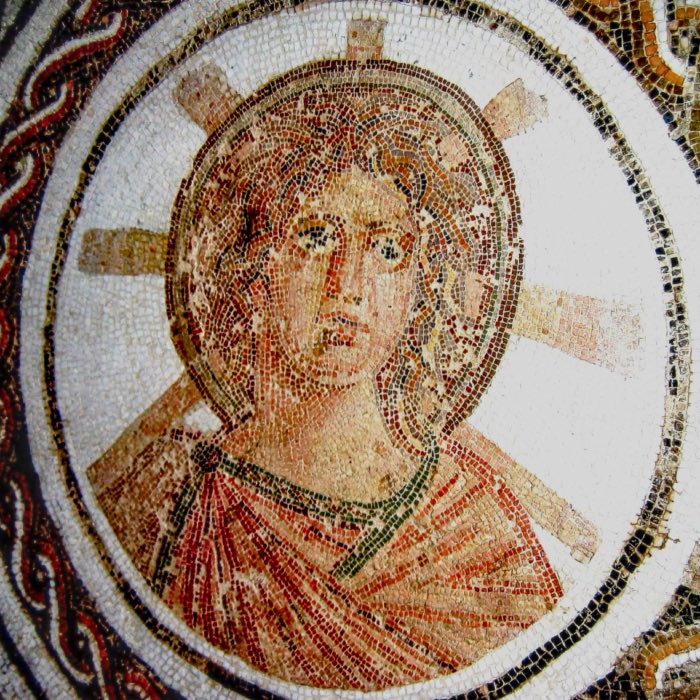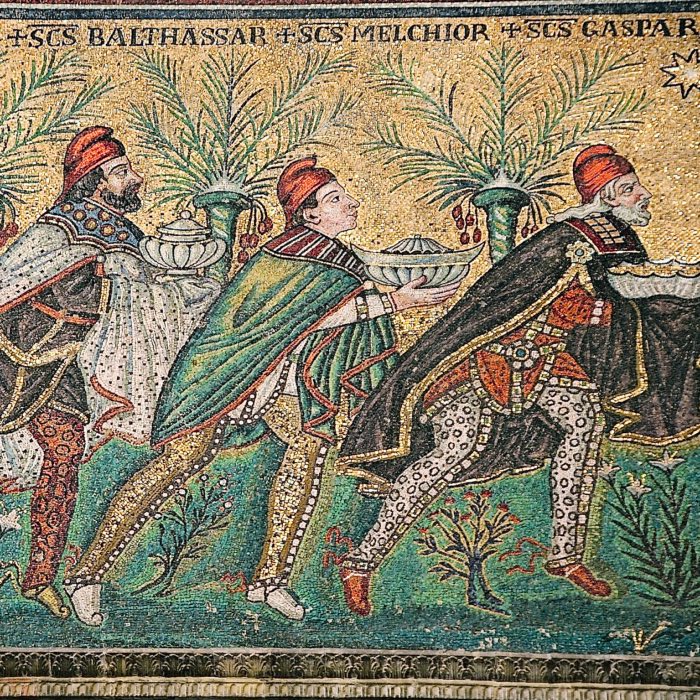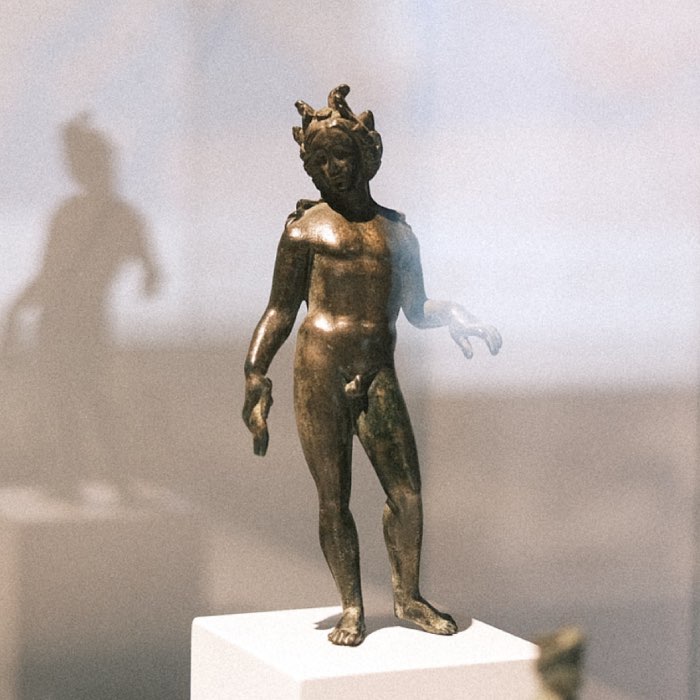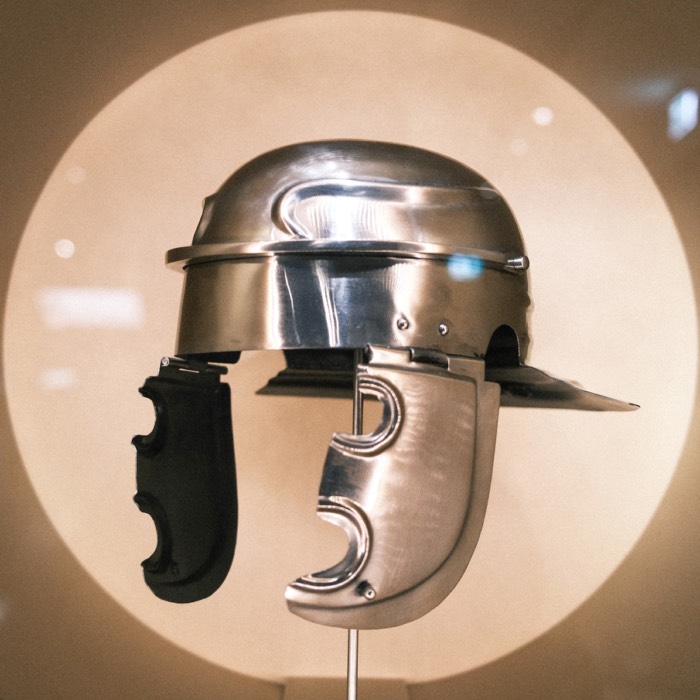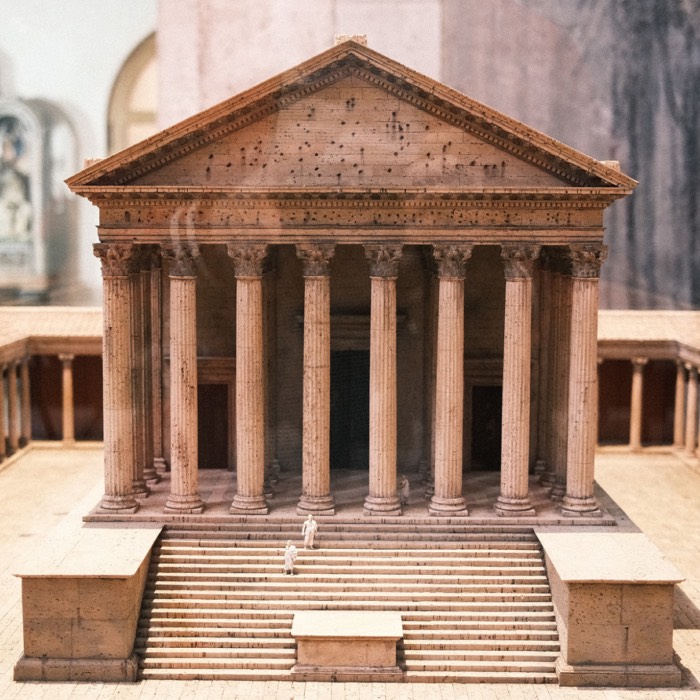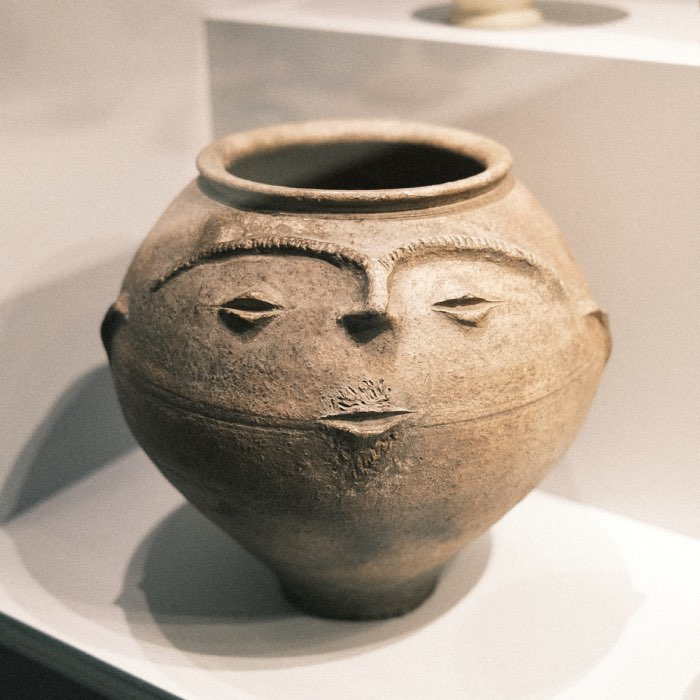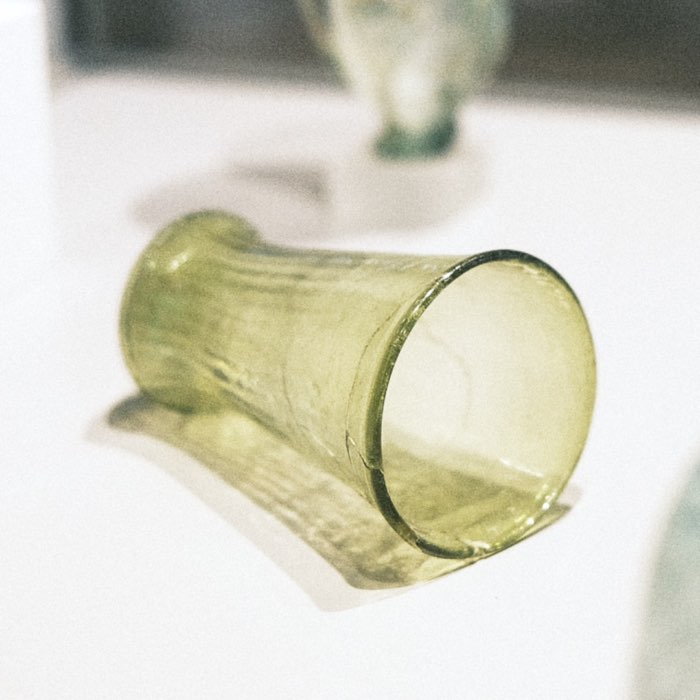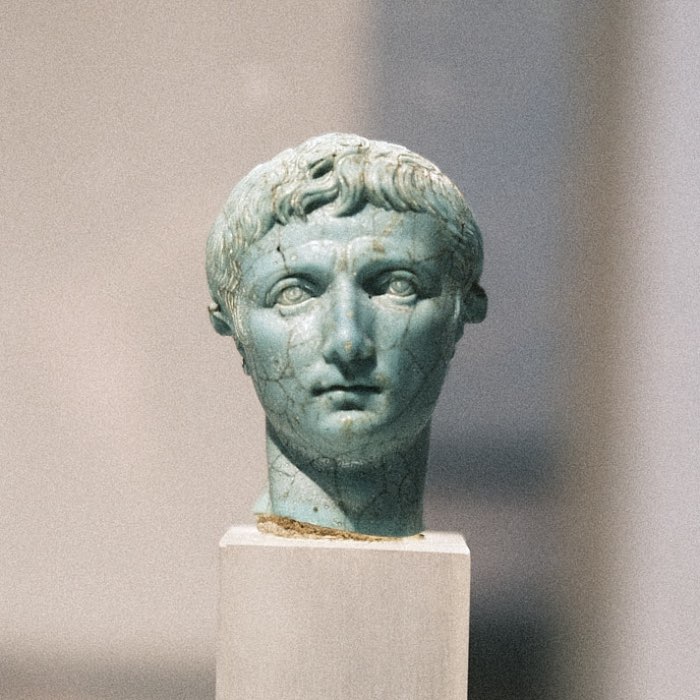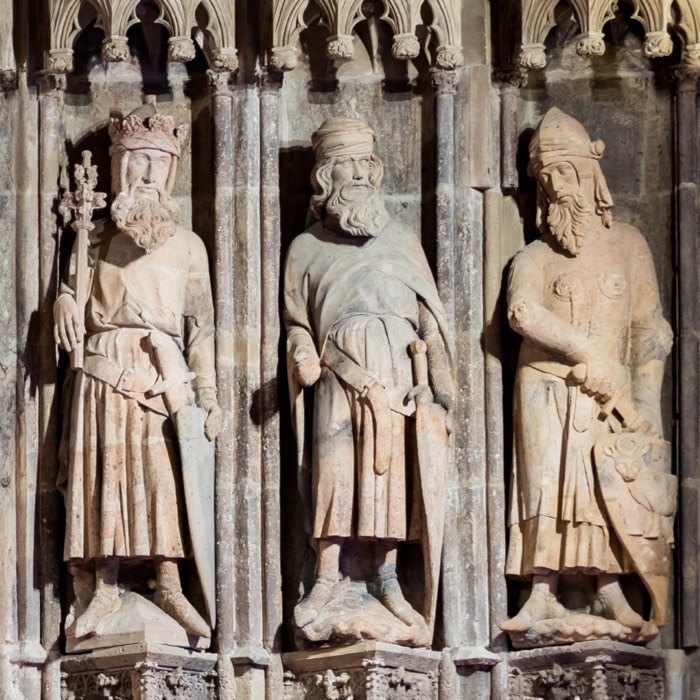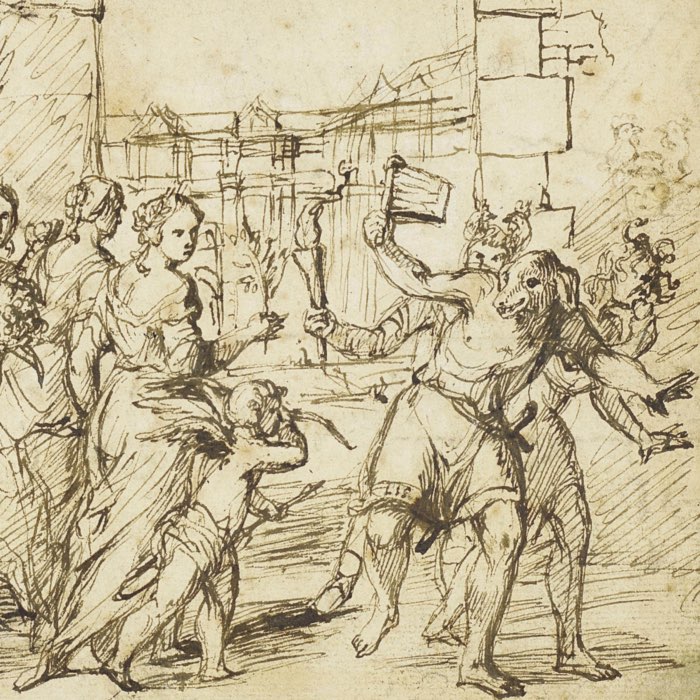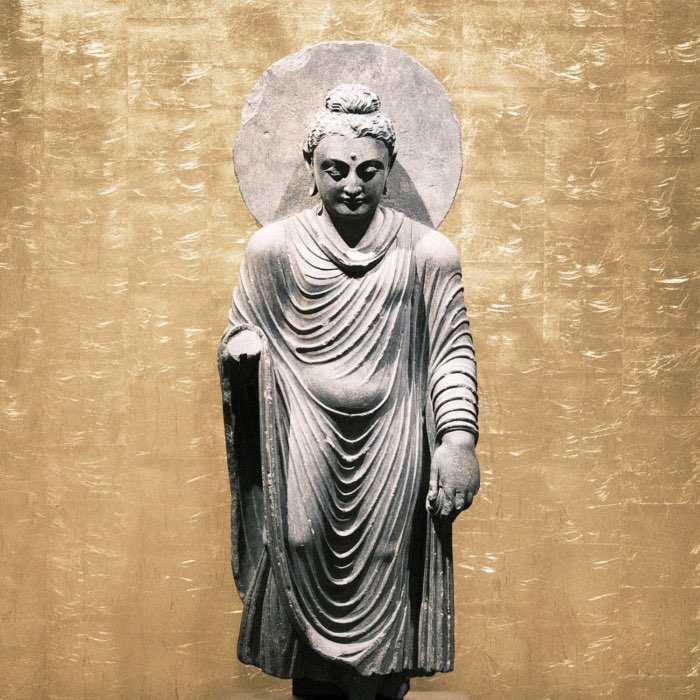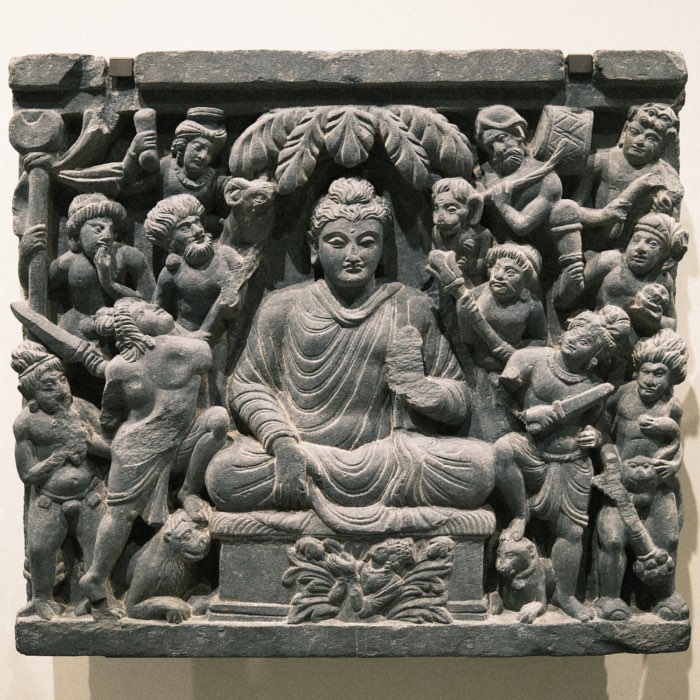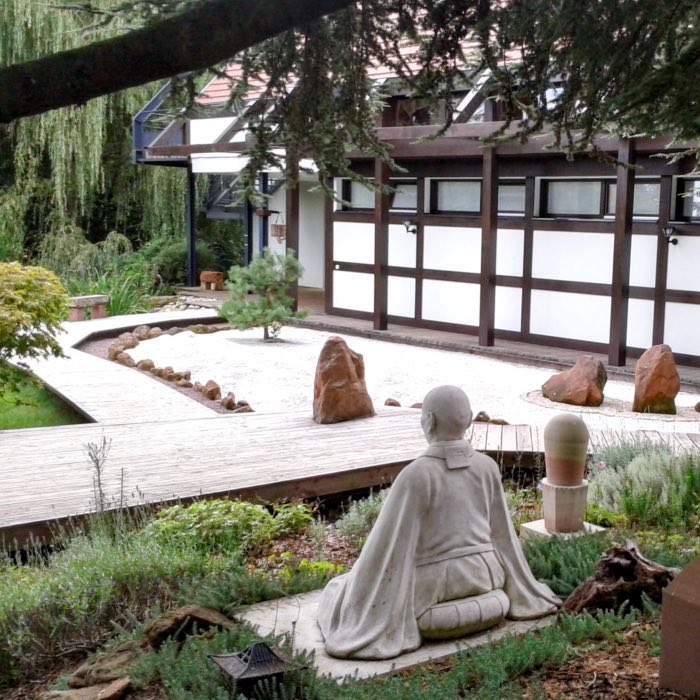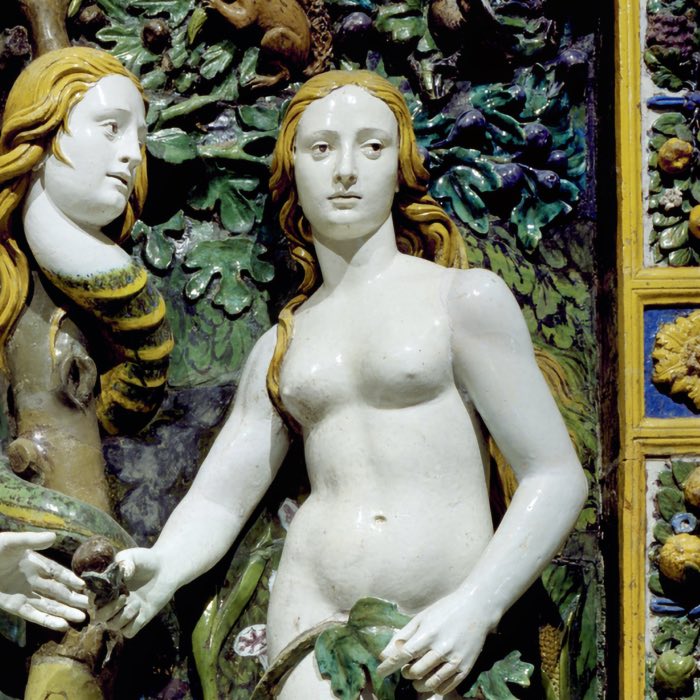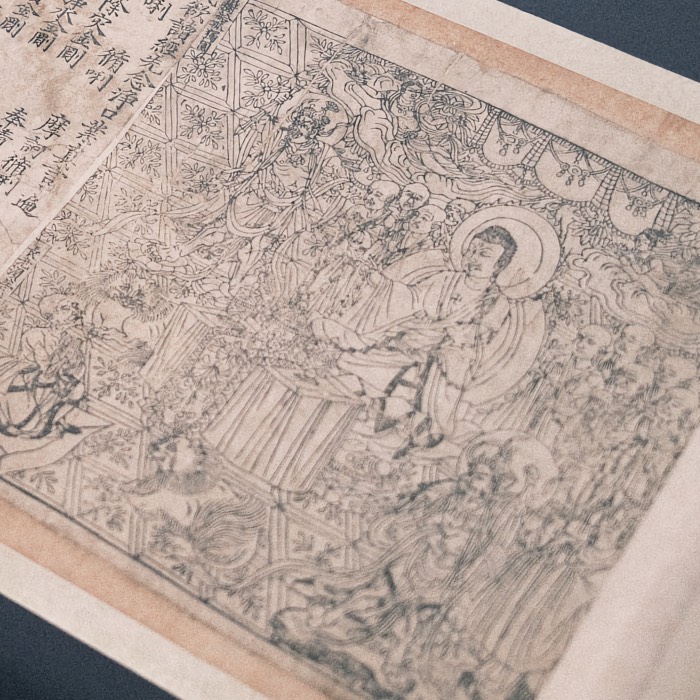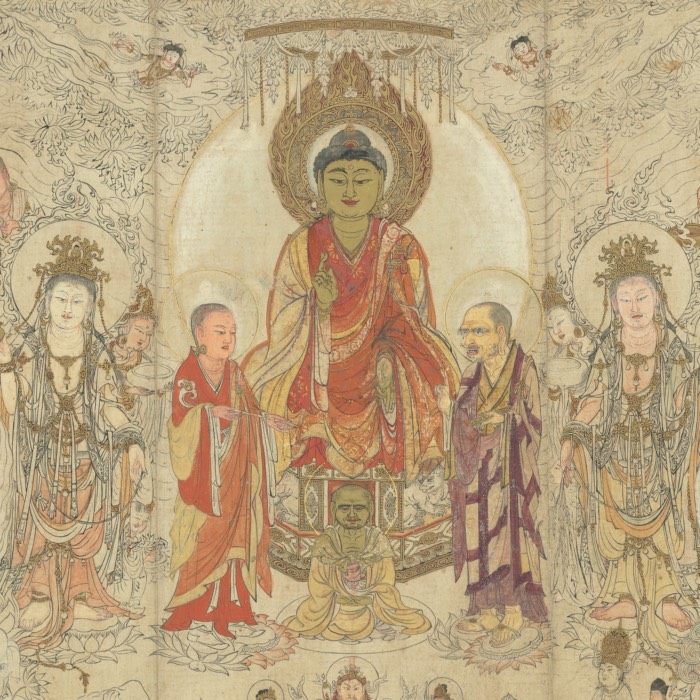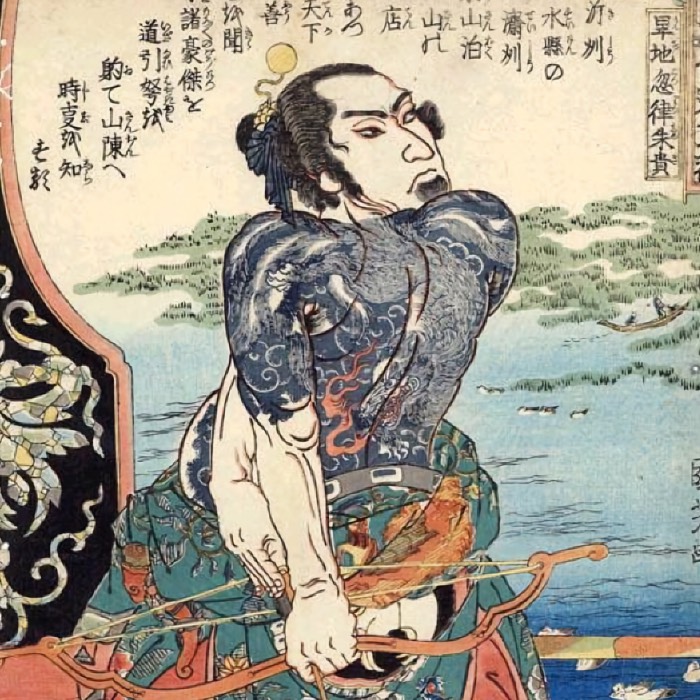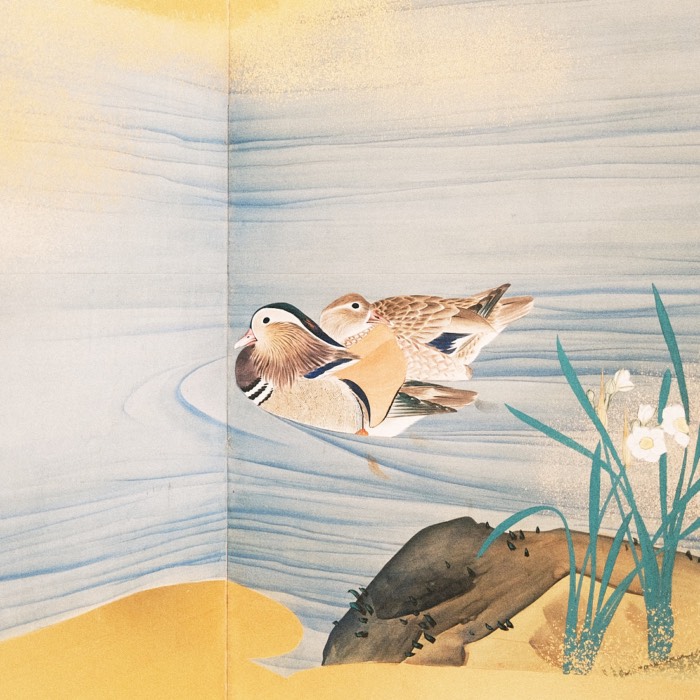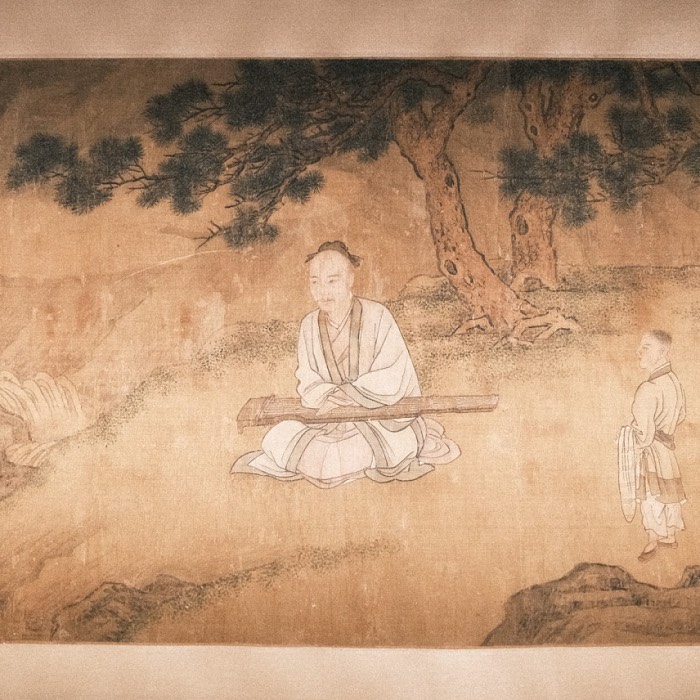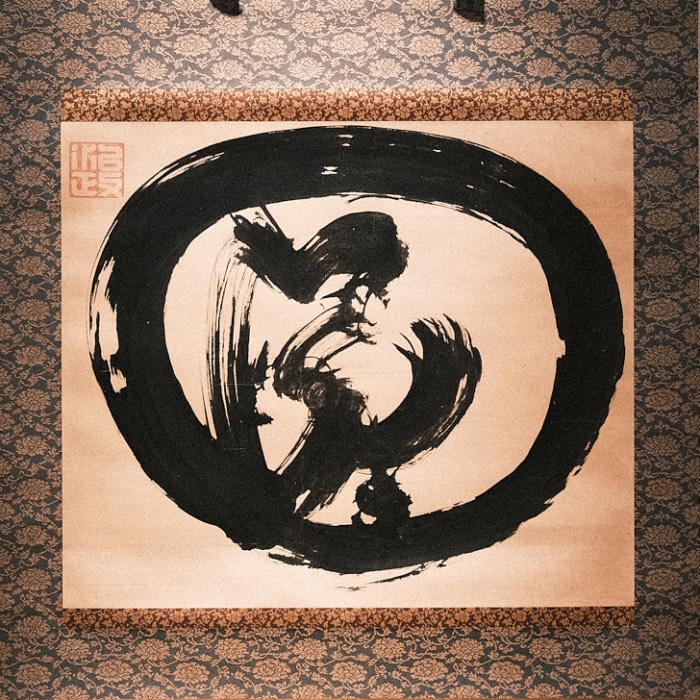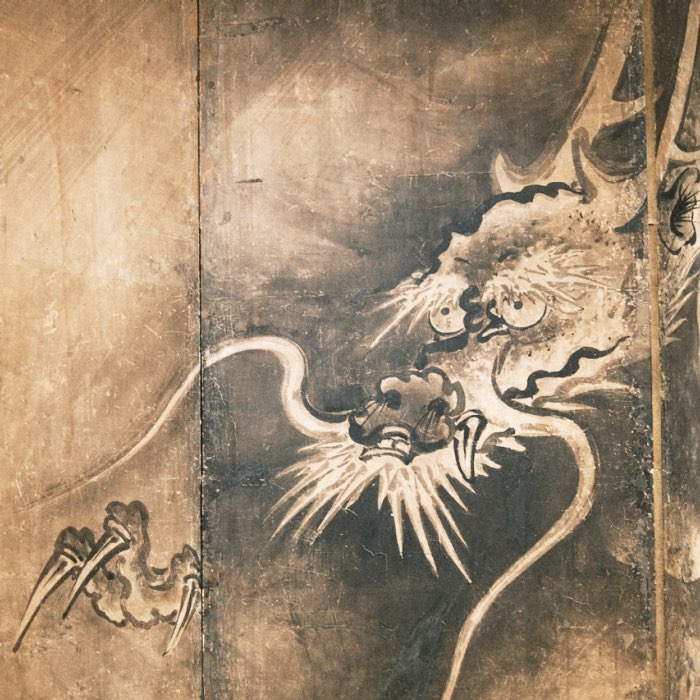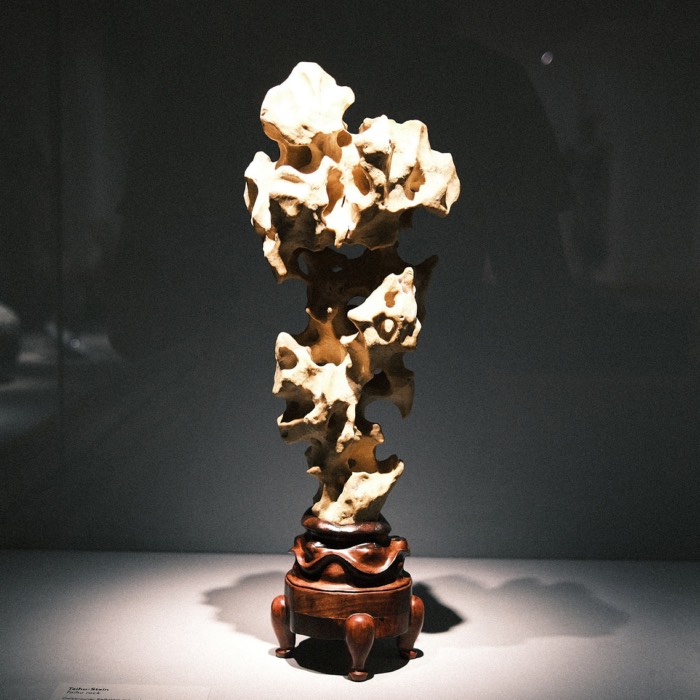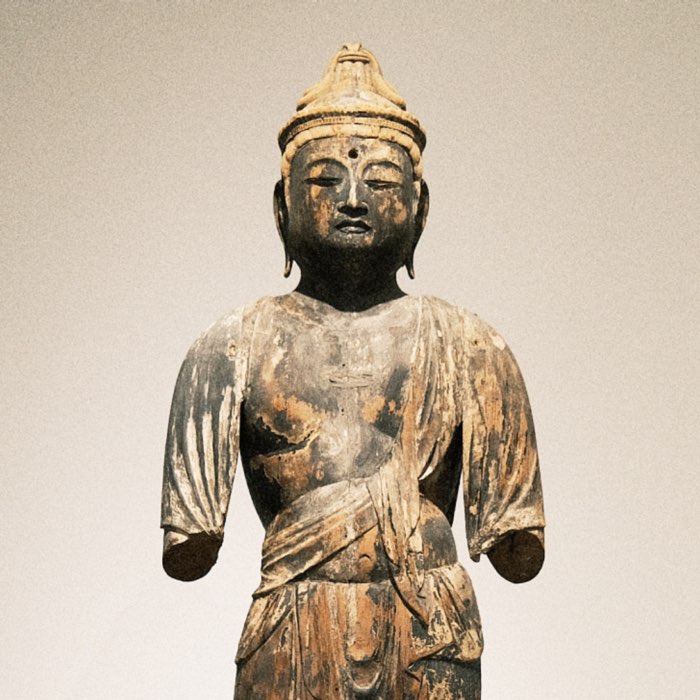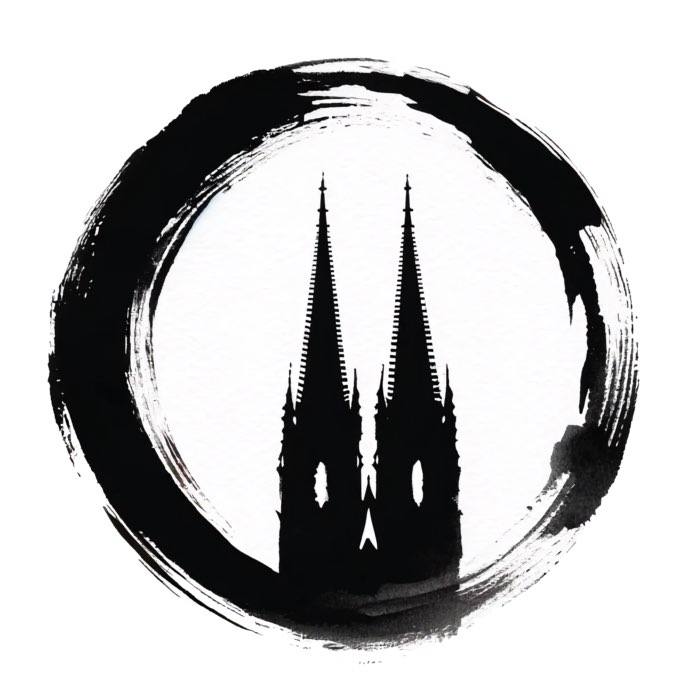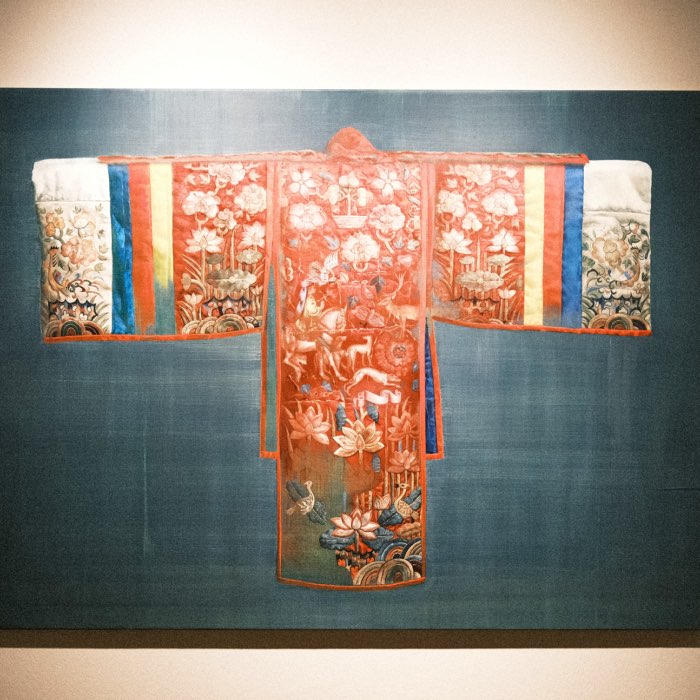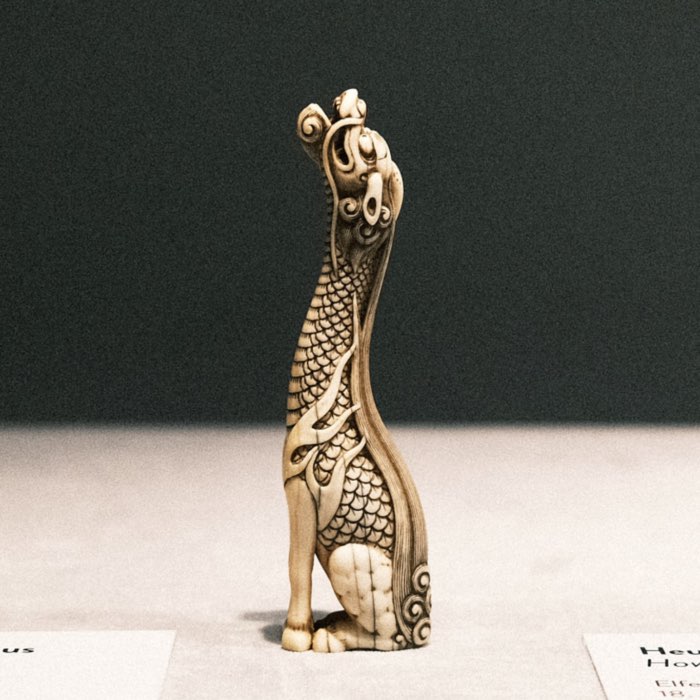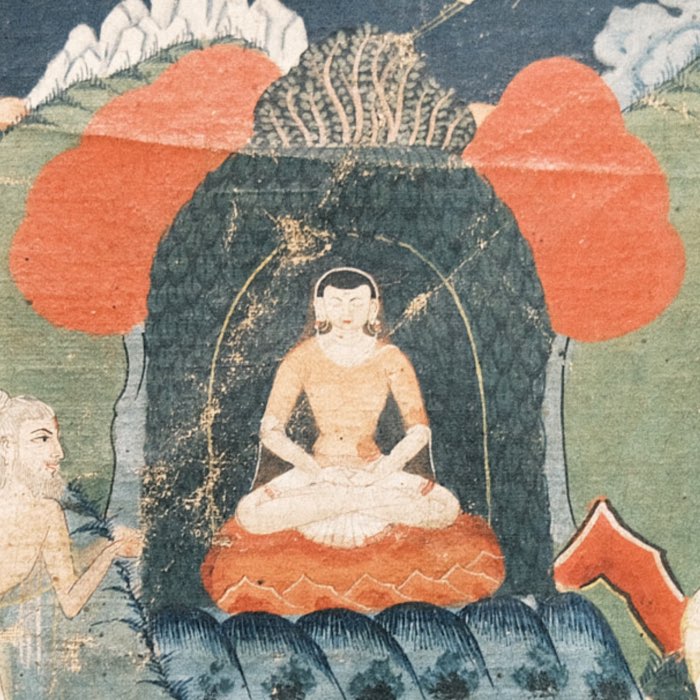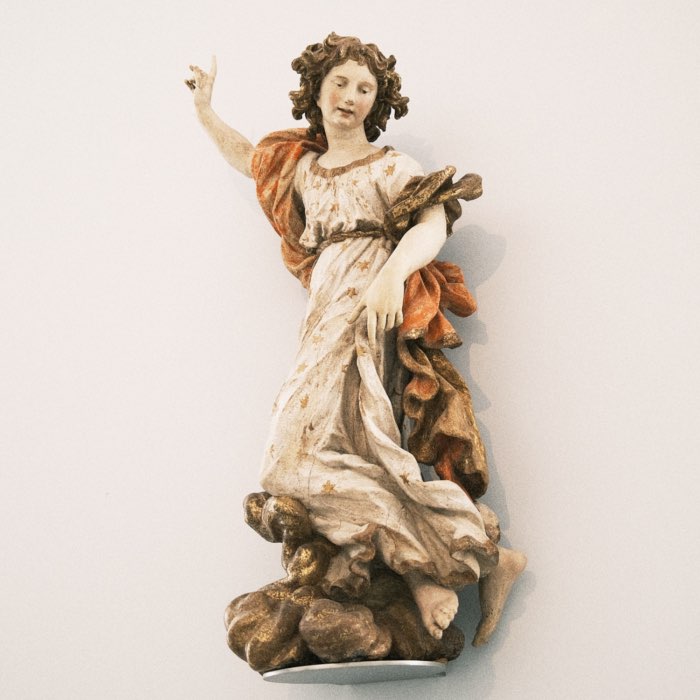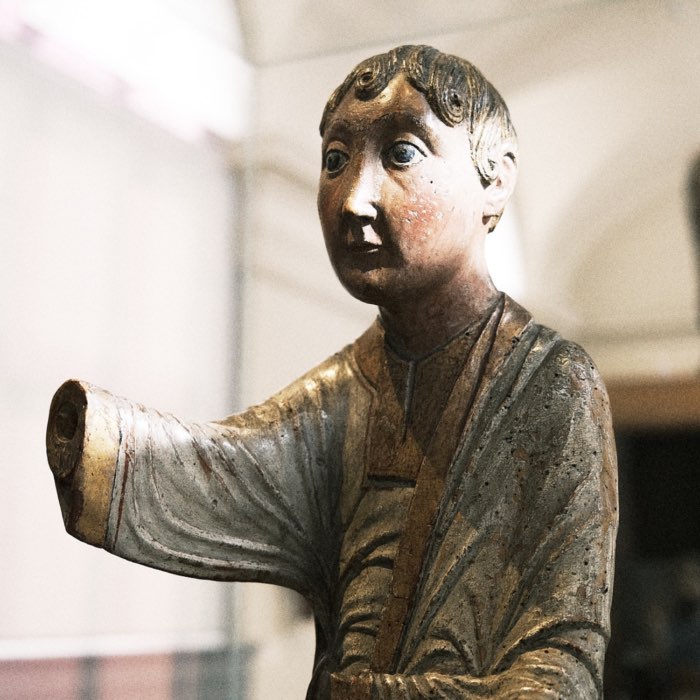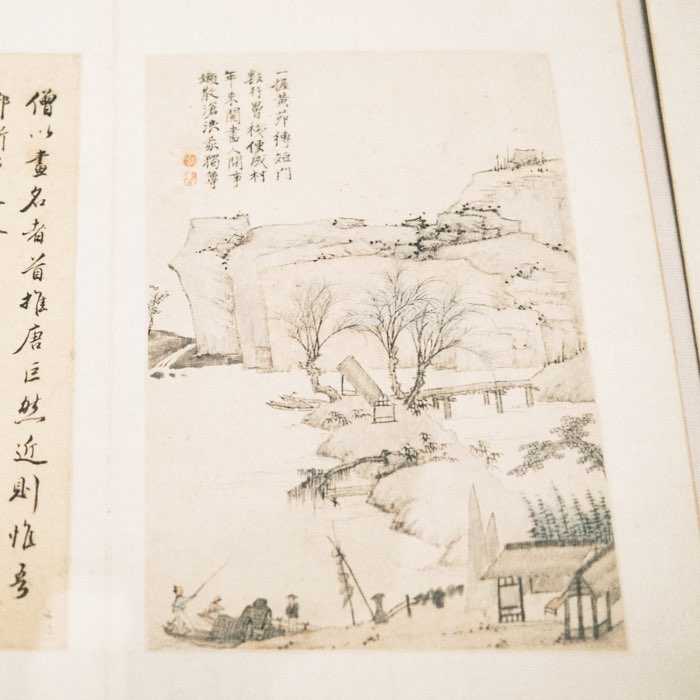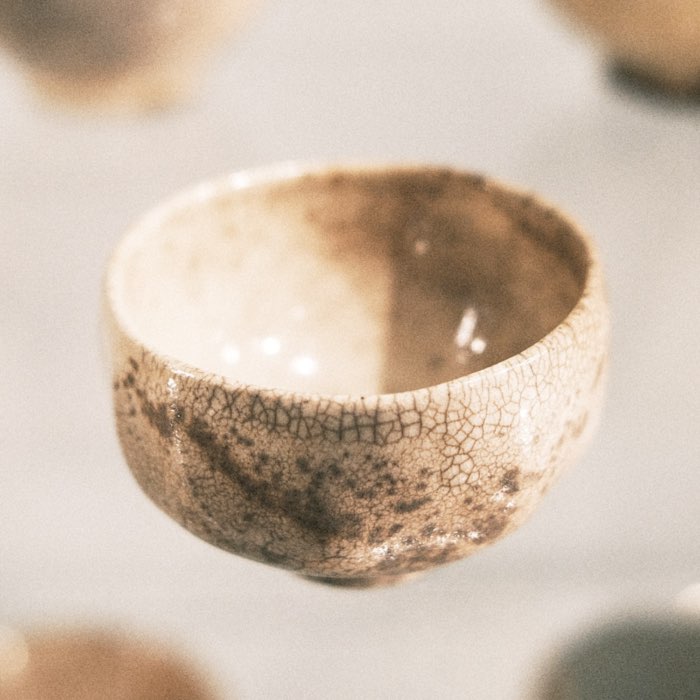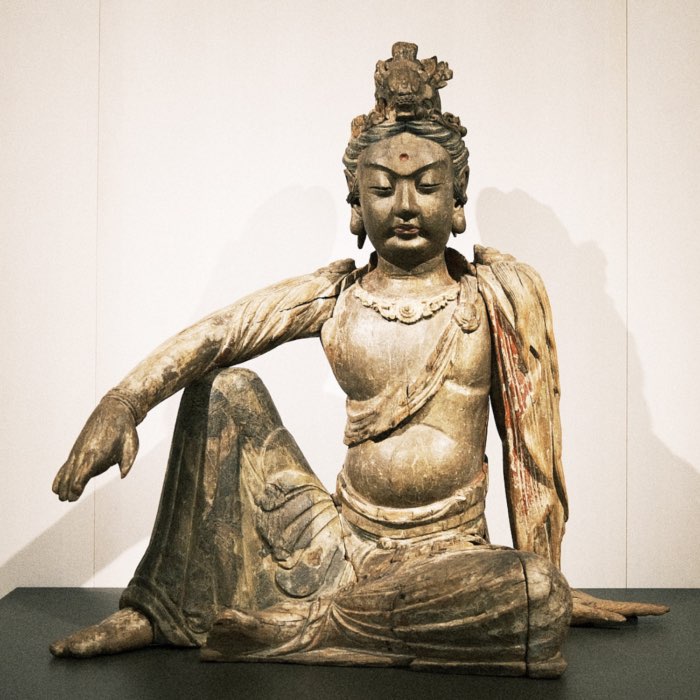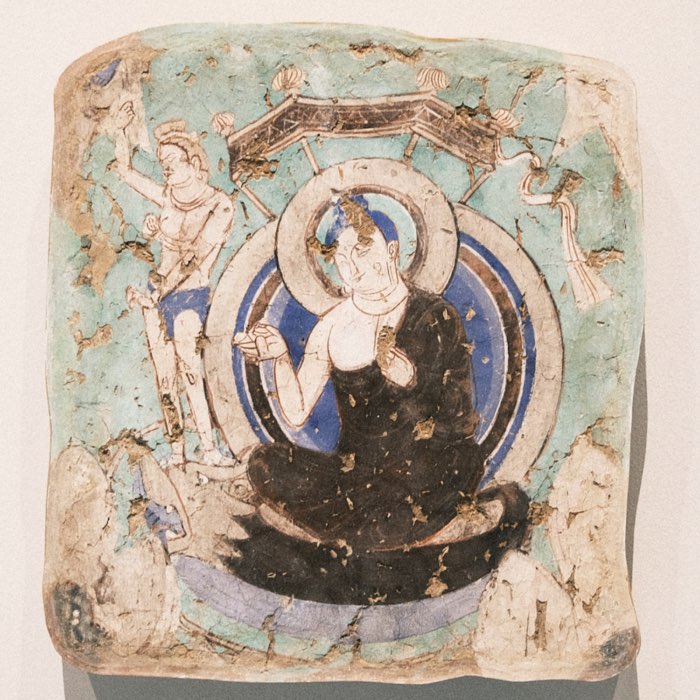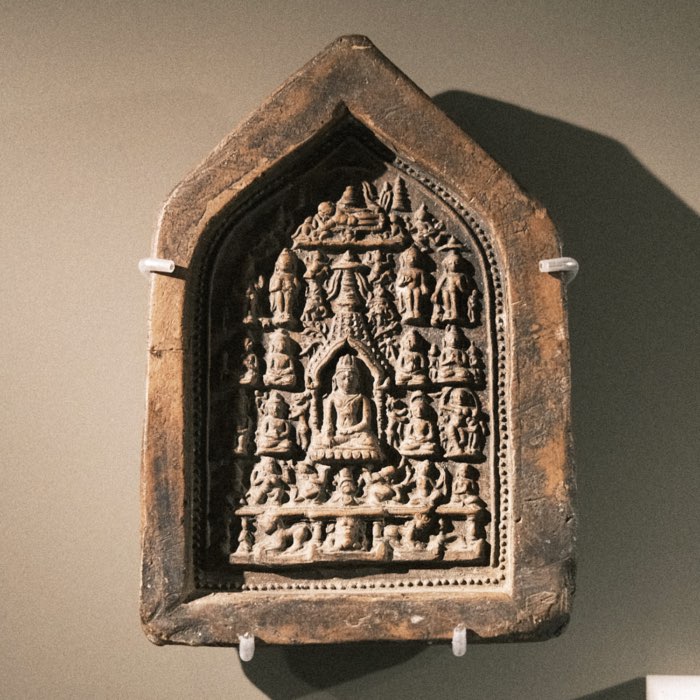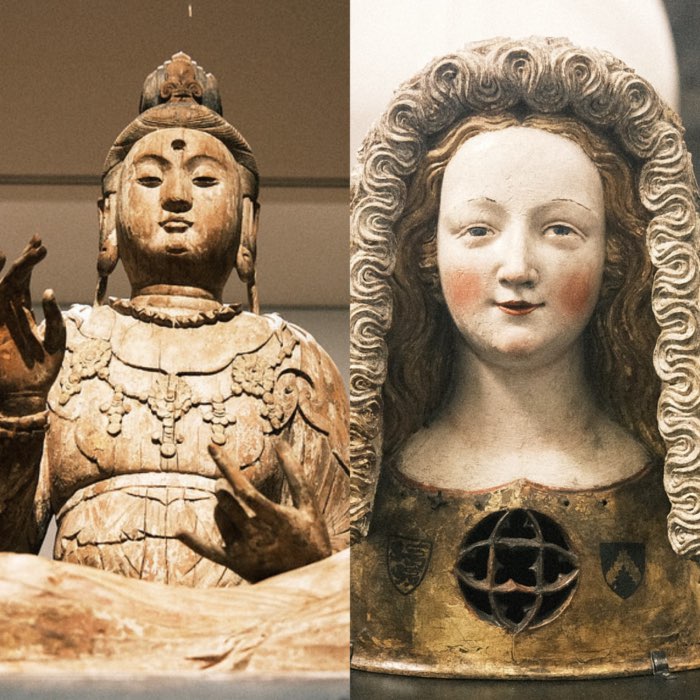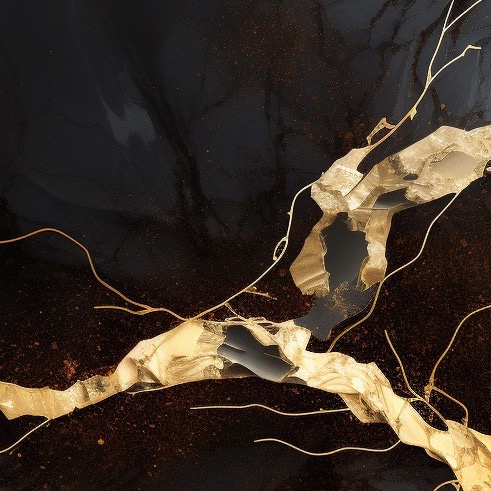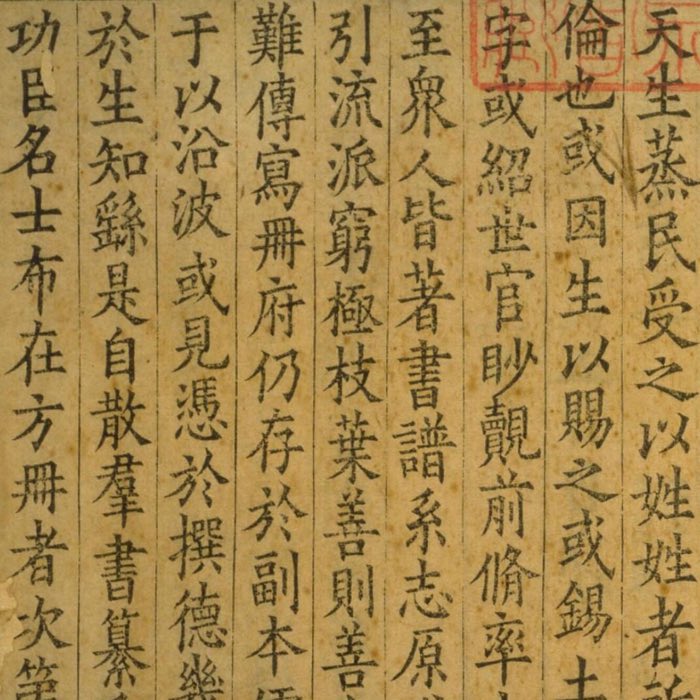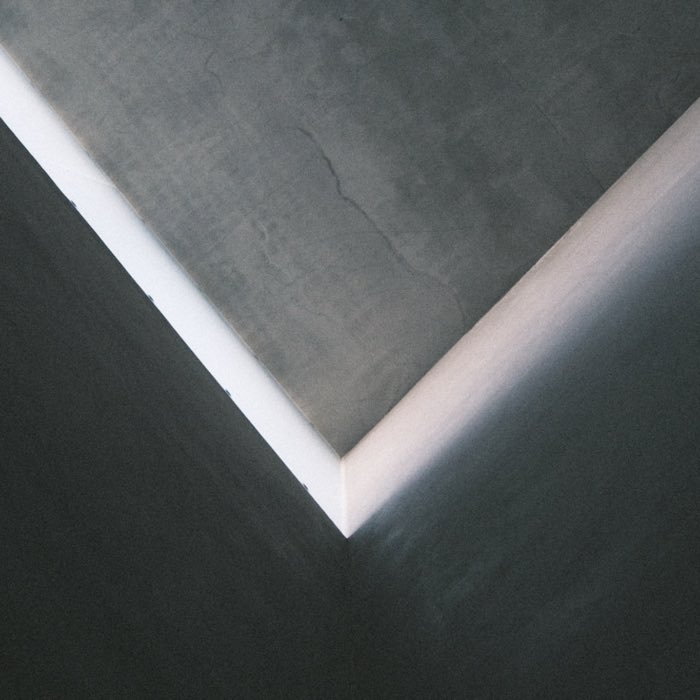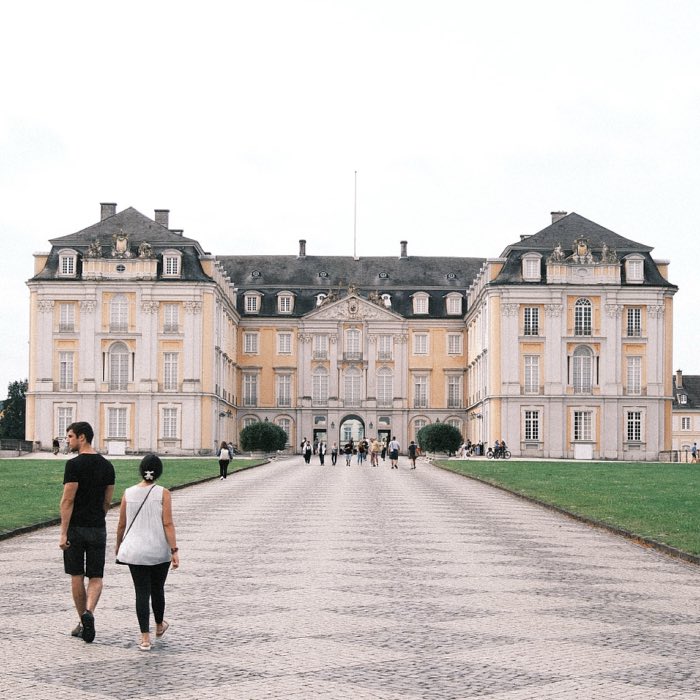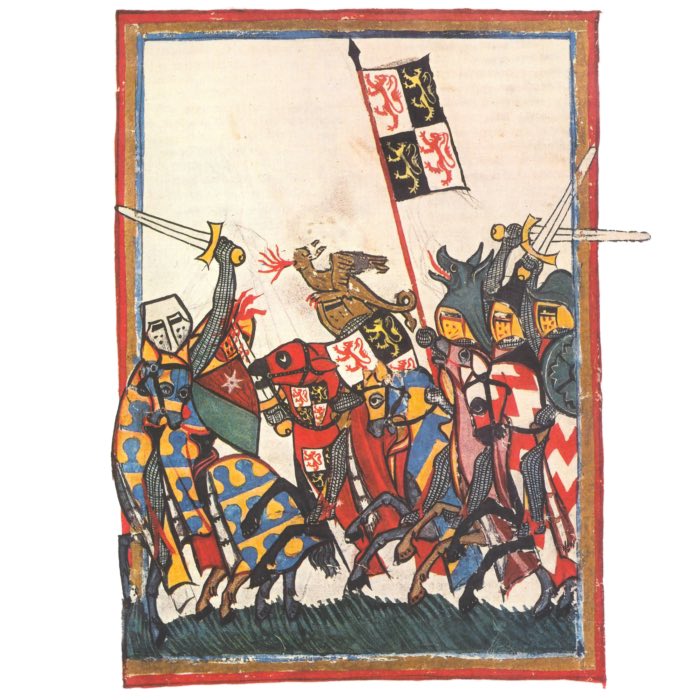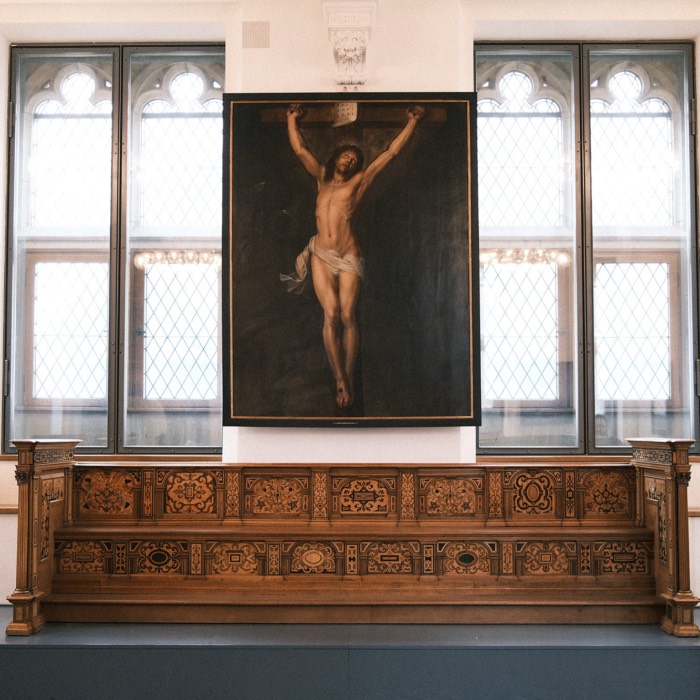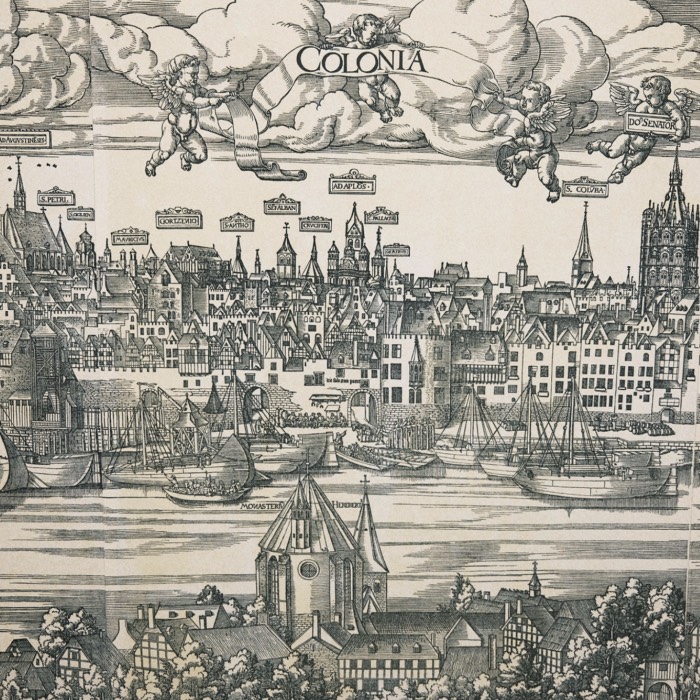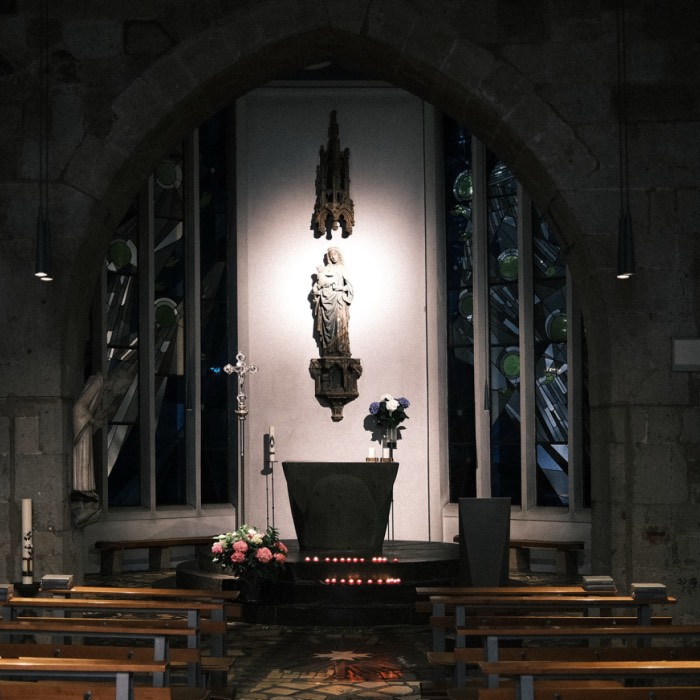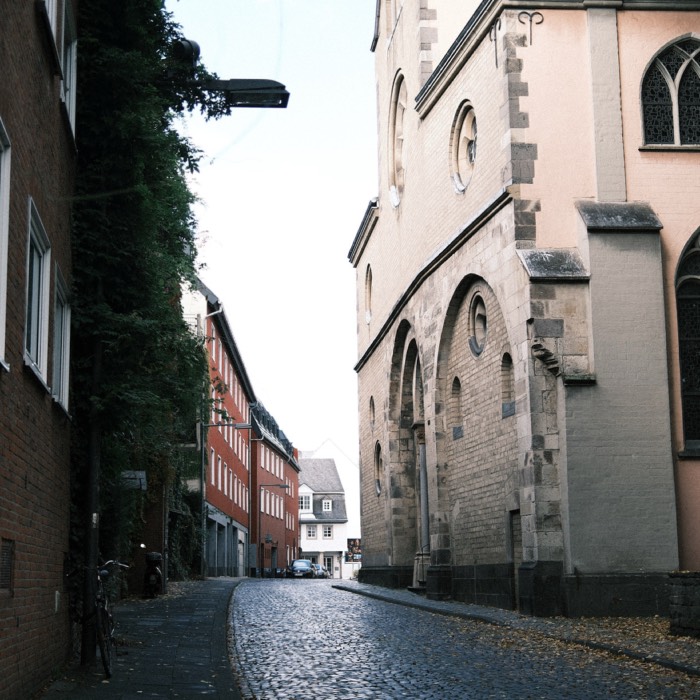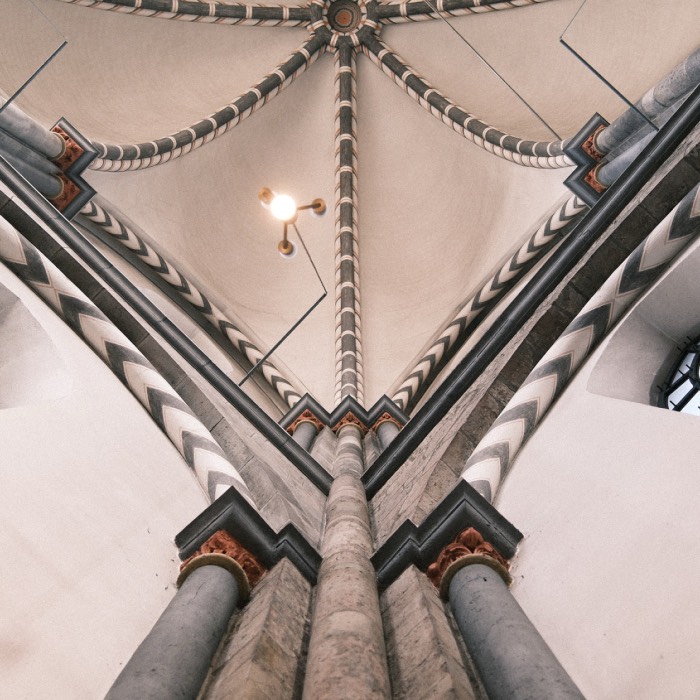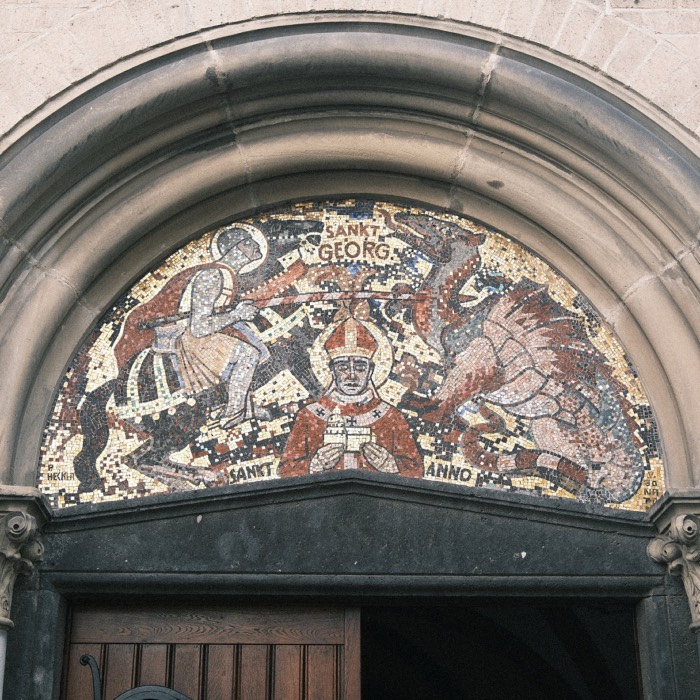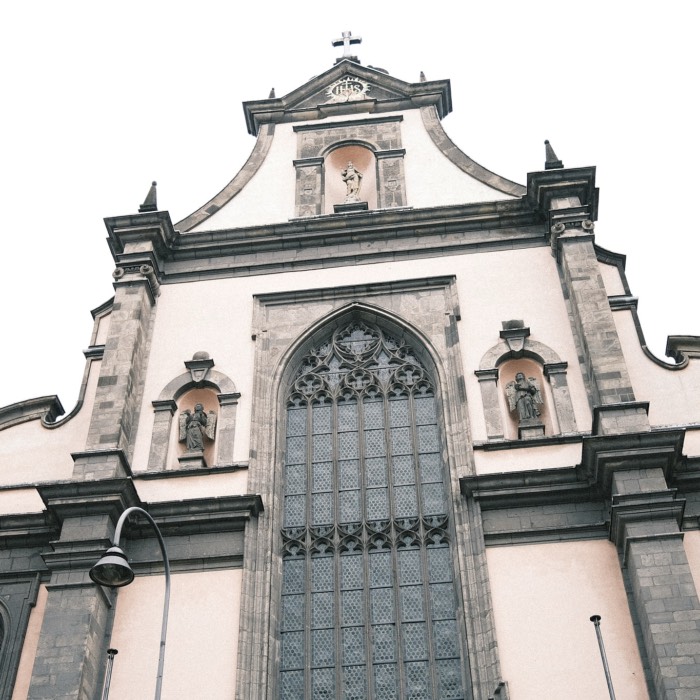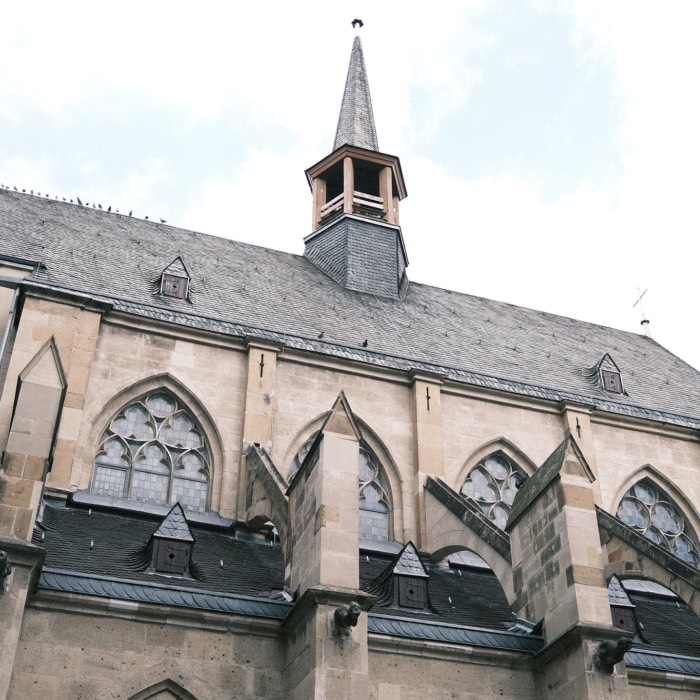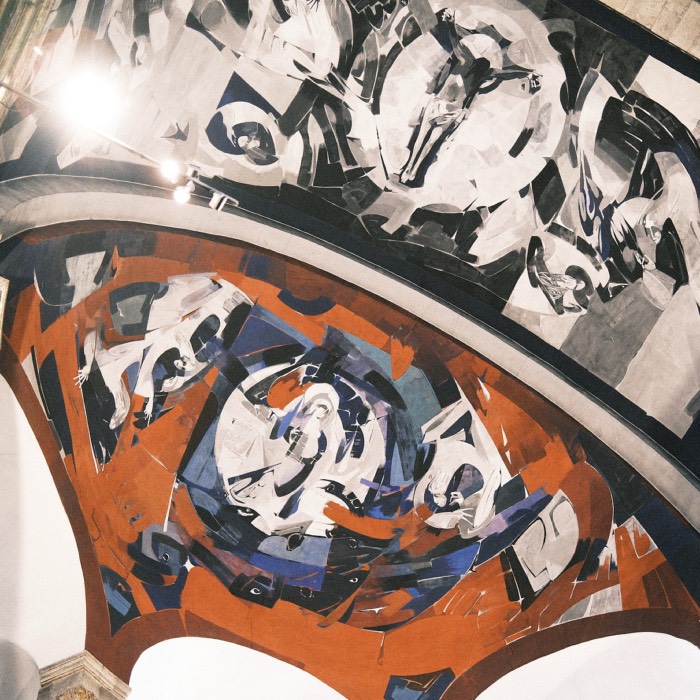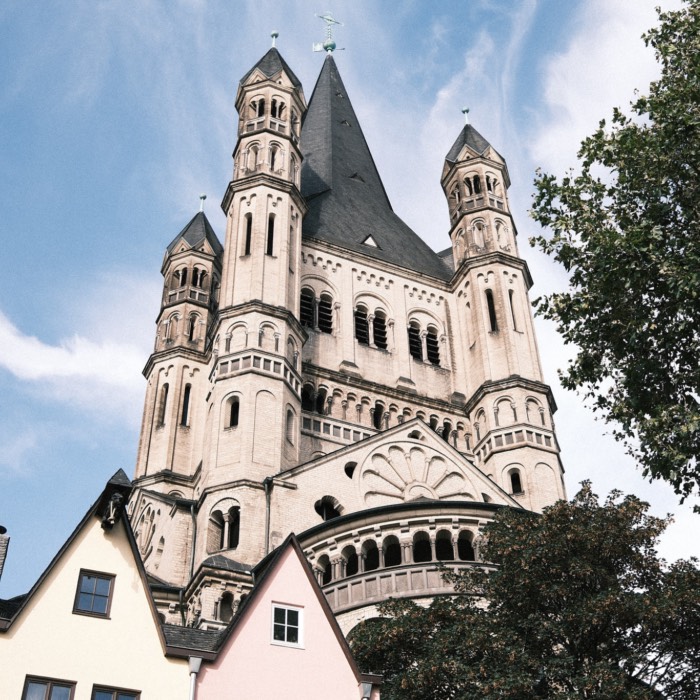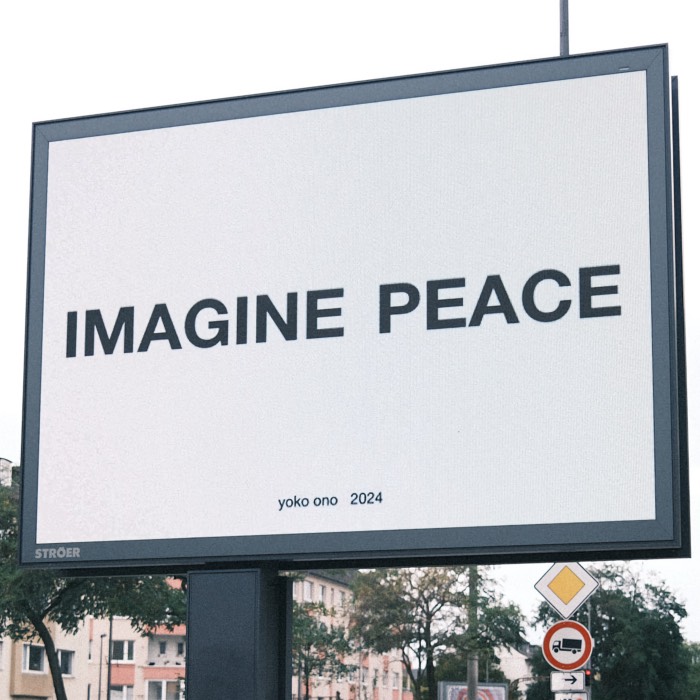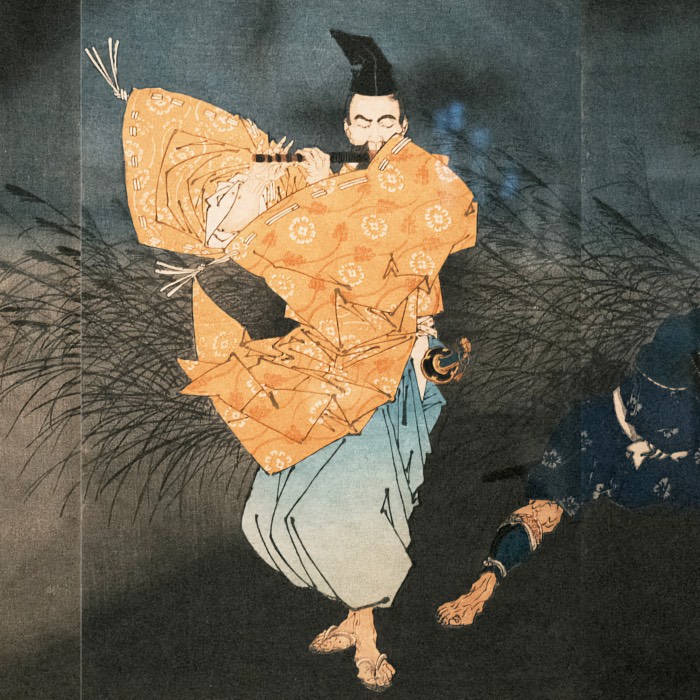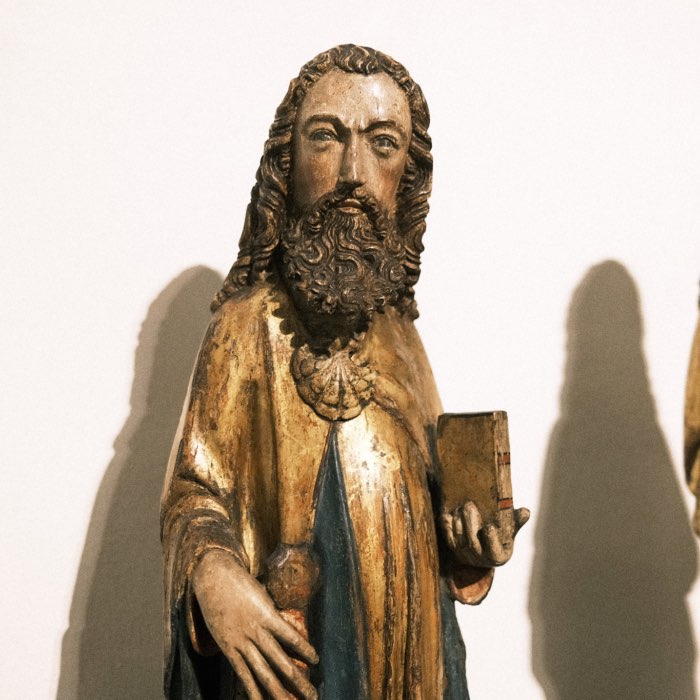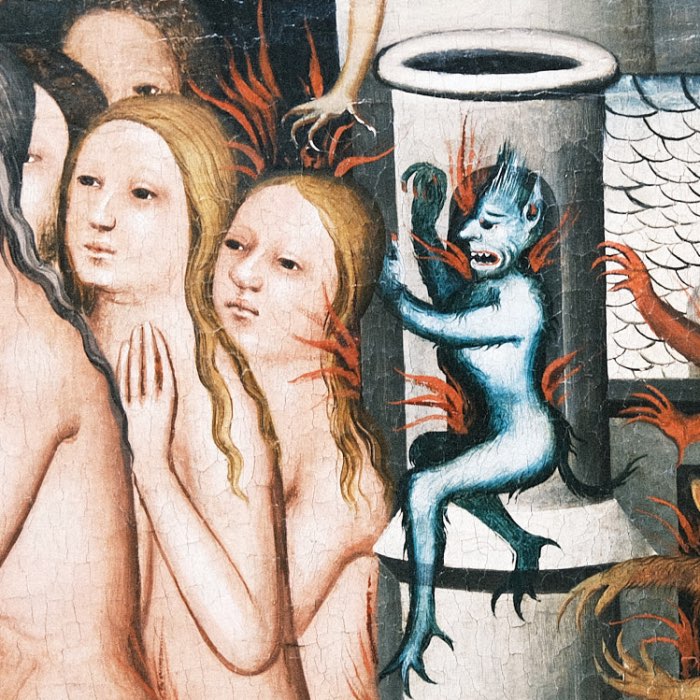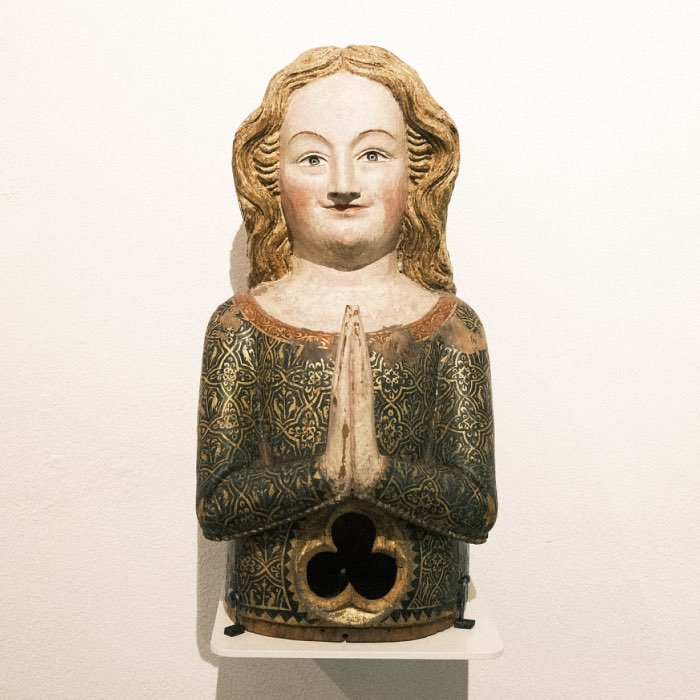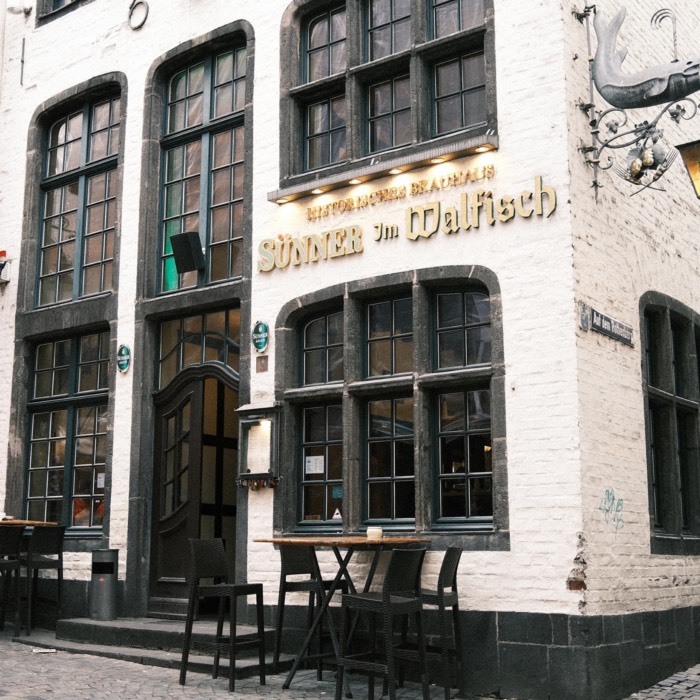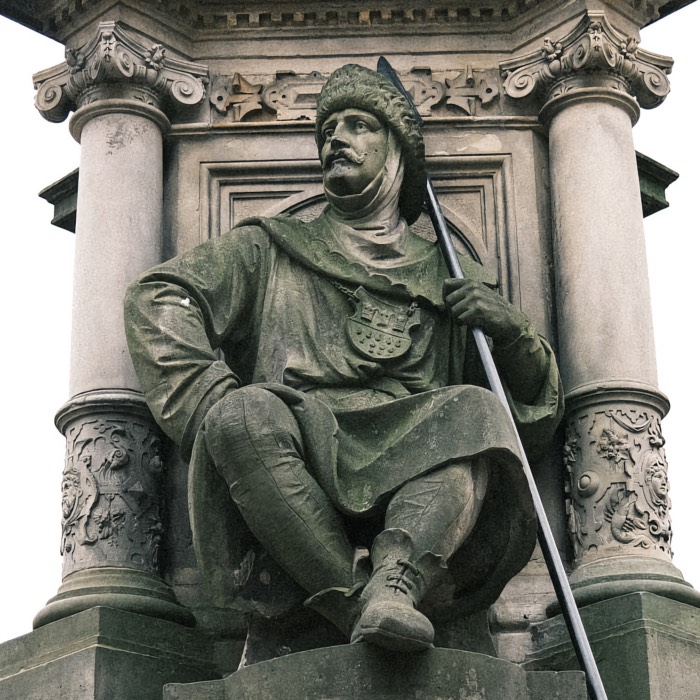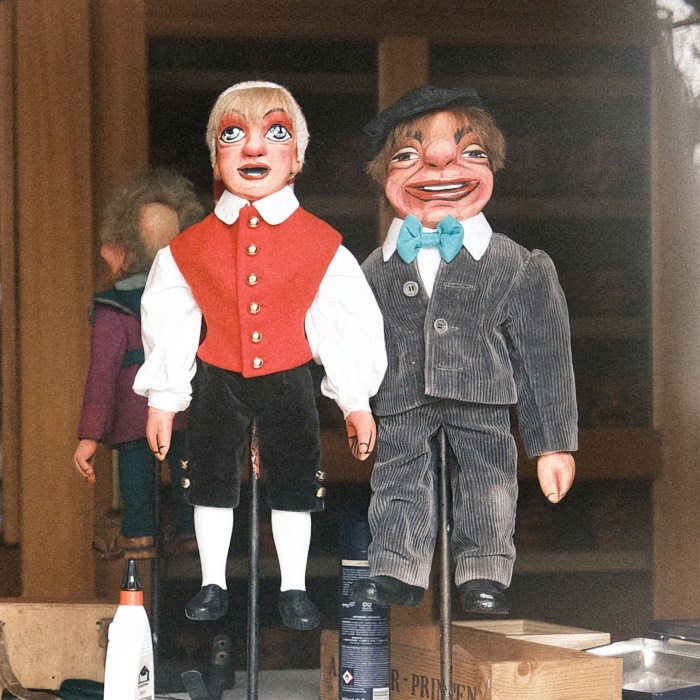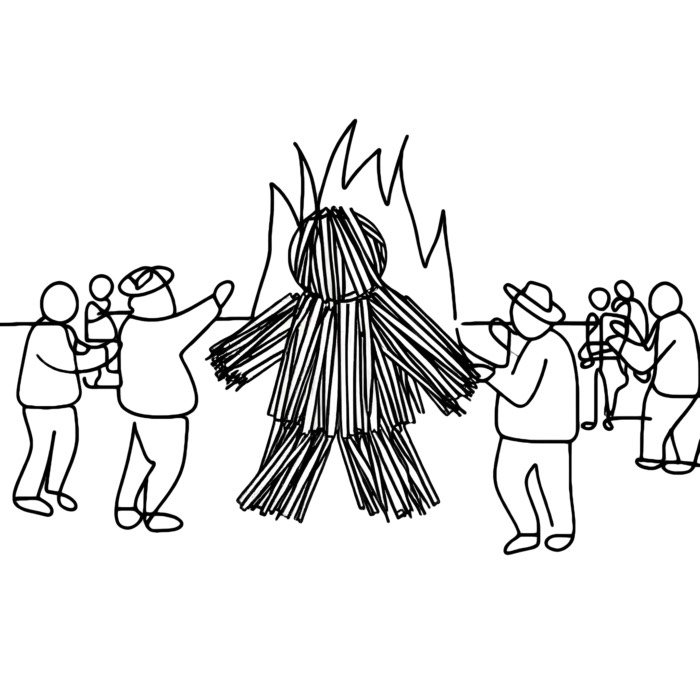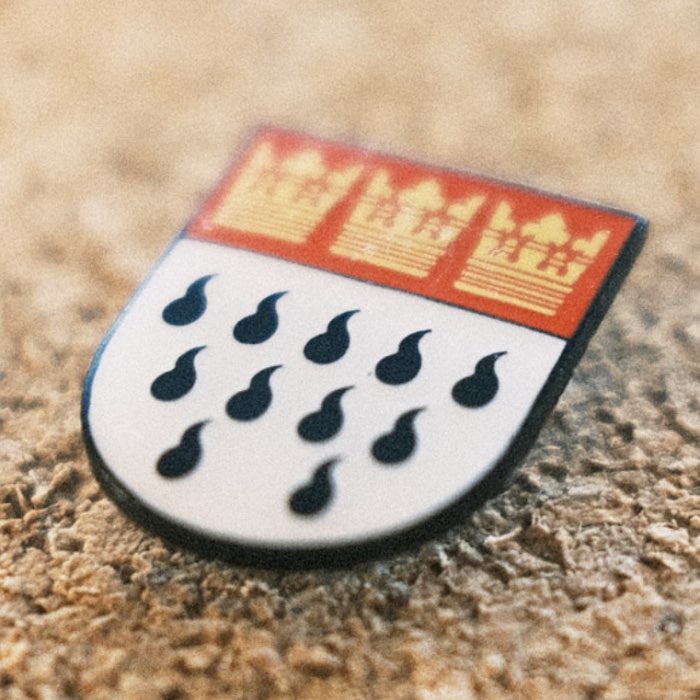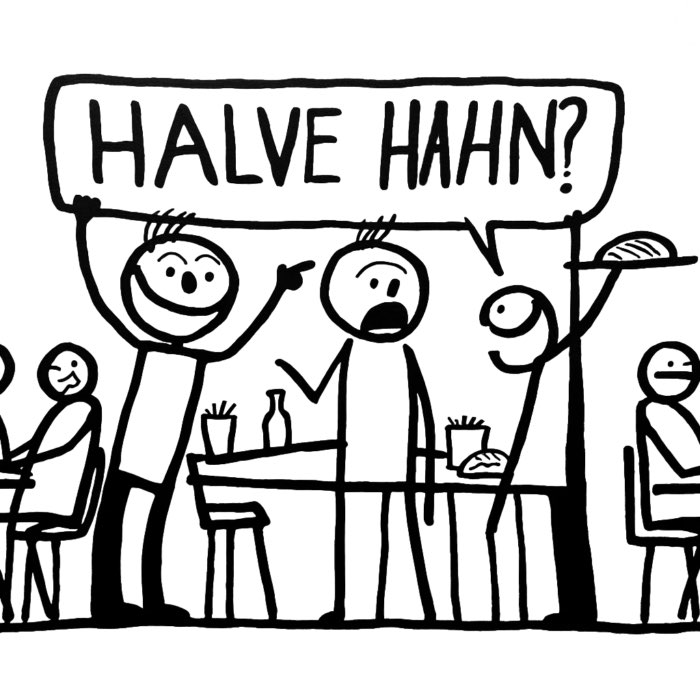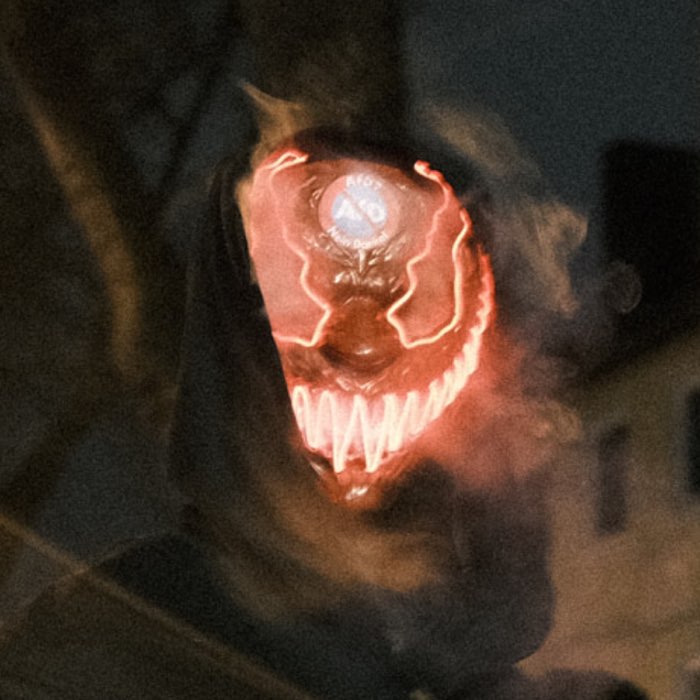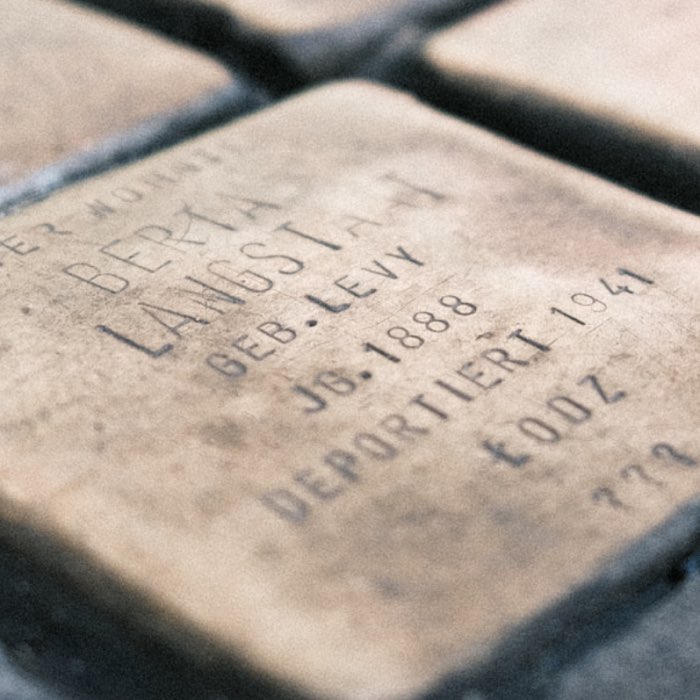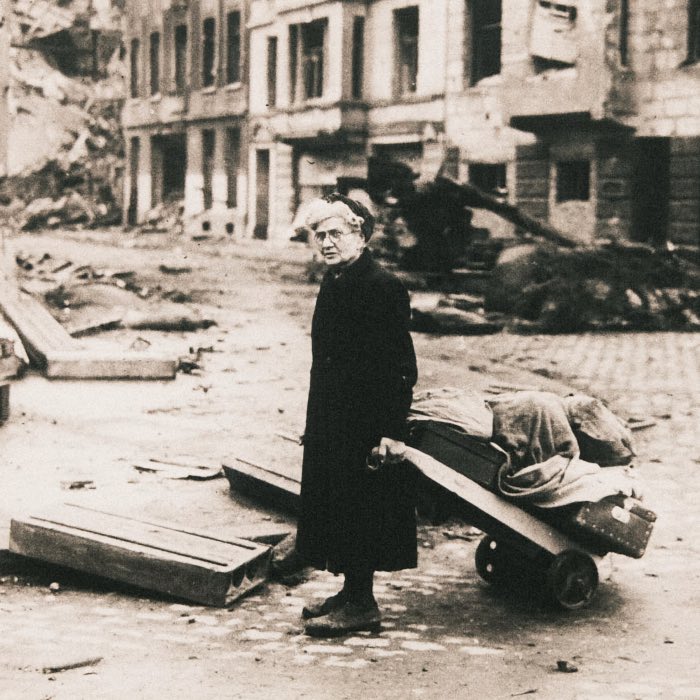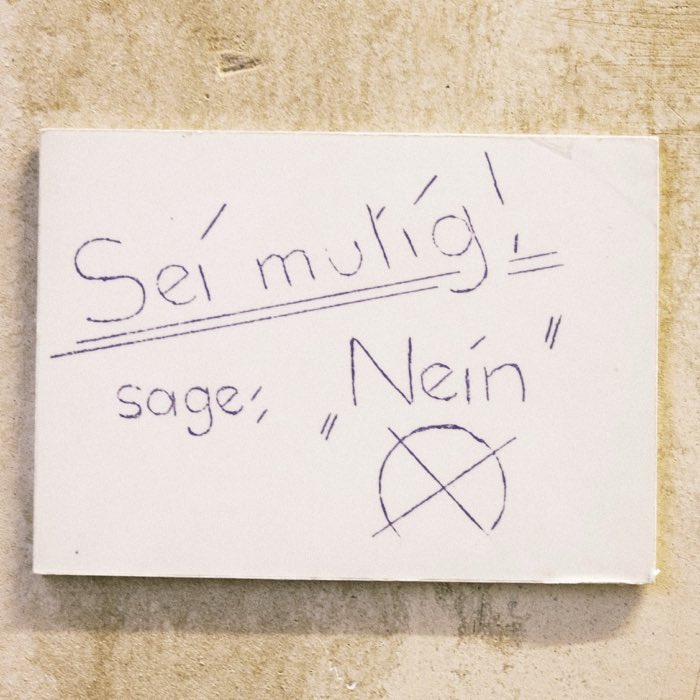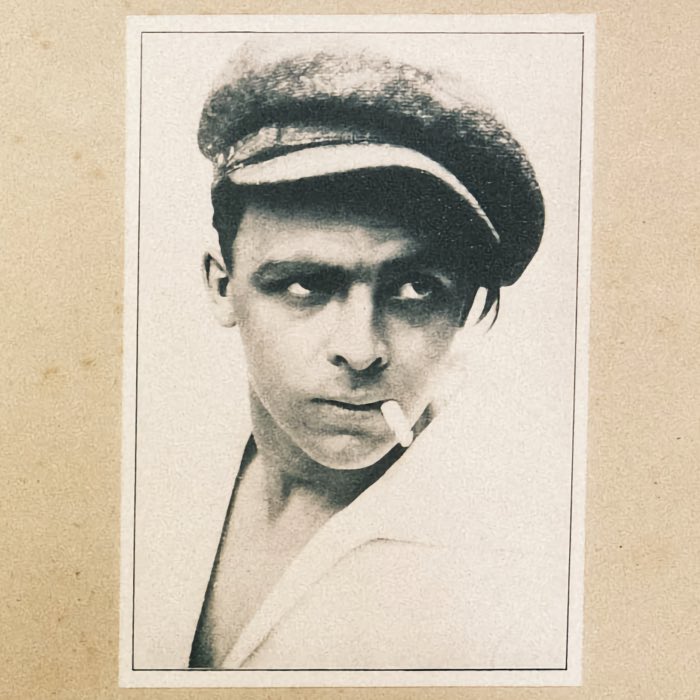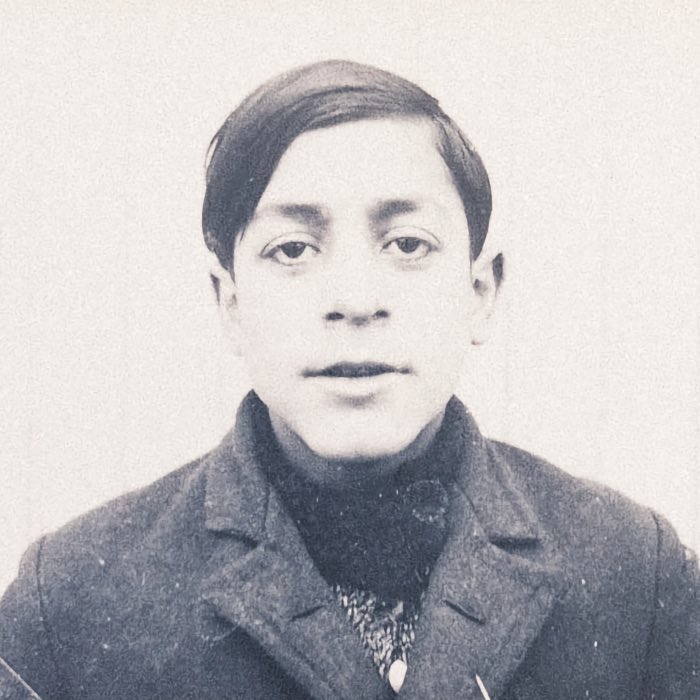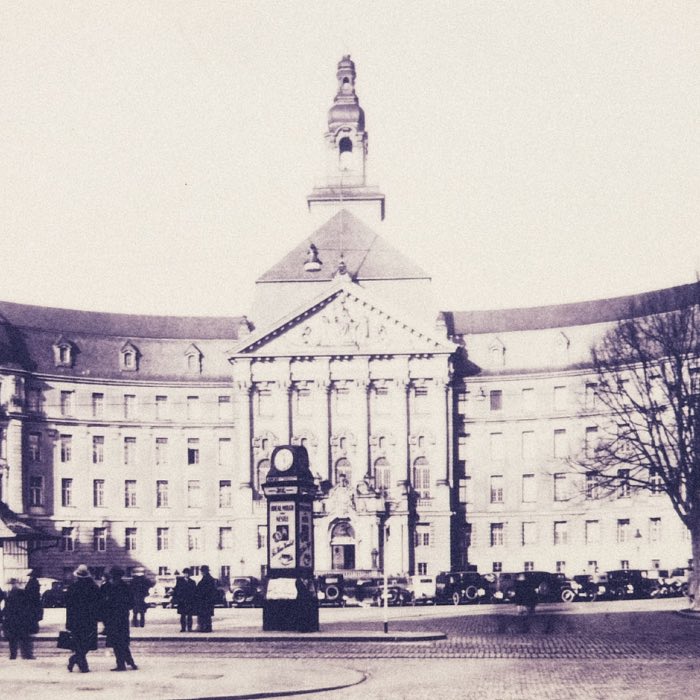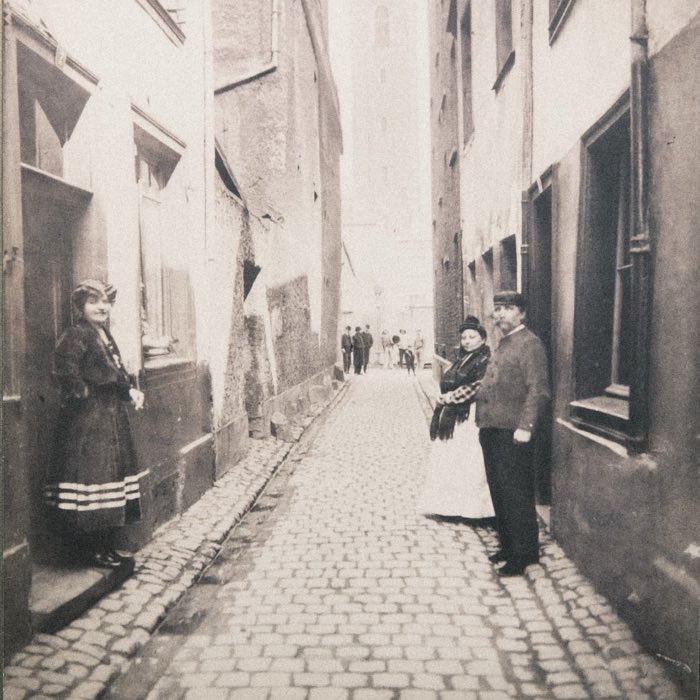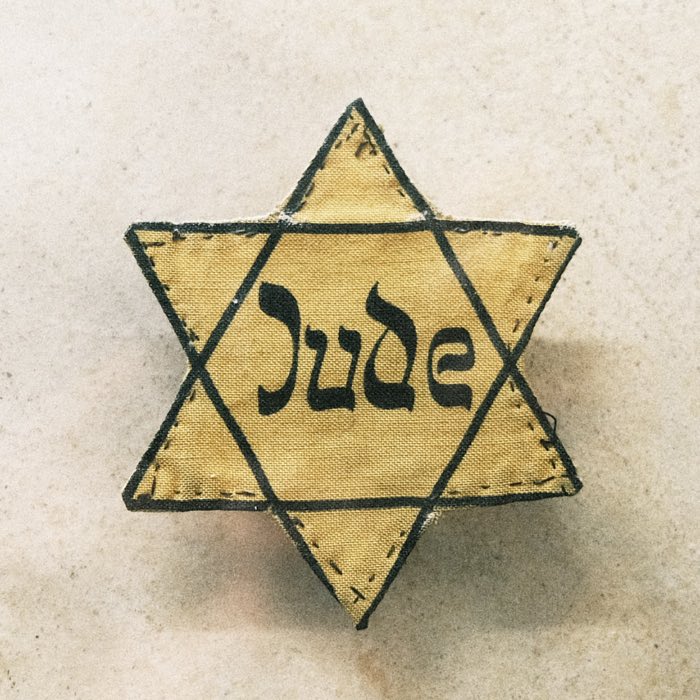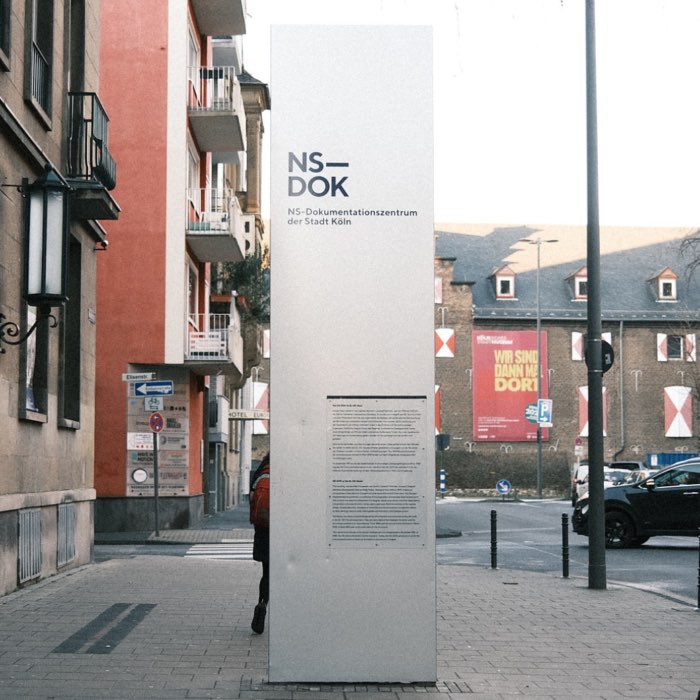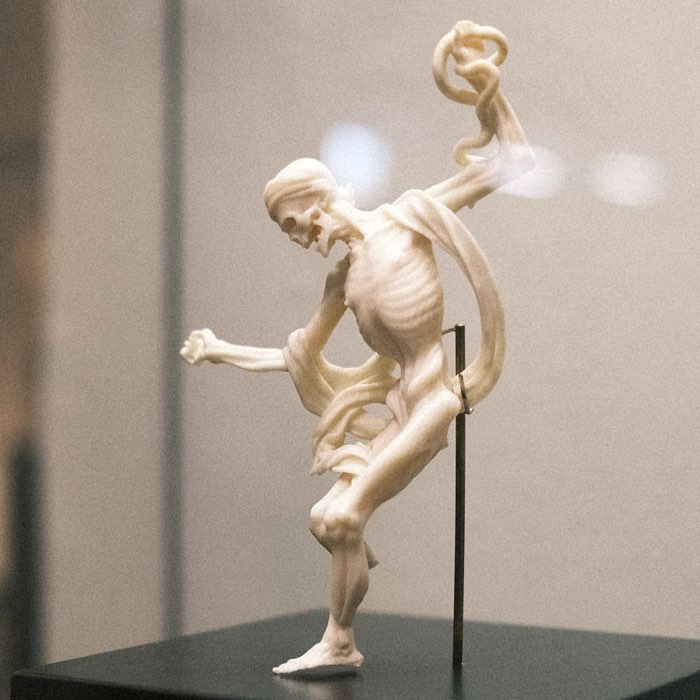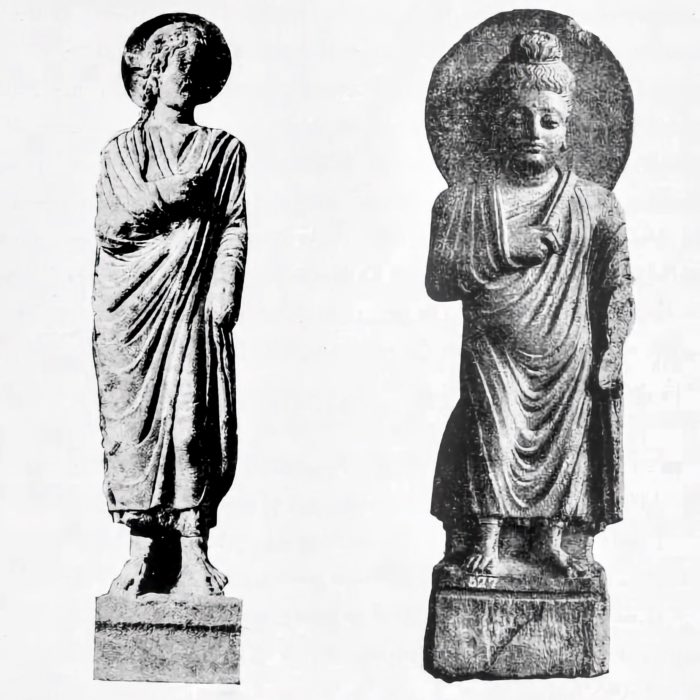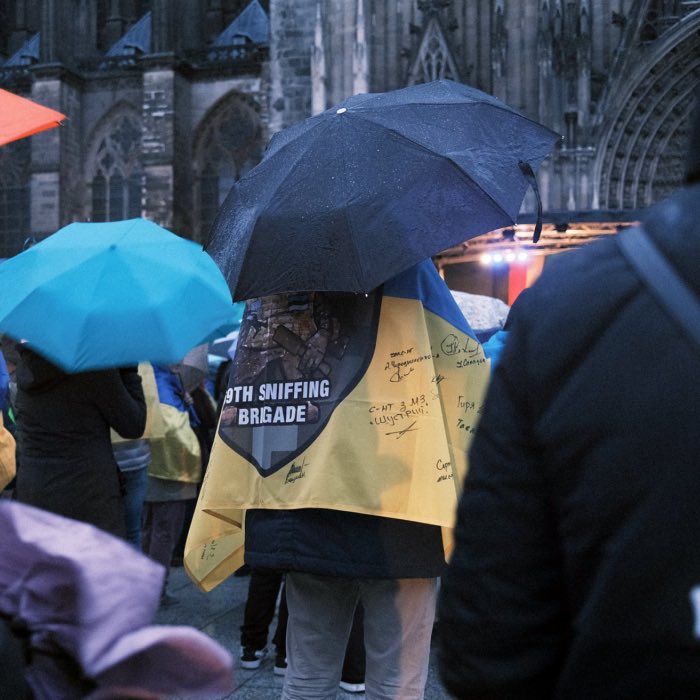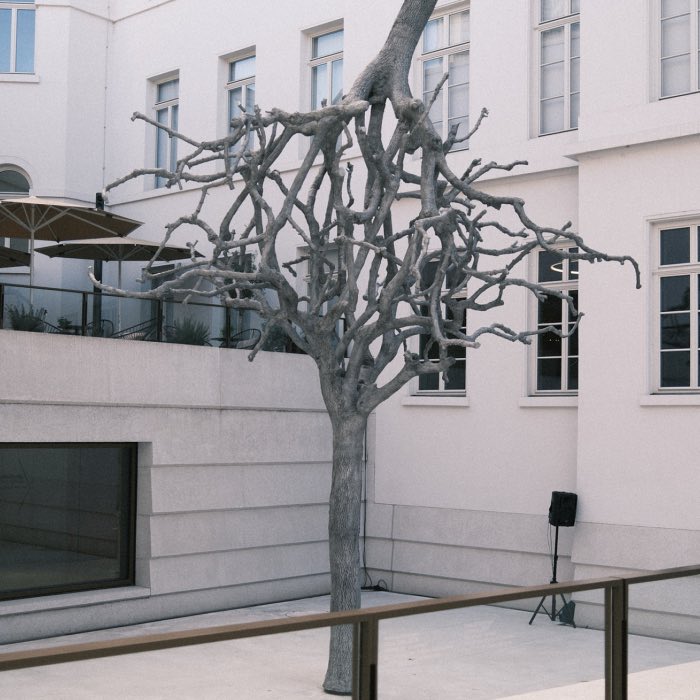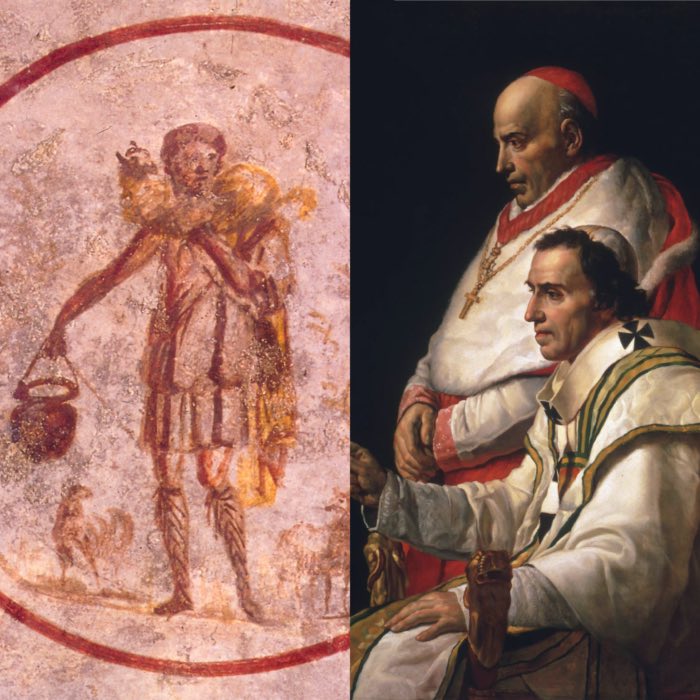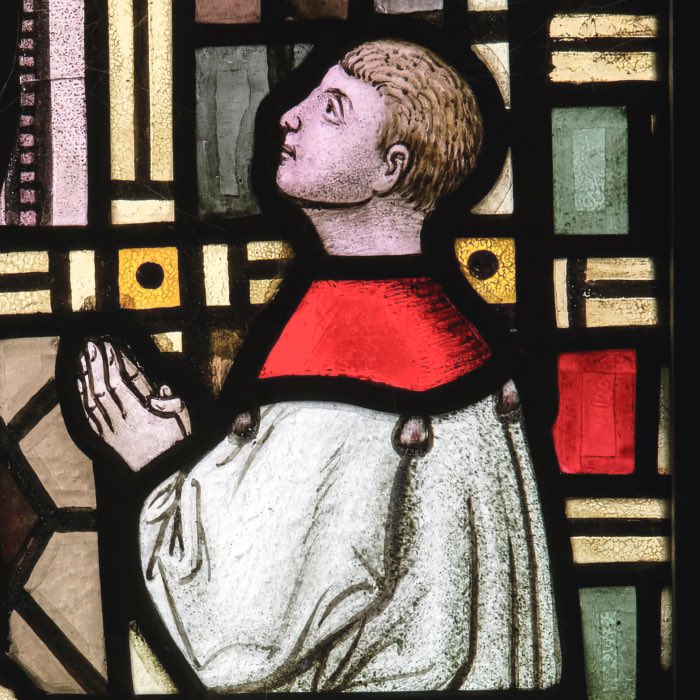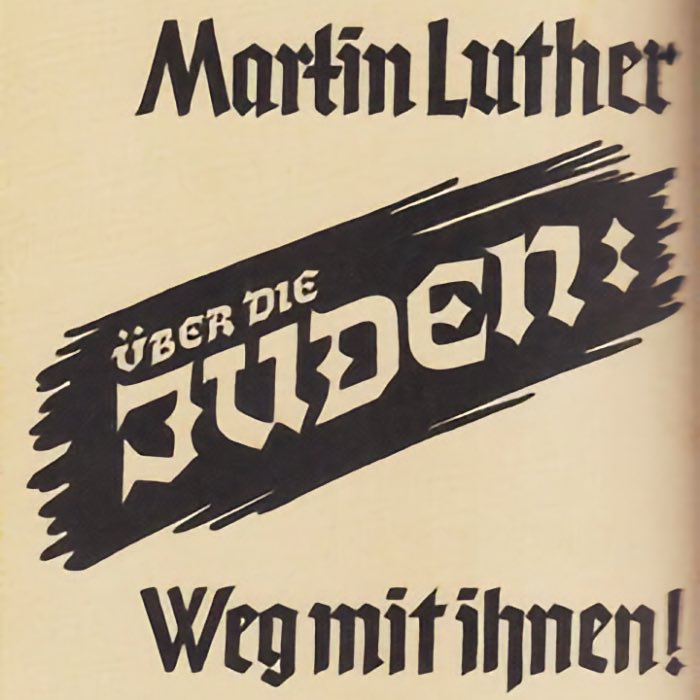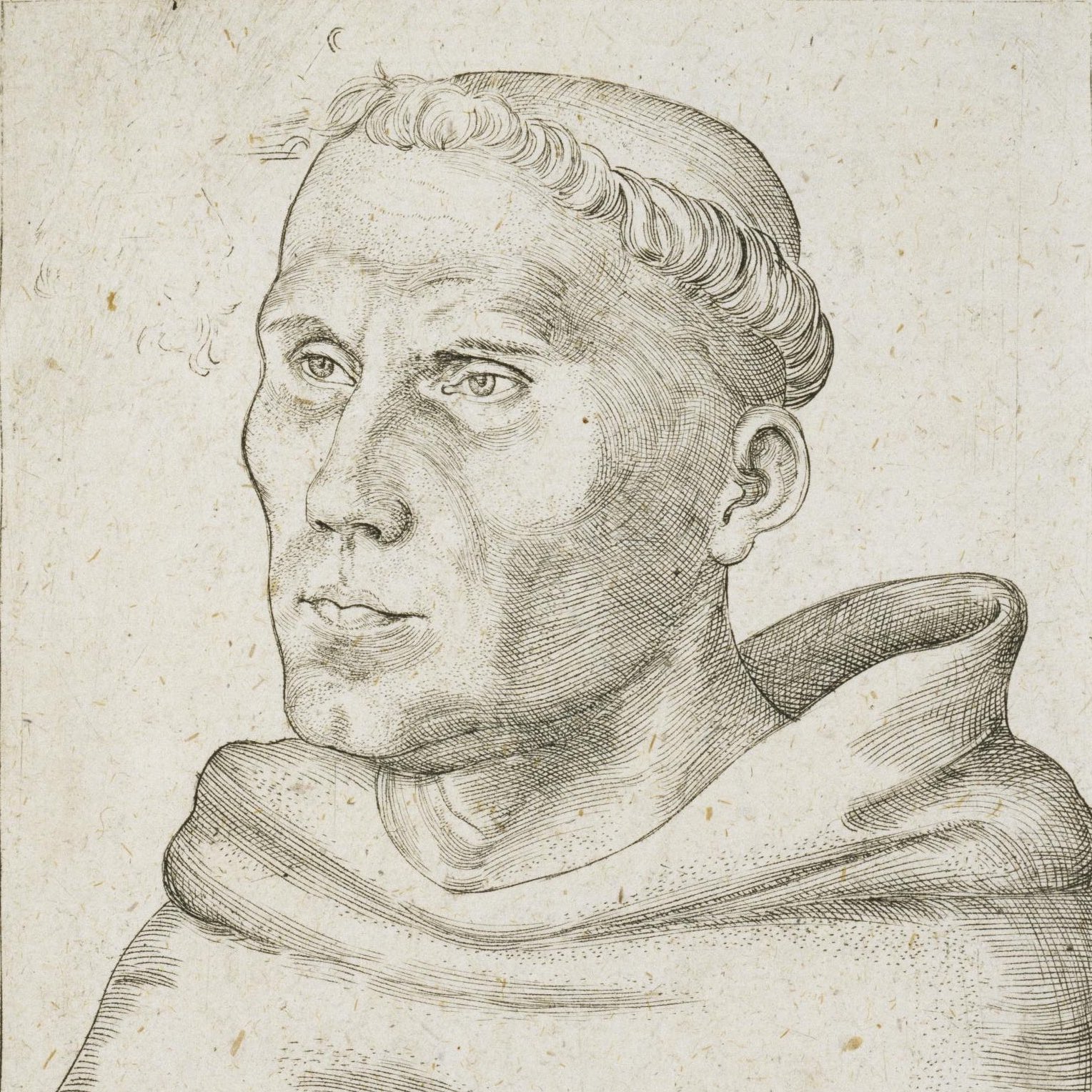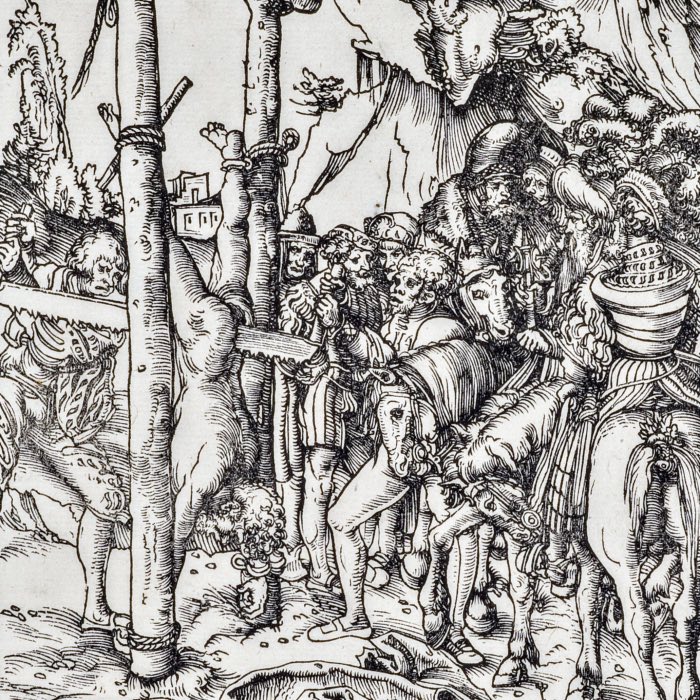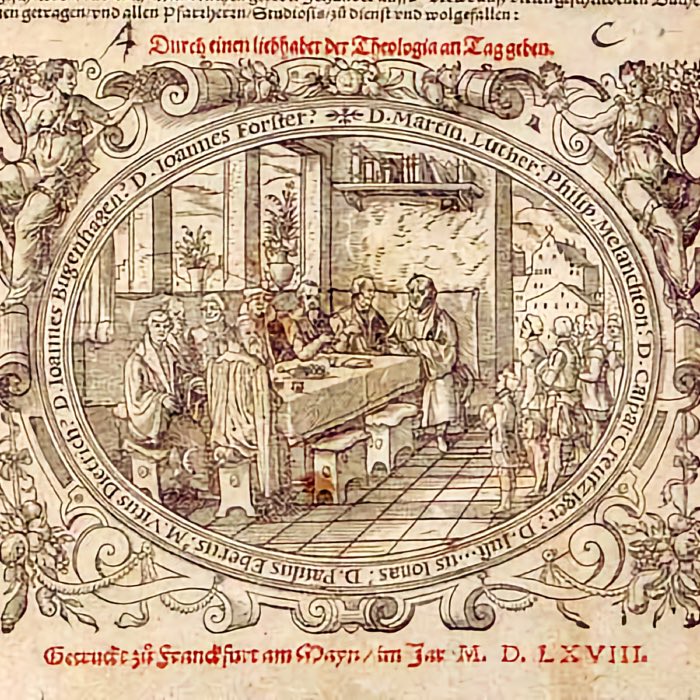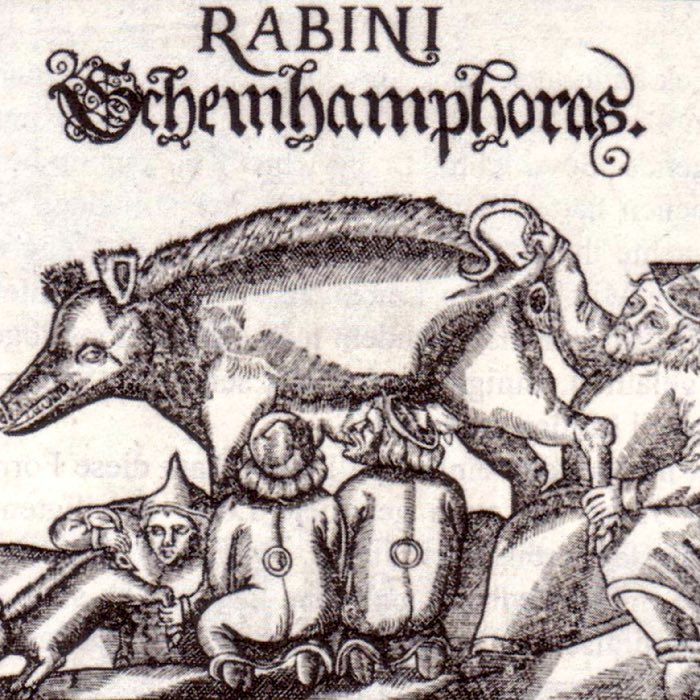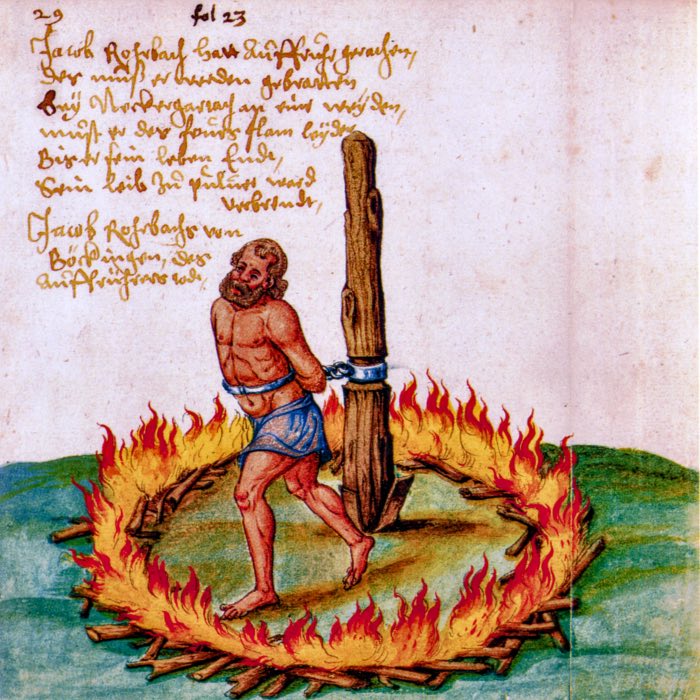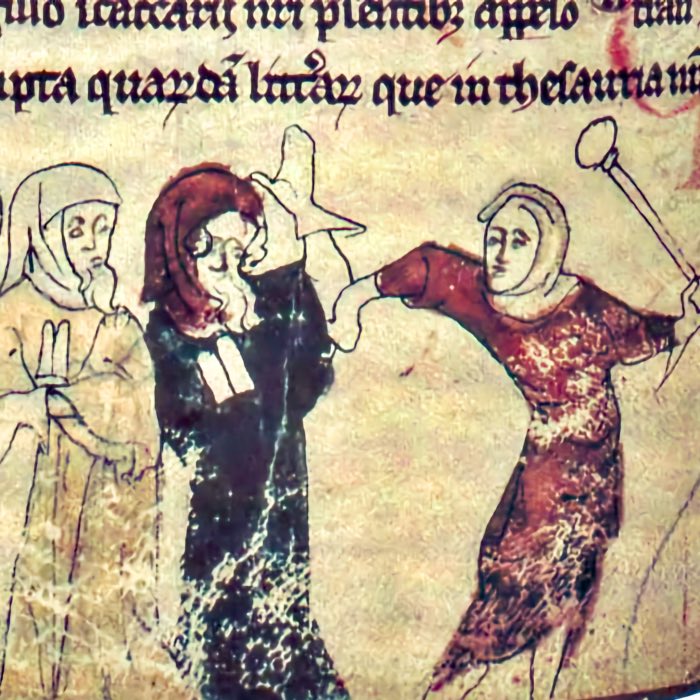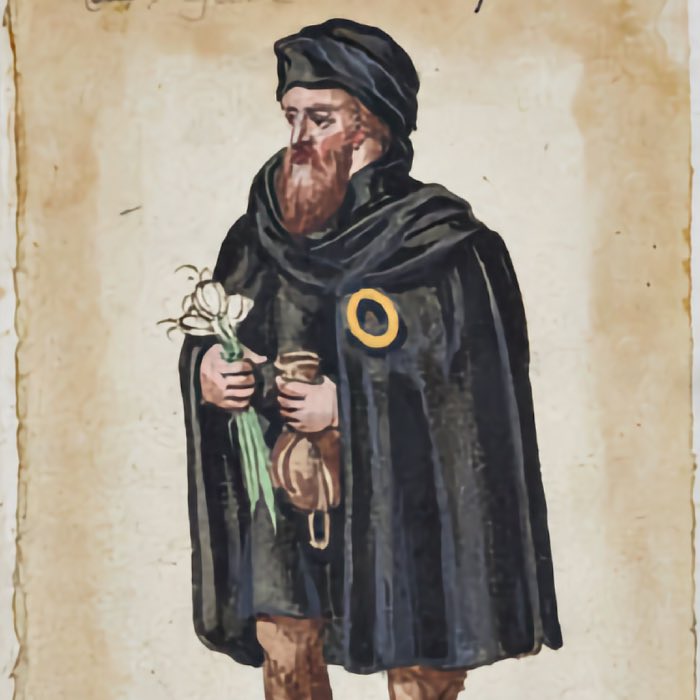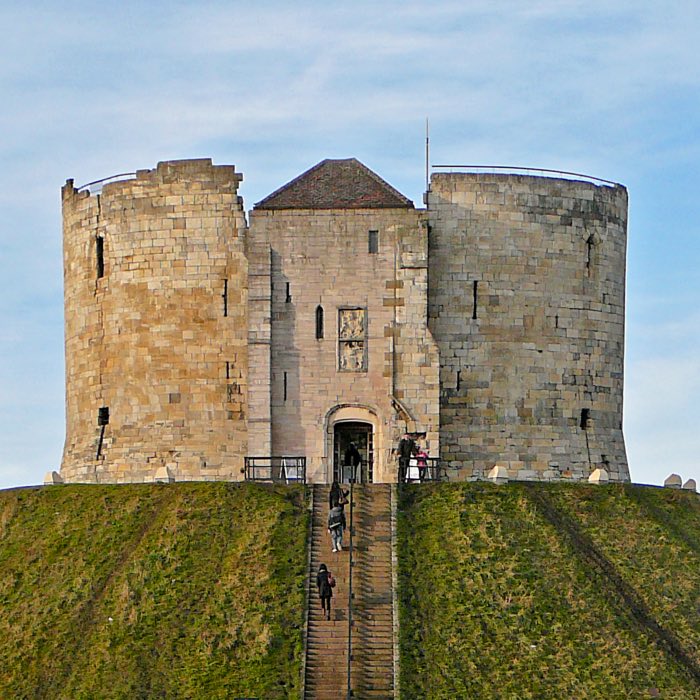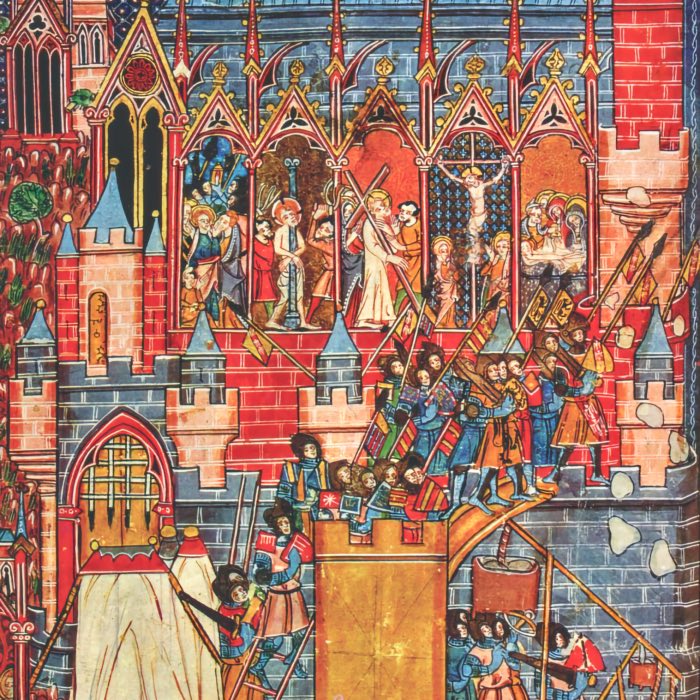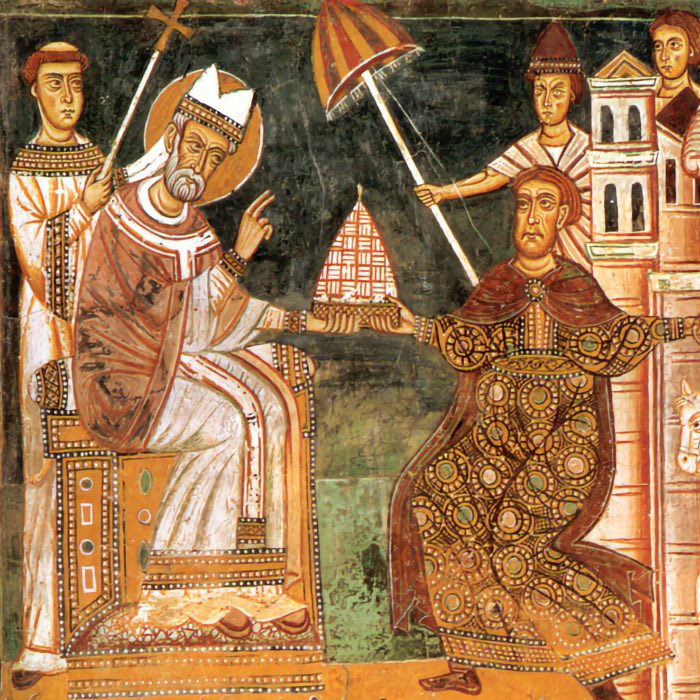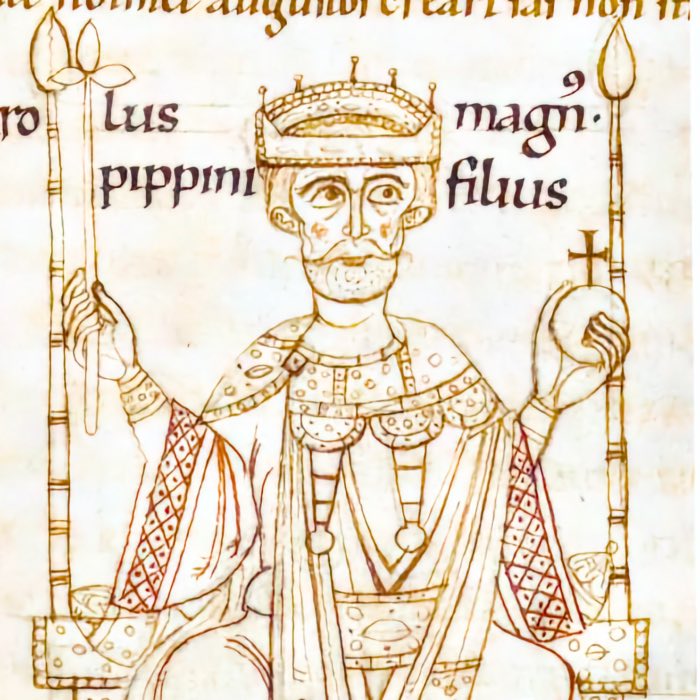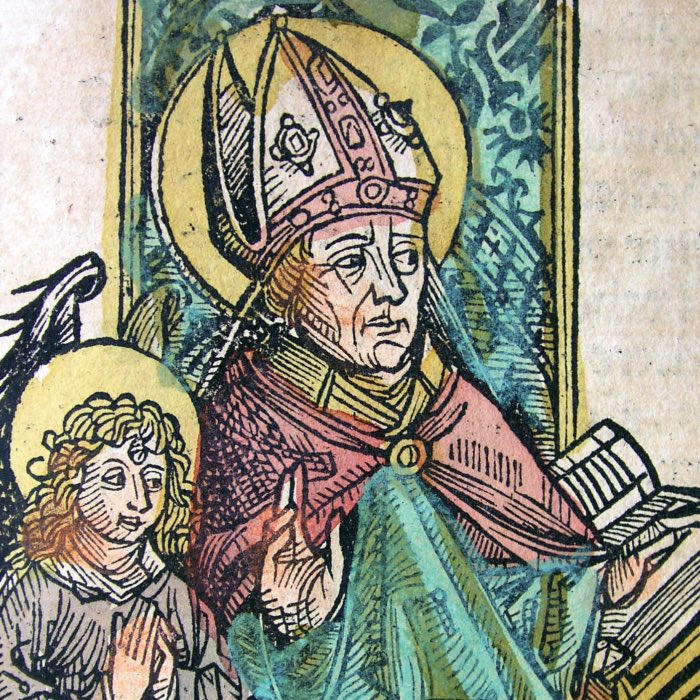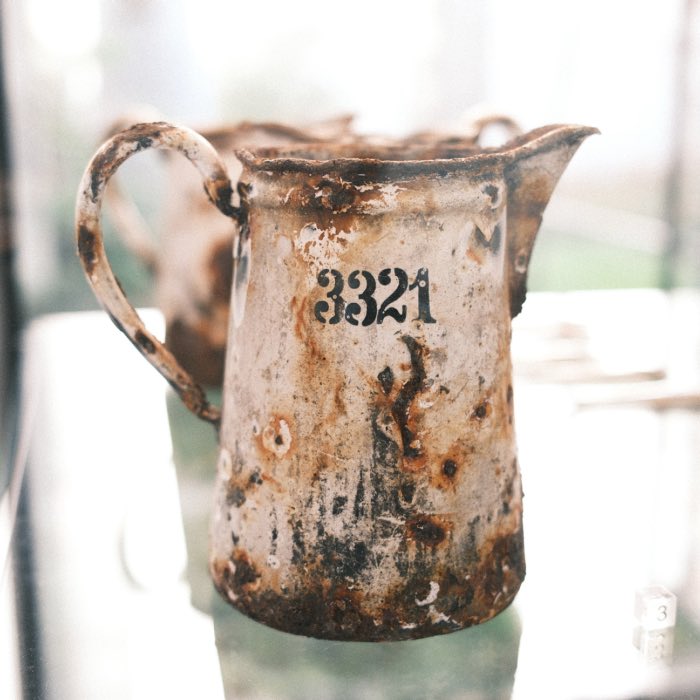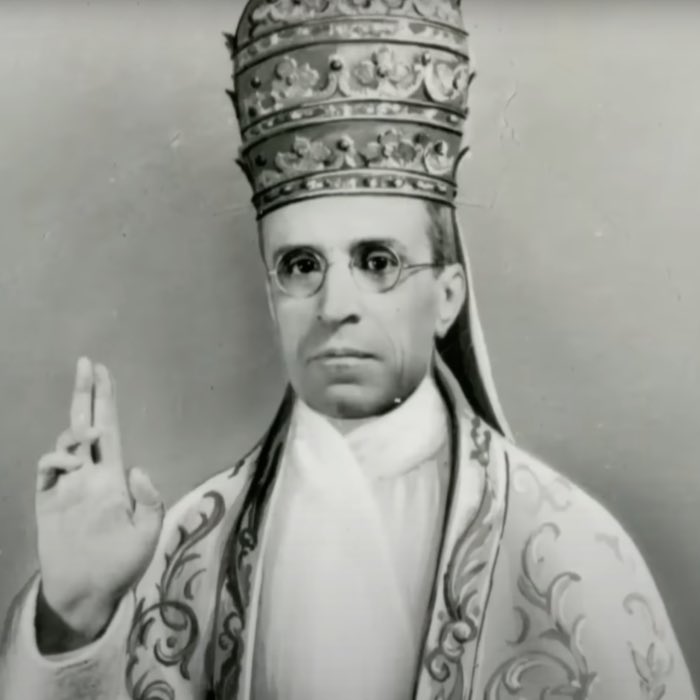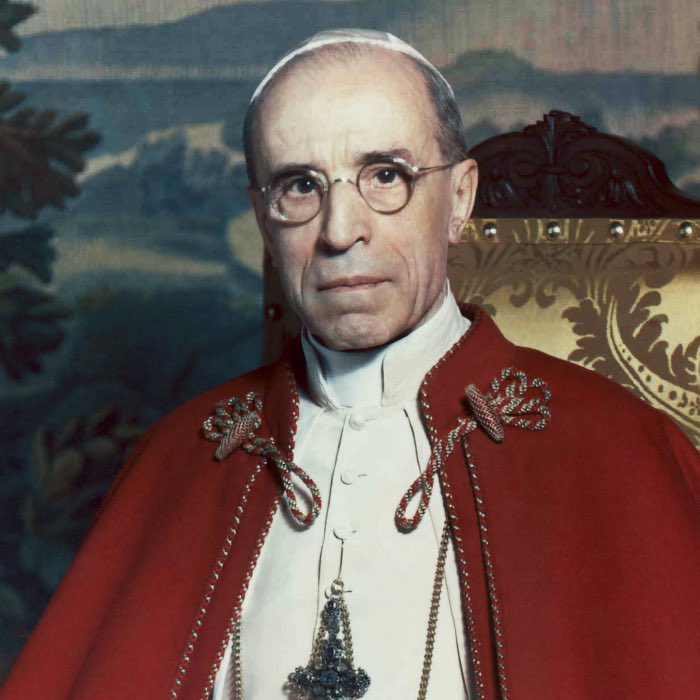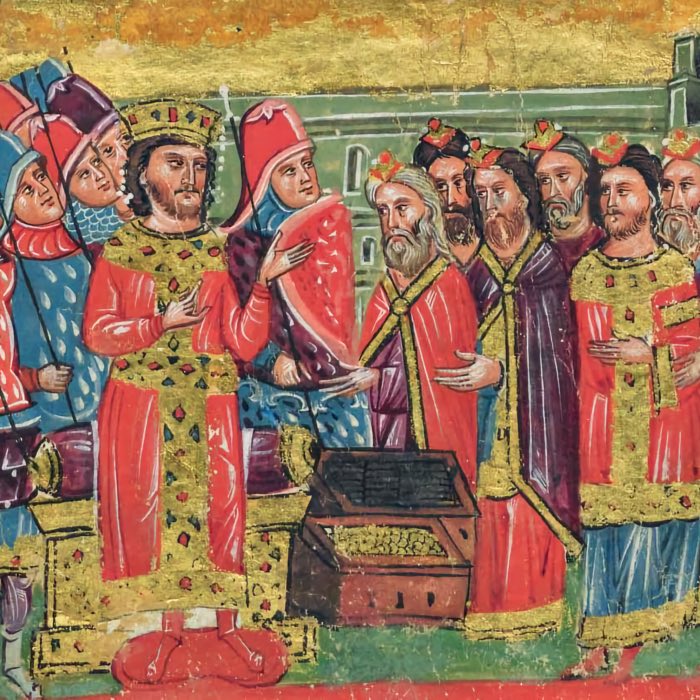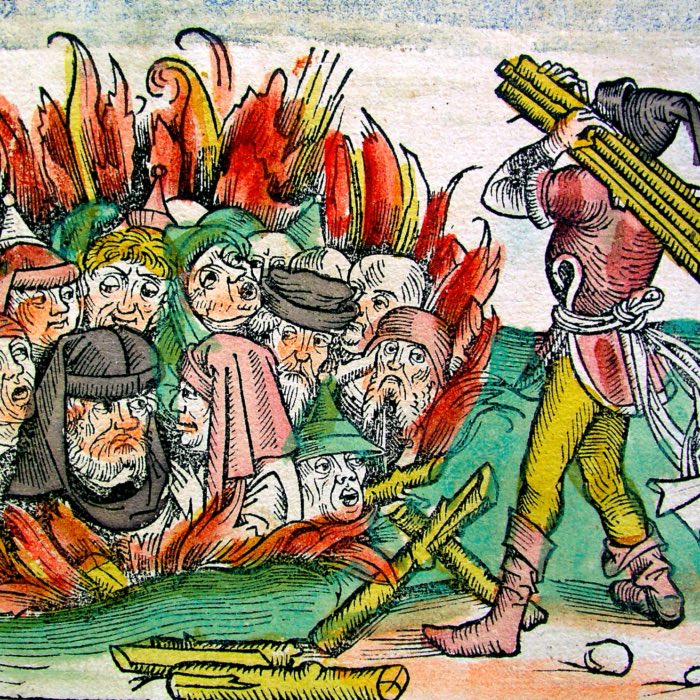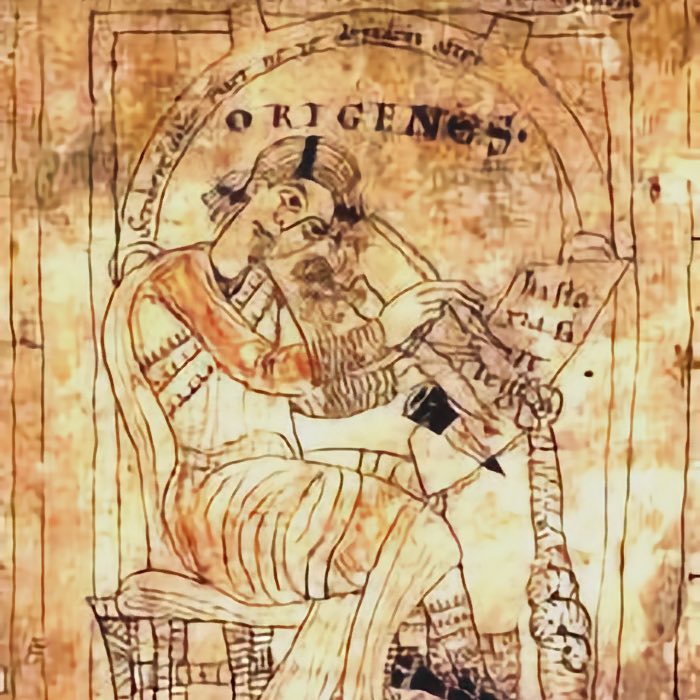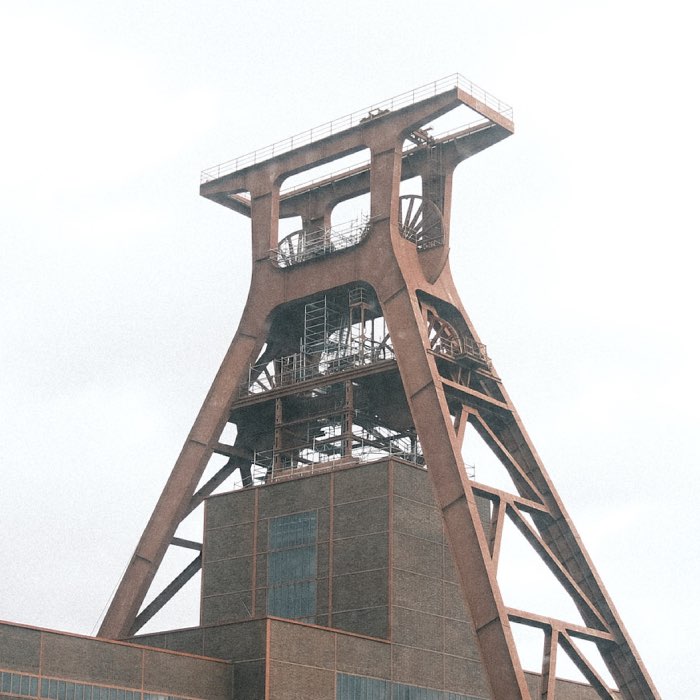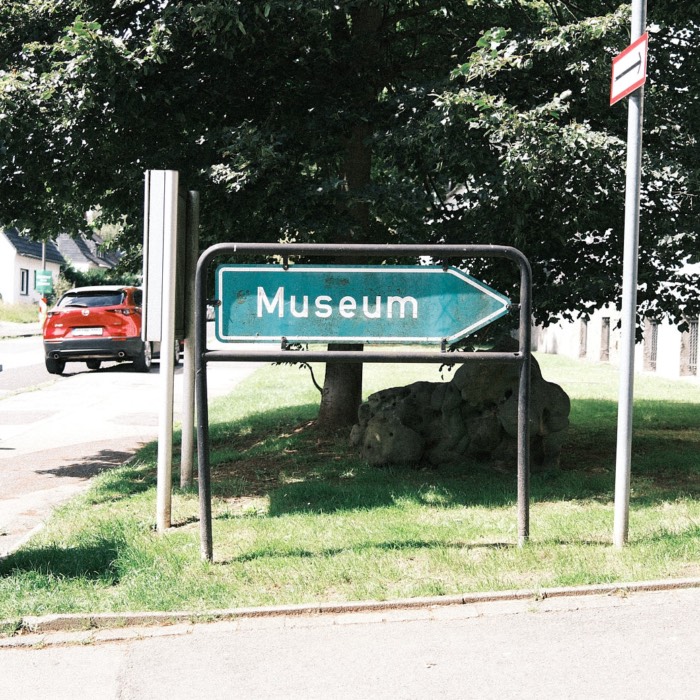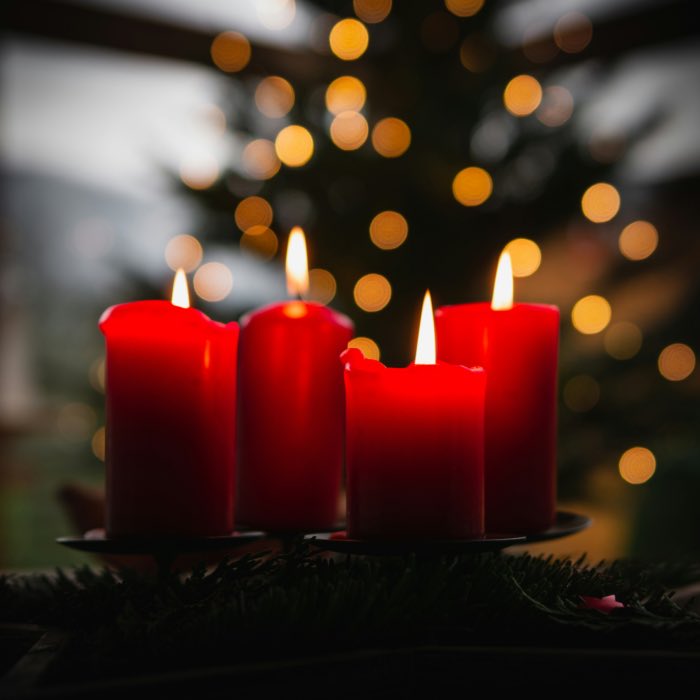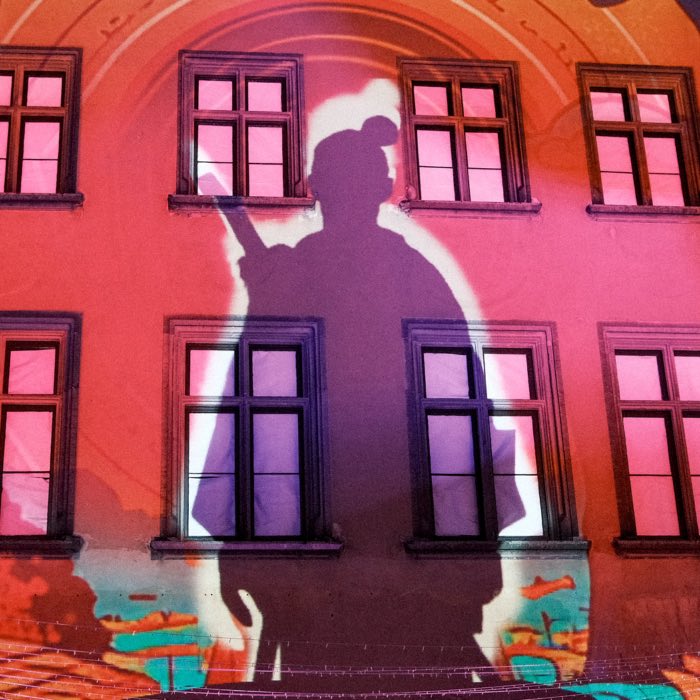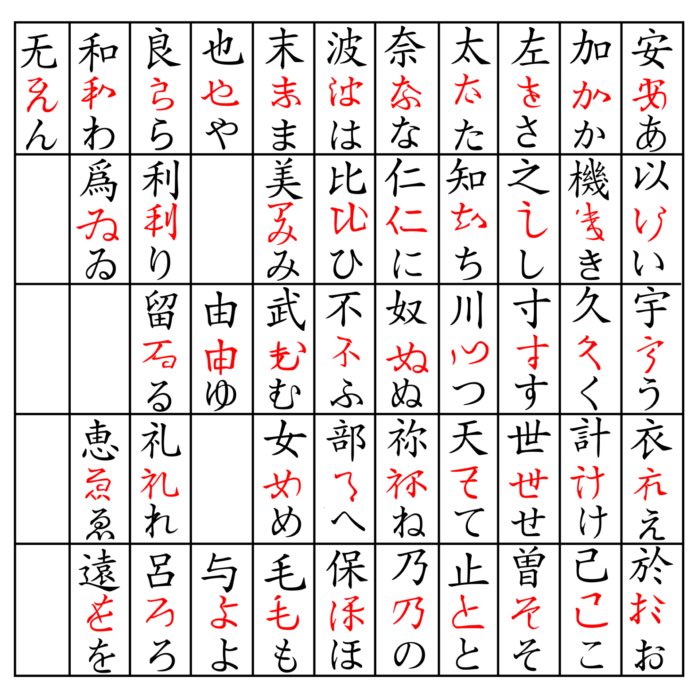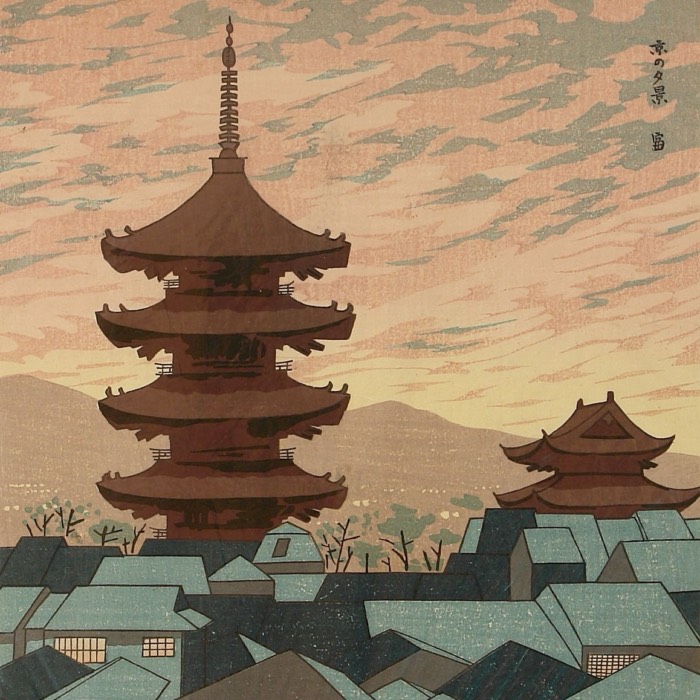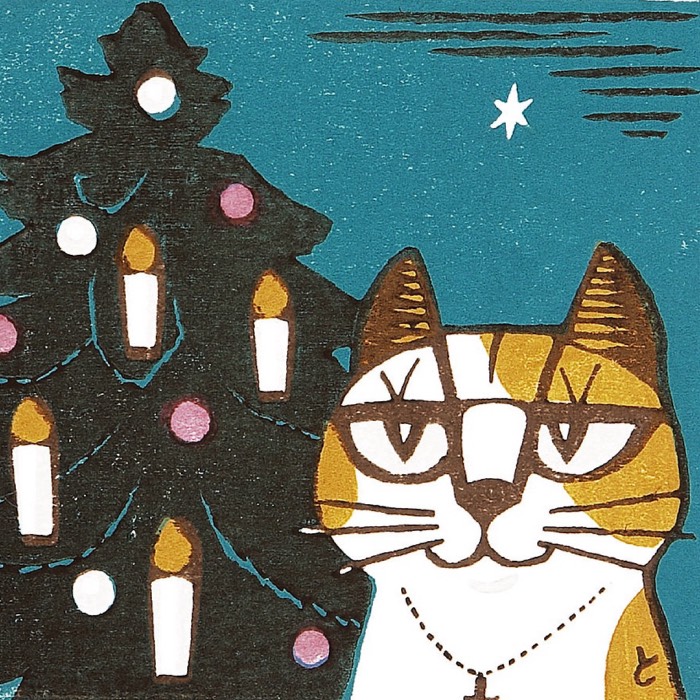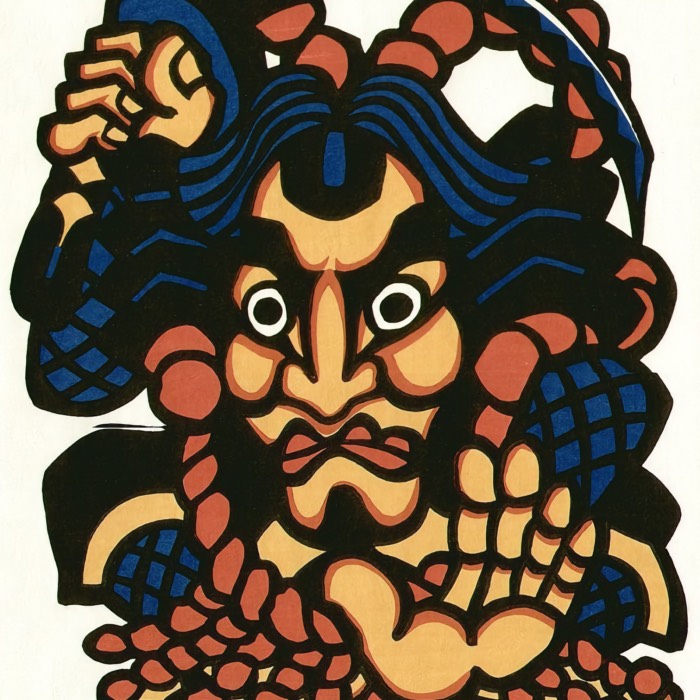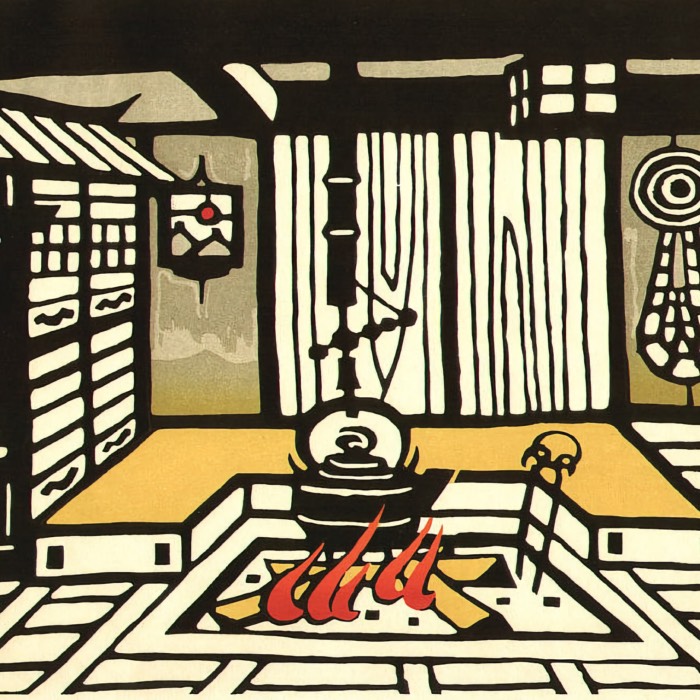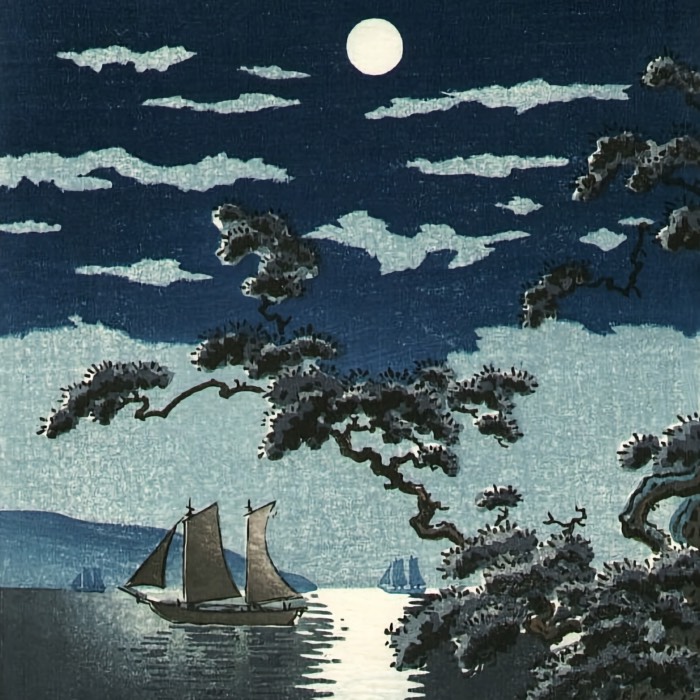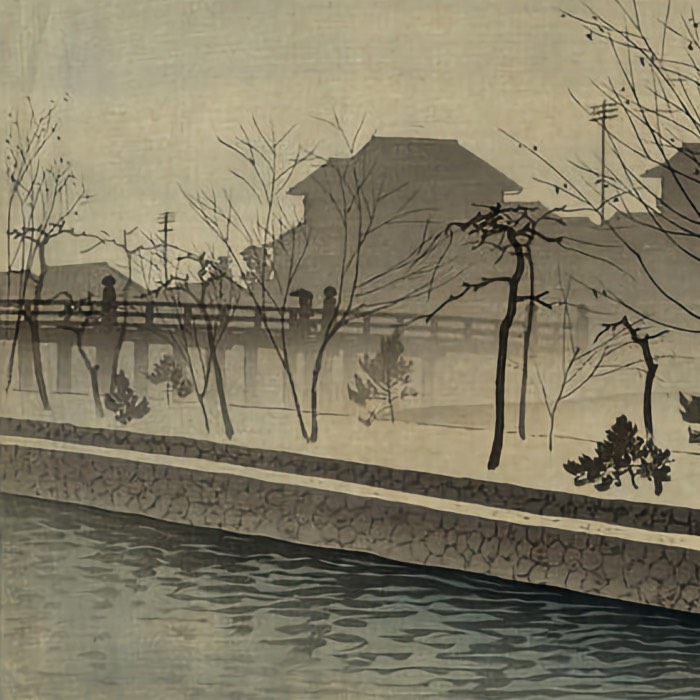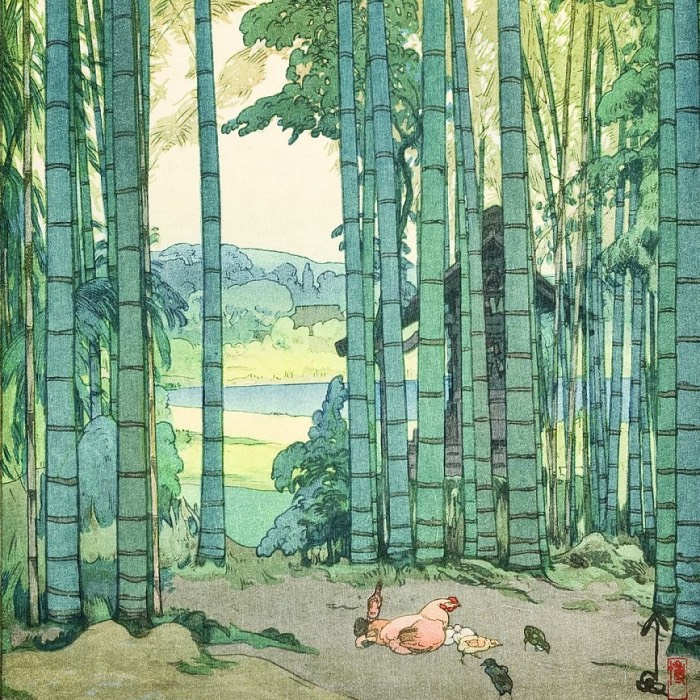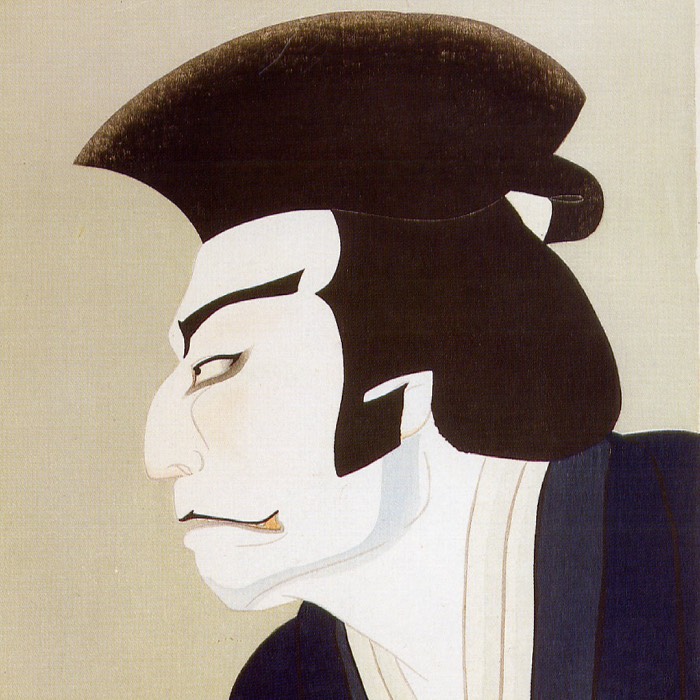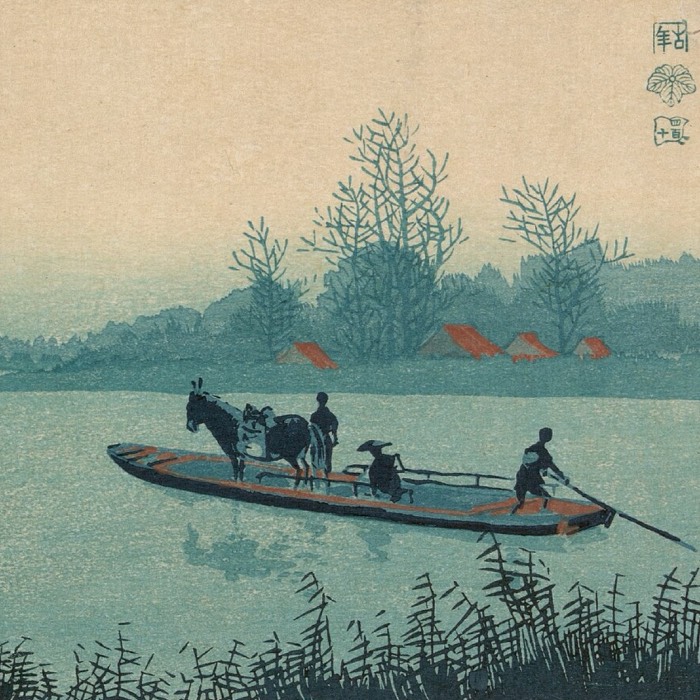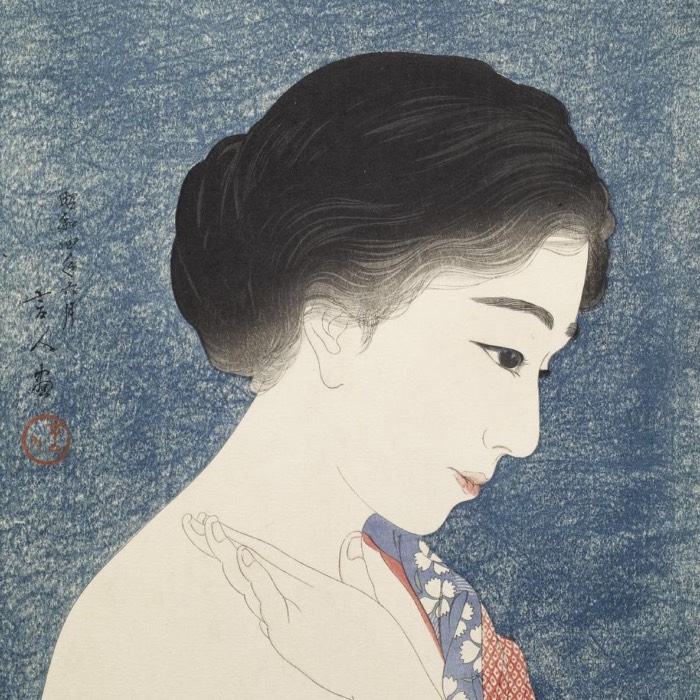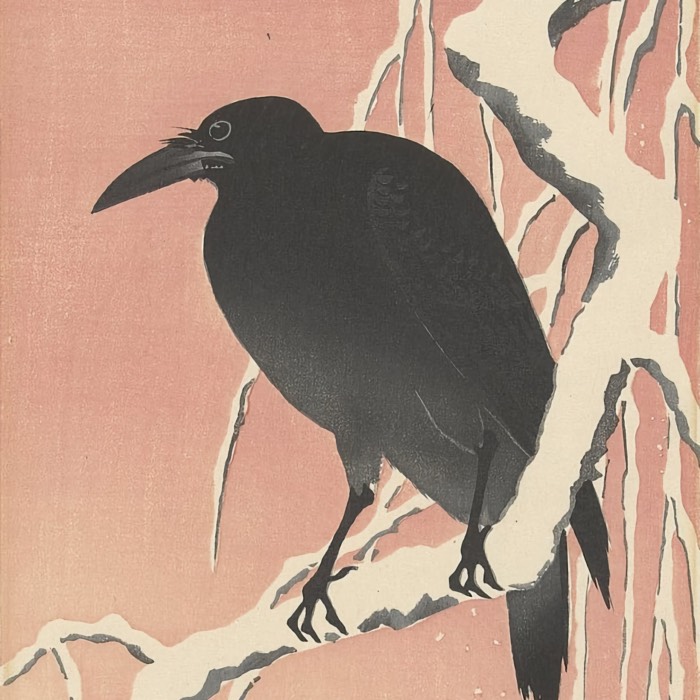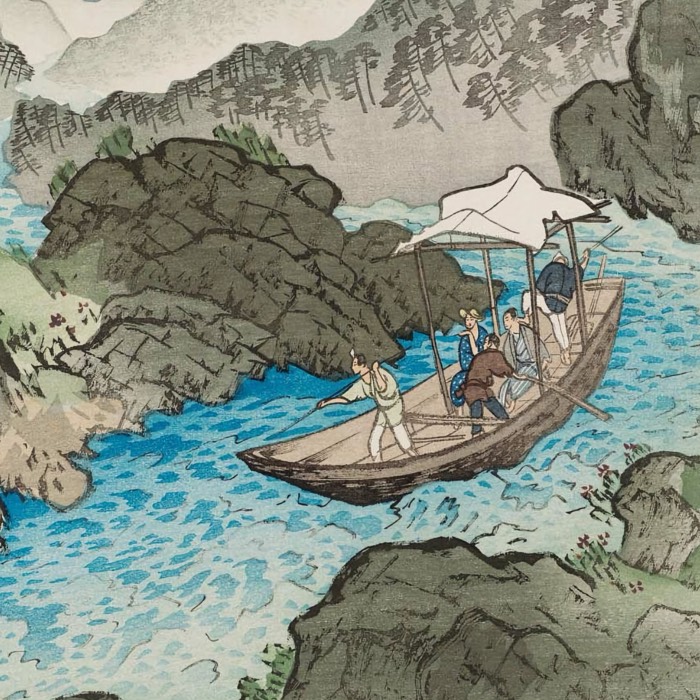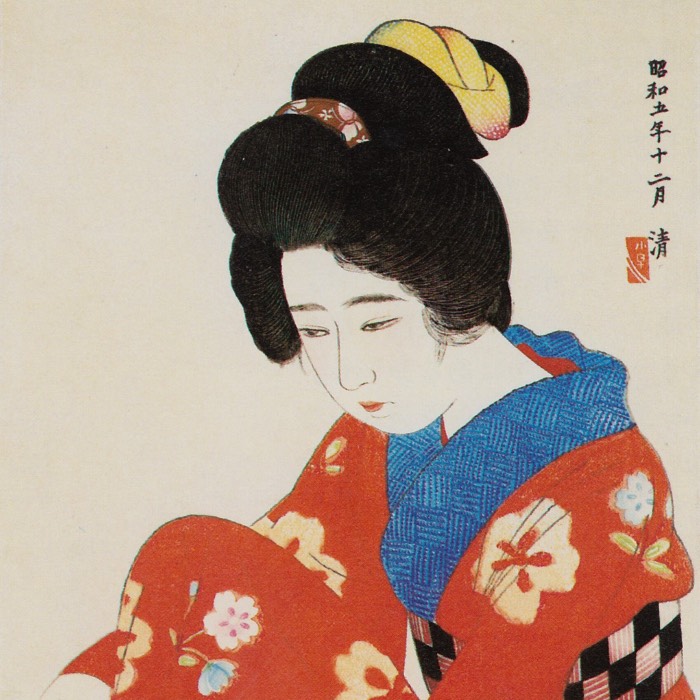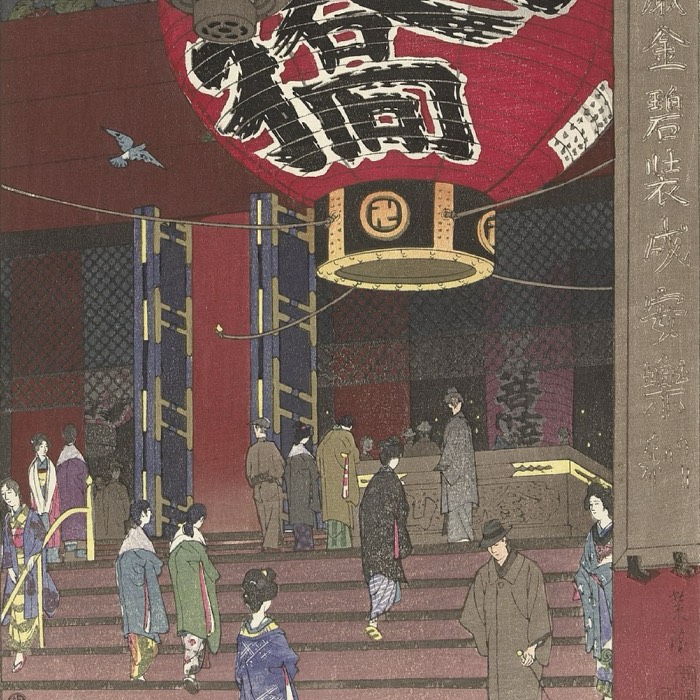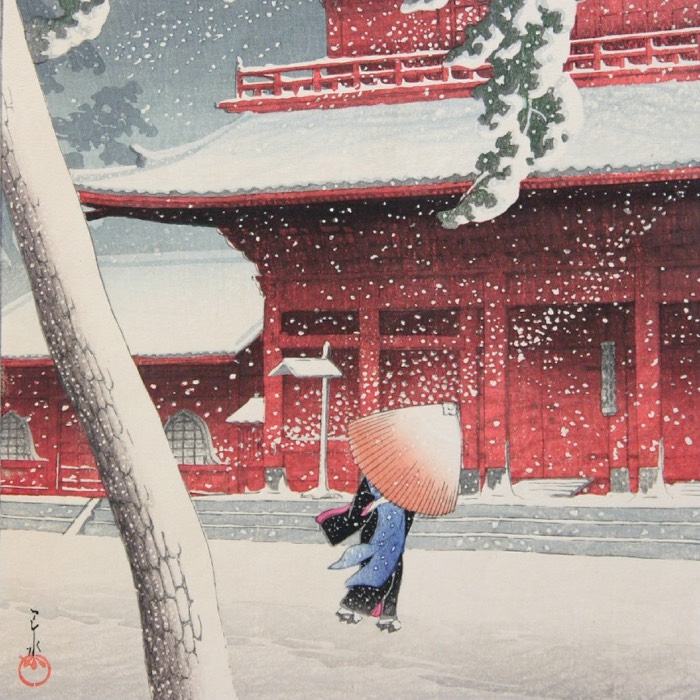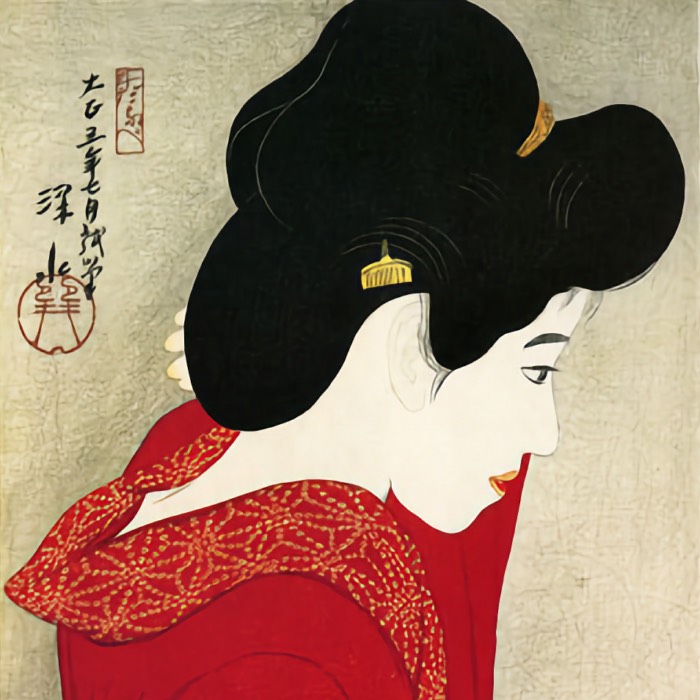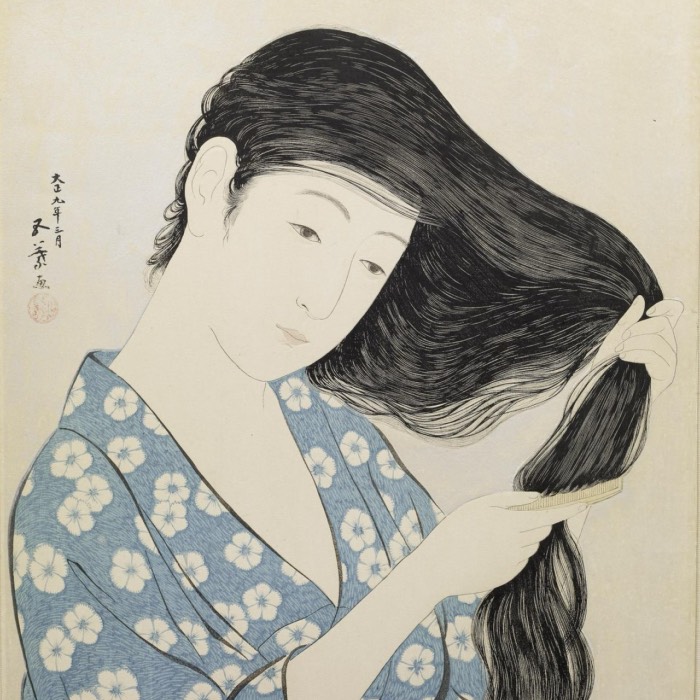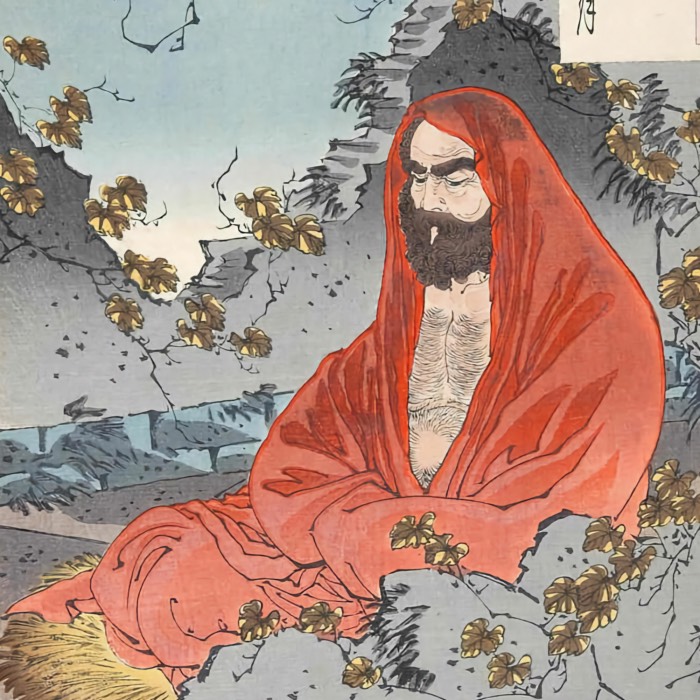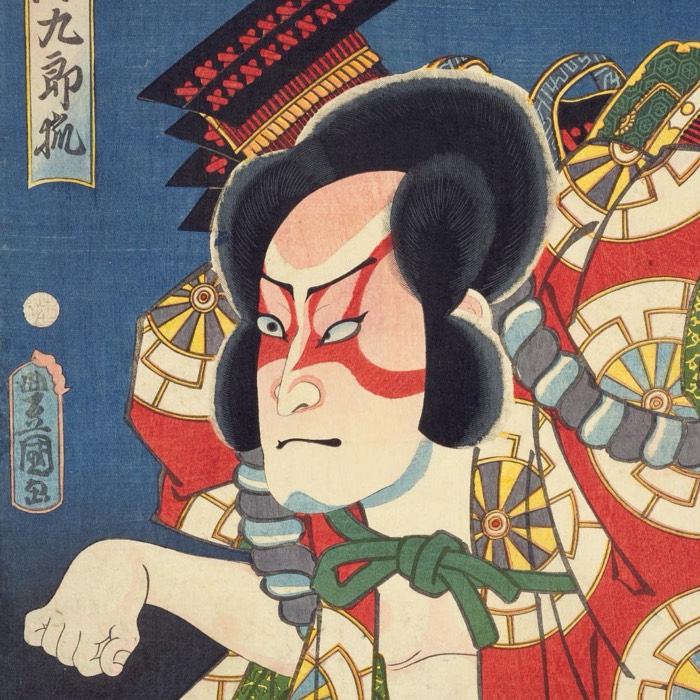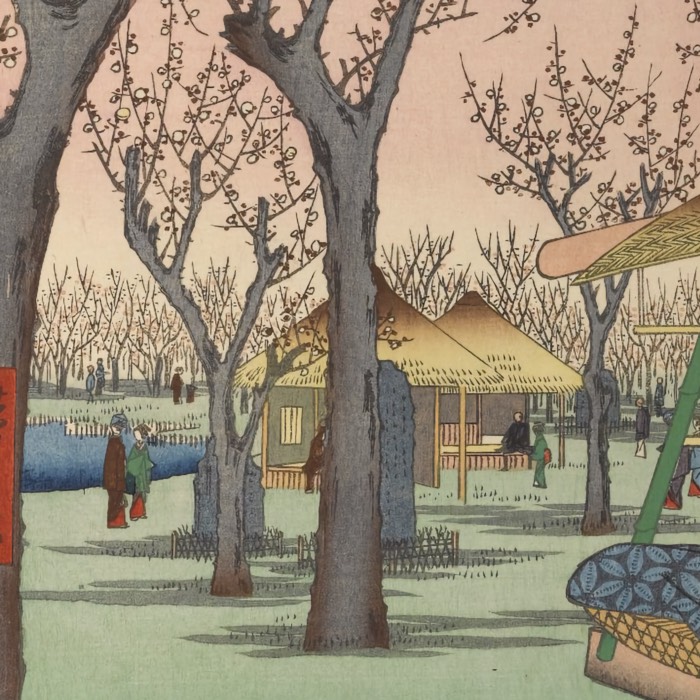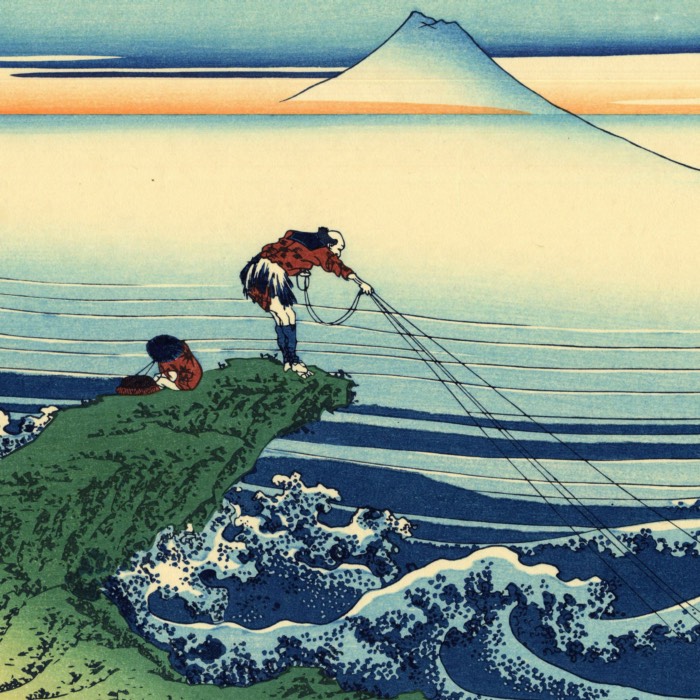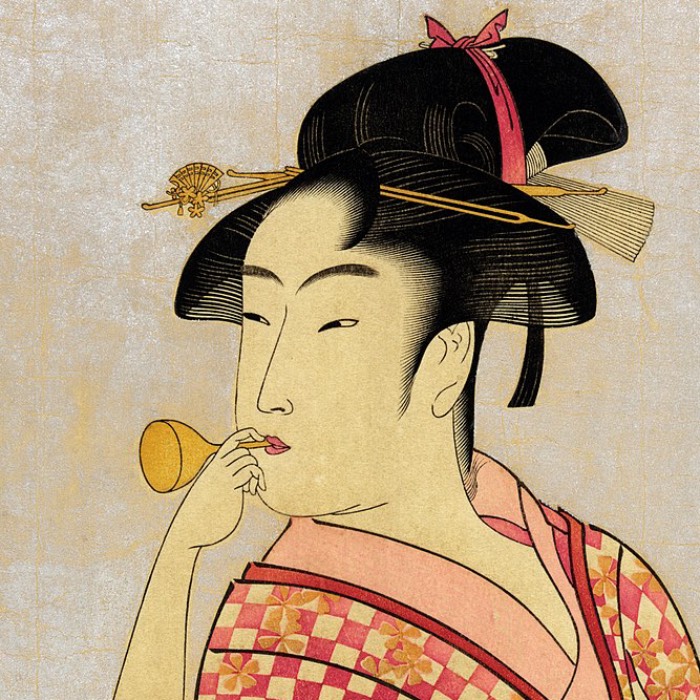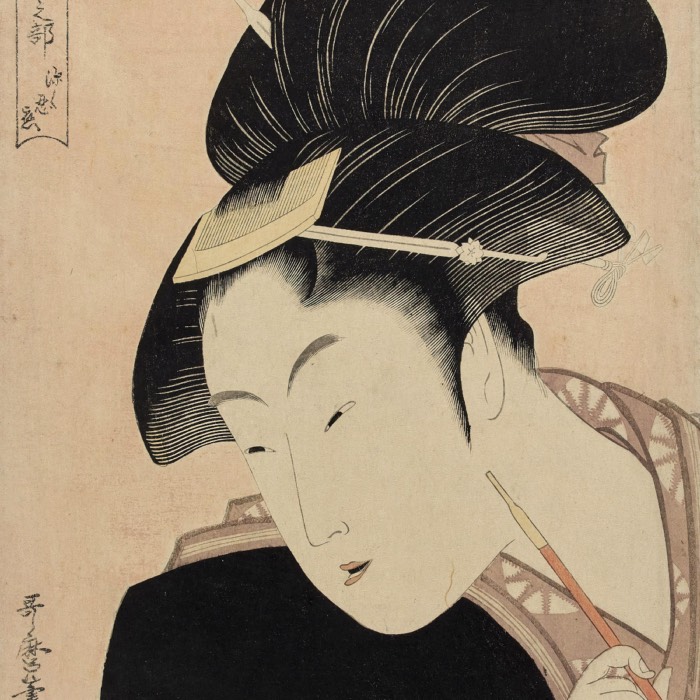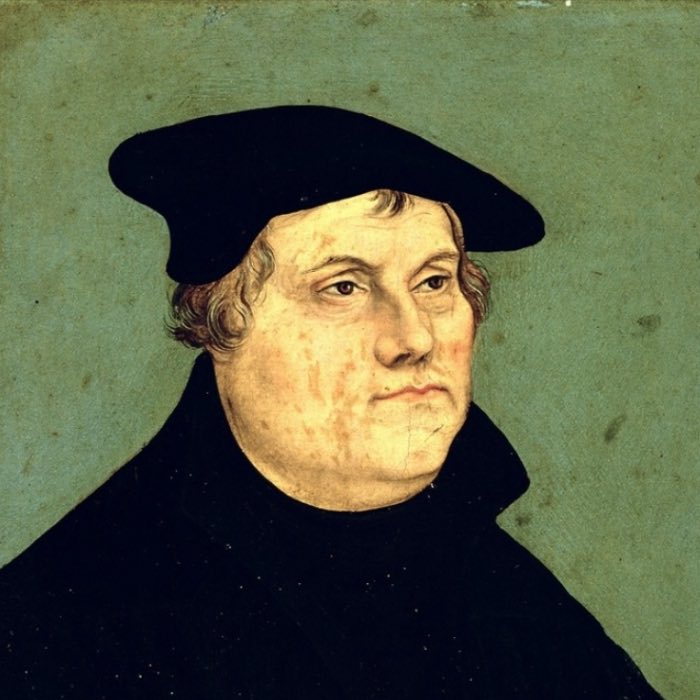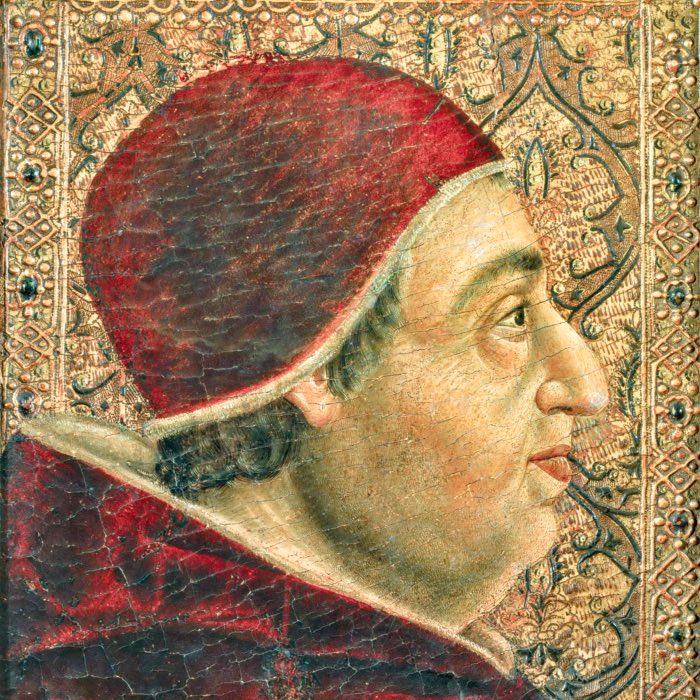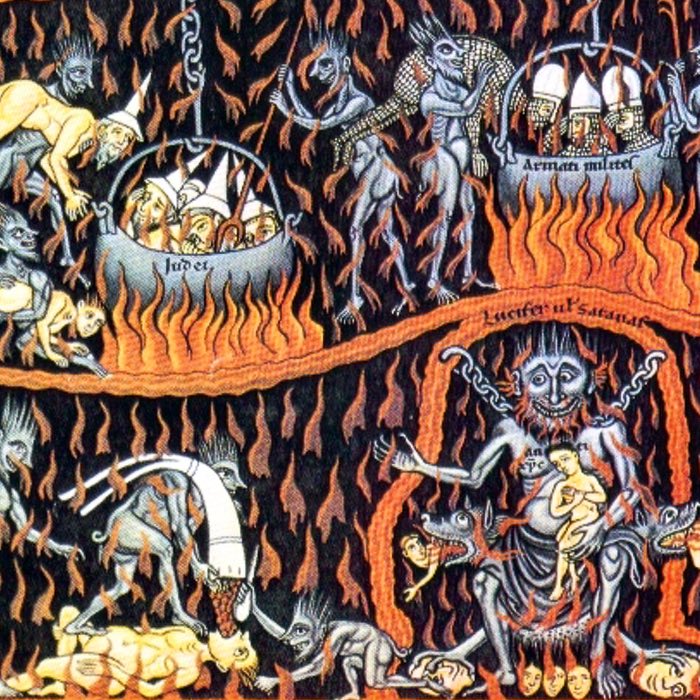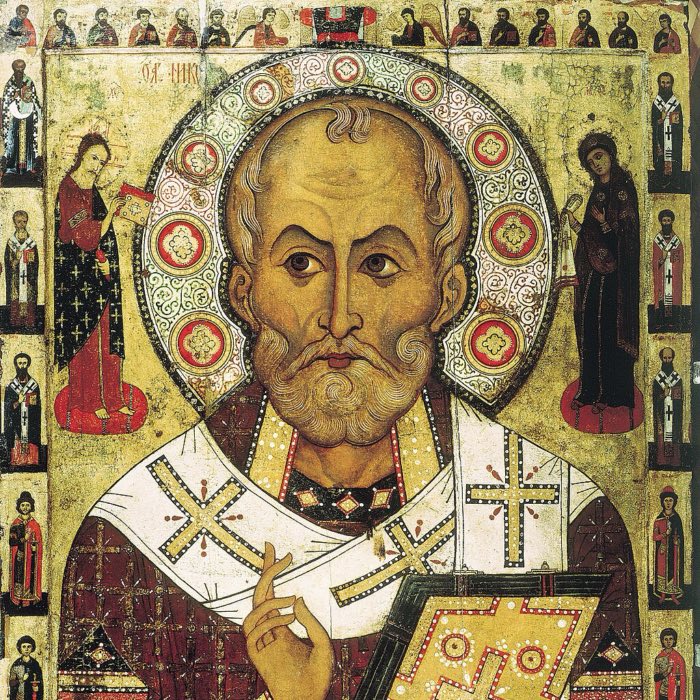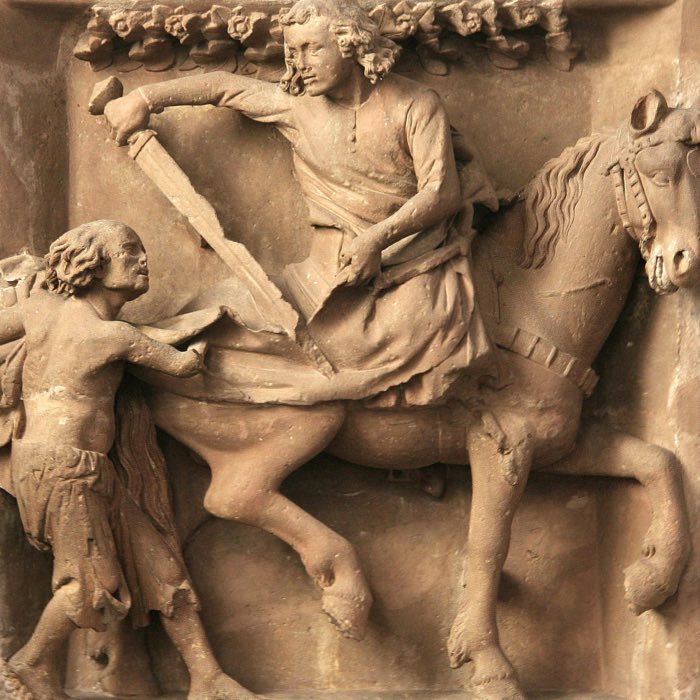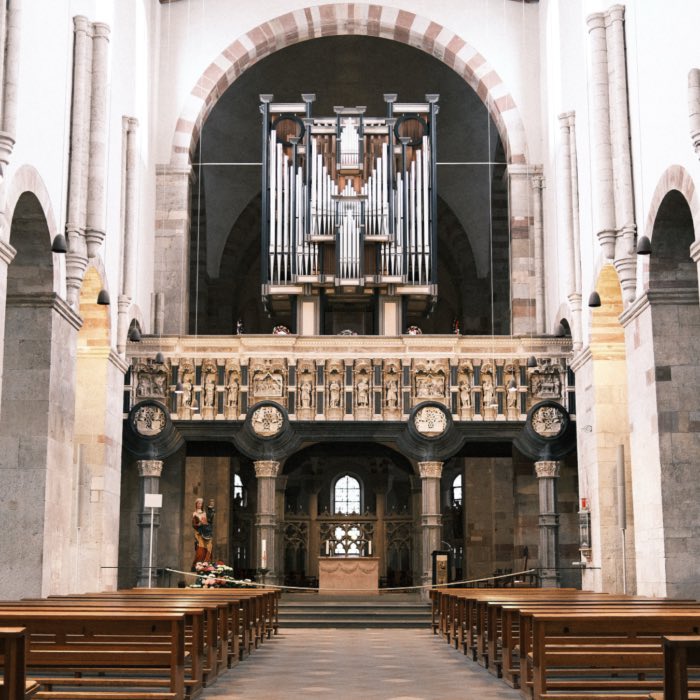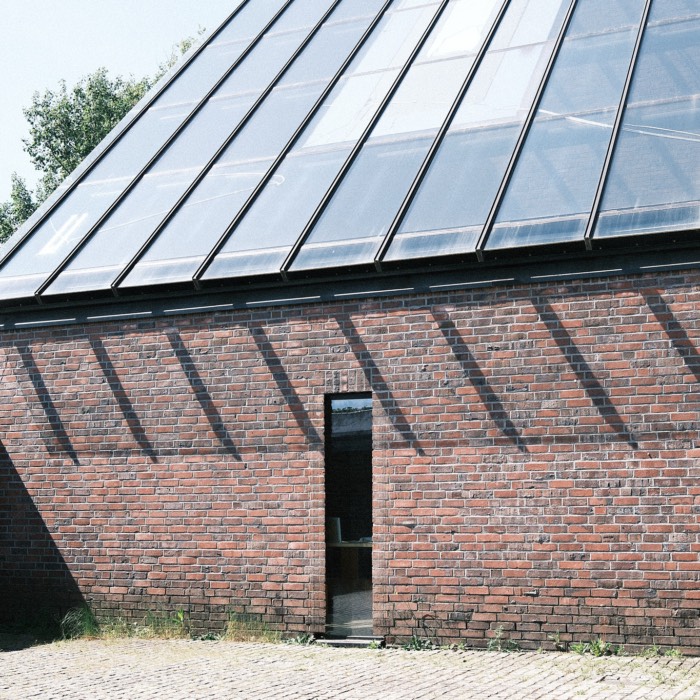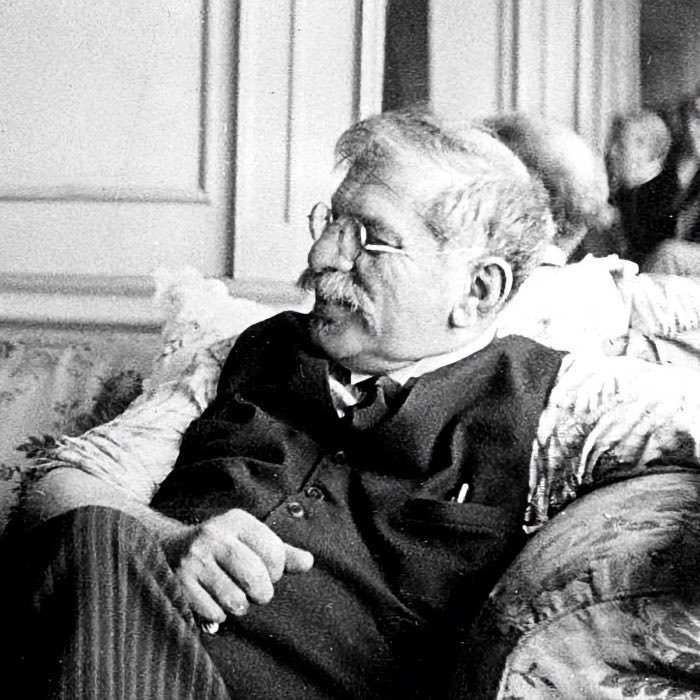Weekend Stories sorted by tags
I enjoy going exploring on weekends (mostly). Here is a collection of stories and photos I gather along the way. All posts are CC BY-NC-SA licensed unless otherwise stated. Feel free to share, remix, and adapt the content as long as you give appropriate credit and distribute your contributions under the same license.
Back to stories · diary · RSS · Mastodon · flickr · simple view · grid view
- African Culture 16
- American Culture 9
- Ancient Times 206
- Buddhism 46
- Chinese Culture 40
- Cologne 59
- Comparative Studies 35
- Crimes Against Humanity 48
- Early Civilization 70
- Egyptian Culture 12
- Gandharan Art 5
- Greco-Roman Culture 110
- Greco-Roman Philosophy 54
- History as a Science 9
- Indian Culture 36
- Industrial History 6
- Islamic Culture 6
- Japanese Culture 56
- Judaeo-Christian Culture 174
- Korean Culture 16
- LGBTQ+ 9
- Languages and Writing 19
- Mesopotamian Culture 34
- Myanmar Culture 3
- Pottery and Ceramics 9
- Tea 3
- Thai Culture 5
- Ukiyo-e and Shin-hanga 30
- Vietnamese Culture 5
#African Culture
HIV/AIDS in Africa: How the Catholic Church's policies worsen the crisis
When I worked on the previous post on ‘Christianity’s death toll’, I was surprised to find out how many people are dying because of HIV/AIDS in Africa each year. The Catholic Church, which presents itself as a moral authority, has played a significant role in shaping public discourse on the epidemic. Its opposition to contraception, particularly condoms, has had dire consequences, especially in sub-Saharan Africa, where millions of lives have been devastated by HIV/AIDS. While the Church advocates for chastity and fidelity as means of prevention, its outright rejection of condoms has led to unnecessary suffering and loss of life. I thought this topic warranted a dedicated post to further examine the facts behind this deeply cynical and destructive stance, as well as its impact on global health efforts.
Christianity's death toll
The institutions of the Christianity has played a central role in shaping Western history for nearly two millennia, influencing political, social, and cultural developments on a global scale. Alongside its contributions to art, education, and social welfare, the Christianity has also been a catalyst for some of history’s most violent and destructive events. From the Crusades and inquisitions to pogroms and forced conversions, these actions have resulted in untold suffering and loss of life. This post seeks to critically examine the death tolls associated with Christianity’s direct and indirect actions, placing them within their historical contexts and exploring the moral and ethical implications of such a legacy.
The Black Holocaust and the complicity of the Catholic Church
The Black Holocaust represents one of the most prolonged and devastating human atrocities in history. It encompasses the mass enslavement, exploitation, and extermination of African people, particularly through the Trans-Saharan, Indian Ocean, Red Sea, and Atlantic slave trades. This prolonged system of oppression did not end with slavery’s formal abolition but continued through colonialism, imperialism, systemic racism, and the economic disenfranchisement of African and African-descendant populations worldwide. Central to this system was the role of the Catholic Church, which not only provided theological justification for the enslavement of Africans but also materially benefitted from it. Papal decrees facilitated European expansion and the trade of enslaved persons, while Church institutions engaged in and profited from slavery. Even after abolition, the Church was slow to confront its moral culpability, and its complicity remains a subject of historical reckoning.
The destruction of the Serapeum in Alexandria in 391 CE: Christianity's shift from persecuted to persecutor
The destruction of the Serapeum in Alexandria in 391 CE stands as one of the most emblematic events of Late Antiquity, symbolizing the dramatic transformation of Christianity from a persecuted minority to an institution wielding the power of the Roman state. This episode not only marked the decline of pagan religious practices in Alexandria but also reflected the broader social, political, and theological shifts that had accompanied the rise of Christianity as the dominant religion of the Roman Empire. The destruction of this magnificent temple dedicated to the Greco-Egyptian deity Serapis offers profound insights into the dynamics of religious conflict, the role of Church authorities, and the consequences of imperial policies aimed at religious consolidation.
The Ethiopian Orthodox Tewahedo Church
The Ethiopian Orthodox Tewahedo Church is one of the oldest Christian traditions in the world, with roots that trace back to the early centuries of Christianity. As the largest of the Oriental Orthodox Churches, it has played a pivotal role in the religious, cultural, and political life of Ethiopia. Its rich liturgical traditions, distinctive theological perspectives, and unique history reflect a deeply embedded Christian heritage shaped by both local and global influences. When I recently visited Frankfurt, I had the opportunity to explore an exhibition in the Icon Museum showcasing the artistic and spiritual treasures of the Ethiopian Orthodox Tewahedo Church. I thought, therefore, it would be fitting to write about the history and significance of this ancient Christian tradition, also as an example of the vast diversity within early Christianity.
Desert Fathers and the beginnings of Christian monasticism
The Desert Fathers were early Christian hermits and ascetics who sought to withdraw from society to live a life devoted to prayer, contemplation, and spiritual discipline. Emerging in the 3rd century CE, primarily in the deserts of Egypt, Palestine, and Syria, these individuals laid the foundations for Christian monasticism. Their pursuit of a deeper spiritual connection through solitude and meditation mirrors practices found in Buddhist monastic traditions, which also emphasize inner transformation through disciplined contemplation.
The spread of Greek ideas: Impact on the philosophies, religions, and cultures of the Hellenistic world
The conquests of Alexander the Great (356–323 BCE) and the subsequent establishment of Hellenistic successor states created a vast, interconnected empire stretching from Greece to India. This unprecedented geographical and cultural expansion facilitated the diffusion of Greek ideas, institutions, and artistic forms into regions such as Egypt, Mesopotamia, and the Indo-Greek kingdoms of Bactria and Gandhara. The resulting cultural exchanges profoundly influenced the philosophical, religious, and cultural landscapes of these regions, blending Hellenistic elements with local traditions to create unique and enduring syntheses.
Greek and Indian philosophy: A comparative analysis
Greek and Indian philosophies represent two of the most influential intellectual traditions in human history, both emerging independently but sharing certain common concerns: The nature of reality, the self, ethics, and the path to knowledge and wisdom. Despite arising in distinct cultural contexts, they exhibit parallels in their early developments, as well as significant differences in their metaphysical assumptions, methodologies, and ultimate goals. After exploring both traditions in separate post series, this post compares the development and characteristics of Greek and Indian philosophy, highlighting both their unique trajectories and shared themes.
Greek and Chinese philosophy: A comparative analysis
Greek and Chinese philosophy, two of the most influential intellectual traditions in world history, emerged independently in distinct cultural and geographical contexts. Despite their separate origins, both traditions formed the intellectual backbone of their civilizations, fostering growth, prosperity, and a shared cultural identity. They tackled fundamental questions concerning human existence, ethics, politics, and the nature of the cosmos. While Greek philosophy is renowned for its analytical and speculative nature, Chinese philosophy emphasizes practical wisdom and harmonious living. After exploring both traditions in separate post series, this post examines the development, core themes, and characteristics of these two philosophical traditions, highlighting their similarities and unique contributions to human thought.
Aphrodite and the interconnections in the ancient world
While Nike and other angel-like figures in Greek mythology seem to have no connections to any Meospotamian deities, there is one goddess whose origins are deeply rooted in the Near East: Aphrodite, the Greek goddess of love and beauty. Her worship and iconography bear striking resemblances to earlier deities of the region, particularly Inanna-Ishtar, the Mesopotamian goddess of love, war, and fertility. This connection reflects the significant cultural and religious exchanges that shaped early Greek religion, especially during the period of Orientalization in the eighth century BCE.
The emergence of early civilizations – A summary
The earliest civilizations in human history represent diverse cultural, geographical, and technological achievements that laid the foundation for modern societies. From the Fertile Crescent to the Andean highlands, these civilizations display remarkable similarities in their pathways to complexity while showcasing unique adaptations to their environments. By examining the civilizations of Mesopotamia, Egypt, China, India, the Bactria-Margiana Archaeological Complex (BMAC), the Minoan and Mycenaean civilizations, the Hittite Empire, the Nok Culture, the Kingdom of Kush, the Canaanite Civilization, the Korean Gojoseon Kingdom, the Jomon Culture of Japan, the Elamite Civilization, the Olmec and Maya civilizations, the Norte Chico civilization, and the Inca Empire, we can discern overarching patterns and distinctive features that defined early human development.
The Kingdom of Kush
The Kingdom of Kush, flourishing between approximately 1070 BCE and 350 CE, was a major civilization in northeastern Africa, centered in what is now modern-day Sudan. Positioned along the Nile River, Kush played a pivotal role in regional politics, trade, and culture, often interacting with its more famous northern neighbor, Egypt. Renowned for its wealth, monumental architecture, and artistic achievements, the Kingdom of Kush is one of Africa’s great early civilizations, demonstrating the sophistication and interconnectedness of ancient African societies.
The Nok culture
The Nok culture, flourishing in present-day Nigeria from approximately 1000 BCE to 300 CE, is one of the earliest known complex societies in sub-Saharan Africa. Renowned for its distinctive terracotta sculptures and early ironworking, the Nok culture represents a significant chapter in African history. Its cultural and technological achievements influenced later West African civilizations, laying the foundation for complex societies in the region.
The emergence of civilizations in Mesopotamia and Egypt: A comparative analysis
The emergence of civilization represents a pivotal moment in human history, marked by the development of complex social structures, organized governance, technological advancements, and the establishment of cultural norms that would define human society for millennia. Two regions that epitomize this transformative era are Mesopotamia, located in the fertile crescent between the Tigris and Euphrates rivers, and Egypt, centered around the life-sustaining Nile River. Despite distinct geographical and cultural contexts, both regions independently developed advanced civilizations that laid the groundwork for human progress while also engaging in cross-cultural interactions.
The 'Out of Africa' theory: Humanity's origins and dispersal
The Out of Africa theory (OOA) is one of the most widely accepted models explaining the origins and global dispersal of modern Homo sapiens. Rooted in archaeological, genetic, and paleoanthropological evidence, this theory posits that modern humans first evolved in Africa before migrating to other parts of the world. This migration set the stage for the diversity and complexity of human societies, eventually leading to the development of civilizations.
A brief history of writing
I believe, that writing is one of the most significant inventions in human history, playing a crucial role in the development and success of civilizations. From ancient pictographs to modern alphabets, writing has enabled the recording and dissemination of knowledge, fostering communication, culture, and governance. In this article, we therefore briefly explore the history of writing, tracing its origins in various ancient civilizations and highlighting its profound impact on human progress.
#American Culture
Christianity's death toll
The institutions of the Christianity has played a central role in shaping Western history for nearly two millennia, influencing political, social, and cultural developments on a global scale. Alongside its contributions to art, education, and social welfare, the Christianity has also been a catalyst for some of history’s most violent and destructive events. From the Crusades and inquisitions to pogroms and forced conversions, these actions have resulted in untold suffering and loss of life. This post seeks to critically examine the death tolls associated with Christianity’s direct and indirect actions, placing them within their historical contexts and exploring the moral and ethical implications of such a legacy.
The ethnocide of native American children in Canada by Catholic residential schools
The legacy of Canada’s Indian Residential Schools is one of profound suffering, cultural annihilation, and the enduring consequences of systemic ethnocide. Operated primarily by Christian organizations, including the Catholic Church, these institutions were designed to forcibly assimilate Indigenous children into Euro-Canadian society, erasing their languages, traditions, and spiritual beliefs. The discovery of unmarked graves at sites like Kamloops Indian Residential School in 2021 has brought renewed scrutiny to this dark chapter in Canadian history and exposed the devastating role of religious institutions in perpetuating harm under the guise of education and salvation.
The Black Holocaust and the complicity of the Catholic Church
The Black Holocaust represents one of the most prolonged and devastating human atrocities in history. It encompasses the mass enslavement, exploitation, and extermination of African people, particularly through the Trans-Saharan, Indian Ocean, Red Sea, and Atlantic slave trades. This prolonged system of oppression did not end with slavery’s formal abolition but continued through colonialism, imperialism, systemic racism, and the economic disenfranchisement of African and African-descendant populations worldwide. Central to this system was the role of the Catholic Church, which not only provided theological justification for the enslavement of Africans but also materially benefitted from it. Papal decrees facilitated European expansion and the trade of enslaved persons, while Church institutions engaged in and profited from slavery. Even after abolition, the Church was slow to confront its moral culpability, and its complicity remains a subject of historical reckoning.
The genocide in South America and the role of the Catholic Church
The colonization of South America by European powers in the 15th and 16th centuries marked one of the darkest chapters in human history. Under the guise of spreading Christianity, European conquerors and missionaries orchestrated a devastating conquest that annihilated entire cultures, subjugated indigenous populations, and caused the deaths of millions. The Spanish and Portuguese empires, often with the active support and encouragement of the Catholic Church, framed this colonization as both a civilizing mission and a divine mandate. However, the resulting destruction starkly contradicts Christian core teachings, which emphasize love, humility, and compassion. The genocide in South America, as some historians have termed it, was not merely the product of imperial greed but also of religious dogma weaponized to legitimize conquest and violence.
The Inca Empire
The Inca Empire, known as Tawantinsuyu in Quechua, was the largest empire in pre-Columbian America, flourishing between the 15th and early 16th centuries CE. Centered in the Andean highlands of South America, the empire extended across present-day Peru, Bolivia, Ecuador, Chile, Colombia, and Argentina. Renowned for its advanced infrastructure, administrative organization, and cultural achievements, the Inca Empire represents the pinnacle of Andean civilization. Its legacy continues to influence modern Andean cultures.
The Norte Chico civilization
The Norte Chico civilization, also known as the Caral-Supe civilization, is one of the oldest known complex societies in the Americas. Flourishing between approximately 3000 BCE and 1800 BCE along the arid coast of modern-day Peru, Norte Chico represents an early cradle of civilization in the New World. Distinguished by monumental architecture, complex societal organization, and a reliance on maritime and agricultural resources, it predates more widely known Mesoamerican and Andean civilizations like the Maya and Inca.
The Maya civilization
The Maya civilization, which flourished between approximately 2000 BCE and 1500 CE, represents one of the most sophisticated and enduring cultures of the ancient Americas. Centered in the tropical lowlands of present-day Guatemala, Belize, Honduras, El Salvador, and southern Mexico, the Maya are renowned for their achievements in writing, astronomy, mathematics, and monumental architecture. The civilization’s intricate socio-political structures and vibrant cultural traditions continue to captivate scholars and enthusiasts alike.
The Olmec civilization
The Olmec civilization, often referred to as the ‘mother culture’ of Mesoamerica, flourished in the Gulf Coast region of present-day Mexico between approximately 1500 BCE and 400 BCE. Renowned for their monumental stone heads, intricate art, and foundational cultural contributions, the Olmecs set the stage for subsequent civilizations such as the Maya and Aztecs. Their influence extended far beyond their geographic boundaries, leaving an enduring legacy in Mesoamerican religion, architecture, and societal organization.
A brief history of writing
I believe, that writing is one of the most significant inventions in human history, playing a crucial role in the development and success of civilizations. From ancient pictographs to modern alphabets, writing has enabled the recording and dissemination of knowledge, fostering communication, culture, and governance. In this article, we therefore briefly explore the history of writing, tracing its origins in various ancient civilizations and highlighting its profound impact on human progress.
#Ancient Times
Ancient sculptures in color: Revisiting Greek and Roman polychromy
For centuries, the prevailing image of ancient Greek and Roman sculpture has been one of pure white marble, stripped of any decorative elements or applied colors. This perception is still widespread today, shaping how the European classical world is imagined in museums, schoolbooks, and popular culture. Yet this idea is fundamentally misleading. During my recent visit to the Liebieghaus Skulpturensammlung in Frankfurt, the exhibition Bunte Götter (‘Painted Gods’) offered a striking correction to this misconception. Based on decades of research into the original polychromy of ancient sculpture, the exhibition highlights both the scientific findings and the ideological roots of the ‘white marble myth’. Here are some impressions and insights I collected during my visit.
Jewish life under Islamic rule
The history of Jewish communities under Islamic rule presents a complex interplay of coexistence, cultural flourishing, and occasional hardship. Compared to their experiences in Christian Europe during the same period, Jewish life under Islamic governance was often marked by relative tolerance and integration, though not without challenges. This is particularly evident in Al-Andalus (Islamic Spain), where cities like Córdoba, Toledo, and Granada became vibrant centers of Jewish cultural and intellectual life. This unique interplay of Islamic legal principles, political pragmatism, and cultural exchange provided an environment that, while not devoid of discrimination, allowed Jewish communities to thrive in unprecedented ways.
Pope Leo I: The architect of papal primacy and the foundations of Roman Christianity
Pope Leo I, known as Leo the Great (r. 440–461 CE), played a transformative role in shaping the self-identity of the Catholic Church and the role of the papacy. His pontificate came at a pivotal moment in the history of Christianity, as the Roman Empire faced profound crises, both internal and external. Leo’s theological contributions, political actions, and strategic emphasis on the centrality of the Bishop of Rome not only elevated the papacy’s authority but also laid the groundwork for the institutional Church’s consolidation of power. This post examines how Leo’s assertions of temporal and spiritual authority, his theological framing of Peter and Paul, and his role in defining Roman Christianity set the stage for the papacy’s influence and the Church’s evolving relationship with political power.
How the Pope in Rome became the arbiter of imperial legitimacy
The shift from the Roman Senate to the Pope in Rome as the arbiter of imperial legitimacy reflects a profound transformation in the political and spiritual dynamics of Europe. This evolution unfolded over centuries, shaped by the fall of the Western Roman Empire, the reorganization of power in the post-Roman world, and the eventual fusion of Christian and imperial authority under Charlemagne. In this post, we explore the circumstances under which the Pope in Rome assumed the role of crowning emperors, the status of imperial authority during the period between the fall of Rome and Charlemagne, and the fate of emperors after Charlemagne’s coronation.
The fall of the Western Roman Empire and the role of Christianity during the Migration Period
The collapse of the Western Roman Empire in 476 CE and the subsequent migration and settlement of Germanic and Gothic peoples marked a transformative period in European history. While these events often evoke images of chaos and decline, they also created fertile conditions for the spread of Christianity. Far from being a passive beneficiary, Christianity actively adapted to and shaped the political and cultural dynamics of the post-Roman world. The religion’s message, institutional flexibility, and ability to integrate with existing social and political structures enabled it to thrive among the migrating peoples, ultimately becoming the unifying spiritual framework of medieval Europe. This post examines the relationship between the migration of peoples, the fall of the Western empire, and the spread of Christianity, focusing on its adoption by Germanic and Gothic kings and their inhabitants, culminating in Charlemagne’s Christian empire. We explore how the disruptions of Late Antiquity contributed to Christianity’s ascendancy as both a religious and political force.
How the Roman Empire laid the foundations for Western civilization
The Roman Empire stands as one of the most influential civilizations in history, leaving a profound legacy that continues to shape modern society. From groundbreaking innovations in infrastructure and engineering to advancements in governance, education, and science, the Romans demonstrated an unparalleled ability to adapt and expand upon the knowledge of other cultures. Their achievements not only transformed the ancient world but also laid critical foundations for the development of Western civilization. In this post, we explore the civilizational and scientific developments introduced or disseminated by the Romans, whether original inventions, adaptations, or further enhancements, showcasing how their contributions have endured through time.
The destruction of the Serapeum in Alexandria in 391 CE: Christianity's shift from persecuted to persecutor
The destruction of the Serapeum in Alexandria in 391 CE stands as one of the most emblematic events of Late Antiquity, symbolizing the dramatic transformation of Christianity from a persecuted minority to an institution wielding the power of the Roman state. This episode not only marked the decline of pagan religious practices in Alexandria but also reflected the broader social, political, and theological shifts that had accompanied the rise of Christianity as the dominant religion of the Roman Empire. The destruction of this magnificent temple dedicated to the Greco-Egyptian deity Serapis offers profound insights into the dynamics of religious conflict, the role of Church authorities, and the consequences of imperial policies aimed at religious consolidation.
The Constantinian Turn: Myth, reality, and its implications for Christianity
The ‘Constantinian Turn’ refers to the moment when Emperor Constantine the Great supposedly converted to Christianity and ushered in a new era of state-sponsored Christian dominance. This event is often portrayed as the turning point when Christianity transitioned from a persecuted minority religion to the dominant faith of the Roman Empire. However, the historicity of Constantine’s dramatic conversion story — centered on the Battle of the Milvian Bridge (312) and his subsequent vision of the cross — has been increasingly scrutinized by modern scholars. In this post, we examine the current state of research regarding the alleged Constantinian Turn, highlighting discrepancies between archaeological evidence and church chronicles. We also explore what this event, whether historically accurate or not, reveals about the Church’s evolution, particularly its association with imperial power, violence, and values that contradict the very core teachings of Christianity.
Is Christianity the most engineered religion in history?
The question in the title of this post is of course ironic. Every religion is a construct that evolves over time, adapting to the cultural, social, and political circumstances of its adherents. Religions are shaped by their historical contexts, assimilating ideas and practices to remain relevant. However, Christianity stands out for its systematic appropriation of Greco-Roman philosophical concepts and Jewish traditions to form a comprehensive theological framework. In this post, we (provocatively) explore how Christianity, often perceived as a divine revelation, is deeply rooted in Greco-Roman philosophy and Jewish apocalyptic ideas. We further examine which elements of Christian theology are uniquely Jewish or Christian, contrasting them with their Greco-Roman counterparts.
From YHWH to God: How Greek philosophy shaped Jewish and Christian perception of the Absolute
The transformation of the concept of God in both Judaism and Christianity is one of the most profound developments in religious history. From the anthropomorphic and personal YHWH of the Hebrew Bible to the abstract, infinite, and ineffable deity central to Christian theology and later Rabbinic Judaism, this evolution was heavily influenced by Greek philosophy. Particularly during the Hellenistic period and beyond, ideas from Platonism, Stoicism, and Neoplatonism provided a conceptual framework that reshaped the understanding of divinity in both traditions. In this post, we explore how Greek philosophical thought transformed the perception of God in Judaism and Christianity, with emphasis on their shared roots and divergent developments.
Theosis: An alternative view of hell, evil, and salvation in Eastern Orthodoxy
Eastern Orthodox Christianity presents a unique theological perspective that diverges in significant ways from Western Christian traditions. Among these differences are the understanding of hell, evil, and the ultimate purpose of human life. While the Western Church often conceptualizes hell as a place of punitive suffering and views salvation as a juridical resolution to sin, Eastern Orthodoxy frames these ideas within a more relational and mystical context, emphasizing theosis — the union of humanity with the divine. In this post, we explore these theological differences by focusing on the Orthodox views of hell, evil, and the concept of theosis as an transformative process.
The Ethiopian Orthodox Tewahedo Church
The Ethiopian Orthodox Tewahedo Church is one of the oldest Christian traditions in the world, with roots that trace back to the early centuries of Christianity. As the largest of the Oriental Orthodox Churches, it has played a pivotal role in the religious, cultural, and political life of Ethiopia. Its rich liturgical traditions, distinctive theological perspectives, and unique history reflect a deeply embedded Christian heritage shaped by both local and global influences. When I recently visited Frankfurt, I had the opportunity to explore an exhibition in the Icon Museum showcasing the artistic and spiritual treasures of the Ethiopian Orthodox Tewahedo Church. I thought, therefore, it would be fitting to write about the history and significance of this ancient Christian tradition, also as an example of the vast diversity within early Christianity.
Shestodnev icons: The six-day work of God
The Shestodnev (Six-Day) icon emerged in the late 15th century, embodying a theological synthesis of the biblical narrative of creation and the liturgical rhythms of Christian worship. Its development coincided with the eschatological concerns of the era, particularly as the year 1492 – believed to mark 7,000 years since the creation of the world – drew near. At this time, many Christians sought to comprehend not only their personal salvation but also the divine economy guiding humanity and the Church’s role within it. The Shestodnev icon became a visual testament to these inquiries, combining symbolic representations of Genesis, sacred history, and the liturgical week.
Isaak Demetrakes' Heavenly and Earthly Jerusalem: A masterpiece of orthodox iconography
The Heavenly and Earthly Jerusalem Icon, attributed to Isaak Demetrakes and housed in the Ikonenmuseum Frankfurt, is a remarkable and intricate representation of Christian eschatology and salvation history. With its detailed visual theology, it stands for the the power of iconography in Orthodox Christianity to convey complex narratives. In this post, we will take a detailed look at the icon’s structure and try to understand its theological and artistic significance.
The role of icons in Orthodox believes
Orthodox icons, derived from the Greek word eikṓn meaning ‘image’ or ‘likeness’, play a foundational role in the faith, theology, and worship of the Eastern Orthodox Church. Far from being decorative objects, icons are viewed as sacred tools of devotion, offering believers a tangible connection to the divine. Often described as ‘windows to heaven’, icons serve as both theological affirmations and personal aids in spiritual practice. Their rich history, theological significance, and symbolic artistry distinguish them from other forms of Christian art, underscoring their profound role in Orthodox beliefs. I recently visited the Icon Museum in Frankfurt, where I had the opportunity to explore and appreciate original Orthodox icons.
Desert Fathers and the beginnings of Christian monasticism
The Desert Fathers were early Christian hermits and ascetics who sought to withdraw from society to live a life devoted to prayer, contemplation, and spiritual discipline. Emerging in the 3rd century CE, primarily in the deserts of Egypt, Palestine, and Syria, these individuals laid the foundations for Christian monasticism. Their pursuit of a deeper spiritual connection through solitude and meditation mirrors practices found in Buddhist monastic traditions, which also emphasize inner transformation through disciplined contemplation.
Homosexuality in Christian history: Persecution and moral condemnation
Throughout history, the Christian Church has played a significant role in shaping societal attitudes toward sexuality, including homosexuality. The Church’s stance on homosexuality has evolved over time, influenced by theological interpretations, cultural contexts, and legal frameworks. This article explores the historical relationship between the Church and homosexuality, examining key events, doctrines, and societal impacts from early Christianity to the modern era.
Dogma and its role in Christian orthodoxy
The term dogma originates from the Hellenistic philosophical tradition, where it denoted a central tenet or principle held to be authoritative within a given school of thought, such as Stoicism or Epicureanism. In these contexts, dogma referred to reasoned conclusions about nature, ethics, or metaphysics, rooted in dialogue and philosophical inquiry. However, as Christianity adopted and adapted the term, it evolved into a rigid tool of religious authority.
Contra Celsum: Origen's response and the irony of survival
The work Contra Celsum (Against Celsus) by Origen of Alexandria is a landmark in early Christian apologetics. Written in the late 2nd or early 3rd century CE, it serves as a detailed rebuttal to the criticisms of Christianity put forward by Celsus, a 2nd-century Greek philosopher. While Origen’s aim was to defend the faith and refute Celsus’ arguments, the ironic legacy of Contra Celsum is that it preserved, almost in its entirety, the very criticisms it sought to dismantle. Celsus’ original work, The True Doctrine, has been lost to history, and modern scholars rely almost entirely on Origen’s quotations to reconstruct its content. In this post, we examine Contra Celsum in its historical context, explore Origen’s counterarguments to Celsus’ criticisms, and reflect on the unintended consequences of Origen’s efforts. This irony reveals much about the early development of Christian thought, the nature of religious polemics, and the preservation of intellectual discourse in antiquity.
The fututor of Carnuntum: Homosexuality in the Roman Empire
The discovery of an enigmatic tombstone in Carnuntum, an important Roman city on the Danube frontier, has sparked scholarly debate regarding its possible implications for understanding same-sex relationships in the Roman world. The inscription, attributed to Lucius Julius Faustus in honor of Lucius Julius Optatus, a physician, contains the puzzling term fututor, a word that classically refers to someone engaged in sexual activity. The presence of such a term on a funerary inscription is highly unusual, prompting speculation about the nature of the relationship between these two men. In this post, we briefly discuss homosexuality in the Roman Empire in general and explore the possible interpretations of the Carnuntum inscription.
Roman amulet found in Nida changes history of early Christianity north of the Alps
The recent discovery of a Christian amulet in a cemetery near the site of Roman Nida, now part of Frankfurt-Heddernheim, has provided new and compelling evidence about the spread of Christianity in the Roman provinces north of the Alps. Unearthed during ongoing archaeological investigations, the artifact, estimated to date to between 230 and 270 CE, represents the earliest known material evidence of Christian presence in this region. This finding is not only an archaeological sensation but also a pivotal moment in revising our understanding of how and when Christianity reached the outer provinces of the Roman Empire.
Nida: A glimpse into Roman provincial life
During a recent visit to the Frankfurt, I had the opportunity to explore the Archäologisches Museum Frankfurt and its impressive collection of artifacts from the Roman city of Nida. As I wandered through the museum’s galleries, I was struck by the tangible connection to the Roman past that Nida represented. This vicus, located in the modern Frankfurt-Heddernheim district, offered an intricate view of daily life, trade, and cultural exchange within the Roman province of Germania Superior. The museum’s exhibits, ranging from pottery and coins to architectural fragments and religious artifacts, provided an immersive experience of a settlement that, though often overshadowed by larger Roman cities, played a significant role in the region’s development. In this post, I’d like to share some insights into the historical and archaeological significance of Nida, along with some photos from my visit to the museum.
The cult of Mithras and Roman mystery religions: Christianity in a spiritual melting pot
The Roman Empire was a diverse and dynamic society, characterized by a remarkable degree of cultural and religious plurality. Its vast territory, encompassing a multitude of ethnic groups, languages, and traditions, became a fertile ground for the emergence and spread of new spiritual movements and mystery cults. Among these, the cult of Mithras stands out as one of the most enigmatic and influential. Christianity, which eventually rose to dominance within this pluralistic environment, potentially shares some overlaps with these contemporary religious traditions. In this post, we take a closer look at the cult of Mithras and its place within the spiritual landscape of the Roman Empire.
Faith or order? The true reasons behind Roman persecution of Christians
The perception of Christian persecution in the Roman Empire often evokes images of unwavering believers suffering gruesome punishments for their faith. However, the reality is far more complex and nuanced. Contrary to popular belief, Christians were not primarily persecuted for their religious doctrines or beliefs. Instead, the Roman authorities’ actions stemmed largely from legal, social, and political concerns, with religion playing a secondary role. In this post, we explore the multifaceted reasons behind the persecution of Christians in the Roman Empire and shed light on the broader context in which these events unfolded.
Is Christianity a polytheistic religion?
Christianity is widely regarded as the paragon of monotheism, standing alongside Judaism and Islam as one of the so-called Abrahamic faiths. This perception, however, demands scrutiny. While Christian theology insists on the worship of a singular, all-powerful God, its historical development and ritualistic practices reveal a cosmos teeming with divine and semi-divine figures. These figures are venerated across cultures and epochs in ways that resemble pre-Christian polytheistic traditions. Christianity, it seems, may not be as monotheistic as it claims to be.
Mother of God cult in the Roman empire and its transformation into Marian devotion
The veneration of Mary, the proclaimed Mother of Jesus, holds a central place in Christianity today, but its development is deeply rooted in the religious and cultural traditions of the Roman Empire. Far from being a concept that emerged fully formed, the cult of Mary evolved gradually, shaped by both theological debates within early Christianity and the broader cultural influences of maternal archetypes from Greco-Roman religions. This synthesis allowed Christianity to appeal to a diverse audience in a pluralistic empire while providing continuity for converts from other faiths. This post explores the origins, development, and significance of Marian devotion, focusing on how it emerged from and transformed existing traditions.
Earliest depictions of Jesus
The visual representation of Jesus has undergone significant evolution over centuries, reflecting shifts in theological emphasis, political messages, cultural influences, and artistic traditions. The earliest depictions are a blend of simplicity, symbolic abstraction, and borrowing from contemporary artistic conventions. These images provide a fascinating insight into the lives and beliefs of early Christian communities and the ways they sought to express their faith visually.
First Council of Nicaea and the political construction of the Nicene Creed
The First Council of Nicaea, convened in 325 CE by Emperor Constantine I, has long been heralded as a watershed moment in Christian history, shaping the theological framework of the religion for centuries to come. Often portrayed as a council addressing spiritual unity and doctrinal clarity, a closer examination reveals its primary motivations were far from purely spiritual. Instead, the council served as a political instrument to consolidate power, define orthodoxy, and exclude opposing interpretations within the burgeoning Christian movement. Central to this effort was the formulation of the Nicene Creed, a declaration of faith that entrenched the doctrine of the Trinity — an artificial construct that served as a boundary marker rather than a reflection of spiritual revelation. In this post, we explore the political context of the Nicene Council and how the Nicene Creed was crafted as a tool of ecclesiastical and imperial authority, rather than a genuine expression of divine truth.
Trinity: An example of how Christianity engineered itself beyond its original scriptures
The doctrine of the Trinity, one of the central tenets of mainstream Christian theology, posits that God exists as three coequal and coeternal persons: the Father, the Son, and the Holy Spirit. However, when we examine the earliest Christian writings — particularly the epistles of Paul — we find little evidence that this doctrine was part of early Christian belief. Instead, it appears to have developed over several centuries through a complex process of theological debate, doctrinal evolution, and ecclesiastical consolidation. In this post, we explore how the concept of the Trinity was absent from Paul’s theology, how later Christian doctrines were shaped through reinterpretation, textual alteration, and even forgery, and how crucial elements of what we now consider core Christian beliefs were defined long after the earliest Christian communities.
The birth of Christian priesthood and hierarchical structures: From egalitarian communities to institutionalized religion
The establishment of a formal priesthood and hierarchical structures in Christianity marked a significant departure from the original ethos of the Jesus movement. In its earliest days, the Jesus community operated as a loosely organized and egalitarian network of believers, emphasizing mutual support, shared leadership, and spiritual equality. Over time, however, as the movement expanded, it adopted increasingly formalized structures of leadership and worship. This evolution was influenced not only by internal needs for organization and authority but also by the cultural and religious environment of the Roman Empire.
The Didache: The blueprint of a developing church and the birth of ritualized Christianity
The Didache (Teaching of the Twelve Apostles), one of the earliest Christian texts outside the New Testament, provides a fascinating glimpse into the practices and beliefs of the early Jesus movement. Likely written in the late first or early second century CE, this text serves as a manual for Christian communities, covering topics such as ethics, baptism, the Eucharist, and church organization. While it sheds light on the simplicity of early Christian life, it also reveals the early emergence of ritualized and hierarchical structures that would later define the institutional Church.
How much does Christianity actually differ from Judaism?
The relationship between Christianity and Judaism has been a topic of theological, historical, and cultural debate for centuries. While Christianity is often perceived as a distinct religion with unique beliefs, practices, and institutions, a deeper analysis reveals that Christianity is deeply rooted in Judaism, to the point that it might be better understood as a Jewish sect that evolved under specific historical conditions. This post examines Christianity’s foundational elements — its theology, scriptures, ethics, rituals, and symbolism — and argues that Christianity is inherently Jewish, with some meaningful divergence from its parent tradition.
Why Jews did not believe in Jesus: Historical and theological roots of the Jewish-Christian divergence
The emergence of Christianity in the first century CE as a distinct movement within Judaism raises fundamental questions about why the majority of Jews did not accept the figure of Jesus of Nazareth as the long-awaited Messiah. The reasons are rooted in the theological, sociopolitical, and cultural contexts of the time, as well as differing interpretations of messianic expectations. In this post, we briefly examine the historical and religious landscape of Second Temple Judaism, the nature of Jewish messianic hope, and the ways in which early Christian beliefs conflicted with those expectations, ultimately leading to the divergence between Judaism and Christianity.
The Apostolic Council: A turning point in the expansion of early Christianity
The Apostolic Council, often referred to as the Council of Jerusalem, was a pivotal moment in the history of Christianity. Held around 48–50 CE, this gathering addressed a critical question: Could non-Jews, or Gentiles, join the community of Jesus’ followers without first converting to Judaism? This decision marked a decisive shift, transforming the Jesus movement from a Jewish sect into a universal faith accessible to all people. The outcomes of this meeting not only facilitated the rapid expansion of early Christianity but also fundamentally reshaped its identity and relationship with Judaism.
Dura-Europos: One of the earliest Christian house churches and oldest synagogues in a religious melting pot
The house church and synagogue at Dura-Europos, an ancient city on the Euphrates River in modern-day Syria, offer unique insights into the coexistence and evolution of early Christian and Jewish communities. Dating to the mid-3rd century CE, these structures are among the oldest known dedicated spaces for Christian and Jewish worship. Their simultaneous presence within the same urban setting – along with temples dedicated to Greco-Roman, Palmyrene, and local Mesopotamian deities – illustrates the intertwined histories of Judaism and Christianity, highlighting a time when these faiths developed side by side before Christianity emerged as a dominant religion within the Roman world.
The life and practices of early Christians
The early Christians community developed in the decades following the emergence of beliefs about Jesus as the Messiah. This period was marked by efforts to define their practices and theology while navigating their place within both Jewish traditions and the broader Greco-Roman world. This article explores the life, practices, and self-perception of these early communities based on the current state of research.
The spread of early Christianity
The emergence and spread of Christianity is one of the most significant transformations in human history. Rooted in Jewish apocalyptic expectations, early Christianity evolved into a universal religion that transcended its origins. Central to this transformation were historical figures such as Paul of Tarsus and the networks of early Christian communities throughout the Roman Empire. In this post, we examine the historical development of early Christianity, focusing on its dissemination, the role of key figures, and the cultural and social dynamics that facilitated its spread.
Did Jesus' teachings shape the apostolic missions? A theological exploration
The question of whether the theological constructs attributed to Jesus were primarily perceived as a message about the imminent end of the world — and whether this perception shaped the apostolic missions — invites a closer look at the early Christian movement. In this post, we examine the historical and theological context of these attributed teachings, the role of apocalypticism in early Christianity, and the adaptability of the Gospel message over time.
The core teachings presented in the Gospels: A universal and transformative message
Understanding the essence of the teachings attributed to the figure of Jesus, as recorded in the New Testament’s Gospels, requires a focus on the values and themes central to these narratives. While the historical authenticity of these accounts remains debated, the ethical and spiritual vision they convey is radical and transformative. At the heart of the Gospel message is a call to universal love, humility, non-violence, and personal spiritual transformation. This narrative emphasizes inner moral integrity and compassion over external rituals or societal hierarchies. Thus, without the necessity of a historical Jesus, the message from the Gospels also works as a powerful and relevant framework for ethical and spiritual life.
Speculating on Lazarus as the beloved disciple of Jesus
In contemporary scholarship on early Christianity, few scholars have stirred as much controversy as Richard Carrier. Known for his mythicist position — that Jesus may not have existed as a historical figure — Carrier often encourages us to read the Gospels not as reliable historical records, but as mythological and theological narratives created by early Christian communities. It is within this framework that we can examine one of his provocative suggestions: the possibility that the ‘beloved disciple’ in the Gospel of John, traditionally identified as John himself, was actually Lazarus — whom Carrier provocatively describes as Jesus’ closest companion, or, in modern parlance, his ‘boyfriend’.
Twelve Apostles, one myth: Debunking the foundation of institutional Christianity
The figure of Jesus in the Gospels is considered, according to Richard Carrier’s mythicist theory, to be an invented mythological character developed by early Christian communities. If Jesus himself is a mythic construct rather than a historical person, the narrative of the twelve apostles must similarly be viewed through a symbolic and theological lens rather than as a literal account of historical events. This perspective challenges the foundational claims of apostolic succession and institutional authority within the Church and underscores the core message of personal spiritual transformation, rather than a dependence on institutionalized mediation. In this post, we take a closer look at the mythicist critique of the twelve apostles and its implications for both the institutional Church and the personal Christian faith.
How Jesus became God: Exploring Bart D. Ehrman's thesis on the development of Christian belief in Jesus's divinity
Bart D. Ehrman’s How Jesus Became God: The Exaltation of a Jewish Preacher from Galilee offers a meticulously researched account of how early Christians came to view Jesus as divine. Ehrman’s work traces the evolution of Jesus’s divinity from a historical Jewish preacher to a figure exalted by his followers after his death, culminating in the formalization of his divine status in the 4th century. While Ehrman argues for a historical Jesus who was gradually deified, Richard Carrier, a leading proponent of the mythicist position, rejects the idea of a historical Jesus altogether. Carrier posits that Jesus was originally conceived as a celestial figure whose story was later euhemerized — that is, placed into a historical narrative. In this post, we examine Ehrman’s thesis in light of Carrier’s theories, exploring how both perspectives illuminate the complex development of early Christian belief.
The resurrection of Jesus as a mythological tool for early Christian legitimization
The resurrection of Jesus stands at the heart of Christian theology and has long been a central symbol of faith, hope, and redemption. However, its mythological character and constructed nature deserve deeper scrutiny. Within early Christianity, the resurrection functioned both as a theological cornerstone and a strategic narrative tool for legitimizing Jesus as the Messiah, fulfilling Jewish prophecy and providing continuity after his death. Furthermore, the theological implications of the resurrection have profoundly shaped Christian philosophy and institutional power, positioning the Church as the steward of divine authority. In this post, we take a closer look at the resurrection of Jesus as a mythological construct and explore its theological significance and institutional implications.
The role of sacrificial blood rituals in Judaism and its reinterpretation in Christianity
Blood sacrifice holds a profound and complex role within the context of Jewish religious tradition, reflecting both its ancient cultural origins and its theological evolution. This symbolism extends into the early Christian reinterpretation of sacrificial practices, culminating in the belief in Jesus’ sacrificial death. In this post, we take a closer look at these practices within their historical and cosmological frameworks ti better understand why blood sacrifice was seen as essential and how it became a central theme in the development of Christianity – whether Jesus is viewed as a historical figure or a ‘celestial construct’.
Why did Jewish apocalypticism culminate in the 1st century CE?
Throughout history, human societies have often grappled with the notion of an impending apocalypse — a final, cataclysmic event that would reshape or end the world as they knew it. For the Jewish people, the idea of doomsday gained prominence during their tumultuous history under foreign rule, evolving into a complex eschatological framework that would later influence Christianity. Inspired by a talk I recently watched by Richard Carrier titled ‘From Noah’s Flood to Rapture Day’, this post explores the origins and development of Jewish apocalyptic beliefs, tracing their roots from Persian Zoroastrian influences to the widespread messianic fervor of the 1st century CE. We will explore how these beliefs culminated in a series of failed messianic movements and ultimately shaped the emergence of Christianity as a surviving apocalyptic sect.
Zalmoxis: The Thracian cult that may have influenced the conception of Jesus
Zalmoxis is a figure deeply rooted in the spiritual traditions of the ancient Thracians, specifically the Getae, a tribe inhabiting regions corresponding to modern-day Romania and Bulgaria. His narrative, as recorded by ancient Greek sources such as Herodotus, portrays him as a teacher, prophet, or even a god who profoundly influenced the religious and philosophical outlook of the Getae. Beyond his historical and mythological significance, Zalmoxis has become a focal point in modern discussions about the origins and development of mystery cults in antiquity. In this post, we explore Zalmoxis’s role in Thracian religion, his connections to Greek mystery traditions, and Richard Carrier’s interpretation of his cult’s significance as a precursor to Christianity.
Enoch: Another exemplar for the Jesus narrative?
The mythological framework surrounding early Christianity has been a topic of considerable debate a long time. Among scholars who advocate a non-historical or mythological Jesus, such as Richard Carrier, the evolution of Jesus as a theological construct becomes a lens through which the influence of apocryphal texts can be assessed. One of the key texts in this discourse is the Book of Enoch (also known as 1 Enoch), a Jewish pseudepigraphal work that profoundly shaped Second Temple Jewish thought.
Philo of Alexandria's logos concept and its potential influence on the development of the Jesus narrative
The question of how early Christians conceptualized Jesus and whether this figure was initially understood as a historical person or a celestial being has fueled significant scholarly debate. One prominent hypothesis, advanced by Richard Carrier, suggests that the original Christian understanding of Jesus was as a celestial being, akin to an angel or intermediary figure, who was later historicized into a real human person. Central to Carrier’s argument is the idea that this celestial Jesus may have been influenced by earlier Jewish theological constructs, particularly Philo of Alexandria’s writings about the logos. However, while Philo’s logos shares certain attributes with the early Christian depiction of Jesus, Philo never names this figure ‘Jesus’ or explicitly associates it with the messianic figure of Christian tradition. This post explores Philo’s concept of the logos, its relationship to angelic intermediaries, and Carrier’s argument that early Christians conceived of Jesus as a celestial being modeled after such theological constructs.
Richard Carrier and the historicity of Jesus: Was Christianity born from a mystery cult?
The question of whether Jesus of Nazareth was a historical individual or a purely mythical figure has long engaged theologians, historians, and laypeople alike. In his book, On the Historicity of Jesus: Why We Might Have Reason for Doubt (2014), Richard Carrier challenges conventional scholarly assumptions and proposes that Christianity could have originated without a historical founder. Instead, it might represent a Jewish adaptation of what Carrier calls a ‘mystery cult, following patterns already established in other ancient Mediterranean religious traditions. Drawing upon the scholarly consensus, methodological critiques, parallel religious traditions, textual analysis of the Pauline epistles, and the literary nature of the gospels, Carrier puts forth an argument suggesting that early Christians may have begun with the worship of a celestial Jesus and only later placed him into human history. This post summarizes and expands upon the main lines of argument Carrier presents, based on a recorded talk in which he outlines the major findings of his research.
The mythological character of the Gospels: A critical examination of Richard Carrier's theories
The figure of Jesus Christ has been central to Western civilization for nearly two millennia, yet the nature of the New Testament narratives remains a matter of intense debate. Richard Carrier, an American historian and philosopher, has argued that early Christian texts, particularly the gospels, are not historical biographies but mythological constructs designed to convey theological truths. This hypothesis places the gospel accounts within a broader tradition of ancient religious storytelling, where myth and symbolism often served as vehicles for spiritual meaning.
How Paul's epistles engineered early Christianity
The epistles of Paul, often regarded as the cornerstone of Christian theology, were among the earliest written documents of the New Testament. Far from casual correspondence, these letters were carefully constructed to address pressing issues within emerging Christian communities. Their content reveals not only Paul’s theological convictions but also his strategic efforts to unify diverse groups, define doctrinal foundations, and establish his authority as a leader within the early church. In this post, we explore the intentionality behind Paul’s epistles, analyze their historical context, theological objectives, and their profound impact on the development of Christianity.
Scriptures rewritten: How pseudepigraphy shaped the New Testament
The New Testament, a foundational collection of texts for Christianity, consists of 27 books that span a range of literary genres, including historical narratives, theological treatises, letters, and apocalyptic visions. Traditional Christian views hold that these books were written by apostles or their close associates, lending them an air of direct apostolic authority. However, modern biblical scholarship has questioned the authenticity of several New Testament books, suggesting that many were forged or editorially reworked in antiquity. In this post, we explore the phenomenon of pseudepigraphy (writing in the name of another) in the New Testament, the historical context of forgery, and the implications for understanding early Christian communities.
Christianity: A syncretic religion in historical context
Christianity, as one of the world’s major religions, has long been the subject of extensive academic inquiry. Its origins, core teachings, and historical development have been studied through various disciplinary lenses, including theology, history, anthropology, and comparative religion. Scholars have debated how Christianity emerged, the nature of its earliest communities, and how it evolved into an institutionalized faith. In this post, we examine current scholarship on Christianity, focusing on its syncretic nature and historical context.
The phenomenon of traveling preachers in 1st-century Judea and Galilee
The role of itinerant preachers in 1st-century Judea and Galilee is an essential aspect of understanding the religious and social dynamics of the period. This broader context sheds light on figures like Jesus, who emerged within a tradition of wandering teachers and prophets. Examining the cultural and historical backdrop of itinerant preaching reveals a landscape marked by socio-political unrest, religious ferment, and apocalyptic expectations, where individuals carrying messages of divine justice, repentance, and hope played significant roles.
The rise of Rabbinic Judaism: Jewish philosophy after the Temple's destruction
The destruction of the Second Temple in 70 CE by the Romans marked a profound turning point in the history of Judaism. The event not only brought an end to the central institution of Jewish religious life but also precipitated a period of theological, philosophical, and cultural transformation. In the aftermath, Rabbinic Judaism emerged as the dominant expression of Jewish religious thought and practice, redefining the foundations of Jewish identity and worship.
Jesus in the setting of Jewish philosophy of his time
The figure of Jesus of Nazareth, as portrayed in the Gospels and whose teachings became the foundation of Christianity, cannot be understood apart from the Jewish philosophical and theological context in which he is set. Far from being depicted as an outsider to Judaism, the Jesus figure presented in these texts is deeply embedded in the Jewish intellectual and religious traditions of first-century Palestine. His teachings, actions, and self-representation as described in the Gospels reflect the philosophical debates, sectarian dynamics, and theological currents that characterized Second Temple Judaism. Understanding the historical context of the first century CE in Judea is crucial for situating Jesus within Jewish thought. The period was marked by profound social, political, and religious transformations, including Roman imperial rule, internal Jewish divisions, and widespread eschatological expectations. These dynamics created an environment ripe for religious innovation and reform, setting the stage for the emergence of new theological interpretations.
The evolution of Judaic philosophy and thought: A matter of constant development
Throughout its long history, Judaism has demonstrated an extraordinary capacity for adaptation and renewal, shaped by both internal evolution and external pressures. Far from being an isolated or static tradition, Judaism has continuously interacted with surrounding cultures, absorbing, reinterpreting, and, at times, resisting external influences. These interactions have played a significant role in the development of Jewish theology, religious practice, and communal identity. This article explores the dynamic relationship between Judaism and the cultures it encountered, highlighting how these exchanges have contributed to the rich diversity of Jewish thought and life.
The role of synagogues in the diaspora
The expansion of the Jewish diaspora during the Hellenistic and Roman periods profoundly shaped the nature and influence of Judaism within the Mediterranean world. As Jewish communities established themselves in the Greek-speaking metropolises of the Roman Empire, synagogues emerged as central institutions for religious, social, and cultural life. These spaces facilitated the practice of Judaism in a diasporic context, enabled the transmission of Jewish teachings in the lingua franca of Greek, and became venues of interaction between Jews and non-Jews. The unique role of synagogues as both sacred and communal spaces contributed to the gradual popularization of Judaism in the Roman world, while also highlighting tensions between inclusivity and exclusivity in Jewish religious practice.
The Jewish diaspora and religious interactions in the Roman Empire
The Roman Empire of the first centuries BCE and CE was a dynamic arena of cultural and religious interaction, where diverse traditions encountered and influenced one another. Within this complex environment, Judaism occupied a unique position, both as an ancient monotheistic tradition and as a religion with a significant diasporic presence. The interactions between Judaism and other religions during this period not only shaped Jewish identity but also set the stage for the emergence of Christianity.
Hellenistic influence on Jewish theology: The case of the Septuagint and Philo of Alexandria
The encounter between Jewish theology and Hellenistic culture in the centuries following Alexander the Great’s conquests marked a transformative period in the history of Judaism. This era, known as the Hellenistic period, was characterized by the fusion of Greek philosophical ideas and Jewish religious traditions, leading to significant developments in Jewish thought. Two key manifestations of this synthesis are the Septuagint, the Greek translation of the Hebrew Bible, and the works of Philo of Alexandria, a Hellenistic Jewish philosopher. Both the Septuagint and Philo’s writings illustrate how Jewish theology adapted and responded to the intellectual and cultural milieu of the Greco-Roman world.
The influence of Egyptian religious concepts on Judaism
The religious traditions of ancient Egypt, with their deep theological frameworks, complex pantheon, and ritual practices, played a significant role in shaping the ancient Near Eastern religious landscape. Given the long historical interaction between Egypt and the Israelite people, including the Israelites’ sojourn in Egypt and subsequent Exodus, it is natural to explore how Egyptian religious ideas may have influenced the development of Judaism. While Judaism ultimately developed into a strictly monotheistic religion, certain themes, symbols, and theological ideas found in Egyptian religion appear to have left a lasting mark on Jewish thought and practice.
Zoroastrian influence on Judaism
The interaction between Zoroastrianism and Judaism is a subject of considerable scholarly interest, particularly because both religious traditions share striking similarities in their cosmology, eschatology, and ethical dualism. Zoroastrianism, one of the world’s oldest known monotheistic religions, developed in ancient Persia around the 6th century BCE, a period that coincides with significant historical events in Jewish history, such as the Babylonian exile and subsequent Persian rule. This temporal and geographical proximity provides a plausible framework for cultural and religious exchange.
Do Jewish and Christian philosophy differ in openness to development?
TAfter exploring key aspects of Jewish philosophy in my recent posts, I began to wonder whether it might be more open and flexible to development than Christian philosophy. Both traditions have long histories of engaging with questions about ethics, existence, and human purpose. Yet, it appears that there is a critical distinction in how each tradition approaches intellectual development, reinterpretation, and the role of debate in theological inquiry. In this post, I therefore aim to examine this subject by exploring whether Jewish and Christian philosophies differ in their openness to development, focusing on key characteristics of both traditions, their historical contexts, and their respective attitudes toward philosophical evolution.
The philosophy of wisdom in the last century BCE and its influence on the Christianity
The final century before the Common Era was a period of profound intellectual and cultural exchange in the Mediterranean world, marked by the confluence of Jewish, Greek, and Roman philosophical traditions. Central to this era was the philosophy of wisdom, which emerged as a distinct mode of thought blending ethical reflection, theological speculation, and practical guidance for human flourishing. This philosophy, particularly as expressed in Jewish wisdom literature and its interaction with Hellenistic traditions, significantly influenced the development of early Christian thought.
Jewish ethical philosophy: From the prophets to Rabbinic thought
Jewish ethical philosophy, as articulated from the time of the biblical prophets to the development of rabbinic thought, reflects a profound and evolving tradition that grapples with questions of morality, justice, and the divine-human relationship. Rooted in the covenantal framework established in the Torah, Jewish ethical philosophy emphasizes the integration of divine law with human behavior, fostering a vision of ethics that is both transcendent and practical. Over centuries, this vision was enriched and reinterpreted through the prophetic call for justice, the wisdom literature’s emphasis on individual virtue, and the rabbinic engagement with textual interpretation and legal reasoning.
Yahweh's wager with the devil: The narrative of Job and the sadism of a deity
Few biblical narratives provoke as much discomfort and philosophical reflection as the Book of Job. This ancient story begins with a striking premise: Yahweh, the supreme deity, enters into a wager with Satan concerning the faithfulness of his servant Job. Job, described as ‘blameless and upright’, is subjected to extreme suffering, ostensibly to test whether his piety is rooted in genuine devotion or mere transactional loyalty. This unsettling portrayal of divine behavior raises troubling questions about the morality and nature of Yahweh’s actions—questions that have inspired interpretations ranging from theological apologetics to existential critiques.
The power of narrative: Theology through stories in Jewish scripture
The Hebrew Bible, or Tanakh, stands as one of the most influential collections of religious texts in human history, not merely for its theological content but for the narrative form through which its ideas are conveyed. Unlike systematic theological treatises, the Jewish scriptures primarily communicate theological concepts through stories — narratives that span from creation myths and patriarchal sagas to accounts of national crises, exiles, and restorations. These stories serve not only as records of collective memory but also as vehicles for theological reflection, moral instruction, and cultural identity.
The concept of sin in Judaism and its central emphasis
The concept of sin (chet) in Judaism is deeply embedded within its theological framework, serving as a pivotal element in the relationship between humanity and YHWH. Rooted in the covenantal relationship established in the Torah, sin is understood as a deviation from the divine will, a breach of the moral and legal obligations set forth in Jewish law (halakhah). Unlike some religious traditions that view sin primarily as an inherent flaw or state of being, Judaism conceptualizes sin in dynamic and relational terms, emphasizing human agency, repentance, and the possibility of reconciliation.
The development of the concept of the Messiah in Judaism
The concept of the Messiah (Mashiach, ‘anointed one’) is one of the most enduring and evolving theological ideas in Judaism, reflecting the dynamic interplay between historical events, theological reflection, and communal aspirations. Rooted in the Hebrew Bible, the messianic idea emerged as a response to the political, social, and spiritual crises faced by the Jewish people, evolving over centuries into a rich and multifaceted tradition. While initially centered on kingship and divine appointment, the concept later expanded to encompass apocalyptic, eschatological, and redemptive dimensions.
The consequence of the Babylonian exile: The placeless god and a religious revolution
The Babylonian exile (586–539 BCE) stands as one of the most transformative events in the history of ancient Israel and the development of its religion. This period, marked by the destruction of the First Temple in Jerusalem and the forced displacement of the Judean elite to Babylon, presented an existential crisis for the exiled community. The loss of the Temple, the central locus of worship and divine presence, necessitated a rethinking of theological concepts and religious practices. The result was a revolutionary shift in the conception of God and the nature of worship, with YHWH emerging as a ‘placeless’ deity — one no longer bound to a physical sanctuary or specific geographical location. This theological innovation had profound implications for the development of Judaism and later monotheistic traditions, as it marked a departure from the territorial and cultic structures typical of ancient Near Eastern religions.
On the historicity of central figures of the Tanakh
The Tanakh, or Hebrew Bible which contains the Torah, Nevi’im, and Ketuvim, contains narratives that have shaped religious, cultural, and historical perspectives for millennia. Central to these narratives are key figures who play significant roles in the origin and development of ancient Israel. While traditional views regard these figures as historical individuals, modern biblical scholarship and archaeology have cast doubt on their historicity. In post, we examine the available evidence and scholarly debates surrounding the historicity of some of the most prominent figures in the Tanakh, including Moses, Abraham, Joshua, David, Solomon, and Job, emphasizing current scientific perspectives.
Origins of the books of the Jewish scriptures
The Hebrew Bible, or Tanakh, often perceived as a divinely inspired and immutable text, is in fact the product of centuries of human effort, cultural evolution, and theological reflection. Far from being a monolithic or static creation, the Bible emerged through a dynamic process of oral tradition, textual composition, compilation, and redaction. This process was deeply intertwined with the historical and social developments of ancient Israel and its surrounding cultures. The Bible’s origins reveal it to be a living and evolving work, reflecting the diverse voices, perspectives, and experiences of its authors and editors.
Archaeological evidence of the Israelites
The search for archaeological evidence of the Israelites — an ancient people whose narratives form the backbone of the Hebrew Bible — has long fascinated scholars and researchers. Archaeology provides a lens through which to understand the historical context of the Israelites, offering insights into their origins, settlement patterns, culture, and interactions with neighboring civilizations. However, the interpretation of archaeological data in relation to the biblical narrative remains a complex and often contentious field, shaped by differing methodologies, theoretical frameworks, and historical assumptions. In this post, we examine the archaeological evidence associated with the Israelites, focusing on their emergence in the Late Bronze Age and Early Iron Age (circa 1200–1000 BCE) in the Levant, their settlement in the central highlands, and their cultural and material practices. We also discuss the challenges and debates that arise in correlating archaeological findings with the biblical record.
Origins of YHWH and the early monolatry in the Hebrew Bible
The origins of YHWH, the God of Israel, and the early stages of monolatry as expressed in the Tanakh (or Old Testament) form a critical area of study in understanding the development of Jewish theology. The name YHWH first emerges in biblical tradition as the unique deity of the Israelites, but its historical and cultural antecedents suggest a more complex process of religious evolution. Early Israelite religion was not immediately monotheistic but likely began as a form of monolatry — a system in which one deity is exclusively worshiped without denying the existence of others. Over time, this monolatrous devotion to YHWH evolved into the monotheism that characterizes later Jewish thought.
A brief introduction to Judaism and its profound historical and philosophical significance
Judaism is not only one of the world’s oldest monotheistic religions, but it also serves as a foundation upon which some of the most influential traditions in the Western world have developed, particularly Christianity. Understanding Judaism requires a multifaceted exploration of its origins, its interaction with surrounding cultures, and the rich philosophical frameworks that have emerged within its tradition. I therefore thought, it would be beneficial to provide a brief series of posts on Judaism, exploring its historical and philosophical significance. While it is of course impossible to cover all aspects of such a vast and complex tradition in a few posts, I hope to provide a starting point for those interested in further exploring Judaism and its profound influence on the world’s religious and philosophical landscape
The influence of Greek philosophy on Christian thought: Foundations of Christian philosophy
The encounter between Greek philosophy and the nascent Christian tradition represents one of the most profound and transformative moments in the history of intellectual thought. Christianity, emerging from its Judaic roots and expanding into the Greco-Roman world, engaged deeply with the philosophical traditions of antiquity. Greek philosophy provided early Christian thinkers with the intellectual tools to articulate their theology, address complex metaphysical questions, and engage with the broader cultural and philosophical currents of the Roman Empire.
The interaction of Greek philosophy and Jewish thought: Hellenistic influence and the dynamics of Jewish philosophy before the Common Era
The encounter between Greek philosophy and Jewish thought during the Hellenistic period represents one of the most significant intellectual and cultural interactions of antiquity. This meeting was facilitated by the Jewish diaspora, particularly in centers such as Alexandria, where Greek and Jewish traditions coexisted and influenced one another. The synthesis of Greek philosophical methods and Jewish religious principles laid the foundations for the development of Jewish philosophy, shaping its intellectual trajectory and contributing to broader cultural and theological dialogues.
The end of classical Greek philosophy and its transformation into Christian thought
The closure of the philosophical schools in Athens, traditionally dated to 529 CE under the decree of Emperor Justinian, marked a symbolic end to the independent development of classical Greek philosophy. This act, part of Justinian’s broader efforts to consolidate Christianity as the state religion of the Byzantine Empire, signaled the diminishing autonomy of philosophical inquiry in the face of the growing dominance of Christian orthodoxy. However, the intellectual legacy of Greek philosophy did not vanish. Instead, it was transformed and assimilated into the emerging framework of Christian thought, shaping its theological and philosophical foundations.
The assimilation of Greek philosophy into the Roman Empire: Transmission, transformation, and further developments
The assimilation of Greek philosophy into the Roman Empire represents one of the most significant intellectual transitions in the history of Western thought. Beginning in the late Republic and flourishing during the early Empire, Greek philosophy became an integral part of Roman education, culture, and intellectual life. This transmission was facilitated by the Romans’ conquests of Greece and the Eastern Mediterranean, as well as by the enduring appeal of Greek philosophical ideas, which offered frameworks for addressing ethical, political, and metaphysical questions relevant to Roman society. The integration of Greek philosophy into the Roman world not only preserved its core traditions but also stimulated new developments, as Roman thinkers adapted and expanded these ideas to address their own cultural and practical concerns. The result was a synthesis of Greek and Roman intellectual traditions that shaped the course of Western philosophy and laid the foundations for subsequent developments in Christian and medieval thought.
The spread of Greek ideas: Impact on the philosophies, religions, and cultures of the Hellenistic world
The conquests of Alexander the Great (356–323 BCE) and the subsequent establishment of Hellenistic successor states created a vast, interconnected empire stretching from Greece to India. This unprecedented geographical and cultural expansion facilitated the diffusion of Greek ideas, institutions, and artistic forms into regions such as Egypt, Mesopotamia, and the Indo-Greek kingdoms of Bactria and Gandhara. The resulting cultural exchanges profoundly influenced the philosophical, religious, and cultural landscapes of these regions, blending Hellenistic elements with local traditions to create unique and enduring syntheses.
The teaching of Greek philosophy: Context, practices, and accessibility
The teaching of Greek philosophy in antiquity was a complex and evolving phenomenon, shaped by the sociopolitical and cultural contexts of the Greek world. Far from being universally accessible or confined to formal institutions, philosophy was practiced and taught in a variety of settings, from private discussions and informal gatherings to the more structured environments of academies and schools established by prominent thinkers such as Plato and Aristotle. Greek philosophy was not merely an abstract or academic pursuit but a way of life, deeply intertwined with questions of ethics, politics, and spirituality. Moreover, the distinction between philosophy and religion, which characterizes much of modern thought, was less pronounced in ancient Greece, where philosophical inquiry often complemented and critiqued traditional religious practices.
Greek and Indian philosophy: A comparative analysis
Greek and Indian philosophies represent two of the most influential intellectual traditions in human history, both emerging independently but sharing certain common concerns: The nature of reality, the self, ethics, and the path to knowledge and wisdom. Despite arising in distinct cultural contexts, they exhibit parallels in their early developments, as well as significant differences in their metaphysical assumptions, methodologies, and ultimate goals. After exploring both traditions in separate post series, this post compares the development and characteristics of Greek and Indian philosophy, highlighting both their unique trajectories and shared themes.
Greek and Chinese philosophy: A comparative analysis
Greek and Chinese philosophy, two of the most influential intellectual traditions in world history, emerged independently in distinct cultural and geographical contexts. Despite their separate origins, both traditions formed the intellectual backbone of their civilizations, fostering growth, prosperity, and a shared cultural identity. They tackled fundamental questions concerning human existence, ethics, politics, and the nature of the cosmos. While Greek philosophy is renowned for its analytical and speculative nature, Chinese philosophy emphasizes practical wisdom and harmonious living. After exploring both traditions in separate post series, this post examines the development, core themes, and characteristics of these two philosophical traditions, highlighting their similarities and unique contributions to human thought.
The Stoic principle of oikeiosis: From individual self-interest to universal love
The concept of oikeiosis is a cornerstone of Stoic philosophy, offering a profound framework for understanding ethical behavior and the development of universal moral obligations. Rooted in the teachings of Zeno of Citium, the founder of Stoicism, oikeiosis describes a process by which individuals come to recognize their intrinsic connections to others, transforming self-interest into a commitment to the well-being of all. While often celebrated as a hallmark of Christian ethics, the sentiment expressed in Jesus’ maxim, ‘Love your neighbor as yourself’ (Mark 12:31; Matthew 22:39), bears striking similarities to this Stoic principle. Exploring these parallels provides valuable insight into ancient ethical traditions and their overlapping visions of moral universalism.
The One: The central concept of Neoplatonism
The One (ἡ ἁν or τὸ ἕν, spelled as hen or to hen in Greek) is the central concept in Neoplatonism, developed primarily by Plotinus in his seminal work, The Enneads. It represents the ultimate source and principle of all existence, transcending all categories of being, thought, and description. As an ineffable and absolute unity, The One is beyond duality and distinction, existing as the foundational reality from which all things emanate.
The emergence of the Demiurge and the concept of evil in late Greek classical philosophy
The late phase of Greek classical philosophy witnessed the development of profound metaphysical ideas, including the conceptualization of a creator god and a principle resembling an evil or opposing force. These ideas did not arise as traditional myths but as philosophical constructs that sought to explain the nature of the cosmos, the origin of order and disorder, and the human condition. These innovations, particularly evident in Plato’s works and their later interpretations, had far-reaching implications, influencing religious, metaphysical, and theological traditions, especially Christianity and Gnosticism.
Panta Rhei: The concept of impermanence in Greek philosophy
The phrase Panta Rhei (Πάντα ὁῤεῖ), meaning ‘everything flows’, captures the essence of Heraclitus’s philosophy and his profound exploration of change and continuity. Although the exact phrase does not appear verbatim in his surviving fragments, it succinctly encapsulates his central assertion: the universe is in a state of constant flux, where all things are in motion and transformation. Heraclitus’s philosophy of flux has left a legacy, influencing subsequent thinkers and shaping metaphysical and epistemological discussions about the nature of reality.
Epochē: The suspension of judgment in ancient skepticism
The concept of epoché (ἐποχή), meaning ‘suspension of judgment’, holds a central place in ancient skeptical philosophy. Associated primarily with Pyrrhonian Skepticism, but also influencing other philosophical traditions, epoché is a methodological tool and an ethical practice. It involves refraining from making definitive judgments about the nature of reality or the truth of any proposition. This deliberate withholding of assent leads, according to the skeptics, to mental tranquility (ataraxia).
Logos: The principle of reason and order in classical philosophy
The concept of logos (λόγος) is one of the most profound and multifaceted ideas in classical Greek philosophy, encompassing meanings such as ‘word’, ‘reason’, ‘principle’, and ‘order’. It represents the rational structure underlying the cosmos and the guiding principle of thought and speech. From its early development in the pre-Socratic period to its central role in Stoicism and later influence on Christian theology, logos serves as a foundational concept for understanding the universe and humanity’s place within it.
Ataraxia: The ideal of tranquility in classical philosophy
Ataraxia (ἀταραξία) is a term that occupies a central place in the ethical systems of several classical philosophical schools, notably Epicureanism, Stoicism, and Skepticism. It is commonly translated as ‘tranquility’ or ‘freedom from disturbance’, and represents a state of serene calmness and imperturbability. Unlike modern interpretations of tranquility as merely an emotional state, ataraxia in classical thought is a profound philosophical achievement, reflecting harmony between one’s inner self and external circumstances.
Eudaimonia: The highest good in classical Greek philosophy
After exploring the main schools and thinkers of classical Greek philosophy and summarizing their key concepts in a glossary, I thought it would be useful to elaborate on some of these key ideas in more detail. In this post, we will start with a concept that is central to the ethical thought of Socrates, Plato, and Aristotle: eudaimonia. This term, which is often translated as ‘happiness’ or ‘flourishing’, encapsulates the idea of living well in accordance with one’s nature and potential. Unlike the modern conception of happiness, which often connotes a fleeting emotional state, eudaimonia denotes a profound and enduring condition of living well, in accordance with one’s nature and potential.
Essential terms and concepts in Greek philosophy and their thinkers
Greek philosophy offers a treasure trove of concepts and ideas that have profoundly influenced the intellectual traditions of the Western world. Many of these terms encapsulate complex philosophical systems, debates, and insights, often tied to specific thinkers or schools. I thought, it would be useful to have a reference guide to some of the essential terms and concepts in Greek philosophy and the philosophers associated with them. This list is by no means exhaustive but aims to provide a starting point for exploring classical Greek thought.
Greek mystery cults
Between the 6th century BCE and late antiquity, the Greek world witnessed the flourishing of numerous ‘mystery cults’ that promised personal salvation, secret knowledge, and a sense of communion with the divine. Unlike the public, civic cults dedicated to Olympian gods, these more esoteric religions were defined by initiation rites that shielded certain doctrines and rituals from the uninitiated. Early Christianity would emerge within the broader context of these Hellenistic religious experiments, and any comparative study of Christian origins stands to benefit from an understanding of the mystery cults that shaped the intellectual and spiritual environment of the time
Plotinus and Neoplatonism: The culmination of classical Greek philosophy
Plotinus (circa 204–270 CE) and the school of thought he founded, known as Neoplatonism, represent the final and arguably most sophisticated phase of classical Greek philosophy. Rooted in the metaphysical framework of Plato, Neoplatonism expanded and systematized Platonic thought, integrating elements of Aristotelian, Stoic, and Pythagorean philosophy. It became a dominant intellectual and spiritual force in the late antique world, influencing subsequent developments in Christian theology, Islamic philosophy, and the Western mystical tradition.
Pyrrhonism and its aftermath
The Pyrrhonist school of thought, originating with Pyrrho of Elis (circa 365–275 BCE) and later systematized by Sextus Empiricus (2nd–3rd century CE), represents one of the most radical and enduring forms of skepticism in the history of philosophy. After flourishing during the Hellenistic period, Pyrrhonism seemingly faded in influence, only to resurface in new philosophical contexts during the Renaissance and early modern periods. Over time, certain Pyrrhonist ideas found resonance in Christian thought, particularly in the context of intellectual humility, mystical theology, and later in debates during the Enlightenment about religious tolerance. Although direct adoption of Pyrrhonist concepts into Christian doctrine is unlikely, elements of Pyrrhonist skepticism indirectly influenced Christian thinkers and played a role in shaping modern philosophical and theological discourse.
Skepticism and non-attachment: Philosophical parallels between Pyrrhonism and Buddhism
The intersection of Hellenistic philosophy and Indian spiritual traditions has long intrigued scholars, especially regarding the striking conceptual parallels between Pyrrhonism, subject of our previous post, and early Buddhism. Despite their distinct historical and cultural contexts, both traditions offer profound frameworks for addressing the nature of belief, perception, and human suffering. While our post about Pyrrhonism already discussed these potential connections, this post further focusses on the philosophical affinities and divergences between Pyrrhonism and Buddhism.
Pyrrhonism: Radical skepticism and the pursuit of tranquility
Pyrrhonism, a school of ancient skepticism founded by Pyrrho of Elis (circa 360–270 BCE), represents one of the most rigorous and distinctive philosophical traditions of the Hellenistic period. Unlike earlier Greek skeptics, who often critiqued specific dogmas or theories, Pyrrhonism advocated a radical suspension of judgment (epoché) about all matters, emphasizing the limits of human knowledge and the impossibility of attaining certain truth. This philosophical stance was not an end in itself but a means to achieving ataraxia, or tranquility of the soul, which Pyrrho and his followers regarded as the ultimate goal of human life.
The Epicureans: Philosophy of pleasure, tranquility, and the pursuit of happiness
The Epicurean school, founded by Epicurus (341–270 BCE), represents one of the most distinctive and enduring philosophical movements of the Hellenistic period. At its heart lies a hedonistic philosophy that defines the highest good as the attainment of pleasure (hedone), understood not as indulgence in sensual excess but as the cultivation of a tranquil and virtuous life. Epicureanism offered a comprehensive framework addressing metaphysics, ethics, and epistemology, emphasizing the naturalistic basis of existence and the role of rational inquiry in achieving human flourishing (eudaimonia).
Stoicism: Philosophy of reason, virtue, and tranquility
Stoicism, founded by Zeno of Citium in the early 3rd century BCE, represents one of the most enduring and influential schools of philosophy in Western thought. Emerging in Athens during the Hellenistic period, Stoicism evolved as a comprehensive system addressing ethics, logic, and natural philosophy. The Stoics sought to understand the principles governing the cosmos and to live in harmony with nature, emphasizing the cultivation of reason, virtue, and resilience in the face of life’s challenges. Through its emphasis on personal responsibility, emotional regulation, and the distinction between what is within and beyond our control, Stoicism provided a practical guide for achieving tranquility (ataraxia) and flourishing (eudaimonia). Its teachings profoundly influenced Roman thinkers such as Seneca, Epictetus, and Marcus Aurelius, and later Christian theologians who found resonance between Stoic ethics and Christian beliefs.
The Cynics: Philosophy of radical simplicity and freedom
The Cynics (kynikoi), one of the most provocative philosophical movements of ancient Greece, advocated for a life in radical alignment with nature, rejecting societal conventions, material excess, and the pursuit of wealth and power. Originating in the 5th century BCE with Antisthenes, a student of Socrates, and famously embodied by Diogenes of Sinope, the Cynics emphasized the cultivation of self-sufficiency (autarkeia), freedom (eleutheria), and virtue (aretē). Their philosophy, while often considered confrontational and iconoclastic, was deeply ethical and practical, aiming to free individuals from the constraints of societal expectations and material desires.
The Hellenistic schools: Philosophy as a guide to life
The Hellenistic period, spanning from the death of Alexander the Great in 323 BCE to the rise of the Roman Empire in the late 1st century BCE, was a time of profound intellectual, cultural, and political transformation. In this era, philosophy evolved from abstract metaphysical inquiry into a practical guide for living, as thinkers grappled with questions of human flourishing, ethical conduct, and the nature of happiness in a changing and often chaotic world. The philosophical schools of the Cynics, Stoics, Epicureans, and Pyrrhonists emerged as distinctive responses to these challenges, each offering a comprehensive framework for achieving a good life.
Aristotle: The philosopher of systematic thought and foundational inquiry
Aristotle (384–322 BCE) stands as one of the towering figures in Western philosophy, whose influence has extended far beyond the boundaries of his time. A student of Plato and tutor to Alexander the Great, Aristotle was a polymath who made foundational contributions to nearly every field of knowledge available in his era. From metaphysics and ethics to biology and political theory, his systematic approach to inquiry and his commitment to empirical observation set him apart as a pivotal thinker in the history of philosophy.
Plato: The philosopher of forms and the architect of Western thought
Plato (circa 427–347 BCE) is one of the most influential figures in the history of Western philosophy. A student of Socrates and the teacher of Aristotle, he founded the Academy in Athens, the first institution of higher learning in the Western world, and developed a comprehensive philosophical system that has shaped intellectual discourse for over two millennia. His dialogues, written in a dramatic and literary style, address fundamental questions about reality, knowledge, ethics, politics, and art, weaving together metaphysical speculation, ethical inquiry, and practical concerns.
The systematic philosophy of Plato and Aristotle: Foundations of Western thought
The systematic philosophies of Plato and Aristotle represent a defining moment in the history of Western intellectual tradition. Emerging from the Athenian golden age of the 4th century BCE, these two thinkers built upon the inquiries of their predecessors, particularly Socrates, to create comprehensive frameworks addressing the fundamental questions of existence, knowledge, ethics, and politics. Together, Plato and Aristotle laid the groundwork for disciplines as diverse as metaphysics, epistemology, ethics, aesthetics, and the natural sciences.
Socrates: The philosopher of ethical inquiry and the search for wisdom
Socrates of Athens (469–399 BCE) is widely regarded as one of the foundational figures in Western philosophy. Unlike the pre-Socratic philosophers who primarily focused on cosmology, metaphysics, and natural philosophy, Socrates turned his attention to ethics, human behavior, and the nature of knowledge. His life and teachings marked a decisive shift in the philosophical landscape of ancient Greece, establishing a tradition of critical inquiry that prioritized moral and intellectual self-examination.
The Sophists: Teachers of wisdom and controversial figures of classical greece
The Sophists were a diverse group of itinerant intellectuals and educators who flourished in the 5th century BCE during the height of classical Greece. Renowned for their skill in rhetoric, argumentation, and teaching, they offered instruction in practical subjects such as public speaking, ethics, and political theory, often for a fee. The term ‘Sophist’ derives from the Greek word sophos, meaning ‘wise’, reflecting their self-identification as purveyors of wisdom. Yet, the Sophists were also polarizing figures, celebrated by some as pioneers of critical thinking and vilified by others, including Socrates and Plato, as manipulators of truth and morality.
Metaphysical developments in pre-Socratic philosophy: Bridging natural philosophy and ethical inquiry
Between the early natural philosophers of Miletus and the ethical and rhetorical innovations of the Sophists and Socrates, the trajectory of Greek thought experienced a profound shift toward metaphysical speculation. This period, often associated with thinkers such as Parmenides, Empedocles, Anaxagoras, and Democritus, represents a critical phase in the evolution of philosophy. While the early Milesians focused on identifying a material principle (arche) underlying the cosmos, these later pre-Socratics extended their inquiries to explore the nature of being, causality, and the interplay of unity and plurality.
Democritus: The father of atomism and the materialist worldview
Democritus of Abdera (circa 460–370 BCE) stands as one of the most significant figures in ancient Greek philosophy and the history of science. Building on the work of his teacher Leucippus, Democritus developed the first systematic theory of atomism, positing that all phenomena in the universe arise from the interactions of indivisible, eternal particles (atoms) moving through the void. His materialist and deterministic worldview represented a radical departure from earlier metaphysical systems, challenging traditional notions of divine causality and emphasizing natural explanations for the diversity and complexity of existence.
Anaxagoras: The philosopher of nous and the infinite divisibility of nature
Anaxagoras of Clazomenae (circa 500–428 BCE) was one of the most innovative and influential figures in pre-Socratic philosophy. His work bridges the naturalistic inquiries of earlier Ionian thinkers and the metaphysical developments of later classical philosophy, particularly in the works of Plato and Aristotle. Anaxagoras is best known for his introduction of nous (mind or intellect) as the organizing principle of the cosmos and his theory of infinite divisibility, which posits that all things contain portions of every other thing.
Empedocles: Pluralism, cosmic cycles, and the forces of love and strife
Empedocles of Acragas (circa 495–435 BCE) occupies a unique position in the history of ancient Greek philosophy, blending scientific inquiry, metaphysical speculation, and religious mysticism. A poet, physician, and philosopher, Empedocles is most notable for his pluralistic cosmology, which posits that all things arise from the interplay of four eternal elements — earth, air, fire, and water — combined and separated by the opposing forces of Love (philia) and Strife (neikos). This framework represents a significant response to the monism of earlier thinkers such as Parmenides and Heraclitus, while also addressing the challenges of reconciling change and permanence in the cosmos.
Parmenides: The philosopher of being and the foundation of metaphysics
Parmenides of Elea (circa 515–450 BCE) is one of the most significant figures in the history of philosophy. As the founder of the Eleatic school, he introduced a radical and systematic approach to metaphysics that profoundly influenced subsequent thinkers, from his immediate successors in ancient Greece to the modern tradition of ontological inquiry. His surviving work, a philosophical poem entitled On Nature, offers a vision of reality that emphasizes the primacy of being (to on), the unity and permanence of existence, and the limitations of sense perception in attaining truth.
The Pythagoreans: Philosophy, mathematics, and the harmony of the cosmos
The Pythagorean school, founded by Pythagoras of Samos in the 6th century BCE, represents one of the most influential and enigmatic movements in ancient Greek philosophy. Blending mathematics, metaphysics, ethics, and mysticism, the Pythagoreans sought to uncover the underlying order and harmony of the cosmos. Their emphasis on numbers as the fundamental principles of reality marked a significant departure from earlier natural philosophers, paving the way for the development of mathematical science and metaphysical speculation in the Western tradition.
Heraclitus: The philosopher of change and the logos
Heraclitus of Ephesus (circa 535–475 BCE) stands as one of the most enigmatic and influential figures of early Greek philosophy. Known as the ‘philosopher of flux’ (pánta rheî, ‘everything flows’), Heraclitus developed a vision of reality grounded in the principles of perpetual change, opposition, and unity. His aphoristic and often cryptic statements — many of which survive only as fragments — challenge conventional thinking and emphasize the dynamic interplay of order and chaos, the finite and the infinite. Central to Heraclitus’ thought is the concept of the logos (reason, word, or principle), which he saw as the underlying structure of the cosmos, governing its constant transformations.
Anaximenes: The philosopher of air and the continuity of nature
Anaximenes of Miletus (circa 586–526 BCE), the third and youngest of the early Milesian philosophers, is a pivotal figure in the development of pre-Socratic natural philosophy. Building upon the inquiries of his predecessors, Thales and Anaximander, Anaximenes sought to refine the search for the arche (the primary principle or substance of all things) by proposing air as the fundamental substance underlying all existence. His work represents an important stage in the evolution of Greek thought, as it combines empirical observation with a systematic explanation of natural phenomena, moving toward a more refined understanding of the processes governing the cosmos.
Anaximander: Pioneer of cosmology and natural philosophy
Anaximander of Miletus (c. 610–546 BCE), a successor of Thales and a pivotal figure in early Greek philosophy, stands out as one of the first thinkers to grapple with the structure and origins of the cosmos through systematic reasoning. His work represents a significant advance in the intellectual project initiated by his predecessor, moving beyond the identification of a single material principle to explore abstract and metaphysical explanations of existence. Anaximander’s contributions to cosmology, geography, biology, and metaphysics not only expanded the horizons of early Greek thought but also laid the groundwork for the development of science and philosophy.
Pre-Socratic natural philosophy and Thales: The shift from myth to logos
The emergence of natural philosophy in ancient Greece marks one of the most significant intellectual shifts in human history. The transition from mythological explanations of the cosmos to rational inquiry laid the foundation for philosophy and science as we know them. At the forefront of this transformation was Thales of Miletus (circa 624–546 BCE), traditionally regarded as the first philosopher in the Western tradition. Thales’ contributions represent the beginning of a profound reorientation in human thought — one that sought to understand the natural world through reason (logos) rather than myth (mythos).
Greek philosophy and the foundations of Western thought
Greek philosophy represents a pivotal chapter in the history of Western intellectual development. Originating in the ancient Mediterranean world, it marks a transformative shift from mythological explanations of the cosmos to systematic and rational inquiry — a movement encapsulated by the transition from mythos to logos. This post begins a series exploring the evolution of Greek philosophical thought, its key figures, and its impact on Western intellectual traditionsXT.
Aphrodite and the interconnections in the ancient world
While Nike and other angel-like figures in Greek mythology seem to have no connections to any Meospotamian deities, there is one goddess whose origins are deeply rooted in the Near East: Aphrodite, the Greek goddess of love and beauty. Her worship and iconography bear striking resemblances to earlier deities of the region, particularly Inanna-Ishtar, the Mesopotamian goddess of love, war, and fertility. This connection reflects the significant cultural and religious exchanges that shaped early Greek religion, especially during the period of Orientalization in the eighth century BCE.
Multicultural interconnections and independent developments in early civilizations
The ancient world, though characterized by significant geographic, temporal, and cultural diversity, was interconnected through trade, migration, conquest, and shared intellectual traditions. Mesopotamia, often referred to as the cradle of civilization, stood at the nexus of these interconnections, influencing and being influenced by neighboring cultures such as the Egyptians, Hittites, Greeks, Persians, and the peoples of the Indus Valley. Despite the vast distances and centuries separating these civilizations, their exchanges facilitated the diffusion of ideas, technologies, and religious practices.
The emergence of early civilizations – A summary
The earliest civilizations in human history represent diverse cultural, geographical, and technological achievements that laid the foundation for modern societies. From the Fertile Crescent to the Andean highlands, these civilizations display remarkable similarities in their pathways to complexity while showcasing unique adaptations to their environments. By examining the civilizations of Mesopotamia, Egypt, China, India, the Bactria-Margiana Archaeological Complex (BMAC), the Minoan and Mycenaean civilizations, the Hittite Empire, the Nok Culture, the Kingdom of Kush, the Canaanite Civilization, the Korean Gojoseon Kingdom, the Jomon Culture of Japan, the Elamite Civilization, the Olmec and Maya civilizations, the Norte Chico civilization, and the Inca Empire, we can discern overarching patterns and distinctive features that defined early human development.
The Inca Empire
The Inca Empire, known as Tawantinsuyu in Quechua, was the largest empire in pre-Columbian America, flourishing between the 15th and early 16th centuries CE. Centered in the Andean highlands of South America, the empire extended across present-day Peru, Bolivia, Ecuador, Chile, Colombia, and Argentina. Renowned for its advanced infrastructure, administrative organization, and cultural achievements, the Inca Empire represents the pinnacle of Andean civilization. Its legacy continues to influence modern Andean cultures.
The Norte Chico civilization
The Norte Chico civilization, also known as the Caral-Supe civilization, is one of the oldest known complex societies in the Americas. Flourishing between approximately 3000 BCE and 1800 BCE along the arid coast of modern-day Peru, Norte Chico represents an early cradle of civilization in the New World. Distinguished by monumental architecture, complex societal organization, and a reliance on maritime and agricultural resources, it predates more widely known Mesoamerican and Andean civilizations like the Maya and Inca.
The Maya civilization
The Maya civilization, which flourished between approximately 2000 BCE and 1500 CE, represents one of the most sophisticated and enduring cultures of the ancient Americas. Centered in the tropical lowlands of present-day Guatemala, Belize, Honduras, El Salvador, and southern Mexico, the Maya are renowned for their achievements in writing, astronomy, mathematics, and monumental architecture. The civilization’s intricate socio-political structures and vibrant cultural traditions continue to captivate scholars and enthusiasts alike.
The Olmec civilization
The Olmec civilization, often referred to as the ‘mother culture’ of Mesoamerica, flourished in the Gulf Coast region of present-day Mexico between approximately 1500 BCE and 400 BCE. Renowned for their monumental stone heads, intricate art, and foundational cultural contributions, the Olmecs set the stage for subsequent civilizations such as the Maya and Aztecs. Their influence extended far beyond their geographic boundaries, leaving an enduring legacy in Mesoamerican religion, architecture, and societal organization.
The Kingdom of Kush
The Kingdom of Kush, flourishing between approximately 1070 BCE and 350 CE, was a major civilization in northeastern Africa, centered in what is now modern-day Sudan. Positioned along the Nile River, Kush played a pivotal role in regional politics, trade, and culture, often interacting with its more famous northern neighbor, Egypt. Renowned for its wealth, monumental architecture, and artistic achievements, the Kingdom of Kush is one of Africa’s great early civilizations, demonstrating the sophistication and interconnectedness of ancient African societies.
The Nok culture
The Nok culture, flourishing in present-day Nigeria from approximately 1000 BCE to 300 CE, is one of the earliest known complex societies in sub-Saharan Africa. Renowned for its distinctive terracotta sculptures and early ironworking, the Nok culture represents a significant chapter in African history. Its cultural and technological achievements influenced later West African civilizations, laying the foundation for complex societies in the region.
The Bactria-Margiana Archaeological Complex (BMAC)
The Bactria-Margiana Archaeological Complex (BMAC), also known as the Oxus Civilization, represents one of the lesser-known yet significant early civilizations of the Bronze Age. Flourishing between approximately 2300 BCE and 1700 BCE in Central Asia, this civilization was centered in what is now modern-day Turkmenistan, Uzbekistan, and northern Afghanistan. Known for its rich material culture, advanced urban planning, and long-distance trade networks, the BMAC played a crucial role in connecting the major civilizations of Mesopotamia, India, and the Iranian Plateau.
Ashoka's Empire: The first Buddhist state and its impact on the spread of Buddhism
Ashoka the Great, the third emperor of the Maurya dynasty, is a pivotal figure in the history of ancient India and the spread of Buddhism. Reigning from approximately 268 to 232 BCE, Ashoka inherited a vast empire stretching from the Hindu Kush in the west to Bengal in the east and from the Himalayas in the north to the Deccan Plateau in the south. While initially known for his military conquests and administrative prowess, Ashoka underwent a profound transformation following the bloody Kalinga War. This conversion marked the beginning of a unique period in Indian history, where a ruler actively promoted non-violence, compassion, and religious tolerance, primarily through the spread of Buddhist ideals. This post explores Ashoka’s reign, his policies, and their impact on the dissemination and success of Buddhism both within his empire and beyond.
The adaptability and integrative ability of Buddhism
Buddhism, from its inception in the 5th–6th century BCE under the teachings of Gautama Buddha, has displayed remarkable adaptability, integrating and assimilating local traditions, beliefs, and deities as it spread across Asia. While Buddhism fundamentally centers on the Four Noble Truths and the Eightfold Path as means to end suffering and attain liberation (nirvāṇa), it did not rigidly impose a monolithic doctrine in the regions it reached. Instead, it evolved by accommodating existing religious systems, thereby enhancing its appeal to diverse populations while maintaining its core philosophical tenets. The integrative capacity of Buddhism is best exemplified in its interaction with Hindu deities, its incorporation of Tibetan indigenous beliefs, and its syncretism in regions such as China and Japan. In this post, we shed some light on how Buddhism’s adaptability has been a key factor in its spread and impact on diverse cultures.
The emergence of Buddhism in India: A revolutionary new path to liberation
Buddhism emerged in the 6th century BCE in ancient India during a period of significant social, economic, and intellectual transformation. This era, known as the second urbanization, saw the rise of cities, trade networks, and new forms of governance, leading to a questioning of traditional Vedic rituals and societal hierarchies. Philosophically, it was a time of rich debate, with various schools of thought offering different paths to liberation (mokṣa) from the cycle of birth, death, and rebirth (samsāra). The Śramaṇa movement, which included Jainism, Ājīvika, and other ascetic traditions, played a crucial role in shaping the intellectual environment in which Gautama Buddha, the founder of Buddhism, developed his teachings. In this post, we take a brief look at the historical context of Buddhism’s emergence and its engagement with existing philosophical concepts in ancient India.
Jainism: Peaceful path to liberation
Jainism is one of the most ancient religious and philosophical traditions of India, with roots that extend back to the 6th century BCE or earlier. Founded by Mahāvīra (599–527 BCE), the 24th Tīrthaṅkara (spiritual teacher), Jainism emerged as part of the Śramaṇa movement, which challenged the ritualistic orthodoxy of Vedic religion and proposed alternative paths to spiritual liberation (mokṣa). Jain philosophy emphasizes rigorous ethics, asceticism, and non-violence (ahiṃsā) as means to purify the soul and achieve liberation from the cycle of birth, death, and rebirth (samsāra). This article briefly explores the historical development, key philosophical concepts, ethical principles, and practices of Jainism.
Sāṃkhya: The dualistic philosophy of Indian metaphysics
Sāṃkhya, one of the oldest and most influential schools of Indian philosophy, is a dualistic system that seeks to explain the nature of reality and the means to attain liberation (mokṣa). It is considered one of the six orthodox (āstika) schools because it accepts the authority of the Vedas, but its teachings are largely independent of Vedic ritualism and theology. Sāṃkhya’s metaphysical framework, centered on the distinction between puruṣa (consciousness) and prakṛti (matter), has significantly influenced other Indian philosophies, including Yoga and early Buddhism.
Śramaṇa: The ascetic movement in ancient India, that challenged Vedic orthodoxy
The Śramaṇa tradition represents a significant spiritual and philosophical movement in ancient India that emerged around the 6th century BCE. The term śramaṇa is derived from the Sanskrit root ‘śram’ (to exert or toil) and refers to ascetics who renounced worldly life in pursuit of spiritual liberation (mokṣa). Unlike the Vedic tradition, which emphasized ritual sacrifices and the authority of the Brahmin priesthood, the śramaṇa movement was characterized by its rejection of Vedic orthodoxy, ritualism, and the caste system. This movement gave rise to several heterodox philosophies, including Jainism, Buddhism, and Ājīvika, each offering alternative paths to liberation.
Mokṣa: Liberation in Hindu philosophy
Mokṣa, derived from the Sanskrit root ‘muc’ (to release), signifies liberation or freedom from the cycle of birth, death, and rebirth (samsāra). It represents the highest spiritual goal in Hindu philosophy, marking the end of suffering and the realization of one’s true nature. Unlike material or worldly goals, mokṣa is considered a transcendent state beyond time, space, and causality, often described as the direct experience of unity with the ultimate reality (brahman). In this post, we explore the origins, philosophical interpretations, and different paths to mokṣa in Hindu traditions.
Karma and Samsāra: The cycle of action and rebirth in Hindu philosophy
Karma and Samsāra are fundamental concepts in Hindu philosophy, intricately linked to the notion of liberation (mokṣa). The law of karma governs moral causality, implying that actions have consequences not only in this life but also in future lives. Samsāra refers to the cycle of birth, death, and rebirth driven by karma and ignorance (avidyā). Together, these concepts form the basis for Hindu ethics, metaphysics, and soteriology. The ultimate goal in Hinduism is to break free from samsāra through knowledge, devotion, or selfless action, thereby attaining liberation. In this post, we explore the origins, philosophical interpretations, and practical implications of karma and samsāra in Hindu thought.
Māyā: The concept of the illusion of reality in Hindu philosophy
In Hindu philosophy, the concept of māyā refers to the illusory nature of the empirical world and the mistaken perception of duality. Derived from the Sanskrit root ‘mā’ (to measure or create), māyā originally signified magic or supernatural power. Over time, it evolved into a sophisticated metaphysical and epistemological concept, central to Vedantic philosophy. Primarily discussed in the Upanishads and developed extensively in the Vedanta schools, māyā explains the apparent multiplicity of the universe and the ignorance (avidyā) that obscures the true nature of reality. This post explores the origins, philosophical interpretations, and implications of māyā in the quest for liberation (mokṣa).
Ātman: The self in Hindu philosophy
The concept of ātman, or the self, is one of the central tenets of Hindu philosophy. Derived from the Sanskrit root ‘an’’ (to breathe), ātman originally signified the life-breath or vital essence of a being. Over time, it evolved into a profound metaphysical concept representing the eternal, unchanging self that underlies individual existence. Different schools of Indian philosophy, particularly Vedanta, have offered varied interpretations of ātman, but all agree on its fundamental significance in the quest for liberation (mokṣa). This post explores the origins, philosophical interpretations, and theological importance of ātman in Hindu thought.
Brahman: The ultimate reality in Hindu philosophy
In Hindu philosophy, Brahman is the foundational metaphysical concept representing the ultimate, unchanging, and infinite reality that underlies the cosmos. Unlike deities or gods worshipped in various forms, Brahman is formless, eternal, and beyond sensory perception. Philosophers from different schools of Vedanta have extensively debated and interpreted the nature of Brahman, shaping the spiritual discourse of Hinduism for millennia. This post briefly explores the historical development, philosophical interpretations, and theological nuances of Brahman in Hindu thought.
Vedanta: Philosophy of the Upanishads
Vedanta, meaning ‘end of the Vedas’ in Sanskrit, refers to a collection of philosophical traditions that explore the nature of reality, the self (ātman), and the ultimate principle (brahman). Rooted in the Upanishads, which are the concluding portions of the Vedic literature, Vedanta evolved into one of the most influential schools of Indian philosophy. While initially a metaphysical inquiry into the unity of the individual and the cosmos, Vedanta developed into several distinct schools, each offering unique interpretations of the core texts and concepts. In this post, we briefly take a look at the most important aspects of Vedanta, its historical origins, core philosophical concepts, principal schools, and its role in Hindu religious practice.
The philosophical roots of Yoga
Yoga, derived from the Sanskrit root yuj, meaning ‘to join’ or ‘to unite’, is both a philosophical system and a set of physical, mental, and spiritual practices aimed at achieving self-realization and liberation (mokṣa). While modern popular notions of yoga emphasize its physical postures (āsanas), its origins lie in ancient Indian philosophical traditions, where it was primarily conceived as a disciplined path toward spiritual enlightenment. Over the centuries, yoga has evolved into various forms and schools, each emphasizing different aspects of practice and philosophy.
Hinduism: A historical overview
Hinduism, one of the oldest surviving religious traditions in the world, is characterized by its vast diversity of beliefs, practices, and philosophies. Its roots can be traced back to the early Vedic period (circa 1500 BCE) and possibly even earlier to the prehistoric cultures of the Indus Valley Civilization. Unlike most world religions, Hinduism lacks a single founder, a unified creed, or a central religious authority. Instead, it evolved over millennia through the integration of diverse cultural and philosophical influences in the Indian subcontinent. In this post, we explore the historical development of Hinduism, briefly touch its core texts, and take a look at its key philosophical ideas.
The Vedas: Foundations of Indian civilization and spiritual thought
The Vedas, ancient texts composed in the Sanskrit language, stand as the foundational scriptures of Indian civilization and the oldest layer of Hindu religious literature. Composed over a period stretching from approximately 1500 BCE to 500 BCE, the Vedas encapsulate the spiritual, ritualistic, and philosophical ethos of the Vedic tradition, a cornerstone of Indian culture. Their composition marked the beginning of the Vedic Age, a formative period in South Asian history that shaped not only religious practices but also social structures, linguistic developments, and philosophical inquiry.
Indian philosophy: An overview of ancient schools and concepts
Ancient Indian philosophy encompasses a vast and diverse body of knowledge, addressing fundamental questions about the nature of reality, self, knowledge, ethics, and liberation. Unlike many other philosophical traditions, Indian philosophy has a deeply practical orientation, with most schools concerned not merely with abstract speculation but with guiding individuals toward spiritual liberation (mokṣa). This post sketches a brief overview of the philosophical landscape of ancient India, structuring the topics covered in the major schools of thought and their core doctrines.
The Second Urbanization in ancient India
The Second Urbanization refers to a pivotal historical period in the Indian subcontinent, roughly dated between 600 and 300 BCE, when urban life re-emerged on a significant scale after a long phase of predominantly rural and pastoral societies following the decline of the Indus Valley Civilization. This era saw the rise of new cities, trade networks, social structures, and intellectual currents, laying the groundwork for transformative religious and philosophical developments — including early Buddhism and Jainism.
The development of Indian civilization
The development of Indian civilization is a cornerstone in the history of human culture. Emerging in the fertile plains of the Indus and Ganges rivers, it laid the groundwork for some of the most profound cultural, religious, and intellectual advancements in human history. Like Mesopotamia and Egypt, whose civilizations also arose along fertile river systems such as the Tigris, Euphrates, and Nile, and like China, rooted in the Yellow and Yangtze Rivers, Indian civilization demonstrates how geography shaped early societies. Indian civilization, dating back to around 3300 BCE with the Indus Valley Civilization, evolved uniquely while interacting with neighboring cultures and adapting to dynamic historical contexts. Its trajectory reflects a balance of continuity and change, influenced by geography, migration, and innovation.
The Silk Road: A network of ancient trade, cultural exchange, and global transformation
The Silk Road, a vast network of trade routes connecting East Asia to the Mediterranean, played a critical role in shaping the economic, cultural, and political history of the ancient world. Spanning over 6,000 kilometers and linking regions as diverse as China, Central Asia, Persia, India, Mesopotamia, and the Roman Empire, the Silk Road facilitated an unprecedented exchange of goods, ideas, technologies, and religious beliefs. Its significance lies not only in the commodities that were traded but also in the profound cultural interactions that transformed the civilizations it connected.
Alongside other ancient trade routes, such as the Lapis Lazuli Route and the Amber Road, the Silk Road provides compelling evidence of a dynamic flow of commerce and ideas in ancient times. Driven by the pursuit of wealth and sustained by the efforts of countless traders, merchants, and explorers, these routes inadvertently created a vast network that connected the known world far more extensively than might initially be imagined. While the speed and scale of this exchange were vastly different from those of modern global trade, the underlying principles of cultural and economic interaction remain remarkably similar. The exchange of goods, knowledge, technologies, and ideas had a lasting impact on the civilizations along these routes, shaping their development in ways that continue to resonate in modern history.
In this post, we therefore take a closer look at the historical development of the Silk Road and how it facilitated the exchange of key goods, ideas, and cultural practices across Asia, the Middle East, and Europe. .
Emergence of Buddhism in China
Buddhism, originating in India around the 5th century BCE, began to spread into China during the Han dynasty (206 BCE–220 CE). Over the next several centuries, it evolved into a distinctly Chinese form of spirituality by blending with indigenous philosophical systems such as Daoism and Confucianism. The emergence of Buddhism in China represents one of the most significant cultural and intellectual transformations in Chinese history, influencing art, literature, governance, and daily life.
Confucianism: The ethical and philosophical system shaping ancient China
Confucianism is one of the most influential philosophical, ethical, and social systems in ancient China, profoundly shaping Chinese society, governance, education, and culture for over two millennia. Founded on the teachings of Confucius (Kong Fuzi, 551–479 BCE), Confucianism emphasizes morality, proper social relationships, and the cultivation of virtue as the foundations of a harmonious society. Unlike Daoism, which prioritizes harmony with nature and spontaneity, Confucianism focuses on human relationships, social order, and the moral development of individuals. In this post, we take a brief look at the historical development of Confucianism, its key philosophical concepts, and its influence on governance, education, and culture in ancient China.
Traditional Chinese Medicine (TCM): The Daoist foundation of holistic health
Traditional Chinese Medicine (TCM) is a holistic medical system that has developed over thousands of years, rooted in the philosophical principles of Daoism, Confucianism, and ancient Chinese cosmology. TCM views health as a dynamic balance between the body, mind, and environment, emphasizing the flow of Qi (vital energy) and the interplay of Yin and Yang as central to maintaining well-being. Unlike Western medicine, which often focuses on treating specific symptoms or diseases, TCM seeks to restore balance within the entire organism, treating the person as an integrated whole. This post explores the roots of TCM and its significance within the Chinese culture and philosophy.
Chang: The Daoist concept of constancy and perpetual transformation
The concept of Chang (常), often translated as ‘constancy’ or ‘permanence’, occupies a nuanced position in Daoist philosophy. At first glance, Chang may seem paradoxical in the context of Daoism, which emphasizes flux, impermanence, and the continuous transformation of all things. However, in Daoist thought, Chang refers to the underlying constancy of the Dao itself — a principle that persists amidst the ceaseless changes of the phenomenal world. It represents the enduring nature of the Dao as the source and pattern of all existence. This post explores the philosophical foundations of Chang, its relationship with transformation (hua, 化), and its implications for Daoist ethics, cosmology, and personal cultivation.
Pu: The Daoist concept of simplicity
The concept of Pu (樸), often translated as ‘simplicity’, ‘uncarved block’, or ‘primordial state’, is a central metaphor in Daoist philosophy. In Daoism, Pu represents a state of natural potential, unaltered by societal conditioning, intellectual complexity, or artificial refinement. It embodies the Daoist ideal of returning to a simple, uncontrived way of being, where one lives in harmony with the Dao, free from the distortions imposed by human desires and cultural constructs.
Neidan and Waidan: Daoist alchemy and the pursuit of spiritual transformation
Daoist alchemy, a complex and multifaceted tradition, encompasses two primary branches: neidan (內丹), or internal alchemy, and waidan (外丹), or external alchemy. Both traditions share the ultimate goal of achieving harmony with the Dao and transcending the limitations of ordinary human existence, but they differ in their methods. While waidan involves the creation of elixirs from external substances, neidan focuses on internal processes of spiritual and physical transformation through meditation, breath control, and energy cultivation.
Fengliu: The Daoist ideal of graceful flow and elegant conduct
The concept of fengliu (風流), often translated as ‘graceful flow’, ‘elegant conduct’, or ‘cultured style’, embodies a way of life that reflects the spontaneity, naturalness, and refined aesthetics central to Daoist philosophy. While less frequently discussed in formal Daoist texts compared to more prominent ideas like wu wei or ziran, fengliu became a highly influential ideal in Chinese cultural history, particularly in the arts, poetry, and personal demeanor. Rooted in the Daoist emphasis on living harmoniously with the Dao, fengliu represents an aestheticized way of being — graceful, effortless, and free-spirited. In this post, we explore the philosophical origins of fengliu and its significance within the Daoist philosophical tradition and Chinese cultural context.
Xu: The Daoist concept of emptiness and receptivity
The concept of Xu (虛), often translated as ‘emptiness’, ‘openness’, or ‘receptivity’, is a fundamental principle in Daoist philosophy. Unlike emptiness in the sense of lack or void, Xu in Daoist thought represents a dynamic state of potential and receptivity. It refers to a quality of being open, flexible, and unburdened by rigid attachments or preconceptions, allowing one to respond to the world in an effortless and harmonious manner. In Daoist practice, cultivating Xu is essential for aligning with the Dao and embodying wu wei (effortless action). Xu is also closely linked to the idea of ziran (naturalness) and plays a key role in Daoist meditation, ethics, and leadership. In this post, we explore the metaphysical significance of Xu, its ethical and practical applications, and its influence on Daoist thought and culture.
Yin-Yang: The dynamic balance of opposites in Daoist cosmology and philosophy
The concept of Yin-Yang (陰陽) is one of the most recognizable and foundational ideas in Daoist philosophy and traditional Chinese thought. It represents the dual, complementary forces that pervade the universe, illustrating how seemingly opposite or contrary elements are interconnected, interdependent, and constantly transforming into one another. Unlike rigid dualisms found in many other philosophical traditions, Yin-Yang embodies a fluid and dynamic interplay, emphasizing balance and harmony rather than conflict. In this post, we take a closer look at this concept beyond its popular esoteric and mystical connotations and explore its historical relevance for the East Asian cultural and intellectual landscape.
Qi: The Daoist concept of vital energy and cosmic flow
The concept of Qi (氣), often translated as ‘vital energy’ or ‘life force’, is one of the most important and enduring ideas in Daoist philosophy. Rooted in ancient Chinese cosmology, Qi represents the fundamental substance or energy that pervades the universe and animates all living beings. In Daoism, understanding and harmonizing with the flow of Qi is essential for living in accordance with the Dao and achieving physical, emotional, and spiritual well-being. Beyond its metaphysical role, Qi forms the basis of many practical Daoist disciplines, including meditation, martial arts, medicine, and internal alchemy (neidan). In this article, we explore the concepts of Qi and its significance in Daoist thought, to gain a deeper understanding of Chinese philosophical thought.
De: The Daoist concept of virtue, power, and its manifestation of the Dao
The concept of De (德), often translated as ‘virtue’ or ‘power’, is central to Daoist philosophy. Unlike the Confucian understanding of De, which emphasizes moral cultivation and adherence to societal norms, Daoist De represents the spontaneous expression of the Dao in an individual or thing. It is an intrinsic quality that arises naturally when one is aligned with the Dao, rather than something imposed or cultivated through deliberate effort. In Daoist thought, De serves as a bridge between the abstract, ineffable Dao and the concrete, tangible world. It is through De that the Dao manifests itself in the myriad things, enabling them to follow their innate nature and fulfill their potential.
Ziran: The Daoist principle of naturalness and spontaneity
Ziran (自然), often translated as ‘naturalness’ or ‘spontaneity’, is a fundamental concept in Daoist philosophy, representing an ideal state of being that arises when one aligns with the Dao. The term ziran literally means ‘self-so’ or ‘so of itself’, emphasizing something that exists in its natural, uncontrived state. Unlike artificial constructs or forced actions, ziran denotes a way of existence that is effortless, authentic, and harmonious with the natural world. This principle permeates every aspect of Daoist thought, from metaphysics and ethics to aesthetics and daily life.
Wu Wei: The philosophical foundation of Daoist ethics and action
The concept of wu wei (無為), often translated as ‘non-action’ or ‘effortless action’, occupies a central position in Daoist thought and has been a subject of profound philosophical reflection for centuries. Despite its literal meaning, wu wei does not imply passivity or inaction in the conventional sense. Instead, it denotes a mode of being and acting that is in perfect harmony with the natural flow of life, the Dao (道). Understanding wu wei requires an exploration of its metaphysical roots, its ethical implications, and its application in various domains of life, including governance, personal conduct, and the natural world.
The Dao and its influence on East Asian thought
The concept of the Dao, often translated as ‘the Way’, is a core concept of Daoism and has significantly shaped the cultural, intellectual, and spiritual landscapes of China and East Asia. Emerging from the early philosophical traditions of ancient China, the Dao embodies a principle of universal order, spontaneity, and harmony that transcends rigid categorizations. Over centuries, the Dao became integrated not only into Daoist philosophy and religious practices but also into Confucianism, Chinese Buddhism, and later, Japanese Zen Buddhism and Shinto thought. In this post, we briefly investigate the philosophical underpinnings of the Dao and its influence on Chinese and East Asian religions.
Daoism: The Chinese philosophy of the Way
Daoism, one of the principal philosophical and religious traditions of China, has profoundly influenced the development of Chinese civilization for over two millennia. Rooted in the pursuit of harmony with the Dao, or ‘the Way’, Daoism presents a worldview that emphasizes simplicity, spontaneity, and alignment with the natural order. From its earliest philosophical expressions in the Dao De Jing and Zhuangzi to its later evolution into a religious tradition with rituals and alchemical practices, Daoism has been instrumental in shaping Chinese thought, aesthetics, governance, and medicine. Unlike other philosophical systems that focus on rigid social structures or abstract metaphysical speculation, Daoism offers a holistic approach to life, blending philosophical inquiry with practical wisdom. Its ideals of wu wei (effortless action) and ziran (naturalness) have inspired Chinese art and literature, emphasizing harmony with nature and the cosmos. Moreover, Daoist principles have left an enduring mark on Chinese political theory, advocating minimal interference and governance through virtue.
Chinese philosophy: A brief introduction into major schools of thought and their impact on East Asian culture
Classical Chinese philosophy refers to the rich body of philosophical thought that developed during the Zhou dynasty (1046–256 BCE) and flourished particularly during the Spring and Autumn period (770–476 BCE) and the Warring States period (475–221 BCE). These eras of political fragmentation and intellectual dynamism witnessed the rise of the ‘Hundred Schools of Thought’, a term that encompasses the diverse philosophical traditions that sought to address fundamental questions about ethics, governance, human nature, and the cosmos. Among these schools, Confucianism, Daoism, Legalism, Mohism, and later, Buddhism, emerged as the most influential, shaping Chinese cultural and intellectual life and contributed to the development of East Asian philosophical traditions.
The Korean Gojoseon Kingdom
The Gojoseon Kingdom represents the dawn of Korean civilization, traditionally believed to have been founded in 2333 BCE by the mythical figure Dangun. This early Korean state emerged in the northern regions of the Korean Peninsula and parts of Manchuria, serving as a foundation for subsequent Korean history. The development of Gojoseon reflects the interplay between indigenous traditions and influences from neighboring civilizations, particularly China. Its unique cultural identity and contributions to East Asian history underscore its importance.
The Jomon culture in Japan
The Jomon culture represents one of the earliest examples of prehistoric human societies in Japan, dating back as far as 14,000 BCE and lasting until approximately 300 BCE. Named after the distinctive cord-marked pottery (jomon in Japanese) characteristic of the period, this culture is notable for its long continuity, intricate craftsmanship, and adaptation to diverse environments. The Jomon period laid the foundations for later developments in Japanese civilization while maintaining unique traditions that set it apart from neighboring cultures in China and Korea.
Origin of the Chinese civilization
In the previous posts, we explored the emergence of civilization in Mesopotamia and Egypt, where the Tigris, Euphrates, and Nile rivers nurtured early agricultural societies and centralized political systems. In this post, we turn our focus eastward to examine the origins of Chinese civilization along the Yellow and Yangtze Rivers, highlighting parallels and differences in their development.
The Mycenaean civilization
The Mycenaean civilization, flourishing from approximately 1600 BCE to 1100 BCE, represents one of the earliest advanced societies of mainland Greece. Known for its fortified palace centers, Linear B script, and rich burial practices, the Mycenaeans played a pivotal role in shaping the cultural and political landscape of the Aegean and influencing the development of later Greek civilization. Their interactions with neighboring cultures, such as the Minoans, Mesopotamians, and Egyptians, underscore their significance in the broader narrative of the Bronze Age.
The Minoan civilization
The Minoan civilization, flourishing on the island of Crete from approximately 3000 BCE to 1450 BCE, is one of the earliest advanced societies in Europe. Renowned for its palatial architecture, sophisticated art, and extensive trade networks, the Minoans played a pivotal role in the cultural and economic development of the Aegean and Eastern Mediterranean. Their achievements in art, architecture, and governance set the stage for subsequent civilizations, including the Mycenaeans, who succeeded them.
The Canaanite religion – and its influence on early Judaism
The Canaanite religion, a rich and complex polytheistic tradition, played a foundational role in the religious and cultural landscape of the ancient Levant. Rooted in a pantheon of deities that governed various aspects of life and nature, Canaanite religion was deeply intertwined with agricultural cycles, cosmic order, and political authority. Its myths, rituals, and theological constructs did not vanish with the emergence of new religious traditions but rather permeated and influenced them, including the early development of Judaism.
The Canaanite civilization
The Canaanite civilization, flourishing between approximately 3000 BCE and 1200 BCE, was centered in the Levant, a region that includes modern-day Israel, Palestine, Lebanon, Jordan, and parts of Syria. Renowned for its cities, maritime trade, and cultural achievements, the Canaanites played a pivotal role in the ancient Near East. Their interactions with neighboring civilizations, including Mesopotamia, Egypt, the Minoans, and the Mycenaeans, underscore their importance as a crossroads of cultural and economic exchange.
Zoroastrianism: A revolutionary faith of ancient Iran
Zoroastrianism, one of the world’s oldest organized religions, was founded by the prophet Zarathushtra in ancient Iran, likely during the second millennium BCE. Emerging in a polytheistic and ritual-dominated environment, Zoroastrianism introduced a revolutionary religious framework centered on moral dualism, ethical monotheism, and the responsibility of individual choice. Zarathushtra’s teachings, preserved in the sacred texts of the Avesta, laid the foundation for a faith that would profoundly influence not only Iranian culture but also the development of later world religions, including Judaism, Christianity, Islam, and elements of Indian spirituality.
The influence of Mesopotamian religions and culture on neighboring civilizations
Mesopotamia, often regarded as the cradle of civilization, was the birthplace of many foundational developments in human history, including urbanization, writing, and complex religious systems. Its religious and cultural influence radiated outward, shaping neighboring civilizations and extending its legacy across millennia. The transmission of Mesopotamian ideas into Greek, Egyptian, Jewish, and Indian traditions exemplifies the interconnectedness of ancient cultures and highlights the processes of adaptation, synthesis, and transformation that characterize the evolution of religious and cultural systems.
Overview of the religions of Mesopotamia: Pantheon and regional variations
The religions of Mesopotamia represent some of the earliest and most intricate expressions of humanity’s attempts to understand the cosmos, the natural world, and the human condition. Spanning several millennia and diverse cultures — including the Sumerians, Akkadians, Babylonians, and Assyrians — Mesopotamian religion evolved into a complex of beliefs, practices, and rituals. The pantheon of Mesopotamian deities was vast, with gods and goddesses governing every aspect of life, from creation and fertility to war and death. At the same time, regional and temporal variations within Mesopotamia reflected the dynamic interactions between different city-states, empires, and cultural traditions.
Nineveh: The crown jewel of the Neo-Assyrian empire
Nineveh, one of the most illustrious cities of the ancient world, served as the final capital of the Neo-Assyrian Empire and a center of political, cultural, and architectural innovation. Situated on the eastern bank of the Tigris River near modern-day Mosul in Iraq, Nineveh was a city of immense grandeur and significance. Its prominence was not only a testament to the power of Assyria but also a reflection of its rulers’ ambitions to craft a city that embodied their dominance and vision for the ancient Near East.
Assyria: A history of power, expansion, and cultural legacy
Assyria, a civilization centered in the northern Mesopotamian region along the Tigris River, stands as one of the most formidable and enduring powers of the ancient Near East. From its humble beginnings as a small trading outpost in the city of Ashur during the early Bronze Age, Assyria evolved into a vast empire that at its height dominated much of the Near East, from the Mediterranean Sea to the Iranian Plateau and from Anatolia to Egypt. Known for its military prowess, administrative innovations, and cultural achievements, Assyria left an indelible mark on the history of the ancient world. Its ability to integrate diverse peoples and lands into a cohesive empire, supported by a centralized bureaucracy and advanced military strategy, exemplifies the complexity of ancient imperial systems. Yet, Assyria’s rise and fall also reflect the fragility of ancient states, shaped by both external pressures and internal dynamics.
Ugarit: A crossroads of ancient cultures and religion
Ugarit, an ancient city-state located on the northern coast of modern-day Syria, flourished during the second millennium BCE as a significant cultural, economic, and religious hub in the ancient Near East. Known today primarily through the discovery of its extensive cuneiform archives, Ugarit offers an unparalleled window into the complexity of Bronze Age societies. Its strategic position on the Mediterranean coast made it a vital link in trade networks connecting Mesopotamia, Anatolia, Egypt, and the Aegean world. At the same time, Ugarit’s cultural and religious contributions — particularly its role in the development of early alphabetic writing and its extensive mythological corpus — had a profound influence on subsequent civilizations, including the Hebrew and Greek traditions.
The Epic of Gilgamesh
The Epic of Gilgamesh, widely regarded as the oldest surviving work of epic literature, stands as a monumental achievement of ancient Mesopotamian culture. Composed in the Sumerian and later Akkadian languages, the poem explores profound themes of friendship, mortality, and the human desire for meaning. Originating in the third millennium BCE and refined into a cohesive epic during the second millennium BCE, it tells the story of Gilgamesh, a historical king of Uruk, whose legendary exploits transcend his earthly reign to grapple with universal questions of existence. The Epic of Gilgamesh also contains a striking parallel to the biblical story of Noah and the Flood, as seen in its depiction of Utnapishtim, a character who survives a divine deluge. This shared narrative highlights the cultural and literary interplay between Mesopotamian mythology and later religious traditions, demonstrating how ancient stories evolved and were adapted across civilizations.
The Babylonian creation myth
The Babylonian creation myth, preserved in the epic poem Enuma Elish, stands as one of the most profound and influential works of ancient Mesopotamian literature. Composed during the reign of Hammurabi’s successors in the first millennium BCE, the poem reflects not only the cosmological beliefs of the Babylonians but also their societal structures, theological priorities, and the legitimization of political power. Its narrative, centered around the triumph of the god Marduk, weaves together themes of chaos, creation, divine kingship, and cosmic order, offering a window into the cultural and intellectual framework of ancient Babylon.
Mesopotamian technologies and sciences: The foundations of human progress
The ancient Mesopotamians, inhabitants of the fertile region between the Tigris and Euphrates rivers, were pioneers in the development of techniques and sciences that profoundly influenced the trajectory of human civilization. From innovative agricultural practices and engineering feats to the formulation of mathematical, astronomical, and medical knowledge, Mesopotamia represents a crucible of early scientific and technological progress.
The Mesopotamian lapis lazuli trade route and other trade networks: The foundations of civilization
Trade has always been a cornerstone of human civilization, facilitating the exchange of goods, ideas, and cultural practices. In ancient Mesopotamia, one of the earliest cradles of urbanization, trade played a crucial role in the emergence and sustenance of city-states. Among the many trade routes that connected Mesopotamia to surrounding regions, the lapis lazuli route to Central Asia stands out as one of the most significant, predating the Silk Road by millennia.
The Elamite civilization: A cultural and political powerhouse of ancient Iran
The Elamite civilization, flourishing between approximately 2700 BCE and 539 BCE, was a significant and complex society located in the region corresponding to modern-day southwestern Iran. As one of the earliest civilizations in the Near East, Elam played a crucial role in shaping the cultural and political dynamics of ancient Mesopotamia and beyond. Renowned for its advanced administration, artistic achievements, and interactions with neighboring civilizations, Elam represents a vital link in the broader narrative of early human development.
The Hitite Empire
The Hittite Empire, which flourished between approximately 1600 BCE and 1200 BCE, was one of the most powerful and influential civilizations of the ancient Near East. Centered in Anatolia (modern-day Turkey), the Hittites played a critical role in shaping the political, military, and cultural landscape of the Late Bronze Age. Known for their advanced legal system, military innovations, and extensive interactions with neighboring civilizations such as Mesopotamia and Egypt, the Hittite Empire represents a cornerstone in the study of early complex societies.
Babylon and the rise of Hammurabi: Foundations of Mesopotamian hegemony
The rise of Babylon under the rule of Hammurabi in the early second millennium BCE marks one of the most transformative periods in Mesopotamian history. From its modest origins as a minor city-state in central Mesopotamia, Babylon grew into a dominant political and cultural force under Hammurabi’s leadership (reigned ca. 1792–1750 BCE). Hammurabi not only expanded Babylon’s territorial reach but also laid the foundations for its enduring legacy as a center of power and culture in the ancient Near East. His reign is most famously associated with the creation of the Code of Hammurabi, a comprehensive legal framework that exemplified the principles of justice and governance in the ancient world.
Ur and the Neo-Sumerian period: The resurgence of Sumerian civilization
The Neo-Sumerian Period, often referred to as the Third Dynasty of Ur (Ur III, ca. 2112–2004 BCE), represents a remarkable resurgence of Sumerian civilization following the decline of the Akkadian Empire and the instability caused by Gutian incursions. Centered in the city of Ur, this era is celebrated for its administrative sophistication, economic reforms, monumental architecture, and cultural renaissance. It marked the final flourishing of Sumerian dominance in Mesopotamia before the region transitioned into the era of Amorite and Babylonian hegemony.
The Akkadian Empire: The first unified empire in history
The Akkadian Empire, founded by Sargon of Akkad around 2334 BCE, represents a transformative epoch in human history. It is often celebrated as the first empire to unify diverse peoples and territories under a centralized authority. Spanning large swathes of Mesopotamia and extending its influence into surrounding regions, the Akkadian Empire established new paradigms in governance, culture, and military strategy. Its achievements and challenges laid the foundations for future empires in the ancient Near East and beyond.
Uruk: The first mega-city of humanity
Uruk, a city located in the fertile plains of southern Mesopotamia, stands as a monumental milestone in human history. Emerging during the Uruk period (ca. 4000–3100 BCE), it represents humanity’s first known urban center and a transformative moment in the evolution of societal complexity. Uruk’s unprecedented scale, technological advancements, and cultural achievements earned it the title of the world’s first ‘mega-city’. Its legacy reverberates through subsequent civilizations, shaping the trajectory of urban development, statecraft, and cultural production.
The Sumerians: The first civilization
The Sumerians, inhabitants of the fertile plains of southern Mesopotamia, are credited with laying the foundation for what is commonly regarded as the world’s first civilization. Flourishing between approximately 4500 and 1900 BCE, their culture, innovations, and societal organization shaped not only their immediate environment but also the trajectory of human history. As pioneers of urbanization, writing, and organized religion, the Sumerians set the stage for subsequent Mesopotamian civilizations and left an indelible mark on the ancient Near East.
The emergence of civilizations in Mesopotamia and Egypt: A comparative analysis
The emergence of civilization represents a pivotal moment in human history, marked by the development of complex social structures, organized governance, technological advancements, and the establishment of cultural norms that would define human society for millennia. Two regions that epitomize this transformative era are Mesopotamia, located in the fertile crescent between the Tigris and Euphrates rivers, and Egypt, centered around the life-sustaining Nile River. Despite distinct geographical and cultural contexts, both regions independently developed advanced civilizations that laid the groundwork for human progress while also engaging in cross-cultural interactions.
The 'Out of Africa' theory: Humanity's origins and dispersal
The Out of Africa theory (OOA) is one of the most widely accepted models explaining the origins and global dispersal of modern Homo sapiens. Rooted in archaeological, genetic, and paleoanthropological evidence, this theory posits that modern humans first evolved in Africa before migrating to other parts of the world. This migration set the stage for the diversity and complexity of human societies, eventually leading to the development of civilizations.
Pali: Language of Buddha's teachings
Pāli holds a distinguished position as the language of the Theravāda Buddhist canon, known as the Tipiṭaka or Pāli Canon. It serves not only as a vital linguistic link to early Buddhist teachings but also reflects the cultural and religious exchanges of ancient South Asia. Although Pāli is often referred to as a ‘dead’ language, it continues to be studied, recited, and revered in Buddhist communities worldwide. In this article, we briefly explore the origins, development, and cultural significance of Pāli and its role in expressing and preserving Buddhist teachings.
Sanskrit: Sacred language of ancient India
Sanskrit, one of the oldest attested languages of the Indo-European family, occupies a unique position in the linguistic, cultural, and religious history of humanity. Renowned for its systematic grammar and immense literary corpus, Sanskrit offers invaluable insights into the evolution of languages, the spread of Indo-European peoples, and the intellectual traditions of South Asia. In this post, we briefly explore the origins, evolution, and significance of Sanskrit as a sacred language and as a vehicle for profound philosophical and literary expression.
The Indo-European language family: Linguistic roots of European and South Asian civilizations
The Proto-Indo-European (PIE) language, the reconstructed ancestor of the Indo-European language family, is one of the most significant discoveries in historical linguistics. Spoken thousands of years ago, PIE gave rise to languages such as English, Hindi, Greek, and Russian, which are integral to many of today’s cultures and societies. Studying PIE and its descendants offers insights into patterns of human migration, cultural exchange, and the evolution of language itself.
A brief history of writing
I believe, that writing is one of the most significant inventions in human history, playing a crucial role in the development and success of civilizations. From ancient pictographs to modern alphabets, writing has enabled the recording and dissemination of knowledge, fostering communication, culture, and governance. In this article, we therefore briefly explore the history of writing, tracing its origins in various ancient civilizations and highlighting its profound impact on human progress.
Anno Domini: Tracing the history of the Christian calendar
The dating system widely used today, referred to as the ‘Anno Domini’ (CE) system, marks time based on the birth of Jesus Christ. However, historical and astronomical evidence suggests that Jesus was likely born several years before the start of Year 1 CE. This discrepancy arises from miscalculations by medieval scholars and sheds light on the challenges of reconstructing historical timelines. Additionally, a fringe theory posits that a significant portion of the Middle Ages was fabricated, casting further intrigue into the construction of historical timekeeping.
25th of December: The origins of Christmas and its potential connections to pagan festivals
The date of December 25th, celebrated worldwide as Christmas, is traditionally recognized as the birthday of Jesus Christ. However, historical research suggests that this date was not chosen based on evidence of Jesus’ actual birthdate. Instead, it aligns with significant pre-Christian festivals, particularly those associated with the Roman sun god Sol Invictus and possibly the cult of Mithras. This intentional overlap reflects the early Church’s efforts to integrate Christian celebrations into the cultural and religious world of the Roman Empire, raising critical questions about the impact of this syncretism on the authenticity of Christian identity and practice
The three Magi: Unraveling their history and symbolism
The image of the three kings visiting the infant Jesus is one of the most iconic scenes of the Nativity story. However, the biblical account in the Gospel of Matthew neither mentions ‘kings’ nor specifies their number. Instead, it speaks of ‘Magi’ from the East, learned astrologers or scholars who followed a star to honor the newborn Jesus. Let us explore the historical and cultural roots of these Magi and clarify some common misconceptions about their identity.
On the Hellenistic heritage in Christian culture and Buddhist art
My recent museum visits and studies have revealed that the perceived differences between various cultures and historical periods are not as pronounced as I once believed. Contrary to the simplified narratives taught in school, the Greco-Roman heritage did not vanish after the fall of the Roman Empire but transformed and adapted into new cultural contexts. This influence extended beyond the Christian culture of the Middle Ages to include the Buddhist art of the Gandhara style. In this post, I will summarize my findings and share my thoughts on this topic.
Lares and the evolution of household deities in Europe
During my visit to the Roman-Germanic Museum in Cologne, I stumbled upon intriguing small deity figures, which piqued my curiosity. Upon further research, I discovered they were representations of Roman Lares, ancient household deities. This discovery led me to draw some parallels with later religious practices, including those found in Eastern traditions.
Cologne's history through a magnifying glass: The city museum
After a long time of closure, the Cologne City Museum reopened its doors in March 2024. The museum, which is now temporarily housed in the former Franz Sauer fashion house, has a large collection of around 350,000 objects spanning from the Middle Ages to the present day. The exhibits cover a wide range of topics, including paintings, graphics, militaria, coins, textiles, furniture, and everyday objects. The museum’s current concept focuses on showcasing a small selection of objects that are presented in an emotional context, offering a unique perspective on societal and historical issues. In my opinion, in this way the museum actually serves as a lens through which visitors can explore the history of 2000-year-old Cologne.
From Roman temple to Christian sanctuary: The historical evolution of St. Maria im Kapitol in Cologne
Standing proudly amidst the historic cityscape of Cologne, St. Maria im Kapitol is more than just a place of worship. It’s a witness to the layers of history that have shaped the city over centuries. At its core lies a rich narrative that traces back to ancient Roman times, where a temple once dedicated to the Capitoline Triad stood. The history of this temple exemplifies how ancient buildings were not simply erased but repurposed and altered over time. It illustrates that the ancient world did not vanish overnight. Instead, it was transformed and integrated into the medieval and modern eras, challenging the image of sharp epochal changes and highlighting a continuous development of cultural and architectural heritage.
Cologne's pottery heritage
Besides its glass production, Cologne also had a relevant ceramic production. During the reign of Augustus, from 27 BC to 14 CE, Cologne began to emerge as a notable center for pottery production. This period marked the initial steps of the city in establishing its reputation in the craft of ceramics
Roman legacy of glass art in Cologne
Cologne not only has a rich Roman heritage, but also a (perhaps) lesser-known history of glassmaking. Archaeological finds in the city have revealed a rich heritage of glass art, encompassing everything from drinking vessels to jewelry and decorative objects. And the Roman-Germanic Museum houses a significant collection of these artifacts. Here are some of my favorite pieces that I have photographed during my visit.
Roman legacy in Cologne
I recently visited the Roman-Germanic Museum in Cologne, that exhibits archeological finds from the Roman and Germanic era in Cologne and the surrounding area. While strolling through the exhibition, I was fascinated by the acute presence of the artifacts on display and the stories behind them. Of course, I’m aware of Cologne’s Roman heritage, but every visit to the museum makes me even more aware of the Roman influence on Cologne’s culture and identity.
1700 years of Jewish history in Cologne
A perhaps not well perceived part of Cologne’s history is its rich Jewish heritage that dates back to the Roman era. The Cologne Jewish community is considered as one of the oldest North of the Alps and has a long and complex history, marked by periods of prosperity and persecution. The community has contributed significantly to the city’s cultural and economic development. Here is a short overview of that history.
Roman origins of the Cologne Carnival
As the clock strikes 11:11 AM tomorrow, the so-called ‘Fifth Season’ begins in Cologne. The city is overrun with revelers, and the streets are bustling with people. The citizens of Cologne celebrate with unrestrained joy and, notably, a fair amount of alcohol. But where does Carnival actually come from? What are its origins, and how has it evolved over time? This post takes you on a brief journey through the history of the Cologne Carnival to shed light on the cultural background of the festival, which tends to be forgotten in today’s thoroughly commercialized carnival.
Gandhara-style Buddhist sculptures
This post ties directly into my previous on The first plastic depictions of Buddha’s life: Gandhara reliefs at the Humboldt Forum, Berlin. In this post, I showcase further, quite impressive Gandhara-style Buddhist sculptures also seen at the Humboldt Museum in Berlin.
The first plastic depictions of Buddha's life: Gandhara reliefs at the Humboldt Forum, Berlin
On my visit to the Museum of Asian Art at the Humboldt Forum in Berlin, I was captivated by 15 stone reliefs depicting the Buddha’s life. Crafted in Gandhara between the 1st and 3rd century, these reliefs are among the earliest narrative representations of the Buddha. Gandhara was more than just a region; it was a melting pot of civilizations, playing an indispensable part in shaping the visual language of Buddhism.
#Buddhism
Christianity vs. Eastern traditions: Divergent paths to the Absolute
After examining the nature and institutional framework of Christianity in our previous post, we now turn to a broader comparison between Christianity and Eastern traditions. The distinction between the two traditions lies at the heart of some of the most profound philosophical, theological, and cultural differences in human thought. While Christianity, emerging as a synthesis of Jewish traditions and Greco-Roman philosophy, centers on the worship of an absolute, omniscient deity, Eastern traditions such as Daoism and Buddhism often emphasize a spiritual philosophy. These traditions blur the lines between religion and philosophy, offering a path for individual enlightenment and harmony with the cosmos. By examining the foundational tenets of these traditions, we can better understand how they represent two fundamentally distinct approaches to the pursuit of the Absolute.
Desert Fathers and the beginnings of Christian monasticism
The Desert Fathers were early Christian hermits and ascetics who sought to withdraw from society to live a life devoted to prayer, contemplation, and spiritual discipline. Emerging in the 3rd century CE, primarily in the deserts of Egypt, Palestine, and Syria, these individuals laid the foundations for Christian monasticism. Their pursuit of a deeper spiritual connection through solitude and meditation mirrors practices found in Buddhist monastic traditions, which also emphasize inner transformation through disciplined contemplation.
The historical oppression of women in Christianity
The oppression of women in Christian history has roots that intertwine with theological interpretations, ecclesiastical structures, and the cultural contexts in which Christianity developed. While Christianity emerged in a patriarchal society, its teachings and institutions have historically codified and perpetuated gender inequality. In this post, we briefly explore the origins of this oppression.
Homosexuality in Christian history: Persecution and moral condemnation
Throughout history, the Christian Church has played a significant role in shaping societal attitudes toward sexuality, including homosexuality. The Church’s stance on homosexuality has evolved over time, influenced by theological interpretations, cultural contexts, and legal frameworks. This article explores the historical relationship between the Church and homosexuality, examining key events, doctrines, and societal impacts from early Christianity to the modern era.
Skepticism and non-attachment: Philosophical parallels between Pyrrhonism and Buddhism
The intersection of Hellenistic philosophy and Indian spiritual traditions has long intrigued scholars, especially regarding the striking conceptual parallels between Pyrrhonism, subject of our previous post, and early Buddhism. Despite their distinct historical and cultural contexts, both traditions offer profound frameworks for addressing the nature of belief, perception, and human suffering. While our post about Pyrrhonism already discussed these potential connections, this post further focusses on the philosophical affinities and divergences between Pyrrhonism and Buddhism.
Pyrrhonism: Radical skepticism and the pursuit of tranquility
Pyrrhonism, a school of ancient skepticism founded by Pyrrho of Elis (circa 360–270 BCE), represents one of the most rigorous and distinctive philosophical traditions of the Hellenistic period. Unlike earlier Greek skeptics, who often critiqued specific dogmas or theories, Pyrrhonism advocated a radical suspension of judgment (epoché) about all matters, emphasizing the limits of human knowledge and the impossibility of attaining certain truth. This philosophical stance was not an end in itself but a means to achieving ataraxia, or tranquility of the soul, which Pyrrho and his followers regarded as the ultimate goal of human life.
Ashoka's Empire: The first Buddhist state and its impact on the spread of Buddhism
Ashoka the Great, the third emperor of the Maurya dynasty, is a pivotal figure in the history of ancient India and the spread of Buddhism. Reigning from approximately 268 to 232 BCE, Ashoka inherited a vast empire stretching from the Hindu Kush in the west to Bengal in the east and from the Himalayas in the north to the Deccan Plateau in the south. While initially known for his military conquests and administrative prowess, Ashoka underwent a profound transformation following the bloody Kalinga War. This conversion marked the beginning of a unique period in Indian history, where a ruler actively promoted non-violence, compassion, and religious tolerance, primarily through the spread of Buddhist ideals. This post explores Ashoka’s reign, his policies, and their impact on the dissemination and success of Buddhism both within his empire and beyond.
The adaptability and integrative ability of Buddhism
Buddhism, from its inception in the 5th–6th century BCE under the teachings of Gautama Buddha, has displayed remarkable adaptability, integrating and assimilating local traditions, beliefs, and deities as it spread across Asia. While Buddhism fundamentally centers on the Four Noble Truths and the Eightfold Path as means to end suffering and attain liberation (nirvāṇa), it did not rigidly impose a monolithic doctrine in the regions it reached. Instead, it evolved by accommodating existing religious systems, thereby enhancing its appeal to diverse populations while maintaining its core philosophical tenets. The integrative capacity of Buddhism is best exemplified in its interaction with Hindu deities, its incorporation of Tibetan indigenous beliefs, and its syncretism in regions such as China and Japan. In this post, we shed some light on how Buddhism’s adaptability has been a key factor in its spread and impact on diverse cultures.
The emergence of Buddhism in India: A revolutionary new path to liberation
Buddhism emerged in the 6th century BCE in ancient India during a period of significant social, economic, and intellectual transformation. This era, known as the second urbanization, saw the rise of cities, trade networks, and new forms of governance, leading to a questioning of traditional Vedic rituals and societal hierarchies. Philosophically, it was a time of rich debate, with various schools of thought offering different paths to liberation (mokṣa) from the cycle of birth, death, and rebirth (samsāra). The Śramaṇa movement, which included Jainism, Ājīvika, and other ascetic traditions, played a crucial role in shaping the intellectual environment in which Gautama Buddha, the founder of Buddhism, developed his teachings. In this post, we take a brief look at the historical context of Buddhism’s emergence and its engagement with existing philosophical concepts in ancient India.
Indian philosophy: An overview of ancient schools and concepts
Ancient Indian philosophy encompasses a vast and diverse body of knowledge, addressing fundamental questions about the nature of reality, self, knowledge, ethics, and liberation. Unlike many other philosophical traditions, Indian philosophy has a deeply practical orientation, with most schools concerned not merely with abstract speculation but with guiding individuals toward spiritual liberation (mokṣa). This post sketches a brief overview of the philosophical landscape of ancient India, structuring the topics covered in the major schools of thought and their core doctrines.
The Second Urbanization in ancient India
The Second Urbanization refers to a pivotal historical period in the Indian subcontinent, roughly dated between 600 and 300 BCE, when urban life re-emerged on a significant scale after a long phase of predominantly rural and pastoral societies following the decline of the Indus Valley Civilization. This era saw the rise of new cities, trade networks, social structures, and intellectual currents, laying the groundwork for transformative religious and philosophical developments — including early Buddhism and Jainism.
The Silk Road: A network of ancient trade, cultural exchange, and global transformation
The Silk Road, a vast network of trade routes connecting East Asia to the Mediterranean, played a critical role in shaping the economic, cultural, and political history of the ancient world. Spanning over 6,000 kilometers and linking regions as diverse as China, Central Asia, Persia, India, Mesopotamia, and the Roman Empire, the Silk Road facilitated an unprecedented exchange of goods, ideas, technologies, and religious beliefs. Its significance lies not only in the commodities that were traded but also in the profound cultural interactions that transformed the civilizations it connected.
Alongside other ancient trade routes, such as the Lapis Lazuli Route and the Amber Road, the Silk Road provides compelling evidence of a dynamic flow of commerce and ideas in ancient times. Driven by the pursuit of wealth and sustained by the efforts of countless traders, merchants, and explorers, these routes inadvertently created a vast network that connected the known world far more extensively than might initially be imagined. While the speed and scale of this exchange were vastly different from those of modern global trade, the underlying principles of cultural and economic interaction remain remarkably similar. The exchange of goods, knowledge, technologies, and ideas had a lasting impact on the civilizations along these routes, shaping their development in ways that continue to resonate in modern history.
In this post, we therefore take a closer look at the historical development of the Silk Road and how it facilitated the exchange of key goods, ideas, and cultural practices across Asia, the Middle East, and Europe. .
Emergence of Buddhism in China
Buddhism, originating in India around the 5th century BCE, began to spread into China during the Han dynasty (206 BCE–220 CE). Over the next several centuries, it evolved into a distinctly Chinese form of spirituality by blending with indigenous philosophical systems such as Daoism and Confucianism. The emergence of Buddhism in China represents one of the most significant cultural and intellectual transformations in Chinese history, influencing art, literature, governance, and daily life.
Pali: Language of Buddha's teachings
Pāli holds a distinguished position as the language of the Theravāda Buddhist canon, known as the Tipiṭaka or Pāli Canon. It serves not only as a vital linguistic link to early Buddhist teachings but also reflects the cultural and religious exchanges of ancient South Asia. Although Pāli is often referred to as a ‘dead’ language, it continues to be studied, recited, and revered in Buddhist communities worldwide. In this article, we briefly explore the origins, development, and cultural significance of Pāli and its role in expressing and preserving Buddhist teachings.
Sanskrit: Sacred language of ancient India
Sanskrit, one of the oldest attested languages of the Indo-European family, occupies a unique position in the linguistic, cultural, and religious history of humanity. Renowned for its systematic grammar and immense literary corpus, Sanskrit offers invaluable insights into the evolution of languages, the spread of Indo-European peoples, and the intellectual traditions of South Asia. In this post, we briefly explore the origins, evolution, and significance of Sanskrit as a sacred language and as a vehicle for profound philosophical and literary expression.
Book printing before Gutenberg: The Asian roots of printing technology
The history of book printing is a fascinating journey that spans across continents and centuries. Long before Johannes Gutenberg’s famous introduction of the printing press in Europe, significant advancements in printing technology had already taken place in Asia. The Chinese and Koreans were pioneers in developing various printing methods, including woodblock printing and movable type, long before Gutenberg’s later innovations. And although Gutenberg is considered revolutionary in the European context, I believe he can be seen more accurately as an improver and developer of existing technologies. I had the opportunity to visit the Gutenberg Museum in Mainz, which inspired this brief outline of the history of letterpress printing.
The Dali Kingdom Scroll
I recently came across the Kingdom of Dali Buddhist Volume of Paintings, a monumental Buddhist handscroll created by Zhang Shengwen around 1180. This 16-meter-long artwork captures the religious and political life of the Dali Kingdom, a flourishing state in present-day Yunnan, China. What fascinates me most is how the scroll not only illustrates Buddhist figures and royal processions but also serves as a visual record of the kingdom’s cultural identity and its deep connection between religion and politics. Now preserved at the National Palace Museum in Taipei, Taiwan, this intricate masterpiece offers a glimpse into a unique chapter of East Asian history. In this post, we briefly explore the historical context of the Dali Kingdom and take a close look at the artistic structure and themes of this remarkable scroll.
The mythological roles of 'angels' in East and West
Angels, as intermediaries between the divine and the mortal, have captured the human imagination across cultures and religions. In the Abrahamic traditions, angels are messengers, guardians, and executors of divine will, often depicted as ethereal beings imbued with spiritual power. Their origin, however, is deeply rooted in ancient Near Eastern and Hellenistic traditions, which influenced the conceptualization of angels in Judaism, Christianity, and Islam. Simultaneously, analogous figures in Buddhism and Asian traditions, influenced in part by Hellenistic cultural exchanges after Alexander the Great, reveal the interconnectedness of cultural and religious ideas in the ancient world.
St. George the dragon-slayer: A comparative perspective on dragons in the East and West
The figure of St. George, often depicted as a dragon-slaying saint, occupies a central place in Christian hagiography and European folklore. Revered as a martyr, warrior, and protector, St. George symbolizes the triumph of good over evil and has been embraced as a patron saint by numerous cultures and nations. His legend, especially the iconic tale of slaying a dragon, resonates deeply within Western traditions. However, the symbolism of dragons in the East, particularly in Asia, provides a striking contrast, offering a lens through which to explore cultural divergences in the interpretation of mythical creatures.
From ukiyo-e to horimono: The Japanese art of tattooing and its historical roots
Horimono (彫り物), the traditional Japanese art of tattooing, is a deeply rooted cultural practice that actually dates back thousands of years. Its history is intertwined with Japan’s social evolution, spiritual beliefs – and the ukiyo-e woodblock printing tradition. From its ancient origins to its association with the yakuza and its current resurgence as an art form, horimono reflects Japan’s complex relationship with tattooing – oscillating between reverence, stigma, and admiration – and the transformation of ukiyo-e into a new, living canvas through the art of tattooing.
Byōbu – The art of Japanese folding screens
The tradition of kakemono and emakimono is closely related to other forms of Japanese narrative art, such as byōbu (屏風) and fusuma (襖). Byōbu are folding screens that feature painted scenes, often with narrative elements, while fusuma are sliding doors that can be decorated with paintings or calligraphy. Together, these art forms create a rich visual narrative expression in Japanese culture, reflecting the interconnectedness of art, literature, and daily life. Here are some shots of the most remarkable examples of byōbu that I was able to collect during my recent visits to various museums and exhibitions.
Emakimono: The art of Japanese handscrolls
Emakimono, or Japanese handscrolls, are a captivating form of narrative art that emerged during the Heian period (794-1185 CE). These exquisite scrolls combine text and pictures to tell stories, document courtly life, or illustrate poetic themes. The format allows for sequential viewing, where the story unfolds as the scroll is gradually unrolled from right to left, offering a unique and intimate artistic experience. In this post, we explore the history, techniques, and cultural significance of emakimono in Japanese art and literature.
Kakemono: The art of Japanese hanging scrolls
Kakemono, or Japanese hanging scrolls, are a prominent feature in the traditional Japanese art landscape. These scrolls are designed to be displayed vertically and are often used to adorn the alcoves of Japanese homes, particularly in settings like the tea ceremony. The art of kakemono centers around the aesthetics of simplicity and seasonal change, making it a dynamic element of Japanese decor. In this post, we briefly explore the history and significance of kakemono in Japanese art and culture.
Exploring Buddhist and East Asian art in Cologne
Cologne, a city rich in Christian history and culture, also offers a unique opportunity for enthusiasts of Buddhist and East Asian art. The city is home to two remarkable institutions: the Museum of East Asian Art and the Rautenstrauch-Joest Museum. Here some of my favorite pieces from both museums.
On the Hellenistic heritage in Christian culture and Buddhist art
My recent museum visits and studies have revealed that the perceived differences between various cultures and historical periods are not as pronounced as I once believed. Contrary to the simplified narratives taught in school, the Greco-Roman heritage did not vanish after the fall of the Roman Empire but transformed and adapted into new cultural contexts. This influence extended beyond the Christian culture of the Middle Ages to include the Buddhist art of the Gandhara style. In this post, I will summarize my findings and share my thoughts on this topic.
Lares and the evolution of household deities in Europe
During my visit to the Roman-Germanic Museum in Cologne, I stumbled upon intriguing small deity figures, which piqued my curiosity. Upon further research, I discovered they were representations of Roman Lares, ancient household deities. This discovery led me to draw some parallels with later religious practices, including those found in Eastern traditions.
Chinese scholar's rocks
The Museum of East Asian Art in Cologne is currently hosting an enlightening exhibition on Chinese scholar’s rocks, also known as gōngshí. The exhibition features a wide range of rocks from renowned regions such as Yingde in Guangdong, Liuyang in Hunan, and Lake Tai in Jiangsu. The rocks are displayed alongside other objects such as writing brushes, ink stones, and porcelain vessels. It provides a fascinating insight into the history and culture of Chinese scholar’s rocks and their significance in Chinese art and literature.
From Qingdao to Cologne: 50 Masterpieces of East Asian art
The Oriental Endowment for the Promotion of East Asian Art in Cologne celebrates its 50th anniversary with a remarkable exhibition of 50 masterpieces of East Asian art. The exhibition is running at the Museum of East Asian Art and has now been extended until the end of September 2024. It’s a great opportunity to see some of the most beautiful pieces of East Asian art, covering a wide range of art forms, including ceramics, bronzes, paintings, and sculptures from China, Japan, and Korea. The pieces are drawn from the museum’s collection, which was founded by Hans-Wilhelm Siegel, a businessman, patron and collector of East Asian art.
From Gothic to Zen: Comparing medieval Western and Eastern wooden sculptures
The art of wood sculpture, prevalent in both medieval Europe and East Asia, offers a fascinating study in contrasts and similarities. While both regions developed rich traditions in wood carving, their cultural, religious, and artistic trajectories shaped distinct styles and themes. Here is a brief comparison of selected medieval European and East Asian wooden sculptures.
Beyond the sacred: Exploring medieval art at the Schnütgen Museum
For me, a visit to the Schnütgen Museum is always both refreshing and enlightening. Situated in the heart of Cologne, the museum offers a unique blend of local and European religious art and cultural heritage, presented in a secular, yet respectful light. It enables visitors to appreciate the artworks as individual pieces of art, detached from their original religious context.
A Zen-Buddhist interpretation of the 'Kölsches Grundgesetz'
Zen op Kölsch – I recently discovered a small booklet by Michael Wittschier, who interpreted the so-called ‘Kölsches Grundgesetz’ in a Daoist way. Daoism is a philosophical tradition of Chinese origin which emphasizes living in harmony with the Dào, a term that can be translated as ‘the way’, ‘the path’, or ‘the way of nature’. Wittschier’s interpretation is a very interesting read and I couldn’t resist to buy the booklet. However, I also thought that it would by an interesting experiment to interpret the ‘Kölsches Grundgesetz’ in a Zen-Buddhist way. So, here we go.
Helena Parada Kim's 'Interstices' - A fusion of cultures and traditions
Helena Parada Kim’s ‘Interstices’ at the Museum of East Asian Art in Cologne masterfully blends Korean traditions with European artistry, creating a dialogue between past and present. Her unique approach to cultural fusion is exemplified in works that juxtapose traditional Korean motifs with contemporary European painting techniques, offering a fresh perspective on cultural identity and arts in general.
Netsuke – The elegance of Japanese craftsmanship
The Museum of East Asian Art in Cologne is currently hosting the exhibition ‘Kyōto’s Netsuke - Masters & Myths’ to celebrate the 60-year partnership between Cologne and Kyōto. The exhibition showcases an extraordinary selection of netsuke from the Kyōto school, each piece embodying the exceptional Japanese craftsmanship and celebrating the long-standing friendship between the two cities.
The Three Worlds
The royal illuminated manuscript ‘Traiphum’ from Bangkok, 1776, depicts the tripartite Buddhist cosmos and is a testament to King Takin’s reign after the fall of Ayutthaya. Luckily, I had the chance to see it at the Humboldt Forum in Berlin.
The Tale of Prince Vishvantara
During my recent visit to the Humboldt Forum, I came across a captivating image from a series that dates back to 1837, illustrating the life of Prince Vishvantara. This prince’s life, emblematic of unparalleled generosity, is a celebrated narrative in Buddhism, annually honored in various Southeast Asian festivals.
Exploring the Renaissance at the Bode Museum
While the Bode Museum’s medieval collection invites introspection into the raw spiritual expressions of the Gothic era, its Renaissance collection beckons with a different allure. Here are some impressions I collected during my latest visit.
The Bode Museum: A new lens on medieval art
At the heart of Berlin’s Museum Island, the Bode Museum offers a unique opportunity to engage with Christian art. The museum’s collection of medieval art, in particular, provides an intriguing opportunity to explore these artifacts outside of their traditional religious context.
The three perfections: Chinese artistic tradition
In the rich Chinese cultural history, three art forms stand out as pillars of classical education and self-expression: poetry, calligraphy, and painting. Collectively, they are known as ‘The Three Perfections’, representing the culmination of Chinese artistic tradition.
Korean ceramics: Spirituality through simplicity and purity
Korean ceramics embody a serene beauty born from simplicity, clarity, and an embrace of natural imperfections. The Humboldt Museum showcases this centuries-old tradition, offering a reflective journey into Korea’s unique interpretation of art, nature, and spirituality.
The many faces of the Buddha
The Humboldt Forum in Berlin holds an extensive collection of Buddha and Bodhisattva sculptures from all over Southeast Asia: China, Japan, Thailand, Cambodia, Tibet, Nepal. In this post, I’d like to show the many faces of Buddhist sculptures that I have discovered in the Forum.
The Kizil Caves
The Kizil Caves are a set of Buddhist rock-cut caves situated near Kizil, Xinjiang, China. Historically significant and renowned for their intricate murals, these caves offer a fascinating glimpse into the rich murals and sculptures of Buddhism in China and Central Asia. Artifacts recovered from the caves are displayed alongside fragments of the murals at the Humboldt Forum in Berlin.
Buddhist clay tablets from Myanmar
Another quite interesting finding I made at the Humboldt Forum were some Buddhist clay tablets from Myanmar. I was impressed by the similarities with Christian panels depicting scenes from the life of Jesus, biblical events, or saints – another example of the universality of artistic expressions across diverse cultural traditions.
Gandhara-style Buddhist sculptures
This post ties directly into my previous on The first plastic depictions of Buddha’s life: Gandhara reliefs at the Humboldt Forum, Berlin. In this post, I showcase further, quite impressive Gandhara-style Buddhist sculptures also seen at the Humboldt Museum in Berlin.
The first plastic depictions of Buddha's life: Gandhara reliefs at the Humboldt Forum, Berlin
On my visit to the Museum of Asian Art at the Humboldt Forum in Berlin, I was captivated by 15 stone reliefs depicting the Buddha’s life. Crafted in Gandhara between the 1st and 3rd century, these reliefs are among the earliest narrative representations of the Buddha. Gandhara was more than just a region; it was a melting pot of civilizations, playing an indispensable part in shaping the visual language of Buddhism.
East and West: Finding common grounds in distinct artistic traditions
I recently visited the Museum of East Asian Art and the Museum Schnütgen for European Medieval Art, both in Cologne. Having explored these museums in quick succession, I was struck by both the contrasts and surprising parallels in the artistic expressions of East and West.
Embracing imperfections: Kintsugi and the story of my teapot
Kintsugi, the traditional Japanese art of ‘golden joinery’, celebrates the beauty of brokenness. My experience with a cherished teapot taught me not just about repair, but about embracing imperfections and celebrating the breakage and repair as an integral part of an object’s history.
#Chinese Culture
Christianity vs. Eastern traditions: Divergent paths to the Absolute
After examining the nature and institutional framework of Christianity in our previous post, we now turn to a broader comparison between Christianity and Eastern traditions. The distinction between the two traditions lies at the heart of some of the most profound philosophical, theological, and cultural differences in human thought. While Christianity, emerging as a synthesis of Jewish traditions and Greco-Roman philosophy, centers on the worship of an absolute, omniscient deity, Eastern traditions such as Daoism and Buddhism often emphasize a spiritual philosophy. These traditions blur the lines between religion and philosophy, offering a path for individual enlightenment and harmony with the cosmos. By examining the foundational tenets of these traditions, we can better understand how they represent two fundamentally distinct approaches to the pursuit of the Absolute.
Christianity's death toll
The institutions of the Christianity has played a central role in shaping Western history for nearly two millennia, influencing political, social, and cultural developments on a global scale. Alongside its contributions to art, education, and social welfare, the Christianity has also been a catalyst for some of history’s most violent and destructive events. From the Crusades and inquisitions to pogroms and forced conversions, these actions have resulted in untold suffering and loss of life. This post seeks to critically examine the death tolls associated with Christianity’s direct and indirect actions, placing them within their historical contexts and exploring the moral and ethical implications of such a legacy.
The historical oppression of women in Christianity
The oppression of women in Christian history has roots that intertwine with theological interpretations, ecclesiastical structures, and the cultural contexts in which Christianity developed. While Christianity emerged in a patriarchal society, its teachings and institutions have historically codified and perpetuated gender inequality. In this post, we briefly explore the origins of this oppression.
Homosexuality in Christian history: Persecution and moral condemnation
Throughout history, the Christian Church has played a significant role in shaping societal attitudes toward sexuality, including homosexuality. The Church’s stance on homosexuality has evolved over time, influenced by theological interpretations, cultural contexts, and legal frameworks. This article explores the historical relationship between the Church and homosexuality, examining key events, doctrines, and societal impacts from early Christianity to the modern era.
The emergence of early civilizations – A summary
The earliest civilizations in human history represent diverse cultural, geographical, and technological achievements that laid the foundation for modern societies. From the Fertile Crescent to the Andean highlands, these civilizations display remarkable similarities in their pathways to complexity while showcasing unique adaptations to their environments. By examining the civilizations of Mesopotamia, Egypt, China, India, the Bactria-Margiana Archaeological Complex (BMAC), the Minoan and Mycenaean civilizations, the Hittite Empire, the Nok Culture, the Kingdom of Kush, the Canaanite Civilization, the Korean Gojoseon Kingdom, the Jomon Culture of Japan, the Elamite Civilization, the Olmec and Maya civilizations, the Norte Chico civilization, and the Inca Empire, we can discern overarching patterns and distinctive features that defined early human development.
The adaptability and integrative ability of Buddhism
Buddhism, from its inception in the 5th–6th century BCE under the teachings of Gautama Buddha, has displayed remarkable adaptability, integrating and assimilating local traditions, beliefs, and deities as it spread across Asia. While Buddhism fundamentally centers on the Four Noble Truths and the Eightfold Path as means to end suffering and attain liberation (nirvāṇa), it did not rigidly impose a monolithic doctrine in the regions it reached. Instead, it evolved by accommodating existing religious systems, thereby enhancing its appeal to diverse populations while maintaining its core philosophical tenets. The integrative capacity of Buddhism is best exemplified in its interaction with Hindu deities, its incorporation of Tibetan indigenous beliefs, and its syncretism in regions such as China and Japan. In this post, we shed some light on how Buddhism’s adaptability has been a key factor in its spread and impact on diverse cultures.
The Silk Road: A network of ancient trade, cultural exchange, and global transformation
The Silk Road, a vast network of trade routes connecting East Asia to the Mediterranean, played a critical role in shaping the economic, cultural, and political history of the ancient world. Spanning over 6,000 kilometers and linking regions as diverse as China, Central Asia, Persia, India, Mesopotamia, and the Roman Empire, the Silk Road facilitated an unprecedented exchange of goods, ideas, technologies, and religious beliefs. Its significance lies not only in the commodities that were traded but also in the profound cultural interactions that transformed the civilizations it connected.
Alongside other ancient trade routes, such as the Lapis Lazuli Route and the Amber Road, the Silk Road provides compelling evidence of a dynamic flow of commerce and ideas in ancient times. Driven by the pursuit of wealth and sustained by the efforts of countless traders, merchants, and explorers, these routes inadvertently created a vast network that connected the known world far more extensively than might initially be imagined. While the speed and scale of this exchange were vastly different from those of modern global trade, the underlying principles of cultural and economic interaction remain remarkably similar. The exchange of goods, knowledge, technologies, and ideas had a lasting impact on the civilizations along these routes, shaping their development in ways that continue to resonate in modern history.
In this post, we therefore take a closer look at the historical development of the Silk Road and how it facilitated the exchange of key goods, ideas, and cultural practices across Asia, the Middle East, and Europe. .
Emergence of Buddhism in China
Buddhism, originating in India around the 5th century BCE, began to spread into China during the Han dynasty (206 BCE–220 CE). Over the next several centuries, it evolved into a distinctly Chinese form of spirituality by blending with indigenous philosophical systems such as Daoism and Confucianism. The emergence of Buddhism in China represents one of the most significant cultural and intellectual transformations in Chinese history, influencing art, literature, governance, and daily life.
Confucianism: The ethical and philosophical system shaping ancient China
Confucianism is one of the most influential philosophical, ethical, and social systems in ancient China, profoundly shaping Chinese society, governance, education, and culture for over two millennia. Founded on the teachings of Confucius (Kong Fuzi, 551–479 BCE), Confucianism emphasizes morality, proper social relationships, and the cultivation of virtue as the foundations of a harmonious society. Unlike Daoism, which prioritizes harmony with nature and spontaneity, Confucianism focuses on human relationships, social order, and the moral development of individuals. In this post, we take a brief look at the historical development of Confucianism, its key philosophical concepts, and its influence on governance, education, and culture in ancient China.
Traditional Chinese Medicine (TCM): The Daoist foundation of holistic health
Traditional Chinese Medicine (TCM) is a holistic medical system that has developed over thousands of years, rooted in the philosophical principles of Daoism, Confucianism, and ancient Chinese cosmology. TCM views health as a dynamic balance between the body, mind, and environment, emphasizing the flow of Qi (vital energy) and the interplay of Yin and Yang as central to maintaining well-being. Unlike Western medicine, which often focuses on treating specific symptoms or diseases, TCM seeks to restore balance within the entire organism, treating the person as an integrated whole. This post explores the roots of TCM and its significance within the Chinese culture and philosophy.
Chang: The Daoist concept of constancy and perpetual transformation
The concept of Chang (常), often translated as ‘constancy’ or ‘permanence’, occupies a nuanced position in Daoist philosophy. At first glance, Chang may seem paradoxical in the context of Daoism, which emphasizes flux, impermanence, and the continuous transformation of all things. However, in Daoist thought, Chang refers to the underlying constancy of the Dao itself — a principle that persists amidst the ceaseless changes of the phenomenal world. It represents the enduring nature of the Dao as the source and pattern of all existence. This post explores the philosophical foundations of Chang, its relationship with transformation (hua, 化), and its implications for Daoist ethics, cosmology, and personal cultivation.
Pu: The Daoist concept of simplicity
The concept of Pu (樸), often translated as ‘simplicity’, ‘uncarved block’, or ‘primordial state’, is a central metaphor in Daoist philosophy. In Daoism, Pu represents a state of natural potential, unaltered by societal conditioning, intellectual complexity, or artificial refinement. It embodies the Daoist ideal of returning to a simple, uncontrived way of being, where one lives in harmony with the Dao, free from the distortions imposed by human desires and cultural constructs.
Neidan and Waidan: Daoist alchemy and the pursuit of spiritual transformation
Daoist alchemy, a complex and multifaceted tradition, encompasses two primary branches: neidan (內丹), or internal alchemy, and waidan (外丹), or external alchemy. Both traditions share the ultimate goal of achieving harmony with the Dao and transcending the limitations of ordinary human existence, but they differ in their methods. While waidan involves the creation of elixirs from external substances, neidan focuses on internal processes of spiritual and physical transformation through meditation, breath control, and energy cultivation.
Fengliu: The Daoist ideal of graceful flow and elegant conduct
The concept of fengliu (風流), often translated as ‘graceful flow’, ‘elegant conduct’, or ‘cultured style’, embodies a way of life that reflects the spontaneity, naturalness, and refined aesthetics central to Daoist philosophy. While less frequently discussed in formal Daoist texts compared to more prominent ideas like wu wei or ziran, fengliu became a highly influential ideal in Chinese cultural history, particularly in the arts, poetry, and personal demeanor. Rooted in the Daoist emphasis on living harmoniously with the Dao, fengliu represents an aestheticized way of being — graceful, effortless, and free-spirited. In this post, we explore the philosophical origins of fengliu and its significance within the Daoist philosophical tradition and Chinese cultural context.
Xu: The Daoist concept of emptiness and receptivity
The concept of Xu (虛), often translated as ‘emptiness’, ‘openness’, or ‘receptivity’, is a fundamental principle in Daoist philosophy. Unlike emptiness in the sense of lack or void, Xu in Daoist thought represents a dynamic state of potential and receptivity. It refers to a quality of being open, flexible, and unburdened by rigid attachments or preconceptions, allowing one to respond to the world in an effortless and harmonious manner. In Daoist practice, cultivating Xu is essential for aligning with the Dao and embodying wu wei (effortless action). Xu is also closely linked to the idea of ziran (naturalness) and plays a key role in Daoist meditation, ethics, and leadership. In this post, we explore the metaphysical significance of Xu, its ethical and practical applications, and its influence on Daoist thought and culture.
Yin-Yang: The dynamic balance of opposites in Daoist cosmology and philosophy
The concept of Yin-Yang (陰陽) is one of the most recognizable and foundational ideas in Daoist philosophy and traditional Chinese thought. It represents the dual, complementary forces that pervade the universe, illustrating how seemingly opposite or contrary elements are interconnected, interdependent, and constantly transforming into one another. Unlike rigid dualisms found in many other philosophical traditions, Yin-Yang embodies a fluid and dynamic interplay, emphasizing balance and harmony rather than conflict. In this post, we take a closer look at this concept beyond its popular esoteric and mystical connotations and explore its historical relevance for the East Asian cultural and intellectual landscape.
Qi: The Daoist concept of vital energy and cosmic flow
The concept of Qi (氣), often translated as ‘vital energy’ or ‘life force’, is one of the most important and enduring ideas in Daoist philosophy. Rooted in ancient Chinese cosmology, Qi represents the fundamental substance or energy that pervades the universe and animates all living beings. In Daoism, understanding and harmonizing with the flow of Qi is essential for living in accordance with the Dao and achieving physical, emotional, and spiritual well-being. Beyond its metaphysical role, Qi forms the basis of many practical Daoist disciplines, including meditation, martial arts, medicine, and internal alchemy (neidan). In this article, we explore the concepts of Qi and its significance in Daoist thought, to gain a deeper understanding of Chinese philosophical thought.
De: The Daoist concept of virtue, power, and its manifestation of the Dao
The concept of De (德), often translated as ‘virtue’ or ‘power’, is central to Daoist philosophy. Unlike the Confucian understanding of De, which emphasizes moral cultivation and adherence to societal norms, Daoist De represents the spontaneous expression of the Dao in an individual or thing. It is an intrinsic quality that arises naturally when one is aligned with the Dao, rather than something imposed or cultivated through deliberate effort. In Daoist thought, De serves as a bridge between the abstract, ineffable Dao and the concrete, tangible world. It is through De that the Dao manifests itself in the myriad things, enabling them to follow their innate nature and fulfill their potential.
Ziran: The Daoist principle of naturalness and spontaneity
Ziran (自然), often translated as ‘naturalness’ or ‘spontaneity’, is a fundamental concept in Daoist philosophy, representing an ideal state of being that arises when one aligns with the Dao. The term ziran literally means ‘self-so’ or ‘so of itself’, emphasizing something that exists in its natural, uncontrived state. Unlike artificial constructs or forced actions, ziran denotes a way of existence that is effortless, authentic, and harmonious with the natural world. This principle permeates every aspect of Daoist thought, from metaphysics and ethics to aesthetics and daily life.
Wu Wei: The philosophical foundation of Daoist ethics and action
The concept of wu wei (無為), often translated as ‘non-action’ or ‘effortless action’, occupies a central position in Daoist thought and has been a subject of profound philosophical reflection for centuries. Despite its literal meaning, wu wei does not imply passivity or inaction in the conventional sense. Instead, it denotes a mode of being and acting that is in perfect harmony with the natural flow of life, the Dao (道). Understanding wu wei requires an exploration of its metaphysical roots, its ethical implications, and its application in various domains of life, including governance, personal conduct, and the natural world.
The Dao and its influence on East Asian thought
The concept of the Dao, often translated as ‘the Way’, is a core concept of Daoism and has significantly shaped the cultural, intellectual, and spiritual landscapes of China and East Asia. Emerging from the early philosophical traditions of ancient China, the Dao embodies a principle of universal order, spontaneity, and harmony that transcends rigid categorizations. Over centuries, the Dao became integrated not only into Daoist philosophy and religious practices but also into Confucianism, Chinese Buddhism, and later, Japanese Zen Buddhism and Shinto thought. In this post, we briefly investigate the philosophical underpinnings of the Dao and its influence on Chinese and East Asian religions.
Daoism: The Chinese philosophy of the Way
Daoism, one of the principal philosophical and religious traditions of China, has profoundly influenced the development of Chinese civilization for over two millennia. Rooted in the pursuit of harmony with the Dao, or ‘the Way’, Daoism presents a worldview that emphasizes simplicity, spontaneity, and alignment with the natural order. From its earliest philosophical expressions in the Dao De Jing and Zhuangzi to its later evolution into a religious tradition with rituals and alchemical practices, Daoism has been instrumental in shaping Chinese thought, aesthetics, governance, and medicine. Unlike other philosophical systems that focus on rigid social structures or abstract metaphysical speculation, Daoism offers a holistic approach to life, blending philosophical inquiry with practical wisdom. Its ideals of wu wei (effortless action) and ziran (naturalness) have inspired Chinese art and literature, emphasizing harmony with nature and the cosmos. Moreover, Daoist principles have left an enduring mark on Chinese political theory, advocating minimal interference and governance through virtue.
Chinese philosophy: A brief introduction into major schools of thought and their impact on East Asian culture
Classical Chinese philosophy refers to the rich body of philosophical thought that developed during the Zhou dynasty (1046–256 BCE) and flourished particularly during the Spring and Autumn period (770–476 BCE) and the Warring States period (475–221 BCE). These eras of political fragmentation and intellectual dynamism witnessed the rise of the ‘Hundred Schools of Thought’, a term that encompasses the diverse philosophical traditions that sought to address fundamental questions about ethics, governance, human nature, and the cosmos. Among these schools, Confucianism, Daoism, Legalism, Mohism, and later, Buddhism, emerged as the most influential, shaping Chinese cultural and intellectual life and contributed to the development of East Asian philosophical traditions.
Origin of the Chinese civilization
In the previous posts, we explored the emergence of civilization in Mesopotamia and Egypt, where the Tigris, Euphrates, and Nile rivers nurtured early agricultural societies and centralized political systems. In this post, we turn our focus eastward to examine the origins of Chinese civilization along the Yellow and Yangtze Rivers, highlighting parallels and differences in their development.
Origins of the Chinese language and writing system
The Chinese language and its writing system represent one of the most enduring and unique linguistic traditions in human history. Rooted in the Sino-Tibetan language family, Chinese evolved in a completely different cultural and historical context compared to the Indo-European languages, such as Sanskrit, Greek, and Latin. In this post, we briefly explore its origins and development, its linguistic characteristics and significance in world history.
A brief history of writing
I believe, that writing is one of the most significant inventions in human history, playing a crucial role in the development and success of civilizations. From ancient pictographs to modern alphabets, writing has enabled the recording and dissemination of knowledge, fostering communication, culture, and governance. In this article, we therefore briefly explore the history of writing, tracing its origins in various ancient civilizations and highlighting its profound impact on human progress.
Book printing before Gutenberg: The Asian roots of printing technology
The history of book printing is a fascinating journey that spans across continents and centuries. Long before Johannes Gutenberg’s famous introduction of the printing press in Europe, significant advancements in printing technology had already taken place in Asia. The Chinese and Koreans were pioneers in developing various printing methods, including woodblock printing and movable type, long before Gutenberg’s later innovations. And although Gutenberg is considered revolutionary in the European context, I believe he can be seen more accurately as an improver and developer of existing technologies. I had the opportunity to visit the Gutenberg Museum in Mainz, which inspired this brief outline of the history of letterpress printing.
The Dali Kingdom Scroll
I recently came across the Kingdom of Dali Buddhist Volume of Paintings, a monumental Buddhist handscroll created by Zhang Shengwen around 1180. This 16-meter-long artwork captures the religious and political life of the Dali Kingdom, a flourishing state in present-day Yunnan, China. What fascinates me most is how the scroll not only illustrates Buddhist figures and royal processions but also serves as a visual record of the kingdom’s cultural identity and its deep connection between religion and politics. Now preserved at the National Palace Museum in Taipei, Taiwan, this intricate masterpiece offers a glimpse into a unique chapter of East Asian history. In this post, we briefly explore the historical context of the Dali Kingdom and take a close look at the artistic structure and themes of this remarkable scroll.
St. George the dragon-slayer: A comparative perspective on dragons in the East and West
The figure of St. George, often depicted as a dragon-slaying saint, occupies a central place in Christian hagiography and European folklore. Revered as a martyr, warrior, and protector, St. George symbolizes the triumph of good over evil and has been embraced as a patron saint by numerous cultures and nations. His legend, especially the iconic tale of slaying a dragon, resonates deeply within Western traditions. However, the symbolism of dragons in the East, particularly in Asia, provides a striking contrast, offering a lens through which to explore cultural divergences in the interpretation of mythical creatures.
Emakimono: The art of Japanese handscrolls
Emakimono, or Japanese handscrolls, are a captivating form of narrative art that emerged during the Heian period (794-1185 CE). These exquisite scrolls combine text and pictures to tell stories, document courtly life, or illustrate poetic themes. The format allows for sequential viewing, where the story unfolds as the scroll is gradually unrolled from right to left, offering a unique and intimate artistic experience. In this post, we explore the history, techniques, and cultural significance of emakimono in Japanese art and literature.
Kakemono: The art of Japanese hanging scrolls
Kakemono, or Japanese hanging scrolls, are a prominent feature in the traditional Japanese art landscape. These scrolls are designed to be displayed vertically and are often used to adorn the alcoves of Japanese homes, particularly in settings like the tea ceremony. The art of kakemono centers around the aesthetics of simplicity and seasonal change, making it a dynamic element of Japanese decor. In this post, we briefly explore the history and significance of kakemono in Japanese art and culture.
Exploring Buddhist and East Asian art in Cologne
Cologne, a city rich in Christian history and culture, also offers a unique opportunity for enthusiasts of Buddhist and East Asian art. The city is home to two remarkable institutions: the Museum of East Asian Art and the Rautenstrauch-Joest Museum. Here some of my favorite pieces from both museums.
On the Hellenistic heritage in Christian culture and Buddhist art
My recent museum visits and studies have revealed that the perceived differences between various cultures and historical periods are not as pronounced as I once believed. Contrary to the simplified narratives taught in school, the Greco-Roman heritage did not vanish after the fall of the Roman Empire but transformed and adapted into new cultural contexts. This influence extended beyond the Christian culture of the Middle Ages to include the Buddhist art of the Gandhara style. In this post, I will summarize my findings and share my thoughts on this topic.
Chinese scholar's rocks
The Museum of East Asian Art in Cologne is currently hosting an enlightening exhibition on Chinese scholar’s rocks, also known as gōngshí. The exhibition features a wide range of rocks from renowned regions such as Yingde in Guangdong, Liuyang in Hunan, and Lake Tai in Jiangsu. The rocks are displayed alongside other objects such as writing brushes, ink stones, and porcelain vessels. It provides a fascinating insight into the history and culture of Chinese scholar’s rocks and their significance in Chinese art and literature.
From Qingdao to Cologne: 50 Masterpieces of East Asian art
The Oriental Endowment for the Promotion of East Asian Art in Cologne celebrates its 50th anniversary with a remarkable exhibition of 50 masterpieces of East Asian art. The exhibition is running at the Museum of East Asian Art and has now been extended until the end of September 2024. It’s a great opportunity to see some of the most beautiful pieces of East Asian art, covering a wide range of art forms, including ceramics, bronzes, paintings, and sculptures from China, Japan, and Korea. The pieces are drawn from the museum’s collection, which was founded by Hans-Wilhelm Siegel, a businessman, patron and collector of East Asian art.
From Gothic to Zen: Comparing medieval Western and Eastern wooden sculptures
The art of wood sculpture, prevalent in both medieval Europe and East Asia, offers a fascinating study in contrasts and similarities. While both regions developed rich traditions in wood carving, their cultural, religious, and artistic trajectories shaped distinct styles and themes. Here is a brief comparison of selected medieval European and East Asian wooden sculptures.
The three perfections: Chinese artistic tradition
In the rich Chinese cultural history, three art forms stand out as pillars of classical education and self-expression: poetry, calligraphy, and painting. Collectively, they are known as ‘The Three Perfections’, representing the culmination of Chinese artistic tradition.
The many faces of the Buddha
The Humboldt Forum in Berlin holds an extensive collection of Buddha and Bodhisattva sculptures from all over Southeast Asia: China, Japan, Thailand, Cambodia, Tibet, Nepal. In this post, I’d like to show the many faces of Buddhist sculptures that I have discovered in the Forum.
The Kizil Caves
The Kizil Caves are a set of Buddhist rock-cut caves situated near Kizil, Xinjiang, China. Historically significant and renowned for their intricate murals, these caves offer a fascinating glimpse into the rich murals and sculptures of Buddhism in China and Central Asia. Artifacts recovered from the caves are displayed alongside fragments of the murals at the Humboldt Forum in Berlin.
East and West: Finding common grounds in distinct artistic traditions
I recently visited the Museum of East Asian Art and the Museum Schnütgen for European Medieval Art, both in Cologne. Having explored these museums in quick succession, I was struck by both the contrasts and surprising parallels in the artistic expressions of East and West.
#Cologne
Kolumba Museum: Peter Zumthor's vision of light, space, and history
The Kolumba Museum in Cologne stands as a unique fusion of history, art, and architecture, offering visitors an extraordinary sensory experience. Designed by the renowned Swiss architect Peter Zumthor and completed in 2007, the museum is a striking example of how contemporary architecture can harmoniously blend with the past. Situated on the site of the former St. Kolumba church, which was heavily damaged during World War II, the museum masterfully incorporates the medieval ruins, the post-war chapel Madonna in den Trümmern, and modern spaces into a cohesive and contemplative whole. This architectural gem creates a dialogue between light, shadow, space, and the centuries of art and history housed within its walls.
Schloss Brühl: A symbol of clerical excess and power
Schloss Augustusburg (Augustusburg Palace) in Brühl, near Cologne, is one of Germany’s most notable examples of Rococo architecture and a UNESCO World Heritage Site. Its history is intricately linked to the powerful Electors and Archbishops of Cologne, particularly Clemens August of Bavaria, who commissioned its construction in the early 18th century. Born into a family of immense wealth and influence, Clemens August was not only a high-ranking member of the Catholic Church but also a ruler with vast temporal power. His reign was marked by extravagant displays of wealth, both in his personal lifestyle and in the construction of grand architectural projects like Schloss Augustusburg.
The Battle of Worringen: A clash of power, politics, and the church in medieval Cologne
The Battle of Worringen (Schlacht von Worringen), fought on June 5, 1288, was one of the largest and most significant battles of the medieval period in the Holy Roman Empire. It involved several important players: the Archbishop of Cologne, the Duke of Brabant, and various other nobles and city forces. The conflict centered on territorial disputes, power dynamics within the empire, and the growing desire for independence by urban centers such as Cologne. The story of the Battle of Worringen symptomatically demonstrates the hubris and arrogance of a church that became entangled in worldly power play and militarism, disregarding the teachings of its proclaimed founder, Jesus. The Archbishop of Cologne, Siegfried von Westerburg, who acted as both a spiritual and secular prince, embodies this discrepancy between ecclesiastical authority and political ambition. His involvement in the battle illustrates how church leaders of the time were often involved in worldly power struggles instead of concentrating on their (self-assigned) spiritual leadership roles.
Cologne's Historical City Hall
The Historical City Hall (Historisches Rathaus) in Cologne stands as one of the city’s most iconic monuments, reflecting its rich political and economic history. The current city hall complex is a blend of various architectural styles from different periods, illustrating Cologne’s transformation over centuries, from a prominent medieval trading hub in the Hanseatic League to a powerful free city of the Holy Roman Empire. Some weeks ago, I was lucky to visit the city hall during the Day of the Open Monument in 2024. Here are some few impressions and a brief overview of the history of the city hall.
Cologne, the 'Hillige Stadt'
Cologne’s historical role as a religious hub in central Europe and the Holy Roman Empire is epitomized by its twelve Romanesque churches, each a witnessing the city’s spiritual, architectural, and cultural legacy over the centuries. Situated north of the Alps, Cologne emerged as a key center of Christianity, home to a network of churches that fostered a spiritual life for its medieval inhabitants and served as significant pilgrimage sites. The city’s status as the ‘Hillige Stadt’ or ‘Holy City’ was not merely due to the grandeur of its churches but also tied to its vast collection of sacred relics, which placed it on par with other major pilgrimage centers like Rome and Jerusalem. This profound religious influence continues to shape Cologne’s identity today, albeit in ways that transcend the strictly Catholic framework of the past.
Rediscovering Cologne's early Christian baptistery
The rediscovery of Cologne’s early Christian baptistery in 1866 unearthed one of the oldest and most significant Christian relics north of the Alps. This ancient site, located near the Cologne Cathedral, dates back to the 6th century and played a crucial role in the city’s early Christian community. The octagonal baptismal basin (Piscina), central to the baptistery’s design, offers a rare glimpse into the architectural and liturgical practices of early Christianity in the Rhineland. Today, the site has been preserved and sensitively modernized, showcasing both the spiritual and historical significance of early Christian architecture. Fortunately, I was lucky to visit the site during the Day of the Open Monument in 2024. Here are some impressions together with a brief overview of the history of the baptistery, from what I have been able to find out so far.
St. Kolumba in Cologne: A beacon against the war and a symbol of resilience and resurrection
St. Kolumba, one of Cologne’s historic churches, is a symbol of both the city’s rich medieval heritage and its capacity to rise from the ashes of destruction. The church was among the many historical sites severely damaged during World War II. Today, while much of the original structure no longer stands, the legacy of St. Kolumba endures, most notably through the poignant Madonna in den Trümmern (Madonna of the Ruins) and the modern Kolumba Museum that integrates its ruins. Here we focus on the history of St. Kolumba, from its founding to its destruction and transformation. In a later article, we will explore the 2007 opened Kolumba Museum.
St. Maria in Lyskirchen: A treasure of medieval frescoes in Cologne
St. Maria in Lyskirchen is the smallest of Cologne’s twelve Romanesque churches but holds great historical and artistic significance. It is situated in the southern part of the city’s Altstadt district, right at the Rhine river bank. Built between 1198 and 1225, the church’s structure is that of a three-aisled basilica, closely modeled after St. Kunibert, one of Cologne’s larger Romanesque churches. What distinguishes St. Maria in Lyskirchen from the other Romanesque churches is the well-preserved medieval frescoes from the 13th century and the reverence of the Schiffermadonna (Sailor’s Madonna). The name ‘Lyskirchen’ likely originates from a nobleman named Lysolvus or Lisolfus, who founded the original church as a private chapel. Today, both the church and its adjacent buildings, including the sacristy and sexton’s house, are listed as protected monuments. In October 2024, I was able to visit the church. Here is a summary of my impressions and what I could find out about its historical background so far.
St. Kunibert: A symbol of Romanesque grandeur
St. Kunibert is one of the twelve Romanesque basilicas in Cologne, located near the Rhine in the northern part of the city’s old town. Named after Kunibert, the 7th-century bishop of Cologne, this church is an iconic example of the city’s religious heritage, representing centuries of architectural, cultural, and spiritual significance. Apart from that, the church holds numerous religious artifacts and relics, which are of historical and religious significance. Last month, I was able to visit the church. Here is a summary of my impressions and its historical background.
St. Georg: Cologne's 'Ravenna on the Rhine'
St. Georg in Cologne is one of the city’s twelve Romanesque churches, holding historical, architectural, and religious significance. Its construction began in 1059, and it was consecrated in 1067. The church stands on the site of a Roman guard post that controlled traffic between Cologne and Bonn during Roman times. This location links St. Georg with the deep historical roots of the city, from its Roman past through to its development during the Middle Ages. In October this year I had the chance to visit the church and learn more about its history and architectural features. Here is a summary of what I’ve learned so far.
Baroque splendor as a tool of the Counter-Reformation: St. Mariä Himmelfahrt in Cologne
Located near the Cologne Cathedral, the Catholic parish church of St. Mariä Himmelfahrt stands as one of Cologne’s largest churches, second only to the Cathedral itself. Built during the early 17th century, it remains one of the few surviving Baroque architectural monuments in the city. Despite the city’s Gothic-dominated skyline, this Jesuit-designed church offers a remarkable insight into the Baroque era’s religious and architectural innovations – and it illustrates the Catholic Church’s efforts to reaffirm its power through monumental and elaborate religious structures. In this post, we briefly to explore the history, architecture, and artistic elements of this church, highlighting its significance in Cologne’s religious and cultural landscape.
Trinitatiskirche: Historical Protestant church in the heart of Catholic Cologne
The Trinitatiskirche, located in the southern part of Cologne’s Old Town near the Heumarkt, is the oldest Protestant church built on the left bank of the Rhine in Cologne. As a significant landmark for the city’s Protestant community, it represents both religious history and modern cultural engagement. Today, the church serves not only as a venue for special religious services but also as a space for concerts, events, and art exhibitions. Additionally, it is a regular place of worship for the city’s deaf evangelical community. Earlier this year, I had the chance to visit the church. In this post, I’d like to summarize its historical background as far as I could find out.
Antoniterkirche in Cologne: Transformation of a medieval church throughout history
The Antoniterkirche is one of the key Protestant churches in Cologne, standing out as a unique Gothic structure amidst the city’s predominantly Catholic heritage. Located on Schildergasse, a bustling shopping street, the Antoniterkirche provides a quiet retreat for visitors, combining historical architecture with modern spiritual significance. Originally built by the Catholic Antonite Order in the 14th century, the church has undergone several transformations, most notably during the Reformation and the aftermath of World War II, reflecting Cologne’s dynamic religious and cultural history.
Basilica of the Holy Apostles in Cologne
St. Aposteln is one of Cologne’s twelve major Romanesque churches, embodying the city’s rich medieval heritage and religious devotion. Located at Neumarkt, one of Cologne’s busiest squares, the church stands as an architectural and spiritual landmark. Known for its distinctive Three-Apsed Choir (Trikonchos) and Romanesque westwork, St. Aposteln has played a central role in both liturgical and civic life throughout its long history. Despite suffering severe damage during World War II, the church has been meticulously restored and continues to serve as an active parish. Today, St. Aposteln symbolizes both Cologne’s long backtracking history and its ongoing commitment to preserving its legacy in a modern urban setting.
Groß St. Martin: How a Romanesque church reflects a city's history
Groß St. Martin is one of the most iconic Romanesque churches in Cologne, alongside the world-famous Cologne Cathedral. Its towering presence over the city’s skyline has been a landmark for centuries, signifying not only its architectural grandeur but also its deep religious and historical significance. The church’s story spans from antiquity through the medieval era and into modern times, with transformations that reflect broader trends in the religious and civic history of Cologne. Today, Groß St. Martin serves as a place of worship under the care of the Fraternité de Jérusalem (Communities of Jerusalem), continuing a tradition of spiritual dedication in the heart of the city.
Nihon Hidankyō receives the Nobel Peace Prize: A recognition for anti-nuclear activism worldwide
The 2024 Nobel Peace Prize has been awarded to Nihon Hidankyō, a Japanese organization founded by survivors of the atomic bombings of Hiroshima and Nagasaki. Nihon Hidankyō, also known as the Japan Confederation of A- and H-Bomb Sufferers Organizations, has been at the forefront of nuclear disarmament advocacy for decades. Their tireless efforts in bringing the personal stories of atomic bomb survivors, or hibakusha, to the global stage have played a vital role in educating the world about the horrors of nuclear warfare and the pressing need for complete nuclear disarmament.
Ukiyo-e: Pictures of the floating world
Ukiyo-e (浮世絵) is a genre of Japanese art that flourished from the 17th to the 19th century. The term ‘ukiyo-e’ translates to ‘pictures of the floating world’, capturing scenes of urban life, landscapes, and folklore. This art form is renowned for its woodblock prints and paintings, which have significantly influenced the Japanese art scene as well as global art movements, particularly Impressionism. In this post, I’d like to share some of my favorite ukiyo-e prints, as well as a brief overview of the art form’s history and cultural significance.
Byōbu – The art of Japanese folding screens
The tradition of kakemono and emakimono is closely related to other forms of Japanese narrative art, such as byōbu (屏風) and fusuma (襖). Byōbu are folding screens that feature painted scenes, often with narrative elements, while fusuma are sliding doors that can be decorated with paintings or calligraphy. Together, these art forms create a rich visual narrative expression in Japanese culture, reflecting the interconnectedness of art, literature, and daily life. Here are some shots of the most remarkable examples of byōbu that I was able to collect during my recent visits to various museums and exhibitions.
Emakimono: The art of Japanese handscrolls
Emakimono, or Japanese handscrolls, are a captivating form of narrative art that emerged during the Heian period (794-1185 CE). These exquisite scrolls combine text and pictures to tell stories, document courtly life, or illustrate poetic themes. The format allows for sequential viewing, where the story unfolds as the scroll is gradually unrolled from right to left, offering a unique and intimate artistic experience. In this post, we explore the history, techniques, and cultural significance of emakimono in Japanese art and literature.
Kakemono: The art of Japanese hanging scrolls
Kakemono, or Japanese hanging scrolls, are a prominent feature in the traditional Japanese art landscape. These scrolls are designed to be displayed vertically and are often used to adorn the alcoves of Japanese homes, particularly in settings like the tea ceremony. The art of kakemono centers around the aesthetics of simplicity and seasonal change, making it a dynamic element of Japanese decor. In this post, we briefly explore the history and significance of kakemono in Japanese art and culture.
Exploring Buddhist and East Asian art in Cologne
Cologne, a city rich in Christian history and culture, also offers a unique opportunity for enthusiasts of Buddhist and East Asian art. The city is home to two remarkable institutions: the Museum of East Asian Art and the Rautenstrauch-Joest Museum. Here some of my favorite pieces from both museums.
Cologne's history through a magnifying glass: The city museum
After a long time of closure, the Cologne City Museum reopened its doors in March 2024. The museum, which is now temporarily housed in the former Franz Sauer fashion house, has a large collection of around 350,000 objects spanning from the Middle Ages to the present day. The exhibits cover a wide range of topics, including paintings, graphics, militaria, coins, textiles, furniture, and everyday objects. The museum’s current concept focuses on showcasing a small selection of objects that are presented in an emotional context, offering a unique perspective on societal and historical issues. In my opinion, in this way the museum actually serves as a lens through which visitors can explore the history of 2000-year-old Cologne.
From Roman temple to Christian sanctuary: The historical evolution of St. Maria im Kapitol in Cologne
Standing proudly amidst the historic cityscape of Cologne, St. Maria im Kapitol is more than just a place of worship. It’s a witness to the layers of history that have shaped the city over centuries. At its core lies a rich narrative that traces back to ancient Roman times, where a temple once dedicated to the Capitoline Triad stood. The history of this temple exemplifies how ancient buildings were not simply erased but repurposed and altered over time. It illustrates that the ancient world did not vanish overnight. Instead, it was transformed and integrated into the medieval and modern eras, challenging the image of sharp epochal changes and highlighting a continuous development of cultural and architectural heritage.
Cologne's pottery heritage
Besides its glass production, Cologne also had a relevant ceramic production. During the reign of Augustus, from 27 BC to 14 CE, Cologne began to emerge as a notable center for pottery production. This period marked the initial steps of the city in establishing its reputation in the craft of ceramics
Roman legacy of glass art in Cologne
Cologne not only has a rich Roman heritage, but also a (perhaps) lesser-known history of glassmaking. Archaeological finds in the city have revealed a rich heritage of glass art, encompassing everything from drinking vessels to jewelry and decorative objects. And the Roman-Germanic Museum houses a significant collection of these artifacts. Here are some of my favorite pieces that I have photographed during my visit.
Roman legacy in Cologne
I recently visited the Roman-Germanic Museum in Cologne, that exhibits archeological finds from the Roman and Germanic era in Cologne and the surrounding area. While strolling through the exhibition, I was fascinated by the acute presence of the artifacts on display and the stories behind them. Of course, I’m aware of Cologne’s Roman heritage, but every visit to the museum makes me even more aware of the Roman influence on Cologne’s culture and identity.
Chinese scholar's rocks
The Museum of East Asian Art in Cologne is currently hosting an enlightening exhibition on Chinese scholar’s rocks, also known as gōngshí. The exhibition features a wide range of rocks from renowned regions such as Yingde in Guangdong, Liuyang in Hunan, and Lake Tai in Jiangsu. The rocks are displayed alongside other objects such as writing brushes, ink stones, and porcelain vessels. It provides a fascinating insight into the history and culture of Chinese scholar’s rocks and their significance in Chinese art and literature.
From Qingdao to Cologne: 50 Masterpieces of East Asian art
The Oriental Endowment for the Promotion of East Asian Art in Cologne celebrates its 50th anniversary with a remarkable exhibition of 50 masterpieces of East Asian art. The exhibition is running at the Museum of East Asian Art and has now been extended until the end of September 2024. It’s a great opportunity to see some of the most beautiful pieces of East Asian art, covering a wide range of art forms, including ceramics, bronzes, paintings, and sculptures from China, Japan, and Korea. The pieces are drawn from the museum’s collection, which was founded by Hans-Wilhelm Siegel, a businessman, patron and collector of East Asian art.
From Gothic to Zen: Comparing medieval Western and Eastern wooden sculptures
The art of wood sculpture, prevalent in both medieval Europe and East Asia, offers a fascinating study in contrasts and similarities. While both regions developed rich traditions in wood carving, their cultural, religious, and artistic trajectories shaped distinct styles and themes. Here is a brief comparison of selected medieval European and East Asian wooden sculptures.
Silent narrators: Medieval wood sculptures
During my recent visits to churches and medieval museums, I was impressed by the remarkable craftsmanship and artistic expression of wooden sculptures. These sculptures, primarily driven by religious themes, offer a unique window into the medieval mind, its craftsmanship, and its spiritual quests. Here are some shots of my favorite wood sculptures that I captured during my last visits to the Museum Schnütgen and other places in Cologne.
The Bright Age: The vibrant colors of medieval Christian art
The term ‘Dark Ages’, often used to describe the medieval period, conjures images of a grim, colorless world, shrouded in piety and the ultimate fear of God. However, this portrayal is a far cry from the reality of medieval life, especially when it comes to art. During a recent visit to the Wallraf-Richartz Museum in Cologne, I was struck by the vibrant colors, the richness of detail and imagination, and the criticism of secular and clerical authority often inherent in medieval Christian imagery. Here are some of my favorite artworks, hopefully shedding some light on a common misconception.
Faith and commerce: The medieval relic trade in Cologne
During my last visit to the Schnütgen Museum, I noticed a series of elaborate reliquary busts. These intricately crafted artifacts were shaped like the upper bodies of figures meant to represent saints, kings, and queens. Each bust had an opening to enclose and hold the corresponding relic. Their skillful artistry was immediately striking. Intrigued by this encounter, I began to do some research, uncovering a fascinating yet ironic chapter in the history of Cologne.
Beyond the sacred: Exploring medieval art at the Schnütgen Museum
For me, a visit to the Schnütgen Museum is always both refreshing and enlightening. Situated in the heart of Cologne, the museum offers a unique blend of local and European religious art and cultural heritage, presented in a secular, yet respectful light. It enables visitors to appreciate the artworks as individual pieces of art, detached from their original religious context.
1700 years of Jewish history in Cologne
A perhaps not well perceived part of Cologne’s history is its rich Jewish heritage that dates back to the Roman era. The Cologne Jewish community is considered as one of the oldest North of the Alps and has a long and complex history, marked by periods of prosperity and persecution. The community has contributed significantly to the city’s cultural and economic development. Here is a short overview of that history.
Kölsch – Rethinking a local myth
In Cologne, one tradition distinctly captures the essence of the city more than any other: Kölsch. This clear, top-fermented beer is celebrated not just as a local specialty but as a vital part of the city’s heritage and a symbol of communal spirit. Its role in social gatherings and public life marks it as a cornerstone of Cologne’s cultural fabric. Yet, amidst its widespread acclaim, it’s crucial to remember that Kölsch is an alcoholic beverage. This fact prompts a necessary reevaluation of its place within Cologne’s culture and invites us to ponder the real foundations of a social community. It’s time to consider the implications of glorifying an alcoholic tradition and to explore what truly makes a community thrive.
The Richmodis legend – A Cologne tale
High above the Neumarkt in Cologne, two horse heads protrude from the side of a tower, sparking curiosity and wonder among both locals and visitors. These sculptures are not mere decorations but symbols of one of Cologne’s most intriguing legends — the tale of Richmodis. Here is a summary of some facts that I could gather about this local legend.
Jan von Werth: A Cologne love story
The rich folklore of Cologne holds another captivating tale: The legend of Jan von Werth and Griet. A story that combines romance, valor, and enduring spirit. The legend tells the tale of a simple soldier who rose to prominence through his bravery, only to find his heart captured by the love of a woman who initially spurned him. With it’s tragic-pointed end, the story could be considered as Cologne’s own Romeo and Juliet, even though being less famous than the Shakespearean tragedy.
Tünnes and Schäl: Two Cologne icons
In Cologne, few characters are as beloved and emblematic as Tünnes and Schäl. These two figures represent the quintessential ‘Kölsch’ spirit (Cologne’s local dialect and culture), combining humor, wit, and a touch of wisdom.
The Heinzelmännchen: Secret shadow workers of Cologne
Here is another snippet from the long list of Cologne legends: The Heinzelmännchen. The Heinzelmännchen are a legendary group of house gnomes or elves who, according to the legend, performed domestic chores and crafts in the city of Cologne during the night, leaving the inhabitants to wake up to a clean and orderly city.
Nubbelverbrennung – Another Cologne Carnival tradition
After exploring the Roman origins of the Cologne Carnival and the ‘Geisterzug’, I realized I had nearly overlooked another pivotal local tradition: The ‘Nubbelverbrennung’. The ‘Nubbel’ is a straw puppet that is hung up and burned down at the corner of a street or a pub on the Tuesday before Ash Wednesday. It serves as a symbolic purification of the sins and mischiefs that have happened during the carnival.
Origins of Cologne's coat of arms
Did you ever wonder about the coat of arms of Cologne and why it is the way it is? I just did some research and found out that its history is quite interesting and also includes some funny twists.
Halve Hahn: A special dish in Cologne
If you’re currently out enjoying the Cologne carnival, you might encounter a local specialty that can cause some confusion: The ‘Halve Hahn’. Don’t be misled – this dish isn’t poultry.
Geisterzug: The alternative Carnival in Cologne
After exploring the Roman origins of the Cologne Carnival, we will now take a look at the alternative carnival event in Cologne called ‘Geisterzug’ (lit. ‘Ghost Parade’). It is actually a more recent addition to the Cologne Carnival tradition, starting in 1991, and can be seen as a protest against the commercialization of the today’s Cologne Carnival.
Roman origins of the Cologne Carnival
As the clock strikes 11:11 AM tomorrow, the so-called ‘Fifth Season’ begins in Cologne. The city is overrun with revelers, and the streets are bustling with people. The citizens of Cologne celebrate with unrestrained joy and, notably, a fair amount of alcohol. But where does Carnival actually come from? What are its origins, and how has it evolved over time? This post takes you on a brief journey through the history of the Cologne Carnival to shed light on the cultural background of the festival, which tends to be forgotten in today’s thoroughly commercialized carnival.
A Zen-Buddhist interpretation of the 'Kölsches Grundgesetz'
Zen op Kölsch – I recently discovered a small booklet by Michael Wittschier, who interpreted the so-called ‘Kölsches Grundgesetz’ in a Daoist way. Daoism is a philosophical tradition of Chinese origin which emphasizes living in harmony with the Dào, a term that can be translated as ‘the way’, ‘the path’, or ‘the way of nature’. Wittschier’s interpretation is a very interesting read and I couldn’t resist to buy the booklet. However, I also thought that it would by an interesting experiment to interpret the ‘Kölsches Grundgesetz’ in a Zen-Buddhist way. So, here we go.
Stumbling upon history: The Stolpersteine project and its role in remembering Nazi victims
In European and particularly German cities, you may encounter brass plaques, known as ‘Stolpersteine’ or ‘stumbling stones’, embedded in pavements in front of buildings. Inscribed with names and dates, these plaques memorialize victims of the Nazi regime at their last known addresses, serving as a poignant reminder of the individual lives lost during this dark period in Germany and our collective history and responsibility.
Consequences of the war for the people of Cologne
The devastation of World War II left a profound impact on the people of Cologne, reshaping the city and its community in ways that would be felt for generations. As one of the most heavily bombed cities in Germany, Cologne endured near-total destruction of its infrastructure, economy, and cultural landmarks. Beyond the physical devastation, the war brought profound social, economic, and psychological consequences for the city’s inhabitants, challenging their resilience as they worked to rebuild their lives and community.
Acts of resistance in Cologne against the Nazi regime
The Nazi regime sought to establish absolute control over Germany, enforcing its ideology through propaganda, legislation, and violence. Despite the immense risks, individuals and groups across the country resisted, determined to oppose oppression and fight for a more just society. Cologne, a historic city with a strong sense of community, became a focal point for numerous resistance efforts. This article explores some of the diverse acts of defiance in Cologne, where individuals from various backgrounds and beliefs stood against the Third Reich, often at great personal cost. Much of this information is based on sources provided by the NS Documentation Center, El-De Haus in Cologne, which I visited recently.
Youth resistance groups in Cologne against the Nazi regime
‘Resistance’ under the Nazi regime often evokes images of organized military operations or clandestine political movements. However, throughout Germany, and especially in cities like Cologne, resistance also took root in less expected places: among the youth. Defying the rigid conformity demanded by the Nazis, many young people in Cologne organized into resistance groups, using whatever means they had to express their opposition to a regime that demanded obedience and submission. These youth resistance groups, often informal and decentralized, expressed their defiance in ways ranging from subtle acts of nonconformity to bold public protests. In this post, I highlight some of the most prominent youth groups in Cologne that opposed the Nazis, as presented in the El-De Haus exhibition. Their stories offer insight into the courage and resilience of the young people who resisted the oppressive Nazi regime.
Persecution of homosexuals under the Nazi regime
‘Forgotten victims’ are those who were ostracized and persecuted during the Nazi era, but whose suffering continued beyond 1945. Even after the Nazi defeat, these individuals remained shunned and discriminated against, denied moral recognition as victims, official rehabilitation, and financial compensation. A special exhibition in the El-De Haus pays tribute to these victim groups and their suffering. Homosexuals were one of the groups that were persecuted. In this post, I summarize their plight as conveyed through my recent visit to the El-De Haus.
Forgotten victims of the Nazi regime: Roma and Sinti
‘Forgotten victims’ are those who were ostracized and persecuted during the Nazi era, but whose suffering continued beyond 1945. Even after the Nazi defeat, these individuals remained shunned and discriminated against, denied moral recognition as victims, official rehabilitation, and financial compensation. A special exhibition in the El-De Haus pays tribute to these victim groups and their suffering. The group of Roma and Sinti was one of these forgotten victims. In this post, I summarize their plight as conveyed through my recent visit to the El-De Haus.
Forgotten victims of the Nazi regime: Disabled individuals
‘Forgotten victims’ are those who were ostracized and persecuted during the Nazi era, but whose suffering continued beyond 1945. Even after the Nazi defeat, these individuals remained shunned and discriminated against, denied moral recognition as victims, official rehabilitation, and financial compensation. A special exhibition in the El-De Haus pays tribute to these victim groups and their suffering. Disabled individuals were among the groups that were persecuted. In this post, I summarize their plight as conveyed through my recent visit to the El-De Haus.
Forgotten Victims of the Nazi regime: 'Social Outcasts'
‘Forgotten victims’ are those who were ostracized and persecuted during the Nazi era, but whose suffering continued beyond 1945. Even after the Nazi defeat, these individuals remained shunned and discriminated against, denied moral recognition as victims, official rehabilitation, and financial compensation. A special exhibition in the El-De Haus pays tribute to these victim groups and their suffering. Among these groups were the so-called ‘asocials’ – people whom the Nazi regime saw as unfit for the ‘national community’. In this post, I summarize their plight as conveyed through my recent visit to the El-De Haus.
Fate of the Jews in Cologne under Nazi rule
The Jewish community in Cologne, integral to the city’s cultural, social, and economic landscape, suffered profound persecution under Nazi rule. This persecution unfolded through escalating legal restrictions, economic disenfranchisement, social isolation, and, ultimately, deportation and genocide. The systematic dismantling of Jewish life in Cologne exemplifies the tragic fate of Jewish communities across Europe during the Holocaust. From my recent visit to the El-De Haus in Cologne, a former Gestapo headquarters and now a documentation center, I learned more about the Jewish experience in Cologne. Here is a summary of the exhibition, coupled with my reflections on this dark chapter in Cologne’s history.
NS DOK El-De Haus: Retracing the steps of Nazi history in Cologne
I recently visited the El-De Haus in Cologne, a former center of the Gestapo and now the NS Documentation Centre of Cologne, which left a profound impression on me. The house is not like other museums; it is a storyteller of a dark chapter in Cologne’s history and a stark reminder of the horrors that totalitarian regimes can inflict. What I liked most is that the documentation center focuses on the story of victims and the resistance to the Nazi regime, giving them much more space than the perpetrators. Here is a summary of the exhibition, coupled with my personal reflections.
Christian ivory carvings and their comparison with Japanese netsuke: A cross-cultural analysis
Recently, I had the opportunity to visit a netsuke exhibition. The exhibition was amazing! While strolling through the exhibition, I also noticed a similarity with European Christian ivory carvings. Japanese netsuke and Christian ivory carvings both have their roots in the meticulous art of ivory carving. However, they differ considerably in purpose, symbolism and stylistic expression. Unfortunately, there was no exhibition about the latter that I could have visited at the same time or before. So I searched through my photo archives and put together some examples of European ivory carvings here.
Helena Parada Kim's 'Interstices' - A fusion of cultures and traditions
Helena Parada Kim’s ‘Interstices’ at the Museum of East Asian Art in Cologne masterfully blends Korean traditions with European artistry, creating a dialogue between past and present. Her unique approach to cultural fusion is exemplified in works that juxtapose traditional Korean motifs with contemporary European painting techniques, offering a fresh perspective on cultural identity and arts in general.
Netsuke – The elegance of Japanese craftsmanship
The Museum of East Asian Art in Cologne is currently hosting the exhibition ‘Kyōto’s Netsuke - Masters & Myths’ to celebrate the 60-year partnership between Cologne and Kyōto. The exhibition showcases an extraordinary selection of netsuke from the Kyōto school, each piece embodying the exceptional Japanese craftsmanship and celebrating the long-standing friendship between the two cities.
East and West: Finding common grounds in distinct artistic traditions
I recently visited the Museum of East Asian Art and the Museum Schnütgen for European Medieval Art, both in Cologne. Having explored these museums in quick succession, I was struck by both the contrasts and surprising parallels in the artistic expressions of East and West.
#Comparative Studies
Parallelomania and parallelophobia: The cautionary challenges of comparative analysis
The human mind has a natural inclination to identify patterns and connections, even across seemingly disparate domains. This cognitive tendency has driven significant intellectual achievements, from the discovery of universal scientific principles to the comparative analysis of religions, myths, and cultures. However, this same propensity can lead to what is called ‘parallelomania’, the uncritical identification of parallels that lack substantive grounding, as well as its counterpart, ‘parallelophobia’, an excessive aversion to drawing connections for fear of oversimplification or error. Both phenomena pose challenges for scholarly inquiry, particularly in fields such as comparative religion, literary studies, and anthropology, where discerning genuine relationships from superficial or coincidental similarities is a delicate task. In this post, we explore the cautionary challenges of parallelomania and parallelophobia, highlighting the risks of overzealous comparisons and the dangers of excessive aversion to connections. We also check how to navigate the middle ground by applying methodological rigor and contextual analysis to comparative inquiry.
Christianity vs. Eastern traditions: Divergent paths to the Absolute
After examining the nature and institutional framework of Christianity in our previous post, we now turn to a broader comparison between Christianity and Eastern traditions. The distinction between the two traditions lies at the heart of some of the most profound philosophical, theological, and cultural differences in human thought. While Christianity, emerging as a synthesis of Jewish traditions and Greco-Roman philosophy, centers on the worship of an absolute, omniscient deity, Eastern traditions such as Daoism and Buddhism often emphasize a spiritual philosophy. These traditions blur the lines between religion and philosophy, offering a path for individual enlightenment and harmony with the cosmos. By examining the foundational tenets of these traditions, we can better understand how they represent two fundamentally distinct approaches to the pursuit of the Absolute.
How much does Christianity actually differ from Judaism?
The relationship between Christianity and Judaism has been a topic of theological, historical, and cultural debate for centuries. While Christianity is often perceived as a distinct religion with unique beliefs, practices, and institutions, a deeper analysis reveals that Christianity is deeply rooted in Judaism, to the point that it might be better understood as a Jewish sect that evolved under specific historical conditions. This post examines Christianity’s foundational elements — its theology, scriptures, ethics, rituals, and symbolism — and argues that Christianity is inherently Jewish, with some meaningful divergence from its parent tradition.
The influence of Egyptian religious concepts on Judaism
The religious traditions of ancient Egypt, with their deep theological frameworks, complex pantheon, and ritual practices, played a significant role in shaping the ancient Near Eastern religious landscape. Given the long historical interaction between Egypt and the Israelite people, including the Israelites’ sojourn in Egypt and subsequent Exodus, it is natural to explore how Egyptian religious ideas may have influenced the development of Judaism. While Judaism ultimately developed into a strictly monotheistic religion, certain themes, symbols, and theological ideas found in Egyptian religion appear to have left a lasting mark on Jewish thought and practice.
Zoroastrian influence on Judaism
The interaction between Zoroastrianism and Judaism is a subject of considerable scholarly interest, particularly because both religious traditions share striking similarities in their cosmology, eschatology, and ethical dualism. Zoroastrianism, one of the world’s oldest known monotheistic religions, developed in ancient Persia around the 6th century BCE, a period that coincides with significant historical events in Jewish history, such as the Babylonian exile and subsequent Persian rule. This temporal and geographical proximity provides a plausible framework for cultural and religious exchange.
Do Jewish and Christian philosophy differ in openness to development?
TAfter exploring key aspects of Jewish philosophy in my recent posts, I began to wonder whether it might be more open and flexible to development than Christian philosophy. Both traditions have long histories of engaging with questions about ethics, existence, and human purpose. Yet, it appears that there is a critical distinction in how each tradition approaches intellectual development, reinterpretation, and the role of debate in theological inquiry. In this post, I therefore aim to examine this subject by exploring whether Jewish and Christian philosophies differ in their openness to development, focusing on key characteristics of both traditions, their historical contexts, and their respective attitudes toward philosophical evolution.
The influence of Greek philosophy on Christian thought: Foundations of Christian philosophy
The encounter between Greek philosophy and the nascent Christian tradition represents one of the most profound and transformative moments in the history of intellectual thought. Christianity, emerging from its Judaic roots and expanding into the Greco-Roman world, engaged deeply with the philosophical traditions of antiquity. Greek philosophy provided early Christian thinkers with the intellectual tools to articulate their theology, address complex metaphysical questions, and engage with the broader cultural and philosophical currents of the Roman Empire.
The interaction of Greek philosophy and Jewish thought: Hellenistic influence and the dynamics of Jewish philosophy before the Common Era
The encounter between Greek philosophy and Jewish thought during the Hellenistic period represents one of the most significant intellectual and cultural interactions of antiquity. This meeting was facilitated by the Jewish diaspora, particularly in centers such as Alexandria, where Greek and Jewish traditions coexisted and influenced one another. The synthesis of Greek philosophical methods and Jewish religious principles laid the foundations for the development of Jewish philosophy, shaping its intellectual trajectory and contributing to broader cultural and theological dialogues.
Greek and Indian philosophy: A comparative analysis
Greek and Indian philosophies represent two of the most influential intellectual traditions in human history, both emerging independently but sharing certain common concerns: The nature of reality, the self, ethics, and the path to knowledge and wisdom. Despite arising in distinct cultural contexts, they exhibit parallels in their early developments, as well as significant differences in their metaphysical assumptions, methodologies, and ultimate goals. After exploring both traditions in separate post series, this post compares the development and characteristics of Greek and Indian philosophy, highlighting both their unique trajectories and shared themes.
Greek and Chinese philosophy: A comparative analysis
Greek and Chinese philosophy, two of the most influential intellectual traditions in world history, emerged independently in distinct cultural and geographical contexts. Despite their separate origins, both traditions formed the intellectual backbone of their civilizations, fostering growth, prosperity, and a shared cultural identity. They tackled fundamental questions concerning human existence, ethics, politics, and the nature of the cosmos. While Greek philosophy is renowned for its analytical and speculative nature, Chinese philosophy emphasizes practical wisdom and harmonious living. After exploring both traditions in separate post series, this post examines the development, core themes, and characteristics of these two philosophical traditions, highlighting their similarities and unique contributions to human thought.
The Stoic principle of oikeiosis: From individual self-interest to universal love
The concept of oikeiosis is a cornerstone of Stoic philosophy, offering a profound framework for understanding ethical behavior and the development of universal moral obligations. Rooted in the teachings of Zeno of Citium, the founder of Stoicism, oikeiosis describes a process by which individuals come to recognize their intrinsic connections to others, transforming self-interest into a commitment to the well-being of all. While often celebrated as a hallmark of Christian ethics, the sentiment expressed in Jesus’ maxim, ‘Love your neighbor as yourself’ (Mark 12:31; Matthew 22:39), bears striking similarities to this Stoic principle. Exploring these parallels provides valuable insight into ancient ethical traditions and their overlapping visions of moral universalism.
The Inca Empire
The Inca Empire, known as Tawantinsuyu in Quechua, was the largest empire in pre-Columbian America, flourishing between the 15th and early 16th centuries CE. Centered in the Andean highlands of South America, the empire extended across present-day Peru, Bolivia, Ecuador, Chile, Colombia, and Argentina. Renowned for its advanced infrastructure, administrative organization, and cultural achievements, the Inca Empire represents the pinnacle of Andean civilization. Its legacy continues to influence modern Andean cultures.
The Norte Chico civilization
The Norte Chico civilization, also known as the Caral-Supe civilization, is one of the oldest known complex societies in the Americas. Flourishing between approximately 3000 BCE and 1800 BCE along the arid coast of modern-day Peru, Norte Chico represents an early cradle of civilization in the New World. Distinguished by monumental architecture, complex societal organization, and a reliance on maritime and agricultural resources, it predates more widely known Mesoamerican and Andean civilizations like the Maya and Inca.
The Maya civilization
The Maya civilization, which flourished between approximately 2000 BCE and 1500 CE, represents one of the most sophisticated and enduring cultures of the ancient Americas. Centered in the tropical lowlands of present-day Guatemala, Belize, Honduras, El Salvador, and southern Mexico, the Maya are renowned for their achievements in writing, astronomy, mathematics, and monumental architecture. The civilization’s intricate socio-political structures and vibrant cultural traditions continue to captivate scholars and enthusiasts alike.
The Olmec civilization
The Olmec civilization, often referred to as the ‘mother culture’ of Mesoamerica, flourished in the Gulf Coast region of present-day Mexico between approximately 1500 BCE and 400 BCE. Renowned for their monumental stone heads, intricate art, and foundational cultural contributions, the Olmecs set the stage for subsequent civilizations such as the Maya and Aztecs. Their influence extended far beyond their geographic boundaries, leaving an enduring legacy in Mesoamerican religion, architecture, and societal organization.
The Kingdom of Kush
The Kingdom of Kush, flourishing between approximately 1070 BCE and 350 CE, was a major civilization in northeastern Africa, centered in what is now modern-day Sudan. Positioned along the Nile River, Kush played a pivotal role in regional politics, trade, and culture, often interacting with its more famous northern neighbor, Egypt. Renowned for its wealth, monumental architecture, and artistic achievements, the Kingdom of Kush is one of Africa’s great early civilizations, demonstrating the sophistication and interconnectedness of ancient African societies.
The Nok culture
The Nok culture, flourishing in present-day Nigeria from approximately 1000 BCE to 300 CE, is one of the earliest known complex societies in sub-Saharan Africa. Renowned for its distinctive terracotta sculptures and early ironworking, the Nok culture represents a significant chapter in African history. Its cultural and technological achievements influenced later West African civilizations, laying the foundation for complex societies in the region.
The Bactria-Margiana Archaeological Complex (BMAC)
The Bactria-Margiana Archaeological Complex (BMAC), also known as the Oxus Civilization, represents one of the lesser-known yet significant early civilizations of the Bronze Age. Flourishing between approximately 2300 BCE and 1700 BCE in Central Asia, this civilization was centered in what is now modern-day Turkmenistan, Uzbekistan, and northern Afghanistan. Known for its rich material culture, advanced urban planning, and long-distance trade networks, the BMAC played a crucial role in connecting the major civilizations of Mesopotamia, India, and the Iranian Plateau.
The Second Urbanization in ancient India
The Second Urbanization refers to a pivotal historical period in the Indian subcontinent, roughly dated between 600 and 300 BCE, when urban life re-emerged on a significant scale after a long phase of predominantly rural and pastoral societies following the decline of the Indus Valley Civilization. This era saw the rise of new cities, trade networks, social structures, and intellectual currents, laying the groundwork for transformative religious and philosophical developments — including early Buddhism and Jainism.
The development of Indian civilization
The development of Indian civilization is a cornerstone in the history of human culture. Emerging in the fertile plains of the Indus and Ganges rivers, it laid the groundwork for some of the most profound cultural, religious, and intellectual advancements in human history. Like Mesopotamia and Egypt, whose civilizations also arose along fertile river systems such as the Tigris, Euphrates, and Nile, and like China, rooted in the Yellow and Yangtze Rivers, Indian civilization demonstrates how geography shaped early societies. Indian civilization, dating back to around 3300 BCE with the Indus Valley Civilization, evolved uniquely while interacting with neighboring cultures and adapting to dynamic historical contexts. Its trajectory reflects a balance of continuity and change, influenced by geography, migration, and innovation.
Confucianism: The ethical and philosophical system shaping ancient China
Confucianism is one of the most influential philosophical, ethical, and social systems in ancient China, profoundly shaping Chinese society, governance, education, and culture for over two millennia. Founded on the teachings of Confucius (Kong Fuzi, 551–479 BCE), Confucianism emphasizes morality, proper social relationships, and the cultivation of virtue as the foundations of a harmonious society. Unlike Daoism, which prioritizes harmony with nature and spontaneity, Confucianism focuses on human relationships, social order, and the moral development of individuals. In this post, we take a brief look at the historical development of Confucianism, its key philosophical concepts, and its influence on governance, education, and culture in ancient China.
Chinese philosophy: A brief introduction into major schools of thought and their impact on East Asian culture
Classical Chinese philosophy refers to the rich body of philosophical thought that developed during the Zhou dynasty (1046–256 BCE) and flourished particularly during the Spring and Autumn period (770–476 BCE) and the Warring States period (475–221 BCE). These eras of political fragmentation and intellectual dynamism witnessed the rise of the ‘Hundred Schools of Thought’, a term that encompasses the diverse philosophical traditions that sought to address fundamental questions about ethics, governance, human nature, and the cosmos. Among these schools, Confucianism, Daoism, Legalism, Mohism, and later, Buddhism, emerged as the most influential, shaping Chinese cultural and intellectual life and contributed to the development of East Asian philosophical traditions.
The Jomon culture in Japan
The Jomon culture represents one of the earliest examples of prehistoric human societies in Japan, dating back as far as 14,000 BCE and lasting until approximately 300 BCE. Named after the distinctive cord-marked pottery (jomon in Japanese) characteristic of the period, this culture is notable for its long continuity, intricate craftsmanship, and adaptation to diverse environments. The Jomon period laid the foundations for later developments in Japanese civilization while maintaining unique traditions that set it apart from neighboring cultures in China and Korea.
Origin of the Chinese civilization
In the previous posts, we explored the emergence of civilization in Mesopotamia and Egypt, where the Tigris, Euphrates, and Nile rivers nurtured early agricultural societies and centralized political systems. In this post, we turn our focus eastward to examine the origins of Chinese civilization along the Yellow and Yangtze Rivers, highlighting parallels and differences in their development.
The Mycenaean civilization
The Mycenaean civilization, flourishing from approximately 1600 BCE to 1100 BCE, represents one of the earliest advanced societies of mainland Greece. Known for its fortified palace centers, Linear B script, and rich burial practices, the Mycenaeans played a pivotal role in shaping the cultural and political landscape of the Aegean and influencing the development of later Greek civilization. Their interactions with neighboring cultures, such as the Minoans, Mesopotamians, and Egyptians, underscore their significance in the broader narrative of the Bronze Age.
The Minoan civilization
The Minoan civilization, flourishing on the island of Crete from approximately 3000 BCE to 1450 BCE, is one of the earliest advanced societies in Europe. Renowned for its palatial architecture, sophisticated art, and extensive trade networks, the Minoans played a pivotal role in the cultural and economic development of the Aegean and Eastern Mediterranean. Their achievements in art, architecture, and governance set the stage for subsequent civilizations, including the Mycenaeans, who succeeded them.
The Canaanite religion – and its influence on early Judaism
The Canaanite religion, a rich and complex polytheistic tradition, played a foundational role in the religious and cultural landscape of the ancient Levant. Rooted in a pantheon of deities that governed various aspects of life and nature, Canaanite religion was deeply intertwined with agricultural cycles, cosmic order, and political authority. Its myths, rituals, and theological constructs did not vanish with the emergence of new religious traditions but rather permeated and influenced them, including the early development of Judaism.
The Canaanite civilization
The Canaanite civilization, flourishing between approximately 3000 BCE and 1200 BCE, was centered in the Levant, a region that includes modern-day Israel, Palestine, Lebanon, Jordan, and parts of Syria. Renowned for its cities, maritime trade, and cultural achievements, the Canaanites played a pivotal role in the ancient Near East. Their interactions with neighboring civilizations, including Mesopotamia, Egypt, the Minoans, and the Mycenaeans, underscore their importance as a crossroads of cultural and economic exchange.
Zoroastrianism: A revolutionary faith of ancient Iran
Zoroastrianism, one of the world’s oldest organized religions, was founded by the prophet Zarathushtra in ancient Iran, likely during the second millennium BCE. Emerging in a polytheistic and ritual-dominated environment, Zoroastrianism introduced a revolutionary religious framework centered on moral dualism, ethical monotheism, and the responsibility of individual choice. Zarathushtra’s teachings, preserved in the sacred texts of the Avesta, laid the foundation for a faith that would profoundly influence not only Iranian culture but also the development of later world religions, including Judaism, Christianity, Islam, and elements of Indian spirituality.
A brief history of writing
I believe, that writing is one of the most significant inventions in human history, playing a crucial role in the development and success of civilizations. From ancient pictographs to modern alphabets, writing has enabled the recording and dissemination of knowledge, fostering communication, culture, and governance. In this article, we therefore briefly explore the history of writing, tracing its origins in various ancient civilizations and highlighting its profound impact on human progress.
Book printing before Gutenberg: The Asian roots of printing technology
The history of book printing is a fascinating journey that spans across continents and centuries. Long before Johannes Gutenberg’s famous introduction of the printing press in Europe, significant advancements in printing technology had already taken place in Asia. The Chinese and Koreans were pioneers in developing various printing methods, including woodblock printing and movable type, long before Gutenberg’s later innovations. And although Gutenberg is considered revolutionary in the European context, I believe he can be seen more accurately as an improver and developer of existing technologies. I had the opportunity to visit the Gutenberg Museum in Mainz, which inspired this brief outline of the history of letterpress printing.
On the Hellenistic heritage in Christian culture and Buddhist art
My recent museum visits and studies have revealed that the perceived differences between various cultures and historical periods are not as pronounced as I once believed. Contrary to the simplified narratives taught in school, the Greco-Roman heritage did not vanish after the fall of the Roman Empire but transformed and adapted into new cultural contexts. This influence extended beyond the Christian culture of the Middle Ages to include the Buddhist art of the Gandhara style. In this post, I will summarize my findings and share my thoughts on this topic.
Lares and the evolution of household deities in Europe
During my visit to the Roman-Germanic Museum in Cologne, I stumbled upon intriguing small deity figures, which piqued my curiosity. Upon further research, I discovered they were representations of Roman Lares, ancient household deities. This discovery led me to draw some parallels with later religious practices, including those found in Eastern traditions.
From Gothic to Zen: Comparing medieval Western and Eastern wooden sculptures
The art of wood sculpture, prevalent in both medieval Europe and East Asia, offers a fascinating study in contrasts and similarities. While both regions developed rich traditions in wood carving, their cultural, religious, and artistic trajectories shaped distinct styles and themes. Here is a brief comparison of selected medieval European and East Asian wooden sculptures.
Christian ivory carvings and their comparison with Japanese netsuke: A cross-cultural analysis
Recently, I had the opportunity to visit a netsuke exhibition. The exhibition was amazing! While strolling through the exhibition, I also noticed a similarity with European Christian ivory carvings. Japanese netsuke and Christian ivory carvings both have their roots in the meticulous art of ivory carving. However, they differ considerably in purpose, symbolism and stylistic expression. Unfortunately, there was no exhibition about the latter that I could have visited at the same time or before. So I searched through my photo archives and put together some examples of European ivory carvings here.
#Crimes Against Humanity
Three years of Russian aggression: Why the world must stand with Ukraine
On February 24, 2025, three years had passed since the Russian Federation launched its full-scale invasion of Ukraine — an act that not only shattered peace in Europe but also violated every fundamental principle of international law. To mark this somber anniversary, I attended a rally on Cologne’s Roncalli Platz directly in front of the Cologne Cathedral, where people gathered to express solidarity with Ukraine and to remember the countless victims of this war of aggression. As a European citizen and a scientist who values truth, I feel compelled to offer this reflection — both as a documentation of Russian war crimes and as a clear call to support Ukraine’s continued fight for sovereignty and survival.
How the Jewish community of Frankfurt reflects Europe's complex Jewish history
Throughout European history, Jewish communities have oscillated between periods of relative peace and prosperity and times of persecution, often driven by Christian fanaticism and exclusionary policies. In Germany, Jews contributed significantly to cultural, economic, and intellectual life, despite facing systemic discrimination and violence. The Enlightenment brought gradual emancipation, enabling Jewish communities to integrate more fully into broader society. I recently visited the Jewish Museum in Frankfurt, where I had the opportunity to witness this rich history firsthand. The museum’s exhibits, artifacts, and narratives vividly illustrate the resilience and contributions of Frankfurt’s Jewish population across the centuries. In this post, I will briefly summarize the this history along with the museum’s portrayal of this complex and multifaceted story.
“Anyone who doesn't write world history as criminal history is its accomplice”: Karlheinz Deschner and the Criminal History of Christianity
Few historians have scrutinized religious history with the relentless critical rigor of Karlheinz Deschner, making his work a significant milestone in the field of religious critique. His life’s work, encapsulated in his monumental Kriminalgeschichte des Christentums (“Criminal History of Christianity”), systematically dismantles the idealized narrative of the Church’s role in world history. With the motto, “Anyone who doesn’t write world history as criminal history is its accomplice” (“Wer Weltgeschichte nicht als Kriminalgeschichte schreibt, ist ihr Komplize”), Deschner positioned himself as an intellectual provocateur, unflinching in his indictment of Christianity’s role in oppression, violence, and deceit. In this post, we take a closer look at Deschner’s historical perspective and the significance of his work in contemporary historical research.
Is Christianity a true religion?
Christianity has long been regarded as one of the world’s dominant religions, shaping cultures, laws, and individual belief systems for centuries. Yet, beneath its theological claims and institutional authority lies a deeper question — what exactly is Christianity? Is it a genuine religion in the truest sense, or does it serve a different function altogether? I initially approached this question with the assumption that Christianity could be separated into two distinct components: an original, authentic religious core and the later institutions that manipulated and distorted it. However, through my research, which I presented in my previous series of posts, I found that no such subdivision exists. Christianity, from its inception, has functioned as an institutionalized system designed to wield power and maintain authority rather than as a vehicle for genuine spiritual exploration. In this concluding post, we eventually seek to answer the question: Is Christianity a true religion? To do so, we must first establish a definition of religion that transcends etymology and addresses the fundamental nature of spiritual pursuit. From there, we will examine how Christianity aligns — or fails to align — with this definition, shedding light on its true nature and function in Western society.
The Church's system of child abuse
The sexual abuse of children by Christian clerics is one of the most disturbing scandals in religious history. While the Church presents itself as a moral authority, it has long concealed systemic abuse and protected perpetrators. Revelations in recent decades have exposed widespread cover-ups, eroding public trust. The crisis affects thousands — possibly hundreds of thousands — of victims globally. Rather than ensuring justice, the Church has prioritized its reputation, shielding abusers through reassignment and obstruction of law enforcement. This institutional self-preservation has come at the cost of its most vulnerable members. In this post, we examine the Catholic Church’s role in the crisis, its global concealment strategies, and the consequences for victims. By comparing responses in countries like France and Germany, we assess the impact of independent investigations and cultural factors. Finally, we consider what this entrenched abuse actually means for the Church’s moral authority and self-perception.
Did Luther's antisemitism lay the blueprint for Nazi ideology?
Martin Luther, the central figure of the Protestant Reformation, profoundly shaped the religious and cultural landscape of Europe. His theological innovations challenged the Catholic Church – both theologically and on matters of authority – and laid the foundation for Protestantism. However, his legacy is not without controversy. Among the darker aspects of his influence is the argument that his rhetoric and ideology, particularly his virulent antisemitism, laid the groundwork for the development of Nazi ideology centuries later. While it would be an oversimplification to label Luther the sole or direct ‘spiritual father’ of Nazism, there are undeniable parallels between his writings and the ideological framework that supported the Third Reich.
Was Martin Luther truly a Christian?
Martin Luther, the central figure of the Protestant Reformation, is often hailed as a revolutionary who sought to return Christianity to its roots – however such roots are defined – by challenging the perceived corruption and doctrinal excesses of the Catholic Church. His legacy is both profound and polarizing, but one question that deserves exploration is whether Luther himself lived up to the very Christian standards he aimed to defend. From a theological and moral standpoint rooted in the teachings of Jesus Christ, Luther’s actions, writings, and attitudes raise significant doubts about whether he embodied the principles of Christianity as defined by the authors of the Gospels.
Faith and fury: Martin Luther's advocacy for violence
Martin Luther is widely recognized for his theological breakthroughs and his role in reshaping Christianity. However, alongside his reformist ideals lies a deeply troubling aspect of his legacy: his calls for violence against various groups, often coupled with graphic descriptions of torture and brutal punishments. These views, especially as Luther’s influence grew, reflect not only his theological convictions but also his increasing radicalization in later years.
Martin Luther's call for euthanasia for disabled children
Alongside Martin Luther’ theological achievements lies a series of controversial and morally troubling statements that have cast a shadow over his legacy. Among these is his apparent endorsement of euthanasia for disabled children — an idea that starkly contradicts not only the core Christian teaching of the sanctity of life but also the ethical principles of compassion and care. In this post, we explore Luther’s views on disability and euthanasia, examine the theological justifications behind his statements, the historical context in which they emerged, and the ethical implications of his words as a religious leader.
On the antisemitism in Martin Luther's preachings
Martin Luther, the seminal figure of the Protestant Reformation, is often celebrated for his theological innovations and defiance of the Catholic Church. However, alongside his achievements, Luther’s legacy carries a darker, troubling aspect: his virulent antisemitism. In writings such as On the Jews and Their Lies (1543), Luther advocated for policies of exclusion, forced labor, and violence against Jewish communities. These statements not only reinforced existing prejudices in 16th-century Europe but also laid ideological groundwork for later atrocities, including the Holocaust.
From liberation to repression: Martin Luther and the peasants' Revolt
Martin Luther holds a controversial legacy when it comes to his views on social and political matters. While his theological reforms challenged the dominance of the Catholic Church, his position on the Peasants’ War of 1524-1525 reveals a stark contrast between his religious ideals and his response to social upheaval. Luther’s infamous pamphlet, Against the Robbing and Murdering Hordes of Peasants (1525), openly called for the violent suppression of the German peasants, who had revolted against the feudal system. This stance, coupled with his rigid interpretation of authority, has raised significant questions about the moral consistency of his teachings and his relationship with the structures of power.
The ethnocide of native American children in Canada by Catholic residential schools
The legacy of Canada’s Indian Residential Schools is one of profound suffering, cultural annihilation, and the enduring consequences of systemic ethnocide. Operated primarily by Christian organizations, including the Catholic Church, these institutions were designed to forcibly assimilate Indigenous children into Euro-Canadian society, erasing their languages, traditions, and spiritual beliefs. The discovery of unmarked graves at sites like Kamloops Indian Residential School in 2021 has brought renewed scrutiny to this dark chapter in Canadian history and exposed the devastating role of religious institutions in perpetuating harm under the guise of education and salvation.
The Black Holocaust and the complicity of the Catholic Church
The Black Holocaust represents one of the most prolonged and devastating human atrocities in history. It encompasses the mass enslavement, exploitation, and extermination of African people, particularly through the Trans-Saharan, Indian Ocean, Red Sea, and Atlantic slave trades. This prolonged system of oppression did not end with slavery’s formal abolition but continued through colonialism, imperialism, systemic racism, and the economic disenfranchisement of African and African-descendant populations worldwide. Central to this system was the role of the Catholic Church, which not only provided theological justification for the enslavement of Africans but also materially benefitted from it. Papal decrees facilitated European expansion and the trade of enslaved persons, while Church institutions engaged in and profited from slavery. Even after abolition, the Church was slow to confront its moral culpability, and its complicity remains a subject of historical reckoning.
The genocide in South America and the role of the Catholic Church
The colonization of South America by European powers in the 15th and 16th centuries marked one of the darkest chapters in human history. Under the guise of spreading Christianity, European conquerors and missionaries orchestrated a devastating conquest that annihilated entire cultures, subjugated indigenous populations, and caused the deaths of millions. The Spanish and Portuguese empires, often with the active support and encouragement of the Catholic Church, framed this colonization as both a civilizing mission and a divine mandate. However, the resulting destruction starkly contradicts Christian core teachings, which emphasize love, humility, and compassion. The genocide in South America, as some historians have termed it, was not merely the product of imperial greed but also of religious dogma weaponized to legitimize conquest and violence.
John Capistrano: A saint and an anti-semite
The canonization of John Capistrano, a 15th-century Franciscan friar, missionary, and preacher, raises troubling questions about the moral and ethical standards of sainthood in the Catholic. Revered as a saint for his missionary work and his role in the defense of Belgrade against the Ottoman Empire, Capistrano also stands out for his fervent anti-Semitism, incitement to violence, and intolerance. This dual legacy exemplifies the contradictions, moral decay, and institutional cynicism that have marked certain aspects of Church history.
The expulsion of the Jews from England in 1290: A precedent for persecution in Europe
The expulsion of Jews from England in 1290 marked one of the earliest formal expulsions of an entire Jewish population from a European nation. This act, carried out under the edict of King Edward I, was a culmination of decades of anti-Semitic policies, economic exploitation, and religious prejudice. The expulsion not only profoundly affected the Jewish community of England but also set a precedent for similar actions across Central Europe, leading to widespread displacement and the migration of Jews to more tolerant regions such as Spain and Eastern Europe. In this post, we explore the historical context, immediate consequences, and long-term legacy of the expulsion.
Simon of Trento: A prominent example of the Blood Libel myth
The case of Simon of Trento in 1475 is one of the most infamous examples of the blood libel myth, a false accusation that Jewish communities murdered Christian children for ritual purposes. The story of Simon is a focal example that sheds light on the actual relationship between Christians and the Jewish community in the Middle Ages, that transited from an initial coexistence and relative tolerance to one of propaganda, violence and persecution in Europe – after centuries of theological fueling of anti-Jewish sentiment.
The 4th Lateran Council in 1215: Institutionalized restrictions on Jews and the origins of systematic anti-Jewish policies
The Fourth Lateran Council, convened by Pope Innocent III between 1213 and 1215, marked a watershed moment in the institutionalization of anti-Jewish policies within the Catholic Church. This council not only defined the dogmatic framework of medieval Catholicism but also laid the groundwork for a systematic separation of Jews from Christian society. Among its 70 decrees, several targeted Jewish communities, introducing restrictions that would shape European attitudes toward Jews for centuries.
The York Pogrom of 1190: A dark chapter in England's Jewish history
The York Pogrom of 1190 stands as one of the most harrowing episodes in the history of medieval England. It marked the culmination of escalating anti-Jewish sentiment, fueled by religious fervor, economic tensions, and the widespread propagation of anti-Semitic myths. This tragic event, which resulted in the deaths of approximately 150 Jews, highlights the precarious position of Jewish communities in medieval Europe and the devastating consequences of intolerance and scapegoating.
The incident of William of Norwich in 1144: The birth of the Blood Libel against the Jews
The case of William of Norwich in 1144 marks the first recorded instance of the blood libel — an accusation that would fuel centuries of anti-Semitic persecution in Europe. This libel falsely accused Jewish communities of murdering Christian children for ritual purposes, embedding a myth that perpetuated hatred, violence, and exclusion against Jews. The story of William of Norwich not only illustrates the devastating impact of religious prejudice but also demonstrates how such myths were exploited for social, political, and economic purposes. Furthermore, it shows how deeply ingrained anti-Semitic attitudes were in the Christian societies theologically and socially, paving the way for centuries of persecution and violence.
The pogroms of 1096: Speyer, Worms, and Mainz
The year 1096 marked one of the earliest and most devastating instances of anti-Jewish violence in Western Europe, as Jewish communities in Speyer, Worms, and Mainz suffered brutal massacres. These events, collectively known as the Rhineland Massacres, occurred during the so-called People’s Crusade, a precursor to the First Crusade. The attacks exposed the intersection of religious fanaticism, socio-economic tensions, and scapegoating that would shape centuries of anti-Semitism in Christian Europe.
The forgery of the Donation of Constantine: A historical lie and its impact on Church authority
The Donation of Constantine is one of the most infamous forgeries in the history of Western Christendom, a fabricated document that profoundly influenced the trajectory of medieval political and ecclesiastical power. Purporting to be an imperial edict from the Roman Emperor Constantine, the document granted vast temporal and spiritual authority to the Pope, including dominion over the Western Roman Empire. This forgery served as a cornerstone for the medieval papacy’s claim to secular authority, even after its fraudulent nature was exposed during the Renaissance. In this post, we critically examine the origins, content, and implications of the Donation of Constantine, and we explore how the Roman Church used this fabrication to solidify its secular power.
Charlemagne...the Great? A critical review of his legacy
Charlemagne, also known as Charles the Great, holds an exalted place in European history. Revered as a unifier of Europe, a champion of Christianity, and a proto-king embodying European values, he remains a central figure in the medieval imagination. Yet beneath this veneration lies a darker reality: Charlemagne’s rule was marked by violence, conquest, and actions that often stood in stark contradiction to the alleged core Christianity teachings. In this post, we examine the paradox of Charles’ legacy, focusing on his brutal military campaigns, his role in the forced Christianization of peoples, and the Church’s complicity in these acts.
The destruction of the Serapeum in Alexandria in 391 CE: Christianity's shift from persecuted to persecutor
The destruction of the Serapeum in Alexandria in 391 CE stands as one of the most emblematic events of Late Antiquity, symbolizing the dramatic transformation of Christianity from a persecuted minority to an institution wielding the power of the Roman state. This episode not only marked the decline of pagan religious practices in Alexandria but also reflected the broader social, political, and theological shifts that had accompanied the rise of Christianity as the dominant religion of the Roman Empire. The destruction of this magnificent temple dedicated to the Greco-Egyptian deity Serapis offers profound insights into the dynamics of religious conflict, the role of Church authorities, and the consequences of imperial policies aimed at religious consolidation.
The historical oppression of women in Christianity
The oppression of women in Christian history has roots that intertwine with theological interpretations, ecclesiastical structures, and the cultural contexts in which Christianity developed. While Christianity emerged in a patriarchal society, its teachings and institutions have historically codified and perpetuated gender inequality. In this post, we briefly explore the origins of this oppression.
Homosexuality in Christian history: Persecution and moral condemnation
Throughout history, the Christian Church has played a significant role in shaping societal attitudes toward sexuality, including homosexuality. The Church’s stance on homosexuality has evolved over time, influenced by theological interpretations, cultural contexts, and legal frameworks. This article explores the historical relationship between the Church and homosexuality, examining key events, doctrines, and societal impacts from early Christianity to the modern era.
Dogma and its role in Christian orthodoxy
The term dogma originates from the Hellenistic philosophical tradition, where it denoted a central tenet or principle held to be authoritative within a given school of thought, such as Stoicism or Epicureanism. In these contexts, dogma referred to reasoned conclusions about nature, ethics, or metaphysics, rooted in dialogue and philosophical inquiry. However, as Christianity adopted and adapted the term, it evolved into a rigid tool of religious authority.
Christian concept of the Holy War
In the previous post, we discussed how the theological concepts of Augustine of Hippo (354–430 CE) shaped the development of Christian thought. Among his many contributions, Augustine’s concept of the holy war marks a profound and controversial reinterpretation of Christian ethics. This idea, emerging in the context of political instability and external threats to the Roman Empire, reflects the ability of Christian authorities to adapt their teachings to the demands of their time. However, it also raises questions about the compatibility of such adaptations with the cult’s original pacifist teachings.
Theology of Augustine of Hippo
Augustine of Hippo stands as one of the most influential figures in the history of Western Christianity. Living during the tumultuous decline of the Roman Empire, he was both a witness to and a shaper of the theological and intellectual traditions that defined the Christian Church for centuries. Through his profound engagement with Neoplatonism, his theological innovations, and his prolific writings, Augustine laid the foundation for much of medieval and modern Christian thought. However, his legacy is not without its darker aspects: Augustine’s theology contributed to the dogmatization of Christianity, justified the consolidation of ecclesial authority, and perpetuated antisemitic attitudes through his doctrine of Jewish witness. In this post, we therefore explore Augustine’s life, his major philosophical and theological contributions, and his role in shaping the trajectory of Christian thought.
The fututor of Carnuntum: Homosexuality in the Roman Empire
The discovery of an enigmatic tombstone in Carnuntum, an important Roman city on the Danube frontier, has sparked scholarly debate regarding its possible implications for understanding same-sex relationships in the Roman world. The inscription, attributed to Lucius Julius Faustus in honor of Lucius Julius Optatus, a physician, contains the puzzling term fututor, a word that classically refers to someone engaged in sexual activity. The presence of such a term on a funerary inscription is highly unusual, prompting speculation about the nature of the relationship between these two men. In this post, we briefly discuss homosexuality in the Roman Empire in general and explore the possible interpretations of the Carnuntum inscription.
Faith or order? The true reasons behind Roman persecution of Christians
The perception of Christian persecution in the Roman Empire often evokes images of unwavering believers suffering gruesome punishments for their faith. However, the reality is far more complex and nuanced. Contrary to popular belief, Christians were not primarily persecuted for their religious doctrines or beliefs. Instead, the Roman authorities’ actions stemmed largely from legal, social, and political concerns, with religion playing a secondary role. In this post, we explore the multifaceted reasons behind the persecution of Christians in the Roman Empire and shed light on the broader context in which these events unfolded.
Archaeology of the recent past: Reflections on concentration camp remains
The study of archaeology is traditionally associated with uncovering ancient civilizations and piecing together histories from long-forgotten fragments. However, the discipline is increasingly turning its attention to the recent past, exploring material remains that connect us to more contemporary, and often harrowing, events. Concentration camps from the Holocaust, with their preserved artifacts and remains, have become a poignant focus within this emerging field. I recently visited an exhibition in Frankfurt that showcased the archaeology of concentration camp remains, shedding light on the everyday lives of those who endured unimaginable suffering. In this post, I’d like to briefly reflect on the significance of this archaeological work and its implications for memory, history, and human understanding.
The cynicism of Christian tree worship: A reflection on Christmas trees and the destruction of pagan cult objects
The Christmas tree, a beloved emblem of the Christian holiday season, has become a symbol of festivity, community, and faith. However, the tradition of the Christmas tree is fraught with historical irony. This seemingly innocuous practice, now integral to Christian celebrations, stands in stark contrast to the violent missionary campaigns of early Christianity, during which sacred trees and other pagan cult objects were systematically destroyed. In this post, we briefly explore the paradoxical history of the Christmas tree.
Reassessing Pius XII: New insights into the Catholic Church's role during the Holocaust and the Ratlines
Pope Pius XII’s pontificate during World War II remains one of the most debated periods in the history of the Catholic Church. While his defenders argue that his actions were guided by a commitment to neutrality and the protection of Catholics, critics contend that his decisions reflected moral compromises that undermined the Church’s credibility. New insights, such as those presented in the ARTE documentary The Pope and the Holocaust, shed additional light on Pope Pius XII’s role during this tumultuous period. These revelations warrant a reassessment of his actions, especially concerning the Holocaust and the post-war Ratlines.
Nihon Hidankyō receives the Nobel Peace Prize: A recognition for anti-nuclear activism worldwide
The 2024 Nobel Peace Prize has been awarded to Nihon Hidankyō, a Japanese organization founded by survivors of the atomic bombings of Hiroshima and Nagasaki. Nihon Hidankyō, also known as the Japan Confederation of A- and H-Bomb Sufferers Organizations, has been at the forefront of nuclear disarmament advocacy for decades. Their tireless efforts in bringing the personal stories of atomic bomb survivors, or hibakusha, to the global stage have played a vital role in educating the world about the horrors of nuclear warfare and the pressing need for complete nuclear disarmament.
1700 years of Jewish history in Cologne
A perhaps not well perceived part of Cologne’s history is its rich Jewish heritage that dates back to the Roman era. The Cologne Jewish community is considered as one of the oldest North of the Alps and has a long and complex history, marked by periods of prosperity and persecution. The community has contributed significantly to the city’s cultural and economic development. Here is a short overview of that history.
The Ratlines: Post-war escape networks for Nazis and fascists – with the complicity of the Catholic Church
The Ratlines were clandestine escape routes established after World War II to facilitate the flight of high-ranking Nazi officials, collaborators, and other war criminals from Europe. These networks allowed some of history’s most notorious figures, responsible for orchestrating the Holocaust and other atrocities, to evade justice. Operating in the shadowy aftermath of the war, the Ratlines exposed a complex interplay of geopolitical interests, ideological sympathies, and institutional complicity. In this post, we briefly explore the origins, key figures, and ethical implications of the Ratlines, focusing on the controversial role of the Catholic Church in enabling these escapes.
Collaboration with devils: The Catholic Church and totalitarian regimes in the 1930s
The Catholic Church’s relationship with totalitarian regimes during the 20th century reveals a complex interplay of pragmatism, institutional survival, and moral failure. Among the most controversial instances of this interaction is the Reichskonkordat, signed between the Vatican and Nazi Germany in 1933. This agreement, which lent a measure of legitimacy to Adolf Hitler’s regime, epitomizes the Church’s willingness to compromise with dictatorial powers to secure its institutional interests. However, this was not an isolated incident; the Vatican also reached similar accommodations with Benito Mussolini’s fascist regime in Italy and Francisco Franco’s Nationalist government in Spain. These alliances raise critical questions about the Church’s priorities and its complicity in enabling authoritarian rule.
Paragraph 175
For over a century, Paragraph 175 of the German Criminal Code represented the legal persecution of homosexual men in Germany. Originally introduced in 1871, it was not merely a statute but a symbol of systemic discrimination that endured through various political regimes, including the devastating intensification under the Nazis. Its impact continued long after World War II, with postwar Germany carrying forward its oppressive legacy until its final repeal in 1994. This article examines the history of Paragraph 175, its chilling effects on LGBTQ+ lives, and the long road to justice for its victims.
Stumbling upon history: The Stolpersteine project and its role in remembering Nazi victims
In European and particularly German cities, you may encounter brass plaques, known as ‘Stolpersteine’ or ‘stumbling stones’, embedded in pavements in front of buildings. Inscribed with names and dates, these plaques memorialize victims of the Nazi regime at their last known addresses, serving as a poignant reminder of the individual lives lost during this dark period in Germany and our collective history and responsibility.
Consequences of the war for the people of Cologne
The devastation of World War II left a profound impact on the people of Cologne, reshaping the city and its community in ways that would be felt for generations. As one of the most heavily bombed cities in Germany, Cologne endured near-total destruction of its infrastructure, economy, and cultural landmarks. Beyond the physical devastation, the war brought profound social, economic, and psychological consequences for the city’s inhabitants, challenging their resilience as they worked to rebuild their lives and community.
Acts of resistance in Cologne against the Nazi regime
The Nazi regime sought to establish absolute control over Germany, enforcing its ideology through propaganda, legislation, and violence. Despite the immense risks, individuals and groups across the country resisted, determined to oppose oppression and fight for a more just society. Cologne, a historic city with a strong sense of community, became a focal point for numerous resistance efforts. This article explores some of the diverse acts of defiance in Cologne, where individuals from various backgrounds and beliefs stood against the Third Reich, often at great personal cost. Much of this information is based on sources provided by the NS Documentation Center, El-De Haus in Cologne, which I visited recently.
Youth resistance groups in Cologne against the Nazi regime
‘Resistance’ under the Nazi regime often evokes images of organized military operations or clandestine political movements. However, throughout Germany, and especially in cities like Cologne, resistance also took root in less expected places: among the youth. Defying the rigid conformity demanded by the Nazis, many young people in Cologne organized into resistance groups, using whatever means they had to express their opposition to a regime that demanded obedience and submission. These youth resistance groups, often informal and decentralized, expressed their defiance in ways ranging from subtle acts of nonconformity to bold public protests. In this post, I highlight some of the most prominent youth groups in Cologne that opposed the Nazis, as presented in the El-De Haus exhibition. Their stories offer insight into the courage and resilience of the young people who resisted the oppressive Nazi regime.
Persecution of homosexuals under the Nazi regime
‘Forgotten victims’ are those who were ostracized and persecuted during the Nazi era, but whose suffering continued beyond 1945. Even after the Nazi defeat, these individuals remained shunned and discriminated against, denied moral recognition as victims, official rehabilitation, and financial compensation. A special exhibition in the El-De Haus pays tribute to these victim groups and their suffering. Homosexuals were one of the groups that were persecuted. In this post, I summarize their plight as conveyed through my recent visit to the El-De Haus.
Forgotten victims of the Nazi regime: Roma and Sinti
‘Forgotten victims’ are those who were ostracized and persecuted during the Nazi era, but whose suffering continued beyond 1945. Even after the Nazi defeat, these individuals remained shunned and discriminated against, denied moral recognition as victims, official rehabilitation, and financial compensation. A special exhibition in the El-De Haus pays tribute to these victim groups and their suffering. The group of Roma and Sinti was one of these forgotten victims. In this post, I summarize their plight as conveyed through my recent visit to the El-De Haus.
Forgotten victims of the Nazi regime: Disabled individuals
‘Forgotten victims’ are those who were ostracized and persecuted during the Nazi era, but whose suffering continued beyond 1945. Even after the Nazi defeat, these individuals remained shunned and discriminated against, denied moral recognition as victims, official rehabilitation, and financial compensation. A special exhibition in the El-De Haus pays tribute to these victim groups and their suffering. Disabled individuals were among the groups that were persecuted. In this post, I summarize their plight as conveyed through my recent visit to the El-De Haus.
Forgotten Victims of the Nazi regime: 'Social Outcasts'
‘Forgotten victims’ are those who were ostracized and persecuted during the Nazi era, but whose suffering continued beyond 1945. Even after the Nazi defeat, these individuals remained shunned and discriminated against, denied moral recognition as victims, official rehabilitation, and financial compensation. A special exhibition in the El-De Haus pays tribute to these victim groups and their suffering. Among these groups were the so-called ‘asocials’ – people whom the Nazi regime saw as unfit for the ‘national community’. In this post, I summarize their plight as conveyed through my recent visit to the El-De Haus.
Fate of the Jews in Cologne under Nazi rule
The Jewish community in Cologne, integral to the city’s cultural, social, and economic landscape, suffered profound persecution under Nazi rule. This persecution unfolded through escalating legal restrictions, economic disenfranchisement, social isolation, and, ultimately, deportation and genocide. The systematic dismantling of Jewish life in Cologne exemplifies the tragic fate of Jewish communities across Europe during the Holocaust. From my recent visit to the El-De Haus in Cologne, a former Gestapo headquarters and now a documentation center, I learned more about the Jewish experience in Cologne. Here is a summary of the exhibition, coupled with my reflections on this dark chapter in Cologne’s history.
#Early Civilization
Archaeological evidence of the Israelites
The search for archaeological evidence of the Israelites — an ancient people whose narratives form the backbone of the Hebrew Bible — has long fascinated scholars and researchers. Archaeology provides a lens through which to understand the historical context of the Israelites, offering insights into their origins, settlement patterns, culture, and interactions with neighboring civilizations. However, the interpretation of archaeological data in relation to the biblical narrative remains a complex and often contentious field, shaped by differing methodologies, theoretical frameworks, and historical assumptions. In this post, we examine the archaeological evidence associated with the Israelites, focusing on their emergence in the Late Bronze Age and Early Iron Age (circa 1200–1000 BCE) in the Levant, their settlement in the central highlands, and their cultural and material practices. We also discuss the challenges and debates that arise in correlating archaeological findings with the biblical record.
Multicultural interconnections and independent developments in early civilizations
The ancient world, though characterized by significant geographic, temporal, and cultural diversity, was interconnected through trade, migration, conquest, and shared intellectual traditions. Mesopotamia, often referred to as the cradle of civilization, stood at the nexus of these interconnections, influencing and being influenced by neighboring cultures such as the Egyptians, Hittites, Greeks, Persians, and the peoples of the Indus Valley. Despite the vast distances and centuries separating these civilizations, their exchanges facilitated the diffusion of ideas, technologies, and religious practices.
The emergence of early civilizations – A summary
The earliest civilizations in human history represent diverse cultural, geographical, and technological achievements that laid the foundation for modern societies. From the Fertile Crescent to the Andean highlands, these civilizations display remarkable similarities in their pathways to complexity while showcasing unique adaptations to their environments. By examining the civilizations of Mesopotamia, Egypt, China, India, the Bactria-Margiana Archaeological Complex (BMAC), the Minoan and Mycenaean civilizations, the Hittite Empire, the Nok Culture, the Kingdom of Kush, the Canaanite Civilization, the Korean Gojoseon Kingdom, the Jomon Culture of Japan, the Elamite Civilization, the Olmec and Maya civilizations, the Norte Chico civilization, and the Inca Empire, we can discern overarching patterns and distinctive features that defined early human development.
The Inca Empire
The Inca Empire, known as Tawantinsuyu in Quechua, was the largest empire in pre-Columbian America, flourishing between the 15th and early 16th centuries CE. Centered in the Andean highlands of South America, the empire extended across present-day Peru, Bolivia, Ecuador, Chile, Colombia, and Argentina. Renowned for its advanced infrastructure, administrative organization, and cultural achievements, the Inca Empire represents the pinnacle of Andean civilization. Its legacy continues to influence modern Andean cultures.
The Norte Chico civilization
The Norte Chico civilization, also known as the Caral-Supe civilization, is one of the oldest known complex societies in the Americas. Flourishing between approximately 3000 BCE and 1800 BCE along the arid coast of modern-day Peru, Norte Chico represents an early cradle of civilization in the New World. Distinguished by monumental architecture, complex societal organization, and a reliance on maritime and agricultural resources, it predates more widely known Mesoamerican and Andean civilizations like the Maya and Inca.
The Maya civilization
The Maya civilization, which flourished between approximately 2000 BCE and 1500 CE, represents one of the most sophisticated and enduring cultures of the ancient Americas. Centered in the tropical lowlands of present-day Guatemala, Belize, Honduras, El Salvador, and southern Mexico, the Maya are renowned for their achievements in writing, astronomy, mathematics, and monumental architecture. The civilization’s intricate socio-political structures and vibrant cultural traditions continue to captivate scholars and enthusiasts alike.
The Olmec civilization
The Olmec civilization, often referred to as the ‘mother culture’ of Mesoamerica, flourished in the Gulf Coast region of present-day Mexico between approximately 1500 BCE and 400 BCE. Renowned for their monumental stone heads, intricate art, and foundational cultural contributions, the Olmecs set the stage for subsequent civilizations such as the Maya and Aztecs. Their influence extended far beyond their geographic boundaries, leaving an enduring legacy in Mesoamerican religion, architecture, and societal organization.
The Kingdom of Kush
The Kingdom of Kush, flourishing between approximately 1070 BCE and 350 CE, was a major civilization in northeastern Africa, centered in what is now modern-day Sudan. Positioned along the Nile River, Kush played a pivotal role in regional politics, trade, and culture, often interacting with its more famous northern neighbor, Egypt. Renowned for its wealth, monumental architecture, and artistic achievements, the Kingdom of Kush is one of Africa’s great early civilizations, demonstrating the sophistication and interconnectedness of ancient African societies.
The Nok culture
The Nok culture, flourishing in present-day Nigeria from approximately 1000 BCE to 300 CE, is one of the earliest known complex societies in sub-Saharan Africa. Renowned for its distinctive terracotta sculptures and early ironworking, the Nok culture represents a significant chapter in African history. Its cultural and technological achievements influenced later West African civilizations, laying the foundation for complex societies in the region.
The Bactria-Margiana Archaeological Complex (BMAC)
The Bactria-Margiana Archaeological Complex (BMAC), also known as the Oxus Civilization, represents one of the lesser-known yet significant early civilizations of the Bronze Age. Flourishing between approximately 2300 BCE and 1700 BCE in Central Asia, this civilization was centered in what is now modern-day Turkmenistan, Uzbekistan, and northern Afghanistan. Known for its rich material culture, advanced urban planning, and long-distance trade networks, the BMAC played a crucial role in connecting the major civilizations of Mesopotamia, India, and the Iranian Plateau.
The adaptability and integrative ability of Buddhism
Buddhism, from its inception in the 5th–6th century BCE under the teachings of Gautama Buddha, has displayed remarkable adaptability, integrating and assimilating local traditions, beliefs, and deities as it spread across Asia. While Buddhism fundamentally centers on the Four Noble Truths and the Eightfold Path as means to end suffering and attain liberation (nirvāṇa), it did not rigidly impose a monolithic doctrine in the regions it reached. Instead, it evolved by accommodating existing religious systems, thereby enhancing its appeal to diverse populations while maintaining its core philosophical tenets. The integrative capacity of Buddhism is best exemplified in its interaction with Hindu deities, its incorporation of Tibetan indigenous beliefs, and its syncretism in regions such as China and Japan. In this post, we shed some light on how Buddhism’s adaptability has been a key factor in its spread and impact on diverse cultures.
The emergence of Buddhism in India: A revolutionary new path to liberation
Buddhism emerged in the 6th century BCE in ancient India during a period of significant social, economic, and intellectual transformation. This era, known as the second urbanization, saw the rise of cities, trade networks, and new forms of governance, leading to a questioning of traditional Vedic rituals and societal hierarchies. Philosophically, it was a time of rich debate, with various schools of thought offering different paths to liberation (mokṣa) from the cycle of birth, death, and rebirth (samsāra). The Śramaṇa movement, which included Jainism, Ājīvika, and other ascetic traditions, played a crucial role in shaping the intellectual environment in which Gautama Buddha, the founder of Buddhism, developed his teachings. In this post, we take a brief look at the historical context of Buddhism’s emergence and its engagement with existing philosophical concepts in ancient India.
Jainism: Peaceful path to liberation
Jainism is one of the most ancient religious and philosophical traditions of India, with roots that extend back to the 6th century BCE or earlier. Founded by Mahāvīra (599–527 BCE), the 24th Tīrthaṅkara (spiritual teacher), Jainism emerged as part of the Śramaṇa movement, which challenged the ritualistic orthodoxy of Vedic religion and proposed alternative paths to spiritual liberation (mokṣa). Jain philosophy emphasizes rigorous ethics, asceticism, and non-violence (ahiṃsā) as means to purify the soul and achieve liberation from the cycle of birth, death, and rebirth (samsāra). This article briefly explores the historical development, key philosophical concepts, ethical principles, and practices of Jainism.
Sāṃkhya: The dualistic philosophy of Indian metaphysics
Sāṃkhya, one of the oldest and most influential schools of Indian philosophy, is a dualistic system that seeks to explain the nature of reality and the means to attain liberation (mokṣa). It is considered one of the six orthodox (āstika) schools because it accepts the authority of the Vedas, but its teachings are largely independent of Vedic ritualism and theology. Sāṃkhya’s metaphysical framework, centered on the distinction between puruṣa (consciousness) and prakṛti (matter), has significantly influenced other Indian philosophies, including Yoga and early Buddhism.
Śramaṇa: The ascetic movement in ancient India, that challenged Vedic orthodoxy
The Śramaṇa tradition represents a significant spiritual and philosophical movement in ancient India that emerged around the 6th century BCE. The term śramaṇa is derived from the Sanskrit root ‘śram’ (to exert or toil) and refers to ascetics who renounced worldly life in pursuit of spiritual liberation (mokṣa). Unlike the Vedic tradition, which emphasized ritual sacrifices and the authority of the Brahmin priesthood, the śramaṇa movement was characterized by its rejection of Vedic orthodoxy, ritualism, and the caste system. This movement gave rise to several heterodox philosophies, including Jainism, Buddhism, and Ājīvika, each offering alternative paths to liberation.
Mokṣa: Liberation in Hindu philosophy
Mokṣa, derived from the Sanskrit root ‘muc’ (to release), signifies liberation or freedom from the cycle of birth, death, and rebirth (samsāra). It represents the highest spiritual goal in Hindu philosophy, marking the end of suffering and the realization of one’s true nature. Unlike material or worldly goals, mokṣa is considered a transcendent state beyond time, space, and causality, often described as the direct experience of unity with the ultimate reality (brahman). In this post, we explore the origins, philosophical interpretations, and different paths to mokṣa in Hindu traditions.
Karma and Samsāra: The cycle of action and rebirth in Hindu philosophy
Karma and Samsāra are fundamental concepts in Hindu philosophy, intricately linked to the notion of liberation (mokṣa). The law of karma governs moral causality, implying that actions have consequences not only in this life but also in future lives. Samsāra refers to the cycle of birth, death, and rebirth driven by karma and ignorance (avidyā). Together, these concepts form the basis for Hindu ethics, metaphysics, and soteriology. The ultimate goal in Hinduism is to break free from samsāra through knowledge, devotion, or selfless action, thereby attaining liberation. In this post, we explore the origins, philosophical interpretations, and practical implications of karma and samsāra in Hindu thought.
Māyā: The concept of the illusion of reality in Hindu philosophy
In Hindu philosophy, the concept of māyā refers to the illusory nature of the empirical world and the mistaken perception of duality. Derived from the Sanskrit root ‘mā’ (to measure or create), māyā originally signified magic or supernatural power. Over time, it evolved into a sophisticated metaphysical and epistemological concept, central to Vedantic philosophy. Primarily discussed in the Upanishads and developed extensively in the Vedanta schools, māyā explains the apparent multiplicity of the universe and the ignorance (avidyā) that obscures the true nature of reality. This post explores the origins, philosophical interpretations, and implications of māyā in the quest for liberation (mokṣa).
Ātman: The self in Hindu philosophy
The concept of ātman, or the self, is one of the central tenets of Hindu philosophy. Derived from the Sanskrit root ‘an’’ (to breathe), ātman originally signified the life-breath or vital essence of a being. Over time, it evolved into a profound metaphysical concept representing the eternal, unchanging self that underlies individual existence. Different schools of Indian philosophy, particularly Vedanta, have offered varied interpretations of ātman, but all agree on its fundamental significance in the quest for liberation (mokṣa). This post explores the origins, philosophical interpretations, and theological importance of ātman in Hindu thought.
Brahman: The ultimate reality in Hindu philosophy
In Hindu philosophy, Brahman is the foundational metaphysical concept representing the ultimate, unchanging, and infinite reality that underlies the cosmos. Unlike deities or gods worshipped in various forms, Brahman is formless, eternal, and beyond sensory perception. Philosophers from different schools of Vedanta have extensively debated and interpreted the nature of Brahman, shaping the spiritual discourse of Hinduism for millennia. This post briefly explores the historical development, philosophical interpretations, and theological nuances of Brahman in Hindu thought.
Vedanta: Philosophy of the Upanishads
Vedanta, meaning ‘end of the Vedas’ in Sanskrit, refers to a collection of philosophical traditions that explore the nature of reality, the self (ātman), and the ultimate principle (brahman). Rooted in the Upanishads, which are the concluding portions of the Vedic literature, Vedanta evolved into one of the most influential schools of Indian philosophy. While initially a metaphysical inquiry into the unity of the individual and the cosmos, Vedanta developed into several distinct schools, each offering unique interpretations of the core texts and concepts. In this post, we briefly take a look at the most important aspects of Vedanta, its historical origins, core philosophical concepts, principal schools, and its role in Hindu religious practice.
The philosophical roots of Yoga
Yoga, derived from the Sanskrit root yuj, meaning ‘to join’ or ‘to unite’, is both a philosophical system and a set of physical, mental, and spiritual practices aimed at achieving self-realization and liberation (mokṣa). While modern popular notions of yoga emphasize its physical postures (āsanas), its origins lie in ancient Indian philosophical traditions, where it was primarily conceived as a disciplined path toward spiritual enlightenment. Over the centuries, yoga has evolved into various forms and schools, each emphasizing different aspects of practice and philosophy.
Hinduism: A historical overview
Hinduism, one of the oldest surviving religious traditions in the world, is characterized by its vast diversity of beliefs, practices, and philosophies. Its roots can be traced back to the early Vedic period (circa 1500 BCE) and possibly even earlier to the prehistoric cultures of the Indus Valley Civilization. Unlike most world religions, Hinduism lacks a single founder, a unified creed, or a central religious authority. Instead, it evolved over millennia through the integration of diverse cultural and philosophical influences in the Indian subcontinent. In this post, we explore the historical development of Hinduism, briefly touch its core texts, and take a look at its key philosophical ideas.
The Vedas: Foundations of Indian civilization and spiritual thought
The Vedas, ancient texts composed in the Sanskrit language, stand as the foundational scriptures of Indian civilization and the oldest layer of Hindu religious literature. Composed over a period stretching from approximately 1500 BCE to 500 BCE, the Vedas encapsulate the spiritual, ritualistic, and philosophical ethos of the Vedic tradition, a cornerstone of Indian culture. Their composition marked the beginning of the Vedic Age, a formative period in South Asian history that shaped not only religious practices but also social structures, linguistic developments, and philosophical inquiry.
Indian philosophy: An overview of ancient schools and concepts
Ancient Indian philosophy encompasses a vast and diverse body of knowledge, addressing fundamental questions about the nature of reality, self, knowledge, ethics, and liberation. Unlike many other philosophical traditions, Indian philosophy has a deeply practical orientation, with most schools concerned not merely with abstract speculation but with guiding individuals toward spiritual liberation (mokṣa). This post sketches a brief overview of the philosophical landscape of ancient India, structuring the topics covered in the major schools of thought and their core doctrines.
The Second Urbanization in ancient India
The Second Urbanization refers to a pivotal historical period in the Indian subcontinent, roughly dated between 600 and 300 BCE, when urban life re-emerged on a significant scale after a long phase of predominantly rural and pastoral societies following the decline of the Indus Valley Civilization. This era saw the rise of new cities, trade networks, social structures, and intellectual currents, laying the groundwork for transformative religious and philosophical developments — including early Buddhism and Jainism.
The development of Indian civilization
The development of Indian civilization is a cornerstone in the history of human culture. Emerging in the fertile plains of the Indus and Ganges rivers, it laid the groundwork for some of the most profound cultural, religious, and intellectual advancements in human history. Like Mesopotamia and Egypt, whose civilizations also arose along fertile river systems such as the Tigris, Euphrates, and Nile, and like China, rooted in the Yellow and Yangtze Rivers, Indian civilization demonstrates how geography shaped early societies. Indian civilization, dating back to around 3300 BCE with the Indus Valley Civilization, evolved uniquely while interacting with neighboring cultures and adapting to dynamic historical contexts. Its trajectory reflects a balance of continuity and change, influenced by geography, migration, and innovation.
The Silk Road: A network of ancient trade, cultural exchange, and global transformation
The Silk Road, a vast network of trade routes connecting East Asia to the Mediterranean, played a critical role in shaping the economic, cultural, and political history of the ancient world. Spanning over 6,000 kilometers and linking regions as diverse as China, Central Asia, Persia, India, Mesopotamia, and the Roman Empire, the Silk Road facilitated an unprecedented exchange of goods, ideas, technologies, and religious beliefs. Its significance lies not only in the commodities that were traded but also in the profound cultural interactions that transformed the civilizations it connected.
Alongside other ancient trade routes, such as the Lapis Lazuli Route and the Amber Road, the Silk Road provides compelling evidence of a dynamic flow of commerce and ideas in ancient times. Driven by the pursuit of wealth and sustained by the efforts of countless traders, merchants, and explorers, these routes inadvertently created a vast network that connected the known world far more extensively than might initially be imagined. While the speed and scale of this exchange were vastly different from those of modern global trade, the underlying principles of cultural and economic interaction remain remarkably similar. The exchange of goods, knowledge, technologies, and ideas had a lasting impact on the civilizations along these routes, shaping their development in ways that continue to resonate in modern history.
In this post, we therefore take a closer look at the historical development of the Silk Road and how it facilitated the exchange of key goods, ideas, and cultural practices across Asia, the Middle East, and Europe. .
Emergence of Buddhism in China
Buddhism, originating in India around the 5th century BCE, began to spread into China during the Han dynasty (206 BCE–220 CE). Over the next several centuries, it evolved into a distinctly Chinese form of spirituality by blending with indigenous philosophical systems such as Daoism and Confucianism. The emergence of Buddhism in China represents one of the most significant cultural and intellectual transformations in Chinese history, influencing art, literature, governance, and daily life.
Confucianism: The ethical and philosophical system shaping ancient China
Confucianism is one of the most influential philosophical, ethical, and social systems in ancient China, profoundly shaping Chinese society, governance, education, and culture for over two millennia. Founded on the teachings of Confucius (Kong Fuzi, 551–479 BCE), Confucianism emphasizes morality, proper social relationships, and the cultivation of virtue as the foundations of a harmonious society. Unlike Daoism, which prioritizes harmony with nature and spontaneity, Confucianism focuses on human relationships, social order, and the moral development of individuals. In this post, we take a brief look at the historical development of Confucianism, its key philosophical concepts, and its influence on governance, education, and culture in ancient China.
Traditional Chinese Medicine (TCM): The Daoist foundation of holistic health
Traditional Chinese Medicine (TCM) is a holistic medical system that has developed over thousands of years, rooted in the philosophical principles of Daoism, Confucianism, and ancient Chinese cosmology. TCM views health as a dynamic balance between the body, mind, and environment, emphasizing the flow of Qi (vital energy) and the interplay of Yin and Yang as central to maintaining well-being. Unlike Western medicine, which often focuses on treating specific symptoms or diseases, TCM seeks to restore balance within the entire organism, treating the person as an integrated whole. This post explores the roots of TCM and its significance within the Chinese culture and philosophy.
Chang: The Daoist concept of constancy and perpetual transformation
The concept of Chang (常), often translated as ‘constancy’ or ‘permanence’, occupies a nuanced position in Daoist philosophy. At first glance, Chang may seem paradoxical in the context of Daoism, which emphasizes flux, impermanence, and the continuous transformation of all things. However, in Daoist thought, Chang refers to the underlying constancy of the Dao itself — a principle that persists amidst the ceaseless changes of the phenomenal world. It represents the enduring nature of the Dao as the source and pattern of all existence. This post explores the philosophical foundations of Chang, its relationship with transformation (hua, 化), and its implications for Daoist ethics, cosmology, and personal cultivation.
Pu: The Daoist concept of simplicity
The concept of Pu (樸), often translated as ‘simplicity’, ‘uncarved block’, or ‘primordial state’, is a central metaphor in Daoist philosophy. In Daoism, Pu represents a state of natural potential, unaltered by societal conditioning, intellectual complexity, or artificial refinement. It embodies the Daoist ideal of returning to a simple, uncontrived way of being, where one lives in harmony with the Dao, free from the distortions imposed by human desires and cultural constructs.
Neidan and Waidan: Daoist alchemy and the pursuit of spiritual transformation
Daoist alchemy, a complex and multifaceted tradition, encompasses two primary branches: neidan (內丹), or internal alchemy, and waidan (外丹), or external alchemy. Both traditions share the ultimate goal of achieving harmony with the Dao and transcending the limitations of ordinary human existence, but they differ in their methods. While waidan involves the creation of elixirs from external substances, neidan focuses on internal processes of spiritual and physical transformation through meditation, breath control, and energy cultivation.
Fengliu: The Daoist ideal of graceful flow and elegant conduct
The concept of fengliu (風流), often translated as ‘graceful flow’, ‘elegant conduct’, or ‘cultured style’, embodies a way of life that reflects the spontaneity, naturalness, and refined aesthetics central to Daoist philosophy. While less frequently discussed in formal Daoist texts compared to more prominent ideas like wu wei or ziran, fengliu became a highly influential ideal in Chinese cultural history, particularly in the arts, poetry, and personal demeanor. Rooted in the Daoist emphasis on living harmoniously with the Dao, fengliu represents an aestheticized way of being — graceful, effortless, and free-spirited. In this post, we explore the philosophical origins of fengliu and its significance within the Daoist philosophical tradition and Chinese cultural context.
Xu: The Daoist concept of emptiness and receptivity
The concept of Xu (虛), often translated as ‘emptiness’, ‘openness’, or ‘receptivity’, is a fundamental principle in Daoist philosophy. Unlike emptiness in the sense of lack or void, Xu in Daoist thought represents a dynamic state of potential and receptivity. It refers to a quality of being open, flexible, and unburdened by rigid attachments or preconceptions, allowing one to respond to the world in an effortless and harmonious manner. In Daoist practice, cultivating Xu is essential for aligning with the Dao and embodying wu wei (effortless action). Xu is also closely linked to the idea of ziran (naturalness) and plays a key role in Daoist meditation, ethics, and leadership. In this post, we explore the metaphysical significance of Xu, its ethical and practical applications, and its influence on Daoist thought and culture.
Yin-Yang: The dynamic balance of opposites in Daoist cosmology and philosophy
The concept of Yin-Yang (陰陽) is one of the most recognizable and foundational ideas in Daoist philosophy and traditional Chinese thought. It represents the dual, complementary forces that pervade the universe, illustrating how seemingly opposite or contrary elements are interconnected, interdependent, and constantly transforming into one another. Unlike rigid dualisms found in many other philosophical traditions, Yin-Yang embodies a fluid and dynamic interplay, emphasizing balance and harmony rather than conflict. In this post, we take a closer look at this concept beyond its popular esoteric and mystical connotations and explore its historical relevance for the East Asian cultural and intellectual landscape.
Qi: The Daoist concept of vital energy and cosmic flow
The concept of Qi (氣), often translated as ‘vital energy’ or ‘life force’, is one of the most important and enduring ideas in Daoist philosophy. Rooted in ancient Chinese cosmology, Qi represents the fundamental substance or energy that pervades the universe and animates all living beings. In Daoism, understanding and harmonizing with the flow of Qi is essential for living in accordance with the Dao and achieving physical, emotional, and spiritual well-being. Beyond its metaphysical role, Qi forms the basis of many practical Daoist disciplines, including meditation, martial arts, medicine, and internal alchemy (neidan). In this article, we explore the concepts of Qi and its significance in Daoist thought, to gain a deeper understanding of Chinese philosophical thought.
De: The Daoist concept of virtue, power, and its manifestation of the Dao
The concept of De (德), often translated as ‘virtue’ or ‘power’, is central to Daoist philosophy. Unlike the Confucian understanding of De, which emphasizes moral cultivation and adherence to societal norms, Daoist De represents the spontaneous expression of the Dao in an individual or thing. It is an intrinsic quality that arises naturally when one is aligned with the Dao, rather than something imposed or cultivated through deliberate effort. In Daoist thought, De serves as a bridge between the abstract, ineffable Dao and the concrete, tangible world. It is through De that the Dao manifests itself in the myriad things, enabling them to follow their innate nature and fulfill their potential.
Ziran: The Daoist principle of naturalness and spontaneity
Ziran (自然), often translated as ‘naturalness’ or ‘spontaneity’, is a fundamental concept in Daoist philosophy, representing an ideal state of being that arises when one aligns with the Dao. The term ziran literally means ‘self-so’ or ‘so of itself’, emphasizing something that exists in its natural, uncontrived state. Unlike artificial constructs or forced actions, ziran denotes a way of existence that is effortless, authentic, and harmonious with the natural world. This principle permeates every aspect of Daoist thought, from metaphysics and ethics to aesthetics and daily life.
Wu Wei: The philosophical foundation of Daoist ethics and action
The concept of wu wei (無為), often translated as ‘non-action’ or ‘effortless action’, occupies a central position in Daoist thought and has been a subject of profound philosophical reflection for centuries. Despite its literal meaning, wu wei does not imply passivity or inaction in the conventional sense. Instead, it denotes a mode of being and acting that is in perfect harmony with the natural flow of life, the Dao (道). Understanding wu wei requires an exploration of its metaphysical roots, its ethical implications, and its application in various domains of life, including governance, personal conduct, and the natural world.
The Dao and its influence on East Asian thought
The concept of the Dao, often translated as ‘the Way’, is a core concept of Daoism and has significantly shaped the cultural, intellectual, and spiritual landscapes of China and East Asia. Emerging from the early philosophical traditions of ancient China, the Dao embodies a principle of universal order, spontaneity, and harmony that transcends rigid categorizations. Over centuries, the Dao became integrated not only into Daoist philosophy and religious practices but also into Confucianism, Chinese Buddhism, and later, Japanese Zen Buddhism and Shinto thought. In this post, we briefly investigate the philosophical underpinnings of the Dao and its influence on Chinese and East Asian religions.
Daoism: The Chinese philosophy of the Way
Daoism, one of the principal philosophical and religious traditions of China, has profoundly influenced the development of Chinese civilization for over two millennia. Rooted in the pursuit of harmony with the Dao, or ‘the Way’, Daoism presents a worldview that emphasizes simplicity, spontaneity, and alignment with the natural order. From its earliest philosophical expressions in the Dao De Jing and Zhuangzi to its later evolution into a religious tradition with rituals and alchemical practices, Daoism has been instrumental in shaping Chinese thought, aesthetics, governance, and medicine. Unlike other philosophical systems that focus on rigid social structures or abstract metaphysical speculation, Daoism offers a holistic approach to life, blending philosophical inquiry with practical wisdom. Its ideals of wu wei (effortless action) and ziran (naturalness) have inspired Chinese art and literature, emphasizing harmony with nature and the cosmos. Moreover, Daoist principles have left an enduring mark on Chinese political theory, advocating minimal interference and governance through virtue.
Chinese philosophy: A brief introduction into major schools of thought and their impact on East Asian culture
Classical Chinese philosophy refers to the rich body of philosophical thought that developed during the Zhou dynasty (1046–256 BCE) and flourished particularly during the Spring and Autumn period (770–476 BCE) and the Warring States period (475–221 BCE). These eras of political fragmentation and intellectual dynamism witnessed the rise of the ‘Hundred Schools of Thought’, a term that encompasses the diverse philosophical traditions that sought to address fundamental questions about ethics, governance, human nature, and the cosmos. Among these schools, Confucianism, Daoism, Legalism, Mohism, and later, Buddhism, emerged as the most influential, shaping Chinese cultural and intellectual life and contributed to the development of East Asian philosophical traditions.
The Korean Gojoseon Kingdom
The Gojoseon Kingdom represents the dawn of Korean civilization, traditionally believed to have been founded in 2333 BCE by the mythical figure Dangun. This early Korean state emerged in the northern regions of the Korean Peninsula and parts of Manchuria, serving as a foundation for subsequent Korean history. The development of Gojoseon reflects the interplay between indigenous traditions and influences from neighboring civilizations, particularly China. Its unique cultural identity and contributions to East Asian history underscore its importance.
The Jomon culture in Japan
The Jomon culture represents one of the earliest examples of prehistoric human societies in Japan, dating back as far as 14,000 BCE and lasting until approximately 300 BCE. Named after the distinctive cord-marked pottery (jomon in Japanese) characteristic of the period, this culture is notable for its long continuity, intricate craftsmanship, and adaptation to diverse environments. The Jomon period laid the foundations for later developments in Japanese civilization while maintaining unique traditions that set it apart from neighboring cultures in China and Korea.
Origin of the Chinese civilization
In the previous posts, we explored the emergence of civilization in Mesopotamia and Egypt, where the Tigris, Euphrates, and Nile rivers nurtured early agricultural societies and centralized political systems. In this post, we turn our focus eastward to examine the origins of Chinese civilization along the Yellow and Yangtze Rivers, highlighting parallels and differences in their development.
The Mycenaean civilization
The Mycenaean civilization, flourishing from approximately 1600 BCE to 1100 BCE, represents one of the earliest advanced societies of mainland Greece. Known for its fortified palace centers, Linear B script, and rich burial practices, the Mycenaeans played a pivotal role in shaping the cultural and political landscape of the Aegean and influencing the development of later Greek civilization. Their interactions with neighboring cultures, such as the Minoans, Mesopotamians, and Egyptians, underscore their significance in the broader narrative of the Bronze Age.
The Minoan civilization
The Minoan civilization, flourishing on the island of Crete from approximately 3000 BCE to 1450 BCE, is one of the earliest advanced societies in Europe. Renowned for its palatial architecture, sophisticated art, and extensive trade networks, the Minoans played a pivotal role in the cultural and economic development of the Aegean and Eastern Mediterranean. Their achievements in art, architecture, and governance set the stage for subsequent civilizations, including the Mycenaeans, who succeeded them.
The Canaanite religion – and its influence on early Judaism
The Canaanite religion, a rich and complex polytheistic tradition, played a foundational role in the religious and cultural landscape of the ancient Levant. Rooted in a pantheon of deities that governed various aspects of life and nature, Canaanite religion was deeply intertwined with agricultural cycles, cosmic order, and political authority. Its myths, rituals, and theological constructs did not vanish with the emergence of new religious traditions but rather permeated and influenced them, including the early development of Judaism.
The Canaanite civilization
The Canaanite civilization, flourishing between approximately 3000 BCE and 1200 BCE, was centered in the Levant, a region that includes modern-day Israel, Palestine, Lebanon, Jordan, and parts of Syria. Renowned for its cities, maritime trade, and cultural achievements, the Canaanites played a pivotal role in the ancient Near East. Their interactions with neighboring civilizations, including Mesopotamia, Egypt, the Minoans, and the Mycenaeans, underscore their importance as a crossroads of cultural and economic exchange.
The Canaanite civilization
The Canaanite civilization, flourishing between approximately 3000 BCE and 1200 BCE, was centered in the Levant, a region that includes modern-day Israel, Palestine, Lebanon, Jordan, and parts of Syria. Renowned for its cities, maritime trade, and cultural achievements, the Canaanites played a pivotal role in the ancient Near East. Their interactions with neighboring civilizations, including Mesopotamia, Egypt, the Minoans, and the Mycenaeans, underscore their importance as a crossroads of cultural and economic exchange.
Zoroastrianism: A revolutionary faith of ancient Iran
Zoroastrianism, one of the world’s oldest organized religions, was founded by the prophet Zarathushtra in ancient Iran, likely during the second millennium BCE. Emerging in a polytheistic and ritual-dominated environment, Zoroastrianism introduced a revolutionary religious framework centered on moral dualism, ethical monotheism, and the responsibility of individual choice. Zarathushtra’s teachings, preserved in the sacred texts of the Avesta, laid the foundation for a faith that would profoundly influence not only Iranian culture but also the development of later world religions, including Judaism, Christianity, Islam, and elements of Indian spirituality.
The influence of Mesopotamian religions and culture on neighboring civilizations
Mesopotamia, often regarded as the cradle of civilization, was the birthplace of many foundational developments in human history, including urbanization, writing, and complex religious systems. Its religious and cultural influence radiated outward, shaping neighboring civilizations and extending its legacy across millennia. The transmission of Mesopotamian ideas into Greek, Egyptian, Jewish, and Indian traditions exemplifies the interconnectedness of ancient cultures and highlights the processes of adaptation, synthesis, and transformation that characterize the evolution of religious and cultural systems.
Overview of the religions of Mesopotamia: Pantheon and regional variations
The religions of Mesopotamia represent some of the earliest and most intricate expressions of humanity’s attempts to understand the cosmos, the natural world, and the human condition. Spanning several millennia and diverse cultures — including the Sumerians, Akkadians, Babylonians, and Assyrians — Mesopotamian religion evolved into a complex of beliefs, practices, and rituals. The pantheon of Mesopotamian deities was vast, with gods and goddesses governing every aspect of life, from creation and fertility to war and death. At the same time, regional and temporal variations within Mesopotamia reflected the dynamic interactions between different city-states, empires, and cultural traditions.
Assyria: A history of power, expansion, and cultural legacy
Assyria, a civilization centered in the northern Mesopotamian region along the Tigris River, stands as one of the most formidable and enduring powers of the ancient Near East. From its humble beginnings as a small trading outpost in the city of Ashur during the early Bronze Age, Assyria evolved into a vast empire that at its height dominated much of the Near East, from the Mediterranean Sea to the Iranian Plateau and from Anatolia to Egypt. Known for its military prowess, administrative innovations, and cultural achievements, Assyria left an indelible mark on the history of the ancient world. Its ability to integrate diverse peoples and lands into a cohesive empire, supported by a centralized bureaucracy and advanced military strategy, exemplifies the complexity of ancient imperial systems. Yet, Assyria’s rise and fall also reflect the fragility of ancient states, shaped by both external pressures and internal dynamics.
Ugarit: A crossroads of ancient cultures and religion
Ugarit, an ancient city-state located on the northern coast of modern-day Syria, flourished during the second millennium BCE as a significant cultural, economic, and religious hub in the ancient Near East. Known today primarily through the discovery of its extensive cuneiform archives, Ugarit offers an unparalleled window into the complexity of Bronze Age societies. Its strategic position on the Mediterranean coast made it a vital link in trade networks connecting Mesopotamia, Anatolia, Egypt, and the Aegean world. At the same time, Ugarit’s cultural and religious contributions — particularly its role in the development of early alphabetic writing and its extensive mythological corpus — had a profound influence on subsequent civilizations, including the Hebrew and Greek traditions.
The Epic of Gilgamesh
The Epic of Gilgamesh, widely regarded as the oldest surviving work of epic literature, stands as a monumental achievement of ancient Mesopotamian culture. Composed in the Sumerian and later Akkadian languages, the poem explores profound themes of friendship, mortality, and the human desire for meaning. Originating in the third millennium BCE and refined into a cohesive epic during the second millennium BCE, it tells the story of Gilgamesh, a historical king of Uruk, whose legendary exploits transcend his earthly reign to grapple with universal questions of existence. The Epic of Gilgamesh also contains a striking parallel to the biblical story of Noah and the Flood, as seen in its depiction of Utnapishtim, a character who survives a divine deluge. This shared narrative highlights the cultural and literary interplay between Mesopotamian mythology and later religious traditions, demonstrating how ancient stories evolved and were adapted across civilizations.
The Babylonian creation myth
The Babylonian creation myth, preserved in the epic poem Enuma Elish, stands as one of the most profound and influential works of ancient Mesopotamian literature. Composed during the reign of Hammurabi’s successors in the first millennium BCE, the poem reflects not only the cosmological beliefs of the Babylonians but also their societal structures, theological priorities, and the legitimization of political power. Its narrative, centered around the triumph of the god Marduk, weaves together themes of chaos, creation, divine kingship, and cosmic order, offering a window into the cultural and intellectual framework of ancient Babylon.
Mesopotamian technologies and sciences: The foundations of human progress
The ancient Mesopotamians, inhabitants of the fertile region between the Tigris and Euphrates rivers, were pioneers in the development of techniques and sciences that profoundly influenced the trajectory of human civilization. From innovative agricultural practices and engineering feats to the formulation of mathematical, astronomical, and medical knowledge, Mesopotamia represents a crucible of early scientific and technological progress.
The Mesopotamian lapis lazuli trade route and other trade networks: The foundations of civilization
Trade has always been a cornerstone of human civilization, facilitating the exchange of goods, ideas, and cultural practices. In ancient Mesopotamia, one of the earliest cradles of urbanization, trade played a crucial role in the emergence and sustenance of city-states. Among the many trade routes that connected Mesopotamia to surrounding regions, the lapis lazuli route to Central Asia stands out as one of the most significant, predating the Silk Road by millennia.
The Elamite civilization: A cultural and political powerhouse of ancient Iran
The Elamite civilization, flourishing between approximately 2700 BCE and 539 BCE, was a significant and complex society located in the region corresponding to modern-day southwestern Iran. As one of the earliest civilizations in the Near East, Elam played a crucial role in shaping the cultural and political dynamics of ancient Mesopotamia and beyond. Renowned for its advanced administration, artistic achievements, and interactions with neighboring civilizations, Elam represents a vital link in the broader narrative of early human development.
The Hitite Empire
The Hittite Empire, which flourished between approximately 1600 BCE and 1200 BCE, was one of the most powerful and influential civilizations of the ancient Near East. Centered in Anatolia (modern-day Turkey), the Hittites played a critical role in shaping the political, military, and cultural landscape of the Late Bronze Age. Known for their advanced legal system, military innovations, and extensive interactions with neighboring civilizations such as Mesopotamia and Egypt, the Hittite Empire represents a cornerstone in the study of early complex societies.
Babylon and the rise of Hammurabi: Foundations of Mesopotamian hegemony
The rise of Babylon under the rule of Hammurabi in the early second millennium BCE marks one of the most transformative periods in Mesopotamian history. From its modest origins as a minor city-state in central Mesopotamia, Babylon grew into a dominant political and cultural force under Hammurabi’s leadership (reigned ca. 1792–1750 BCE). Hammurabi not only expanded Babylon’s territorial reach but also laid the foundations for its enduring legacy as a center of power and culture in the ancient Near East. His reign is most famously associated with the creation of the Code of Hammurabi, a comprehensive legal framework that exemplified the principles of justice and governance in the ancient world.
Ur and the Neo-Sumerian period: The resurgence of Sumerian civilization
The Neo-Sumerian Period, often referred to as the Third Dynasty of Ur (Ur III, ca. 2112–2004 BCE), represents a remarkable resurgence of Sumerian civilization following the decline of the Akkadian Empire and the instability caused by Gutian incursions. Centered in the city of Ur, this era is celebrated for its administrative sophistication, economic reforms, monumental architecture, and cultural renaissance. It marked the final flourishing of Sumerian dominance in Mesopotamia before the region transitioned into the era of Amorite and Babylonian hegemony.
The Akkadian Empire: The first unified empire in history
The Akkadian Empire, founded by Sargon of Akkad around 2334 BCE, represents a transformative epoch in human history. It is often celebrated as the first empire to unify diverse peoples and territories under a centralized authority. Spanning large swathes of Mesopotamia and extending its influence into surrounding regions, the Akkadian Empire established new paradigms in governance, culture, and military strategy. Its achievements and challenges laid the foundations for future empires in the ancient Near East and beyond.
Uruk: The first mega-city of humanity
Uruk, a city located in the fertile plains of southern Mesopotamia, stands as a monumental milestone in human history. Emerging during the Uruk period (ca. 4000–3100 BCE), it represents humanity’s first known urban center and a transformative moment in the evolution of societal complexity. Uruk’s unprecedented scale, technological advancements, and cultural achievements earned it the title of the world’s first ‘mega-city’. Its legacy reverberates through subsequent civilizations, shaping the trajectory of urban development, statecraft, and cultural production.
The Sumerians: The first civilization
The Sumerians, inhabitants of the fertile plains of southern Mesopotamia, are credited with laying the foundation for what is commonly regarded as the world’s first civilization. Flourishing between approximately 4500 and 1900 BCE, their culture, innovations, and societal organization shaped not only their immediate environment but also the trajectory of human history. As pioneers of urbanization, writing, and organized religion, the Sumerians set the stage for subsequent Mesopotamian civilizations and left an indelible mark on the ancient Near East.
The emergence of civilizations in Mesopotamia and Egypt: A comparative analysis
The emergence of civilization represents a pivotal moment in human history, marked by the development of complex social structures, organized governance, technological advancements, and the establishment of cultural norms that would define human society for millennia. Two regions that epitomize this transformative era are Mesopotamia, located in the fertile crescent between the Tigris and Euphrates rivers, and Egypt, centered around the life-sustaining Nile River. Despite distinct geographical and cultural contexts, both regions independently developed advanced civilizations that laid the groundwork for human progress while also engaging in cross-cultural interactions.
The 'Out of Africa' theory: Humanity's origins and dispersal
The Out of Africa theory (OOA) is one of the most widely accepted models explaining the origins and global dispersal of modern Homo sapiens. Rooted in archaeological, genetic, and paleoanthropological evidence, this theory posits that modern humans first evolved in Africa before migrating to other parts of the world. This migration set the stage for the diversity and complexity of human societies, eventually leading to the development of civilizations.
#Egyptian Culture
The destruction of the Serapeum in Alexandria in 391 CE: Christianity's shift from persecuted to persecutor
The destruction of the Serapeum in Alexandria in 391 CE stands as one of the most emblematic events of Late Antiquity, symbolizing the dramatic transformation of Christianity from a persecuted minority to an institution wielding the power of the Roman state. This episode not only marked the decline of pagan religious practices in Alexandria but also reflected the broader social, political, and theological shifts that had accompanied the rise of Christianity as the dominant religion of the Roman Empire. The destruction of this magnificent temple dedicated to the Greco-Egyptian deity Serapis offers profound insights into the dynamics of religious conflict, the role of Church authorities, and the consequences of imperial policies aimed at religious consolidation.
Desert Fathers and the beginnings of Christian monasticism
The Desert Fathers were early Christian hermits and ascetics who sought to withdraw from society to live a life devoted to prayer, contemplation, and spiritual discipline. Emerging in the 3rd century CE, primarily in the deserts of Egypt, Palestine, and Syria, these individuals laid the foundations for Christian monasticism. Their pursuit of a deeper spiritual connection through solitude and meditation mirrors practices found in Buddhist monastic traditions, which also emphasize inner transformation through disciplined contemplation.
The influence of Egyptian religious concepts on Judaism
The religious traditions of ancient Egypt, with their deep theological frameworks, complex pantheon, and ritual practices, played a significant role in shaping the ancient Near Eastern religious landscape. Given the long historical interaction between Egypt and the Israelite people, including the Israelites’ sojourn in Egypt and subsequent Exodus, it is natural to explore how Egyptian religious ideas may have influenced the development of Judaism. While Judaism ultimately developed into a strictly monotheistic religion, certain themes, symbols, and theological ideas found in Egyptian religion appear to have left a lasting mark on Jewish thought and practice.
The spread of Greek ideas: Impact on the philosophies, religions, and cultures of the Hellenistic world
The conquests of Alexander the Great (356–323 BCE) and the subsequent establishment of Hellenistic successor states created a vast, interconnected empire stretching from Greece to India. This unprecedented geographical and cultural expansion facilitated the diffusion of Greek ideas, institutions, and artistic forms into regions such as Egypt, Mesopotamia, and the Indo-Greek kingdoms of Bactria and Gandhara. The resulting cultural exchanges profoundly influenced the philosophical, religious, and cultural landscapes of these regions, blending Hellenistic elements with local traditions to create unique and enduring syntheses.
Greek and Indian philosophy: A comparative analysis
Greek and Indian philosophies represent two of the most influential intellectual traditions in human history, both emerging independently but sharing certain common concerns: The nature of reality, the self, ethics, and the path to knowledge and wisdom. Despite arising in distinct cultural contexts, they exhibit parallels in their early developments, as well as significant differences in their metaphysical assumptions, methodologies, and ultimate goals. After exploring both traditions in separate post series, this post compares the development and characteristics of Greek and Indian philosophy, highlighting both their unique trajectories and shared themes.
Greek and Chinese philosophy: A comparative analysis
Greek and Chinese philosophy, two of the most influential intellectual traditions in world history, emerged independently in distinct cultural and geographical contexts. Despite their separate origins, both traditions formed the intellectual backbone of their civilizations, fostering growth, prosperity, and a shared cultural identity. They tackled fundamental questions concerning human existence, ethics, politics, and the nature of the cosmos. While Greek philosophy is renowned for its analytical and speculative nature, Chinese philosophy emphasizes practical wisdom and harmonious living. After exploring both traditions in separate post series, this post examines the development, core themes, and characteristics of these two philosophical traditions, highlighting their similarities and unique contributions to human thought.
Aphrodite and the interconnections in the ancient world
While Nike and other angel-like figures in Greek mythology seem to have no connections to any Meospotamian deities, there is one goddess whose origins are deeply rooted in the Near East: Aphrodite, the Greek goddess of love and beauty. Her worship and iconography bear striking resemblances to earlier deities of the region, particularly Inanna-Ishtar, the Mesopotamian goddess of love, war, and fertility. This connection reflects the significant cultural and religious exchanges that shaped early Greek religion, especially during the period of Orientalization in the eighth century BCE.
The emergence of early civilizations – A summary
The earliest civilizations in human history represent diverse cultural, geographical, and technological achievements that laid the foundation for modern societies. From the Fertile Crescent to the Andean highlands, these civilizations display remarkable similarities in their pathways to complexity while showcasing unique adaptations to their environments. By examining the civilizations of Mesopotamia, Egypt, China, India, the Bactria-Margiana Archaeological Complex (BMAC), the Minoan and Mycenaean civilizations, the Hittite Empire, the Nok Culture, the Kingdom of Kush, the Canaanite Civilization, the Korean Gojoseon Kingdom, the Jomon Culture of Japan, the Elamite Civilization, the Olmec and Maya civilizations, the Norte Chico civilization, and the Inca Empire, we can discern overarching patterns and distinctive features that defined early human development.
The influence of Mesopotamian religions and culture on neighboring civilizations
Mesopotamia, often regarded as the cradle of civilization, was the birthplace of many foundational developments in human history, including urbanization, writing, and complex religious systems. Its religious and cultural influence radiated outward, shaping neighboring civilizations and extending its legacy across millennia. The transmission of Mesopotamian ideas into Greek, Egyptian, Jewish, and Indian traditions exemplifies the interconnectedness of ancient cultures and highlights the processes of adaptation, synthesis, and transformation that characterize the evolution of religious and cultural systems.
Assyria: A history of power, expansion, and cultural legacy
Assyria, a civilization centered in the northern Mesopotamian region along the Tigris River, stands as one of the most formidable and enduring powers of the ancient Near East. From its humble beginnings as a small trading outpost in the city of Ashur during the early Bronze Age, Assyria evolved into a vast empire that at its height dominated much of the Near East, from the Mediterranean Sea to the Iranian Plateau and from Anatolia to Egypt. Known for its military prowess, administrative innovations, and cultural achievements, Assyria left an indelible mark on the history of the ancient world. Its ability to integrate diverse peoples and lands into a cohesive empire, supported by a centralized bureaucracy and advanced military strategy, exemplifies the complexity of ancient imperial systems. Yet, Assyria’s rise and fall also reflect the fragility of ancient states, shaped by both external pressures and internal dynamics.
The emergence of civilizations in Mesopotamia and Egypt: A comparative analysis
The emergence of civilization represents a pivotal moment in human history, marked by the development of complex social structures, organized governance, technological advancements, and the establishment of cultural norms that would define human society for millennia. Two regions that epitomize this transformative era are Mesopotamia, located in the fertile crescent between the Tigris and Euphrates rivers, and Egypt, centered around the life-sustaining Nile River. Despite distinct geographical and cultural contexts, both regions independently developed advanced civilizations that laid the groundwork for human progress while also engaging in cross-cultural interactions.
A brief history of writing
I believe, that writing is one of the most significant inventions in human history, playing a crucial role in the development and success of civilizations. From ancient pictographs to modern alphabets, writing has enabled the recording and dissemination of knowledge, fostering communication, culture, and governance. In this article, we therefore briefly explore the history of writing, tracing its origins in various ancient civilizations and highlighting its profound impact on human progress.
#Gandharan Art
The mythological roles of 'angels' in East and West
Angels, as intermediaries between the divine and the mortal, have captured the human imagination across cultures and religions. In the Abrahamic traditions, angels are messengers, guardians, and executors of divine will, often depicted as ethereal beings imbued with spiritual power. Their origin, however, is deeply rooted in ancient Near Eastern and Hellenistic traditions, which influenced the conceptualization of angels in Judaism, Christianity, and Islam. Simultaneously, analogous figures in Buddhism and Asian traditions, influenced in part by Hellenistic cultural exchanges after Alexander the Great, reveal the interconnectedness of cultural and religious ideas in the ancient world.
On the Hellenistic heritage in Christian culture and Buddhist art
My recent museum visits and studies have revealed that the perceived differences between various cultures and historical periods are not as pronounced as I once believed. Contrary to the simplified narratives taught in school, the Greco-Roman heritage did not vanish after the fall of the Roman Empire but transformed and adapted into new cultural contexts. This influence extended beyond the Christian culture of the Middle Ages to include the Buddhist art of the Gandhara style. In this post, I will summarize my findings and share my thoughts on this topic.
The Kizil Caves
The Kizil Caves are a set of Buddhist rock-cut caves situated near Kizil, Xinjiang, China. Historically significant and renowned for their intricate murals, these caves offer a fascinating glimpse into the rich murals and sculptures of Buddhism in China and Central Asia. Artifacts recovered from the caves are displayed alongside fragments of the murals at the Humboldt Forum in Berlin.
Gandhara-style Buddhist sculptures
This post ties directly into my previous on The first plastic depictions of Buddha’s life: Gandhara reliefs at the Humboldt Forum, Berlin. In this post, I showcase further, quite impressive Gandhara-style Buddhist sculptures also seen at the Humboldt Museum in Berlin.
The first plastic depictions of Buddha's life: Gandhara reliefs at the Humboldt Forum, Berlin
On my visit to the Museum of Asian Art at the Humboldt Forum in Berlin, I was captivated by 15 stone reliefs depicting the Buddha’s life. Crafted in Gandhara between the 1st and 3rd century, these reliefs are among the earliest narrative representations of the Buddha. Gandhara was more than just a region; it was a melting pot of civilizations, playing an indispensable part in shaping the visual language of Buddhism.
#Greco-Roman Culture
Ancient sculptures in color: Revisiting Greek and Roman polychromy
For centuries, the prevailing image of ancient Greek and Roman sculpture has been one of pure white marble, stripped of any decorative elements or applied colors. This perception is still widespread today, shaping how the European classical world is imagined in museums, schoolbooks, and popular culture. Yet this idea is fundamentally misleading. During my recent visit to the Liebieghaus Skulpturensammlung in Frankfurt, the exhibition Bunte Götter (‘Painted Gods’) offered a striking correction to this misconception. Based on decades of research into the original polychromy of ancient sculpture, the exhibition highlights both the scientific findings and the ideological roots of the ‘white marble myth’. Here are some impressions and insights I collected during my visit.
Christianity's death toll
The institutions of the Christianity has played a central role in shaping Western history for nearly two millennia, influencing political, social, and cultural developments on a global scale. Alongside its contributions to art, education, and social welfare, the Christianity has also been a catalyst for some of history’s most violent and destructive events. From the Crusades and inquisitions to pogroms and forced conversions, these actions have resulted in untold suffering and loss of life. This post seeks to critically examine the death tolls associated with Christianity’s direct and indirect actions, placing them within their historical contexts and exploring the moral and ethical implications of such a legacy.
Jewish life under Islamic rule
The history of Jewish communities under Islamic rule presents a complex interplay of coexistence, cultural flourishing, and occasional hardship. Compared to their experiences in Christian Europe during the same period, Jewish life under Islamic governance was often marked by relative tolerance and integration, though not without challenges. This is particularly evident in Al-Andalus (Islamic Spain), where cities like Córdoba, Toledo, and Granada became vibrant centers of Jewish cultural and intellectual life. This unique interplay of Islamic legal principles, political pragmatism, and cultural exchange provided an environment that, while not devoid of discrimination, allowed Jewish communities to thrive in unprecedented ways.
The Jews in the Byzantine empire: A contrast to their fate in Western Europe
The Byzantine Empire, as the eastern continuation of the Roman Empire, offered a unique environment for Jewish communities that starkly contrasted with the experiences of Jews in Western Europe during the same period. While anti-Jewish sentiment existed in Byzantium, Jewish life and integration in the empire were significantly different from the violence, persecution, and expulsions that characterized Jewish-Christian relations in medieval Western Europe. The Byzantine approach combined a complex mix of tolerance, restriction, and pragmatic coexistence, shaped by theological, political, and economic factors. In this post, we explore the multifaceted nature of Jewish life in the Byzantine Empire and its implications for interfaith relations.
Pope Leo I: The architect of papal primacy and the foundations of Roman Christianity
Pope Leo I, known as Leo the Great (r. 440–461 CE), played a transformative role in shaping the self-identity of the Catholic Church and the role of the papacy. His pontificate came at a pivotal moment in the history of Christianity, as the Roman Empire faced profound crises, both internal and external. Leo’s theological contributions, political actions, and strategic emphasis on the centrality of the Bishop of Rome not only elevated the papacy’s authority but also laid the groundwork for the institutional Church’s consolidation of power. This post examines how Leo’s assertions of temporal and spiritual authority, his theological framing of Peter and Paul, and his role in defining Roman Christianity set the stage for the papacy’s influence and the Church’s evolving relationship with political power.
How the Pope in Rome became the arbiter of imperial legitimacy
The shift from the Roman Senate to the Pope in Rome as the arbiter of imperial legitimacy reflects a profound transformation in the political and spiritual dynamics of Europe. This evolution unfolded over centuries, shaped by the fall of the Western Roman Empire, the reorganization of power in the post-Roman world, and the eventual fusion of Christian and imperial authority under Charlemagne. In this post, we explore the circumstances under which the Pope in Rome assumed the role of crowning emperors, the status of imperial authority during the period between the fall of Rome and Charlemagne, and the fate of emperors after Charlemagne’s coronation.
The fall of the Western Roman Empire and the role of Christianity during the Migration Period
The collapse of the Western Roman Empire in 476 CE and the subsequent migration and settlement of Germanic and Gothic peoples marked a transformative period in European history. While these events often evoke images of chaos and decline, they also created fertile conditions for the spread of Christianity. Far from being a passive beneficiary, Christianity actively adapted to and shaped the political and cultural dynamics of the post-Roman world. The religion’s message, institutional flexibility, and ability to integrate with existing social and political structures enabled it to thrive among the migrating peoples, ultimately becoming the unifying spiritual framework of medieval Europe. This post examines the relationship between the migration of peoples, the fall of the Western empire, and the spread of Christianity, focusing on its adoption by Germanic and Gothic kings and their inhabitants, culminating in Charlemagne’s Christian empire. We explore how the disruptions of Late Antiquity contributed to Christianity’s ascendancy as both a religious and political force.
How the Roman Empire laid the foundations for Western civilization
The Roman Empire stands as one of the most influential civilizations in history, leaving a profound legacy that continues to shape modern society. From groundbreaking innovations in infrastructure and engineering to advancements in governance, education, and science, the Romans demonstrated an unparalleled ability to adapt and expand upon the knowledge of other cultures. Their achievements not only transformed the ancient world but also laid critical foundations for the development of Western civilization. In this post, we explore the civilizational and scientific developments introduced or disseminated by the Romans, whether original inventions, adaptations, or further enhancements, showcasing how their contributions have endured through time.
The destruction of the Serapeum in Alexandria in 391 CE: Christianity's shift from persecuted to persecutor
The destruction of the Serapeum in Alexandria in 391 CE stands as one of the most emblematic events of Late Antiquity, symbolizing the dramatic transformation of Christianity from a persecuted minority to an institution wielding the power of the Roman state. This episode not only marked the decline of pagan religious practices in Alexandria but also reflected the broader social, political, and theological shifts that had accompanied the rise of Christianity as the dominant religion of the Roman Empire. The destruction of this magnificent temple dedicated to the Greco-Egyptian deity Serapis offers profound insights into the dynamics of religious conflict, the role of Church authorities, and the consequences of imperial policies aimed at religious consolidation.
The Constantinian Turn: Myth, reality, and its implications for Christianity
The ‘Constantinian Turn’ refers to the moment when Emperor Constantine the Great supposedly converted to Christianity and ushered in a new era of state-sponsored Christian dominance. This event is often portrayed as the turning point when Christianity transitioned from a persecuted minority religion to the dominant faith of the Roman Empire. However, the historicity of Constantine’s dramatic conversion story — centered on the Battle of the Milvian Bridge (312) and his subsequent vision of the cross — has been increasingly scrutinized by modern scholars. In this post, we examine the current state of research regarding the alleged Constantinian Turn, highlighting discrepancies between archaeological evidence and church chronicles. We also explore what this event, whether historically accurate or not, reveals about the Church’s evolution, particularly its association with imperial power, violence, and values that contradict the very core teachings of Christianity.
Is Christianity the most engineered religion in history?
The question in the title of this post is of course ironic. Every religion is a construct that evolves over time, adapting to the cultural, social, and political circumstances of its adherents. Religions are shaped by their historical contexts, assimilating ideas and practices to remain relevant. However, Christianity stands out for its systematic appropriation of Greco-Roman philosophical concepts and Jewish traditions to form a comprehensive theological framework. In this post, we (provocatively) explore how Christianity, often perceived as a divine revelation, is deeply rooted in Greco-Roman philosophy and Jewish apocalyptic ideas. We further examine which elements of Christian theology are uniquely Jewish or Christian, contrasting them with their Greco-Roman counterparts.
From YHWH to God: How Greek philosophy shaped Jewish and Christian perception of the Absolute
The transformation of the concept of God in both Judaism and Christianity is one of the most profound developments in religious history. From the anthropomorphic and personal YHWH of the Hebrew Bible to the abstract, infinite, and ineffable deity central to Christian theology and later Rabbinic Judaism, this evolution was heavily influenced by Greek philosophy. Particularly during the Hellenistic period and beyond, ideas from Platonism, Stoicism, and Neoplatonism provided a conceptual framework that reshaped the understanding of divinity in both traditions. In this post, we explore how Greek philosophical thought transformed the perception of God in Judaism and Christianity, with emphasis on their shared roots and divergent developments.
Theosis: An alternative view of hell, evil, and salvation in Eastern Orthodoxy
Eastern Orthodox Christianity presents a unique theological perspective that diverges in significant ways from Western Christian traditions. Among these differences are the understanding of hell, evil, and the ultimate purpose of human life. While the Western Church often conceptualizes hell as a place of punitive suffering and views salvation as a juridical resolution to sin, Eastern Orthodoxy frames these ideas within a more relational and mystical context, emphasizing theosis — the union of humanity with the divine. In this post, we explore these theological differences by focusing on the Orthodox views of hell, evil, and the concept of theosis as an transformative process.
Shestodnev icons: The six-day work of God
The Shestodnev (Six-Day) icon emerged in the late 15th century, embodying a theological synthesis of the biblical narrative of creation and the liturgical rhythms of Christian worship. Its development coincided with the eschatological concerns of the era, particularly as the year 1492 – believed to mark 7,000 years since the creation of the world – drew near. At this time, many Christians sought to comprehend not only their personal salvation but also the divine economy guiding humanity and the Church’s role within it. The Shestodnev icon became a visual testament to these inquiries, combining symbolic representations of Genesis, sacred history, and the liturgical week.
Isaak Demetrakes' Heavenly and Earthly Jerusalem: A masterpiece of orthodox iconography
The Heavenly and Earthly Jerusalem Icon, attributed to Isaak Demetrakes and housed in the Ikonenmuseum Frankfurt, is a remarkable and intricate representation of Christian eschatology and salvation history. With its detailed visual theology, it stands for the the power of iconography in Orthodox Christianity to convey complex narratives. In this post, we will take a detailed look at the icon’s structure and try to understand its theological and artistic significance.
The role of icons in Orthodox believes
Orthodox icons, derived from the Greek word eikṓn meaning ‘image’ or ‘likeness’, play a foundational role in the faith, theology, and worship of the Eastern Orthodox Church. Far from being decorative objects, icons are viewed as sacred tools of devotion, offering believers a tangible connection to the divine. Often described as ‘windows to heaven’, icons serve as both theological affirmations and personal aids in spiritual practice. Their rich history, theological significance, and symbolic artistry distinguish them from other forms of Christian art, underscoring their profound role in Orthodox beliefs. I recently visited the Icon Museum in Frankfurt, where I had the opportunity to explore and appreciate original Orthodox icons.
Homosexuality in Christian history: Persecution and moral condemnation
Throughout history, the Christian Church has played a significant role in shaping societal attitudes toward sexuality, including homosexuality. The Church’s stance on homosexuality has evolved over time, influenced by theological interpretations, cultural contexts, and legal frameworks. This article explores the historical relationship between the Church and homosexuality, examining key events, doctrines, and societal impacts from early Christianity to the modern era.
Dogma and its role in Christian orthodoxy
The term dogma originates from the Hellenistic philosophical tradition, where it denoted a central tenet or principle held to be authoritative within a given school of thought, such as Stoicism or Epicureanism. In these contexts, dogma referred to reasoned conclusions about nature, ethics, or metaphysics, rooted in dialogue and philosophical inquiry. However, as Christianity adopted and adapted the term, it evolved into a rigid tool of religious authority.
Christian concept of the Holy War
In the previous post, we discussed how the theological concepts of Augustine of Hippo (354–430 CE) shaped the development of Christian thought. Among his many contributions, Augustine’s concept of the holy war marks a profound and controversial reinterpretation of Christian ethics. This idea, emerging in the context of political instability and external threats to the Roman Empire, reflects the ability of Christian authorities to adapt their teachings to the demands of their time. However, it also raises questions about the compatibility of such adaptations with the cult’s original pacifist teachings.
Foundation of Christian antisemitism and the role of Augustine of Hippo
Augustine of Hippo (354–430 CE) stands as one of the most influential figures in Christian theology, shaping doctrines that would dominate Western Christianity for centuries. However, his writings also laid the groundwork for one of the darkest legacies of Christian history: the theological marginalization and vilification of Jews. While Augustine did not advocate violence against Jews and even sought to limit persecution, his theological framework contributed to the embedding of antisemitism into Christian thought, particularly through his concept of Jews as ‘witnesses’ to the truth of Christianity.
Theology of Augustine of Hippo
Augustine of Hippo stands as one of the most influential figures in the history of Western Christianity. Living during the tumultuous decline of the Roman Empire, he was both a witness to and a shaper of the theological and intellectual traditions that defined the Christian Church for centuries. Through his profound engagement with Neoplatonism, his theological innovations, and his prolific writings, Augustine laid the foundation for much of medieval and modern Christian thought. However, his legacy is not without its darker aspects: Augustine’s theology contributed to the dogmatization of Christianity, justified the consolidation of ecclesial authority, and perpetuated antisemitic attitudes through his doctrine of Jewish witness. In this post, we therefore explore Augustine’s life, his major philosophical and theological contributions, and his role in shaping the trajectory of Christian thought.
Contra Celsum: Origen's response and the irony of survival
The work Contra Celsum (Against Celsus) by Origen of Alexandria is a landmark in early Christian apologetics. Written in the late 2nd or early 3rd century CE, it serves as a detailed rebuttal to the criticisms of Christianity put forward by Celsus, a 2nd-century Greek philosopher. While Origen’s aim was to defend the faith and refute Celsus’ arguments, the ironic legacy of Contra Celsum is that it preserved, almost in its entirety, the very criticisms it sought to dismantle. Celsus’ original work, The True Doctrine, has been lost to history, and modern scholars rely almost entirely on Origen’s quotations to reconstruct its content. In this post, we examine Contra Celsum in its historical context, explore Origen’s counterarguments to Celsus’ criticisms, and reflect on the unintended consequences of Origen’s efforts. This irony reveals much about the early development of Christian thought, the nature of religious polemics, and the preservation of intellectual discourse in antiquity.
Origen of Alexandria: Elevating Christianity from a mystery-cult to systematic theology
Origen of Alexandria stands as one of the most influential figures in the history of early Christianity. Living in a time of intense intellectual and religious ferment, he sought to elevate Christianity from its origins as a Jewish mystery-cult to a coherent and systematic theology capable of engaging with the sophisticated philosophical traditions of the Greco-Roman world. Through his synthesis of Christian doctrine and Greek philosophy, Origen laid the groundwork for a rational theology that would shape the intellectual trajectory of Christianity for centuries. In this post, we examine Origen’s life, his theological innovations, and his legacy within the framework of Christian and ancient philosophical thought.
The fututor of Carnuntum: Homosexuality in the Roman Empire
The discovery of an enigmatic tombstone in Carnuntum, an important Roman city on the Danube frontier, has sparked scholarly debate regarding its possible implications for understanding same-sex relationships in the Roman world. The inscription, attributed to Lucius Julius Faustus in honor of Lucius Julius Optatus, a physician, contains the puzzling term fututor, a word that classically refers to someone engaged in sexual activity. The presence of such a term on a funerary inscription is highly unusual, prompting speculation about the nature of the relationship between these two men. In this post, we briefly discuss homosexuality in the Roman Empire in general and explore the possible interpretations of the Carnuntum inscription.
Roman amulet found in Nida changes history of early Christianity north of the Alps
The recent discovery of a Christian amulet in a cemetery near the site of Roman Nida, now part of Frankfurt-Heddernheim, has provided new and compelling evidence about the spread of Christianity in the Roman provinces north of the Alps. Unearthed during ongoing archaeological investigations, the artifact, estimated to date to between 230 and 270 CE, represents the earliest known material evidence of Christian presence in this region. This finding is not only an archaeological sensation but also a pivotal moment in revising our understanding of how and when Christianity reached the outer provinces of the Roman Empire.
Nida: A glimpse into Roman provincial life
During a recent visit to the Frankfurt, I had the opportunity to explore the Archäologisches Museum Frankfurt and its impressive collection of artifacts from the Roman city of Nida. As I wandered through the museum’s galleries, I was struck by the tangible connection to the Roman past that Nida represented. This vicus, located in the modern Frankfurt-Heddernheim district, offered an intricate view of daily life, trade, and cultural exchange within the Roman province of Germania Superior. The museum’s exhibits, ranging from pottery and coins to architectural fragments and religious artifacts, provided an immersive experience of a settlement that, though often overshadowed by larger Roman cities, played a significant role in the region’s development. In this post, I’d like to share some insights into the historical and archaeological significance of Nida, along with some photos from my visit to the museum.
The cult of Mithras and Roman mystery religions: Christianity in a spiritual melting pot
The Roman Empire was a diverse and dynamic society, characterized by a remarkable degree of cultural and religious plurality. Its vast territory, encompassing a multitude of ethnic groups, languages, and traditions, became a fertile ground for the emergence and spread of new spiritual movements and mystery cults. Among these, the cult of Mithras stands out as one of the most enigmatic and influential. Christianity, which eventually rose to dominance within this pluralistic environment, potentially shares some overlaps with these contemporary religious traditions. In this post, we take a closer look at the cult of Mithras and its place within the spiritual landscape of the Roman Empire.
Faith or order? The true reasons behind Roman persecution of Christians
The perception of Christian persecution in the Roman Empire often evokes images of unwavering believers suffering gruesome punishments for their faith. However, the reality is far more complex and nuanced. Contrary to popular belief, Christians were not primarily persecuted for their religious doctrines or beliefs. Instead, the Roman authorities’ actions stemmed largely from legal, social, and political concerns, with religion playing a secondary role. In this post, we explore the multifaceted reasons behind the persecution of Christians in the Roman Empire and shed light on the broader context in which these events unfolded.
Is Christianity a polytheistic religion?
Christianity is widely regarded as the paragon of monotheism, standing alongside Judaism and Islam as one of the so-called Abrahamic faiths. This perception, however, demands scrutiny. While Christian theology insists on the worship of a singular, all-powerful God, its historical development and ritualistic practices reveal a cosmos teeming with divine and semi-divine figures. These figures are venerated across cultures and epochs in ways that resemble pre-Christian polytheistic traditions. Christianity, it seems, may not be as monotheistic as it claims to be.
Mother of God cult in the Roman empire and its transformation into Marian devotion
The veneration of Mary, the proclaimed Mother of Jesus, holds a central place in Christianity today, but its development is deeply rooted in the religious and cultural traditions of the Roman Empire. Far from being a concept that emerged fully formed, the cult of Mary evolved gradually, shaped by both theological debates within early Christianity and the broader cultural influences of maternal archetypes from Greco-Roman religions. This synthesis allowed Christianity to appeal to a diverse audience in a pluralistic empire while providing continuity for converts from other faiths. This post explores the origins, development, and significance of Marian devotion, focusing on how it emerged from and transformed existing traditions.
Earliest depictions of Jesus
The visual representation of Jesus has undergone significant evolution over centuries, reflecting shifts in theological emphasis, political messages, cultural influences, and artistic traditions. The earliest depictions are a blend of simplicity, symbolic abstraction, and borrowing from contemporary artistic conventions. These images provide a fascinating insight into the lives and beliefs of early Christian communities and the ways they sought to express their faith visually.
The birth of Christian priesthood and hierarchical structures: From egalitarian communities to institutionalized religion
The establishment of a formal priesthood and hierarchical structures in Christianity marked a significant departure from the original ethos of the Jesus movement. In its earliest days, the Jesus community operated as a loosely organized and egalitarian network of believers, emphasizing mutual support, shared leadership, and spiritual equality. Over time, however, as the movement expanded, it adopted increasingly formalized structures of leadership and worship. This evolution was influenced not only by internal needs for organization and authority but also by the cultural and religious environment of the Roman Empire.
Dura-Europos: One of the earliest Christian house churches and oldest synagogues in a religious melting pot
The house church and synagogue at Dura-Europos, an ancient city on the Euphrates River in modern-day Syria, offer unique insights into the coexistence and evolution of early Christian and Jewish communities. Dating to the mid-3rd century CE, these structures are among the oldest known dedicated spaces for Christian and Jewish worship. Their simultaneous presence within the same urban setting – along with temples dedicated to Greco-Roman, Palmyrene, and local Mesopotamian deities – illustrates the intertwined histories of Judaism and Christianity, highlighting a time when these faiths developed side by side before Christianity emerged as a dominant religion within the Roman world.
The life and practices of early Christians
The early Christians community developed in the decades following the emergence of beliefs about Jesus as the Messiah. This period was marked by efforts to define their practices and theology while navigating their place within both Jewish traditions and the broader Greco-Roman world. This article explores the life, practices, and self-perception of these early communities based on the current state of research.
The spread of early Christianity
The emergence and spread of Christianity is one of the most significant transformations in human history. Rooted in Jewish apocalyptic expectations, early Christianity evolved into a universal religion that transcended its origins. Central to this transformation were historical figures such as Paul of Tarsus and the networks of early Christian communities throughout the Roman Empire. In this post, we examine the historical development of early Christianity, focusing on its dissemination, the role of key figures, and the cultural and social dynamics that facilitated its spread.
Twelve Apostles, one myth: Debunking the foundation of institutional Christianity
The figure of Jesus in the Gospels is considered, according to Richard Carrier’s mythicist theory, to be an invented mythological character developed by early Christian communities. If Jesus himself is a mythic construct rather than a historical person, the narrative of the twelve apostles must similarly be viewed through a symbolic and theological lens rather than as a literal account of historical events. This perspective challenges the foundational claims of apostolic succession and institutional authority within the Church and underscores the core message of personal spiritual transformation, rather than a dependence on institutionalized mediation. In this post, we take a closer look at the mythicist critique of the twelve apostles and its implications for both the institutional Church and the personal Christian faith.
Zalmoxis: The Thracian cult that may have influenced the conception of Jesus
Zalmoxis is a figure deeply rooted in the spiritual traditions of the ancient Thracians, specifically the Getae, a tribe inhabiting regions corresponding to modern-day Romania and Bulgaria. His narrative, as recorded by ancient Greek sources such as Herodotus, portrays him as a teacher, prophet, or even a god who profoundly influenced the religious and philosophical outlook of the Getae. Beyond his historical and mythological significance, Zalmoxis has become a focal point in modern discussions about the origins and development of mystery cults in antiquity. In this post, we explore Zalmoxis’s role in Thracian religion, his connections to Greek mystery traditions, and Richard Carrier’s interpretation of his cult’s significance as a precursor to Christianity.
Philo of Alexandria's logos concept and its potential influence on the development of the Jesus narrative
The question of how early Christians conceptualized Jesus and whether this figure was initially understood as a historical person or a celestial being has fueled significant scholarly debate. One prominent hypothesis, advanced by Richard Carrier, suggests that the original Christian understanding of Jesus was as a celestial being, akin to an angel or intermediary figure, who was later historicized into a real human person. Central to Carrier’s argument is the idea that this celestial Jesus may have been influenced by earlier Jewish theological constructs, particularly Philo of Alexandria’s writings about the logos. However, while Philo’s logos shares certain attributes with the early Christian depiction of Jesus, Philo never names this figure ‘Jesus’ or explicitly associates it with the messianic figure of Christian tradition. This post explores Philo’s concept of the logos, its relationship to angelic intermediaries, and Carrier’s argument that early Christians conceived of Jesus as a celestial being modeled after such theological constructs.
Richard Carrier and the historicity of Jesus: Was Christianity born from a mystery cult?
The question of whether Jesus of Nazareth was a historical individual or a purely mythical figure has long engaged theologians, historians, and laypeople alike. In his book, On the Historicity of Jesus: Why We Might Have Reason for Doubt (2014), Richard Carrier challenges conventional scholarly assumptions and proposes that Christianity could have originated without a historical founder. Instead, it might represent a Jewish adaptation of what Carrier calls a ‘mystery cult, following patterns already established in other ancient Mediterranean religious traditions. Drawing upon the scholarly consensus, methodological critiques, parallel religious traditions, textual analysis of the Pauline epistles, and the literary nature of the gospels, Carrier puts forth an argument suggesting that early Christians may have begun with the worship of a celestial Jesus and only later placed him into human history. This post summarizes and expands upon the main lines of argument Carrier presents, based on a recorded talk in which he outlines the major findings of his research.
The mythological character of the Gospels: A critical examination of Richard Carrier's theories
The figure of Jesus Christ has been central to Western civilization for nearly two millennia, yet the nature of the New Testament narratives remains a matter of intense debate. Richard Carrier, an American historian and philosopher, has argued that early Christian texts, particularly the gospels, are not historical biographies but mythological constructs designed to convey theological truths. This hypothesis places the gospel accounts within a broader tradition of ancient religious storytelling, where myth and symbolism often served as vehicles for spiritual meaning.
How Paul's epistles engineered early Christianity
The epistles of Paul, often regarded as the cornerstone of Christian theology, were among the earliest written documents of the New Testament. Far from casual correspondence, these letters were carefully constructed to address pressing issues within emerging Christian communities. Their content reveals not only Paul’s theological convictions but also his strategic efforts to unify diverse groups, define doctrinal foundations, and establish his authority as a leader within the early church. In this post, we explore the intentionality behind Paul’s epistles, analyze their historical context, theological objectives, and their profound impact on the development of Christianity.
The role of synagogues in the diaspora
The expansion of the Jewish diaspora during the Hellenistic and Roman periods profoundly shaped the nature and influence of Judaism within the Mediterranean world. As Jewish communities established themselves in the Greek-speaking metropolises of the Roman Empire, synagogues emerged as central institutions for religious, social, and cultural life. These spaces facilitated the practice of Judaism in a diasporic context, enabled the transmission of Jewish teachings in the lingua franca of Greek, and became venues of interaction between Jews and non-Jews. The unique role of synagogues as both sacred and communal spaces contributed to the gradual popularization of Judaism in the Roman world, while also highlighting tensions between inclusivity and exclusivity in Jewish religious practice.
The Jewish diaspora and religious interactions in the Roman Empire
The Roman Empire of the first centuries BCE and CE was a dynamic arena of cultural and religious interaction, where diverse traditions encountered and influenced one another. Within this complex environment, Judaism occupied a unique position, both as an ancient monotheistic tradition and as a religion with a significant diasporic presence. The interactions between Judaism and other religions during this period not only shaped Jewish identity but also set the stage for the emergence of Christianity.
Hellenistic influence on Jewish theology: The case of the Septuagint and Philo of Alexandria
The encounter between Jewish theology and Hellenistic culture in the centuries following Alexander the Great’s conquests marked a transformative period in the history of Judaism. This era, known as the Hellenistic period, was characterized by the fusion of Greek philosophical ideas and Jewish religious traditions, leading to significant developments in Jewish thought. Two key manifestations of this synthesis are the Septuagint, the Greek translation of the Hebrew Bible, and the works of Philo of Alexandria, a Hellenistic Jewish philosopher. Both the Septuagint and Philo’s writings illustrate how Jewish theology adapted and responded to the intellectual and cultural milieu of the Greco-Roman world.
The influence of Egyptian religious concepts on Judaism
The religious traditions of ancient Egypt, with their deep theological frameworks, complex pantheon, and ritual practices, played a significant role in shaping the ancient Near Eastern religious landscape. Given the long historical interaction between Egypt and the Israelite people, including the Israelites’ sojourn in Egypt and subsequent Exodus, it is natural to explore how Egyptian religious ideas may have influenced the development of Judaism. While Judaism ultimately developed into a strictly monotheistic religion, certain themes, symbols, and theological ideas found in Egyptian religion appear to have left a lasting mark on Jewish thought and practice.
Zoroastrian influence on Judaism
The interaction between Zoroastrianism and Judaism is a subject of considerable scholarly interest, particularly because both religious traditions share striking similarities in their cosmology, eschatology, and ethical dualism. Zoroastrianism, one of the world’s oldest known monotheistic religions, developed in ancient Persia around the 6th century BCE, a period that coincides with significant historical events in Jewish history, such as the Babylonian exile and subsequent Persian rule. This temporal and geographical proximity provides a plausible framework for cultural and religious exchange.
Do Jewish and Christian philosophy differ in openness to development?
TAfter exploring key aspects of Jewish philosophy in my recent posts, I began to wonder whether it might be more open and flexible to development than Christian philosophy. Both traditions have long histories of engaging with questions about ethics, existence, and human purpose. Yet, it appears that there is a critical distinction in how each tradition approaches intellectual development, reinterpretation, and the role of debate in theological inquiry. In this post, I therefore aim to examine this subject by exploring whether Jewish and Christian philosophies differ in their openness to development, focusing on key characteristics of both traditions, their historical contexts, and their respective attitudes toward philosophical evolution.
The philosophy of wisdom in the last century BCE and its influence on the Christianity
The final century before the Common Era was a period of profound intellectual and cultural exchange in the Mediterranean world, marked by the confluence of Jewish, Greek, and Roman philosophical traditions. Central to this era was the philosophy of wisdom, which emerged as a distinct mode of thought blending ethical reflection, theological speculation, and practical guidance for human flourishing. This philosophy, particularly as expressed in Jewish wisdom literature and its interaction with Hellenistic traditions, significantly influenced the development of early Christian thought.
The influence of Greek philosophy on Christian thought: Foundations of Christian philosophy
The encounter between Greek philosophy and the nascent Christian tradition represents one of the most profound and transformative moments in the history of intellectual thought. Christianity, emerging from its Judaic roots and expanding into the Greco-Roman world, engaged deeply with the philosophical traditions of antiquity. Greek philosophy provided early Christian thinkers with the intellectual tools to articulate their theology, address complex metaphysical questions, and engage with the broader cultural and philosophical currents of the Roman Empire.
The interaction of Greek philosophy and Jewish thought: Hellenistic influence and the dynamics of Jewish philosophy before the Common Era
The encounter between Greek philosophy and Jewish thought during the Hellenistic period represents one of the most significant intellectual and cultural interactions of antiquity. This meeting was facilitated by the Jewish diaspora, particularly in centers such as Alexandria, where Greek and Jewish traditions coexisted and influenced one another. The synthesis of Greek philosophical methods and Jewish religious principles laid the foundations for the development of Jewish philosophy, shaping its intellectual trajectory and contributing to broader cultural and theological dialogues.
The end of classical Greek philosophy and its transformation into Christian thought
The closure of the philosophical schools in Athens, traditionally dated to 529 CE under the decree of Emperor Justinian, marked a symbolic end to the independent development of classical Greek philosophy. This act, part of Justinian’s broader efforts to consolidate Christianity as the state religion of the Byzantine Empire, signaled the diminishing autonomy of philosophical inquiry in the face of the growing dominance of Christian orthodoxy. However, the intellectual legacy of Greek philosophy did not vanish. Instead, it was transformed and assimilated into the emerging framework of Christian thought, shaping its theological and philosophical foundations.
The assimilation of Greek philosophy into the Roman Empire: Transmission, transformation, and further developments
The assimilation of Greek philosophy into the Roman Empire represents one of the most significant intellectual transitions in the history of Western thought. Beginning in the late Republic and flourishing during the early Empire, Greek philosophy became an integral part of Roman education, culture, and intellectual life. This transmission was facilitated by the Romans’ conquests of Greece and the Eastern Mediterranean, as well as by the enduring appeal of Greek philosophical ideas, which offered frameworks for addressing ethical, political, and metaphysical questions relevant to Roman society. The integration of Greek philosophy into the Roman world not only preserved its core traditions but also stimulated new developments, as Roman thinkers adapted and expanded these ideas to address their own cultural and practical concerns. The result was a synthesis of Greek and Roman intellectual traditions that shaped the course of Western philosophy and laid the foundations for subsequent developments in Christian and medieval thought.
The spread of Greek ideas: Impact on the philosophies, religions, and cultures of the Hellenistic world
The conquests of Alexander the Great (356–323 BCE) and the subsequent establishment of Hellenistic successor states created a vast, interconnected empire stretching from Greece to India. This unprecedented geographical and cultural expansion facilitated the diffusion of Greek ideas, institutions, and artistic forms into regions such as Egypt, Mesopotamia, and the Indo-Greek kingdoms of Bactria and Gandhara. The resulting cultural exchanges profoundly influenced the philosophical, religious, and cultural landscapes of these regions, blending Hellenistic elements with local traditions to create unique and enduring syntheses.
The teaching of Greek philosophy: Context, practices, and accessibility
The teaching of Greek philosophy in antiquity was a complex and evolving phenomenon, shaped by the sociopolitical and cultural contexts of the Greek world. Far from being universally accessible or confined to formal institutions, philosophy was practiced and taught in a variety of settings, from private discussions and informal gatherings to the more structured environments of academies and schools established by prominent thinkers such as Plato and Aristotle. Greek philosophy was not merely an abstract or academic pursuit but a way of life, deeply intertwined with questions of ethics, politics, and spirituality. Moreover, the distinction between philosophy and religion, which characterizes much of modern thought, was less pronounced in ancient Greece, where philosophical inquiry often complemented and critiqued traditional religious practices.
Greek and Indian philosophy: A comparative analysis
Greek and Indian philosophies represent two of the most influential intellectual traditions in human history, both emerging independently but sharing certain common concerns: The nature of reality, the self, ethics, and the path to knowledge and wisdom. Despite arising in distinct cultural contexts, they exhibit parallels in their early developments, as well as significant differences in their metaphysical assumptions, methodologies, and ultimate goals. After exploring both traditions in separate post series, this post compares the development and characteristics of Greek and Indian philosophy, highlighting both their unique trajectories and shared themes.
Greek and Chinese philosophy: A comparative analysis
Greek and Chinese philosophy, two of the most influential intellectual traditions in world history, emerged independently in distinct cultural and geographical contexts. Despite their separate origins, both traditions formed the intellectual backbone of their civilizations, fostering growth, prosperity, and a shared cultural identity. They tackled fundamental questions concerning human existence, ethics, politics, and the nature of the cosmos. While Greek philosophy is renowned for its analytical and speculative nature, Chinese philosophy emphasizes practical wisdom and harmonious living. After exploring both traditions in separate post series, this post examines the development, core themes, and characteristics of these two philosophical traditions, highlighting their similarities and unique contributions to human thought.
The Stoic principle of oikeiosis: From individual self-interest to universal love
The concept of oikeiosis is a cornerstone of Stoic philosophy, offering a profound framework for understanding ethical behavior and the development of universal moral obligations. Rooted in the teachings of Zeno of Citium, the founder of Stoicism, oikeiosis describes a process by which individuals come to recognize their intrinsic connections to others, transforming self-interest into a commitment to the well-being of all. While often celebrated as a hallmark of Christian ethics, the sentiment expressed in Jesus’ maxim, ‘Love your neighbor as yourself’ (Mark 12:31; Matthew 22:39), bears striking similarities to this Stoic principle. Exploring these parallels provides valuable insight into ancient ethical traditions and their overlapping visions of moral universalism.
The One: The central concept of Neoplatonism
The One (ἡ ἁν or τὸ ἕν, spelled as hen or to hen in Greek) is the central concept in Neoplatonism, developed primarily by Plotinus in his seminal work, The Enneads. It represents the ultimate source and principle of all existence, transcending all categories of being, thought, and description. As an ineffable and absolute unity, The One is beyond duality and distinction, existing as the foundational reality from which all things emanate.
The emergence of the Demiurge and the concept of evil in late Greek classical philosophy
The late phase of Greek classical philosophy witnessed the development of profound metaphysical ideas, including the conceptualization of a creator god and a principle resembling an evil or opposing force. These ideas did not arise as traditional myths but as philosophical constructs that sought to explain the nature of the cosmos, the origin of order and disorder, and the human condition. These innovations, particularly evident in Plato’s works and their later interpretations, had far-reaching implications, influencing religious, metaphysical, and theological traditions, especially Christianity and Gnosticism.
Panta Rhei: The concept of impermanence in Greek philosophy
The phrase Panta Rhei (Πάντα ὁῤεῖ), meaning ‘everything flows’, captures the essence of Heraclitus’s philosophy and his profound exploration of change and continuity. Although the exact phrase does not appear verbatim in his surviving fragments, it succinctly encapsulates his central assertion: the universe is in a state of constant flux, where all things are in motion and transformation. Heraclitus’s philosophy of flux has left a legacy, influencing subsequent thinkers and shaping metaphysical and epistemological discussions about the nature of reality.
Epochē: The suspension of judgment in ancient skepticism
The concept of epoché (ἐποχή), meaning ‘suspension of judgment’, holds a central place in ancient skeptical philosophy. Associated primarily with Pyrrhonian Skepticism, but also influencing other philosophical traditions, epoché is a methodological tool and an ethical practice. It involves refraining from making definitive judgments about the nature of reality or the truth of any proposition. This deliberate withholding of assent leads, according to the skeptics, to mental tranquility (ataraxia).
Logos: The principle of reason and order in classical philosophy
The concept of logos (λόγος) is one of the most profound and multifaceted ideas in classical Greek philosophy, encompassing meanings such as ‘word’, ‘reason’, ‘principle’, and ‘order’. It represents the rational structure underlying the cosmos and the guiding principle of thought and speech. From its early development in the pre-Socratic period to its central role in Stoicism and later influence on Christian theology, logos serves as a foundational concept for understanding the universe and humanity’s place within it.
Ataraxia: The ideal of tranquility in classical philosophy
Ataraxia (ἀταραξία) is a term that occupies a central place in the ethical systems of several classical philosophical schools, notably Epicureanism, Stoicism, and Skepticism. It is commonly translated as ‘tranquility’ or ‘freedom from disturbance’, and represents a state of serene calmness and imperturbability. Unlike modern interpretations of tranquility as merely an emotional state, ataraxia in classical thought is a profound philosophical achievement, reflecting harmony between one’s inner self and external circumstances.
Eudaimonia: The highest good in classical Greek philosophy
After exploring the main schools and thinkers of classical Greek philosophy and summarizing their key concepts in a glossary, I thought it would be useful to elaborate on some of these key ideas in more detail. In this post, we will start with a concept that is central to the ethical thought of Socrates, Plato, and Aristotle: eudaimonia. This term, which is often translated as ‘happiness’ or ‘flourishing’, encapsulates the idea of living well in accordance with one’s nature and potential. Unlike the modern conception of happiness, which often connotes a fleeting emotional state, eudaimonia denotes a profound and enduring condition of living well, in accordance with one’s nature and potential.
Essential terms and concepts in Greek philosophy and their thinkers
Greek philosophy offers a treasure trove of concepts and ideas that have profoundly influenced the intellectual traditions of the Western world. Many of these terms encapsulate complex philosophical systems, debates, and insights, often tied to specific thinkers or schools. I thought, it would be useful to have a reference guide to some of the essential terms and concepts in Greek philosophy and the philosophers associated with them. This list is by no means exhaustive but aims to provide a starting point for exploring classical Greek thought.
Greek mystery cults
Between the 6th century BCE and late antiquity, the Greek world witnessed the flourishing of numerous ‘mystery cults’ that promised personal salvation, secret knowledge, and a sense of communion with the divine. Unlike the public, civic cults dedicated to Olympian gods, these more esoteric religions were defined by initiation rites that shielded certain doctrines and rituals from the uninitiated. Early Christianity would emerge within the broader context of these Hellenistic religious experiments, and any comparative study of Christian origins stands to benefit from an understanding of the mystery cults that shaped the intellectual and spiritual environment of the time
Plotinus and Neoplatonism: The culmination of classical Greek philosophy
Plotinus (circa 204–270 CE) and the school of thought he founded, known as Neoplatonism, represent the final and arguably most sophisticated phase of classical Greek philosophy. Rooted in the metaphysical framework of Plato, Neoplatonism expanded and systematized Platonic thought, integrating elements of Aristotelian, Stoic, and Pythagorean philosophy. It became a dominant intellectual and spiritual force in the late antique world, influencing subsequent developments in Christian theology, Islamic philosophy, and the Western mystical tradition.
Pyrrhonism and its aftermath
The Pyrrhonist school of thought, originating with Pyrrho of Elis (circa 365–275 BCE) and later systematized by Sextus Empiricus (2nd–3rd century CE), represents one of the most radical and enduring forms of skepticism in the history of philosophy. After flourishing during the Hellenistic period, Pyrrhonism seemingly faded in influence, only to resurface in new philosophical contexts during the Renaissance and early modern periods. Over time, certain Pyrrhonist ideas found resonance in Christian thought, particularly in the context of intellectual humility, mystical theology, and later in debates during the Enlightenment about religious tolerance. Although direct adoption of Pyrrhonist concepts into Christian doctrine is unlikely, elements of Pyrrhonist skepticism indirectly influenced Christian thinkers and played a role in shaping modern philosophical and theological discourse.
Skepticism and non-attachment: Philosophical parallels between Pyrrhonism and Buddhism
The intersection of Hellenistic philosophy and Indian spiritual traditions has long intrigued scholars, especially regarding the striking conceptual parallels between Pyrrhonism, subject of our previous post, and early Buddhism. Despite their distinct historical and cultural contexts, both traditions offer profound frameworks for addressing the nature of belief, perception, and human suffering. While our post about Pyrrhonism already discussed these potential connections, this post further focusses on the philosophical affinities and divergences between Pyrrhonism and Buddhism.
Pyrrhonism: Radical skepticism and the pursuit of tranquility
Pyrrhonism, a school of ancient skepticism founded by Pyrrho of Elis (circa 360–270 BCE), represents one of the most rigorous and distinctive philosophical traditions of the Hellenistic period. Unlike earlier Greek skeptics, who often critiqued specific dogmas or theories, Pyrrhonism advocated a radical suspension of judgment (epoché) about all matters, emphasizing the limits of human knowledge and the impossibility of attaining certain truth. This philosophical stance was not an end in itself but a means to achieving ataraxia, or tranquility of the soul, which Pyrrho and his followers regarded as the ultimate goal of human life.
The Epicureans: Philosophy of pleasure, tranquility, and the pursuit of happiness
The Epicurean school, founded by Epicurus (341–270 BCE), represents one of the most distinctive and enduring philosophical movements of the Hellenistic period. At its heart lies a hedonistic philosophy that defines the highest good as the attainment of pleasure (hedone), understood not as indulgence in sensual excess but as the cultivation of a tranquil and virtuous life. Epicureanism offered a comprehensive framework addressing metaphysics, ethics, and epistemology, emphasizing the naturalistic basis of existence and the role of rational inquiry in achieving human flourishing (eudaimonia).
Stoicism: Philosophy of reason, virtue, and tranquility
Stoicism, founded by Zeno of Citium in the early 3rd century BCE, represents one of the most enduring and influential schools of philosophy in Western thought. Emerging in Athens during the Hellenistic period, Stoicism evolved as a comprehensive system addressing ethics, logic, and natural philosophy. The Stoics sought to understand the principles governing the cosmos and to live in harmony with nature, emphasizing the cultivation of reason, virtue, and resilience in the face of life’s challenges. Through its emphasis on personal responsibility, emotional regulation, and the distinction between what is within and beyond our control, Stoicism provided a practical guide for achieving tranquility (ataraxia) and flourishing (eudaimonia). Its teachings profoundly influenced Roman thinkers such as Seneca, Epictetus, and Marcus Aurelius, and later Christian theologians who found resonance between Stoic ethics and Christian beliefs.
The Cynics: Philosophy of radical simplicity and freedom
The Cynics (kynikoi), one of the most provocative philosophical movements of ancient Greece, advocated for a life in radical alignment with nature, rejecting societal conventions, material excess, and the pursuit of wealth and power. Originating in the 5th century BCE with Antisthenes, a student of Socrates, and famously embodied by Diogenes of Sinope, the Cynics emphasized the cultivation of self-sufficiency (autarkeia), freedom (eleutheria), and virtue (aretē). Their philosophy, while often considered confrontational and iconoclastic, was deeply ethical and practical, aiming to free individuals from the constraints of societal expectations and material desires.
The Hellenistic schools: Philosophy as a guide to life
The Hellenistic period, spanning from the death of Alexander the Great in 323 BCE to the rise of the Roman Empire in the late 1st century BCE, was a time of profound intellectual, cultural, and political transformation. In this era, philosophy evolved from abstract metaphysical inquiry into a practical guide for living, as thinkers grappled with questions of human flourishing, ethical conduct, and the nature of happiness in a changing and often chaotic world. The philosophical schools of the Cynics, Stoics, Epicureans, and Pyrrhonists emerged as distinctive responses to these challenges, each offering a comprehensive framework for achieving a good life.
Aristotle: The philosopher of systematic thought and foundational inquiry
Aristotle (384–322 BCE) stands as one of the towering figures in Western philosophy, whose influence has extended far beyond the boundaries of his time. A student of Plato and tutor to Alexander the Great, Aristotle was a polymath who made foundational contributions to nearly every field of knowledge available in his era. From metaphysics and ethics to biology and political theory, his systematic approach to inquiry and his commitment to empirical observation set him apart as a pivotal thinker in the history of philosophy.
Plato: The philosopher of forms and the architect of Western thought
Plato (circa 427–347 BCE) is one of the most influential figures in the history of Western philosophy. A student of Socrates and the teacher of Aristotle, he founded the Academy in Athens, the first institution of higher learning in the Western world, and developed a comprehensive philosophical system that has shaped intellectual discourse for over two millennia. His dialogues, written in a dramatic and literary style, address fundamental questions about reality, knowledge, ethics, politics, and art, weaving together metaphysical speculation, ethical inquiry, and practical concerns.
The systematic philosophy of Plato and Aristotle: Foundations of Western thought
The systematic philosophies of Plato and Aristotle represent a defining moment in the history of Western intellectual tradition. Emerging from the Athenian golden age of the 4th century BCE, these two thinkers built upon the inquiries of their predecessors, particularly Socrates, to create comprehensive frameworks addressing the fundamental questions of existence, knowledge, ethics, and politics. Together, Plato and Aristotle laid the groundwork for disciplines as diverse as metaphysics, epistemology, ethics, aesthetics, and the natural sciences.
Socrates: The philosopher of ethical inquiry and the search for wisdom
Socrates of Athens (469–399 BCE) is widely regarded as one of the foundational figures in Western philosophy. Unlike the pre-Socratic philosophers who primarily focused on cosmology, metaphysics, and natural philosophy, Socrates turned his attention to ethics, human behavior, and the nature of knowledge. His life and teachings marked a decisive shift in the philosophical landscape of ancient Greece, establishing a tradition of critical inquiry that prioritized moral and intellectual self-examination.
The Sophists: Teachers of wisdom and controversial figures of classical greece
The Sophists were a diverse group of itinerant intellectuals and educators who flourished in the 5th century BCE during the height of classical Greece. Renowned for their skill in rhetoric, argumentation, and teaching, they offered instruction in practical subjects such as public speaking, ethics, and political theory, often for a fee. The term ‘Sophist’ derives from the Greek word sophos, meaning ‘wise’, reflecting their self-identification as purveyors of wisdom. Yet, the Sophists were also polarizing figures, celebrated by some as pioneers of critical thinking and vilified by others, including Socrates and Plato, as manipulators of truth and morality.
Metaphysical developments in pre-Socratic philosophy: Bridging natural philosophy and ethical inquiry
Between the early natural philosophers of Miletus and the ethical and rhetorical innovations of the Sophists and Socrates, the trajectory of Greek thought experienced a profound shift toward metaphysical speculation. This period, often associated with thinkers such as Parmenides, Empedocles, Anaxagoras, and Democritus, represents a critical phase in the evolution of philosophy. While the early Milesians focused on identifying a material principle (arche) underlying the cosmos, these later pre-Socratics extended their inquiries to explore the nature of being, causality, and the interplay of unity and plurality.
Democritus: The father of atomism and the materialist worldview
Democritus of Abdera (circa 460–370 BCE) stands as one of the most significant figures in ancient Greek philosophy and the history of science. Building on the work of his teacher Leucippus, Democritus developed the first systematic theory of atomism, positing that all phenomena in the universe arise from the interactions of indivisible, eternal particles (atoms) moving through the void. His materialist and deterministic worldview represented a radical departure from earlier metaphysical systems, challenging traditional notions of divine causality and emphasizing natural explanations for the diversity and complexity of existence.
Anaxagoras: The philosopher of nous and the infinite divisibility of nature
Anaxagoras of Clazomenae (circa 500–428 BCE) was one of the most innovative and influential figures in pre-Socratic philosophy. His work bridges the naturalistic inquiries of earlier Ionian thinkers and the metaphysical developments of later classical philosophy, particularly in the works of Plato and Aristotle. Anaxagoras is best known for his introduction of nous (mind or intellect) as the organizing principle of the cosmos and his theory of infinite divisibility, which posits that all things contain portions of every other thing.
Empedocles: Pluralism, cosmic cycles, and the forces of love and strife
Empedocles of Acragas (circa 495–435 BCE) occupies a unique position in the history of ancient Greek philosophy, blending scientific inquiry, metaphysical speculation, and religious mysticism. A poet, physician, and philosopher, Empedocles is most notable for his pluralistic cosmology, which posits that all things arise from the interplay of four eternal elements — earth, air, fire, and water — combined and separated by the opposing forces of Love (philia) and Strife (neikos). This framework represents a significant response to the monism of earlier thinkers such as Parmenides and Heraclitus, while also addressing the challenges of reconciling change and permanence in the cosmos.
Parmenides: The philosopher of being and the foundation of metaphysics
Parmenides of Elea (circa 515–450 BCE) is one of the most significant figures in the history of philosophy. As the founder of the Eleatic school, he introduced a radical and systematic approach to metaphysics that profoundly influenced subsequent thinkers, from his immediate successors in ancient Greece to the modern tradition of ontological inquiry. His surviving work, a philosophical poem entitled On Nature, offers a vision of reality that emphasizes the primacy of being (to on), the unity and permanence of existence, and the limitations of sense perception in attaining truth.
The Pythagoreans: Philosophy, mathematics, and the harmony of the cosmos
The Pythagorean school, founded by Pythagoras of Samos in the 6th century BCE, represents one of the most influential and enigmatic movements in ancient Greek philosophy. Blending mathematics, metaphysics, ethics, and mysticism, the Pythagoreans sought to uncover the underlying order and harmony of the cosmos. Their emphasis on numbers as the fundamental principles of reality marked a significant departure from earlier natural philosophers, paving the way for the development of mathematical science and metaphysical speculation in the Western tradition.
Heraclitus: The philosopher of change and the logos
Heraclitus of Ephesus (circa 535–475 BCE) stands as one of the most enigmatic and influential figures of early Greek philosophy. Known as the ‘philosopher of flux’ (pánta rheî, ‘everything flows’), Heraclitus developed a vision of reality grounded in the principles of perpetual change, opposition, and unity. His aphoristic and often cryptic statements — many of which survive only as fragments — challenge conventional thinking and emphasize the dynamic interplay of order and chaos, the finite and the infinite. Central to Heraclitus’ thought is the concept of the logos (reason, word, or principle), which he saw as the underlying structure of the cosmos, governing its constant transformations.
Anaximenes: The philosopher of air and the continuity of nature
Anaximenes of Miletus (circa 586–526 BCE), the third and youngest of the early Milesian philosophers, is a pivotal figure in the development of pre-Socratic natural philosophy. Building upon the inquiries of his predecessors, Thales and Anaximander, Anaximenes sought to refine the search for the arche (the primary principle or substance of all things) by proposing air as the fundamental substance underlying all existence. His work represents an important stage in the evolution of Greek thought, as it combines empirical observation with a systematic explanation of natural phenomena, moving toward a more refined understanding of the processes governing the cosmos.
Anaximander: Pioneer of cosmology and natural philosophy
Anaximander of Miletus (c. 610–546 BCE), a successor of Thales and a pivotal figure in early Greek philosophy, stands out as one of the first thinkers to grapple with the structure and origins of the cosmos through systematic reasoning. His work represents a significant advance in the intellectual project initiated by his predecessor, moving beyond the identification of a single material principle to explore abstract and metaphysical explanations of existence. Anaximander’s contributions to cosmology, geography, biology, and metaphysics not only expanded the horizons of early Greek thought but also laid the groundwork for the development of science and philosophy.
Pre-Socratic natural philosophy and Thales: The shift from myth to logos
The emergence of natural philosophy in ancient Greece marks one of the most significant intellectual shifts in human history. The transition from mythological explanations of the cosmos to rational inquiry laid the foundation for philosophy and science as we know them. At the forefront of this transformation was Thales of Miletus (circa 624–546 BCE), traditionally regarded as the first philosopher in the Western tradition. Thales’ contributions represent the beginning of a profound reorientation in human thought — one that sought to understand the natural world through reason (logos) rather than myth (mythos).
Greek philosophy and the foundations of Western thought
Greek philosophy represents a pivotal chapter in the history of Western intellectual development. Originating in the ancient Mediterranean world, it marks a transformative shift from mythological explanations of the cosmos to systematic and rational inquiry — a movement encapsulated by the transition from mythos to logos. This post begins a series exploring the evolution of Greek philosophical thought, its key figures, and its impact on Western intellectual traditionsXT.
Aphrodite and the interconnections in the ancient world
While Nike and other angel-like figures in Greek mythology seem to have no connections to any Meospotamian deities, there is one goddess whose origins are deeply rooted in the Near East: Aphrodite, the Greek goddess of love and beauty. Her worship and iconography bear striking resemblances to earlier deities of the region, particularly Inanna-Ishtar, the Mesopotamian goddess of love, war, and fertility. This connection reflects the significant cultural and religious exchanges that shaped early Greek religion, especially during the period of Orientalization in the eighth century BCE.
The emergence of early civilizations – A summary
The earliest civilizations in human history represent diverse cultural, geographical, and technological achievements that laid the foundation for modern societies. From the Fertile Crescent to the Andean highlands, these civilizations display remarkable similarities in their pathways to complexity while showcasing unique adaptations to their environments. By examining the civilizations of Mesopotamia, Egypt, China, India, the Bactria-Margiana Archaeological Complex (BMAC), the Minoan and Mycenaean civilizations, the Hittite Empire, the Nok Culture, the Kingdom of Kush, the Canaanite Civilization, the Korean Gojoseon Kingdom, the Jomon Culture of Japan, the Elamite Civilization, the Olmec and Maya civilizations, the Norte Chico civilization, and the Inca Empire, we can discern overarching patterns and distinctive features that defined early human development.
The Silk Road: A network of ancient trade, cultural exchange, and global transformation
The Silk Road, a vast network of trade routes connecting East Asia to the Mediterranean, played a critical role in shaping the economic, cultural, and political history of the ancient world. Spanning over 6,000 kilometers and linking regions as diverse as China, Central Asia, Persia, India, Mesopotamia, and the Roman Empire, the Silk Road facilitated an unprecedented exchange of goods, ideas, technologies, and religious beliefs. Its significance lies not only in the commodities that were traded but also in the profound cultural interactions that transformed the civilizations it connected.
Alongside other ancient trade routes, such as the Lapis Lazuli Route and the Amber Road, the Silk Road provides compelling evidence of a dynamic flow of commerce and ideas in ancient times. Driven by the pursuit of wealth and sustained by the efforts of countless traders, merchants, and explorers, these routes inadvertently created a vast network that connected the known world far more extensively than might initially be imagined. While the speed and scale of this exchange were vastly different from those of modern global trade, the underlying principles of cultural and economic interaction remain remarkably similar. The exchange of goods, knowledge, technologies, and ideas had a lasting impact on the civilizations along these routes, shaping their development in ways that continue to resonate in modern history.
In this post, we therefore take a closer look at the historical development of the Silk Road and how it facilitated the exchange of key goods, ideas, and cultural practices across Asia, the Middle East, and Europe. .
The Mycenaean civilization
The Mycenaean civilization, flourishing from approximately 1600 BCE to 1100 BCE, represents one of the earliest advanced societies of mainland Greece. Known for its fortified palace centers, Linear B script, and rich burial practices, the Mycenaeans played a pivotal role in shaping the cultural and political landscape of the Aegean and influencing the development of later Greek civilization. Their interactions with neighboring cultures, such as the Minoans, Mesopotamians, and Egyptians, underscore their significance in the broader narrative of the Bronze Age.
The Minoan civilization
The Minoan civilization, flourishing on the island of Crete from approximately 3000 BCE to 1450 BCE, is one of the earliest advanced societies in Europe. Renowned for its palatial architecture, sophisticated art, and extensive trade networks, the Minoans played a pivotal role in the cultural and economic development of the Aegean and Eastern Mediterranean. Their achievements in art, architecture, and governance set the stage for subsequent civilizations, including the Mycenaeans, who succeeded them.
The influence of Mesopotamian religions and culture on neighboring civilizations
Mesopotamia, often regarded as the cradle of civilization, was the birthplace of many foundational developments in human history, including urbanization, writing, and complex religious systems. Its religious and cultural influence radiated outward, shaping neighboring civilizations and extending its legacy across millennia. The transmission of Mesopotamian ideas into Greek, Egyptian, Jewish, and Indian traditions exemplifies the interconnectedness of ancient cultures and highlights the processes of adaptation, synthesis, and transformation that characterize the evolution of religious and cultural systems.
A brief history of writing
I believe, that writing is one of the most significant inventions in human history, playing a crucial role in the development and success of civilizations. From ancient pictographs to modern alphabets, writing has enabled the recording and dissemination of knowledge, fostering communication, culture, and governance. In this article, we therefore briefly explore the history of writing, tracing its origins in various ancient civilizations and highlighting its profound impact on human progress.
The mythological roles of 'angels' in East and West
Angels, as intermediaries between the divine and the mortal, have captured the human imagination across cultures and religions. In the Abrahamic traditions, angels are messengers, guardians, and executors of divine will, often depicted as ethereal beings imbued with spiritual power. Their origin, however, is deeply rooted in ancient Near Eastern and Hellenistic traditions, which influenced the conceptualization of angels in Judaism, Christianity, and Islam. Simultaneously, analogous figures in Buddhism and Asian traditions, influenced in part by Hellenistic cultural exchanges after Alexander the Great, reveal the interconnectedness of cultural and religious ideas in the ancient world.
St. George the dragon-slayer: A comparative perspective on dragons in the East and West
The figure of St. George, often depicted as a dragon-slaying saint, occupies a central place in Christian hagiography and European folklore. Revered as a martyr, warrior, and protector, St. George symbolizes the triumph of good over evil and has been embraced as a patron saint by numerous cultures and nations. His legend, especially the iconic tale of slaying a dragon, resonates deeply within Western traditions. However, the symbolism of dragons in the East, particularly in Asia, provides a striking contrast, offering a lens through which to explore cultural divergences in the interpretation of mythical creatures.
Anno Domini: Tracing the history of the Christian calendar
The dating system widely used today, referred to as the ‘Anno Domini’ (CE) system, marks time based on the birth of Jesus Christ. However, historical and astronomical evidence suggests that Jesus was likely born several years before the start of Year 1 CE. This discrepancy arises from miscalculations by medieval scholars and sheds light on the challenges of reconstructing historical timelines. Additionally, a fringe theory posits that a significant portion of the Middle Ages was fabricated, casting further intrigue into the construction of historical timekeeping.
25th of December: The origins of Christmas and its potential connections to pagan festivals
The date of December 25th, celebrated worldwide as Christmas, is traditionally recognized as the birthday of Jesus Christ. However, historical research suggests that this date was not chosen based on evidence of Jesus’ actual birthdate. Instead, it aligns with significant pre-Christian festivals, particularly those associated with the Roman sun god Sol Invictus and possibly the cult of Mithras. This intentional overlap reflects the early Church’s efforts to integrate Christian celebrations into the cultural and religious world of the Roman Empire, raising critical questions about the impact of this syncretism on the authenticity of Christian identity and practice
On the Hellenistic heritage in Christian culture and Buddhist art
My recent museum visits and studies have revealed that the perceived differences between various cultures and historical periods are not as pronounced as I once believed. Contrary to the simplified narratives taught in school, the Greco-Roman heritage did not vanish after the fall of the Roman Empire but transformed and adapted into new cultural contexts. This influence extended beyond the Christian culture of the Middle Ages to include the Buddhist art of the Gandhara style. In this post, I will summarize my findings and share my thoughts on this topic.
Lares and the evolution of household deities in Europe
During my visit to the Roman-Germanic Museum in Cologne, I stumbled upon intriguing small deity figures, which piqued my curiosity. Upon further research, I discovered they were representations of Roman Lares, ancient household deities. This discovery led me to draw some parallels with later religious practices, including those found in Eastern traditions.
Cologne's history through a magnifying glass: The city museum
After a long time of closure, the Cologne City Museum reopened its doors in March 2024. The museum, which is now temporarily housed in the former Franz Sauer fashion house, has a large collection of around 350,000 objects spanning from the Middle Ages to the present day. The exhibits cover a wide range of topics, including paintings, graphics, militaria, coins, textiles, furniture, and everyday objects. The museum’s current concept focuses on showcasing a small selection of objects that are presented in an emotional context, offering a unique perspective on societal and historical issues. In my opinion, in this way the museum actually serves as a lens through which visitors can explore the history of 2000-year-old Cologne.
From Roman temple to Christian sanctuary: The historical evolution of St. Maria im Kapitol in Cologne
Standing proudly amidst the historic cityscape of Cologne, St. Maria im Kapitol is more than just a place of worship. It’s a witness to the layers of history that have shaped the city over centuries. At its core lies a rich narrative that traces back to ancient Roman times, where a temple once dedicated to the Capitoline Triad stood. The history of this temple exemplifies how ancient buildings were not simply erased but repurposed and altered over time. It illustrates that the ancient world did not vanish overnight. Instead, it was transformed and integrated into the medieval and modern eras, challenging the image of sharp epochal changes and highlighting a continuous development of cultural and architectural heritage.
Cologne's pottery heritage
Besides its glass production, Cologne also had a relevant ceramic production. During the reign of Augustus, from 27 BC to 14 CE, Cologne began to emerge as a notable center for pottery production. This period marked the initial steps of the city in establishing its reputation in the craft of ceramics
Roman legacy of glass art in Cologne
Cologne not only has a rich Roman heritage, but also a (perhaps) lesser-known history of glassmaking. Archaeological finds in the city have revealed a rich heritage of glass art, encompassing everything from drinking vessels to jewelry and decorative objects. And the Roman-Germanic Museum houses a significant collection of these artifacts. Here are some of my favorite pieces that I have photographed during my visit.
Roman legacy in Cologne
I recently visited the Roman-Germanic Museum in Cologne, that exhibits archeological finds from the Roman and Germanic era in Cologne and the surrounding area. While strolling through the exhibition, I was fascinated by the acute presence of the artifacts on display and the stories behind them. Of course, I’m aware of Cologne’s Roman heritage, but every visit to the museum makes me even more aware of the Roman influence on Cologne’s culture and identity.
The Ruhr Museum: A Journey through the cultural heritage of the Ruhrgebiet
During a recent visit to the Ruhr Museum in Essen, I discovered not just an outstanding modern museum, but also a gateway to the rich history of the Ruhr area, also known as the ‘Ruhrpott’. This museum visit opened my eyes to the depth and complexity of the Ruhr region’s past and present.
The Bode Museum: A new lens on medieval art
At the heart of Berlin’s Museum Island, the Bode Museum offers a unique opportunity to engage with Christian art. The museum’s collection of medieval art, in particular, provides an intriguing opportunity to explore these artifacts outside of their traditional religious context.
#Greco-Roman Philosophy
Dogma and its role in Christian orthodoxy
The term dogma originates from the Hellenistic philosophical tradition, where it denoted a central tenet or principle held to be authoritative within a given school of thought, such as Stoicism or Epicureanism. In these contexts, dogma referred to reasoned conclusions about nature, ethics, or metaphysics, rooted in dialogue and philosophical inquiry. However, as Christianity adopted and adapted the term, it evolved into a rigid tool of religious authority.
Christian concept of the Holy War
In the previous post, we discussed how the theological concepts of Augustine of Hippo (354–430 CE) shaped the development of Christian thought. Among his many contributions, Augustine’s concept of the holy war marks a profound and controversial reinterpretation of Christian ethics. This idea, emerging in the context of political instability and external threats to the Roman Empire, reflects the ability of Christian authorities to adapt their teachings to the demands of their time. However, it also raises questions about the compatibility of such adaptations with the cult’s original pacifist teachings.
Foundation of Christian antisemitism and the role of Augustine of Hippo
Augustine of Hippo (354–430 CE) stands as one of the most influential figures in Christian theology, shaping doctrines that would dominate Western Christianity for centuries. However, his writings also laid the groundwork for one of the darkest legacies of Christian history: the theological marginalization and vilification of Jews. While Augustine did not advocate violence against Jews and even sought to limit persecution, his theological framework contributed to the embedding of antisemitism into Christian thought, particularly through his concept of Jews as ‘witnesses’ to the truth of Christianity.
Theology of Augustine of Hippo
Augustine of Hippo stands as one of the most influential figures in the history of Western Christianity. Living during the tumultuous decline of the Roman Empire, he was both a witness to and a shaper of the theological and intellectual traditions that defined the Christian Church for centuries. Through his profound engagement with Neoplatonism, his theological innovations, and his prolific writings, Augustine laid the foundation for much of medieval and modern Christian thought. However, his legacy is not without its darker aspects: Augustine’s theology contributed to the dogmatization of Christianity, justified the consolidation of ecclesial authority, and perpetuated antisemitic attitudes through his doctrine of Jewish witness. In this post, we therefore explore Augustine’s life, his major philosophical and theological contributions, and his role in shaping the trajectory of Christian thought.
Contra Celsum: Origen's response and the irony of survival
The work Contra Celsum (Against Celsus) by Origen of Alexandria is a landmark in early Christian apologetics. Written in the late 2nd or early 3rd century CE, it serves as a detailed rebuttal to the criticisms of Christianity put forward by Celsus, a 2nd-century Greek philosopher. While Origen’s aim was to defend the faith and refute Celsus’ arguments, the ironic legacy of Contra Celsum is that it preserved, almost in its entirety, the very criticisms it sought to dismantle. Celsus’ original work, The True Doctrine, has been lost to history, and modern scholars rely almost entirely on Origen’s quotations to reconstruct its content. In this post, we examine Contra Celsum in its historical context, explore Origen’s counterarguments to Celsus’ criticisms, and reflect on the unintended consequences of Origen’s efforts. This irony reveals much about the early development of Christian thought, the nature of religious polemics, and the preservation of intellectual discourse in antiquity.
Origen of Alexandria: Elevating Christianity from a mystery-cult to systematic theology
Origen of Alexandria stands as one of the most influential figures in the history of early Christianity. Living in a time of intense intellectual and religious ferment, he sought to elevate Christianity from its origins as a Jewish mystery-cult to a coherent and systematic theology capable of engaging with the sophisticated philosophical traditions of the Greco-Roman world. Through his synthesis of Christian doctrine and Greek philosophy, Origen laid the groundwork for a rational theology that would shape the intellectual trajectory of Christianity for centuries. In this post, we examine Origen’s life, his theological innovations, and his legacy within the framework of Christian and ancient philosophical thought.
The Jewish diaspora and religious interactions in the Roman Empire
The Roman Empire of the first centuries BCE and CE was a dynamic arena of cultural and religious interaction, where diverse traditions encountered and influenced one another. Within this complex environment, Judaism occupied a unique position, both as an ancient monotheistic tradition and as a religion with a significant diasporic presence. The interactions between Judaism and other religions during this period not only shaped Jewish identity but also set the stage for the emergence of Christianity.
Hellenistic influence on Jewish theology: The case of the Septuagint and Philo of Alexandria
The encounter between Jewish theology and Hellenistic culture in the centuries following Alexander the Great’s conquests marked a transformative period in the history of Judaism. This era, known as the Hellenistic period, was characterized by the fusion of Greek philosophical ideas and Jewish religious traditions, leading to significant developments in Jewish thought. Two key manifestations of this synthesis are the Septuagint, the Greek translation of the Hebrew Bible, and the works of Philo of Alexandria, a Hellenistic Jewish philosopher. Both the Septuagint and Philo’s writings illustrate how Jewish theology adapted and responded to the intellectual and cultural milieu of the Greco-Roman world.
The influence of Egyptian religious concepts on Judaism
The religious traditions of ancient Egypt, with their deep theological frameworks, complex pantheon, and ritual practices, played a significant role in shaping the ancient Near Eastern religious landscape. Given the long historical interaction between Egypt and the Israelite people, including the Israelites’ sojourn in Egypt and subsequent Exodus, it is natural to explore how Egyptian religious ideas may have influenced the development of Judaism. While Judaism ultimately developed into a strictly monotheistic religion, certain themes, symbols, and theological ideas found in Egyptian religion appear to have left a lasting mark on Jewish thought and practice.
Do Jewish and Christian philosophy differ in openness to development?
TAfter exploring key aspects of Jewish philosophy in my recent posts, I began to wonder whether it might be more open and flexible to development than Christian philosophy. Both traditions have long histories of engaging with questions about ethics, existence, and human purpose. Yet, it appears that there is a critical distinction in how each tradition approaches intellectual development, reinterpretation, and the role of debate in theological inquiry. In this post, I therefore aim to examine this subject by exploring whether Jewish and Christian philosophies differ in their openness to development, focusing on key characteristics of both traditions, their historical contexts, and their respective attitudes toward philosophical evolution.
The philosophy of wisdom in the last century BCE and its influence on the Christianity
The final century before the Common Era was a period of profound intellectual and cultural exchange in the Mediterranean world, marked by the confluence of Jewish, Greek, and Roman philosophical traditions. Central to this era was the philosophy of wisdom, which emerged as a distinct mode of thought blending ethical reflection, theological speculation, and practical guidance for human flourishing. This philosophy, particularly as expressed in Jewish wisdom literature and its interaction with Hellenistic traditions, significantly influenced the development of early Christian thought.
The influence of Greek philosophy on Christian thought: Foundations of Christian philosophy
The encounter between Greek philosophy and the nascent Christian tradition represents one of the most profound and transformative moments in the history of intellectual thought. Christianity, emerging from its Judaic roots and expanding into the Greco-Roman world, engaged deeply with the philosophical traditions of antiquity. Greek philosophy provided early Christian thinkers with the intellectual tools to articulate their theology, address complex metaphysical questions, and engage with the broader cultural and philosophical currents of the Roman Empire.
The interaction of Greek philosophy and Jewish thought: Hellenistic influence and the dynamics of Jewish philosophy before the Common Era
The encounter between Greek philosophy and Jewish thought during the Hellenistic period represents one of the most significant intellectual and cultural interactions of antiquity. This meeting was facilitated by the Jewish diaspora, particularly in centers such as Alexandria, where Greek and Jewish traditions coexisted and influenced one another. The synthesis of Greek philosophical methods and Jewish religious principles laid the foundations for the development of Jewish philosophy, shaping its intellectual trajectory and contributing to broader cultural and theological dialogues.
The end of classical Greek philosophy and its transformation into Christian thought
The closure of the philosophical schools in Athens, traditionally dated to 529 CE under the decree of Emperor Justinian, marked a symbolic end to the independent development of classical Greek philosophy. This act, part of Justinian’s broader efforts to consolidate Christianity as the state religion of the Byzantine Empire, signaled the diminishing autonomy of philosophical inquiry in the face of the growing dominance of Christian orthodoxy. However, the intellectual legacy of Greek philosophy did not vanish. Instead, it was transformed and assimilated into the emerging framework of Christian thought, shaping its theological and philosophical foundations.
The assimilation of Greek philosophy into the Roman Empire: Transmission, transformation, and further developments
The assimilation of Greek philosophy into the Roman Empire represents one of the most significant intellectual transitions in the history of Western thought. Beginning in the late Republic and flourishing during the early Empire, Greek philosophy became an integral part of Roman education, culture, and intellectual life. This transmission was facilitated by the Romans’ conquests of Greece and the Eastern Mediterranean, as well as by the enduring appeal of Greek philosophical ideas, which offered frameworks for addressing ethical, political, and metaphysical questions relevant to Roman society. The integration of Greek philosophy into the Roman world not only preserved its core traditions but also stimulated new developments, as Roman thinkers adapted and expanded these ideas to address their own cultural and practical concerns. The result was a synthesis of Greek and Roman intellectual traditions that shaped the course of Western philosophy and laid the foundations for subsequent developments in Christian and medieval thought.
The spread of Greek ideas: Impact on the philosophies, religions, and cultures of the Hellenistic world
The conquests of Alexander the Great (356–323 BCE) and the subsequent establishment of Hellenistic successor states created a vast, interconnected empire stretching from Greece to India. This unprecedented geographical and cultural expansion facilitated the diffusion of Greek ideas, institutions, and artistic forms into regions such as Egypt, Mesopotamia, and the Indo-Greek kingdoms of Bactria and Gandhara. The resulting cultural exchanges profoundly influenced the philosophical, religious, and cultural landscapes of these regions, blending Hellenistic elements with local traditions to create unique and enduring syntheses.
The teaching of Greek philosophy: Context, practices, and accessibility
The teaching of Greek philosophy in antiquity was a complex and evolving phenomenon, shaped by the sociopolitical and cultural contexts of the Greek world. Far from being universally accessible or confined to formal institutions, philosophy was practiced and taught in a variety of settings, from private discussions and informal gatherings to the more structured environments of academies and schools established by prominent thinkers such as Plato and Aristotle. Greek philosophy was not merely an abstract or academic pursuit but a way of life, deeply intertwined with questions of ethics, politics, and spirituality. Moreover, the distinction between philosophy and religion, which characterizes much of modern thought, was less pronounced in ancient Greece, where philosophical inquiry often complemented and critiqued traditional religious practices.
Greek and Indian philosophy: A comparative analysis
Greek and Indian philosophies represent two of the most influential intellectual traditions in human history, both emerging independently but sharing certain common concerns: The nature of reality, the self, ethics, and the path to knowledge and wisdom. Despite arising in distinct cultural contexts, they exhibit parallels in their early developments, as well as significant differences in their metaphysical assumptions, methodologies, and ultimate goals. After exploring both traditions in separate post series, this post compares the development and characteristics of Greek and Indian philosophy, highlighting both their unique trajectories and shared themes.
Greek and Chinese philosophy: A comparative analysis
Greek and Chinese philosophy, two of the most influential intellectual traditions in world history, emerged independently in distinct cultural and geographical contexts. Despite their separate origins, both traditions formed the intellectual backbone of their civilizations, fostering growth, prosperity, and a shared cultural identity. They tackled fundamental questions concerning human existence, ethics, politics, and the nature of the cosmos. While Greek philosophy is renowned for its analytical and speculative nature, Chinese philosophy emphasizes practical wisdom and harmonious living. After exploring both traditions in separate post series, this post examines the development, core themes, and characteristics of these two philosophical traditions, highlighting their similarities and unique contributions to human thought.
The Stoic principle of oikeiosis: From individual self-interest to universal love
The concept of oikeiosis is a cornerstone of Stoic philosophy, offering a profound framework for understanding ethical behavior and the development of universal moral obligations. Rooted in the teachings of Zeno of Citium, the founder of Stoicism, oikeiosis describes a process by which individuals come to recognize their intrinsic connections to others, transforming self-interest into a commitment to the well-being of all. While often celebrated as a hallmark of Christian ethics, the sentiment expressed in Jesus’ maxim, ‘Love your neighbor as yourself’ (Mark 12:31; Matthew 22:39), bears striking similarities to this Stoic principle. Exploring these parallels provides valuable insight into ancient ethical traditions and their overlapping visions of moral universalism.
The One: The central concept of Neoplatonism
The One (ἡ ἁν or τὸ ἕν, spelled as hen or to hen in Greek) is the central concept in Neoplatonism, developed primarily by Plotinus in his seminal work, The Enneads. It represents the ultimate source and principle of all existence, transcending all categories of being, thought, and description. As an ineffable and absolute unity, The One is beyond duality and distinction, existing as the foundational reality from which all things emanate.
The emergence of the Demiurge and the concept of evil in late Greek classical philosophy
The late phase of Greek classical philosophy witnessed the development of profound metaphysical ideas, including the conceptualization of a creator god and a principle resembling an evil or opposing force. These ideas did not arise as traditional myths but as philosophical constructs that sought to explain the nature of the cosmos, the origin of order and disorder, and the human condition. These innovations, particularly evident in Plato’s works and their later interpretations, had far-reaching implications, influencing religious, metaphysical, and theological traditions, especially Christianity and Gnosticism.
Panta Rhei: The concept of impermanence in Greek philosophy
The phrase Panta Rhei (Πάντα ὁῤεῖ), meaning ‘everything flows’, captures the essence of Heraclitus’s philosophy and his profound exploration of change and continuity. Although the exact phrase does not appear verbatim in his surviving fragments, it succinctly encapsulates his central assertion: the universe is in a state of constant flux, where all things are in motion and transformation. Heraclitus’s philosophy of flux has left a legacy, influencing subsequent thinkers and shaping metaphysical and epistemological discussions about the nature of reality.
Epochē: The suspension of judgment in ancient skepticism
The concept of epoché (ἐποχή), meaning ‘suspension of judgment’, holds a central place in ancient skeptical philosophy. Associated primarily with Pyrrhonian Skepticism, but also influencing other philosophical traditions, epoché is a methodological tool and an ethical practice. It involves refraining from making definitive judgments about the nature of reality or the truth of any proposition. This deliberate withholding of assent leads, according to the skeptics, to mental tranquility (ataraxia).
Logos: The principle of reason and order in classical philosophy
The concept of logos (λόγος) is one of the most profound and multifaceted ideas in classical Greek philosophy, encompassing meanings such as ‘word’, ‘reason’, ‘principle’, and ‘order’. It represents the rational structure underlying the cosmos and the guiding principle of thought and speech. From its early development in the pre-Socratic period to its central role in Stoicism and later influence on Christian theology, logos serves as a foundational concept for understanding the universe and humanity’s place within it.
Ataraxia: The ideal of tranquility in classical philosophy
Ataraxia (ἀταραξία) is a term that occupies a central place in the ethical systems of several classical philosophical schools, notably Epicureanism, Stoicism, and Skepticism. It is commonly translated as ‘tranquility’ or ‘freedom from disturbance’, and represents a state of serene calmness and imperturbability. Unlike modern interpretations of tranquility as merely an emotional state, ataraxia in classical thought is a profound philosophical achievement, reflecting harmony between one’s inner self and external circumstances.
Eudaimonia: The highest good in classical Greek philosophy
After exploring the main schools and thinkers of classical Greek philosophy and summarizing their key concepts in a glossary, I thought it would be useful to elaborate on some of these key ideas in more detail. In this post, we will start with a concept that is central to the ethical thought of Socrates, Plato, and Aristotle: eudaimonia. This term, which is often translated as ‘happiness’ or ‘flourishing’, encapsulates the idea of living well in accordance with one’s nature and potential. Unlike the modern conception of happiness, which often connotes a fleeting emotional state, eudaimonia denotes a profound and enduring condition of living well, in accordance with one’s nature and potential.
Essential terms and concepts in Greek philosophy and their thinkers
Greek philosophy offers a treasure trove of concepts and ideas that have profoundly influenced the intellectual traditions of the Western world. Many of these terms encapsulate complex philosophical systems, debates, and insights, often tied to specific thinkers or schools. I thought, it would be useful to have a reference guide to some of the essential terms and concepts in Greek philosophy and the philosophers associated with them. This list is by no means exhaustive but aims to provide a starting point for exploring classical Greek thought.
Greek mystery cults
Between the 6th century BCE and late antiquity, the Greek world witnessed the flourishing of numerous ‘mystery cults’ that promised personal salvation, secret knowledge, and a sense of communion with the divine. Unlike the public, civic cults dedicated to Olympian gods, these more esoteric religions were defined by initiation rites that shielded certain doctrines and rituals from the uninitiated. Early Christianity would emerge within the broader context of these Hellenistic religious experiments, and any comparative study of Christian origins stands to benefit from an understanding of the mystery cults that shaped the intellectual and spiritual environment of the time
Plotinus and Neoplatonism: The culmination of classical Greek philosophy
Plotinus (circa 204–270 CE) and the school of thought he founded, known as Neoplatonism, represent the final and arguably most sophisticated phase of classical Greek philosophy. Rooted in the metaphysical framework of Plato, Neoplatonism expanded and systematized Platonic thought, integrating elements of Aristotelian, Stoic, and Pythagorean philosophy. It became a dominant intellectual and spiritual force in the late antique world, influencing subsequent developments in Christian theology, Islamic philosophy, and the Western mystical tradition.
Pyrrhonism and its aftermath
The Pyrrhonist school of thought, originating with Pyrrho of Elis (circa 365–275 BCE) and later systematized by Sextus Empiricus (2nd–3rd century CE), represents one of the most radical and enduring forms of skepticism in the history of philosophy. After flourishing during the Hellenistic period, Pyrrhonism seemingly faded in influence, only to resurface in new philosophical contexts during the Renaissance and early modern periods. Over time, certain Pyrrhonist ideas found resonance in Christian thought, particularly in the context of intellectual humility, mystical theology, and later in debates during the Enlightenment about religious tolerance. Although direct adoption of Pyrrhonist concepts into Christian doctrine is unlikely, elements of Pyrrhonist skepticism indirectly influenced Christian thinkers and played a role in shaping modern philosophical and theological discourse.
Skepticism and non-attachment: Philosophical parallels between Pyrrhonism and Buddhism
The intersection of Hellenistic philosophy and Indian spiritual traditions has long intrigued scholars, especially regarding the striking conceptual parallels between Pyrrhonism, subject of our previous post, and early Buddhism. Despite their distinct historical and cultural contexts, both traditions offer profound frameworks for addressing the nature of belief, perception, and human suffering. While our post about Pyrrhonism already discussed these potential connections, this post further focusses on the philosophical affinities and divergences between Pyrrhonism and Buddhism.
Pyrrhonism: Radical skepticism and the pursuit of tranquility
Pyrrhonism, a school of ancient skepticism founded by Pyrrho of Elis (circa 360–270 BCE), represents one of the most rigorous and distinctive philosophical traditions of the Hellenistic period. Unlike earlier Greek skeptics, who often critiqued specific dogmas or theories, Pyrrhonism advocated a radical suspension of judgment (epoché) about all matters, emphasizing the limits of human knowledge and the impossibility of attaining certain truth. This philosophical stance was not an end in itself but a means to achieving ataraxia, or tranquility of the soul, which Pyrrho and his followers regarded as the ultimate goal of human life.
The Epicureans: Philosophy of pleasure, tranquility, and the pursuit of happiness
The Epicurean school, founded by Epicurus (341–270 BCE), represents one of the most distinctive and enduring philosophical movements of the Hellenistic period. At its heart lies a hedonistic philosophy that defines the highest good as the attainment of pleasure (hedone), understood not as indulgence in sensual excess but as the cultivation of a tranquil and virtuous life. Epicureanism offered a comprehensive framework addressing metaphysics, ethics, and epistemology, emphasizing the naturalistic basis of existence and the role of rational inquiry in achieving human flourishing (eudaimonia).
Stoicism: Philosophy of reason, virtue, and tranquility
Stoicism, founded by Zeno of Citium in the early 3rd century BCE, represents one of the most enduring and influential schools of philosophy in Western thought. Emerging in Athens during the Hellenistic period, Stoicism evolved as a comprehensive system addressing ethics, logic, and natural philosophy. The Stoics sought to understand the principles governing the cosmos and to live in harmony with nature, emphasizing the cultivation of reason, virtue, and resilience in the face of life’s challenges. Through its emphasis on personal responsibility, emotional regulation, and the distinction between what is within and beyond our control, Stoicism provided a practical guide for achieving tranquility (ataraxia) and flourishing (eudaimonia). Its teachings profoundly influenced Roman thinkers such as Seneca, Epictetus, and Marcus Aurelius, and later Christian theologians who found resonance between Stoic ethics and Christian beliefs.
The Cynics: Philosophy of radical simplicity and freedom
The Cynics (kynikoi), one of the most provocative philosophical movements of ancient Greece, advocated for a life in radical alignment with nature, rejecting societal conventions, material excess, and the pursuit of wealth and power. Originating in the 5th century BCE with Antisthenes, a student of Socrates, and famously embodied by Diogenes of Sinope, the Cynics emphasized the cultivation of self-sufficiency (autarkeia), freedom (eleutheria), and virtue (aretē). Their philosophy, while often considered confrontational and iconoclastic, was deeply ethical and practical, aiming to free individuals from the constraints of societal expectations and material desires.
The Hellenistic schools: Philosophy as a guide to life
The Hellenistic period, spanning from the death of Alexander the Great in 323 BCE to the rise of the Roman Empire in the late 1st century BCE, was a time of profound intellectual, cultural, and political transformation. In this era, philosophy evolved from abstract metaphysical inquiry into a practical guide for living, as thinkers grappled with questions of human flourishing, ethical conduct, and the nature of happiness in a changing and often chaotic world. The philosophical schools of the Cynics, Stoics, Epicureans, and Pyrrhonists emerged as distinctive responses to these challenges, each offering a comprehensive framework for achieving a good life.
Aristotle: The philosopher of systematic thought and foundational inquiry
Aristotle (384–322 BCE) stands as one of the towering figures in Western philosophy, whose influence has extended far beyond the boundaries of his time. A student of Plato and tutor to Alexander the Great, Aristotle was a polymath who made foundational contributions to nearly every field of knowledge available in his era. From metaphysics and ethics to biology and political theory, his systematic approach to inquiry and his commitment to empirical observation set him apart as a pivotal thinker in the history of philosophy.
Plato: The philosopher of forms and the architect of Western thought
Plato (circa 427–347 BCE) is one of the most influential figures in the history of Western philosophy. A student of Socrates and the teacher of Aristotle, he founded the Academy in Athens, the first institution of higher learning in the Western world, and developed a comprehensive philosophical system that has shaped intellectual discourse for over two millennia. His dialogues, written in a dramatic and literary style, address fundamental questions about reality, knowledge, ethics, politics, and art, weaving together metaphysical speculation, ethical inquiry, and practical concerns.
The systematic philosophy of Plato and Aristotle: Foundations of Western thought
The systematic philosophies of Plato and Aristotle represent a defining moment in the history of Western intellectual tradition. Emerging from the Athenian golden age of the 4th century BCE, these two thinkers built upon the inquiries of their predecessors, particularly Socrates, to create comprehensive frameworks addressing the fundamental questions of existence, knowledge, ethics, and politics. Together, Plato and Aristotle laid the groundwork for disciplines as diverse as metaphysics, epistemology, ethics, aesthetics, and the natural sciences.
Socrates: The philosopher of ethical inquiry and the search for wisdom
Socrates of Athens (469–399 BCE) is widely regarded as one of the foundational figures in Western philosophy. Unlike the pre-Socratic philosophers who primarily focused on cosmology, metaphysics, and natural philosophy, Socrates turned his attention to ethics, human behavior, and the nature of knowledge. His life and teachings marked a decisive shift in the philosophical landscape of ancient Greece, establishing a tradition of critical inquiry that prioritized moral and intellectual self-examination.
The Sophists: Teachers of wisdom and controversial figures of classical greece
The Sophists were a diverse group of itinerant intellectuals and educators who flourished in the 5th century BCE during the height of classical Greece. Renowned for their skill in rhetoric, argumentation, and teaching, they offered instruction in practical subjects such as public speaking, ethics, and political theory, often for a fee. The term ‘Sophist’ derives from the Greek word sophos, meaning ‘wise’, reflecting their self-identification as purveyors of wisdom. Yet, the Sophists were also polarizing figures, celebrated by some as pioneers of critical thinking and vilified by others, including Socrates and Plato, as manipulators of truth and morality.
Metaphysical developments in pre-Socratic philosophy: Bridging natural philosophy and ethical inquiry
Between the early natural philosophers of Miletus and the ethical and rhetorical innovations of the Sophists and Socrates, the trajectory of Greek thought experienced a profound shift toward metaphysical speculation. This period, often associated with thinkers such as Parmenides, Empedocles, Anaxagoras, and Democritus, represents a critical phase in the evolution of philosophy. While the early Milesians focused on identifying a material principle (arche) underlying the cosmos, these later pre-Socratics extended their inquiries to explore the nature of being, causality, and the interplay of unity and plurality.
Democritus: The father of atomism and the materialist worldview
Democritus of Abdera (circa 460–370 BCE) stands as one of the most significant figures in ancient Greek philosophy and the history of science. Building on the work of his teacher Leucippus, Democritus developed the first systematic theory of atomism, positing that all phenomena in the universe arise from the interactions of indivisible, eternal particles (atoms) moving through the void. His materialist and deterministic worldview represented a radical departure from earlier metaphysical systems, challenging traditional notions of divine causality and emphasizing natural explanations for the diversity and complexity of existence.
Anaxagoras: The philosopher of nous and the infinite divisibility of nature
Anaxagoras of Clazomenae (circa 500–428 BCE) was one of the most innovative and influential figures in pre-Socratic philosophy. His work bridges the naturalistic inquiries of earlier Ionian thinkers and the metaphysical developments of later classical philosophy, particularly in the works of Plato and Aristotle. Anaxagoras is best known for his introduction of nous (mind or intellect) as the organizing principle of the cosmos and his theory of infinite divisibility, which posits that all things contain portions of every other thing.
Empedocles: Pluralism, cosmic cycles, and the forces of love and strife
Empedocles of Acragas (circa 495–435 BCE) occupies a unique position in the history of ancient Greek philosophy, blending scientific inquiry, metaphysical speculation, and religious mysticism. A poet, physician, and philosopher, Empedocles is most notable for his pluralistic cosmology, which posits that all things arise from the interplay of four eternal elements — earth, air, fire, and water — combined and separated by the opposing forces of Love (philia) and Strife (neikos). This framework represents a significant response to the monism of earlier thinkers such as Parmenides and Heraclitus, while also addressing the challenges of reconciling change and permanence in the cosmos.
Parmenides: The philosopher of being and the foundation of metaphysics
Parmenides of Elea (circa 515–450 BCE) is one of the most significant figures in the history of philosophy. As the founder of the Eleatic school, he introduced a radical and systematic approach to metaphysics that profoundly influenced subsequent thinkers, from his immediate successors in ancient Greece to the modern tradition of ontological inquiry. His surviving work, a philosophical poem entitled On Nature, offers a vision of reality that emphasizes the primacy of being (to on), the unity and permanence of existence, and the limitations of sense perception in attaining truth.
The Pythagoreans: Philosophy, mathematics, and the harmony of the cosmos
The Pythagorean school, founded by Pythagoras of Samos in the 6th century BCE, represents one of the most influential and enigmatic movements in ancient Greek philosophy. Blending mathematics, metaphysics, ethics, and mysticism, the Pythagoreans sought to uncover the underlying order and harmony of the cosmos. Their emphasis on numbers as the fundamental principles of reality marked a significant departure from earlier natural philosophers, paving the way for the development of mathematical science and metaphysical speculation in the Western tradition.
Heraclitus: The philosopher of change and the logos
Heraclitus of Ephesus (circa 535–475 BCE) stands as one of the most enigmatic and influential figures of early Greek philosophy. Known as the ‘philosopher of flux’ (pánta rheî, ‘everything flows’), Heraclitus developed a vision of reality grounded in the principles of perpetual change, opposition, and unity. His aphoristic and often cryptic statements — many of which survive only as fragments — challenge conventional thinking and emphasize the dynamic interplay of order and chaos, the finite and the infinite. Central to Heraclitus’ thought is the concept of the logos (reason, word, or principle), which he saw as the underlying structure of the cosmos, governing its constant transformations.
Anaximenes: The philosopher of air and the continuity of nature
Anaximenes of Miletus (circa 586–526 BCE), the third and youngest of the early Milesian philosophers, is a pivotal figure in the development of pre-Socratic natural philosophy. Building upon the inquiries of his predecessors, Thales and Anaximander, Anaximenes sought to refine the search for the arche (the primary principle or substance of all things) by proposing air as the fundamental substance underlying all existence. His work represents an important stage in the evolution of Greek thought, as it combines empirical observation with a systematic explanation of natural phenomena, moving toward a more refined understanding of the processes governing the cosmos.
Anaximander: Pioneer of cosmology and natural philosophy
Anaximander of Miletus (c. 610–546 BCE), a successor of Thales and a pivotal figure in early Greek philosophy, stands out as one of the first thinkers to grapple with the structure and origins of the cosmos through systematic reasoning. His work represents a significant advance in the intellectual project initiated by his predecessor, moving beyond the identification of a single material principle to explore abstract and metaphysical explanations of existence. Anaximander’s contributions to cosmology, geography, biology, and metaphysics not only expanded the horizons of early Greek thought but also laid the groundwork for the development of science and philosophy.
Pre-Socratic natural philosophy and Thales: The shift from myth to logos
The emergence of natural philosophy in ancient Greece marks one of the most significant intellectual shifts in human history. The transition from mythological explanations of the cosmos to rational inquiry laid the foundation for philosophy and science as we know them. At the forefront of this transformation was Thales of Miletus (circa 624–546 BCE), traditionally regarded as the first philosopher in the Western tradition. Thales’ contributions represent the beginning of a profound reorientation in human thought — one that sought to understand the natural world through reason (logos) rather than myth (mythos).
Greek philosophy and the foundations of Western thought
Greek philosophy represents a pivotal chapter in the history of Western intellectual development. Originating in the ancient Mediterranean world, it marks a transformative shift from mythological explanations of the cosmos to systematic and rational inquiry — a movement encapsulated by the transition from mythos to logos. This post begins a series exploring the evolution of Greek philosophical thought, its key figures, and its impact on Western intellectual traditionsXT.
Aphrodite and the interconnections in the ancient world
While Nike and other angel-like figures in Greek mythology seem to have no connections to any Meospotamian deities, there is one goddess whose origins are deeply rooted in the Near East: Aphrodite, the Greek goddess of love and beauty. Her worship and iconography bear striking resemblances to earlier deities of the region, particularly Inanna-Ishtar, the Mesopotamian goddess of love, war, and fertility. This connection reflects the significant cultural and religious exchanges that shaped early Greek religion, especially during the period of Orientalization in the eighth century BCE.
#History as a Science
Parallelomania and parallelophobia: The cautionary challenges of comparative analysis
The human mind has a natural inclination to identify patterns and connections, even across seemingly disparate domains. This cognitive tendency has driven significant intellectual achievements, from the discovery of universal scientific principles to the comparative analysis of religions, myths, and cultures. However, this same propensity can lead to what is called ‘parallelomania’, the uncritical identification of parallels that lack substantive grounding, as well as its counterpart, ‘parallelophobia’, an excessive aversion to drawing connections for fear of oversimplification or error. Both phenomena pose challenges for scholarly inquiry, particularly in fields such as comparative religion, literary studies, and anthropology, where discerning genuine relationships from superficial or coincidental similarities is a delicate task. In this post, we explore the cautionary challenges of parallelomania and parallelophobia, highlighting the risks of overzealous comparisons and the dangers of excessive aversion to connections. We also check how to navigate the middle ground by applying methodological rigor and contextual analysis to comparative inquiry.
“Anyone who doesn't write world history as criminal history is its accomplice”: Karlheinz Deschner and the Criminal History of Christianity
Few historians have scrutinized religious history with the relentless critical rigor of Karlheinz Deschner, making his work a significant milestone in the field of religious critique. His life’s work, encapsulated in his monumental Kriminalgeschichte des Christentums (“Criminal History of Christianity”), systematically dismantles the idealized narrative of the Church’s role in world history. With the motto, “Anyone who doesn’t write world history as criminal history is its accomplice” (“Wer Weltgeschichte nicht als Kriminalgeschichte schreibt, ist ihr Komplize”), Deschner positioned himself as an intellectual provocateur, unflinching in his indictment of Christianity’s role in oppression, violence, and deceit. In this post, we take a closer look at Deschner’s historical perspective and the significance of his work in contemporary historical research.
The forgery of the Donation of Constantine: A historical lie and its impact on Church authority
The Donation of Constantine is one of the most infamous forgeries in the history of Western Christendom, a fabricated document that profoundly influenced the trajectory of medieval political and ecclesiastical power. Purporting to be an imperial edict from the Roman Emperor Constantine, the document granted vast temporal and spiritual authority to the Pope, including dominion over the Western Roman Empire. This forgery served as a cornerstone for the medieval papacy’s claim to secular authority, even after its fraudulent nature was exposed during the Renaissance. In this post, we critically examine the origins, content, and implications of the Donation of Constantine, and we explore how the Roman Church used this fabrication to solidify its secular power.
The fututor of Carnuntum: Homosexuality in the Roman Empire
The discovery of an enigmatic tombstone in Carnuntum, an important Roman city on the Danube frontier, has sparked scholarly debate regarding its possible implications for understanding same-sex relationships in the Roman world. The inscription, attributed to Lucius Julius Faustus in honor of Lucius Julius Optatus, a physician, contains the puzzling term fututor, a word that classically refers to someone engaged in sexual activity. The presence of such a term on a funerary inscription is highly unusual, prompting speculation about the nature of the relationship between these two men. In this post, we briefly discuss homosexuality in the Roman Empire in general and explore the possible interpretations of the Carnuntum inscription.
Roman amulet found in Nida changes history of early Christianity north of the Alps
The recent discovery of a Christian amulet in a cemetery near the site of Roman Nida, now part of Frankfurt-Heddernheim, has provided new and compelling evidence about the spread of Christianity in the Roman provinces north of the Alps. Unearthed during ongoing archaeological investigations, the artifact, estimated to date to between 230 and 270 CE, represents the earliest known material evidence of Christian presence in this region. This finding is not only an archaeological sensation but also a pivotal moment in revising our understanding of how and when Christianity reached the outer provinces of the Roman Empire.
Nida: A glimpse into Roman provincial life
During a recent visit to the Frankfurt, I had the opportunity to explore the Archäologisches Museum Frankfurt and its impressive collection of artifacts from the Roman city of Nida. As I wandered through the museum’s galleries, I was struck by the tangible connection to the Roman past that Nida represented. This vicus, located in the modern Frankfurt-Heddernheim district, offered an intricate view of daily life, trade, and cultural exchange within the Roman province of Germania Superior. The museum’s exhibits, ranging from pottery and coins to architectural fragments and religious artifacts, provided an immersive experience of a settlement that, though often overshadowed by larger Roman cities, played a significant role in the region’s development. In this post, I’d like to share some insights into the historical and archaeological significance of Nida, along with some photos from my visit to the museum.
The 'Out of Africa' theory: Humanity's origins and dispersal
The Out of Africa theory (OOA) is one of the most widely accepted models explaining the origins and global dispersal of modern Homo sapiens. Rooted in archaeological, genetic, and paleoanthropological evidence, this theory posits that modern humans first evolved in Africa before migrating to other parts of the world. This migration set the stage for the diversity and complexity of human societies, eventually leading to the development of civilizations.
Archaeology of the recent past: Reflections on concentration camp remains
The study of archaeology is traditionally associated with uncovering ancient civilizations and piecing together histories from long-forgotten fragments. However, the discipline is increasingly turning its attention to the recent past, exploring material remains that connect us to more contemporary, and often harrowing, events. Concentration camps from the Holocaust, with their preserved artifacts and remains, have become a poignant focus within this emerging field. I recently visited an exhibition in Frankfurt that showcased the archaeology of concentration camp remains, shedding light on the everyday lives of those who endured unimaginable suffering. In this post, I’d like to briefly reflect on the significance of this archaeological work and its implications for memory, history, and human understanding.
Discovering local history: A visit to the Niederbergisches Museum in Wülfrath
A few weeks ago, I had the opportunity to visit the Niederbergisches Museum in Wülfrath, a local history museum in a small town near my hometown. The museum is dedicated to the history of the region and its people. While I was still living in my home town, I actually didn’t know about the existence of this little museum, that is just around the corner. So I was surprised to learn of its existence, and I was happy to have the opportunity to visit it. Here is a short report on the museum along with some photos I took during my visit.
#Indian Culture
Christianity vs. Eastern traditions: Divergent paths to the Absolute
After examining the nature and institutional framework of Christianity in our previous post, we now turn to a broader comparison between Christianity and Eastern traditions. The distinction between the two traditions lies at the heart of some of the most profound philosophical, theological, and cultural differences in human thought. While Christianity, emerging as a synthesis of Jewish traditions and Greco-Roman philosophy, centers on the worship of an absolute, omniscient deity, Eastern traditions such as Daoism and Buddhism often emphasize a spiritual philosophy. These traditions blur the lines between religion and philosophy, offering a path for individual enlightenment and harmony with the cosmos. By examining the foundational tenets of these traditions, we can better understand how they represent two fundamentally distinct approaches to the pursuit of the Absolute.
The historical oppression of women in Christianity
The oppression of women in Christian history has roots that intertwine with theological interpretations, ecclesiastical structures, and the cultural contexts in which Christianity developed. While Christianity emerged in a patriarchal society, its teachings and institutions have historically codified and perpetuated gender inequality. In this post, we briefly explore the origins of this oppression.
Homosexuality in Christian history: Persecution and moral condemnation
Throughout history, the Christian Church has played a significant role in shaping societal attitudes toward sexuality, including homosexuality. The Church’s stance on homosexuality has evolved over time, influenced by theological interpretations, cultural contexts, and legal frameworks. This article explores the historical relationship between the Church and homosexuality, examining key events, doctrines, and societal impacts from early Christianity to the modern era.
The spread of Greek ideas: Impact on the philosophies, religions, and cultures of the Hellenistic world
The conquests of Alexander the Great (356–323 BCE) and the subsequent establishment of Hellenistic successor states created a vast, interconnected empire stretching from Greece to India. This unprecedented geographical and cultural expansion facilitated the diffusion of Greek ideas, institutions, and artistic forms into regions such as Egypt, Mesopotamia, and the Indo-Greek kingdoms of Bactria and Gandhara. The resulting cultural exchanges profoundly influenced the philosophical, religious, and cultural landscapes of these regions, blending Hellenistic elements with local traditions to create unique and enduring syntheses.
Greek and Indian philosophy: A comparative analysis
Greek and Indian philosophies represent two of the most influential intellectual traditions in human history, both emerging independently but sharing certain common concerns: The nature of reality, the self, ethics, and the path to knowledge and wisdom. Despite arising in distinct cultural contexts, they exhibit parallels in their early developments, as well as significant differences in their metaphysical assumptions, methodologies, and ultimate goals. After exploring both traditions in separate post series, this post compares the development and characteristics of Greek and Indian philosophy, highlighting both their unique trajectories and shared themes.
Greek and Chinese philosophy: A comparative analysis
Greek and Chinese philosophy, two of the most influential intellectual traditions in world history, emerged independently in distinct cultural and geographical contexts. Despite their separate origins, both traditions formed the intellectual backbone of their civilizations, fostering growth, prosperity, and a shared cultural identity. They tackled fundamental questions concerning human existence, ethics, politics, and the nature of the cosmos. While Greek philosophy is renowned for its analytical and speculative nature, Chinese philosophy emphasizes practical wisdom and harmonious living. After exploring both traditions in separate post series, this post examines the development, core themes, and characteristics of these two philosophical traditions, highlighting their similarities and unique contributions to human thought.
Aphrodite and the interconnections in the ancient world
While Nike and other angel-like figures in Greek mythology seem to have no connections to any Meospotamian deities, there is one goddess whose origins are deeply rooted in the Near East: Aphrodite, the Greek goddess of love and beauty. Her worship and iconography bear striking resemblances to earlier deities of the region, particularly Inanna-Ishtar, the Mesopotamian goddess of love, war, and fertility. This connection reflects the significant cultural and religious exchanges that shaped early Greek religion, especially during the period of Orientalization in the eighth century BCE.
The emergence of early civilizations – A summary
The earliest civilizations in human history represent diverse cultural, geographical, and technological achievements that laid the foundation for modern societies. From the Fertile Crescent to the Andean highlands, these civilizations display remarkable similarities in their pathways to complexity while showcasing unique adaptations to their environments. By examining the civilizations of Mesopotamia, Egypt, China, India, the Bactria-Margiana Archaeological Complex (BMAC), the Minoan and Mycenaean civilizations, the Hittite Empire, the Nok Culture, the Kingdom of Kush, the Canaanite Civilization, the Korean Gojoseon Kingdom, the Jomon Culture of Japan, the Elamite Civilization, the Olmec and Maya civilizations, the Norte Chico civilization, and the Inca Empire, we can discern overarching patterns and distinctive features that defined early human development.
The Bactria-Margiana Archaeological Complex (BMAC)
The Bactria-Margiana Archaeological Complex (BMAC), also known as the Oxus Civilization, represents one of the lesser-known yet significant early civilizations of the Bronze Age. Flourishing between approximately 2300 BCE and 1700 BCE in Central Asia, this civilization was centered in what is now modern-day Turkmenistan, Uzbekistan, and northern Afghanistan. Known for its rich material culture, advanced urban planning, and long-distance trade networks, the BMAC played a crucial role in connecting the major civilizations of Mesopotamia, India, and the Iranian Plateau.
Ashoka's Empire: The first Buddhist state and its impact on the spread of Buddhism
Ashoka the Great, the third emperor of the Maurya dynasty, is a pivotal figure in the history of ancient India and the spread of Buddhism. Reigning from approximately 268 to 232 BCE, Ashoka inherited a vast empire stretching from the Hindu Kush in the west to Bengal in the east and from the Himalayas in the north to the Deccan Plateau in the south. While initially known for his military conquests and administrative prowess, Ashoka underwent a profound transformation following the bloody Kalinga War. This conversion marked the beginning of a unique period in Indian history, where a ruler actively promoted non-violence, compassion, and religious tolerance, primarily through the spread of Buddhist ideals. This post explores Ashoka’s reign, his policies, and their impact on the dissemination and success of Buddhism both within his empire and beyond.
The adaptability and integrative ability of Buddhism
Buddhism, from its inception in the 5th–6th century BCE under the teachings of Gautama Buddha, has displayed remarkable adaptability, integrating and assimilating local traditions, beliefs, and deities as it spread across Asia. While Buddhism fundamentally centers on the Four Noble Truths and the Eightfold Path as means to end suffering and attain liberation (nirvāṇa), it did not rigidly impose a monolithic doctrine in the regions it reached. Instead, it evolved by accommodating existing religious systems, thereby enhancing its appeal to diverse populations while maintaining its core philosophical tenets. The integrative capacity of Buddhism is best exemplified in its interaction with Hindu deities, its incorporation of Tibetan indigenous beliefs, and its syncretism in regions such as China and Japan. In this post, we shed some light on how Buddhism’s adaptability has been a key factor in its spread and impact on diverse cultures.
The emergence of Buddhism in India: A revolutionary new path to liberation
Buddhism emerged in the 6th century BCE in ancient India during a period of significant social, economic, and intellectual transformation. This era, known as the second urbanization, saw the rise of cities, trade networks, and new forms of governance, leading to a questioning of traditional Vedic rituals and societal hierarchies. Philosophically, it was a time of rich debate, with various schools of thought offering different paths to liberation (mokṣa) from the cycle of birth, death, and rebirth (samsāra). The Śramaṇa movement, which included Jainism, Ājīvika, and other ascetic traditions, played a crucial role in shaping the intellectual environment in which Gautama Buddha, the founder of Buddhism, developed his teachings. In this post, we take a brief look at the historical context of Buddhism’s emergence and its engagement with existing philosophical concepts in ancient India.
Jainism: Peaceful path to liberation
Jainism is one of the most ancient religious and philosophical traditions of India, with roots that extend back to the 6th century BCE or earlier. Founded by Mahāvīra (599–527 BCE), the 24th Tīrthaṅkara (spiritual teacher), Jainism emerged as part of the Śramaṇa movement, which challenged the ritualistic orthodoxy of Vedic religion and proposed alternative paths to spiritual liberation (mokṣa). Jain philosophy emphasizes rigorous ethics, asceticism, and non-violence (ahiṃsā) as means to purify the soul and achieve liberation from the cycle of birth, death, and rebirth (samsāra). This article briefly explores the historical development, key philosophical concepts, ethical principles, and practices of Jainism.
Sāṃkhya: The dualistic philosophy of Indian metaphysics
Sāṃkhya, one of the oldest and most influential schools of Indian philosophy, is a dualistic system that seeks to explain the nature of reality and the means to attain liberation (mokṣa). It is considered one of the six orthodox (āstika) schools because it accepts the authority of the Vedas, but its teachings are largely independent of Vedic ritualism and theology. Sāṃkhya’s metaphysical framework, centered on the distinction between puruṣa (consciousness) and prakṛti (matter), has significantly influenced other Indian philosophies, including Yoga and early Buddhism.
Śramaṇa: The ascetic movement in ancient India, that challenged Vedic orthodoxy
The Śramaṇa tradition represents a significant spiritual and philosophical movement in ancient India that emerged around the 6th century BCE. The term śramaṇa is derived from the Sanskrit root ‘śram’ (to exert or toil) and refers to ascetics who renounced worldly life in pursuit of spiritual liberation (mokṣa). Unlike the Vedic tradition, which emphasized ritual sacrifices and the authority of the Brahmin priesthood, the śramaṇa movement was characterized by its rejection of Vedic orthodoxy, ritualism, and the caste system. This movement gave rise to several heterodox philosophies, including Jainism, Buddhism, and Ājīvika, each offering alternative paths to liberation.
Mokṣa: Liberation in Hindu philosophy
Mokṣa, derived from the Sanskrit root ‘muc’ (to release), signifies liberation or freedom from the cycle of birth, death, and rebirth (samsāra). It represents the highest spiritual goal in Hindu philosophy, marking the end of suffering and the realization of one’s true nature. Unlike material or worldly goals, mokṣa is considered a transcendent state beyond time, space, and causality, often described as the direct experience of unity with the ultimate reality (brahman). In this post, we explore the origins, philosophical interpretations, and different paths to mokṣa in Hindu traditions.
Karma and Samsāra: The cycle of action and rebirth in Hindu philosophy
Karma and Samsāra are fundamental concepts in Hindu philosophy, intricately linked to the notion of liberation (mokṣa). The law of karma governs moral causality, implying that actions have consequences not only in this life but also in future lives. Samsāra refers to the cycle of birth, death, and rebirth driven by karma and ignorance (avidyā). Together, these concepts form the basis for Hindu ethics, metaphysics, and soteriology. The ultimate goal in Hinduism is to break free from samsāra through knowledge, devotion, or selfless action, thereby attaining liberation. In this post, we explore the origins, philosophical interpretations, and practical implications of karma and samsāra in Hindu thought.
Māyā: The concept of the illusion of reality in Hindu philosophy
In Hindu philosophy, the concept of māyā refers to the illusory nature of the empirical world and the mistaken perception of duality. Derived from the Sanskrit root ‘mā’ (to measure or create), māyā originally signified magic or supernatural power. Over time, it evolved into a sophisticated metaphysical and epistemological concept, central to Vedantic philosophy. Primarily discussed in the Upanishads and developed extensively in the Vedanta schools, māyā explains the apparent multiplicity of the universe and the ignorance (avidyā) that obscures the true nature of reality. This post explores the origins, philosophical interpretations, and implications of māyā in the quest for liberation (mokṣa).
Ātman: The self in Hindu philosophy
The concept of ātman, or the self, is one of the central tenets of Hindu philosophy. Derived from the Sanskrit root ‘an’’ (to breathe), ātman originally signified the life-breath or vital essence of a being. Over time, it evolved into a profound metaphysical concept representing the eternal, unchanging self that underlies individual existence. Different schools of Indian philosophy, particularly Vedanta, have offered varied interpretations of ātman, but all agree on its fundamental significance in the quest for liberation (mokṣa). This post explores the origins, philosophical interpretations, and theological importance of ātman in Hindu thought.
Brahman: The ultimate reality in Hindu philosophy
In Hindu philosophy, Brahman is the foundational metaphysical concept representing the ultimate, unchanging, and infinite reality that underlies the cosmos. Unlike deities or gods worshipped in various forms, Brahman is formless, eternal, and beyond sensory perception. Philosophers from different schools of Vedanta have extensively debated and interpreted the nature of Brahman, shaping the spiritual discourse of Hinduism for millennia. This post briefly explores the historical development, philosophical interpretations, and theological nuances of Brahman in Hindu thought.
Vedanta: Philosophy of the Upanishads
Vedanta, meaning ‘end of the Vedas’ in Sanskrit, refers to a collection of philosophical traditions that explore the nature of reality, the self (ātman), and the ultimate principle (brahman). Rooted in the Upanishads, which are the concluding portions of the Vedic literature, Vedanta evolved into one of the most influential schools of Indian philosophy. While initially a metaphysical inquiry into the unity of the individual and the cosmos, Vedanta developed into several distinct schools, each offering unique interpretations of the core texts and concepts. In this post, we briefly take a look at the most important aspects of Vedanta, its historical origins, core philosophical concepts, principal schools, and its role in Hindu religious practice.
The philosophical roots of Yoga
Yoga, derived from the Sanskrit root yuj, meaning ‘to join’ or ‘to unite’, is both a philosophical system and a set of physical, mental, and spiritual practices aimed at achieving self-realization and liberation (mokṣa). While modern popular notions of yoga emphasize its physical postures (āsanas), its origins lie in ancient Indian philosophical traditions, where it was primarily conceived as a disciplined path toward spiritual enlightenment. Over the centuries, yoga has evolved into various forms and schools, each emphasizing different aspects of practice and philosophy.
Hinduism: A historical overview
Hinduism, one of the oldest surviving religious traditions in the world, is characterized by its vast diversity of beliefs, practices, and philosophies. Its roots can be traced back to the early Vedic period (circa 1500 BCE) and possibly even earlier to the prehistoric cultures of the Indus Valley Civilization. Unlike most world religions, Hinduism lacks a single founder, a unified creed, or a central religious authority. Instead, it evolved over millennia through the integration of diverse cultural and philosophical influences in the Indian subcontinent. In this post, we explore the historical development of Hinduism, briefly touch its core texts, and take a look at its key philosophical ideas.
The Vedas: Foundations of Indian civilization and spiritual thought
The Vedas, ancient texts composed in the Sanskrit language, stand as the foundational scriptures of Indian civilization and the oldest layer of Hindu religious literature. Composed over a period stretching from approximately 1500 BCE to 500 BCE, the Vedas encapsulate the spiritual, ritualistic, and philosophical ethos of the Vedic tradition, a cornerstone of Indian culture. Their composition marked the beginning of the Vedic Age, a formative period in South Asian history that shaped not only religious practices but also social structures, linguistic developments, and philosophical inquiry.
Indian philosophy: An overview of ancient schools and concepts
Ancient Indian philosophy encompasses a vast and diverse body of knowledge, addressing fundamental questions about the nature of reality, self, knowledge, ethics, and liberation. Unlike many other philosophical traditions, Indian philosophy has a deeply practical orientation, with most schools concerned not merely with abstract speculation but with guiding individuals toward spiritual liberation (mokṣa). This post sketches a brief overview of the philosophical landscape of ancient India, structuring the topics covered in the major schools of thought and their core doctrines.
The Second Urbanization in ancient India
The Second Urbanization refers to a pivotal historical period in the Indian subcontinent, roughly dated between 600 and 300 BCE, when urban life re-emerged on a significant scale after a long phase of predominantly rural and pastoral societies following the decline of the Indus Valley Civilization. This era saw the rise of new cities, trade networks, social structures, and intellectual currents, laying the groundwork for transformative religious and philosophical developments — including early Buddhism and Jainism.
The development of Indian civilization
The development of Indian civilization is a cornerstone in the history of human culture. Emerging in the fertile plains of the Indus and Ganges rivers, it laid the groundwork for some of the most profound cultural, religious, and intellectual advancements in human history. Like Mesopotamia and Egypt, whose civilizations also arose along fertile river systems such as the Tigris, Euphrates, and Nile, and like China, rooted in the Yellow and Yangtze Rivers, Indian civilization demonstrates how geography shaped early societies. Indian civilization, dating back to around 3300 BCE with the Indus Valley Civilization, evolved uniquely while interacting with neighboring cultures and adapting to dynamic historical contexts. Its trajectory reflects a balance of continuity and change, influenced by geography, migration, and innovation.
The influence of Mesopotamian religions and culture on neighboring civilizations
Mesopotamia, often regarded as the cradle of civilization, was the birthplace of many foundational developments in human history, including urbanization, writing, and complex religious systems. Its religious and cultural influence radiated outward, shaping neighboring civilizations and extending its legacy across millennia. The transmission of Mesopotamian ideas into Greek, Egyptian, Jewish, and Indian traditions exemplifies the interconnectedness of ancient cultures and highlights the processes of adaptation, synthesis, and transformation that characterize the evolution of religious and cultural systems.
Pali: Language of Buddha's teachings
Pāli holds a distinguished position as the language of the Theravāda Buddhist canon, known as the Tipiṭaka or Pāli Canon. It serves not only as a vital linguistic link to early Buddhist teachings but also reflects the cultural and religious exchanges of ancient South Asia. Although Pāli is often referred to as a ‘dead’ language, it continues to be studied, recited, and revered in Buddhist communities worldwide. In this article, we briefly explore the origins, development, and cultural significance of Pāli and its role in expressing and preserving Buddhist teachings.
Sanskrit: Sacred language of ancient India
Sanskrit, one of the oldest attested languages of the Indo-European family, occupies a unique position in the linguistic, cultural, and religious history of humanity. Renowned for its systematic grammar and immense literary corpus, Sanskrit offers invaluable insights into the evolution of languages, the spread of Indo-European peoples, and the intellectual traditions of South Asia. In this post, we briefly explore the origins, evolution, and significance of Sanskrit as a sacred language and as a vehicle for profound philosophical and literary expression.
A brief history of writing
I believe, that writing is one of the most significant inventions in human history, playing a crucial role in the development and success of civilizations. From ancient pictographs to modern alphabets, writing has enabled the recording and dissemination of knowledge, fostering communication, culture, and governance. In this article, we therefore briefly explore the history of writing, tracing its origins in various ancient civilizations and highlighting its profound impact on human progress.
The mythological roles of 'angels' in East and West
Angels, as intermediaries between the divine and the mortal, have captured the human imagination across cultures and religions. In the Abrahamic traditions, angels are messengers, guardians, and executors of divine will, often depicted as ethereal beings imbued with spiritual power. Their origin, however, is deeply rooted in ancient Near Eastern and Hellenistic traditions, which influenced the conceptualization of angels in Judaism, Christianity, and Islam. Simultaneously, analogous figures in Buddhism and Asian traditions, influenced in part by Hellenistic cultural exchanges after Alexander the Great, reveal the interconnectedness of cultural and religious ideas in the ancient world.
St. George the dragon-slayer: A comparative perspective on dragons in the East and West
The figure of St. George, often depicted as a dragon-slaying saint, occupies a central place in Christian hagiography and European folklore. Revered as a martyr, warrior, and protector, St. George symbolizes the triumph of good over evil and has been embraced as a patron saint by numerous cultures and nations. His legend, especially the iconic tale of slaying a dragon, resonates deeply within Western traditions. However, the symbolism of dragons in the East, particularly in Asia, provides a striking contrast, offering a lens through which to explore cultural divergences in the interpretation of mythical creatures.
Exploring Buddhist and East Asian art in Cologne
Cologne, a city rich in Christian history and culture, also offers a unique opportunity for enthusiasts of Buddhist and East Asian art. The city is home to two remarkable institutions: the Museum of East Asian Art and the Rautenstrauch-Joest Museum. Here some of my favorite pieces from both museums.
Gandhara-style Buddhist sculptures
This post ties directly into my previous on The first plastic depictions of Buddha’s life: Gandhara reliefs at the Humboldt Forum, Berlin. In this post, I showcase further, quite impressive Gandhara-style Buddhist sculptures also seen at the Humboldt Museum in Berlin.
The first plastic depictions of Buddha's life: Gandhara reliefs at the Humboldt Forum, Berlin
On my visit to the Museum of Asian Art at the Humboldt Forum in Berlin, I was captivated by 15 stone reliefs depicting the Buddha’s life. Crafted in Gandhara between the 1st and 3rd century, these reliefs are among the earliest narrative representations of the Buddha. Gandhara was more than just a region; it was a melting pot of civilizations, playing an indispensable part in shaping the visual language of Buddhism.
#Industrial History
How the Roman Empire laid the foundations for Western civilization
The Roman Empire stands as one of the most influential civilizations in history, leaving a profound legacy that continues to shape modern society. From groundbreaking innovations in infrastructure and engineering to advancements in governance, education, and science, the Romans demonstrated an unparalleled ability to adapt and expand upon the knowledge of other cultures. Their achievements not only transformed the ancient world but also laid critical foundations for the development of Western civilization. In this post, we explore the civilizational and scientific developments introduced or disseminated by the Romans, whether original inventions, adaptations, or further enhancements, showcasing how their contributions have endured through time.
Christmas wreath: A modern tradition rooted in compassion and faith
When we think of the Christmas season, the image of a glowing advent wreath immediately comes to mind – its candles counting down the weeks to Christmas. However, this beloved tradition is not as old as one might think. The Christmas wreath, as we know it today, originates from the 19th century and carries profound social and spiritual symbolism. In this post, we briefly explore its origins, transformation over time, and the meanings it conveys in today’s world.
Discovering local history: A visit to the Niederbergisches Museum in Wülfrath
A few weeks ago, I had the opportunity to visit the Niederbergisches Museum in Wülfrath, a local history museum in a small town near my hometown. The museum is dedicated to the history of the region and its people. While I was still living in my home town, I actually didn’t know about the existence of this little museum, that is just around the corner. So I was surprised to learn of its existence, and I was happy to have the opportunity to visit it. Here is a short report on the museum along with some photos I took during my visit.
Cologne's history through a magnifying glass: The city museum
After a long time of closure, the Cologne City Museum reopened its doors in March 2024. The museum, which is now temporarily housed in the former Franz Sauer fashion house, has a large collection of around 350,000 objects spanning from the Middle Ages to the present day. The exhibits cover a wide range of topics, including paintings, graphics, militaria, coins, textiles, furniture, and everyday objects. The museum’s current concept focuses on showcasing a small selection of objects that are presented in an emotional context, offering a unique perspective on societal and historical issues. In my opinion, in this way the museum actually serves as a lens through which visitors can explore the history of 2000-year-old Cologne.
Kölsch – Rethinking a local myth
In Cologne, one tradition distinctly captures the essence of the city more than any other: Kölsch. This clear, top-fermented beer is celebrated not just as a local specialty but as a vital part of the city’s heritage and a symbol of communal spirit. Its role in social gatherings and public life marks it as a cornerstone of Cologne’s cultural fabric. Yet, amidst its widespread acclaim, it’s crucial to remember that Kölsch is an alcoholic beverage. This fact prompts a necessary reevaluation of its place within Cologne’s culture and invites us to ponder the real foundations of a social community. It’s time to consider the implications of glorifying an alcoholic tradition and to explore what truly makes a community thrive.
The Ruhr Museum: A Journey through the cultural heritage of the Ruhrgebiet
During a recent visit to the Ruhr Museum in Essen, I discovered not just an outstanding modern museum, but also a gateway to the rich history of the Ruhr area, also known as the ‘Ruhrpott’. This museum visit opened my eyes to the depth and complexity of the Ruhr region’s past and present.
#Islamic Culture
The Black Holocaust and the complicity of the Catholic Church
The Black Holocaust represents one of the most prolonged and devastating human atrocities in history. It encompasses the mass enslavement, exploitation, and extermination of African people, particularly through the Trans-Saharan, Indian Ocean, Red Sea, and Atlantic slave trades. This prolonged system of oppression did not end with slavery’s formal abolition but continued through colonialism, imperialism, systemic racism, and the economic disenfranchisement of African and African-descendant populations worldwide. Central to this system was the role of the Catholic Church, which not only provided theological justification for the enslavement of Africans but also materially benefitted from it. Papal decrees facilitated European expansion and the trade of enslaved persons, while Church institutions engaged in and profited from slavery. Even after abolition, the Church was slow to confront its moral culpability, and its complicity remains a subject of historical reckoning.
Jewish life under Islamic rule
The history of Jewish communities under Islamic rule presents a complex interplay of coexistence, cultural flourishing, and occasional hardship. Compared to their experiences in Christian Europe during the same period, Jewish life under Islamic governance was often marked by relative tolerance and integration, though not without challenges. This is particularly evident in Al-Andalus (Islamic Spain), where cities like Córdoba, Toledo, and Granada became vibrant centers of Jewish cultural and intellectual life. This unique interplay of Islamic legal principles, political pragmatism, and cultural exchange provided an environment that, while not devoid of discrimination, allowed Jewish communities to thrive in unprecedented ways.
The historical oppression of women in Christianity
The oppression of women in Christian history has roots that intertwine with theological interpretations, ecclesiastical structures, and the cultural contexts in which Christianity developed. While Christianity emerged in a patriarchal society, its teachings and institutions have historically codified and perpetuated gender inequality. In this post, we briefly explore the origins of this oppression.
Homosexuality in Christian history: Persecution and moral condemnation
Throughout history, the Christian Church has played a significant role in shaping societal attitudes toward sexuality, including homosexuality. The Church’s stance on homosexuality has evolved over time, influenced by theological interpretations, cultural contexts, and legal frameworks. This article explores the historical relationship between the Church and homosexuality, examining key events, doctrines, and societal impacts from early Christianity to the modern era.
Plotinus and Neoplatonism: The culmination of classical Greek philosophy
Plotinus (circa 204–270 CE) and the school of thought he founded, known as Neoplatonism, represent the final and arguably most sophisticated phase of classical Greek philosophy. Rooted in the metaphysical framework of Plato, Neoplatonism expanded and systematized Platonic thought, integrating elements of Aristotelian, Stoic, and Pythagorean philosophy. It became a dominant intellectual and spiritual force in the late antique world, influencing subsequent developments in Christian theology, Islamic philosophy, and the Western mystical tradition.
The mythological roles of 'angels' in East and West
Angels, as intermediaries between the divine and the mortal, have captured the human imagination across cultures and religions. In the Abrahamic traditions, angels are messengers, guardians, and executors of divine will, often depicted as ethereal beings imbued with spiritual power. Their origin, however, is deeply rooted in ancient Near Eastern and Hellenistic traditions, which influenced the conceptualization of angels in Judaism, Christianity, and Islam. Simultaneously, analogous figures in Buddhism and Asian traditions, influenced in part by Hellenistic cultural exchanges after Alexander the Great, reveal the interconnectedness of cultural and religious ideas in the ancient world.
#Japanese Culture
Momotarō at Schloss Arenfels – A Japanese fairy tale in light and stone
Schloss Arenfels, a historic castle near Bad Hönningen in Rheinland-Pfalz, recently hosted a remarkable cultural event that bridged Japanese folklore, contemporary light art, and European historical architecture. The famous Japanese fairy tale Momotarō, often known as Peach Boy, became the centerpiece of an immersive light installation that turned the facade and interior rooms of the castle into a living canvas. Through the interplay of light, projection, and spatial design, visitors were invited not only to see the story but to step into it, experiencing it as a visual journey. Luckily, I had the chance to visit this unique event and experience the fusion of storytelling, technology, and cultural exchange firsthand.
Christianity vs. Eastern traditions: Divergent paths to the Absolute
After examining the nature and institutional framework of Christianity in our previous post, we now turn to a broader comparison between Christianity and Eastern traditions. The distinction between the two traditions lies at the heart of some of the most profound philosophical, theological, and cultural differences in human thought. While Christianity, emerging as a synthesis of Jewish traditions and Greco-Roman philosophy, centers on the worship of an absolute, omniscient deity, Eastern traditions such as Daoism and Buddhism often emphasize a spiritual philosophy. These traditions blur the lines between religion and philosophy, offering a path for individual enlightenment and harmony with the cosmos. By examining the foundational tenets of these traditions, we can better understand how they represent two fundamentally distinct approaches to the pursuit of the Absolute.
Homosexuality in Christian history: Persecution and moral condemnation
Throughout history, the Christian Church has played a significant role in shaping societal attitudes toward sexuality, including homosexuality. The Church’s stance on homosexuality has evolved over time, influenced by theological interpretations, cultural contexts, and legal frameworks. This article explores the historical relationship between the Church and homosexuality, examining key events, doctrines, and societal impacts from early Christianity to the modern era.
The adaptability and integrative ability of Buddhism
Buddhism, from its inception in the 5th–6th century BCE under the teachings of Gautama Buddha, has displayed remarkable adaptability, integrating and assimilating local traditions, beliefs, and deities as it spread across Asia. While Buddhism fundamentally centers on the Four Noble Truths and the Eightfold Path as means to end suffering and attain liberation (nirvāṇa), it did not rigidly impose a monolithic doctrine in the regions it reached. Instead, it evolved by accommodating existing religious systems, thereby enhancing its appeal to diverse populations while maintaining its core philosophical tenets. The integrative capacity of Buddhism is best exemplified in its interaction with Hindu deities, its incorporation of Tibetan indigenous beliefs, and its syncretism in regions such as China and Japan. In this post, we shed some light on how Buddhism’s adaptability has been a key factor in its spread and impact on diverse cultures.
Confucianism: The ethical and philosophical system shaping ancient China
Confucianism is one of the most influential philosophical, ethical, and social systems in ancient China, profoundly shaping Chinese society, governance, education, and culture for over two millennia. Founded on the teachings of Confucius (Kong Fuzi, 551–479 BCE), Confucianism emphasizes morality, proper social relationships, and the cultivation of virtue as the foundations of a harmonious society. Unlike Daoism, which prioritizes harmony with nature and spontaneity, Confucianism focuses on human relationships, social order, and the moral development of individuals. In this post, we take a brief look at the historical development of Confucianism, its key philosophical concepts, and its influence on governance, education, and culture in ancient China.
Traditional Chinese Medicine (TCM): The Daoist foundation of holistic health
Traditional Chinese Medicine (TCM) is a holistic medical system that has developed over thousands of years, rooted in the philosophical principles of Daoism, Confucianism, and ancient Chinese cosmology. TCM views health as a dynamic balance between the body, mind, and environment, emphasizing the flow of Qi (vital energy) and the interplay of Yin and Yang as central to maintaining well-being. Unlike Western medicine, which often focuses on treating specific symptoms or diseases, TCM seeks to restore balance within the entire organism, treating the person as an integrated whole. This post explores the roots of TCM and its significance within the Chinese culture and philosophy.
The Dao and its influence on East Asian thought
The concept of the Dao, often translated as ‘the Way’, is a core concept of Daoism and has significantly shaped the cultural, intellectual, and spiritual landscapes of China and East Asia. Emerging from the early philosophical traditions of ancient China, the Dao embodies a principle of universal order, spontaneity, and harmony that transcends rigid categorizations. Over centuries, the Dao became integrated not only into Daoist philosophy and religious practices but also into Confucianism, Chinese Buddhism, and later, Japanese Zen Buddhism and Shinto thought. In this post, we briefly investigate the philosophical underpinnings of the Dao and its influence on Chinese and East Asian religions.
Daoism: The Chinese philosophy of the Way
Daoism, one of the principal philosophical and religious traditions of China, has profoundly influenced the development of Chinese civilization for over two millennia. Rooted in the pursuit of harmony with the Dao, or ‘the Way’, Daoism presents a worldview that emphasizes simplicity, spontaneity, and alignment with the natural order. From its earliest philosophical expressions in the Dao De Jing and Zhuangzi to its later evolution into a religious tradition with rituals and alchemical practices, Daoism has been instrumental in shaping Chinese thought, aesthetics, governance, and medicine. Unlike other philosophical systems that focus on rigid social structures or abstract metaphysical speculation, Daoism offers a holistic approach to life, blending philosophical inquiry with practical wisdom. Its ideals of wu wei (effortless action) and ziran (naturalness) have inspired Chinese art and literature, emphasizing harmony with nature and the cosmos. Moreover, Daoist principles have left an enduring mark on Chinese political theory, advocating minimal interference and governance through virtue.
Chinese philosophy: A brief introduction into major schools of thought and their impact on East Asian culture
Classical Chinese philosophy refers to the rich body of philosophical thought that developed during the Zhou dynasty (1046–256 BCE) and flourished particularly during the Spring and Autumn period (770–476 BCE) and the Warring States period (475–221 BCE). These eras of political fragmentation and intellectual dynamism witnessed the rise of the ‘Hundred Schools of Thought’, a term that encompasses the diverse philosophical traditions that sought to address fundamental questions about ethics, governance, human nature, and the cosmos. Among these schools, Confucianism, Daoism, Legalism, Mohism, and later, Buddhism, emerged as the most influential, shaping Chinese cultural and intellectual life and contributed to the development of East Asian philosophical traditions.
The Jomon culture in Japan
The Jomon culture represents one of the earliest examples of prehistoric human societies in Japan, dating back as far as 14,000 BCE and lasting until approximately 300 BCE. Named after the distinctive cord-marked pottery (jomon in Japanese) characteristic of the period, this culture is notable for its long continuity, intricate craftsmanship, and adaptation to diverse environments. The Jomon period laid the foundations for later developments in Japanese civilization while maintaining unique traditions that set it apart from neighboring cultures in China and Korea.
The Japanese language and writing systems: Origins of a unique linguistic heritage
The Japanese language holds a unique place in the world’s linguistic and cultural heritage. Renowned for its complex writing system and intricate grammar, Japanese remains a subject of fascination for linguists and historians alike. Despite extensive research, the origins of Japanese are still a matter of debate, with competing theories pointing to influences from Austro-Tai, Altaic, and other linguistic families. Additionally, its writing system, characterized by a combination of three distinct scripts, is unparalleled in its structure and evolution. In this post, we explore the origins, development, and characteristics of the Japanese language and its writing systems.
Book printing before Gutenberg: The Asian roots of printing technology
The history of book printing is a fascinating journey that spans across continents and centuries. Long before Johannes Gutenberg’s famous introduction of the printing press in Europe, significant advancements in printing technology had already taken place in Asia. The Chinese and Koreans were pioneers in developing various printing methods, including woodblock printing and movable type, long before Gutenberg’s later innovations. And although Gutenberg is considered revolutionary in the European context, I believe he can be seen more accurately as an improver and developer of existing technologies. I had the opportunity to visit the Gutenberg Museum in Mainz, which inspired this brief outline of the history of letterpress printing.
St. George the dragon-slayer: A comparative perspective on dragons in the East and West
The figure of St. George, often depicted as a dragon-slaying saint, occupies a central place in Christian hagiography and European folklore. Revered as a martyr, warrior, and protector, St. George symbolizes the triumph of good over evil and has been embraced as a patron saint by numerous cultures and nations. His legend, especially the iconic tale of slaying a dragon, resonates deeply within Western traditions. However, the symbolism of dragons in the East, particularly in Asia, provides a striking contrast, offering a lens through which to explore cultural divergences in the interpretation of mythical creatures.
Nihon Hidankyō receives the Nobel Peace Prize: A recognition for anti-nuclear activism worldwide
The 2024 Nobel Peace Prize has been awarded to Nihon Hidankyō, a Japanese organization founded by survivors of the atomic bombings of Hiroshima and Nagasaki. Nihon Hidankyō, also known as the Japan Confederation of A- and H-Bomb Sufferers Organizations, has been at the forefront of nuclear disarmament advocacy for decades. Their tireless efforts in bringing the personal stories of atomic bomb survivors, or hibakusha, to the global stage have played a vital role in educating the world about the horrors of nuclear warfare and the pressing need for complete nuclear disarmament.
Tokuriki Tomikichirō: A pioneer of modern Japanese printmaking
Tokuriki Tomikichirō (1902–2000) was a renowned Japanese artist and printmaker, celebrated for his contributions to the Sōsaku Hanga (‘creative print’) and Shin Hanga (‘new print’) movements. His work bridged the gap between traditional Japanese woodblock printing techniques and modern artistic sensibilities, making him one of the most influential figures in the 20th-century revival of Japanese printmaking.
Inagaki Tomoo: Another modern interpretation of Shin Hanga
Inagaki Tomoo (1902-1980) was a prominent 20th-century Japanese artist renowned for his intricate woodblock prints, particularly his depictions of animals. Inagaki was a key figure in the Sōsaku Hanga (‘creative print’) movement, which emphasized the artist’s direct involvement in all stages of print production – from design to carving to printing – setting it apart from the traditional ukiyo-e process, where these tasks were divided among specialists.
Mori Yoshitoshi: The Master of modern kappazuri-e
Mori Yoshitoshi (1898–1992) was a highly influential Japanese artist best known for his work in kappazuri-e (‘stencil printing’) and his contributions to the Sōsaku Hanga (‘creative print’) movement. Mori’s artistic journey was marked by a deep commitment to Japanese folk traditions, which he revitalized and transformed into a modern art form, blending the old with the new in a unique and innovative way.
Minagawa Taizo: A modern innovator in the *Shin Hanga* tradition
Minagawa Taizo (1917-2005) was a Japanese artist known for his work in textiles and woodblock printing. He was a master craftsman who blended traditional Japanese techniques with modern aesthetics, creating works that were both beautiful and innovative. Minagawa’s art reflects his deep connection to Japan’s cultural heritage and his willingness to experiment with new forms and ideas. This post explores Minagawa’s life and work, highlighting his contributions to the Shin Hanga movement and his enduring legacy in Japanese art.
Koitsu Tsuchiya: Master of light and shadow in Shin Hanga
Koitsu Tsuchiya (1870–1949) was a prominent artist in the Shin Hanga movement, celebrated for his atmospheric landscapes and evocative use of light and shadow. His work is widely admired for its ability to capture the mood and ambiance of different times of day and seasons, making him one of the leading landscape artists of the early 20th century.
Yoshikawa Kampō: Elegant simplicity and refined beauty
Yoshikawa Kampō (1894-1979) was a prominent artist of the Shin Hanga movement, known for his elegant bijin-ga (pictures of beautiful women), yakusha-e (actor prints), and fukeiga (landscapes). He had a deep engagement with traditional Japanese arts, which he skillfully integrated into his work as a woodblock print artist. His prints are celebrated for their refined beauty, graceful compositions, and subtle use of color.
Yoshida Hiroshi: The international visionary of Shin Hanga
Yoshida Hiroshi (1876–1950) was a prominent figure in the Shin Hanga movement, known for his exquisite landscape prints that combined traditional Japanese woodblock techniques with Western painting styles. His work is celebrated for its meticulous detail, vibrant use of color, and the ability to capture the beauty of both Japanese and international landscapes.
Yamamura Kōka: Fusion of tradition and modernity in Shin Hanga
Yamamura Kōka (1885–1942) was another prominent figure in the Shin Hanga movement, known for his striking yakusha-e (portraits of kabuki actors) and bijin-ga (pictures of beautiful women). His work is characterized by a unique blend of traditional Japanese aesthetics and modern artistic influences, making him one of the key artists of his time.
Uehara Konen: Master of tranquil landscapes in Shin Hanga
Uehara Konen (1877-1940) was a Shin Hanga artist who is best known for his serene and atmospheric landscape prints. His works are celebrated for capturing the quiet beauty of Japan’s natural and urban environment. Here is a short dossier on his life and work.
Torii Kotondo: The Shin Hanga bijin-ga master
Torii Kotondo (1900-1976) was a prominent artist of the Shin Hanga movement, known for his exquisite bijin-ga (pictures of beautiful women). His work is characterized by its elegance, refinement, and attention to detail, capturing the grace and poise of his subjects in moments of quiet introspection.
Ohara Koson: Master of kacho-e
Among the most famous Shin Hanga artist, Ohara Koson is celebrated for his exquisite kacho-e prints, which depict birds, flowers, and other elements of nature with a delicate and refined touch. His work is characterized by a meticulous attention to detail, a deep sensitivity to the beauty of the natural world, and a mastery of color and composition.
Natori Shunsen: The master of Shin Hanga kabuki portraits
Natori Shunsen (1886-1960) was another prominent artist of the Shin Hanga movement, known for his vibrant and dynamic portraits of kabuki actors. His work captures the essence of the kabuki theater, showcasing the dramatic intensity and intricate costumes of the performers. Here, we briefly explore the life and art of Natori Shunsen, highlighting his unique style and lasting impact on Japanese art.
Miki Suizan: The subtle art of Shin Hanga elegance
Miki Suizan (1887-1957) was a prominent artist of the Shin Hanga movement, known for his serene and understated prints that captured the quiet beauty of traditional Japanese life. Suizan’s work is celebrated for its delicate lines, soft color palette, and focus on mood and atmosphere, reflecting a deep connection to traditional Japanese aesthetics.
Kobayakawa Kiyoshi: Elegance in modern bijin-ga
Kobayakawa Kiyoshi (1899–1948) was a prominent artist of the Shin Hanga movement, known for his elegant and modern bijin-ga (pictures of beautiful women). Here is a short dossier on his life, art, and legacy.
Shirō Kasamatsu: The Nihonga and Shin Hanga artist
Shirō Kasamatsu (1898–1991) was a versatile painter and printmaker and a leading figure in the Shin Hanga movement. Known for his meticulous attention to detail and serene landscapes, Kasamatsu’s work blends traditional Japanese aesthetics with modern influences, capturing the beauty of Japan’s natural and urban environments. His prints are celebrated for their emotional resonance and timeless appeal, making him one of the most renowned artists of the 20th century.
Kawase Hasui: Master of Shin Hanga landscape prints
The work by Kawase Hasui (1883–1957) is a prime example of the Shin Hanga movement. Hasui’s prints are celebrated for their evocative depictions of Japan’s landscapes, capturing the beauty of the country’s natural and urban environments with a poetic sensibility. His mastery of light and shadow, attention to detail, and ability to convey mood and atmosphere have made him one of the most revered landscape artists in Japanese art history.
Itō Shinsui: A master of beauty and tranquility
Itō Shinsui (1898–1972) was central figure in the Shin Hanga movement, renowned for his refined depictions of Japanese women (bijin-ga) and serene landscapes. His work is characterized by a blend of traditional Japanese aesthetics with modern influences, marked by graceful lines, subtle colors, and a delicate portrayal of beauty. Trained under Kaburagi Kiyokata, Shinsui mastered the art of capturing the timeless elegance of Japanese life, producing prints that are known for their craftsmanship and quiet sophistication. His dedication to preserving and evolving Japanese art left a lasting legacy in the Shin Hanga movement.
Hashiguchi Goyō: Pioneer of Shin Hanga
Hashiguchi Goyō (1880-1921) was a pioneering artist of Shin Hanga. He is best known for his exquisite bijin-ga (paintings of beautiful women), which are celebrated for their elegance and attention to detail. Goyō’s work represents a fusion of traditional ukiyo-e aesthetics and modern Western techniques, creating a unique style within the Shin Hanga movement. Here is a short dossier on him along with some of his most famous prints.
Shin-hanga: The 'new print' movement in Japan after 1900
After the decline of ukiyo-e in the late 19th century, a new art movement emerged in Japan that sought to revitalize the traditional woodblock printing. Known as Shin Hanga (新版画), meaning ‘new prints’, this movement combined the beauty of the traditional ukiyo-e style with elements of modernity and Western art influences. Emerging during a period of rapid modernization in Japan, Shin Hanga blended the beauty of the traditional ukiyo-e style with contemporary sensibilities, capturing the beauty and complexity of early 20th-century Japan, leading to a renaissance in the art of woodblock printing.
From ukiyo-e to horimono: The Japanese art of tattooing and its historical roots
Horimono (彫り物), the traditional Japanese art of tattooing, is a deeply rooted cultural practice that actually dates back thousands of years. Its history is intertwined with Japan’s social evolution, spiritual beliefs – and the ukiyo-e woodblock printing tradition. From its ancient origins to its association with the yakuza and its current resurgence as an art form, horimono reflects Japan’s complex relationship with tattooing – oscillating between reverence, stigma, and admiration – and the transformation of ukiyo-e into a new, living canvas through the art of tattooing.
Tsukioka Yoshitoshi: The last great master of ukiyo-e
Tsukioka Yoshitoshi (1839-1892) is celebrated as the last great master of ukiyo-e. His works are characterized by a unique blend of traditional Japanese aesthetics and modern influences, reflecting the tumultuous period of the Meiji Restoration. Yoshitoshi’s prints are known for their vivid colors, dynamic compositions, and expressive depictions of historical and supernatural subjects. In this post, we will explore the life and art of this influential artist, and examine some of his most famous works.
Utagawa Kunisada: The prolific master of ukiyo-e
Utawaga Kunisada (1786-1865) was another very prominent ukiyo-e artist of the late Edo period. He was a pupil of Toyokuni I and became one of the most successful and prolific designers of woodblock prints in the 19th century. Kunisada was known for his prolific portraits of Edo, Kabuki actors (yakusha-e) and beautiful women (bijin-ga), as well as for his series of landscapes (fūkei-ga) and historical scenes.
Utagawa Hiroshige: The poet of landscapes
Among the famous ukiyo-e artists like Katsushika Hokusai and Utagawa Kuniyoshi, there is another artist from the same period who deserves special attention: Utagawa Hiroshige. Hiroshige was a master of landscape prints, and his works are characterized by their serene beauty and poetic atmosphere. In this post, we briefly explore the life and art of this exceptional artist.
Utagawa Kuniyoshi: Master of warrios and fantastic imagery
Our next stop in the world of Japanese woodblock prints takes us to Utagawa Kuniyoshi (1797-1861), a master of warriors and fantastic imagery. Kuniyoshi was one of the last great masters of the ukiyo-e tradition, known for his dynamic compositions, bold use of color, and imaginative depictions of warriors, monsters, and mythical creatures. In this post, we will explore the life and work of Utagawa Kuniyoshi, as well as some of his most famous prints.
Totoya Hokkei: The master of surimono
Totoya Hokkei (1780-1850) was a ukiyo-e Japanese artist and printmaker who specialized in the creation of surimono, a type of privately published print that flourished in the late Edo period (1603-1868). Hokkei was a master of this art form, known for his intricate designs, meticulous craftsmanship, and innovative use of color and composition. In this post, we will explore the life and work of Totoya Hokkei, highlighting some of his most famous surimono prints.
Katsushika Hokusai: The visionary of ukiyo-e
I this post, we briefly elucidate the life and work of the iconic Japanese artist Katsushika Hokusai (1760-1849), known for his groundbreaking contributions to the ukiyo-e genre. Hokusai’s innovative compositions, mastery of color and line, and wide-ranging exploration of subjects have left an indelible mark on the world of art, inspiring generations of artists and art enthusiasts.
Kitagawa Utamaro: Master of bijin-ga
In the previous post, we briefly explored the world of ukiyo-e. To further tribute to this art form and delve deeper into its history, I thought we could shortly study the biographies and styles of some of the most celebrated artists of the genre. Today, we will start with Kitagawa Utamaro (1753-1806), one of the most celebrated ukiyo-e artists, known for his exquisite portraits of beautiful women (bijin-ga).
Ukiyo-e artists and schools
I put together a list of ukiyo-e artists and schools. I’ve tried to keep the list as complete as possible, but there are so many artists and schools that it’s hard to cover them all. Whenever I find out about a new artist or school, I’ll add it to the list. I hope you find it helpful.
Ukiyo-e: Pictures of the floating world
Ukiyo-e (浮世絵) is a genre of Japanese art that flourished from the 17th to the 19th century. The term ‘ukiyo-e’ translates to ‘pictures of the floating world’, capturing scenes of urban life, landscapes, and folklore. This art form is renowned for its woodblock prints and paintings, which have significantly influenced the Japanese art scene as well as global art movements, particularly Impressionism. In this post, I’d like to share some of my favorite ukiyo-e prints, as well as a brief overview of the art form’s history and cultural significance.
Byōbu – The art of Japanese folding screens
The tradition of kakemono and emakimono is closely related to other forms of Japanese narrative art, such as byōbu (屏風) and fusuma (襖). Byōbu are folding screens that feature painted scenes, often with narrative elements, while fusuma are sliding doors that can be decorated with paintings or calligraphy. Together, these art forms create a rich visual narrative expression in Japanese culture, reflecting the interconnectedness of art, literature, and daily life. Here are some shots of the most remarkable examples of byōbu that I was able to collect during my recent visits to various museums and exhibitions.
Emakimono: The art of Japanese handscrolls
Emakimono, or Japanese handscrolls, are a captivating form of narrative art that emerged during the Heian period (794-1185 CE). These exquisite scrolls combine text and pictures to tell stories, document courtly life, or illustrate poetic themes. The format allows for sequential viewing, where the story unfolds as the scroll is gradually unrolled from right to left, offering a unique and intimate artistic experience. In this post, we explore the history, techniques, and cultural significance of emakimono in Japanese art and literature.
Kakemono: The art of Japanese hanging scrolls
Kakemono, or Japanese hanging scrolls, are a prominent feature in the traditional Japanese art landscape. These scrolls are designed to be displayed vertically and are often used to adorn the alcoves of Japanese homes, particularly in settings like the tea ceremony. The art of kakemono centers around the aesthetics of simplicity and seasonal change, making it a dynamic element of Japanese decor. In this post, we briefly explore the history and significance of kakemono in Japanese art and culture.
Exploring Buddhist and East Asian art in Cologne
Cologne, a city rich in Christian history and culture, also offers a unique opportunity for enthusiasts of Buddhist and East Asian art. The city is home to two remarkable institutions: the Museum of East Asian Art and the Rautenstrauch-Joest Museum. Here some of my favorite pieces from both museums.
On the Hellenistic heritage in Christian culture and Buddhist art
My recent museum visits and studies have revealed that the perceived differences between various cultures and historical periods are not as pronounced as I once believed. Contrary to the simplified narratives taught in school, the Greco-Roman heritage did not vanish after the fall of the Roman Empire but transformed and adapted into new cultural contexts. This influence extended beyond the Christian culture of the Middle Ages to include the Buddhist art of the Gandhara style. In this post, I will summarize my findings and share my thoughts on this topic.
Chinese scholar's rocks
The Museum of East Asian Art in Cologne is currently hosting an enlightening exhibition on Chinese scholar’s rocks, also known as gōngshí. The exhibition features a wide range of rocks from renowned regions such as Yingde in Guangdong, Liuyang in Hunan, and Lake Tai in Jiangsu. The rocks are displayed alongside other objects such as writing brushes, ink stones, and porcelain vessels. It provides a fascinating insight into the history and culture of Chinese scholar’s rocks and their significance in Chinese art and literature.
From Qingdao to Cologne: 50 Masterpieces of East Asian art
The Oriental Endowment for the Promotion of East Asian Art in Cologne celebrates its 50th anniversary with a remarkable exhibition of 50 masterpieces of East Asian art. The exhibition is running at the Museum of East Asian Art and has now been extended until the end of September 2024. It’s a great opportunity to see some of the most beautiful pieces of East Asian art, covering a wide range of art forms, including ceramics, bronzes, paintings, and sculptures from China, Japan, and Korea. The pieces are drawn from the museum’s collection, which was founded by Hans-Wilhelm Siegel, a businessman, patron and collector of East Asian art.
From Gothic to Zen: Comparing medieval Western and Eastern wooden sculptures
The art of wood sculpture, prevalent in both medieval Europe and East Asia, offers a fascinating study in contrasts and similarities. While both regions developed rich traditions in wood carving, their cultural, religious, and artistic trajectories shaped distinct styles and themes. Here is a brief comparison of selected medieval European and East Asian wooden sculptures.
Netsuke – The elegance of Japanese craftsmanship
The Museum of East Asian Art in Cologne is currently hosting the exhibition ‘Kyōto’s Netsuke - Masters & Myths’ to celebrate the 60-year partnership between Cologne and Kyōto. The exhibition showcases an extraordinary selection of netsuke from the Kyōto school, each piece embodying the exceptional Japanese craftsmanship and celebrating the long-standing friendship between the two cities.
Korean ceramics: Spirituality through simplicity and purity
Korean ceramics embody a serene beauty born from simplicity, clarity, and an embrace of natural imperfections. The Humboldt Museum showcases this centuries-old tradition, offering a reflective journey into Korea’s unique interpretation of art, nature, and spirituality.
The many faces of the Buddha
The Humboldt Forum in Berlin holds an extensive collection of Buddha and Bodhisattva sculptures from all over Southeast Asia: China, Japan, Thailand, Cambodia, Tibet, Nepal. In this post, I’d like to show the many faces of Buddhist sculptures that I have discovered in the Forum.
East and West: Finding common grounds in distinct artistic traditions
I recently visited the Museum of East Asian Art and the Museum Schnütgen for European Medieval Art, both in Cologne. Having explored these museums in quick succession, I was struck by both the contrasts and surprising parallels in the artistic expressions of East and West.
Embracing imperfections: Kintsugi and the story of my teapot
Kintsugi, the traditional Japanese art of ‘golden joinery’, celebrates the beauty of brokenness. My experience with a cherished teapot taught me not just about repair, but about embracing imperfections and celebrating the breakage and repair as an integral part of an object’s history.
#Judaeo-Christian Culture
How the Jewish community of Frankfurt reflects Europe's complex Jewish history
Throughout European history, Jewish communities have oscillated between periods of relative peace and prosperity and times of persecution, often driven by Christian fanaticism and exclusionary policies. In Germany, Jews contributed significantly to cultural, economic, and intellectual life, despite facing systemic discrimination and violence. The Enlightenment brought gradual emancipation, enabling Jewish communities to integrate more fully into broader society. I recently visited the Jewish Museum in Frankfurt, where I had the opportunity to witness this rich history firsthand. The museum’s exhibits, artifacts, and narratives vividly illustrate the resilience and contributions of Frankfurt’s Jewish population across the centuries. In this post, I will briefly summarize the this history along with the museum’s portrayal of this complex and multifaceted story.
“Anyone who doesn't write world history as criminal history is its accomplice”: Karlheinz Deschner and the Criminal History of Christianity
Few historians have scrutinized religious history with the relentless critical rigor of Karlheinz Deschner, making his work a significant milestone in the field of religious critique. His life’s work, encapsulated in his monumental Kriminalgeschichte des Christentums (“Criminal History of Christianity”), systematically dismantles the idealized narrative of the Church’s role in world history. With the motto, “Anyone who doesn’t write world history as criminal history is its accomplice” (“Wer Weltgeschichte nicht als Kriminalgeschichte schreibt, ist ihr Komplize”), Deschner positioned himself as an intellectual provocateur, unflinching in his indictment of Christianity’s role in oppression, violence, and deceit. In this post, we take a closer look at Deschner’s historical perspective and the significance of his work in contemporary historical research.
Christianity vs. Eastern traditions: Divergent paths to the Absolute
After examining the nature and institutional framework of Christianity in our previous post, we now turn to a broader comparison between Christianity and Eastern traditions. The distinction between the two traditions lies at the heart of some of the most profound philosophical, theological, and cultural differences in human thought. While Christianity, emerging as a synthesis of Jewish traditions and Greco-Roman philosophy, centers on the worship of an absolute, omniscient deity, Eastern traditions such as Daoism and Buddhism often emphasize a spiritual philosophy. These traditions blur the lines between religion and philosophy, offering a path for individual enlightenment and harmony with the cosmos. By examining the foundational tenets of these traditions, we can better understand how they represent two fundamentally distinct approaches to the pursuit of the Absolute.
Is Christianity a true religion?
Christianity has long been regarded as one of the world’s dominant religions, shaping cultures, laws, and individual belief systems for centuries. Yet, beneath its theological claims and institutional authority lies a deeper question — what exactly is Christianity? Is it a genuine religion in the truest sense, or does it serve a different function altogether? I initially approached this question with the assumption that Christianity could be separated into two distinct components: an original, authentic religious core and the later institutions that manipulated and distorted it. However, through my research, which I presented in my previous series of posts, I found that no such subdivision exists. Christianity, from its inception, has functioned as an institutionalized system designed to wield power and maintain authority rather than as a vehicle for genuine spiritual exploration. In this concluding post, we eventually seek to answer the question: Is Christianity a true religion? To do so, we must first establish a definition of religion that transcends etymology and addresses the fundamental nature of spiritual pursuit. From there, we will examine how Christianity aligns — or fails to align — with this definition, shedding light on its true nature and function in Western society.
HIV/AIDS in Africa: How the Catholic Church's policies worsen the crisis
When I worked on the previous post on ‘Christianity’s death toll’, I was surprised to find out how many people are dying because of HIV/AIDS in Africa each year. The Catholic Church, which presents itself as a moral authority, has played a significant role in shaping public discourse on the epidemic. Its opposition to contraception, particularly condoms, has had dire consequences, especially in sub-Saharan Africa, where millions of lives have been devastated by HIV/AIDS. While the Church advocates for chastity and fidelity as means of prevention, its outright rejection of condoms has led to unnecessary suffering and loss of life. I thought this topic warranted a dedicated post to further examine the facts behind this deeply cynical and destructive stance, as well as its impact on global health efforts.
Christianity's death toll
The institutions of the Christianity has played a central role in shaping Western history for nearly two millennia, influencing political, social, and cultural developments on a global scale. Alongside its contributions to art, education, and social welfare, the Christianity has also been a catalyst for some of history’s most violent and destructive events. From the Crusades and inquisitions to pogroms and forced conversions, these actions have resulted in untold suffering and loss of life. This post seeks to critically examine the death tolls associated with Christianity’s direct and indirect actions, placing them within their historical contexts and exploring the moral and ethical implications of such a legacy.
The Church's system of child abuse
The sexual abuse of children by Christian clerics is one of the most disturbing scandals in religious history. While the Church presents itself as a moral authority, it has long concealed systemic abuse and protected perpetrators. Revelations in recent decades have exposed widespread cover-ups, eroding public trust. The crisis affects thousands — possibly hundreds of thousands — of victims globally. Rather than ensuring justice, the Church has prioritized its reputation, shielding abusers through reassignment and obstruction of law enforcement. This institutional self-preservation has come at the cost of its most vulnerable members. In this post, we examine the Catholic Church’s role in the crisis, its global concealment strategies, and the consequences for victims. By comparing responses in countries like France and Germany, we assess the impact of independent investigations and cultural factors. Finally, we consider what this entrenched abuse actually means for the Church’s moral authority and self-perception.
Did Luther's antisemitism lay the blueprint for Nazi ideology?
Martin Luther, the central figure of the Protestant Reformation, profoundly shaped the religious and cultural landscape of Europe. His theological innovations challenged the Catholic Church – both theologically and on matters of authority – and laid the foundation for Protestantism. However, his legacy is not without controversy. Among the darker aspects of his influence is the argument that his rhetoric and ideology, particularly his virulent antisemitism, laid the groundwork for the development of Nazi ideology centuries later. While it would be an oversimplification to label Luther the sole or direct ‘spiritual father’ of Nazism, there are undeniable parallels between his writings and the ideological framework that supported the Third Reich.
Was Martin Luther truly a Christian?
Martin Luther, the central figure of the Protestant Reformation, is often hailed as a revolutionary who sought to return Christianity to its roots – however such roots are defined – by challenging the perceived corruption and doctrinal excesses of the Catholic Church. His legacy is both profound and polarizing, but one question that deserves exploration is whether Luther himself lived up to the very Christian standards he aimed to defend. From a theological and moral standpoint rooted in the teachings of Jesus Christ, Luther’s actions, writings, and attitudes raise significant doubts about whether he embodied the principles of Christianity as defined by the authors of the Gospels.
Faith and fury: Martin Luther's advocacy for violence
Martin Luther is widely recognized for his theological breakthroughs and his role in reshaping Christianity. However, alongside his reformist ideals lies a deeply troubling aspect of his legacy: his calls for violence against various groups, often coupled with graphic descriptions of torture and brutal punishments. These views, especially as Luther’s influence grew, reflect not only his theological convictions but also his increasing radicalization in later years.
Martin Luther's call for euthanasia for disabled children
Alongside Martin Luther’ theological achievements lies a series of controversial and morally troubling statements that have cast a shadow over his legacy. Among these is his apparent endorsement of euthanasia for disabled children — an idea that starkly contradicts not only the core Christian teaching of the sanctity of life but also the ethical principles of compassion and care. In this post, we explore Luther’s views on disability and euthanasia, examine the theological justifications behind his statements, the historical context in which they emerged, and the ethical implications of his words as a religious leader.
On the antisemitism in Martin Luther's preachings
Martin Luther, the seminal figure of the Protestant Reformation, is often celebrated for his theological innovations and defiance of the Catholic Church. However, alongside his achievements, Luther’s legacy carries a darker, troubling aspect: his virulent antisemitism. In writings such as On the Jews and Their Lies (1543), Luther advocated for policies of exclusion, forced labor, and violence against Jewish communities. These statements not only reinforced existing prejudices in 16th-century Europe but also laid ideological groundwork for later atrocities, including the Holocaust.
Faith, excess, and contradiction: Martin Luther's struggles with intemperance
Martin Luther is celebrated for his theological contributions and bold defiance of the Catholic Church. However, beyond his spiritual reforms lies a complex and often controversial personality. Among the facets of Luther’s life that have attracted scrutiny is his well-documented fondness for alcohol and feasting. While convivial drinking and communal meals were a significant part of 16th-century German culture, Luther’s excesses raise questions about the moral implications of his lifestyle and how they align with the values he preached. Furthermore, his relationship with alcohol and its potential impact on his later years — characterized by increasing radicalization, antisemitism, and vitriolic rhetoric — warrants a deeper exploration.
From liberation to repression: Martin Luther and the peasants' Revolt
Martin Luther holds a controversial legacy when it comes to his views on social and political matters. While his theological reforms challenged the dominance of the Catholic Church, his position on the Peasants’ War of 1524-1525 reveals a stark contrast between his religious ideals and his response to social upheaval. Luther’s infamous pamphlet, Against the Robbing and Murdering Hordes of Peasants (1525), openly called for the violent suppression of the German peasants, who had revolted against the feudal system. This stance, coupled with his rigid interpretation of authority, has raised significant questions about the moral consistency of his teachings and his relationship with the structures of power.
The ethnocide of native American children in Canada by Catholic residential schools
The legacy of Canada’s Indian Residential Schools is one of profound suffering, cultural annihilation, and the enduring consequences of systemic ethnocide. Operated primarily by Christian organizations, including the Catholic Church, these institutions were designed to forcibly assimilate Indigenous children into Euro-Canadian society, erasing their languages, traditions, and spiritual beliefs. The discovery of unmarked graves at sites like Kamloops Indian Residential School in 2021 has brought renewed scrutiny to this dark chapter in Canadian history and exposed the devastating role of religious institutions in perpetuating harm under the guise of education and salvation.
The Black Holocaust and the complicity of the Catholic Church
The Black Holocaust represents one of the most prolonged and devastating human atrocities in history. It encompasses the mass enslavement, exploitation, and extermination of African people, particularly through the Trans-Saharan, Indian Ocean, Red Sea, and Atlantic slave trades. This prolonged system of oppression did not end with slavery’s formal abolition but continued through colonialism, imperialism, systemic racism, and the economic disenfranchisement of African and African-descendant populations worldwide. Central to this system was the role of the Catholic Church, which not only provided theological justification for the enslavement of Africans but also materially benefitted from it. Papal decrees facilitated European expansion and the trade of enslaved persons, while Church institutions engaged in and profited from slavery. Even after abolition, the Church was slow to confront its moral culpability, and its complicity remains a subject of historical reckoning.
The genocide in South America and the role of the Catholic Church
The colonization of South America by European powers in the 15th and 16th centuries marked one of the darkest chapters in human history. Under the guise of spreading Christianity, European conquerors and missionaries orchestrated a devastating conquest that annihilated entire cultures, subjugated indigenous populations, and caused the deaths of millions. The Spanish and Portuguese empires, often with the active support and encouragement of the Catholic Church, framed this colonization as both a civilizing mission and a divine mandate. However, the resulting destruction starkly contradicts Christian core teachings, which emphasize love, humility, and compassion. The genocide in South America, as some historians have termed it, was not merely the product of imperial greed but also of religious dogma weaponized to legitimize conquest and violence.
The Renaissance Popes: Corruption and power without piety
The Renaissance period (14th–17th centuries) was marked by profound cultural and intellectual renewal, but also by political maneuvering, corruption, and an unprecedented display of secular power by the papacy. During this time, the papal office transformed from a largely spiritual institution into a formidable political entity, deeply entangled in European power struggles. This shift is most glaringly illustrated by the reigns of Sixtus IV, Alexander VI, and Julius II — three pontiffs who embodied the extremes of papal secularization. They actively engaged in nepotism, warfare, and territorial expansion, prioritizing personal ambitions and political dominance over spiritual and theological concerns. Their actions collectively cemented the image of the Renaissance papacy as an era of moral decay and unrestrained secular ambition.
Jewish life under Islamic rule
The history of Jewish communities under Islamic rule presents a complex interplay of coexistence, cultural flourishing, and occasional hardship. Compared to their experiences in Christian Europe during the same period, Jewish life under Islamic governance was often marked by relative tolerance and integration, though not without challenges. This is particularly evident in Al-Andalus (Islamic Spain), where cities like Córdoba, Toledo, and Granada became vibrant centers of Jewish cultural and intellectual life. This unique interplay of Islamic legal principles, political pragmatism, and cultural exchange provided an environment that, while not devoid of discrimination, allowed Jewish communities to thrive in unprecedented ways.
The Jews in the Byzantine empire: A contrast to their fate in Western Europe
The Byzantine Empire, as the eastern continuation of the Roman Empire, offered a unique environment for Jewish communities that starkly contrasted with the experiences of Jews in Western Europe during the same period. While anti-Jewish sentiment existed in Byzantium, Jewish life and integration in the empire were significantly different from the violence, persecution, and expulsions that characterized Jewish-Christian relations in medieval Western Europe. The Byzantine approach combined a complex mix of tolerance, restriction, and pragmatic coexistence, shaped by theological, political, and economic factors. In this post, we explore the multifaceted nature of Jewish life in the Byzantine Empire and its implications for interfaith relations.
John Capistrano: A saint and an anti-semite
The canonization of John Capistrano, a 15th-century Franciscan friar, missionary, and preacher, raises troubling questions about the moral and ethical standards of sainthood in the Catholic. Revered as a saint for his missionary work and his role in the defense of Belgrade against the Ottoman Empire, Capistrano also stands out for his fervent anti-Semitism, incitement to violence, and intolerance. This dual legacy exemplifies the contradictions, moral decay, and institutional cynicism that have marked certain aspects of Church history.
The expulsion of the Jews from England in 1290: A precedent for persecution in Europe
The expulsion of Jews from England in 1290 marked one of the earliest formal expulsions of an entire Jewish population from a European nation. This act, carried out under the edict of King Edward I, was a culmination of decades of anti-Semitic policies, economic exploitation, and religious prejudice. The expulsion not only profoundly affected the Jewish community of England but also set a precedent for similar actions across Central Europe, leading to widespread displacement and the migration of Jews to more tolerant regions such as Spain and Eastern Europe. In this post, we explore the historical context, immediate consequences, and long-term legacy of the expulsion.
Simon of Trento: A prominent example of the Blood Libel myth
The case of Simon of Trento in 1475 is one of the most infamous examples of the blood libel myth, a false accusation that Jewish communities murdered Christian children for ritual purposes. The story of Simon is a focal example that sheds light on the actual relationship between Christians and the Jewish community in the Middle Ages, that transited from an initial coexistence and relative tolerance to one of propaganda, violence and persecution in Europe – after centuries of theological fueling of anti-Jewish sentiment.
The 4th Lateran Council in 1215: Institutionalized restrictions on Jews and the origins of systematic anti-Jewish policies
The Fourth Lateran Council, convened by Pope Innocent III between 1213 and 1215, marked a watershed moment in the institutionalization of anti-Jewish policies within the Catholic Church. This council not only defined the dogmatic framework of medieval Catholicism but also laid the groundwork for a systematic separation of Jews from Christian society. Among its 70 decrees, several targeted Jewish communities, introducing restrictions that would shape European attitudes toward Jews for centuries.
The York Pogrom of 1190: A dark chapter in England's Jewish history
The York Pogrom of 1190 stands as one of the most harrowing episodes in the history of medieval England. It marked the culmination of escalating anti-Jewish sentiment, fueled by religious fervor, economic tensions, and the widespread propagation of anti-Semitic myths. This tragic event, which resulted in the deaths of approximately 150 Jews, highlights the precarious position of Jewish communities in medieval Europe and the devastating consequences of intolerance and scapegoating.
The incident of William of Norwich in 1144: The birth of the Blood Libel against the Jews
The case of William of Norwich in 1144 marks the first recorded instance of the blood libel — an accusation that would fuel centuries of anti-Semitic persecution in Europe. This libel falsely accused Jewish communities of murdering Christian children for ritual purposes, embedding a myth that perpetuated hatred, violence, and exclusion against Jews. The story of William of Norwich not only illustrates the devastating impact of religious prejudice but also demonstrates how such myths were exploited for social, political, and economic purposes. Furthermore, it shows how deeply ingrained anti-Semitic attitudes were in the Christian societies theologically and socially, paving the way for centuries of persecution and violence.
The pogroms of 1096: Speyer, Worms, and Mainz
The year 1096 marked one of the earliest and most devastating instances of anti-Jewish violence in Western Europe, as Jewish communities in Speyer, Worms, and Mainz suffered brutal massacres. These events, collectively known as the Rhineland Massacres, occurred during the so-called People’s Crusade, a precursor to the First Crusade. The attacks exposed the intersection of religious fanaticism, socio-economic tensions, and scapegoating that would shape centuries of anti-Semitism in Christian Europe.
The forgery of the Donation of Constantine: A historical lie and its impact on Church authority
The Donation of Constantine is one of the most infamous forgeries in the history of Western Christendom, a fabricated document that profoundly influenced the trajectory of medieval political and ecclesiastical power. Purporting to be an imperial edict from the Roman Emperor Constantine, the document granted vast temporal and spiritual authority to the Pope, including dominion over the Western Roman Empire. This forgery served as a cornerstone for the medieval papacy’s claim to secular authority, even after its fraudulent nature was exposed during the Renaissance. In this post, we critically examine the origins, content, and implications of the Donation of Constantine, and we explore how the Roman Church used this fabrication to solidify its secular power.
Charlemagne...the Great? A critical review of his legacy
Charlemagne, also known as Charles the Great, holds an exalted place in European history. Revered as a unifier of Europe, a champion of Christianity, and a proto-king embodying European values, he remains a central figure in the medieval imagination. Yet beneath this veneration lies a darker reality: Charlemagne’s rule was marked by violence, conquest, and actions that often stood in stark contradiction to the alleged core Christianity teachings. In this post, we examine the paradox of Charles’ legacy, focusing on his brutal military campaigns, his role in the forced Christianization of peoples, and the Church’s complicity in these acts.
Pope Leo I: The architect of papal primacy and the foundations of Roman Christianity
Pope Leo I, known as Leo the Great (r. 440–461 CE), played a transformative role in shaping the self-identity of the Catholic Church and the role of the papacy. His pontificate came at a pivotal moment in the history of Christianity, as the Roman Empire faced profound crises, both internal and external. Leo’s theological contributions, political actions, and strategic emphasis on the centrality of the Bishop of Rome not only elevated the papacy’s authority but also laid the groundwork for the institutional Church’s consolidation of power. This post examines how Leo’s assertions of temporal and spiritual authority, his theological framing of Peter and Paul, and his role in defining Roman Christianity set the stage for the papacy’s influence and the Church’s evolving relationship with political power.
How the Pope in Rome became the arbiter of imperial legitimacy
The shift from the Roman Senate to the Pope in Rome as the arbiter of imperial legitimacy reflects a profound transformation in the political and spiritual dynamics of Europe. This evolution unfolded over centuries, shaped by the fall of the Western Roman Empire, the reorganization of power in the post-Roman world, and the eventual fusion of Christian and imperial authority under Charlemagne. In this post, we explore the circumstances under which the Pope in Rome assumed the role of crowning emperors, the status of imperial authority during the period between the fall of Rome and Charlemagne, and the fate of emperors after Charlemagne’s coronation.
The fall of the Western Roman Empire and the role of Christianity during the Migration Period
The collapse of the Western Roman Empire in 476 CE and the subsequent migration and settlement of Germanic and Gothic peoples marked a transformative period in European history. While these events often evoke images of chaos and decline, they also created fertile conditions for the spread of Christianity. Far from being a passive beneficiary, Christianity actively adapted to and shaped the political and cultural dynamics of the post-Roman world. The religion’s message, institutional flexibility, and ability to integrate with existing social and political structures enabled it to thrive among the migrating peoples, ultimately becoming the unifying spiritual framework of medieval Europe. This post examines the relationship between the migration of peoples, the fall of the Western empire, and the spread of Christianity, focusing on its adoption by Germanic and Gothic kings and their inhabitants, culminating in Charlemagne’s Christian empire. We explore how the disruptions of Late Antiquity contributed to Christianity’s ascendancy as both a religious and political force.
How the Roman Empire laid the foundations for Western civilization
The Roman Empire stands as one of the most influential civilizations in history, leaving a profound legacy that continues to shape modern society. From groundbreaking innovations in infrastructure and engineering to advancements in governance, education, and science, the Romans demonstrated an unparalleled ability to adapt and expand upon the knowledge of other cultures. Their achievements not only transformed the ancient world but also laid critical foundations for the development of Western civilization. In this post, we explore the civilizational and scientific developments introduced or disseminated by the Romans, whether original inventions, adaptations, or further enhancements, showcasing how their contributions have endured through time.
The destruction of the Serapeum in Alexandria in 391 CE: Christianity's shift from persecuted to persecutor
The destruction of the Serapeum in Alexandria in 391 CE stands as one of the most emblematic events of Late Antiquity, symbolizing the dramatic transformation of Christianity from a persecuted minority to an institution wielding the power of the Roman state. This episode not only marked the decline of pagan religious practices in Alexandria but also reflected the broader social, political, and theological shifts that had accompanied the rise of Christianity as the dominant religion of the Roman Empire. The destruction of this magnificent temple dedicated to the Greco-Egyptian deity Serapis offers profound insights into the dynamics of religious conflict, the role of Church authorities, and the consequences of imperial policies aimed at religious consolidation.
The Constantinian Turn: Myth, reality, and its implications for Christianity
The ‘Constantinian Turn’ refers to the moment when Emperor Constantine the Great supposedly converted to Christianity and ushered in a new era of state-sponsored Christian dominance. This event is often portrayed as the turning point when Christianity transitioned from a persecuted minority religion to the dominant faith of the Roman Empire. However, the historicity of Constantine’s dramatic conversion story — centered on the Battle of the Milvian Bridge (312) and his subsequent vision of the cross — has been increasingly scrutinized by modern scholars. In this post, we examine the current state of research regarding the alleged Constantinian Turn, highlighting discrepancies between archaeological evidence and church chronicles. We also explore what this event, whether historically accurate or not, reveals about the Church’s evolution, particularly its association with imperial power, violence, and values that contradict the very core teachings of Christianity.
Is Christianity the most engineered religion in history?
The question in the title of this post is of course ironic. Every religion is a construct that evolves over time, adapting to the cultural, social, and political circumstances of its adherents. Religions are shaped by their historical contexts, assimilating ideas and practices to remain relevant. However, Christianity stands out for its systematic appropriation of Greco-Roman philosophical concepts and Jewish traditions to form a comprehensive theological framework. In this post, we (provocatively) explore how Christianity, often perceived as a divine revelation, is deeply rooted in Greco-Roman philosophy and Jewish apocalyptic ideas. We further examine which elements of Christian theology are uniquely Jewish or Christian, contrasting them with their Greco-Roman counterparts.
From YHWH to God: How Greek philosophy shaped Jewish and Christian perception of the Absolute
The transformation of the concept of God in both Judaism and Christianity is one of the most profound developments in religious history. From the anthropomorphic and personal YHWH of the Hebrew Bible to the abstract, infinite, and ineffable deity central to Christian theology and later Rabbinic Judaism, this evolution was heavily influenced by Greek philosophy. Particularly during the Hellenistic period and beyond, ideas from Platonism, Stoicism, and Neoplatonism provided a conceptual framework that reshaped the understanding of divinity in both traditions. In this post, we explore how Greek philosophical thought transformed the perception of God in Judaism and Christianity, with emphasis on their shared roots and divergent developments.
Theosis: An alternative view of hell, evil, and salvation in Eastern Orthodoxy
Eastern Orthodox Christianity presents a unique theological perspective that diverges in significant ways from Western Christian traditions. Among these differences are the understanding of hell, evil, and the ultimate purpose of human life. While the Western Church often conceptualizes hell as a place of punitive suffering and views salvation as a juridical resolution to sin, Eastern Orthodoxy frames these ideas within a more relational and mystical context, emphasizing theosis — the union of humanity with the divine. In this post, we explore these theological differences by focusing on the Orthodox views of hell, evil, and the concept of theosis as an transformative process.
The Ethiopian Orthodox Tewahedo Church
The Ethiopian Orthodox Tewahedo Church is one of the oldest Christian traditions in the world, with roots that trace back to the early centuries of Christianity. As the largest of the Oriental Orthodox Churches, it has played a pivotal role in the religious, cultural, and political life of Ethiopia. Its rich liturgical traditions, distinctive theological perspectives, and unique history reflect a deeply embedded Christian heritage shaped by both local and global influences. When I recently visited Frankfurt, I had the opportunity to explore an exhibition in the Icon Museum showcasing the artistic and spiritual treasures of the Ethiopian Orthodox Tewahedo Church. I thought, therefore, it would be fitting to write about the history and significance of this ancient Christian tradition, also as an example of the vast diversity within early Christianity.
Shestodnev icons: The six-day work of God
The Shestodnev (Six-Day) icon emerged in the late 15th century, embodying a theological synthesis of the biblical narrative of creation and the liturgical rhythms of Christian worship. Its development coincided with the eschatological concerns of the era, particularly as the year 1492 – believed to mark 7,000 years since the creation of the world – drew near. At this time, many Christians sought to comprehend not only their personal salvation but also the divine economy guiding humanity and the Church’s role within it. The Shestodnev icon became a visual testament to these inquiries, combining symbolic representations of Genesis, sacred history, and the liturgical week.
Isaak Demetrakes' Heavenly and Earthly Jerusalem: A masterpiece of orthodox iconography
The Heavenly and Earthly Jerusalem Icon, attributed to Isaak Demetrakes and housed in the Ikonenmuseum Frankfurt, is a remarkable and intricate representation of Christian eschatology and salvation history. With its detailed visual theology, it stands for the the power of iconography in Orthodox Christianity to convey complex narratives. In this post, we will take a detailed look at the icon’s structure and try to understand its theological and artistic significance.
The role of icons in Orthodox believes
Orthodox icons, derived from the Greek word eikṓn meaning ‘image’ or ‘likeness’, play a foundational role in the faith, theology, and worship of the Eastern Orthodox Church. Far from being decorative objects, icons are viewed as sacred tools of devotion, offering believers a tangible connection to the divine. Often described as ‘windows to heaven’, icons serve as both theological affirmations and personal aids in spiritual practice. Their rich history, theological significance, and symbolic artistry distinguish them from other forms of Christian art, underscoring their profound role in Orthodox beliefs. I recently visited the Icon Museum in Frankfurt, where I had the opportunity to explore and appreciate original Orthodox icons.
Desert Fathers and the beginnings of Christian monasticism
The Desert Fathers were early Christian hermits and ascetics who sought to withdraw from society to live a life devoted to prayer, contemplation, and spiritual discipline. Emerging in the 3rd century CE, primarily in the deserts of Egypt, Palestine, and Syria, these individuals laid the foundations for Christian monasticism. Their pursuit of a deeper spiritual connection through solitude and meditation mirrors practices found in Buddhist monastic traditions, which also emphasize inner transformation through disciplined contemplation.
The historical oppression of women in Christianity
The oppression of women in Christian history has roots that intertwine with theological interpretations, ecclesiastical structures, and the cultural contexts in which Christianity developed. While Christianity emerged in a patriarchal society, its teachings and institutions have historically codified and perpetuated gender inequality. In this post, we briefly explore the origins of this oppression.
Homosexuality in Christian history: Persecution and moral condemnation
Throughout history, the Christian Church has played a significant role in shaping societal attitudes toward sexuality, including homosexuality. The Church’s stance on homosexuality has evolved over time, influenced by theological interpretations, cultural contexts, and legal frameworks. This article explores the historical relationship between the Church and homosexuality, examining key events, doctrines, and societal impacts from early Christianity to the modern era.
The concept of hell and its instrumentalization by the Church
The concept of hell occupies a central place in the theological framework of Christianity, functioning as the ultimate consequence of moral failure and estrangement from God. However, the nature and interpretation of hell have undergone significant transformations throughout history. Initially rooted in Jewish and Greco-Roman traditions, the Christian notion of hell evolved into a doctrine deeply entwined with institutional power. By the medieval period, the Church had effectively weaponized the fear of hell to consolidate authority, shape social behavior, and control its adherents. In this post, we trace the evolution of the concept of hell within Christianity, examine its role as a tool of manipulation by the Church, and explore the profound psychological and social consequences it had on believers, particularly in the context of excommunication.
Dogma and its role in Christian orthodoxy
The term dogma originates from the Hellenistic philosophical tradition, where it denoted a central tenet or principle held to be authoritative within a given school of thought, such as Stoicism or Epicureanism. In these contexts, dogma referred to reasoned conclusions about nature, ethics, or metaphysics, rooted in dialogue and philosophical inquiry. However, as Christianity adopted and adapted the term, it evolved into a rigid tool of religious authority.
Christian concept of the Holy War
In the previous post, we discussed how the theological concepts of Augustine of Hippo (354–430 CE) shaped the development of Christian thought. Among his many contributions, Augustine’s concept of the holy war marks a profound and controversial reinterpretation of Christian ethics. This idea, emerging in the context of political instability and external threats to the Roman Empire, reflects the ability of Christian authorities to adapt their teachings to the demands of their time. However, it also raises questions about the compatibility of such adaptations with the cult’s original pacifist teachings.
Foundation of Christian antisemitism and the role of Augustine of Hippo
Augustine of Hippo (354–430 CE) stands as one of the most influential figures in Christian theology, shaping doctrines that would dominate Western Christianity for centuries. However, his writings also laid the groundwork for one of the darkest legacies of Christian history: the theological marginalization and vilification of Jews. While Augustine did not advocate violence against Jews and even sought to limit persecution, his theological framework contributed to the embedding of antisemitism into Christian thought, particularly through his concept of Jews as ‘witnesses’ to the truth of Christianity.
Theology of Augustine of Hippo
Augustine of Hippo stands as one of the most influential figures in the history of Western Christianity. Living during the tumultuous decline of the Roman Empire, he was both a witness to and a shaper of the theological and intellectual traditions that defined the Christian Church for centuries. Through his profound engagement with Neoplatonism, his theological innovations, and his prolific writings, Augustine laid the foundation for much of medieval and modern Christian thought. However, his legacy is not without its darker aspects: Augustine’s theology contributed to the dogmatization of Christianity, justified the consolidation of ecclesial authority, and perpetuated antisemitic attitudes through his doctrine of Jewish witness. In this post, we therefore explore Augustine’s life, his major philosophical and theological contributions, and his role in shaping the trajectory of Christian thought.
Contra Celsum: Origen's response and the irony of survival
The work Contra Celsum (Against Celsus) by Origen of Alexandria is a landmark in early Christian apologetics. Written in the late 2nd or early 3rd century CE, it serves as a detailed rebuttal to the criticisms of Christianity put forward by Celsus, a 2nd-century Greek philosopher. While Origen’s aim was to defend the faith and refute Celsus’ arguments, the ironic legacy of Contra Celsum is that it preserved, almost in its entirety, the very criticisms it sought to dismantle. Celsus’ original work, The True Doctrine, has been lost to history, and modern scholars rely almost entirely on Origen’s quotations to reconstruct its content. In this post, we examine Contra Celsum in its historical context, explore Origen’s counterarguments to Celsus’ criticisms, and reflect on the unintended consequences of Origen’s efforts. This irony reveals much about the early development of Christian thought, the nature of religious polemics, and the preservation of intellectual discourse in antiquity.
Origen of Alexandria: Elevating Christianity from a mystery-cult to systematic theology
Origen of Alexandria stands as one of the most influential figures in the history of early Christianity. Living in a time of intense intellectual and religious ferment, he sought to elevate Christianity from its origins as a Jewish mystery-cult to a coherent and systematic theology capable of engaging with the sophisticated philosophical traditions of the Greco-Roman world. Through his synthesis of Christian doctrine and Greek philosophy, Origen laid the groundwork for a rational theology that would shape the intellectual trajectory of Christianity for centuries. In this post, we examine Origen’s life, his theological innovations, and his legacy within the framework of Christian and ancient philosophical thought.
The fututor of Carnuntum: Homosexuality in the Roman Empire
The discovery of an enigmatic tombstone in Carnuntum, an important Roman city on the Danube frontier, has sparked scholarly debate regarding its possible implications for understanding same-sex relationships in the Roman world. The inscription, attributed to Lucius Julius Faustus in honor of Lucius Julius Optatus, a physician, contains the puzzling term fututor, a word that classically refers to someone engaged in sexual activity. The presence of such a term on a funerary inscription is highly unusual, prompting speculation about the nature of the relationship between these two men. In this post, we briefly discuss homosexuality in the Roman Empire in general and explore the possible interpretations of the Carnuntum inscription.
Roman amulet found in Nida changes history of early Christianity north of the Alps
The recent discovery of a Christian amulet in a cemetery near the site of Roman Nida, now part of Frankfurt-Heddernheim, has provided new and compelling evidence about the spread of Christianity in the Roman provinces north of the Alps. Unearthed during ongoing archaeological investigations, the artifact, estimated to date to between 230 and 270 CE, represents the earliest known material evidence of Christian presence in this region. This finding is not only an archaeological sensation but also a pivotal moment in revising our understanding of how and when Christianity reached the outer provinces of the Roman Empire.
Nida: A glimpse into Roman provincial life
During a recent visit to the Frankfurt, I had the opportunity to explore the Archäologisches Museum Frankfurt and its impressive collection of artifacts from the Roman city of Nida. As I wandered through the museum’s galleries, I was struck by the tangible connection to the Roman past that Nida represented. This vicus, located in the modern Frankfurt-Heddernheim district, offered an intricate view of daily life, trade, and cultural exchange within the Roman province of Germania Superior. The museum’s exhibits, ranging from pottery and coins to architectural fragments and religious artifacts, provided an immersive experience of a settlement that, though often overshadowed by larger Roman cities, played a significant role in the region’s development. In this post, I’d like to share some insights into the historical and archaeological significance of Nida, along with some photos from my visit to the museum.
The cult of Mithras and Roman mystery religions: Christianity in a spiritual melting pot
The Roman Empire was a diverse and dynamic society, characterized by a remarkable degree of cultural and religious plurality. Its vast territory, encompassing a multitude of ethnic groups, languages, and traditions, became a fertile ground for the emergence and spread of new spiritual movements and mystery cults. Among these, the cult of Mithras stands out as one of the most enigmatic and influential. Christianity, which eventually rose to dominance within this pluralistic environment, potentially shares some overlaps with these contemporary religious traditions. In this post, we take a closer look at the cult of Mithras and its place within the spiritual landscape of the Roman Empire.
Faith or order? The true reasons behind Roman persecution of Christians
The perception of Christian persecution in the Roman Empire often evokes images of unwavering believers suffering gruesome punishments for their faith. However, the reality is far more complex and nuanced. Contrary to popular belief, Christians were not primarily persecuted for their religious doctrines or beliefs. Instead, the Roman authorities’ actions stemmed largely from legal, social, and political concerns, with religion playing a secondary role. In this post, we explore the multifaceted reasons behind the persecution of Christians in the Roman Empire and shed light on the broader context in which these events unfolded.
Is Christianity a polytheistic religion?
Christianity is widely regarded as the paragon of monotheism, standing alongside Judaism and Islam as one of the so-called Abrahamic faiths. This perception, however, demands scrutiny. While Christian theology insists on the worship of a singular, all-powerful God, its historical development and ritualistic practices reveal a cosmos teeming with divine and semi-divine figures. These figures are venerated across cultures and epochs in ways that resemble pre-Christian polytheistic traditions. Christianity, it seems, may not be as monotheistic as it claims to be.
Mother of God cult in the Roman empire and its transformation into Marian devotion
The veneration of Mary, the proclaimed Mother of Jesus, holds a central place in Christianity today, but its development is deeply rooted in the religious and cultural traditions of the Roman Empire. Far from being a concept that emerged fully formed, the cult of Mary evolved gradually, shaped by both theological debates within early Christianity and the broader cultural influences of maternal archetypes from Greco-Roman religions. This synthesis allowed Christianity to appeal to a diverse audience in a pluralistic empire while providing continuity for converts from other faiths. This post explores the origins, development, and significance of Marian devotion, focusing on how it emerged from and transformed existing traditions.
Earliest depictions of Jesus
The visual representation of Jesus has undergone significant evolution over centuries, reflecting shifts in theological emphasis, political messages, cultural influences, and artistic traditions. The earliest depictions are a blend of simplicity, symbolic abstraction, and borrowing from contemporary artistic conventions. These images provide a fascinating insight into the lives and beliefs of early Christian communities and the ways they sought to express their faith visually.
First Council of Nicaea and the political construction of the Nicene Creed
The First Council of Nicaea, convened in 325 CE by Emperor Constantine I, has long been heralded as a watershed moment in Christian history, shaping the theological framework of the religion for centuries to come. Often portrayed as a council addressing spiritual unity and doctrinal clarity, a closer examination reveals its primary motivations were far from purely spiritual. Instead, the council served as a political instrument to consolidate power, define orthodoxy, and exclude opposing interpretations within the burgeoning Christian movement. Central to this effort was the formulation of the Nicene Creed, a declaration of faith that entrenched the doctrine of the Trinity — an artificial construct that served as a boundary marker rather than a reflection of spiritual revelation. In this post, we explore the political context of the Nicene Council and how the Nicene Creed was crafted as a tool of ecclesiastical and imperial authority, rather than a genuine expression of divine truth.
Trinity: An example of how Christianity engineered itself beyond its original scriptures
The doctrine of the Trinity, one of the central tenets of mainstream Christian theology, posits that God exists as three coequal and coeternal persons: the Father, the Son, and the Holy Spirit. However, when we examine the earliest Christian writings — particularly the epistles of Paul — we find little evidence that this doctrine was part of early Christian belief. Instead, it appears to have developed over several centuries through a complex process of theological debate, doctrinal evolution, and ecclesiastical consolidation. In this post, we explore how the concept of the Trinity was absent from Paul’s theology, how later Christian doctrines were shaped through reinterpretation, textual alteration, and even forgery, and how crucial elements of what we now consider core Christian beliefs were defined long after the earliest Christian communities.
The birth of Christian priesthood and hierarchical structures: From egalitarian communities to institutionalized religion
The establishment of a formal priesthood and hierarchical structures in Christianity marked a significant departure from the original ethos of the Jesus movement. In its earliest days, the Jesus community operated as a loosely organized and egalitarian network of believers, emphasizing mutual support, shared leadership, and spiritual equality. Over time, however, as the movement expanded, it adopted increasingly formalized structures of leadership and worship. This evolution was influenced not only by internal needs for organization and authority but also by the cultural and religious environment of the Roman Empire.
The Didache: The blueprint of a developing church and the birth of ritualized Christianity
The Didache (Teaching of the Twelve Apostles), one of the earliest Christian texts outside the New Testament, provides a fascinating glimpse into the practices and beliefs of the early Jesus movement. Likely written in the late first or early second century CE, this text serves as a manual for Christian communities, covering topics such as ethics, baptism, the Eucharist, and church organization. While it sheds light on the simplicity of early Christian life, it also reveals the early emergence of ritualized and hierarchical structures that would later define the institutional Church.
How much does Christianity actually differ from Judaism?
The relationship between Christianity and Judaism has been a topic of theological, historical, and cultural debate for centuries. While Christianity is often perceived as a distinct religion with unique beliefs, practices, and institutions, a deeper analysis reveals that Christianity is deeply rooted in Judaism, to the point that it might be better understood as a Jewish sect that evolved under specific historical conditions. This post examines Christianity’s foundational elements — its theology, scriptures, ethics, rituals, and symbolism — and argues that Christianity is inherently Jewish, with some meaningful divergence from its parent tradition.
Why Jews did not believe in Jesus: Historical and theological roots of the Jewish-Christian divergence
The emergence of Christianity in the first century CE as a distinct movement within Judaism raises fundamental questions about why the majority of Jews did not accept the figure of Jesus of Nazareth as the long-awaited Messiah. The reasons are rooted in the theological, sociopolitical, and cultural contexts of the time, as well as differing interpretations of messianic expectations. In this post, we briefly examine the historical and religious landscape of Second Temple Judaism, the nature of Jewish messianic hope, and the ways in which early Christian beliefs conflicted with those expectations, ultimately leading to the divergence between Judaism and Christianity.
The Apostolic Council: A turning point in the expansion of early Christianity
The Apostolic Council, often referred to as the Council of Jerusalem, was a pivotal moment in the history of Christianity. Held around 48–50 CE, this gathering addressed a critical question: Could non-Jews, or Gentiles, join the community of Jesus’ followers without first converting to Judaism? This decision marked a decisive shift, transforming the Jesus movement from a Jewish sect into a universal faith accessible to all people. The outcomes of this meeting not only facilitated the rapid expansion of early Christianity but also fundamentally reshaped its identity and relationship with Judaism.
Dura-Europos: One of the earliest Christian house churches and oldest synagogues in a religious melting pot
The house church and synagogue at Dura-Europos, an ancient city on the Euphrates River in modern-day Syria, offer unique insights into the coexistence and evolution of early Christian and Jewish communities. Dating to the mid-3rd century CE, these structures are among the oldest known dedicated spaces for Christian and Jewish worship. Their simultaneous presence within the same urban setting – along with temples dedicated to Greco-Roman, Palmyrene, and local Mesopotamian deities – illustrates the intertwined histories of Judaism and Christianity, highlighting a time when these faiths developed side by side before Christianity emerged as a dominant religion within the Roman world.
The life and practices of early Christians
The early Christians community developed in the decades following the emergence of beliefs about Jesus as the Messiah. This period was marked by efforts to define their practices and theology while navigating their place within both Jewish traditions and the broader Greco-Roman world. This article explores the life, practices, and self-perception of these early communities based on the current state of research.
The spread of early Christianity
The emergence and spread of Christianity is one of the most significant transformations in human history. Rooted in Jewish apocalyptic expectations, early Christianity evolved into a universal religion that transcended its origins. Central to this transformation were historical figures such as Paul of Tarsus and the networks of early Christian communities throughout the Roman Empire. In this post, we examine the historical development of early Christianity, focusing on its dissemination, the role of key figures, and the cultural and social dynamics that facilitated its spread.
Did Jesus' teachings shape the apostolic missions? A theological exploration
The question of whether the theological constructs attributed to Jesus were primarily perceived as a message about the imminent end of the world — and whether this perception shaped the apostolic missions — invites a closer look at the early Christian movement. In this post, we examine the historical and theological context of these attributed teachings, the role of apocalypticism in early Christianity, and the adaptability of the Gospel message over time.
The core teachings presented in the Gospels: A universal and transformative message
Understanding the essence of the teachings attributed to the figure of Jesus, as recorded in the New Testament’s Gospels, requires a focus on the values and themes central to these narratives. While the historical authenticity of these accounts remains debated, the ethical and spiritual vision they convey is radical and transformative. At the heart of the Gospel message is a call to universal love, humility, non-violence, and personal spiritual transformation. This narrative emphasizes inner moral integrity and compassion over external rituals or societal hierarchies. Thus, without the necessity of a historical Jesus, the message from the Gospels also works as a powerful and relevant framework for ethical and spiritual life.
Speculating on Lazarus as the beloved disciple of Jesus
In contemporary scholarship on early Christianity, few scholars have stirred as much controversy as Richard Carrier. Known for his mythicist position — that Jesus may not have existed as a historical figure — Carrier often encourages us to read the Gospels not as reliable historical records, but as mythological and theological narratives created by early Christian communities. It is within this framework that we can examine one of his provocative suggestions: the possibility that the ‘beloved disciple’ in the Gospel of John, traditionally identified as John himself, was actually Lazarus — whom Carrier provocatively describes as Jesus’ closest companion, or, in modern parlance, his ‘boyfriend’.
Twelve Apostles, one myth: Debunking the foundation of institutional Christianity
The figure of Jesus in the Gospels is considered, according to Richard Carrier’s mythicist theory, to be an invented mythological character developed by early Christian communities. If Jesus himself is a mythic construct rather than a historical person, the narrative of the twelve apostles must similarly be viewed through a symbolic and theological lens rather than as a literal account of historical events. This perspective challenges the foundational claims of apostolic succession and institutional authority within the Church and underscores the core message of personal spiritual transformation, rather than a dependence on institutionalized mediation. In this post, we take a closer look at the mythicist critique of the twelve apostles and its implications for both the institutional Church and the personal Christian faith.
How Jesus became God: Exploring Bart D. Ehrman's thesis on the development of Christian belief in Jesus's divinity
Bart D. Ehrman’s How Jesus Became God: The Exaltation of a Jewish Preacher from Galilee offers a meticulously researched account of how early Christians came to view Jesus as divine. Ehrman’s work traces the evolution of Jesus’s divinity from a historical Jewish preacher to a figure exalted by his followers after his death, culminating in the formalization of his divine status in the 4th century. While Ehrman argues for a historical Jesus who was gradually deified, Richard Carrier, a leading proponent of the mythicist position, rejects the idea of a historical Jesus altogether. Carrier posits that Jesus was originally conceived as a celestial figure whose story was later euhemerized — that is, placed into a historical narrative. In this post, we examine Ehrman’s thesis in light of Carrier’s theories, exploring how both perspectives illuminate the complex development of early Christian belief.
The resurrection of Jesus as a mythological tool for early Christian legitimization
The resurrection of Jesus stands at the heart of Christian theology and has long been a central symbol of faith, hope, and redemption. However, its mythological character and constructed nature deserve deeper scrutiny. Within early Christianity, the resurrection functioned both as a theological cornerstone and a strategic narrative tool for legitimizing Jesus as the Messiah, fulfilling Jewish prophecy and providing continuity after his death. Furthermore, the theological implications of the resurrection have profoundly shaped Christian philosophy and institutional power, positioning the Church as the steward of divine authority. In this post, we take a closer look at the resurrection of Jesus as a mythological construct and explore its theological significance and institutional implications.
The role of sacrificial blood rituals in Judaism and its reinterpretation in Christianity
Blood sacrifice holds a profound and complex role within the context of Jewish religious tradition, reflecting both its ancient cultural origins and its theological evolution. This symbolism extends into the early Christian reinterpretation of sacrificial practices, culminating in the belief in Jesus’ sacrificial death. In this post, we take a closer look at these practices within their historical and cosmological frameworks ti better understand why blood sacrifice was seen as essential and how it became a central theme in the development of Christianity – whether Jesus is viewed as a historical figure or a ‘celestial construct’.
Why did Jewish apocalypticism culminate in the 1st century CE?
Throughout history, human societies have often grappled with the notion of an impending apocalypse — a final, cataclysmic event that would reshape or end the world as they knew it. For the Jewish people, the idea of doomsday gained prominence during their tumultuous history under foreign rule, evolving into a complex eschatological framework that would later influence Christianity. Inspired by a talk I recently watched by Richard Carrier titled ‘From Noah’s Flood to Rapture Day’, this post explores the origins and development of Jewish apocalyptic beliefs, tracing their roots from Persian Zoroastrian influences to the widespread messianic fervor of the 1st century CE. We will explore how these beliefs culminated in a series of failed messianic movements and ultimately shaped the emergence of Christianity as a surviving apocalyptic sect.
Zalmoxis: The Thracian cult that may have influenced the conception of Jesus
Zalmoxis is a figure deeply rooted in the spiritual traditions of the ancient Thracians, specifically the Getae, a tribe inhabiting regions corresponding to modern-day Romania and Bulgaria. His narrative, as recorded by ancient Greek sources such as Herodotus, portrays him as a teacher, prophet, or even a god who profoundly influenced the religious and philosophical outlook of the Getae. Beyond his historical and mythological significance, Zalmoxis has become a focal point in modern discussions about the origins and development of mystery cults in antiquity. In this post, we explore Zalmoxis’s role in Thracian religion, his connections to Greek mystery traditions, and Richard Carrier’s interpretation of his cult’s significance as a precursor to Christianity.
Enoch: Another exemplar for the Jesus narrative?
The mythological framework surrounding early Christianity has been a topic of considerable debate a long time. Among scholars who advocate a non-historical or mythological Jesus, such as Richard Carrier, the evolution of Jesus as a theological construct becomes a lens through which the influence of apocryphal texts can be assessed. One of the key texts in this discourse is the Book of Enoch (also known as 1 Enoch), a Jewish pseudepigraphal work that profoundly shaped Second Temple Jewish thought.
Philo of Alexandria's logos concept and its potential influence on the development of the Jesus narrative
The question of how early Christians conceptualized Jesus and whether this figure was initially understood as a historical person or a celestial being has fueled significant scholarly debate. One prominent hypothesis, advanced by Richard Carrier, suggests that the original Christian understanding of Jesus was as a celestial being, akin to an angel or intermediary figure, who was later historicized into a real human person. Central to Carrier’s argument is the idea that this celestial Jesus may have been influenced by earlier Jewish theological constructs, particularly Philo of Alexandria’s writings about the logos. However, while Philo’s logos shares certain attributes with the early Christian depiction of Jesus, Philo never names this figure ‘Jesus’ or explicitly associates it with the messianic figure of Christian tradition. This post explores Philo’s concept of the logos, its relationship to angelic intermediaries, and Carrier’s argument that early Christians conceived of Jesus as a celestial being modeled after such theological constructs.
Richard Carrier and the historicity of Jesus: Was Christianity born from a mystery cult?
The question of whether Jesus of Nazareth was a historical individual or a purely mythical figure has long engaged theologians, historians, and laypeople alike. In his book, On the Historicity of Jesus: Why We Might Have Reason for Doubt (2014), Richard Carrier challenges conventional scholarly assumptions and proposes that Christianity could have originated without a historical founder. Instead, it might represent a Jewish adaptation of what Carrier calls a ‘mystery cult, following patterns already established in other ancient Mediterranean religious traditions. Drawing upon the scholarly consensus, methodological critiques, parallel religious traditions, textual analysis of the Pauline epistles, and the literary nature of the gospels, Carrier puts forth an argument suggesting that early Christians may have begun with the worship of a celestial Jesus and only later placed him into human history. This post summarizes and expands upon the main lines of argument Carrier presents, based on a recorded talk in which he outlines the major findings of his research.
The mythological character of the Gospels: A critical examination of Richard Carrier's theories
The figure of Jesus Christ has been central to Western civilization for nearly two millennia, yet the nature of the New Testament narratives remains a matter of intense debate. Richard Carrier, an American historian and philosopher, has argued that early Christian texts, particularly the gospels, are not historical biographies but mythological constructs designed to convey theological truths. This hypothesis places the gospel accounts within a broader tradition of ancient religious storytelling, where myth and symbolism often served as vehicles for spiritual meaning.
How Paul's epistles engineered early Christianity
The epistles of Paul, often regarded as the cornerstone of Christian theology, were among the earliest written documents of the New Testament. Far from casual correspondence, these letters were carefully constructed to address pressing issues within emerging Christian communities. Their content reveals not only Paul’s theological convictions but also his strategic efforts to unify diverse groups, define doctrinal foundations, and establish his authority as a leader within the early church. In this post, we explore the intentionality behind Paul’s epistles, analyze their historical context, theological objectives, and their profound impact on the development of Christianity.
Scriptures rewritten: How pseudepigraphy shaped the New Testament
The New Testament, a foundational collection of texts for Christianity, consists of 27 books that span a range of literary genres, including historical narratives, theological treatises, letters, and apocalyptic visions. Traditional Christian views hold that these books were written by apostles or their close associates, lending them an air of direct apostolic authority. However, modern biblical scholarship has questioned the authenticity of several New Testament books, suggesting that many were forged or editorially reworked in antiquity. In this post, we explore the phenomenon of pseudepigraphy (writing in the name of another) in the New Testament, the historical context of forgery, and the implications for understanding early Christian communities.
Christianity: A syncretic religion in historical context
Christianity, as one of the world’s major religions, has long been the subject of extensive academic inquiry. Its origins, core teachings, and historical development have been studied through various disciplinary lenses, including theology, history, anthropology, and comparative religion. Scholars have debated how Christianity emerged, the nature of its earliest communities, and how it evolved into an institutionalized faith. In this post, we examine current scholarship on Christianity, focusing on its syncretic nature and historical context.
The phenomenon of traveling preachers in 1st-century Judea and Galilee
The role of itinerant preachers in 1st-century Judea and Galilee is an essential aspect of understanding the religious and social dynamics of the period. This broader context sheds light on figures like Jesus, who emerged within a tradition of wandering teachers and prophets. Examining the cultural and historical backdrop of itinerant preaching reveals a landscape marked by socio-political unrest, religious ferment, and apocalyptic expectations, where individuals carrying messages of divine justice, repentance, and hope played significant roles.
The rise of Rabbinic Judaism: Jewish philosophy after the Temple's destruction
The destruction of the Second Temple in 70 CE by the Romans marked a profound turning point in the history of Judaism. The event not only brought an end to the central institution of Jewish religious life but also precipitated a period of theological, philosophical, and cultural transformation. In the aftermath, Rabbinic Judaism emerged as the dominant expression of Jewish religious thought and practice, redefining the foundations of Jewish identity and worship.
Jesus in the setting of Jewish philosophy of his time
The figure of Jesus of Nazareth, as portrayed in the Gospels and whose teachings became the foundation of Christianity, cannot be understood apart from the Jewish philosophical and theological context in which he is set. Far from being depicted as an outsider to Judaism, the Jesus figure presented in these texts is deeply embedded in the Jewish intellectual and religious traditions of first-century Palestine. His teachings, actions, and self-representation as described in the Gospels reflect the philosophical debates, sectarian dynamics, and theological currents that characterized Second Temple Judaism. Understanding the historical context of the first century CE in Judea is crucial for situating Jesus within Jewish thought. The period was marked by profound social, political, and religious transformations, including Roman imperial rule, internal Jewish divisions, and widespread eschatological expectations. These dynamics created an environment ripe for religious innovation and reform, setting the stage for the emergence of new theological interpretations.
The evolution of Judaic philosophy and thought: A matter of constant development
Throughout its long history, Judaism has demonstrated an extraordinary capacity for adaptation and renewal, shaped by both internal evolution and external pressures. Far from being an isolated or static tradition, Judaism has continuously interacted with surrounding cultures, absorbing, reinterpreting, and, at times, resisting external influences. These interactions have played a significant role in the development of Jewish theology, religious practice, and communal identity. This article explores the dynamic relationship between Judaism and the cultures it encountered, highlighting how these exchanges have contributed to the rich diversity of Jewish thought and life.
The role of synagogues in the diaspora
The expansion of the Jewish diaspora during the Hellenistic and Roman periods profoundly shaped the nature and influence of Judaism within the Mediterranean world. As Jewish communities established themselves in the Greek-speaking metropolises of the Roman Empire, synagogues emerged as central institutions for religious, social, and cultural life. These spaces facilitated the practice of Judaism in a diasporic context, enabled the transmission of Jewish teachings in the lingua franca of Greek, and became venues of interaction between Jews and non-Jews. The unique role of synagogues as both sacred and communal spaces contributed to the gradual popularization of Judaism in the Roman world, while also highlighting tensions between inclusivity and exclusivity in Jewish religious practice.
The Jewish diaspora and religious interactions in the Roman Empire
The Roman Empire of the first centuries BCE and CE was a dynamic arena of cultural and religious interaction, where diverse traditions encountered and influenced one another. Within this complex environment, Judaism occupied a unique position, both as an ancient monotheistic tradition and as a religion with a significant diasporic presence. The interactions between Judaism and other religions during this period not only shaped Jewish identity but also set the stage for the emergence of Christianity.
Hellenistic influence on Jewish theology: The case of the Septuagint and Philo of Alexandria
The encounter between Jewish theology and Hellenistic culture in the centuries following Alexander the Great’s conquests marked a transformative period in the history of Judaism. This era, known as the Hellenistic period, was characterized by the fusion of Greek philosophical ideas and Jewish religious traditions, leading to significant developments in Jewish thought. Two key manifestations of this synthesis are the Septuagint, the Greek translation of the Hebrew Bible, and the works of Philo of Alexandria, a Hellenistic Jewish philosopher. Both the Septuagint and Philo’s writings illustrate how Jewish theology adapted and responded to the intellectual and cultural milieu of the Greco-Roman world.
The influence of Egyptian religious concepts on Judaism
The religious traditions of ancient Egypt, with their deep theological frameworks, complex pantheon, and ritual practices, played a significant role in shaping the ancient Near Eastern religious landscape. Given the long historical interaction between Egypt and the Israelite people, including the Israelites’ sojourn in Egypt and subsequent Exodus, it is natural to explore how Egyptian religious ideas may have influenced the development of Judaism. While Judaism ultimately developed into a strictly monotheistic religion, certain themes, symbols, and theological ideas found in Egyptian religion appear to have left a lasting mark on Jewish thought and practice.
Zoroastrian influence on Judaism
The interaction between Zoroastrianism and Judaism is a subject of considerable scholarly interest, particularly because both religious traditions share striking similarities in their cosmology, eschatology, and ethical dualism. Zoroastrianism, one of the world’s oldest known monotheistic religions, developed in ancient Persia around the 6th century BCE, a period that coincides with significant historical events in Jewish history, such as the Babylonian exile and subsequent Persian rule. This temporal and geographical proximity provides a plausible framework for cultural and religious exchange.
Do Jewish and Christian philosophy differ in openness to development?
TAfter exploring key aspects of Jewish philosophy in my recent posts, I began to wonder whether it might be more open and flexible to development than Christian philosophy. Both traditions have long histories of engaging with questions about ethics, existence, and human purpose. Yet, it appears that there is a critical distinction in how each tradition approaches intellectual development, reinterpretation, and the role of debate in theological inquiry. In this post, I therefore aim to examine this subject by exploring whether Jewish and Christian philosophies differ in their openness to development, focusing on key characteristics of both traditions, their historical contexts, and their respective attitudes toward philosophical evolution.
The philosophy of wisdom in the last century BCE and its influence on the Christianity
The final century before the Common Era was a period of profound intellectual and cultural exchange in the Mediterranean world, marked by the confluence of Jewish, Greek, and Roman philosophical traditions. Central to this era was the philosophy of wisdom, which emerged as a distinct mode of thought blending ethical reflection, theological speculation, and practical guidance for human flourishing. This philosophy, particularly as expressed in Jewish wisdom literature and its interaction with Hellenistic traditions, significantly influenced the development of early Christian thought.
Jewish ethical philosophy: From the prophets to Rabbinic thought
Jewish ethical philosophy, as articulated from the time of the biblical prophets to the development of rabbinic thought, reflects a profound and evolving tradition that grapples with questions of morality, justice, and the divine-human relationship. Rooted in the covenantal framework established in the Torah, Jewish ethical philosophy emphasizes the integration of divine law with human behavior, fostering a vision of ethics that is both transcendent and practical. Over centuries, this vision was enriched and reinterpreted through the prophetic call for justice, the wisdom literature’s emphasis on individual virtue, and the rabbinic engagement with textual interpretation and legal reasoning.
Yahweh's wager with the devil: The narrative of Job and the sadism of a deity
Few biblical narratives provoke as much discomfort and philosophical reflection as the Book of Job. This ancient story begins with a striking premise: Yahweh, the supreme deity, enters into a wager with Satan concerning the faithfulness of his servant Job. Job, described as ‘blameless and upright’, is subjected to extreme suffering, ostensibly to test whether his piety is rooted in genuine devotion or mere transactional loyalty. This unsettling portrayal of divine behavior raises troubling questions about the morality and nature of Yahweh’s actions—questions that have inspired interpretations ranging from theological apologetics to existential critiques.
The power of narrative: Theology through stories in Jewish scripture
The Hebrew Bible, or Tanakh, stands as one of the most influential collections of religious texts in human history, not merely for its theological content but for the narrative form through which its ideas are conveyed. Unlike systematic theological treatises, the Jewish scriptures primarily communicate theological concepts through stories — narratives that span from creation myths and patriarchal sagas to accounts of national crises, exiles, and restorations. These stories serve not only as records of collective memory but also as vehicles for theological reflection, moral instruction, and cultural identity.
The concept of sin in Judaism and its central emphasis
The concept of sin (chet) in Judaism is deeply embedded within its theological framework, serving as a pivotal element in the relationship between humanity and YHWH. Rooted in the covenantal relationship established in the Torah, sin is understood as a deviation from the divine will, a breach of the moral and legal obligations set forth in Jewish law (halakhah). Unlike some religious traditions that view sin primarily as an inherent flaw or state of being, Judaism conceptualizes sin in dynamic and relational terms, emphasizing human agency, repentance, and the possibility of reconciliation.
The development of the concept of the Messiah in Judaism
The concept of the Messiah (Mashiach, ‘anointed one’) is one of the most enduring and evolving theological ideas in Judaism, reflecting the dynamic interplay between historical events, theological reflection, and communal aspirations. Rooted in the Hebrew Bible, the messianic idea emerged as a response to the political, social, and spiritual crises faced by the Jewish people, evolving over centuries into a rich and multifaceted tradition. While initially centered on kingship and divine appointment, the concept later expanded to encompass apocalyptic, eschatological, and redemptive dimensions.
The consequence of the Babylonian exile: The placeless god and a religious revolution
The Babylonian exile (586–539 BCE) stands as one of the most transformative events in the history of ancient Israel and the development of its religion. This period, marked by the destruction of the First Temple in Jerusalem and the forced displacement of the Judean elite to Babylon, presented an existential crisis for the exiled community. The loss of the Temple, the central locus of worship and divine presence, necessitated a rethinking of theological concepts and religious practices. The result was a revolutionary shift in the conception of God and the nature of worship, with YHWH emerging as a ‘placeless’ deity — one no longer bound to a physical sanctuary or specific geographical location. This theological innovation had profound implications for the development of Judaism and later monotheistic traditions, as it marked a departure from the territorial and cultic structures typical of ancient Near Eastern religions.
On the historicity of central figures of the Tanakh
The Tanakh, or Hebrew Bible which contains the Torah, Nevi’im, and Ketuvim, contains narratives that have shaped religious, cultural, and historical perspectives for millennia. Central to these narratives are key figures who play significant roles in the origin and development of ancient Israel. While traditional views regard these figures as historical individuals, modern biblical scholarship and archaeology have cast doubt on their historicity. In post, we examine the available evidence and scholarly debates surrounding the historicity of some of the most prominent figures in the Tanakh, including Moses, Abraham, Joshua, David, Solomon, and Job, emphasizing current scientific perspectives.
Origins of the books of the Jewish scriptures
The Hebrew Bible, or Tanakh, often perceived as a divinely inspired and immutable text, is in fact the product of centuries of human effort, cultural evolution, and theological reflection. Far from being a monolithic or static creation, the Bible emerged through a dynamic process of oral tradition, textual composition, compilation, and redaction. This process was deeply intertwined with the historical and social developments of ancient Israel and its surrounding cultures. The Bible’s origins reveal it to be a living and evolving work, reflecting the diverse voices, perspectives, and experiences of its authors and editors.
Archaeological evidence of the Israelites
The search for archaeological evidence of the Israelites — an ancient people whose narratives form the backbone of the Hebrew Bible — has long fascinated scholars and researchers. Archaeology provides a lens through which to understand the historical context of the Israelites, offering insights into their origins, settlement patterns, culture, and interactions with neighboring civilizations. However, the interpretation of archaeological data in relation to the biblical narrative remains a complex and often contentious field, shaped by differing methodologies, theoretical frameworks, and historical assumptions. In this post, we examine the archaeological evidence associated with the Israelites, focusing on their emergence in the Late Bronze Age and Early Iron Age (circa 1200–1000 BCE) in the Levant, their settlement in the central highlands, and their cultural and material practices. We also discuss the challenges and debates that arise in correlating archaeological findings with the biblical record.
Origins of YHWH and the early monolatry in the Hebrew Bible
The origins of YHWH, the God of Israel, and the early stages of monolatry as expressed in the Tanakh (or Old Testament) form a critical area of study in understanding the development of Jewish theology. The name YHWH first emerges in biblical tradition as the unique deity of the Israelites, but its historical and cultural antecedents suggest a more complex process of religious evolution. Early Israelite religion was not immediately monotheistic but likely began as a form of monolatry — a system in which one deity is exclusively worshiped without denying the existence of others. Over time, this monolatrous devotion to YHWH evolved into the monotheism that characterizes later Jewish thought.
A brief introduction to Judaism and its profound historical and philosophical significance
Judaism is not only one of the world’s oldest monotheistic religions, but it also serves as a foundation upon which some of the most influential traditions in the Western world have developed, particularly Christianity. Understanding Judaism requires a multifaceted exploration of its origins, its interaction with surrounding cultures, and the rich philosophical frameworks that have emerged within its tradition. I therefore thought, it would be beneficial to provide a brief series of posts on Judaism, exploring its historical and philosophical significance. While it is of course impossible to cover all aspects of such a vast and complex tradition in a few posts, I hope to provide a starting point for those interested in further exploring Judaism and its profound influence on the world’s religious and philosophical landscape
The influence of Greek philosophy on Christian thought: Foundations of Christian philosophy
The encounter between Greek philosophy and the nascent Christian tradition represents one of the most profound and transformative moments in the history of intellectual thought. Christianity, emerging from its Judaic roots and expanding into the Greco-Roman world, engaged deeply with the philosophical traditions of antiquity. Greek philosophy provided early Christian thinkers with the intellectual tools to articulate their theology, address complex metaphysical questions, and engage with the broader cultural and philosophical currents of the Roman Empire.
The end of classical Greek philosophy and its transformation into Christian thought
The closure of the philosophical schools in Athens, traditionally dated to 529 CE under the decree of Emperor Justinian, marked a symbolic end to the independent development of classical Greek philosophy. This act, part of Justinian’s broader efforts to consolidate Christianity as the state religion of the Byzantine Empire, signaled the diminishing autonomy of philosophical inquiry in the face of the growing dominance of Christian orthodoxy. However, the intellectual legacy of Greek philosophy did not vanish. Instead, it was transformed and assimilated into the emerging framework of Christian thought, shaping its theological and philosophical foundations.
The Stoic principle of oikeiosis: From individual self-interest to universal love
The concept of oikeiosis is a cornerstone of Stoic philosophy, offering a profound framework for understanding ethical behavior and the development of universal moral obligations. Rooted in the teachings of Zeno of Citium, the founder of Stoicism, oikeiosis describes a process by which individuals come to recognize their intrinsic connections to others, transforming self-interest into a commitment to the well-being of all. While often celebrated as a hallmark of Christian ethics, the sentiment expressed in Jesus’ maxim, ‘Love your neighbor as yourself’ (Mark 12:31; Matthew 22:39), bears striking similarities to this Stoic principle. Exploring these parallels provides valuable insight into ancient ethical traditions and their overlapping visions of moral universalism.
The One: The central concept of Neoplatonism
The One (ἡ ἁν or τὸ ἕν, spelled as hen or to hen in Greek) is the central concept in Neoplatonism, developed primarily by Plotinus in his seminal work, The Enneads. It represents the ultimate source and principle of all existence, transcending all categories of being, thought, and description. As an ineffable and absolute unity, The One is beyond duality and distinction, existing as the foundational reality from which all things emanate.
The emergence of the Demiurge and the concept of evil in late Greek classical philosophy
The late phase of Greek classical philosophy witnessed the development of profound metaphysical ideas, including the conceptualization of a creator god and a principle resembling an evil or opposing force. These ideas did not arise as traditional myths but as philosophical constructs that sought to explain the nature of the cosmos, the origin of order and disorder, and the human condition. These innovations, particularly evident in Plato’s works and their later interpretations, had far-reaching implications, influencing religious, metaphysical, and theological traditions, especially Christianity and Gnosticism.
Essential terms and concepts in Greek philosophy and their thinkers
Greek philosophy offers a treasure trove of concepts and ideas that have profoundly influenced the intellectual traditions of the Western world. Many of these terms encapsulate complex philosophical systems, debates, and insights, often tied to specific thinkers or schools. I thought, it would be useful to have a reference guide to some of the essential terms and concepts in Greek philosophy and the philosophers associated with them. This list is by no means exhaustive but aims to provide a starting point for exploring classical Greek thought.
Plotinus and Neoplatonism: The culmination of classical Greek philosophy
Plotinus (circa 204–270 CE) and the school of thought he founded, known as Neoplatonism, represent the final and arguably most sophisticated phase of classical Greek philosophy. Rooted in the metaphysical framework of Plato, Neoplatonism expanded and systematized Platonic thought, integrating elements of Aristotelian, Stoic, and Pythagorean philosophy. It became a dominant intellectual and spiritual force in the late antique world, influencing subsequent developments in Christian theology, Islamic philosophy, and the Western mystical tradition.
Pyrrhonism and its aftermath
The Pyrrhonist school of thought, originating with Pyrrho of Elis (circa 365–275 BCE) and later systematized by Sextus Empiricus (2nd–3rd century CE), represents one of the most radical and enduring forms of skepticism in the history of philosophy. After flourishing during the Hellenistic period, Pyrrhonism seemingly faded in influence, only to resurface in new philosophical contexts during the Renaissance and early modern periods. Over time, certain Pyrrhonist ideas found resonance in Christian thought, particularly in the context of intellectual humility, mystical theology, and later in debates during the Enlightenment about religious tolerance. Although direct adoption of Pyrrhonist concepts into Christian doctrine is unlikely, elements of Pyrrhonist skepticism indirectly influenced Christian thinkers and played a role in shaping modern philosophical and theological discourse.
Stoicism: Philosophy of reason, virtue, and tranquility
Stoicism, founded by Zeno of Citium in the early 3rd century BCE, represents one of the most enduring and influential schools of philosophy in Western thought. Emerging in Athens during the Hellenistic period, Stoicism evolved as a comprehensive system addressing ethics, logic, and natural philosophy. The Stoics sought to understand the principles governing the cosmos and to live in harmony with nature, emphasizing the cultivation of reason, virtue, and resilience in the face of life’s challenges. Through its emphasis on personal responsibility, emotional regulation, and the distinction between what is within and beyond our control, Stoicism provided a practical guide for achieving tranquility (ataraxia) and flourishing (eudaimonia). Its teachings profoundly influenced Roman thinkers such as Seneca, Epictetus, and Marcus Aurelius, and later Christian theologians who found resonance between Stoic ethics and Christian beliefs.
The Canaanite religion – and its influence on early Judaism
The Canaanite religion, a rich and complex polytheistic tradition, played a foundational role in the religious and cultural landscape of the ancient Levant. Rooted in a pantheon of deities that governed various aspects of life and nature, Canaanite religion was deeply intertwined with agricultural cycles, cosmic order, and political authority. Its myths, rituals, and theological constructs did not vanish with the emergence of new religious traditions but rather permeated and influenced them, including the early development of Judaism.
The Canaanite civilization
The Canaanite civilization, flourishing between approximately 3000 BCE and 1200 BCE, was centered in the Levant, a region that includes modern-day Israel, Palestine, Lebanon, Jordan, and parts of Syria. Renowned for its cities, maritime trade, and cultural achievements, the Canaanites played a pivotal role in the ancient Near East. Their interactions with neighboring civilizations, including Mesopotamia, Egypt, the Minoans, and the Mycenaeans, underscore their importance as a crossroads of cultural and economic exchange.
The influence of Mesopotamian religions and culture on neighboring civilizations
Mesopotamia, often regarded as the cradle of civilization, was the birthplace of many foundational developments in human history, including urbanization, writing, and complex religious systems. Its religious and cultural influence radiated outward, shaping neighboring civilizations and extending its legacy across millennia. The transmission of Mesopotamian ideas into Greek, Egyptian, Jewish, and Indian traditions exemplifies the interconnectedness of ancient cultures and highlights the processes of adaptation, synthesis, and transformation that characterize the evolution of religious and cultural systems.
Ugarit: A crossroads of ancient cultures and religion
Ugarit, an ancient city-state located on the northern coast of modern-day Syria, flourished during the second millennium BCE as a significant cultural, economic, and religious hub in the ancient Near East. Known today primarily through the discovery of its extensive cuneiform archives, Ugarit offers an unparalleled window into the complexity of Bronze Age societies. Its strategic position on the Mediterranean coast made it a vital link in trade networks connecting Mesopotamia, Anatolia, Egypt, and the Aegean world. At the same time, Ugarit’s cultural and religious contributions — particularly its role in the development of early alphabetic writing and its extensive mythological corpus — had a profound influence on subsequent civilizations, including the Hebrew and Greek traditions.
The Epic of Gilgamesh
The Epic of Gilgamesh, widely regarded as the oldest surviving work of epic literature, stands as a monumental achievement of ancient Mesopotamian culture. Composed in the Sumerian and later Akkadian languages, the poem explores profound themes of friendship, mortality, and the human desire for meaning. Originating in the third millennium BCE and refined into a cohesive epic during the second millennium BCE, it tells the story of Gilgamesh, a historical king of Uruk, whose legendary exploits transcend his earthly reign to grapple with universal questions of existence. The Epic of Gilgamesh also contains a striking parallel to the biblical story of Noah and the Flood, as seen in its depiction of Utnapishtim, a character who survives a divine deluge. This shared narrative highlights the cultural and literary interplay between Mesopotamian mythology and later religious traditions, demonstrating how ancient stories evolved and were adapted across civilizations.
Archaeology of the recent past: Reflections on concentration camp remains
The study of archaeology is traditionally associated with uncovering ancient civilizations and piecing together histories from long-forgotten fragments. However, the discipline is increasingly turning its attention to the recent past, exploring material remains that connect us to more contemporary, and often harrowing, events. Concentration camps from the Holocaust, with their preserved artifacts and remains, have become a poignant focus within this emerging field. I recently visited an exhibition in Frankfurt that showcased the archaeology of concentration camp remains, shedding light on the everyday lives of those who endured unimaginable suffering. In this post, I’d like to briefly reflect on the significance of this archaeological work and its implications for memory, history, and human understanding.
The mythological roles of 'angels' in East and West
Angels, as intermediaries between the divine and the mortal, have captured the human imagination across cultures and religions. In the Abrahamic traditions, angels are messengers, guardians, and executors of divine will, often depicted as ethereal beings imbued with spiritual power. Their origin, however, is deeply rooted in ancient Near Eastern and Hellenistic traditions, which influenced the conceptualization of angels in Judaism, Christianity, and Islam. Simultaneously, analogous figures in Buddhism and Asian traditions, influenced in part by Hellenistic cultural exchanges after Alexander the Great, reveal the interconnectedness of cultural and religious ideas in the ancient world.
St. George the dragon-slayer: A comparative perspective on dragons in the East and West
The figure of St. George, often depicted as a dragon-slaying saint, occupies a central place in Christian hagiography and European folklore. Revered as a martyr, warrior, and protector, St. George symbolizes the triumph of good over evil and has been embraced as a patron saint by numerous cultures and nations. His legend, especially the iconic tale of slaying a dragon, resonates deeply within Western traditions. However, the symbolism of dragons in the East, particularly in Asia, provides a striking contrast, offering a lens through which to explore cultural divergences in the interpretation of mythical creatures.
Anno Domini: Tracing the history of the Christian calendar
The dating system widely used today, referred to as the ‘Anno Domini’ (CE) system, marks time based on the birth of Jesus Christ. However, historical and astronomical evidence suggests that Jesus was likely born several years before the start of Year 1 CE. This discrepancy arises from miscalculations by medieval scholars and sheds light on the challenges of reconstructing historical timelines. Additionally, a fringe theory posits that a significant portion of the Middle Ages was fabricated, casting further intrigue into the construction of historical timekeeping.
25th of December: The origins of Christmas and its potential connections to pagan festivals
The date of December 25th, celebrated worldwide as Christmas, is traditionally recognized as the birthday of Jesus Christ. However, historical research suggests that this date was not chosen based on evidence of Jesus’ actual birthdate. Instead, it aligns with significant pre-Christian festivals, particularly those associated with the Roman sun god Sol Invictus and possibly the cult of Mithras. This intentional overlap reflects the early Church’s efforts to integrate Christian celebrations into the cultural and religious world of the Roman Empire, raising critical questions about the impact of this syncretism on the authenticity of Christian identity and practice
The three Magi: Unraveling their history and symbolism
The image of the three kings visiting the infant Jesus is one of the most iconic scenes of the Nativity story. However, the biblical account in the Gospel of Matthew neither mentions ‘kings’ nor specifies their number. Instead, it speaks of ‘Magi’ from the East, learned astrologers or scholars who followed a star to honor the newborn Jesus. Let us explore the historical and cultural roots of these Magi and clarify some common misconceptions about their identity.
The nativity scene: Was Jesus really born in a stable?
The image of Jesus being born in a stable, surrounded by animals, has become one of the most iconic symbols of Christmas. From nativity scenes in churches to family decorations, this depiction shapes how many imagine the story of Christ’s birth. However, historical and cultural research suggests that this portrayal may not reflect the reality of first-century Judea. Instead, Jesus was likely born in a lower-level space within a home – or even a cave – rather than a standalone stable. In this post, we explore the evidence behind this reinterpretation.
The cynicism of Christian tree worship: A reflection on Christmas trees and the destruction of pagan cult objects
The Christmas tree, a beloved emblem of the Christian holiday season, has become a symbol of festivity, community, and faith. However, the tradition of the Christmas tree is fraught with historical irony. This seemingly innocuous practice, now integral to Christian celebrations, stands in stark contrast to the violent missionary campaigns of early Christianity, during which sacred trees and other pagan cult objects were systematically destroyed. In this post, we briefly explore the paradoxical history of the Christmas tree.
Christmas wreath: A modern tradition rooted in compassion and faith
When we think of the Christmas season, the image of a glowing advent wreath immediately comes to mind – its candles counting down the weeks to Christmas. However, this beloved tradition is not as old as one might think. The Christmas wreath, as we know it today, originates from the 19th century and carries profound social and spiritual symbolism. In this post, we briefly explore its origins, transformation over time, and the meanings it conveys in today’s world.
Nicholas of Myra: A bishop who inspired a worldwide tradition
It’s December, and the festive season is upon us! In Europe and in many parts of the world, the figure of Saint Nicholas is a central part of the holiday traditions. In Germany, his feast day is December 6th, when children leave their shoes out to be filled with small gifts, nuts, and sweets. In some regions, he arrives in person, dressed as a bishop, accompanied by helpers like the stern Krampus or the friendly Knecht Ruprecht, who judge the behavior of children over the past year. This cherished custom is just one expression of the legacy of Nicholas of Myra, whose life and legends form the basis for countless traditions across the Christian world and beyond. But who was Nicholas of Myra, and why has he become such a central figure of generosity and devotion? In this post, we explore the life of this 4th-century bishop, the miracles and legends associated with him, and trace how his story evolved into modern traditions, including the beloved figure of Santa Claus – a modern blend of different Saint Nicholas traditions.
Martin of Tours: A rare example of lived Christian values in the history of the Church
If you live in Germany or other parts of Europe, you might have witnessed a peculiar sight on the evening of November 11th: children parading through the streets with glowing lanterns, singing cheerful songs, and following a rider on a horse dressed as a Roman soldier. Despite the November chill, the atmosphere was warm and festive, and perhaps you even spotted the traditional Weckmann – a sweet bread figure often enjoyed on this day. This scene is part of Martinstag (or just St. Martin; English: Saint Martin’s Day), a cherished tradition in Germany and beyond. But have you ever wondered who is being celebrated? The man behind these customs is Martin of Tours, a Roman soldier turned Christian bishop, whose life of humility and compassion inspired centuries of reverence. In this post, we briefly explore Martin’s story, the miracles and legends attributed to him, and how his legacy shaped the traditions we know today.
Rood screens and the medieval clerical-laity divide
In a recently broadcast documentary on ARTE, I learned about an architectural element in medieval Christian churches that is rarely seen today: the rood screen. This element, which visually and physically separated the clerical space of the choir (the area around the altar) from the nave occupied by lay worshippers, caught my interest and led me to do further research into the social and theological aspects that prevailed in medieval churches. I discovered that medieval Christianity was very different from what is practiced today. Instead of a participatory approach, in which all believers actively participate in worship, there was a clear separation between clergy and laity. Rather, medieval Christianity was hierarchical and exclusive in character, with the relationship between clergy and laity characterized by distance and dependence. Here is a brief summary of what I have been able to find out so far.
Autobahnkirche Medenbach
While on a road trip to Mainz, I had an unexpected encounter at a highway rest stop: the Autobahnkirche Medenbach. Tucked away in an area typically associated with traffic and noise, this minimalist chapel was a strong contrast to its surroundings. The experience of stepping inside the chapel’s area was like shortly entering another world – one of serenity, light and shadows. In an environment dominated by the rush of cars and the hum of the autobahn, this small structure provides a quiet refuge, offering a unique opportunity for reflection and rest. Here is a closer look at this small chapel and what I could find out about its history and design so-far.
Kolumba Museum: Peter Zumthor's vision of light, space, and history
The Kolumba Museum in Cologne stands as a unique fusion of history, art, and architecture, offering visitors an extraordinary sensory experience. Designed by the renowned Swiss architect Peter Zumthor and completed in 2007, the museum is a striking example of how contemporary architecture can harmoniously blend with the past. Situated on the site of the former St. Kolumba church, which was heavily damaged during World War II, the museum masterfully incorporates the medieval ruins, the post-war chapel Madonna in den Trümmern, and modern spaces into a cohesive and contemplative whole. This architectural gem creates a dialogue between light, shadow, space, and the centuries of art and history housed within its walls.
Reassessing Pius XII: New insights into the Catholic Church's role during the Holocaust and the Ratlines
Pope Pius XII’s pontificate during World War II remains one of the most debated periods in the history of the Catholic Church. While his defenders argue that his actions were guided by a commitment to neutrality and the protection of Catholics, critics contend that his decisions reflected moral compromises that undermined the Church’s credibility. New insights, such as those presented in the ARTE documentary The Pope and the Holocaust, shed additional light on Pope Pius XII’s role during this tumultuous period. These revelations warrant a reassessment of his actions, especially concerning the Holocaust and the post-war Ratlines.
Schloss Brühl: A symbol of clerical excess and power
Schloss Augustusburg (Augustusburg Palace) in Brühl, near Cologne, is one of Germany’s most notable examples of Rococo architecture and a UNESCO World Heritage Site. Its history is intricately linked to the powerful Electors and Archbishops of Cologne, particularly Clemens August of Bavaria, who commissioned its construction in the early 18th century. Born into a family of immense wealth and influence, Clemens August was not only a high-ranking member of the Catholic Church but also a ruler with vast temporal power. His reign was marked by extravagant displays of wealth, both in his personal lifestyle and in the construction of grand architectural projects like Schloss Augustusburg.
Cologne's Historical City Hall
The Historical City Hall (Historisches Rathaus) in Cologne stands as one of the city’s most iconic monuments, reflecting its rich political and economic history. The current city hall complex is a blend of various architectural styles from different periods, illustrating Cologne’s transformation over centuries, from a prominent medieval trading hub in the Hanseatic League to a powerful free city of the Holy Roman Empire. Some weeks ago, I was lucky to visit the city hall during the Day of the Open Monument in 2024. Here are some few impressions and a brief overview of the history of the city hall.
Cologne, the 'Hillige Stadt'
Cologne’s historical role as a religious hub in central Europe and the Holy Roman Empire is epitomized by its twelve Romanesque churches, each a witnessing the city’s spiritual, architectural, and cultural legacy over the centuries. Situated north of the Alps, Cologne emerged as a key center of Christianity, home to a network of churches that fostered a spiritual life for its medieval inhabitants and served as significant pilgrimage sites. The city’s status as the ‘Hillige Stadt’ or ‘Holy City’ was not merely due to the grandeur of its churches but also tied to its vast collection of sacred relics, which placed it on par with other major pilgrimage centers like Rome and Jerusalem. This profound religious influence continues to shape Cologne’s identity today, albeit in ways that transcend the strictly Catholic framework of the past.
Rediscovering Cologne's early Christian baptistery
The rediscovery of Cologne’s early Christian baptistery in 1866 unearthed one of the oldest and most significant Christian relics north of the Alps. This ancient site, located near the Cologne Cathedral, dates back to the 6th century and played a crucial role in the city’s early Christian community. The octagonal baptismal basin (Piscina), central to the baptistery’s design, offers a rare glimpse into the architectural and liturgical practices of early Christianity in the Rhineland. Today, the site has been preserved and sensitively modernized, showcasing both the spiritual and historical significance of early Christian architecture. Fortunately, I was lucky to visit the site during the Day of the Open Monument in 2024. Here are some impressions together with a brief overview of the history of the baptistery, from what I have been able to find out so far.
St. Kolumba in Cologne: A beacon against the war and a symbol of resilience and resurrection
St. Kolumba, one of Cologne’s historic churches, is a symbol of both the city’s rich medieval heritage and its capacity to rise from the ashes of destruction. The church was among the many historical sites severely damaged during World War II. Today, while much of the original structure no longer stands, the legacy of St. Kolumba endures, most notably through the poignant Madonna in den Trümmern (Madonna of the Ruins) and the modern Kolumba Museum that integrates its ruins. Here we focus on the history of St. Kolumba, from its founding to its destruction and transformation. In a later article, we will explore the 2007 opened Kolumba Museum.
St. Maria in Lyskirchen: A treasure of medieval frescoes in Cologne
St. Maria in Lyskirchen is the smallest of Cologne’s twelve Romanesque churches but holds great historical and artistic significance. It is situated in the southern part of the city’s Altstadt district, right at the Rhine river bank. Built between 1198 and 1225, the church’s structure is that of a three-aisled basilica, closely modeled after St. Kunibert, one of Cologne’s larger Romanesque churches. What distinguishes St. Maria in Lyskirchen from the other Romanesque churches is the well-preserved medieval frescoes from the 13th century and the reverence of the Schiffermadonna (Sailor’s Madonna). The name ‘Lyskirchen’ likely originates from a nobleman named Lysolvus or Lisolfus, who founded the original church as a private chapel. Today, both the church and its adjacent buildings, including the sacristy and sexton’s house, are listed as protected monuments. In October 2024, I was able to visit the church. Here is a summary of my impressions and what I could find out about its historical background so far.
St. Kunibert: A symbol of Romanesque grandeur
St. Kunibert is one of the twelve Romanesque basilicas in Cologne, located near the Rhine in the northern part of the city’s old town. Named after Kunibert, the 7th-century bishop of Cologne, this church is an iconic example of the city’s religious heritage, representing centuries of architectural, cultural, and spiritual significance. Apart from that, the church holds numerous religious artifacts and relics, which are of historical and religious significance. Last month, I was able to visit the church. Here is a summary of my impressions and its historical background.
St. Georg: Cologne's 'Ravenna on the Rhine'
St. Georg in Cologne is one of the city’s twelve Romanesque churches, holding historical, architectural, and religious significance. Its construction began in 1059, and it was consecrated in 1067. The church stands on the site of a Roman guard post that controlled traffic between Cologne and Bonn during Roman times. This location links St. Georg with the deep historical roots of the city, from its Roman past through to its development during the Middle Ages. In October this year I had the chance to visit the church and learn more about its history and architectural features. Here is a summary of what I’ve learned so far.
Baroque splendor as a tool of the Counter-Reformation: St. Mariä Himmelfahrt in Cologne
Located near the Cologne Cathedral, the Catholic parish church of St. Mariä Himmelfahrt stands as one of Cologne’s largest churches, second only to the Cathedral itself. Built during the early 17th century, it remains one of the few surviving Baroque architectural monuments in the city. Despite the city’s Gothic-dominated skyline, this Jesuit-designed church offers a remarkable insight into the Baroque era’s religious and architectural innovations – and it illustrates the Catholic Church’s efforts to reaffirm its power through monumental and elaborate religious structures. In this post, we briefly to explore the history, architecture, and artistic elements of this church, highlighting its significance in Cologne’s religious and cultural landscape.
Trinitatiskirche: Historical Protestant church in the heart of Catholic Cologne
The Trinitatiskirche, located in the southern part of Cologne’s Old Town near the Heumarkt, is the oldest Protestant church built on the left bank of the Rhine in Cologne. As a significant landmark for the city’s Protestant community, it represents both religious history and modern cultural engagement. Today, the church serves not only as a venue for special religious services but also as a space for concerts, events, and art exhibitions. Additionally, it is a regular place of worship for the city’s deaf evangelical community. Earlier this year, I had the chance to visit the church. In this post, I’d like to summarize its historical background as far as I could find out.
Antoniterkirche in Cologne: Transformation of a medieval church throughout history
The Antoniterkirche is one of the key Protestant churches in Cologne, standing out as a unique Gothic structure amidst the city’s predominantly Catholic heritage. Located on Schildergasse, a bustling shopping street, the Antoniterkirche provides a quiet retreat for visitors, combining historical architecture with modern spiritual significance. Originally built by the Catholic Antonite Order in the 14th century, the church has undergone several transformations, most notably during the Reformation and the aftermath of World War II, reflecting Cologne’s dynamic religious and cultural history.
Basilica of the Holy Apostles in Cologne
St. Aposteln is one of Cologne’s twelve major Romanesque churches, embodying the city’s rich medieval heritage and religious devotion. Located at Neumarkt, one of Cologne’s busiest squares, the church stands as an architectural and spiritual landmark. Known for its distinctive Three-Apsed Choir (Trikonchos) and Romanesque westwork, St. Aposteln has played a central role in both liturgical and civic life throughout its long history. Despite suffering severe damage during World War II, the church has been meticulously restored and continues to serve as an active parish. Today, St. Aposteln symbolizes both Cologne’s long backtracking history and its ongoing commitment to preserving its legacy in a modern urban setting.
Groß St. Martin: How a Romanesque church reflects a city's history
Groß St. Martin is one of the most iconic Romanesque churches in Cologne, alongside the world-famous Cologne Cathedral. Its towering presence over the city’s skyline has been a landmark for centuries, signifying not only its architectural grandeur but also its deep religious and historical significance. The church’s story spans from antiquity through the medieval era and into modern times, with transformations that reflect broader trends in the religious and civic history of Cologne. Today, Groß St. Martin serves as a place of worship under the care of the Fraternité de Jérusalem (Communities of Jerusalem), continuing a tradition of spiritual dedication in the heart of the city.
On the Hellenistic heritage in Christian culture and Buddhist art
My recent museum visits and studies have revealed that the perceived differences between various cultures and historical periods are not as pronounced as I once believed. Contrary to the simplified narratives taught in school, the Greco-Roman heritage did not vanish after the fall of the Roman Empire but transformed and adapted into new cultural contexts. This influence extended beyond the Christian culture of the Middle Ages to include the Buddhist art of the Gandhara style. In this post, I will summarize my findings and share my thoughts on this topic.
Lares and the evolution of household deities in Europe
During my visit to the Roman-Germanic Museum in Cologne, I stumbled upon intriguing small deity figures, which piqued my curiosity. Upon further research, I discovered they were representations of Roman Lares, ancient household deities. This discovery led me to draw some parallels with later religious practices, including those found in Eastern traditions.
Cologne's history through a magnifying glass: The city museum
After a long time of closure, the Cologne City Museum reopened its doors in March 2024. The museum, which is now temporarily housed in the former Franz Sauer fashion house, has a large collection of around 350,000 objects spanning from the Middle Ages to the present day. The exhibits cover a wide range of topics, including paintings, graphics, militaria, coins, textiles, furniture, and everyday objects. The museum’s current concept focuses on showcasing a small selection of objects that are presented in an emotional context, offering a unique perspective on societal and historical issues. In my opinion, in this way the museum actually serves as a lens through which visitors can explore the history of 2000-year-old Cologne.
From Roman temple to Christian sanctuary: The historical evolution of St. Maria im Kapitol in Cologne
Standing proudly amidst the historic cityscape of Cologne, St. Maria im Kapitol is more than just a place of worship. It’s a witness to the layers of history that have shaped the city over centuries. At its core lies a rich narrative that traces back to ancient Roman times, where a temple once dedicated to the Capitoline Triad stood. The history of this temple exemplifies how ancient buildings were not simply erased but repurposed and altered over time. It illustrates that the ancient world did not vanish overnight. Instead, it was transformed and integrated into the medieval and modern eras, challenging the image of sharp epochal changes and highlighting a continuous development of cultural and architectural heritage.
From Gothic to Zen: Comparing medieval Western and Eastern wooden sculptures
The art of wood sculpture, prevalent in both medieval Europe and East Asia, offers a fascinating study in contrasts and similarities. While both regions developed rich traditions in wood carving, their cultural, religious, and artistic trajectories shaped distinct styles and themes. Here is a brief comparison of selected medieval European and East Asian wooden sculptures.
Silent narrators: Medieval wood sculptures
During my recent visits to churches and medieval museums, I was impressed by the remarkable craftsmanship and artistic expression of wooden sculptures. These sculptures, primarily driven by religious themes, offer a unique window into the medieval mind, its craftsmanship, and its spiritual quests. Here are some shots of my favorite wood sculptures that I captured during my last visits to the Museum Schnütgen and other places in Cologne.
The Bright Age: The vibrant colors of medieval Christian art
The term ‘Dark Ages’, often used to describe the medieval period, conjures images of a grim, colorless world, shrouded in piety and the ultimate fear of God. However, this portrayal is a far cry from the reality of medieval life, especially when it comes to art. During a recent visit to the Wallraf-Richartz Museum in Cologne, I was struck by the vibrant colors, the richness of detail and imagination, and the criticism of secular and clerical authority often inherent in medieval Christian imagery. Here are some of my favorite artworks, hopefully shedding some light on a common misconception.
Faith and commerce: The medieval relic trade in Cologne
During my last visit to the Schnütgen Museum, I noticed a series of elaborate reliquary busts. These intricately crafted artifacts were shaped like the upper bodies of figures meant to represent saints, kings, and queens. Each bust had an opening to enclose and hold the corresponding relic. Their skillful artistry was immediately striking. Intrigued by this encounter, I began to do some research, uncovering a fascinating yet ironic chapter in the history of Cologne.
Beyond the sacred: Exploring medieval art at the Schnütgen Museum
For me, a visit to the Schnütgen Museum is always both refreshing and enlightening. Situated in the heart of Cologne, the museum offers a unique blend of local and European religious art and cultural heritage, presented in a secular, yet respectful light. It enables visitors to appreciate the artworks as individual pieces of art, detached from their original religious context.
1700 years of Jewish history in Cologne
A perhaps not well perceived part of Cologne’s history is its rich Jewish heritage that dates back to the Roman era. The Cologne Jewish community is considered as one of the oldest North of the Alps and has a long and complex history, marked by periods of prosperity and persecution. The community has contributed significantly to the city’s cultural and economic development. Here is a short overview of that history.
Origins of Cologne's coat of arms
Did you ever wonder about the coat of arms of Cologne and why it is the way it is? I just did some research and found out that its history is quite interesting and also includes some funny twists.
Roman origins of the Cologne Carnival
As the clock strikes 11:11 AM tomorrow, the so-called ‘Fifth Season’ begins in Cologne. The city is overrun with revelers, and the streets are bustling with people. The citizens of Cologne celebrate with unrestrained joy and, notably, a fair amount of alcohol. But where does Carnival actually come from? What are its origins, and how has it evolved over time? This post takes you on a brief journey through the history of the Cologne Carnival to shed light on the cultural background of the festival, which tends to be forgotten in today’s thoroughly commercialized carnival.
The Ratlines: Post-war escape networks for Nazis and fascists – with the complicity of the Catholic Church
The Ratlines were clandestine escape routes established after World War II to facilitate the flight of high-ranking Nazi officials, collaborators, and other war criminals from Europe. These networks allowed some of history’s most notorious figures, responsible for orchestrating the Holocaust and other atrocities, to evade justice. Operating in the shadowy aftermath of the war, the Ratlines exposed a complex interplay of geopolitical interests, ideological sympathies, and institutional complicity. In this post, we briefly explore the origins, key figures, and ethical implications of the Ratlines, focusing on the controversial role of the Catholic Church in enabling these escapes.
Collaboration with devils: The Catholic Church and totalitarian regimes in the 1930s
The Catholic Church’s relationship with totalitarian regimes during the 20th century reveals a complex interplay of pragmatism, institutional survival, and moral failure. Among the most controversial instances of this interaction is the Reichskonkordat, signed between the Vatican and Nazi Germany in 1933. This agreement, which lent a measure of legitimacy to Adolf Hitler’s regime, epitomizes the Church’s willingness to compromise with dictatorial powers to secure its institutional interests. However, this was not an isolated incident; the Vatican also reached similar accommodations with Benito Mussolini’s fascist regime in Italy and Francisco Franco’s Nationalist government in Spain. These alliances raise critical questions about the Church’s priorities and its complicity in enabling authoritarian rule.
Paragraph 175
For over a century, Paragraph 175 of the German Criminal Code represented the legal persecution of homosexual men in Germany. Originally introduced in 1871, it was not merely a statute but a symbol of systemic discrimination that endured through various political regimes, including the devastating intensification under the Nazis. Its impact continued long after World War II, with postwar Germany carrying forward its oppressive legacy until its final repeal in 1994. This article examines the history of Paragraph 175, its chilling effects on LGBTQ+ lives, and the long road to justice for its victims.
Stumbling upon history: The Stolpersteine project and its role in remembering Nazi victims
In European and particularly German cities, you may encounter brass plaques, known as ‘Stolpersteine’ or ‘stumbling stones’, embedded in pavements in front of buildings. Inscribed with names and dates, these plaques memorialize victims of the Nazi regime at their last known addresses, serving as a poignant reminder of the individual lives lost during this dark period in Germany and our collective history and responsibility.
Acts of resistance in Cologne against the Nazi regime
The Nazi regime sought to establish absolute control over Germany, enforcing its ideology through propaganda, legislation, and violence. Despite the immense risks, individuals and groups across the country resisted, determined to oppose oppression and fight for a more just society. Cologne, a historic city with a strong sense of community, became a focal point for numerous resistance efforts. This article explores some of the diverse acts of defiance in Cologne, where individuals from various backgrounds and beliefs stood against the Third Reich, often at great personal cost. Much of this information is based on sources provided by the NS Documentation Center, El-De Haus in Cologne, which I visited recently.
Fate of the Jews in Cologne under Nazi rule
The Jewish community in Cologne, integral to the city’s cultural, social, and economic landscape, suffered profound persecution under Nazi rule. This persecution unfolded through escalating legal restrictions, economic disenfranchisement, social isolation, and, ultimately, deportation and genocide. The systematic dismantling of Jewish life in Cologne exemplifies the tragic fate of Jewish communities across Europe during the Holocaust. From my recent visit to the El-De Haus in Cologne, a former Gestapo headquarters and now a documentation center, I learned more about the Jewish experience in Cologne. Here is a summary of the exhibition, coupled with my reflections on this dark chapter in Cologne’s history.
NS DOK El-De Haus: Retracing the steps of Nazi history in Cologne
I recently visited the El-De Haus in Cologne, a former center of the Gestapo and now the NS Documentation Centre of Cologne, which left a profound impression on me. The house is not like other museums; it is a storyteller of a dark chapter in Cologne’s history and a stark reminder of the horrors that totalitarian regimes can inflict. What I liked most is that the documentation center focuses on the story of victims and the resistance to the Nazi regime, giving them much more space than the perpetrators. Here is a summary of the exhibition, coupled with my personal reflections.
Christian ivory carvings and their comparison with Japanese netsuke: A cross-cultural analysis
Recently, I had the opportunity to visit a netsuke exhibition. The exhibition was amazing! While strolling through the exhibition, I also noticed a similarity with European Christian ivory carvings. Japanese netsuke and Christian ivory carvings both have their roots in the meticulous art of ivory carving. However, they differ considerably in purpose, symbolism and stylistic expression. Unfortunately, there was no exhibition about the latter that I could have visited at the same time or before. So I searched through my photo archives and put together some examples of European ivory carvings here.
The Ruhr Museum: A Journey through the cultural heritage of the Ruhrgebiet
During a recent visit to the Ruhr Museum in Essen, I discovered not just an outstanding modern museum, but also a gateway to the rich history of the Ruhr area, also known as the ‘Ruhrpott’. This museum visit opened my eyes to the depth and complexity of the Ruhr region’s past and present.
Exploring the Renaissance at the Bode Museum
While the Bode Museum’s medieval collection invites introspection into the raw spiritual expressions of the Gothic era, its Renaissance collection beckons with a different allure. Here are some impressions I collected during my latest visit.
The Bode Museum: A new lens on medieval art
At the heart of Berlin’s Museum Island, the Bode Museum offers a unique opportunity to engage with Christian art. The museum’s collection of medieval art, in particular, provides an intriguing opportunity to explore these artifacts outside of their traditional religious context.
East and West: Finding common grounds in distinct artistic traditions
I recently visited the Museum of East Asian Art and the Museum Schnütgen for European Medieval Art, both in Cologne. Having explored these museums in quick succession, I was struck by both the contrasts and surprising parallels in the artistic expressions of East and West.
#Korean Culture
Christianity vs. Eastern traditions: Divergent paths to the Absolute
After examining the nature and institutional framework of Christianity in our previous post, we now turn to a broader comparison between Christianity and Eastern traditions. The distinction between the two traditions lies at the heart of some of the most profound philosophical, theological, and cultural differences in human thought. While Christianity, emerging as a synthesis of Jewish traditions and Greco-Roman philosophy, centers on the worship of an absolute, omniscient deity, Eastern traditions such as Daoism and Buddhism often emphasize a spiritual philosophy. These traditions blur the lines between religion and philosophy, offering a path for individual enlightenment and harmony with the cosmos. By examining the foundational tenets of these traditions, we can better understand how they represent two fundamentally distinct approaches to the pursuit of the Absolute.
Confucianism: The ethical and philosophical system shaping ancient China
Confucianism is one of the most influential philosophical, ethical, and social systems in ancient China, profoundly shaping Chinese society, governance, education, and culture for over two millennia. Founded on the teachings of Confucius (Kong Fuzi, 551–479 BCE), Confucianism emphasizes morality, proper social relationships, and the cultivation of virtue as the foundations of a harmonious society. Unlike Daoism, which prioritizes harmony with nature and spontaneity, Confucianism focuses on human relationships, social order, and the moral development of individuals. In this post, we take a brief look at the historical development of Confucianism, its key philosophical concepts, and its influence on governance, education, and culture in ancient China.
Traditional Chinese Medicine (TCM): The Daoist foundation of holistic health
Traditional Chinese Medicine (TCM) is a holistic medical system that has developed over thousands of years, rooted in the philosophical principles of Daoism, Confucianism, and ancient Chinese cosmology. TCM views health as a dynamic balance between the body, mind, and environment, emphasizing the flow of Qi (vital energy) and the interplay of Yin and Yang as central to maintaining well-being. Unlike Western medicine, which often focuses on treating specific symptoms or diseases, TCM seeks to restore balance within the entire organism, treating the person as an integrated whole. This post explores the roots of TCM and its significance within the Chinese culture and philosophy.
Daoism: The Chinese philosophy of the Way
Daoism, one of the principal philosophical and religious traditions of China, has profoundly influenced the development of Chinese civilization for over two millennia. Rooted in the pursuit of harmony with the Dao, or ‘the Way’, Daoism presents a worldview that emphasizes simplicity, spontaneity, and alignment with the natural order. From its earliest philosophical expressions in the Dao De Jing and Zhuangzi to its later evolution into a religious tradition with rituals and alchemical practices, Daoism has been instrumental in shaping Chinese thought, aesthetics, governance, and medicine. Unlike other philosophical systems that focus on rigid social structures or abstract metaphysical speculation, Daoism offers a holistic approach to life, blending philosophical inquiry with practical wisdom. Its ideals of wu wei (effortless action) and ziran (naturalness) have inspired Chinese art and literature, emphasizing harmony with nature and the cosmos. Moreover, Daoist principles have left an enduring mark on Chinese political theory, advocating minimal interference and governance through virtue.
Chinese philosophy: A brief introduction into major schools of thought and their impact on East Asian culture
Classical Chinese philosophy refers to the rich body of philosophical thought that developed during the Zhou dynasty (1046–256 BCE) and flourished particularly during the Spring and Autumn period (770–476 BCE) and the Warring States period (475–221 BCE). These eras of political fragmentation and intellectual dynamism witnessed the rise of the ‘Hundred Schools of Thought’, a term that encompasses the diverse philosophical traditions that sought to address fundamental questions about ethics, governance, human nature, and the cosmos. Among these schools, Confucianism, Daoism, Legalism, Mohism, and later, Buddhism, emerged as the most influential, shaping Chinese cultural and intellectual life and contributed to the development of East Asian philosophical traditions.
The Korean Gojoseon Kingdom
The Gojoseon Kingdom represents the dawn of Korean civilization, traditionally believed to have been founded in 2333 BCE by the mythical figure Dangun. This early Korean state emerged in the northern regions of the Korean Peninsula and parts of Manchuria, serving as a foundation for subsequent Korean history. The development of Gojoseon reflects the interplay between indigenous traditions and influences from neighboring civilizations, particularly China. Its unique cultural identity and contributions to East Asian history underscore its importance.
Book printing before Gutenberg: The Asian roots of printing technology
The history of book printing is a fascinating journey that spans across continents and centuries. Long before Johannes Gutenberg’s famous introduction of the printing press in Europe, significant advancements in printing technology had already taken place in Asia. The Chinese and Koreans were pioneers in developing various printing methods, including woodblock printing and movable type, long before Gutenberg’s later innovations. And although Gutenberg is considered revolutionary in the European context, I believe he can be seen more accurately as an improver and developer of existing technologies. I had the opportunity to visit the Gutenberg Museum in Mainz, which inspired this brief outline of the history of letterpress printing.
Emakimono: The art of Japanese handscrolls
Emakimono, or Japanese handscrolls, are a captivating form of narrative art that emerged during the Heian period (794-1185 CE). These exquisite scrolls combine text and pictures to tell stories, document courtly life, or illustrate poetic themes. The format allows for sequential viewing, where the story unfolds as the scroll is gradually unrolled from right to left, offering a unique and intimate artistic experience. In this post, we explore the history, techniques, and cultural significance of emakimono in Japanese art and literature.
Kakemono: The art of Japanese hanging scrolls
Kakemono, or Japanese hanging scrolls, are a prominent feature in the traditional Japanese art landscape. These scrolls are designed to be displayed vertically and are often used to adorn the alcoves of Japanese homes, particularly in settings like the tea ceremony. The art of kakemono centers around the aesthetics of simplicity and seasonal change, making it a dynamic element of Japanese decor. In this post, we briefly explore the history and significance of kakemono in Japanese art and culture.
Exploring Buddhist and East Asian art in Cologne
Cologne, a city rich in Christian history and culture, also offers a unique opportunity for enthusiasts of Buddhist and East Asian art. The city is home to two remarkable institutions: the Museum of East Asian Art and the Rautenstrauch-Joest Museum. Here some of my favorite pieces from both museums.
On the Hellenistic heritage in Christian culture and Buddhist art
My recent museum visits and studies have revealed that the perceived differences between various cultures and historical periods are not as pronounced as I once believed. Contrary to the simplified narratives taught in school, the Greco-Roman heritage did not vanish after the fall of the Roman Empire but transformed and adapted into new cultural contexts. This influence extended beyond the Christian culture of the Middle Ages to include the Buddhist art of the Gandhara style. In this post, I will summarize my findings and share my thoughts on this topic.
Chinese scholar's rocks
The Museum of East Asian Art in Cologne is currently hosting an enlightening exhibition on Chinese scholar’s rocks, also known as gōngshí. The exhibition features a wide range of rocks from renowned regions such as Yingde in Guangdong, Liuyang in Hunan, and Lake Tai in Jiangsu. The rocks are displayed alongside other objects such as writing brushes, ink stones, and porcelain vessels. It provides a fascinating insight into the history and culture of Chinese scholar’s rocks and their significance in Chinese art and literature.
From Qingdao to Cologne: 50 Masterpieces of East Asian art
The Oriental Endowment for the Promotion of East Asian Art in Cologne celebrates its 50th anniversary with a remarkable exhibition of 50 masterpieces of East Asian art. The exhibition is running at the Museum of East Asian Art and has now been extended until the end of September 2024. It’s a great opportunity to see some of the most beautiful pieces of East Asian art, covering a wide range of art forms, including ceramics, bronzes, paintings, and sculptures from China, Japan, and Korea. The pieces are drawn from the museum’s collection, which was founded by Hans-Wilhelm Siegel, a businessman, patron and collector of East Asian art.
From Gothic to Zen: Comparing medieval Western and Eastern wooden sculptures
The art of wood sculpture, prevalent in both medieval Europe and East Asia, offers a fascinating study in contrasts and similarities. While both regions developed rich traditions in wood carving, their cultural, religious, and artistic trajectories shaped distinct styles and themes. Here is a brief comparison of selected medieval European and East Asian wooden sculptures.
Helena Parada Kim's 'Interstices' - A fusion of cultures and traditions
Helena Parada Kim’s ‘Interstices’ at the Museum of East Asian Art in Cologne masterfully blends Korean traditions with European artistry, creating a dialogue between past and present. Her unique approach to cultural fusion is exemplified in works that juxtapose traditional Korean motifs with contemporary European painting techniques, offering a fresh perspective on cultural identity and arts in general.
Korean ceramics: Spirituality through simplicity and purity
Korean ceramics embody a serene beauty born from simplicity, clarity, and an embrace of natural imperfections. The Humboldt Museum showcases this centuries-old tradition, offering a reflective journey into Korea’s unique interpretation of art, nature, and spirituality.
#LGBTQ+
Christianity's death toll
The institutions of the Christianity has played a central role in shaping Western history for nearly two millennia, influencing political, social, and cultural developments on a global scale. Alongside its contributions to art, education, and social welfare, the Christianity has also been a catalyst for some of history’s most violent and destructive events. From the Crusades and inquisitions to pogroms and forced conversions, these actions have resulted in untold suffering and loss of life. This post seeks to critically examine the death tolls associated with Christianity’s direct and indirect actions, placing them within their historical contexts and exploring the moral and ethical implications of such a legacy.
Homosexuality in Christian history: Persecution and moral condemnation
Throughout history, the Christian Church has played a significant role in shaping societal attitudes toward sexuality, including homosexuality. The Church’s stance on homosexuality has evolved over time, influenced by theological interpretations, cultural contexts, and legal frameworks. This article explores the historical relationship between the Church and homosexuality, examining key events, doctrines, and societal impacts from early Christianity to the modern era.
The fututor of Carnuntum: Homosexuality in the Roman Empire
The discovery of an enigmatic tombstone in Carnuntum, an important Roman city on the Danube frontier, has sparked scholarly debate regarding its possible implications for understanding same-sex relationships in the Roman world. The inscription, attributed to Lucius Julius Faustus in honor of Lucius Julius Optatus, a physician, contains the puzzling term fututor, a word that classically refers to someone engaged in sexual activity. The presence of such a term on a funerary inscription is highly unusual, prompting speculation about the nature of the relationship between these two men. In this post, we briefly discuss homosexuality in the Roman Empire in general and explore the possible interpretations of the Carnuntum inscription.
Speculating on Lazarus as the beloved disciple of Jesus
In contemporary scholarship on early Christianity, few scholars have stirred as much controversy as Richard Carrier. Known for his mythicist position — that Jesus may not have existed as a historical figure — Carrier often encourages us to read the Gospels not as reliable historical records, but as mythological and theological narratives created by early Christian communities. It is within this framework that we can examine one of his provocative suggestions: the possibility that the ‘beloved disciple’ in the Gospel of John, traditionally identified as John himself, was actually Lazarus — whom Carrier provocatively describes as Jesus’ closest companion, or, in modern parlance, his ‘boyfriend’.
Cologne's history through a magnifying glass: The city museum
After a long time of closure, the Cologne City Museum reopened its doors in March 2024. The museum, which is now temporarily housed in the former Franz Sauer fashion house, has a large collection of around 350,000 objects spanning from the Middle Ages to the present day. The exhibits cover a wide range of topics, including paintings, graphics, militaria, coins, textiles, furniture, and everyday objects. The museum’s current concept focuses on showcasing a small selection of objects that are presented in an emotional context, offering a unique perspective on societal and historical issues. In my opinion, in this way the museum actually serves as a lens through which visitors can explore the history of 2000-year-old Cologne.
Paragraph 175
For over a century, Paragraph 175 of the German Criminal Code represented the legal persecution of homosexual men in Germany. Originally introduced in 1871, it was not merely a statute but a symbol of systemic discrimination that endured through various political regimes, including the devastating intensification under the Nazis. Its impact continued long after World War II, with postwar Germany carrying forward its oppressive legacy until its final repeal in 1994. This article examines the history of Paragraph 175, its chilling effects on LGBTQ+ lives, and the long road to justice for its victims.
Magnus Hirschfeld and Germany's pioneering role in LGBTQ+ rights
Long before the Stonewall Riots ignited the modern LGBTQ+ rights movement, Germany was a global pioneer in advancing understanding, acceptance, and advocacy for sexual minorities. At the heart of this movement was the Institut für Sexualwissenschaft (Institute for Sexual Science), founded by the visionary Dr. Magnus Hirschfeld in 1919. In this posts, we explore Germany’s early contributions to LGBTQ+ rights, the devastating impact of the Nazi regime on this progress, and the lasting consequences of the persecution faced by homosexuals during the Third Reich.
Stumbling upon history: The Stolpersteine project and its role in remembering Nazi victims
In European and particularly German cities, you may encounter brass plaques, known as ‘Stolpersteine’ or ‘stumbling stones’, embedded in pavements in front of buildings. Inscribed with names and dates, these plaques memorialize victims of the Nazi regime at their last known addresses, serving as a poignant reminder of the individual lives lost during this dark period in Germany and our collective history and responsibility.
Persecution of homosexuals under the Nazi regime
‘Forgotten victims’ are those who were ostracized and persecuted during the Nazi era, but whose suffering continued beyond 1945. Even after the Nazi defeat, these individuals remained shunned and discriminated against, denied moral recognition as victims, official rehabilitation, and financial compensation. A special exhibition in the El-De Haus pays tribute to these victim groups and their suffering. Homosexuals were one of the groups that were persecuted. In this post, I summarize their plight as conveyed through my recent visit to the El-De Haus.
#Languages and Writing
The development of Indian civilization
The development of Indian civilization is a cornerstone in the history of human culture. Emerging in the fertile plains of the Indus and Ganges rivers, it laid the groundwork for some of the most profound cultural, religious, and intellectual advancements in human history. Like Mesopotamia and Egypt, whose civilizations also arose along fertile river systems such as the Tigris, Euphrates, and Nile, and like China, rooted in the Yellow and Yangtze Rivers, Indian civilization demonstrates how geography shaped early societies. Indian civilization, dating back to around 3300 BCE with the Indus Valley Civilization, evolved uniquely while interacting with neighboring cultures and adapting to dynamic historical contexts. Its trajectory reflects a balance of continuity and change, influenced by geography, migration, and innovation.
Origin of the Chinese civilization
In the previous posts, we explored the emergence of civilization in Mesopotamia and Egypt, where the Tigris, Euphrates, and Nile rivers nurtured early agricultural societies and centralized political systems. In this post, we turn our focus eastward to examine the origins of Chinese civilization along the Yellow and Yangtze Rivers, highlighting parallels and differences in their development.
The Canaanite civilization
The Canaanite civilization, flourishing between approximately 3000 BCE and 1200 BCE, was centered in the Levant, a region that includes modern-day Israel, Palestine, Lebanon, Jordan, and parts of Syria. Renowned for its cities, maritime trade, and cultural achievements, the Canaanites played a pivotal role in the ancient Near East. Their interactions with neighboring civilizations, including Mesopotamia, Egypt, the Minoans, and the Mycenaeans, underscore their importance as a crossroads of cultural and economic exchange.
The Epic of Gilgamesh
The Epic of Gilgamesh, widely regarded as the oldest surviving work of epic literature, stands as a monumental achievement of ancient Mesopotamian culture. Composed in the Sumerian and later Akkadian languages, the poem explores profound themes of friendship, mortality, and the human desire for meaning. Originating in the third millennium BCE and refined into a cohesive epic during the second millennium BCE, it tells the story of Gilgamesh, a historical king of Uruk, whose legendary exploits transcend his earthly reign to grapple with universal questions of existence. The Epic of Gilgamesh also contains a striking parallel to the biblical story of Noah and the Flood, as seen in its depiction of Utnapishtim, a character who survives a divine deluge. This shared narrative highlights the cultural and literary interplay between Mesopotamian mythology and later religious traditions, demonstrating how ancient stories evolved and were adapted across civilizations.
The Babylonian creation myth
The Babylonian creation myth, preserved in the epic poem Enuma Elish, stands as one of the most profound and influential works of ancient Mesopotamian literature. Composed during the reign of Hammurabi’s successors in the first millennium BCE, the poem reflects not only the cosmological beliefs of the Babylonians but also their societal structures, theological priorities, and the legitimization of political power. Its narrative, centered around the triumph of the god Marduk, weaves together themes of chaos, creation, divine kingship, and cosmic order, offering a window into the cultural and intellectual framework of ancient Babylon.
Mesopotamian technologies and sciences: The foundations of human progress
The ancient Mesopotamians, inhabitants of the fertile region between the Tigris and Euphrates rivers, were pioneers in the development of techniques and sciences that profoundly influenced the trajectory of human civilization. From innovative agricultural practices and engineering feats to the formulation of mathematical, astronomical, and medical knowledge, Mesopotamia represents a crucible of early scientific and technological progress.
The Elamite civilization: A cultural and political powerhouse of ancient Iran
The Elamite civilization, flourishing between approximately 2700 BCE and 539 BCE, was a significant and complex society located in the region corresponding to modern-day southwestern Iran. As one of the earliest civilizations in the Near East, Elam played a crucial role in shaping the cultural and political dynamics of ancient Mesopotamia and beyond. Renowned for its advanced administration, artistic achievements, and interactions with neighboring civilizations, Elam represents a vital link in the broader narrative of early human development.
The Hitite Empire
The Hittite Empire, which flourished between approximately 1600 BCE and 1200 BCE, was one of the most powerful and influential civilizations of the ancient Near East. Centered in Anatolia (modern-day Turkey), the Hittites played a critical role in shaping the political, military, and cultural landscape of the Late Bronze Age. Known for their advanced legal system, military innovations, and extensive interactions with neighboring civilizations such as Mesopotamia and Egypt, the Hittite Empire represents a cornerstone in the study of early complex societies.
Uruk: The first mega-city of humanity
Uruk, a city located in the fertile plains of southern Mesopotamia, stands as a monumental milestone in human history. Emerging during the Uruk period (ca. 4000–3100 BCE), it represents humanity’s first known urban center and a transformative moment in the evolution of societal complexity. Uruk’s unprecedented scale, technological advancements, and cultural achievements earned it the title of the world’s first ‘mega-city’. Its legacy reverberates through subsequent civilizations, shaping the trajectory of urban development, statecraft, and cultural production.
The emergence of civilizations in Mesopotamia and Egypt: A comparative analysis
The emergence of civilization represents a pivotal moment in human history, marked by the development of complex social structures, organized governance, technological advancements, and the establishment of cultural norms that would define human society for millennia. Two regions that epitomize this transformative era are Mesopotamia, located in the fertile crescent between the Tigris and Euphrates rivers, and Egypt, centered around the life-sustaining Nile River. Despite distinct geographical and cultural contexts, both regions independently developed advanced civilizations that laid the groundwork for human progress while also engaging in cross-cultural interactions.
The Japanese language and writing systems: Origins of a unique linguistic heritage
The Japanese language holds a unique place in the world’s linguistic and cultural heritage. Renowned for its complex writing system and intricate grammar, Japanese remains a subject of fascination for linguists and historians alike. Despite extensive research, the origins of Japanese are still a matter of debate, with competing theories pointing to influences from Austro-Tai, Altaic, and other linguistic families. Additionally, its writing system, characterized by a combination of three distinct scripts, is unparalleled in its structure and evolution. In this post, we explore the origins, development, and characteristics of the Japanese language and its writing systems.
Origins of the Chinese language and writing system
The Chinese language and its writing system represent one of the most enduring and unique linguistic traditions in human history. Rooted in the Sino-Tibetan language family, Chinese evolved in a completely different cultural and historical context compared to the Indo-European languages, such as Sanskrit, Greek, and Latin. In this post, we briefly explore its origins and development, its linguistic characteristics and significance in world history.
Pali: Language of Buddha's teachings
Pāli holds a distinguished position as the language of the Theravāda Buddhist canon, known as the Tipiṭaka or Pāli Canon. It serves not only as a vital linguistic link to early Buddhist teachings but also reflects the cultural and religious exchanges of ancient South Asia. Although Pāli is often referred to as a ‘dead’ language, it continues to be studied, recited, and revered in Buddhist communities worldwide. In this article, we briefly explore the origins, development, and cultural significance of Pāli and its role in expressing and preserving Buddhist teachings.
Sanskrit: Sacred language of ancient India
Sanskrit, one of the oldest attested languages of the Indo-European family, occupies a unique position in the linguistic, cultural, and religious history of humanity. Renowned for its systematic grammar and immense literary corpus, Sanskrit offers invaluable insights into the evolution of languages, the spread of Indo-European peoples, and the intellectual traditions of South Asia. In this post, we briefly explore the origins, evolution, and significance of Sanskrit as a sacred language and as a vehicle for profound philosophical and literary expression.
The Indo-European language family: Linguistic roots of European and South Asian civilizations
The Proto-Indo-European (PIE) language, the reconstructed ancestor of the Indo-European language family, is one of the most significant discoveries in historical linguistics. Spoken thousands of years ago, PIE gave rise to languages such as English, Hindi, Greek, and Russian, which are integral to many of today’s cultures and societies. Studying PIE and its descendants offers insights into patterns of human migration, cultural exchange, and the evolution of language itself.
A brief history of writing
I believe, that writing is one of the most significant inventions in human history, playing a crucial role in the development and success of civilizations. From ancient pictographs to modern alphabets, writing has enabled the recording and dissemination of knowledge, fostering communication, culture, and governance. In this article, we therefore briefly explore the history of writing, tracing its origins in various ancient civilizations and highlighting its profound impact on human progress.
Book printing before Gutenberg: The Asian roots of printing technology
The history of book printing is a fascinating journey that spans across continents and centuries. Long before Johannes Gutenberg’s famous introduction of the printing press in Europe, significant advancements in printing technology had already taken place in Asia. The Chinese and Koreans were pioneers in developing various printing methods, including woodblock printing and movable type, long before Gutenberg’s later innovations. And although Gutenberg is considered revolutionary in the European context, I believe he can be seen more accurately as an improver and developer of existing technologies. I had the opportunity to visit the Gutenberg Museum in Mainz, which inspired this brief outline of the history of letterpress printing.
The Dali Kingdom Scroll
I recently came across the Kingdom of Dali Buddhist Volume of Paintings, a monumental Buddhist handscroll created by Zhang Shengwen around 1180. This 16-meter-long artwork captures the religious and political life of the Dali Kingdom, a flourishing state in present-day Yunnan, China. What fascinates me most is how the scroll not only illustrates Buddhist figures and royal processions but also serves as a visual record of the kingdom’s cultural identity and its deep connection between religion and politics. Now preserved at the National Palace Museum in Taipei, Taiwan, this intricate masterpiece offers a glimpse into a unique chapter of East Asian history. In this post, we briefly explore the historical context of the Dali Kingdom and take a close look at the artistic structure and themes of this remarkable scroll.
Emakimono: The art of Japanese handscrolls
Emakimono, or Japanese handscrolls, are a captivating form of narrative art that emerged during the Heian period (794-1185 CE). These exquisite scrolls combine text and pictures to tell stories, document courtly life, or illustrate poetic themes. The format allows for sequential viewing, where the story unfolds as the scroll is gradually unrolled from right to left, offering a unique and intimate artistic experience. In this post, we explore the history, techniques, and cultural significance of emakimono in Japanese art and literature.
#Mesopotamian Culture
Christianity vs. Eastern traditions: Divergent paths to the Absolute
After examining the nature and institutional framework of Christianity in our previous post, we now turn to a broader comparison between Christianity and Eastern traditions. The distinction between the two traditions lies at the heart of some of the most profound philosophical, theological, and cultural differences in human thought. While Christianity, emerging as a synthesis of Jewish traditions and Greco-Roman philosophy, centers on the worship of an absolute, omniscient deity, Eastern traditions such as Daoism and Buddhism often emphasize a spiritual philosophy. These traditions blur the lines between religion and philosophy, offering a path for individual enlightenment and harmony with the cosmos. By examining the foundational tenets of these traditions, we can better understand how they represent two fundamentally distinct approaches to the pursuit of the Absolute.
Dura-Europos: One of the earliest Christian house churches and oldest synagogues in a religious melting pot
The house church and synagogue at Dura-Europos, an ancient city on the Euphrates River in modern-day Syria, offer unique insights into the coexistence and evolution of early Christian and Jewish communities. Dating to the mid-3rd century CE, these structures are among the oldest known dedicated spaces for Christian and Jewish worship. Their simultaneous presence within the same urban setting – along with temples dedicated to Greco-Roman, Palmyrene, and local Mesopotamian deities – illustrates the intertwined histories of Judaism and Christianity, highlighting a time when these faiths developed side by side before Christianity emerged as a dominant religion within the Roman world.
On the historicity of central figures of the Tanakh
The Tanakh, or Hebrew Bible which contains the Torah, Nevi’im, and Ketuvim, contains narratives that have shaped religious, cultural, and historical perspectives for millennia. Central to these narratives are key figures who play significant roles in the origin and development of ancient Israel. While traditional views regard these figures as historical individuals, modern biblical scholarship and archaeology have cast doubt on their historicity. In post, we examine the available evidence and scholarly debates surrounding the historicity of some of the most prominent figures in the Tanakh, including Moses, Abraham, Joshua, David, Solomon, and Job, emphasizing current scientific perspectives.
Origins of YHWH and the early monolatry in the Hebrew Bible
The origins of YHWH, the God of Israel, and the early stages of monolatry as expressed in the Tanakh (or Old Testament) form a critical area of study in understanding the development of Jewish theology. The name YHWH first emerges in biblical tradition as the unique deity of the Israelites, but its historical and cultural antecedents suggest a more complex process of religious evolution. Early Israelite religion was not immediately monotheistic but likely began as a form of monolatry — a system in which one deity is exclusively worshiped without denying the existence of others. Over time, this monolatrous devotion to YHWH evolved into the monotheism that characterizes later Jewish thought.
The spread of Greek ideas: Impact on the philosophies, religions, and cultures of the Hellenistic world
The conquests of Alexander the Great (356–323 BCE) and the subsequent establishment of Hellenistic successor states created a vast, interconnected empire stretching from Greece to India. This unprecedented geographical and cultural expansion facilitated the diffusion of Greek ideas, institutions, and artistic forms into regions such as Egypt, Mesopotamia, and the Indo-Greek kingdoms of Bactria and Gandhara. The resulting cultural exchanges profoundly influenced the philosophical, religious, and cultural landscapes of these regions, blending Hellenistic elements with local traditions to create unique and enduring syntheses.
Greek and Indian philosophy: A comparative analysis
Greek and Indian philosophies represent two of the most influential intellectual traditions in human history, both emerging independently but sharing certain common concerns: The nature of reality, the self, ethics, and the path to knowledge and wisdom. Despite arising in distinct cultural contexts, they exhibit parallels in their early developments, as well as significant differences in their metaphysical assumptions, methodologies, and ultimate goals. After exploring both traditions in separate post series, this post compares the development and characteristics of Greek and Indian philosophy, highlighting both their unique trajectories and shared themes.
Greek and Chinese philosophy: A comparative analysis
Greek and Chinese philosophy, two of the most influential intellectual traditions in world history, emerged independently in distinct cultural and geographical contexts. Despite their separate origins, both traditions formed the intellectual backbone of their civilizations, fostering growth, prosperity, and a shared cultural identity. They tackled fundamental questions concerning human existence, ethics, politics, and the nature of the cosmos. While Greek philosophy is renowned for its analytical and speculative nature, Chinese philosophy emphasizes practical wisdom and harmonious living. After exploring both traditions in separate post series, this post examines the development, core themes, and characteristics of these two philosophical traditions, highlighting their similarities and unique contributions to human thought.
Aphrodite and the interconnections in the ancient world
While Nike and other angel-like figures in Greek mythology seem to have no connections to any Meospotamian deities, there is one goddess whose origins are deeply rooted in the Near East: Aphrodite, the Greek goddess of love and beauty. Her worship and iconography bear striking resemblances to earlier deities of the region, particularly Inanna-Ishtar, the Mesopotamian goddess of love, war, and fertility. This connection reflects the significant cultural and religious exchanges that shaped early Greek religion, especially during the period of Orientalization in the eighth century BCE.
Multicultural interconnections and independent developments in early civilizations
The ancient world, though characterized by significant geographic, temporal, and cultural diversity, was interconnected through trade, migration, conquest, and shared intellectual traditions. Mesopotamia, often referred to as the cradle of civilization, stood at the nexus of these interconnections, influencing and being influenced by neighboring cultures such as the Egyptians, Hittites, Greeks, Persians, and the peoples of the Indus Valley. Despite the vast distances and centuries separating these civilizations, their exchanges facilitated the diffusion of ideas, technologies, and religious practices.
The emergence of early civilizations – A summary
The earliest civilizations in human history represent diverse cultural, geographical, and technological achievements that laid the foundation for modern societies. From the Fertile Crescent to the Andean highlands, these civilizations display remarkable similarities in their pathways to complexity while showcasing unique adaptations to their environments. By examining the civilizations of Mesopotamia, Egypt, China, India, the Bactria-Margiana Archaeological Complex (BMAC), the Minoan and Mycenaean civilizations, the Hittite Empire, the Nok Culture, the Kingdom of Kush, the Canaanite Civilization, the Korean Gojoseon Kingdom, the Jomon Culture of Japan, the Elamite Civilization, the Olmec and Maya civilizations, the Norte Chico civilization, and the Inca Empire, we can discern overarching patterns and distinctive features that defined early human development.
The Silk Road: A network of ancient trade, cultural exchange, and global transformation
The Silk Road, a vast network of trade routes connecting East Asia to the Mediterranean, played a critical role in shaping the economic, cultural, and political history of the ancient world. Spanning over 6,000 kilometers and linking regions as diverse as China, Central Asia, Persia, India, Mesopotamia, and the Roman Empire, the Silk Road facilitated an unprecedented exchange of goods, ideas, technologies, and religious beliefs. Its significance lies not only in the commodities that were traded but also in the profound cultural interactions that transformed the civilizations it connected.
Alongside other ancient trade routes, such as the Lapis Lazuli Route and the Amber Road, the Silk Road provides compelling evidence of a dynamic flow of commerce and ideas in ancient times. Driven by the pursuit of wealth and sustained by the efforts of countless traders, merchants, and explorers, these routes inadvertently created a vast network that connected the known world far more extensively than might initially be imagined. While the speed and scale of this exchange were vastly different from those of modern global trade, the underlying principles of cultural and economic interaction remain remarkably similar. The exchange of goods, knowledge, technologies, and ideas had a lasting impact on the civilizations along these routes, shaping their development in ways that continue to resonate in modern history.
In this post, we therefore take a closer look at the historical development of the Silk Road and how it facilitated the exchange of key goods, ideas, and cultural practices across Asia, the Middle East, and Europe. .
The Canaanite religion – and its influence on early Judaism
The Canaanite religion, a rich and complex polytheistic tradition, played a foundational role in the religious and cultural landscape of the ancient Levant. Rooted in a pantheon of deities that governed various aspects of life and nature, Canaanite religion was deeply intertwined with agricultural cycles, cosmic order, and political authority. Its myths, rituals, and theological constructs did not vanish with the emergence of new religious traditions but rather permeated and influenced them, including the early development of Judaism.
The Canaanite civilization
The Canaanite civilization, flourishing between approximately 3000 BCE and 1200 BCE, was centered in the Levant, a region that includes modern-day Israel, Palestine, Lebanon, Jordan, and parts of Syria. Renowned for its cities, maritime trade, and cultural achievements, the Canaanites played a pivotal role in the ancient Near East. Their interactions with neighboring civilizations, including Mesopotamia, Egypt, the Minoans, and the Mycenaeans, underscore their importance as a crossroads of cultural and economic exchange.
Zoroastrianism: A revolutionary faith of ancient Iran
Zoroastrianism, one of the world’s oldest organized religions, was founded by the prophet Zarathushtra in ancient Iran, likely during the second millennium BCE. Emerging in a polytheistic and ritual-dominated environment, Zoroastrianism introduced a revolutionary religious framework centered on moral dualism, ethical monotheism, and the responsibility of individual choice. Zarathushtra’s teachings, preserved in the sacred texts of the Avesta, laid the foundation for a faith that would profoundly influence not only Iranian culture but also the development of later world religions, including Judaism, Christianity, Islam, and elements of Indian spirituality.
The influence of Mesopotamian religions and culture on neighboring civilizations
Mesopotamia, often regarded as the cradle of civilization, was the birthplace of many foundational developments in human history, including urbanization, writing, and complex religious systems. Its religious and cultural influence radiated outward, shaping neighboring civilizations and extending its legacy across millennia. The transmission of Mesopotamian ideas into Greek, Egyptian, Jewish, and Indian traditions exemplifies the interconnectedness of ancient cultures and highlights the processes of adaptation, synthesis, and transformation that characterize the evolution of religious and cultural systems.
Overview of the religions of Mesopotamia: Pantheon and regional variations
The religions of Mesopotamia represent some of the earliest and most intricate expressions of humanity’s attempts to understand the cosmos, the natural world, and the human condition. Spanning several millennia and diverse cultures — including the Sumerians, Akkadians, Babylonians, and Assyrians — Mesopotamian religion evolved into a complex of beliefs, practices, and rituals. The pantheon of Mesopotamian deities was vast, with gods and goddesses governing every aspect of life, from creation and fertility to war and death. At the same time, regional and temporal variations within Mesopotamia reflected the dynamic interactions between different city-states, empires, and cultural traditions.
Nineveh: The crown jewel of the Neo-Assyrian empire
Nineveh, one of the most illustrious cities of the ancient world, served as the final capital of the Neo-Assyrian Empire and a center of political, cultural, and architectural innovation. Situated on the eastern bank of the Tigris River near modern-day Mosul in Iraq, Nineveh was a city of immense grandeur and significance. Its prominence was not only a testament to the power of Assyria but also a reflection of its rulers’ ambitions to craft a city that embodied their dominance and vision for the ancient Near East.
Assyria: A history of power, expansion, and cultural legacy
Assyria, a civilization centered in the northern Mesopotamian region along the Tigris River, stands as one of the most formidable and enduring powers of the ancient Near East. From its humble beginnings as a small trading outpost in the city of Ashur during the early Bronze Age, Assyria evolved into a vast empire that at its height dominated much of the Near East, from the Mediterranean Sea to the Iranian Plateau and from Anatolia to Egypt. Known for its military prowess, administrative innovations, and cultural achievements, Assyria left an indelible mark on the history of the ancient world. Its ability to integrate diverse peoples and lands into a cohesive empire, supported by a centralized bureaucracy and advanced military strategy, exemplifies the complexity of ancient imperial systems. Yet, Assyria’s rise and fall also reflect the fragility of ancient states, shaped by both external pressures and internal dynamics.
Ugarit: A crossroads of ancient cultures and religion
Ugarit, an ancient city-state located on the northern coast of modern-day Syria, flourished during the second millennium BCE as a significant cultural, economic, and religious hub in the ancient Near East. Known today primarily through the discovery of its extensive cuneiform archives, Ugarit offers an unparalleled window into the complexity of Bronze Age societies. Its strategic position on the Mediterranean coast made it a vital link in trade networks connecting Mesopotamia, Anatolia, Egypt, and the Aegean world. At the same time, Ugarit’s cultural and religious contributions — particularly its role in the development of early alphabetic writing and its extensive mythological corpus — had a profound influence on subsequent civilizations, including the Hebrew and Greek traditions.
The Epic of Gilgamesh
The Epic of Gilgamesh, widely regarded as the oldest surviving work of epic literature, stands as a monumental achievement of ancient Mesopotamian culture. Composed in the Sumerian and later Akkadian languages, the poem explores profound themes of friendship, mortality, and the human desire for meaning. Originating in the third millennium BCE and refined into a cohesive epic during the second millennium BCE, it tells the story of Gilgamesh, a historical king of Uruk, whose legendary exploits transcend his earthly reign to grapple with universal questions of existence. The Epic of Gilgamesh also contains a striking parallel to the biblical story of Noah and the Flood, as seen in its depiction of Utnapishtim, a character who survives a divine deluge. This shared narrative highlights the cultural and literary interplay between Mesopotamian mythology and later religious traditions, demonstrating how ancient stories evolved and were adapted across civilizations.
The Babylonian creation myth
The Babylonian creation myth, preserved in the epic poem Enuma Elish, stands as one of the most profound and influential works of ancient Mesopotamian literature. Composed during the reign of Hammurabi’s successors in the first millennium BCE, the poem reflects not only the cosmological beliefs of the Babylonians but also their societal structures, theological priorities, and the legitimization of political power. Its narrative, centered around the triumph of the god Marduk, weaves together themes of chaos, creation, divine kingship, and cosmic order, offering a window into the cultural and intellectual framework of ancient Babylon.
Mesopotamian technologies and sciences: The foundations of human progress
The ancient Mesopotamians, inhabitants of the fertile region between the Tigris and Euphrates rivers, were pioneers in the development of techniques and sciences that profoundly influenced the trajectory of human civilization. From innovative agricultural practices and engineering feats to the formulation of mathematical, astronomical, and medical knowledge, Mesopotamia represents a crucible of early scientific and technological progress.
The Mesopotamian lapis lazuli trade route and other trade networks: The foundations of civilization
Trade has always been a cornerstone of human civilization, facilitating the exchange of goods, ideas, and cultural practices. In ancient Mesopotamia, one of the earliest cradles of urbanization, trade played a crucial role in the emergence and sustenance of city-states. Among the many trade routes that connected Mesopotamia to surrounding regions, the lapis lazuli route to Central Asia stands out as one of the most significant, predating the Silk Road by millennia.
The Elamite civilization: A cultural and political powerhouse of ancient Iran
The Elamite civilization, flourishing between approximately 2700 BCE and 539 BCE, was a significant and complex society located in the region corresponding to modern-day southwestern Iran. As one of the earliest civilizations in the Near East, Elam played a crucial role in shaping the cultural and political dynamics of ancient Mesopotamia and beyond. Renowned for its advanced administration, artistic achievements, and interactions with neighboring civilizations, Elam represents a vital link in the broader narrative of early human development.
The Hitite Empire
The Hittite Empire, which flourished between approximately 1600 BCE and 1200 BCE, was one of the most powerful and influential civilizations of the ancient Near East. Centered in Anatolia (modern-day Turkey), the Hittites played a critical role in shaping the political, military, and cultural landscape of the Late Bronze Age. Known for their advanced legal system, military innovations, and extensive interactions with neighboring civilizations such as Mesopotamia and Egypt, the Hittite Empire represents a cornerstone in the study of early complex societies.
Babylon and the rise of Hammurabi: Foundations of Mesopotamian hegemony
The rise of Babylon under the rule of Hammurabi in the early second millennium BCE marks one of the most transformative periods in Mesopotamian history. From its modest origins as a minor city-state in central Mesopotamia, Babylon grew into a dominant political and cultural force under Hammurabi’s leadership (reigned ca. 1792–1750 BCE). Hammurabi not only expanded Babylon’s territorial reach but also laid the foundations for its enduring legacy as a center of power and culture in the ancient Near East. His reign is most famously associated with the creation of the Code of Hammurabi, a comprehensive legal framework that exemplified the principles of justice and governance in the ancient world.
Ur and the Neo-Sumerian period: The resurgence of Sumerian civilization
The Neo-Sumerian Period, often referred to as the Third Dynasty of Ur (Ur III, ca. 2112–2004 BCE), represents a remarkable resurgence of Sumerian civilization following the decline of the Akkadian Empire and the instability caused by Gutian incursions. Centered in the city of Ur, this era is celebrated for its administrative sophistication, economic reforms, monumental architecture, and cultural renaissance. It marked the final flourishing of Sumerian dominance in Mesopotamia before the region transitioned into the era of Amorite and Babylonian hegemony.
The Akkadian Empire: The first unified empire in history
The Akkadian Empire, founded by Sargon of Akkad around 2334 BCE, represents a transformative epoch in human history. It is often celebrated as the first empire to unify diverse peoples and territories under a centralized authority. Spanning large swathes of Mesopotamia and extending its influence into surrounding regions, the Akkadian Empire established new paradigms in governance, culture, and military strategy. Its achievements and challenges laid the foundations for future empires in the ancient Near East and beyond.
Uruk: The first mega-city of humanity
Uruk, a city located in the fertile plains of southern Mesopotamia, stands as a monumental milestone in human history. Emerging during the Uruk period (ca. 4000–3100 BCE), it represents humanity’s first known urban center and a transformative moment in the evolution of societal complexity. Uruk’s unprecedented scale, technological advancements, and cultural achievements earned it the title of the world’s first ‘mega-city’. Its legacy reverberates through subsequent civilizations, shaping the trajectory of urban development, statecraft, and cultural production.
The Sumerians: The first civilization
The Sumerians, inhabitants of the fertile plains of southern Mesopotamia, are credited with laying the foundation for what is commonly regarded as the world’s first civilization. Flourishing between approximately 4500 and 1900 BCE, their culture, innovations, and societal organization shaped not only their immediate environment but also the trajectory of human history. As pioneers of urbanization, writing, and organized religion, the Sumerians set the stage for subsequent Mesopotamian civilizations and left an indelible mark on the ancient Near East.
The emergence of civilizations in Mesopotamia and Egypt: A comparative analysis
The emergence of civilization represents a pivotal moment in human history, marked by the development of complex social structures, organized governance, technological advancements, and the establishment of cultural norms that would define human society for millennia. Two regions that epitomize this transformative era are Mesopotamia, located in the fertile crescent between the Tigris and Euphrates rivers, and Egypt, centered around the life-sustaining Nile River. Despite distinct geographical and cultural contexts, both regions independently developed advanced civilizations that laid the groundwork for human progress while also engaging in cross-cultural interactions.
A brief history of writing
I believe, that writing is one of the most significant inventions in human history, playing a crucial role in the development and success of civilizations. From ancient pictographs to modern alphabets, writing has enabled the recording and dissemination of knowledge, fostering communication, culture, and governance. In this article, we therefore briefly explore the history of writing, tracing its origins in various ancient civilizations and highlighting its profound impact on human progress.
The mythological roles of 'angels' in East and West
Angels, as intermediaries between the divine and the mortal, have captured the human imagination across cultures and religions. In the Abrahamic traditions, angels are messengers, guardians, and executors of divine will, often depicted as ethereal beings imbued with spiritual power. Their origin, however, is deeply rooted in ancient Near Eastern and Hellenistic traditions, which influenced the conceptualization of angels in Judaism, Christianity, and Islam. Simultaneously, analogous figures in Buddhism and Asian traditions, influenced in part by Hellenistic cultural exchanges after Alexander the Great, reveal the interconnectedness of cultural and religious ideas in the ancient world.
St. George the dragon-slayer: A comparative perspective on dragons in the East and West
The figure of St. George, often depicted as a dragon-slaying saint, occupies a central place in Christian hagiography and European folklore. Revered as a martyr, warrior, and protector, St. George symbolizes the triumph of good over evil and has been embraced as a patron saint by numerous cultures and nations. His legend, especially the iconic tale of slaying a dragon, resonates deeply within Western traditions. However, the symbolism of dragons in the East, particularly in Asia, provides a striking contrast, offering a lens through which to explore cultural divergences in the interpretation of mythical creatures.
#Myanmar Culture
The adaptability and integrative ability of Buddhism
Buddhism, from its inception in the 5th–6th century BCE under the teachings of Gautama Buddha, has displayed remarkable adaptability, integrating and assimilating local traditions, beliefs, and deities as it spread across Asia. While Buddhism fundamentally centers on the Four Noble Truths and the Eightfold Path as means to end suffering and attain liberation (nirvāṇa), it did not rigidly impose a monolithic doctrine in the regions it reached. Instead, it evolved by accommodating existing religious systems, thereby enhancing its appeal to diverse populations while maintaining its core philosophical tenets. The integrative capacity of Buddhism is best exemplified in its interaction with Hindu deities, its incorporation of Tibetan indigenous beliefs, and its syncretism in regions such as China and Japan. In this post, we shed some light on how Buddhism’s adaptability has been a key factor in its spread and impact on diverse cultures.
Exploring Buddhist and East Asian art in Cologne
Cologne, a city rich in Christian history and culture, also offers a unique opportunity for enthusiasts of Buddhist and East Asian art. The city is home to two remarkable institutions: the Museum of East Asian Art and the Rautenstrauch-Joest Museum. Here some of my favorite pieces from both museums.
Buddhist clay tablets from Myanmar
Another quite interesting finding I made at the Humboldt Forum were some Buddhist clay tablets from Myanmar. I was impressed by the similarities with Christian panels depicting scenes from the life of Jesus, biblical events, or saints – another example of the universality of artistic expressions across diverse cultural traditions.
#Pottery and Ceramics
The Kingdom of Kush
The Kingdom of Kush, flourishing between approximately 1070 BCE and 350 CE, was a major civilization in northeastern Africa, centered in what is now modern-day Sudan. Positioned along the Nile River, Kush played a pivotal role in regional politics, trade, and culture, often interacting with its more famous northern neighbor, Egypt. Renowned for its wealth, monumental architecture, and artistic achievements, the Kingdom of Kush is one of Africa’s great early civilizations, demonstrating the sophistication and interconnectedness of ancient African societies.
The Jomon culture in Japan
The Jomon culture represents one of the earliest examples of prehistoric human societies in Japan, dating back as far as 14,000 BCE and lasting until approximately 300 BCE. Named after the distinctive cord-marked pottery (jomon in Japanese) characteristic of the period, this culture is notable for its long continuity, intricate craftsmanship, and adaptation to diverse environments. The Jomon period laid the foundations for later developments in Japanese civilization while maintaining unique traditions that set it apart from neighboring cultures in China and Korea.
Cologne's history through a magnifying glass: The city museum
After a long time of closure, the Cologne City Museum reopened its doors in March 2024. The museum, which is now temporarily housed in the former Franz Sauer fashion house, has a large collection of around 350,000 objects spanning from the Middle Ages to the present day. The exhibits cover a wide range of topics, including paintings, graphics, militaria, coins, textiles, furniture, and everyday objects. The museum’s current concept focuses on showcasing a small selection of objects that are presented in an emotional context, offering a unique perspective on societal and historical issues. In my opinion, in this way the museum actually serves as a lens through which visitors can explore the history of 2000-year-old Cologne.
Cologne's pottery heritage
Besides its glass production, Cologne also had a relevant ceramic production. During the reign of Augustus, from 27 BC to 14 CE, Cologne began to emerge as a notable center for pottery production. This period marked the initial steps of the city in establishing its reputation in the craft of ceramics
Roman legacy of glass art in Cologne
Cologne not only has a rich Roman heritage, but also a (perhaps) lesser-known history of glassmaking. Archaeological finds in the city have revealed a rich heritage of glass art, encompassing everything from drinking vessels to jewelry and decorative objects. And the Roman-Germanic Museum houses a significant collection of these artifacts. Here are some of my favorite pieces that I have photographed during my visit.
Roman legacy in Cologne
I recently visited the Roman-Germanic Museum in Cologne, that exhibits archeological finds from the Roman and Germanic era in Cologne and the surrounding area. While strolling through the exhibition, I was fascinated by the acute presence of the artifacts on display and the stories behind them. Of course, I’m aware of Cologne’s Roman heritage, but every visit to the museum makes me even more aware of the Roman influence on Cologne’s culture and identity.
From Qingdao to Cologne: 50 Masterpieces of East Asian art
The Oriental Endowment for the Promotion of East Asian Art in Cologne celebrates its 50th anniversary with a remarkable exhibition of 50 masterpieces of East Asian art. The exhibition is running at the Museum of East Asian Art and has now been extended until the end of September 2024. It’s a great opportunity to see some of the most beautiful pieces of East Asian art, covering a wide range of art forms, including ceramics, bronzes, paintings, and sculptures from China, Japan, and Korea. The pieces are drawn from the museum’s collection, which was founded by Hans-Wilhelm Siegel, a businessman, patron and collector of East Asian art.
Korean ceramics: Spirituality through simplicity and purity
Korean ceramics embody a serene beauty born from simplicity, clarity, and an embrace of natural imperfections. The Humboldt Museum showcases this centuries-old tradition, offering a reflective journey into Korea’s unique interpretation of art, nature, and spirituality.
Embracing imperfections: Kintsugi and the story of my teapot
Kintsugi, the traditional Japanese art of ‘golden joinery’, celebrates the beauty of brokenness. My experience with a cherished teapot taught me not just about repair, but about embracing imperfections and celebrating the breakage and repair as an integral part of an object’s history.
#Tea
From Qingdao to Cologne: 50 Masterpieces of East Asian art
The Oriental Endowment for the Promotion of East Asian Art in Cologne celebrates its 50th anniversary with a remarkable exhibition of 50 masterpieces of East Asian art. The exhibition is running at the Museum of East Asian Art and has now been extended until the end of September 2024. It’s a great opportunity to see some of the most beautiful pieces of East Asian art, covering a wide range of art forms, including ceramics, bronzes, paintings, and sculptures from China, Japan, and Korea. The pieces are drawn from the museum’s collection, which was founded by Hans-Wilhelm Siegel, a businessman, patron and collector of East Asian art.
Korean ceramics: Spirituality through simplicity and purity
Korean ceramics embody a serene beauty born from simplicity, clarity, and an embrace of natural imperfections. The Humboldt Museum showcases this centuries-old tradition, offering a reflective journey into Korea’s unique interpretation of art, nature, and spirituality.
Embracing imperfections: Kintsugi and the story of my teapot
Kintsugi, the traditional Japanese art of ‘golden joinery’, celebrates the beauty of brokenness. My experience with a cherished teapot taught me not just about repair, but about embracing imperfections and celebrating the breakage and repair as an integral part of an object’s history.
#Thai Culture
Homosexuality in Christian history: Persecution and moral condemnation
Throughout history, the Christian Church has played a significant role in shaping societal attitudes toward sexuality, including homosexuality. The Church’s stance on homosexuality has evolved over time, influenced by theological interpretations, cultural contexts, and legal frameworks. This article explores the historical relationship between the Church and homosexuality, examining key events, doctrines, and societal impacts from early Christianity to the modern era.
The adaptability and integrative ability of Buddhism
Buddhism, from its inception in the 5th–6th century BCE under the teachings of Gautama Buddha, has displayed remarkable adaptability, integrating and assimilating local traditions, beliefs, and deities as it spread across Asia. While Buddhism fundamentally centers on the Four Noble Truths and the Eightfold Path as means to end suffering and attain liberation (nirvāṇa), it did not rigidly impose a monolithic doctrine in the regions it reached. Instead, it evolved by accommodating existing religious systems, thereby enhancing its appeal to diverse populations while maintaining its core philosophical tenets. The integrative capacity of Buddhism is best exemplified in its interaction with Hindu deities, its incorporation of Tibetan indigenous beliefs, and its syncretism in regions such as China and Japan. In this post, we shed some light on how Buddhism’s adaptability has been a key factor in its spread and impact on diverse cultures.
Exploring Buddhist and East Asian art in Cologne
Cologne, a city rich in Christian history and culture, also offers a unique opportunity for enthusiasts of Buddhist and East Asian art. The city is home to two remarkable institutions: the Museum of East Asian Art and the Rautenstrauch-Joest Museum. Here some of my favorite pieces from both museums.
The Three Worlds
The royal illuminated manuscript ‘Traiphum’ from Bangkok, 1776, depicts the tripartite Buddhist cosmos and is a testament to King Takin’s reign after the fall of Ayutthaya. Luckily, I had the chance to see it at the Humboldt Forum in Berlin.
The many faces of the Buddha
The Humboldt Forum in Berlin holds an extensive collection of Buddha and Bodhisattva sculptures from all over Southeast Asia: China, Japan, Thailand, Cambodia, Tibet, Nepal. In this post, I’d like to show the many faces of Buddhist sculptures that I have discovered in the Forum.
#Ukiyo-e and Shin-hanga
Momotarō at Schloss Arenfels – A Japanese fairy tale in light and stone
Schloss Arenfels, a historic castle near Bad Hönningen in Rheinland-Pfalz, recently hosted a remarkable cultural event that bridged Japanese folklore, contemporary light art, and European historical architecture. The famous Japanese fairy tale Momotarō, often known as Peach Boy, became the centerpiece of an immersive light installation that turned the facade and interior rooms of the castle into a living canvas. Through the interplay of light, projection, and spatial design, visitors were invited not only to see the story but to step into it, experiencing it as a visual journey. Luckily, I had the chance to visit this unique event and experience the fusion of storytelling, technology, and cultural exchange firsthand.
Tokuriki Tomikichirō: A pioneer of modern Japanese printmaking
Tokuriki Tomikichirō (1902–2000) was a renowned Japanese artist and printmaker, celebrated for his contributions to the Sōsaku Hanga (‘creative print’) and Shin Hanga (‘new print’) movements. His work bridged the gap between traditional Japanese woodblock printing techniques and modern artistic sensibilities, making him one of the most influential figures in the 20th-century revival of Japanese printmaking.
Inagaki Tomoo: Another modern interpretation of Shin Hanga
Inagaki Tomoo (1902-1980) was a prominent 20th-century Japanese artist renowned for his intricate woodblock prints, particularly his depictions of animals. Inagaki was a key figure in the Sōsaku Hanga (‘creative print’) movement, which emphasized the artist’s direct involvement in all stages of print production – from design to carving to printing – setting it apart from the traditional ukiyo-e process, where these tasks were divided among specialists.
Mori Yoshitoshi: The Master of modern kappazuri-e
Mori Yoshitoshi (1898–1992) was a highly influential Japanese artist best known for his work in kappazuri-e (‘stencil printing’) and his contributions to the Sōsaku Hanga (‘creative print’) movement. Mori’s artistic journey was marked by a deep commitment to Japanese folk traditions, which he revitalized and transformed into a modern art form, blending the old with the new in a unique and innovative way.
Minagawa Taizo: A modern innovator in the *Shin Hanga* tradition
Minagawa Taizo (1917-2005) was a Japanese artist known for his work in textiles and woodblock printing. He was a master craftsman who blended traditional Japanese techniques with modern aesthetics, creating works that were both beautiful and innovative. Minagawa’s art reflects his deep connection to Japan’s cultural heritage and his willingness to experiment with new forms and ideas. This post explores Minagawa’s life and work, highlighting his contributions to the Shin Hanga movement and his enduring legacy in Japanese art.
Koitsu Tsuchiya: Master of light and shadow in Shin Hanga
Koitsu Tsuchiya (1870–1949) was a prominent artist in the Shin Hanga movement, celebrated for his atmospheric landscapes and evocative use of light and shadow. His work is widely admired for its ability to capture the mood and ambiance of different times of day and seasons, making him one of the leading landscape artists of the early 20th century.
Yoshikawa Kampō: Elegant simplicity and refined beauty
Yoshikawa Kampō (1894-1979) was a prominent artist of the Shin Hanga movement, known for his elegant bijin-ga (pictures of beautiful women), yakusha-e (actor prints), and fukeiga (landscapes). He had a deep engagement with traditional Japanese arts, which he skillfully integrated into his work as a woodblock print artist. His prints are celebrated for their refined beauty, graceful compositions, and subtle use of color.
Yoshida Hiroshi: The international visionary of Shin Hanga
Yoshida Hiroshi (1876–1950) was a prominent figure in the Shin Hanga movement, known for his exquisite landscape prints that combined traditional Japanese woodblock techniques with Western painting styles. His work is celebrated for its meticulous detail, vibrant use of color, and the ability to capture the beauty of both Japanese and international landscapes.
Yamamura Kōka: Fusion of tradition and modernity in Shin Hanga
Yamamura Kōka (1885–1942) was another prominent figure in the Shin Hanga movement, known for his striking yakusha-e (portraits of kabuki actors) and bijin-ga (pictures of beautiful women). His work is characterized by a unique blend of traditional Japanese aesthetics and modern artistic influences, making him one of the key artists of his time.
Uehara Konen: Master of tranquil landscapes in Shin Hanga
Uehara Konen (1877-1940) was a Shin Hanga artist who is best known for his serene and atmospheric landscape prints. His works are celebrated for capturing the quiet beauty of Japan’s natural and urban environment. Here is a short dossier on his life and work.
Torii Kotondo: The Shin Hanga bijin-ga master
Torii Kotondo (1900-1976) was a prominent artist of the Shin Hanga movement, known for his exquisite bijin-ga (pictures of beautiful women). His work is characterized by its elegance, refinement, and attention to detail, capturing the grace and poise of his subjects in moments of quiet introspection.
Ohara Koson: Master of kacho-e
Among the most famous Shin Hanga artist, Ohara Koson is celebrated for his exquisite kacho-e prints, which depict birds, flowers, and other elements of nature with a delicate and refined touch. His work is characterized by a meticulous attention to detail, a deep sensitivity to the beauty of the natural world, and a mastery of color and composition.
Natori Shunsen: The master of Shin Hanga kabuki portraits
Natori Shunsen (1886-1960) was another prominent artist of the Shin Hanga movement, known for his vibrant and dynamic portraits of kabuki actors. His work captures the essence of the kabuki theater, showcasing the dramatic intensity and intricate costumes of the performers. Here, we briefly explore the life and art of Natori Shunsen, highlighting his unique style and lasting impact on Japanese art.
Miki Suizan: The subtle art of Shin Hanga elegance
Miki Suizan (1887-1957) was a prominent artist of the Shin Hanga movement, known for his serene and understated prints that captured the quiet beauty of traditional Japanese life. Suizan’s work is celebrated for its delicate lines, soft color palette, and focus on mood and atmosphere, reflecting a deep connection to traditional Japanese aesthetics.
Kobayakawa Kiyoshi: Elegance in modern bijin-ga
Kobayakawa Kiyoshi (1899–1948) was a prominent artist of the Shin Hanga movement, known for his elegant and modern bijin-ga (pictures of beautiful women). Here is a short dossier on his life, art, and legacy.
Shirō Kasamatsu: The Nihonga and Shin Hanga artist
Shirō Kasamatsu (1898–1991) was a versatile painter and printmaker and a leading figure in the Shin Hanga movement. Known for his meticulous attention to detail and serene landscapes, Kasamatsu’s work blends traditional Japanese aesthetics with modern influences, capturing the beauty of Japan’s natural and urban environments. His prints are celebrated for their emotional resonance and timeless appeal, making him one of the most renowned artists of the 20th century.
Kawase Hasui: Master of Shin Hanga landscape prints
The work by Kawase Hasui (1883–1957) is a prime example of the Shin Hanga movement. Hasui’s prints are celebrated for their evocative depictions of Japan’s landscapes, capturing the beauty of the country’s natural and urban environments with a poetic sensibility. His mastery of light and shadow, attention to detail, and ability to convey mood and atmosphere have made him one of the most revered landscape artists in Japanese art history.
Itō Shinsui: A master of beauty and tranquility
Itō Shinsui (1898–1972) was central figure in the Shin Hanga movement, renowned for his refined depictions of Japanese women (bijin-ga) and serene landscapes. His work is characterized by a blend of traditional Japanese aesthetics with modern influences, marked by graceful lines, subtle colors, and a delicate portrayal of beauty. Trained under Kaburagi Kiyokata, Shinsui mastered the art of capturing the timeless elegance of Japanese life, producing prints that are known for their craftsmanship and quiet sophistication. His dedication to preserving and evolving Japanese art left a lasting legacy in the Shin Hanga movement.
Hashiguchi Goyō: Pioneer of Shin Hanga
Hashiguchi Goyō (1880-1921) was a pioneering artist of Shin Hanga. He is best known for his exquisite bijin-ga (paintings of beautiful women), which are celebrated for their elegance and attention to detail. Goyō’s work represents a fusion of traditional ukiyo-e aesthetics and modern Western techniques, creating a unique style within the Shin Hanga movement. Here is a short dossier on him along with some of his most famous prints.
Shin-hanga: The 'new print' movement in Japan after 1900
After the decline of ukiyo-e in the late 19th century, a new art movement emerged in Japan that sought to revitalize the traditional woodblock printing. Known as Shin Hanga (新版画), meaning ‘new prints’, this movement combined the beauty of the traditional ukiyo-e style with elements of modernity and Western art influences. Emerging during a period of rapid modernization in Japan, Shin Hanga blended the beauty of the traditional ukiyo-e style with contemporary sensibilities, capturing the beauty and complexity of early 20th-century Japan, leading to a renaissance in the art of woodblock printing.
From ukiyo-e to horimono: The Japanese art of tattooing and its historical roots
Horimono (彫り物), the traditional Japanese art of tattooing, is a deeply rooted cultural practice that actually dates back thousands of years. Its history is intertwined with Japan’s social evolution, spiritual beliefs – and the ukiyo-e woodblock printing tradition. From its ancient origins to its association with the yakuza and its current resurgence as an art form, horimono reflects Japan’s complex relationship with tattooing – oscillating between reverence, stigma, and admiration – and the transformation of ukiyo-e into a new, living canvas through the art of tattooing.
Tsukioka Yoshitoshi: The last great master of ukiyo-e
Tsukioka Yoshitoshi (1839-1892) is celebrated as the last great master of ukiyo-e. His works are characterized by a unique blend of traditional Japanese aesthetics and modern influences, reflecting the tumultuous period of the Meiji Restoration. Yoshitoshi’s prints are known for their vivid colors, dynamic compositions, and expressive depictions of historical and supernatural subjects. In this post, we will explore the life and art of this influential artist, and examine some of his most famous works.
Utagawa Kunisada: The prolific master of ukiyo-e
Utawaga Kunisada (1786-1865) was another very prominent ukiyo-e artist of the late Edo period. He was a pupil of Toyokuni I and became one of the most successful and prolific designers of woodblock prints in the 19th century. Kunisada was known for his prolific portraits of Edo, Kabuki actors (yakusha-e) and beautiful women (bijin-ga), as well as for his series of landscapes (fūkei-ga) and historical scenes.
Utagawa Hiroshige: The poet of landscapes
Among the famous ukiyo-e artists like Katsushika Hokusai and Utagawa Kuniyoshi, there is another artist from the same period who deserves special attention: Utagawa Hiroshige. Hiroshige was a master of landscape prints, and his works are characterized by their serene beauty and poetic atmosphere. In this post, we briefly explore the life and art of this exceptional artist.
Utagawa Kuniyoshi: Master of warrios and fantastic imagery
Our next stop in the world of Japanese woodblock prints takes us to Utagawa Kuniyoshi (1797-1861), a master of warriors and fantastic imagery. Kuniyoshi was one of the last great masters of the ukiyo-e tradition, known for his dynamic compositions, bold use of color, and imaginative depictions of warriors, monsters, and mythical creatures. In this post, we will explore the life and work of Utagawa Kuniyoshi, as well as some of his most famous prints.
Totoya Hokkei: The master of surimono
Totoya Hokkei (1780-1850) was a ukiyo-e Japanese artist and printmaker who specialized in the creation of surimono, a type of privately published print that flourished in the late Edo period (1603-1868). Hokkei was a master of this art form, known for his intricate designs, meticulous craftsmanship, and innovative use of color and composition. In this post, we will explore the life and work of Totoya Hokkei, highlighting some of his most famous surimono prints.
Katsushika Hokusai: The visionary of ukiyo-e
I this post, we briefly elucidate the life and work of the iconic Japanese artist Katsushika Hokusai (1760-1849), known for his groundbreaking contributions to the ukiyo-e genre. Hokusai’s innovative compositions, mastery of color and line, and wide-ranging exploration of subjects have left an indelible mark on the world of art, inspiring generations of artists and art enthusiasts.
Kitagawa Utamaro: Master of bijin-ga
In the previous post, we briefly explored the world of ukiyo-e. To further tribute to this art form and delve deeper into its history, I thought we could shortly study the biographies and styles of some of the most celebrated artists of the genre. Today, we will start with Kitagawa Utamaro (1753-1806), one of the most celebrated ukiyo-e artists, known for his exquisite portraits of beautiful women (bijin-ga).
Ukiyo-e artists and schools
I put together a list of ukiyo-e artists and schools. I’ve tried to keep the list as complete as possible, but there are so many artists and schools that it’s hard to cover them all. Whenever I find out about a new artist or school, I’ll add it to the list. I hope you find it helpful.
Ukiyo-e: Pictures of the floating world
Ukiyo-e (浮世絵) is a genre of Japanese art that flourished from the 17th to the 19th century. The term ‘ukiyo-e’ translates to ‘pictures of the floating world’, capturing scenes of urban life, landscapes, and folklore. This art form is renowned for its woodblock prints and paintings, which have significantly influenced the Japanese art scene as well as global art movements, particularly Impressionism. In this post, I’d like to share some of my favorite ukiyo-e prints, as well as a brief overview of the art form’s history and cultural significance.
#Vietnamese Culture
The adaptability and integrative ability of Buddhism
Buddhism, from its inception in the 5th–6th century BCE under the teachings of Gautama Buddha, has displayed remarkable adaptability, integrating and assimilating local traditions, beliefs, and deities as it spread across Asia. While Buddhism fundamentally centers on the Four Noble Truths and the Eightfold Path as means to end suffering and attain liberation (nirvāṇa), it did not rigidly impose a monolithic doctrine in the regions it reached. Instead, it evolved by accommodating existing religious systems, thereby enhancing its appeal to diverse populations while maintaining its core philosophical tenets. The integrative capacity of Buddhism is best exemplified in its interaction with Hindu deities, its incorporation of Tibetan indigenous beliefs, and its syncretism in regions such as China and Japan. In this post, we shed some light on how Buddhism’s adaptability has been a key factor in its spread and impact on diverse cultures.
Confucianism: The ethical and philosophical system shaping ancient China
Confucianism is one of the most influential philosophical, ethical, and social systems in ancient China, profoundly shaping Chinese society, governance, education, and culture for over two millennia. Founded on the teachings of Confucius (Kong Fuzi, 551–479 BCE), Confucianism emphasizes morality, proper social relationships, and the cultivation of virtue as the foundations of a harmonious society. Unlike Daoism, which prioritizes harmony with nature and spontaneity, Confucianism focuses on human relationships, social order, and the moral development of individuals. In this post, we take a brief look at the historical development of Confucianism, its key philosophical concepts, and its influence on governance, education, and culture in ancient China.
Traditional Chinese Medicine (TCM): The Daoist foundation of holistic health
Traditional Chinese Medicine (TCM) is a holistic medical system that has developed over thousands of years, rooted in the philosophical principles of Daoism, Confucianism, and ancient Chinese cosmology. TCM views health as a dynamic balance between the body, mind, and environment, emphasizing the flow of Qi (vital energy) and the interplay of Yin and Yang as central to maintaining well-being. Unlike Western medicine, which often focuses on treating specific symptoms or diseases, TCM seeks to restore balance within the entire organism, treating the person as an integrated whole. This post explores the roots of TCM and its significance within the Chinese culture and philosophy.
Daoism: The Chinese philosophy of the Way
Daoism, one of the principal philosophical and religious traditions of China, has profoundly influenced the development of Chinese civilization for over two millennia. Rooted in the pursuit of harmony with the Dao, or ‘the Way’, Daoism presents a worldview that emphasizes simplicity, spontaneity, and alignment with the natural order. From its earliest philosophical expressions in the Dao De Jing and Zhuangzi to its later evolution into a religious tradition with rituals and alchemical practices, Daoism has been instrumental in shaping Chinese thought, aesthetics, governance, and medicine. Unlike other philosophical systems that focus on rigid social structures or abstract metaphysical speculation, Daoism offers a holistic approach to life, blending philosophical inquiry with practical wisdom. Its ideals of wu wei (effortless action) and ziran (naturalness) have inspired Chinese art and literature, emphasizing harmony with nature and the cosmos. Moreover, Daoist principles have left an enduring mark on Chinese political theory, advocating minimal interference and governance through virtue.
Chinese philosophy: A brief introduction into major schools of thought and their impact on East Asian culture
Classical Chinese philosophy refers to the rich body of philosophical thought that developed during the Zhou dynasty (1046–256 BCE) and flourished particularly during the Spring and Autumn period (770–476 BCE) and the Warring States period (475–221 BCE). These eras of political fragmentation and intellectual dynamism witnessed the rise of the ‘Hundred Schools of Thought’, a term that encompasses the diverse philosophical traditions that sought to address fundamental questions about ethics, governance, human nature, and the cosmos. Among these schools, Confucianism, Daoism, Legalism, Mohism, and later, Buddhism, emerged as the most influential, shaping Chinese cultural and intellectual life and contributed to the development of East Asian philosophical traditions.

